There is a Milan that has disappeared and is to be remembered. A city at the best of its charm brought to life by a band of amusing and novice actors, by a club, the Derby, which in that period was the center of the world in terms of light-hearted entertainment and by the Gattullo bar, because in the center of a group of people of that era there was always a bar.
A small and romantic Milan which, speaking about it now, arouses great melancholy. When you had nothing and had fun with little and friendship was a value.
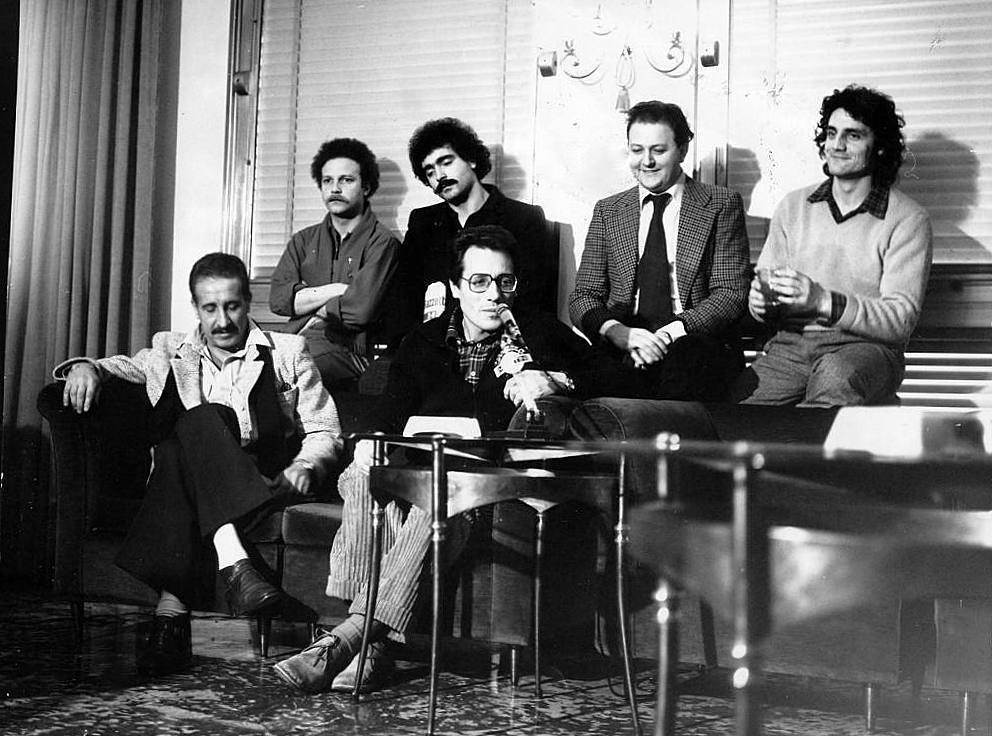
Guido Nicheli, Giorgio Porcaro, Enzo Jannacci, Diego Abatantuono, Massimo Boldi and Francesco Salvi.
A gang of simple and nice Italian boys who lived on jokes, always frequented the same places and dreamed of beautiful girls and Ferraris.

In short, a world that no longer exists but which one cannot fail to remember at least with an article. So that that Milan, which ultimately is still a little inside all of us, is not forgotten.
Derby Club was a musical and comedy club located in Milan, Italy.
The club was founded in the late 1950s by Gianni Bongioanni as a restaurant named ‘Gi-Go’ in which live jazz music was occasionally played.
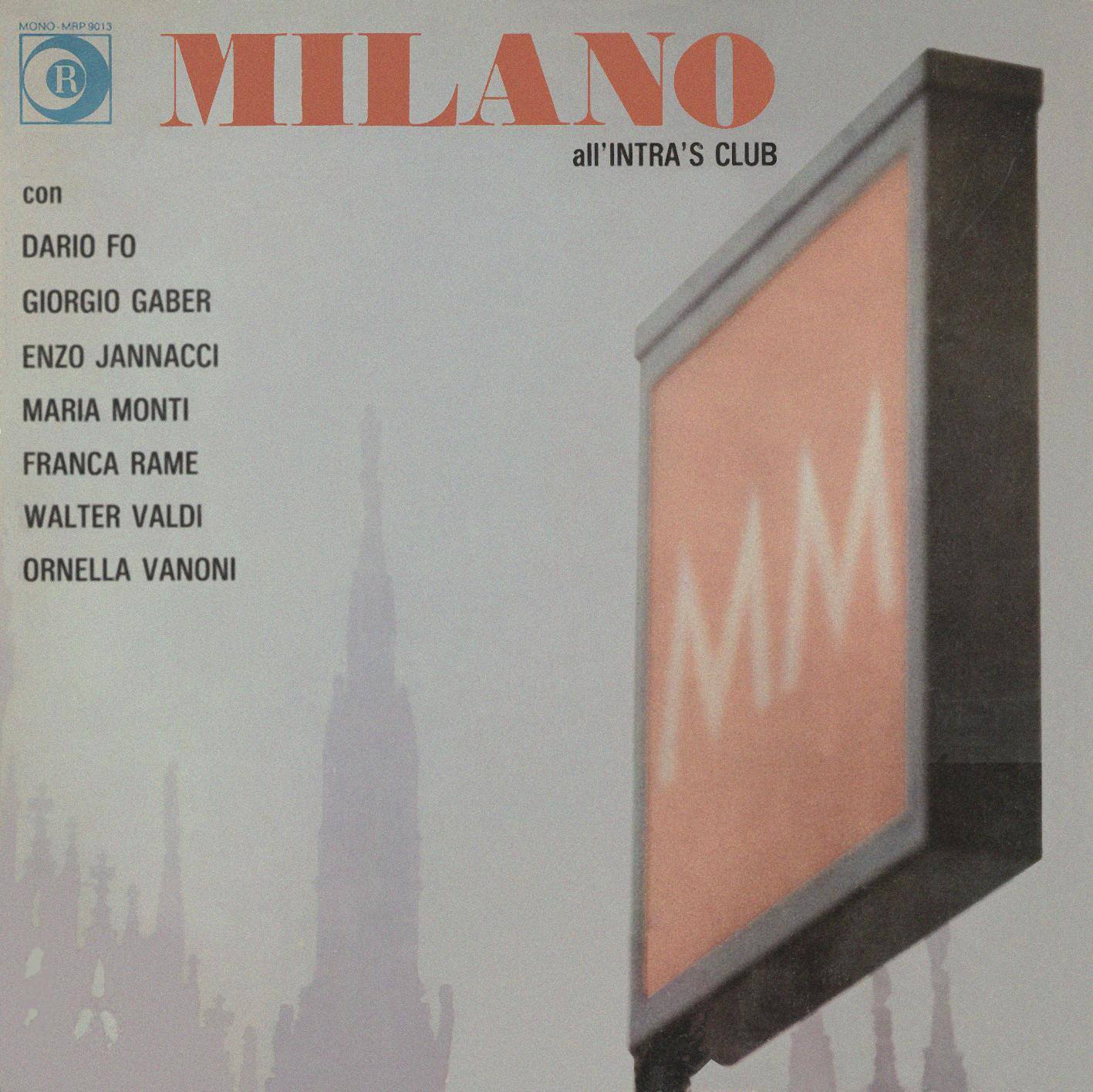
It turned into a nightclub in 1962 when, thanks to the involvement of jazz musician Enrico Intra, was renamed ‘Intra’s Derby Club’ (later just ‘Derby Club’) after the ‘Inter Milan’ – ‘A.C. Milan’ football derby and started focusing on jazz music and cabaret performances.
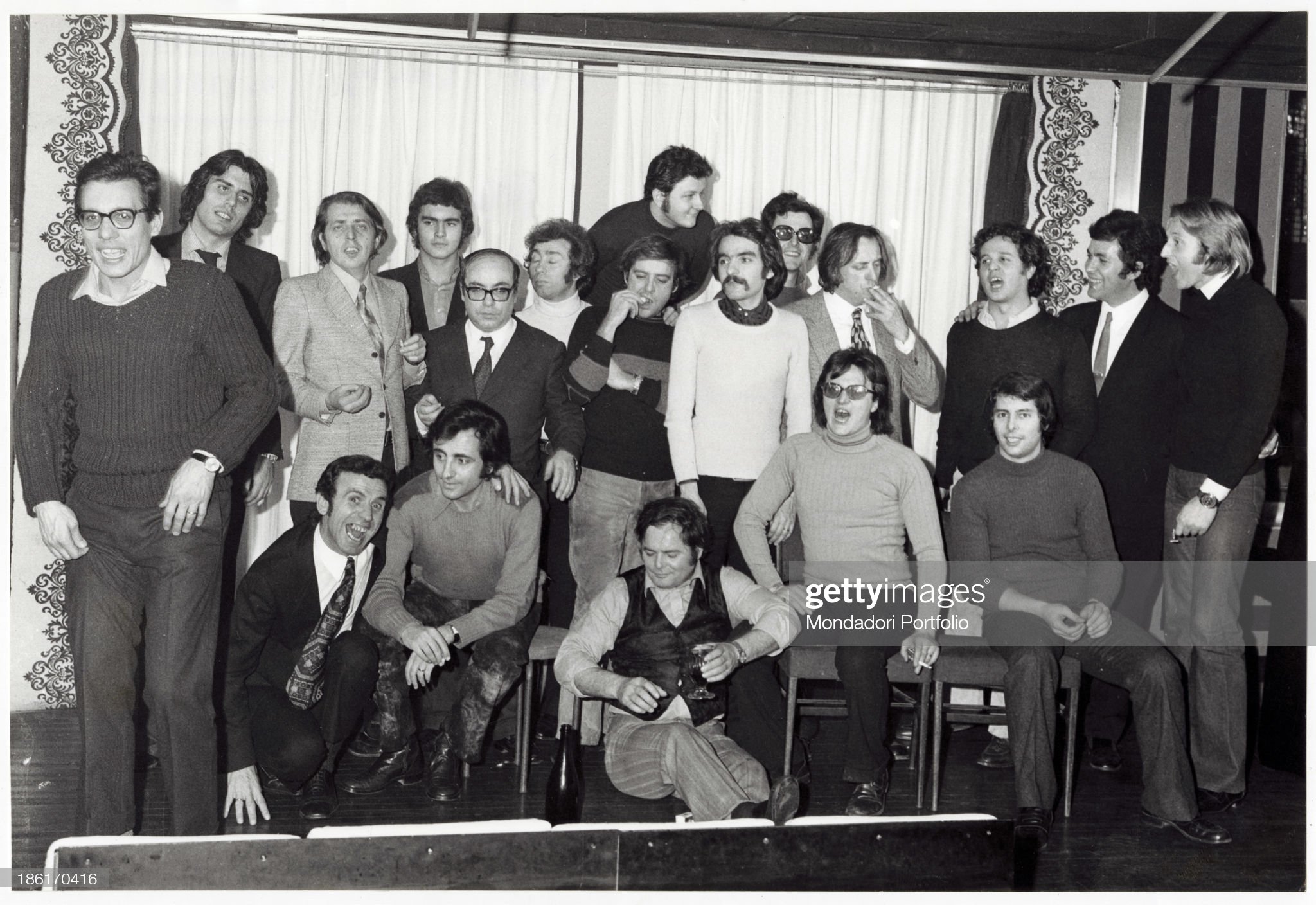
Italian actors and comedians Diego Abatantuono, Massimo Boldi, Teo Teocoli (Antonio Caracciolo), Renato Pozzetto, Cochi Ponzoni, Felice Andreasi, Gianni Magni and Italian singers and songwriters Enzo Jannacci and Tony Santagata posing smiling at the Derby Club. Milan, 1970s. Photo by Mondadori via Getty Images.
The club became a meeting place for a very diverse audience and actively contributed to the launch of several artists' careers, including Enzo Jannacci, Cochi Ponzoni and Renato Pozzetto (aka Cochi e Renato), Paolo Villaggio, Diego Abatantuono, Claudio Bisio, Giorgio Faletti, I Gufi, Massimo Boldi, Teo Teocoli, Lino Toffolo, Paolo Rossi, Antonio Catania, Gianfranco Funari, Giobbe Covatta, Enrico Beruschi, Felice Andreasi, Francesco Salvi, Enzo Iacchetti, Walter Valdi. Among artists who performed there were also Dario Fo, Charles Trenet, Amália Rodrigues, Ornella Vanoni, Gino Paoli, Gabriella Ferri, Bruno Lauzi, Franco Califano and Quartetto Cetra. In the 1980s the club started declining, eventually closing in 1985.
1950’s: the comedians of Derby Club Milano. By Melania Romanelli for ‘A million steps’.

Mauro Di Francesco, Giorgio Porcaro, Massimo Boldi, Diego Abatantuono and Giorgio Faletti at the time of the Derby Club.
Gianni is wandering back and forth behind the scenes. It’s a hot summer night and the room is full of people: someone is waiting at the bar, someone is entering the room holding someone else’s hand, someone is sipping his favorite cocktail relaxed on a black comfy sofa.
On stage, a tall boy from Cremona is performing his own cabaret act for the very first time. With a mere joke and a very bright smile, the audience bursts out laughing, clapping their hands vigorously.
Gianni is peering down at the audience, breathing a sigh of relief: the tall boy was well-received and could even perform again the following night. Gianni is Gianni Bongiovanni, the owner of Milan’s Derby Club. “The tall boy from Cremona is Enzo Iacchetti, one of the longest-running comedians to perform on his stage.”
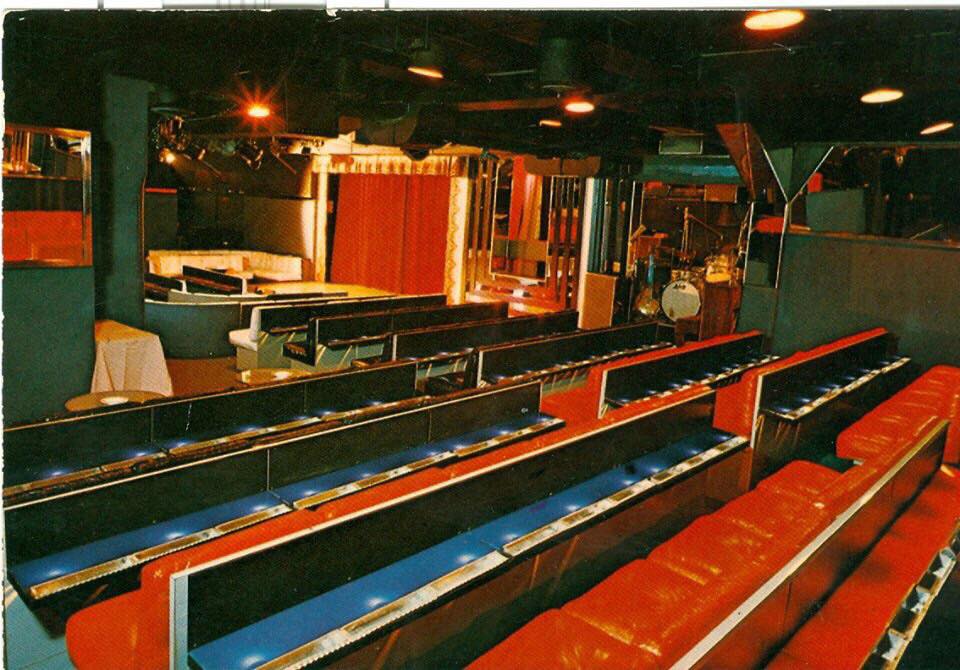
The interior of the Derby.
The story of Derby Club on Via Monterosa is a story of a happy marriage between the city of Milan and a comedy club that, during the ‘50’s and the ‘60’s, gave life to an artistic and theatre vanguard (and secondly, a television one) not found in many cities in Italy.
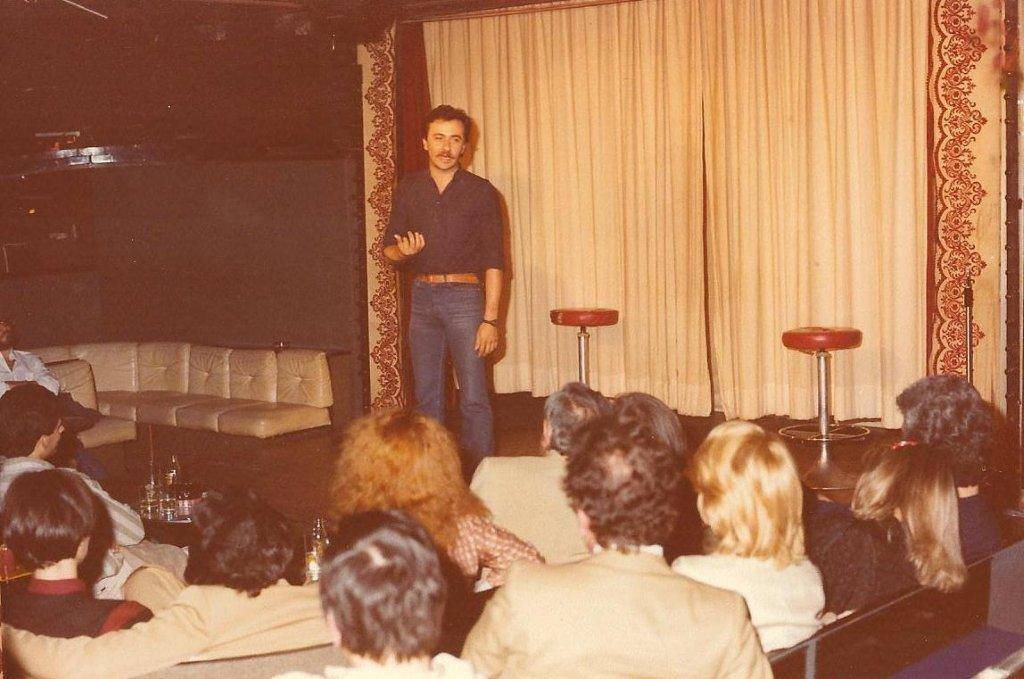
The Derby.
The idea of a venue with cabaret or live music popped up in the creative mind of Gianni and his wife Angela when they were brainstorming ways to give Gianni’s parents’ restaurant a new life. The couple decided to use the space downstairs to organize events and brand-new live theatre shows with a unique vibe.
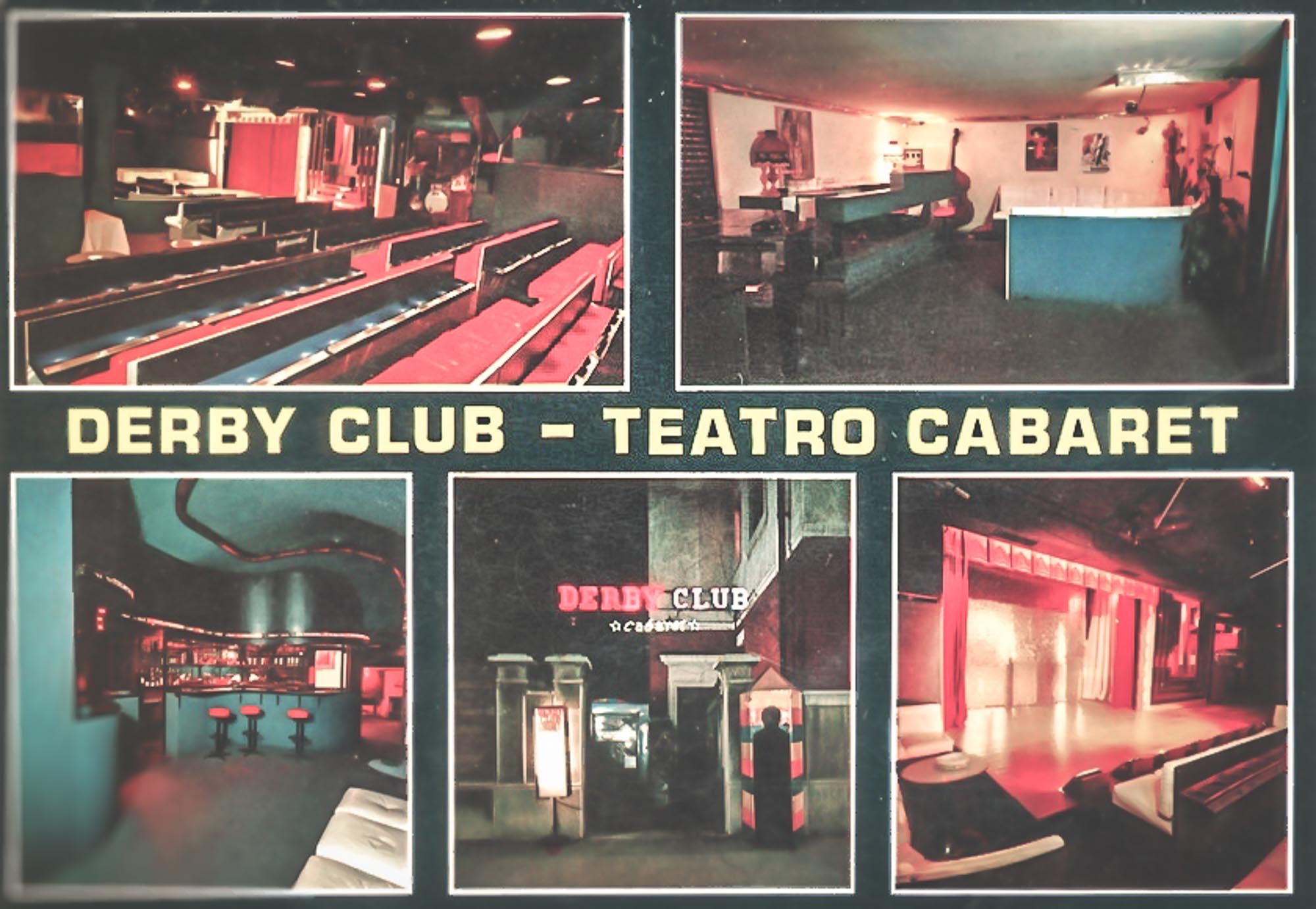
Photo by Wikipedia.
After getting the go-ahead from the owners of the Gi-go restaurant, Angela and ‘Bongio’ ― as everyone used to call Gianni Bongiovanni ― opened the ‘Whisky a gogò’, shortly after renamed ‘Intra’s Derby Club’ (inspired by the famous jazz player Enrico Intra and the San Siro racetrack) and finally named, once for all, the Derby Club.
The Derby saw a young Francesco Salvi climbing the ladder of success, fighting by the skin of his teeth and fighting each time with his father for always running the gas tank empty. The Derby told the sleepless nights of Enzo Iacchetti, who hustled between Milan - where he performed every night - and Ponte Tresa, where each morning he read press releases on the radio show that he ran with a bunch of friends.
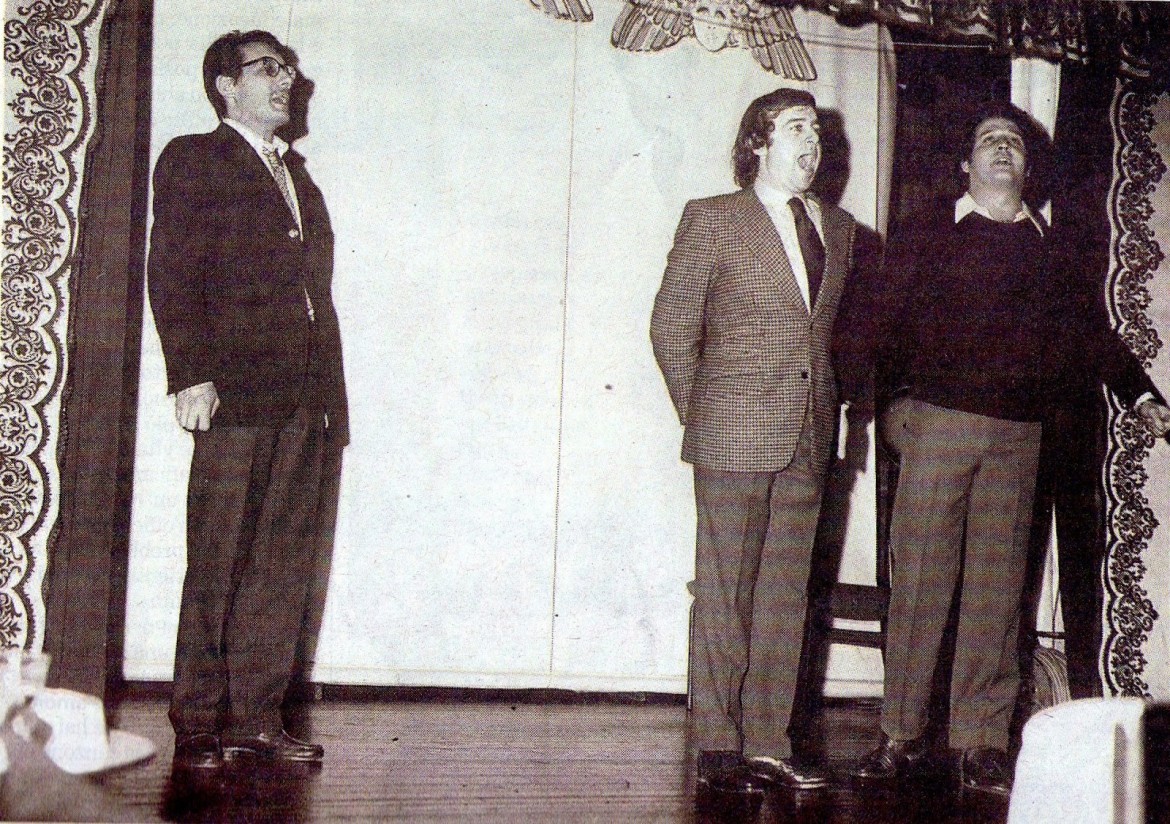
Cochi Ponzoni with Enzo Jannacci and Renato Pozzetto performing at the Derby.
The Derby saw the fights between Giorgio Faletti and Paolo Rossi over supposed stolen lines.
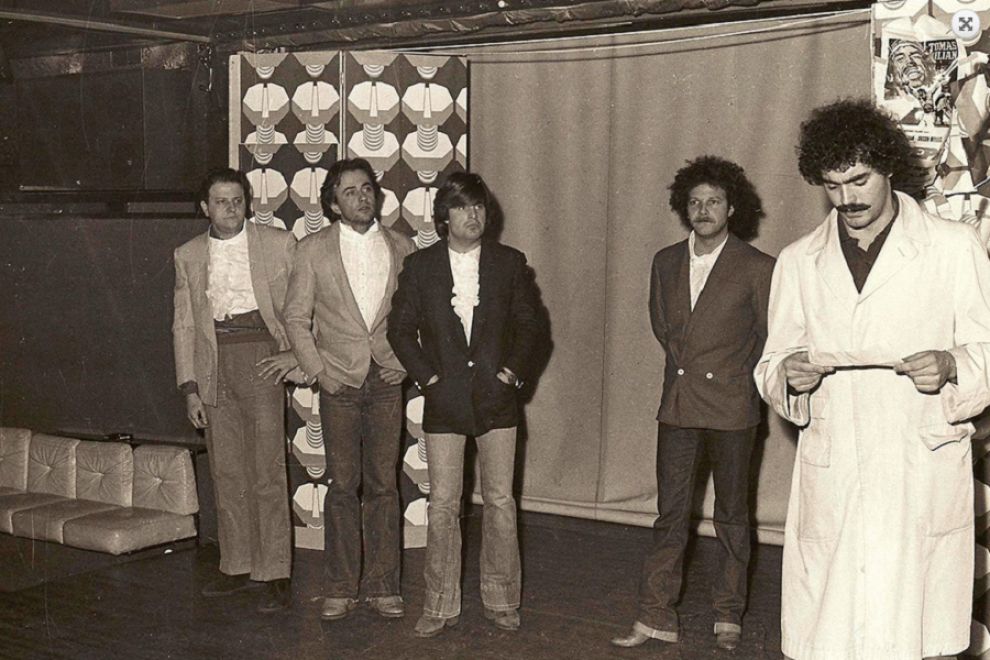
Diego Abatantuono at the Derby with Massimo Boldi, Giorgio Faletti, Mauro Di Francesco and Giorgio Porcaro.
And it saw the rise of the character of the ‘terruncello’ (from the south) from the mouth of Angela’s nephew, Diego Abatantuono, whose charismatic presence was not lost on Renzo Arbore, who sat in the audience.
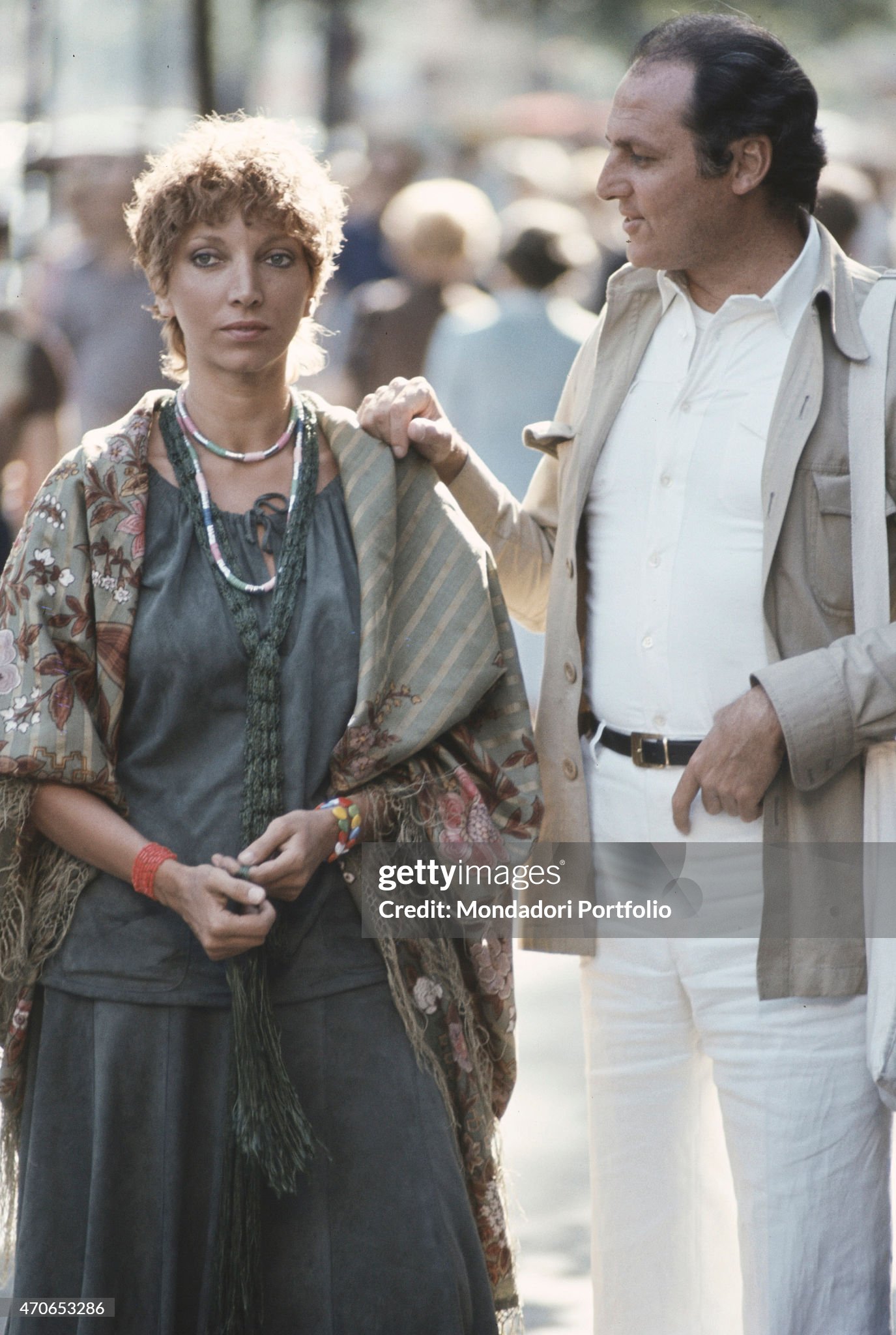
Renzo Arbore and his partner Mariangela Melato at Berlin, Germany, in 1977. Photo by Rino Petrosino / Mondadori via Getty Images.
The Derby, once again, gave the stage to piano jazz notes from international artists such as Charles Aznavour, John Coltrane and Quincy Jones.
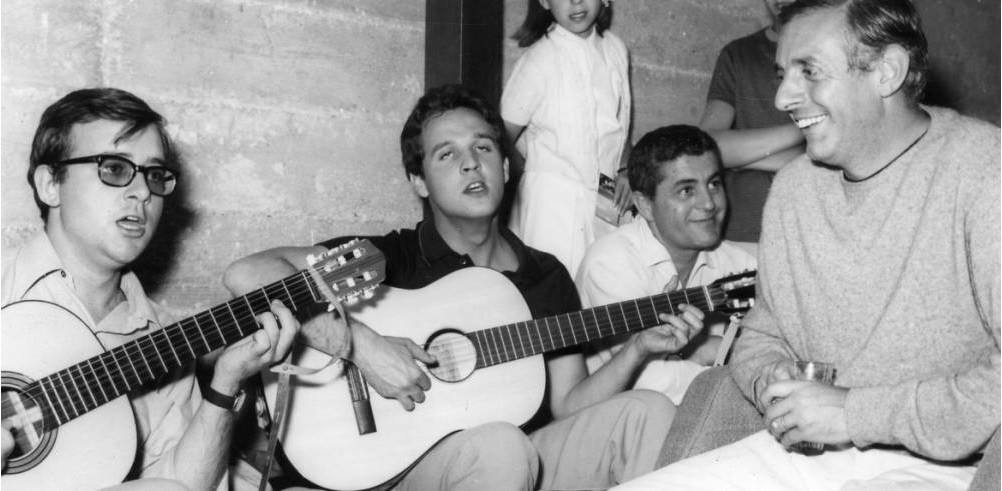
Dario Fo with Cochi and Renato.
Celebrity audience members clapped their hands; personalities such as Gianni Rivera or Pietro Mennea and show biz stars such as Johnny Dorelli, Dario Fo, Marcello Mastroianni and Mike Bongiorno attended the Derby.
Unfortunately, as with every beautiful thing in life that shines while it rises, even the star of Derby Club had a short life. The ‘80’s were tough years: Gianni Bongiovanni died and commercial television rose; the comedy ‘rat pack’ found a wider and more rewarding trusted audience on TV. In 1985 the historical Derby Club of Milan closed down.
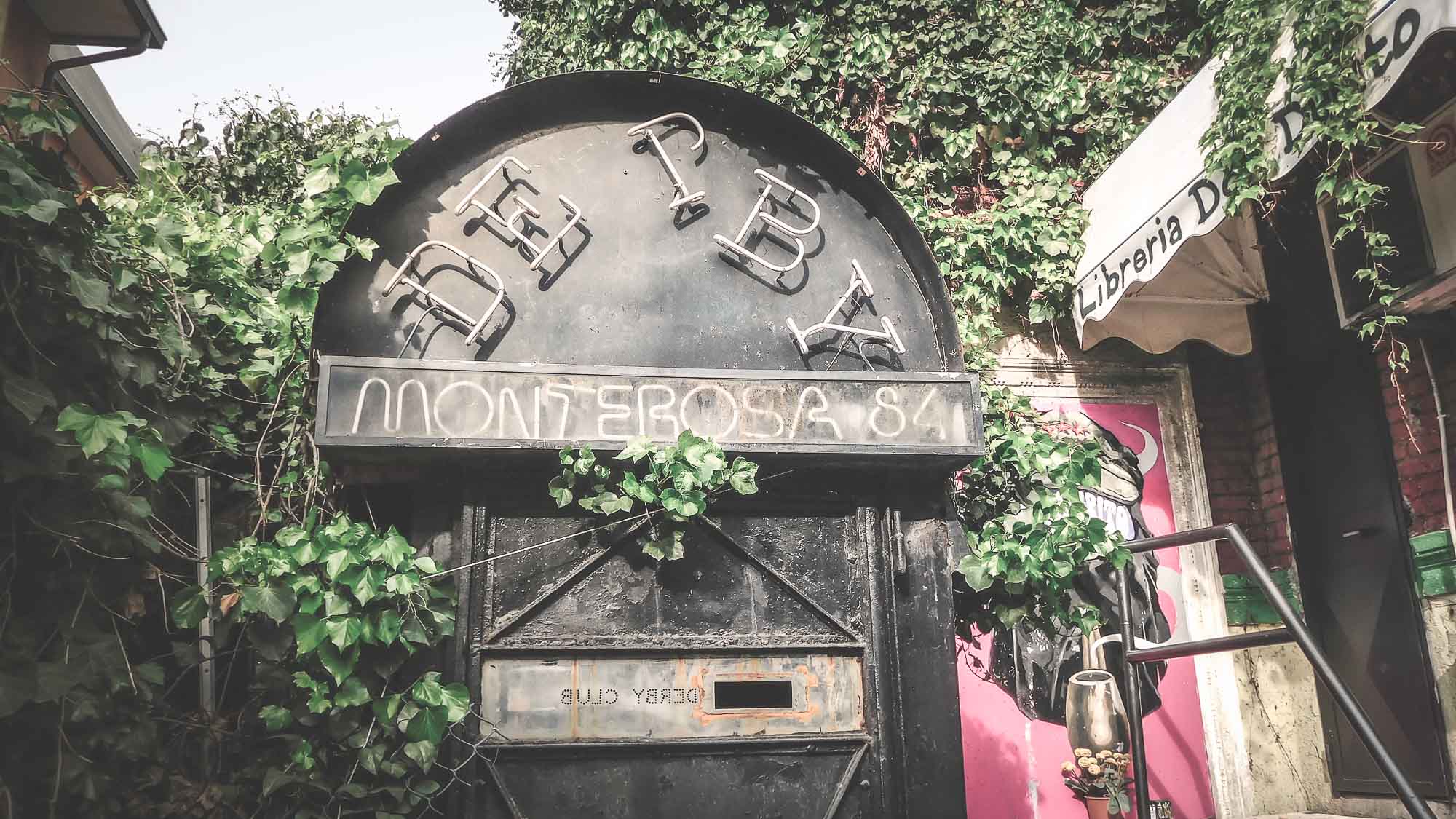
Photo by Wikipedia.
Today on via Monte Rosa, hidden behind the woods and the wild and overgrown grass, there is still the old sign of the club, easily missed at first glance. Still, the name of the Derby Club persists and allows itself to be seen with discretion.
Looking closely, its beauty still tells its story, a regal legacy. The Derby’s walls now belong to the Community Center ‘Il Cantiere’. Today those very same walls are covered with graffiti, posters, silkscreens and recycled artwork; a sign that times may change, but revolutionary art still lives.
Entering the front door, running your hand over the wood and walls, is like entering a temple: you can feel a sort of reverence and a nostalgia of a time where anything was possible because people really believed in their cause.
The Derby Club for many artists was a field of hope, a safe place in a city like Milan, full of possibilities and opportunity for innovation.
A city always running, a city in which you must be careful not to be left behind and not miss the moment. Those artists, the young guys, with their sleepless nights and sacrifices, dreamt about a bright future filled with comedy.
Thanks to the patience, the strength and the determination of people such as Angela and Bongio, the historic Derby served as a stepping stone on which to build their dreams without the fear of seeing them pass by.
Even if the air you feel here is the saudade (nostalgia) for a place of imagination that physically does not exist anymore, on via Monte Rosa the magic of Milano still remains, a city capable of giving so much without asking anything in return from its dreamers. A city where simple dreams do not stay small but, on the contrary, can become bigger and bigger, taking flight in the end.
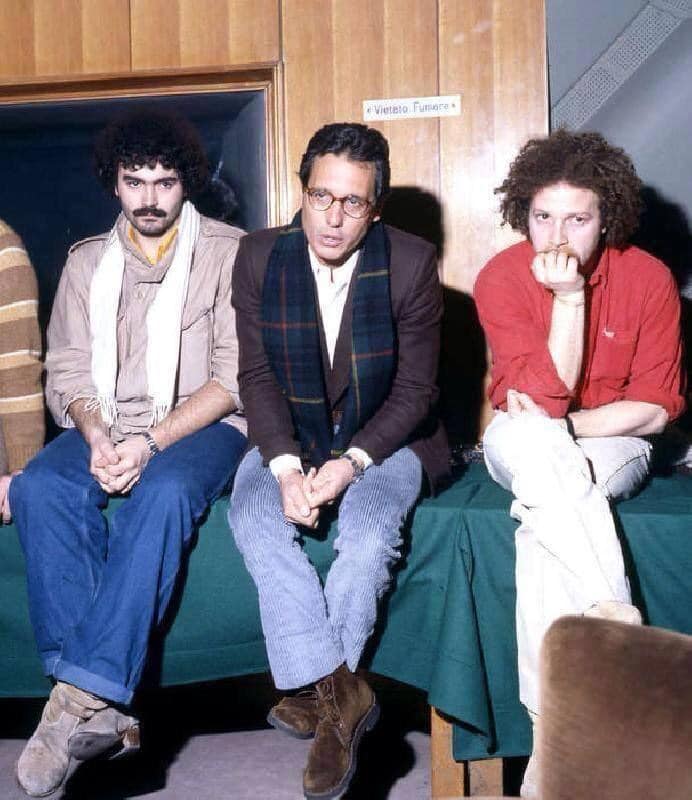
Diego Abatantuono with Enzo Jannacci and Giorgio Porcaro.
“I started doing cabaret at the Derby in Milan where the show started at 10pm and ended at 3am. I was a technician, a stage manager, I spent my adolescence working at night in clubs. I was 15 years old when I alternated school with working at night as a stage manager. My scholastic commitment was relative, but luckily at the Derby in Milan I spent every evening with Cochi and Renato, Jannacci, Gaber, Dario Fo, great painters, great architects, great politicians. Everyone was there at the Derby, even the top criminals were there.” Diego Abatantuono
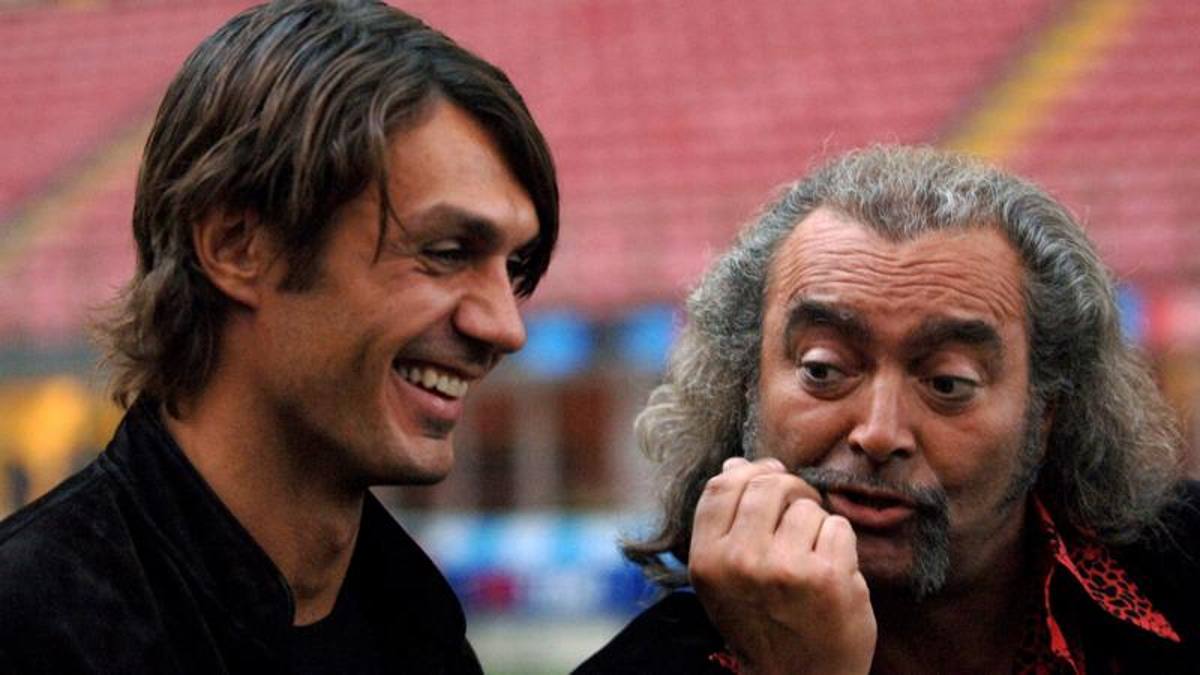
Diego Abatantuono with the former AC Milan player Paolo Maldini.
"I have never seen Milan sad. As a Roman, Alberto Sordi described a city with the magun (anxiety) and the nebiun (fog). The Milan that I remember was cheerful, supportive, not sulky at all. Closely wrapped around the derby in its dual meaning. Intended as a club in via Monte Rosa, the temple of cabaret and like Milan-Inter, the challenge of challenges, the very match sung by Celentano in ‘Eravamo in centomila’." Diego Abatantuono
The comedy of the Derby in via Monte Rosa, the most important cabaret in Italy: the one that made people laugh in Milan in the 70s/80s. By Carlo Chiodo, 19.03.2022.
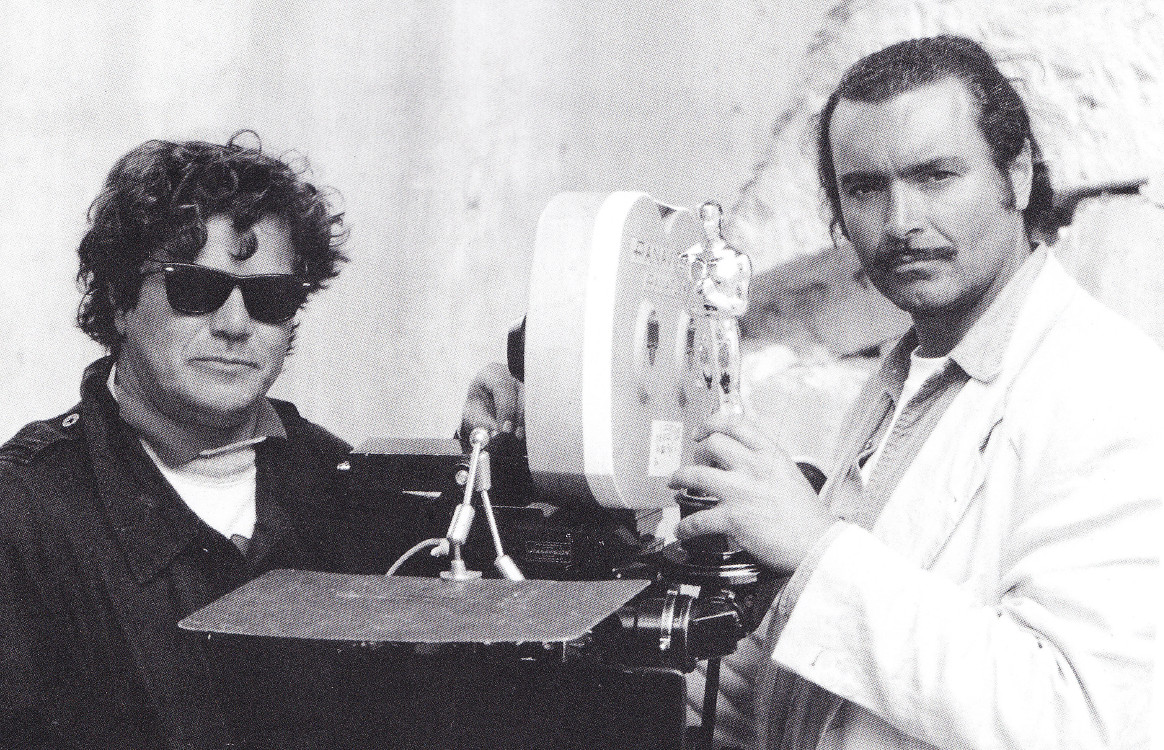
Diego Abatantuono with Ugo Conti at the Derby in Milan.
They have called it many things: temple of cabaret, Whiskey a Go-go of Milan, Cotton Club of the Milanese intelligentsia; the Derby was the most eloquent symbol of Milan for laughing, long before that for drinking (going to prison) took over: the cradle of all the comedians (and not only) that you saw at the cinema and on TV, of everything that made you laugh and which has formed our collective imagination from the 60s to today.
The Derby Club in Milan, known much more simply as Derby, was the most important Italian cabaret venue from the Second World War onwards. In its golden years between the beginning of the economic boom and the late Seventies, it produced from its forges the vast majority of cabaret comedians, musicians, authors and songwriters of the artistic panorama of northern Italy and beyond. Started in 1962, it was definitively closed in 1985, but the social, cultural and even linguistic impact on the Milanese culture of the following years was simply revolutionary. Thanks to the Derby, laughing in Milan and Italy would never be the same again. But what were the most famous artists (and jokes) that came out of the Derby:

Massimo Boldi.
“Ciao Cipollini!” - Massimo Boldi
He took his first steps in the world of entertainment right from the dawn of Derby, first with the Mimitoki musical band and then, both solo and as a couple, with Teo Teocoli. Anticipating the trend of many of his colleagues of those years (many, but not all) Boldi sensed the future success of commercial television and, in 1974, he made his debut on the small screen with 'Canzonissima '74' reaching popularity thanks to a series of surreal characters, then re-proposed in a whole series of hilarious films.
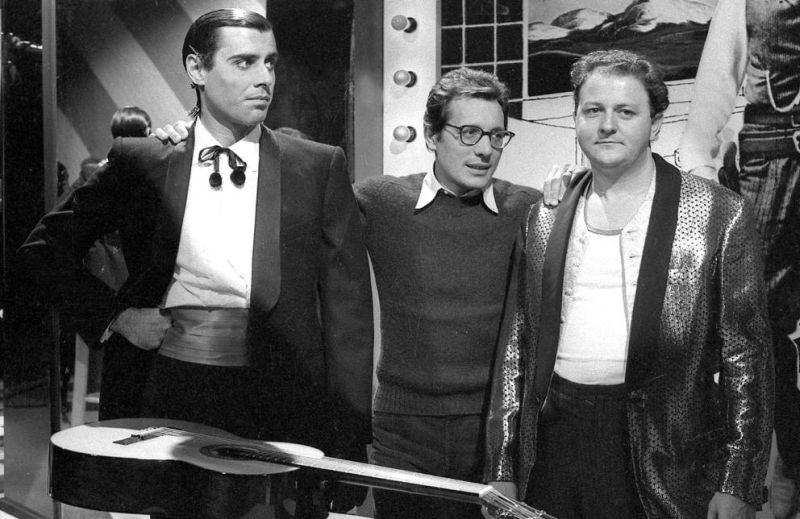
Massimo Boldi with Teo Teocoli and Enzo Jannacci.
From the 1980s he gradually became the king of ‘cinepanettoni’ (Christmas movies), together with his lifelong colleague Christian de Sica. The feature film “Festivàl” by Pupi Avati represents the only non-comic role of his career, which received critical acclaim at the Venice Film Festival. As the typical catchphrase of his repertoire, we remember the iconic “Ciao Cipollini!” (who is not the cyclist), along with his other historic jokes or catchphrases.

A half-length sculpture depicting the Italian actor and comedian Massimo Boldi and placed among his Ferrari memorabilia. Photo shoot made in the cinema room of his historic Milanese home on 16 November 2021. Photo by Marco Piraccini / Mondadori Portfolio via Getty Images.
Cipollino’s passion
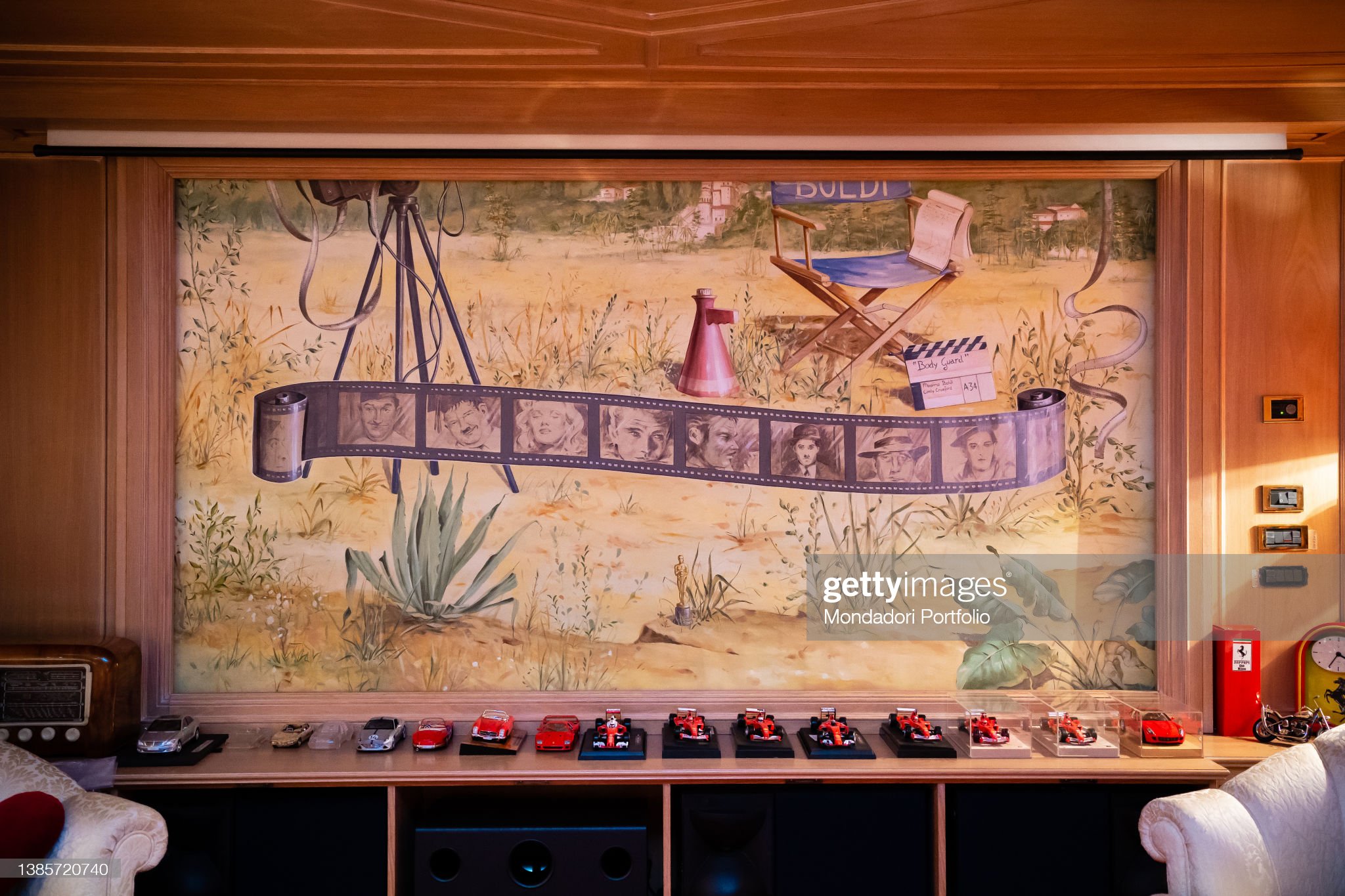
Collection of Ferrari models of the actor and comedian Massimo Boldi, positioned on a shelf under the cinema hall in his historic home at Basiglio, Milan, on 16 November 2021. Photo by Marco Piraccini / Mondadori Portfolio via Getty Images.
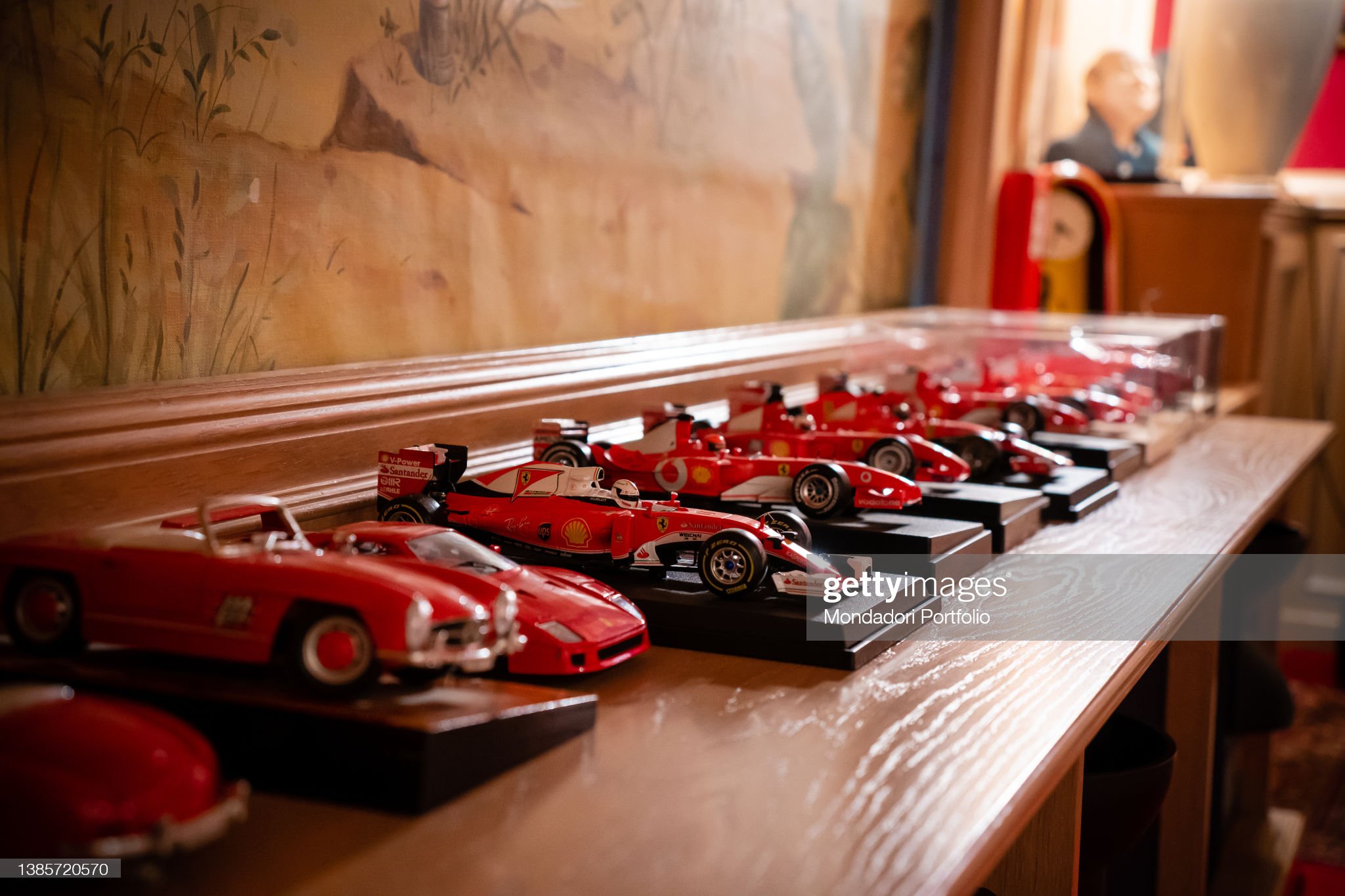
Collection of Ferrari models of the actor and comedian Massimo Boldi, positioned on a shelf under the cinema hall in his historic home at Basiglio, Milan, on 16 November 2021. Photo by Marco Piraccini / Mondadori Portfolio via Getty Images.
Massimo Boldi has had a great attraction for cars for years. And in fact on social media he often shows himself next to cars, sometimes very luxurious.
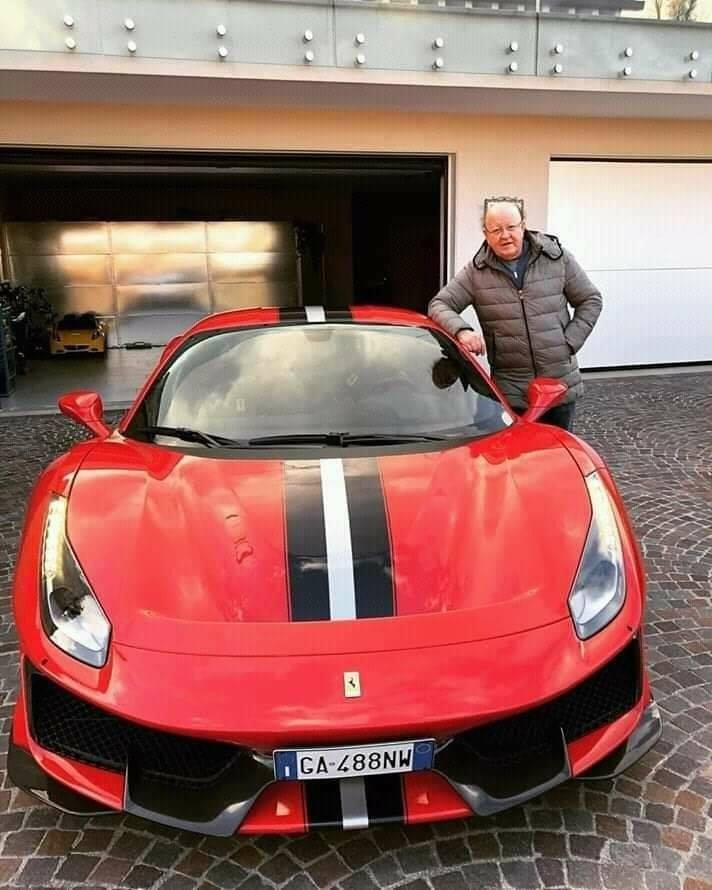
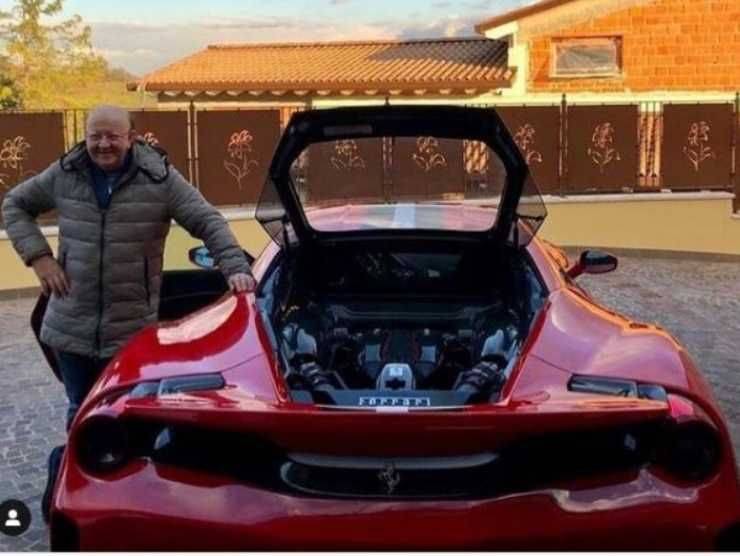
In fact, he owns a Ferrari 488 Pista, the Ferrari car with the most powerful V8 ever.
“Come porti i capelli bella bionda” (how you wear your beautiful blonde hair). – Cochi and Renato
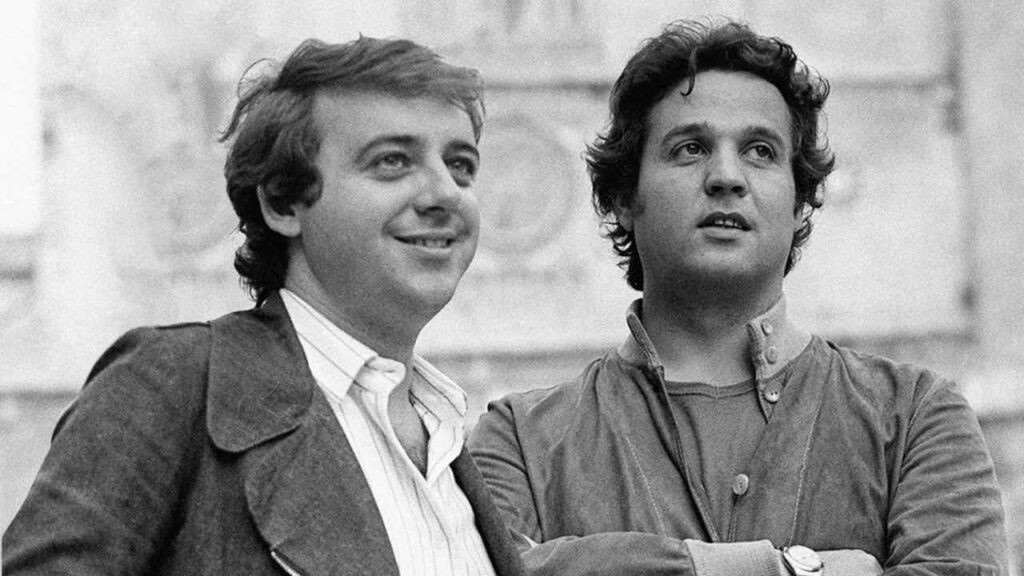
Cochi Ponzoni and Renato Pozzetto in a 1972 photo. Photo by Ansa.
Cochi and Renato is a comedy duo formed, again in the 1960s, by Renato Pozzetto and Cochi Ponzoni. Summer neighbors in Gemonio on Lake Maggiore, where their families displaced during the war finding peace and home, they began to build a small repertoire just to distract themselves from school. Both enrolled at the Cattaneo Institute in Milan, albeit in different directions, they had their first cabaret beginnings when they began to frequent the Osteria dell'Oca in Milan, a so-called 'artists' trattoria', where a friend of theirs, Piero Manzoni, exhibited his paintings while Cochi and Renato entertained those present with some popular songs.
They debuted at Derby in 1965, creating a genre of comedy that was original, poetic and surreal at the same time.
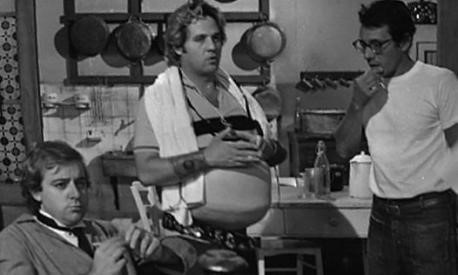
Cochi Ponzoni, Renato Pozzetto and Enzo Jannacci at Canzonissima in 1974. Photo by Ansa.
From the success at the Derby the duo arrived at RAI, taking part in programs with a large audience following such as Canzonissima. Some of their songs, such as 'La gallina', 'Canzone intelligente', 'E la vita, la vita' and, above all, their very personal interpretation of 'Come porti i capelli bella bionda' have rightfully entered Italian popular culture. Good Cochi doesn't mind but, if for this point we have to extract a joke from the comedy of the two, we will certainly rely on the national Renatone with his "Tac!!"
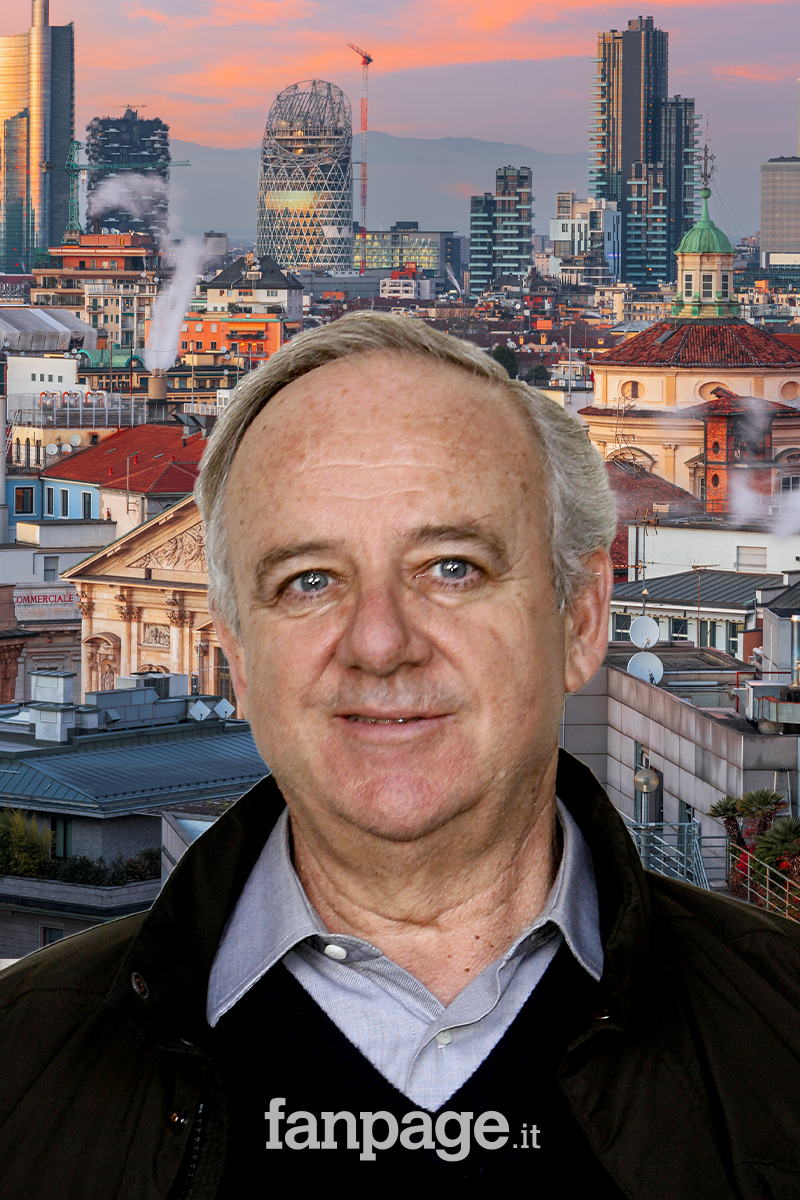
Cochi Ponzoni.
“I was born in via Vincenzo Foppa: I remember it at the end of the world war, with the fields, the vegetable gardens, in the summer there was a watermelon seller. It was a small medieval village that we called Brera because it was picturesque and, on Sundays, the students from the academy came to paint. It’s the Milan of my childhood and the one handed down from my mother's memories. The places of the heart? Via Lentasio, as a boy, when there was the Oca d'Oro osteria, where I met the artists Piero Manzoni and Lucio Fontana, the writers Buzzati and Bianciardi, Dario Fo. We used to meet there, it's the Milan that no longer exists, that of the 'La Muffola' gallery." Cochi Ponzoni
In addition to acting Renato Pozzetto has another great passion: engines
“It was born when I was little, I am a son of the war. In '42-'43 they bombed my parents' house in Milan, near San Vittore. My father took us to Gemonio, a town where some relatives lived who were willing to host us, I met Cochi there. I remember that, at the age of 4-5, I recognized all the sounds of the cars and motorbikes in the village: there were the trucks transporting vegetables and the squires' cars. When the owner of a Porsche passed by I ran to try to see him and I was also keeping an eye on the schedule of a young man who was going to clean his motorbike."
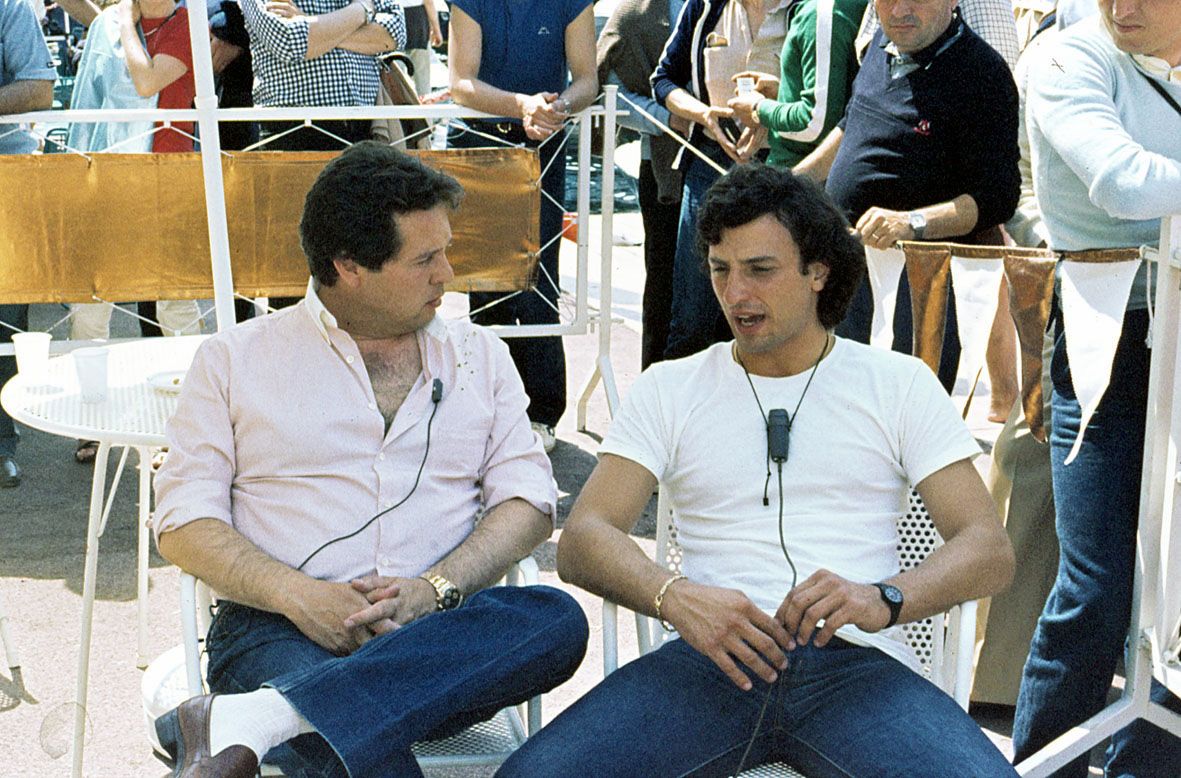
Renato Pozzetto with Riccardo Patrese at the 39° Grand Prix Automobile de Monaco on Friday 29 May 1981. Photo by Demetrio Grandinetti.
In short, an innate passion.
"Yes, it has accompanied me all my life. I was lucky enough to have many pilot friends such as Clay Regazzoni, Riccardo Patrese and Nelson Piquet and to participate in three Paris-Dakar races. I remember that during one stage the car broke down at night, it was one of the hardest and longest routes, about 900 km. That year the event's patron died. It left an impression on me. I participated twice with Giacomo Vismara in the Dakar, I helped him a bit with the navigation."
What was your first car?
"A 500 for which my father signed some bills. I also used it with Cochi to go and play. Many years later in Turin I met Lapo Elkann who pointed out to me that behind me there was a painting with me and Cochi in a 500. Mine had a slightly open muffler: I dreamed of racing. I used it a lot and, over time, I had two or three. Then, together with Cochi and Jannacci, the passion for vintage cars broke out. Cochi had an Austin, I had a very elegant MG sedan, black with red leather interiors, while Jannacci had, I think, a Daimler spider. An exaggerated stuff."
Did you also follow car racing?
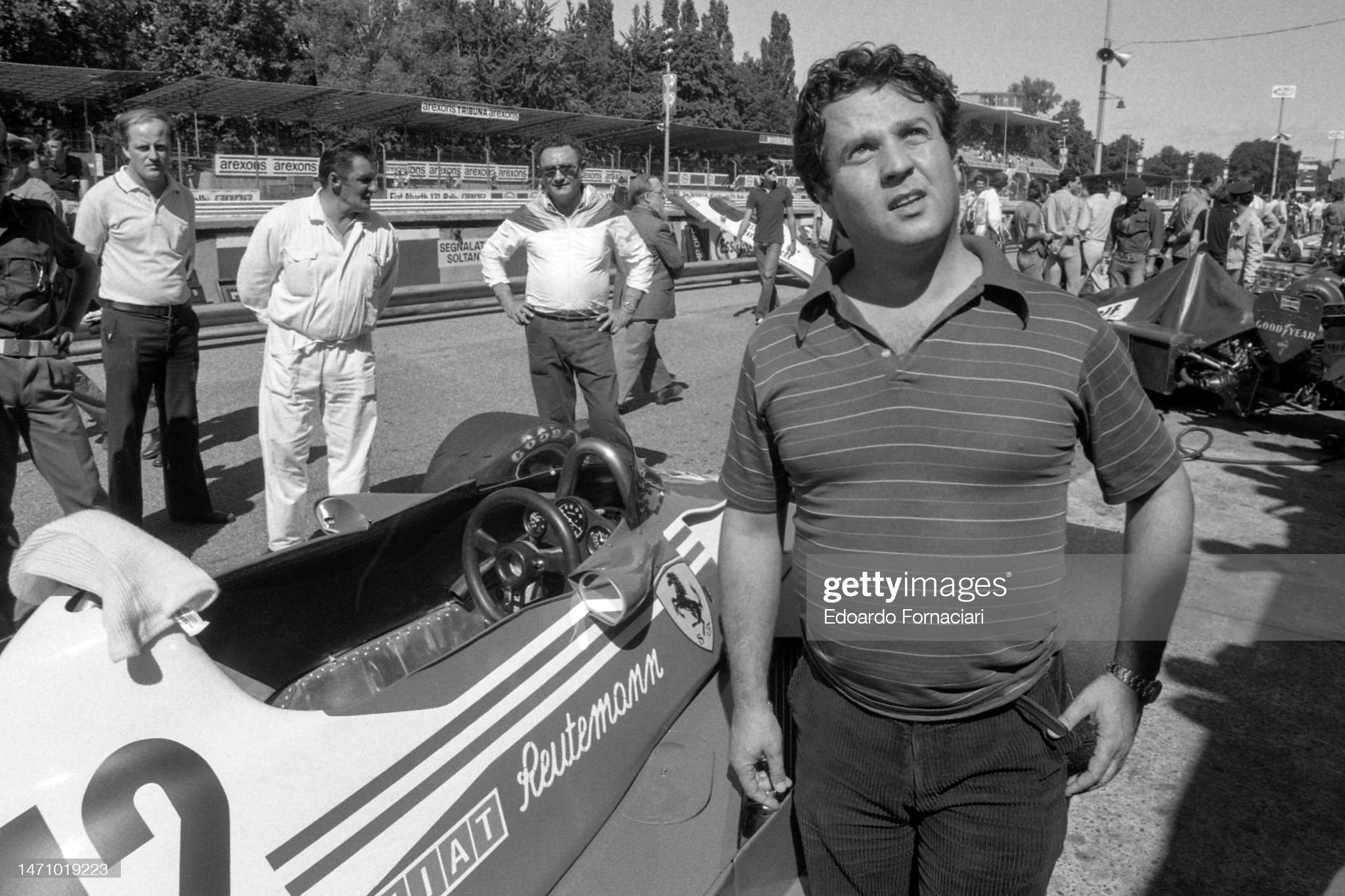
Renato Pozzetto during the F1 Italian Grand Prix in Monza on 10 September 1977. Photo by Edaordo Fornaciari / Getty Images.
"Of course. I accompanied my driver friends to the races. I liked following them. Monte Carlo was a fixed event: with my boat I positioned myself near the Ferrari pit area and called my friends to follow the Grand Prix. And there was never a lack of a good reserve of wines."
Which driver are you?
"With Cochi we traveled many kilometers between one theater and another. I always drove and I still drive today, even though many years have passed. When I was younger, smarter and there were no speed limits, I pressed my foot on the pedal."
What was the trip that left a lasting impression in your heart?
"Cochi, Jannacci and I left late for London with a yellow Mini, black roof, large wheels and leather interiors. We arrived in England after an infernal journey: we didn't sleep a wink. In London, stopped at a traffic light, Jannacci got out of the car, threw himself on the ground and never moved again. A policeman called for reinforcements. Enzo had pretended not to be well. It was a fun and adventurous day."
Teo Teocoli
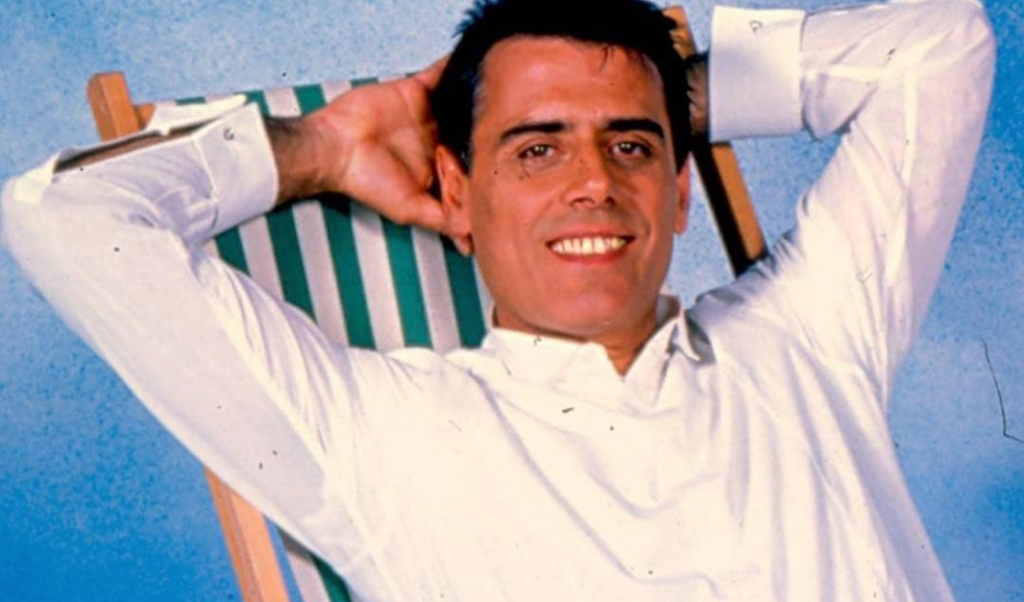
Teo Teocoli.
Teo Teocoli, born in 1945 in Taranto to Calabrian parents and 'acquired' Milanese, has shot, as an actor, around thirty films and offered an infinite number of comic gags, both in the form of fictional characters and imitations. Teocoli had a strong inclination towards imitations since he was a boy.

Comedian Teo Teocoli, in the guise of AC Milan supporter Peo Pericoli, conducts the sport/comical broadcasting ‘Mai dire Gol’, together with showgirl Simona Ventura; both listen silent the voiceover of the authors, the Gialappa's Band trio, in 1994 in Cologno Monzese, Milano, Italy. Photo by Rino Petrosino / Mondadori via Getty Images.
Some of these have become iconic, such as those of Adriano Galliani and Cesare Maldini in 'Mai Dire Gol', a program in which he also performed in the role of characters he created (such as the Neapolitan Felice Caccamo) and that of Adriano Celentano.
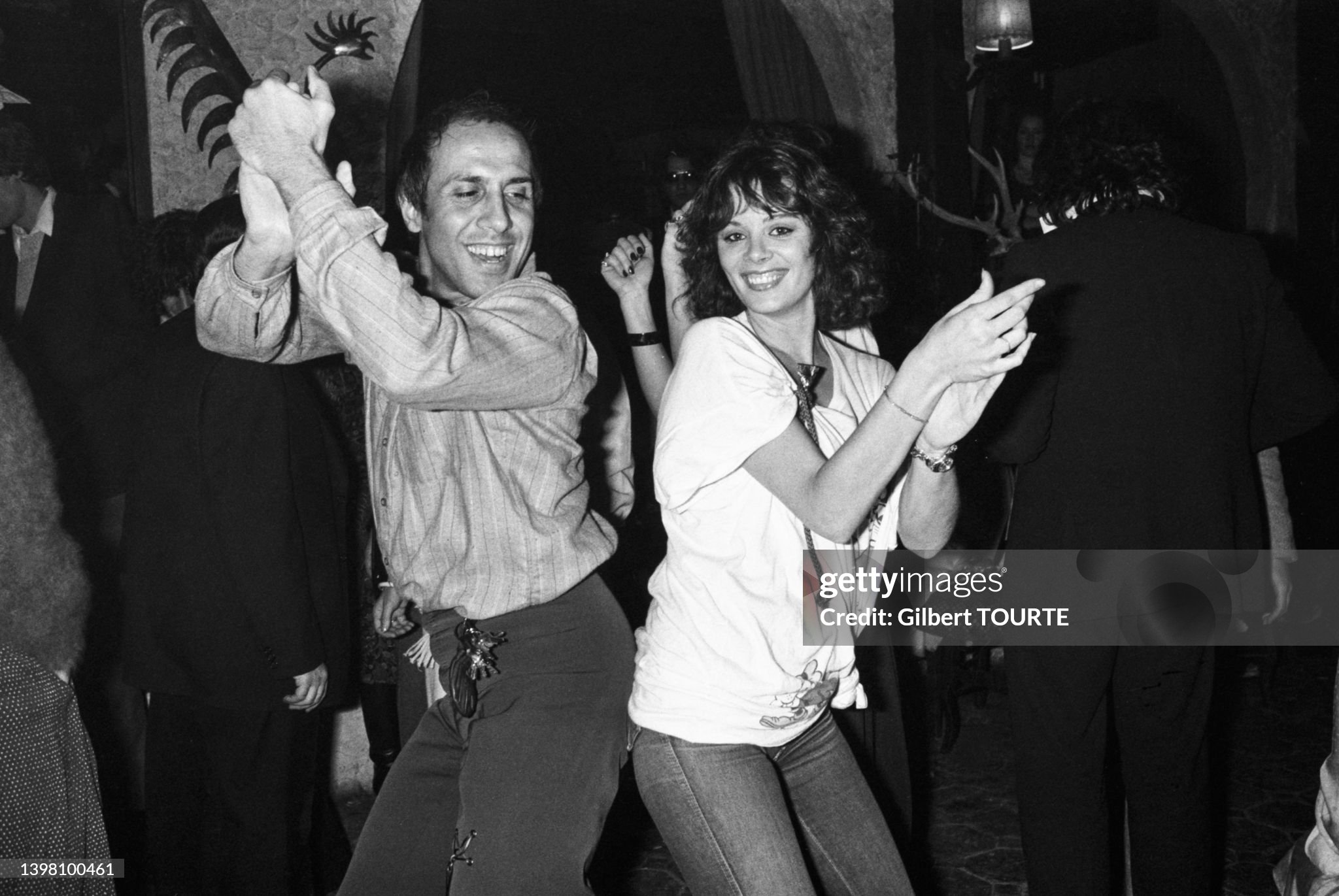
Adriano Celentano dancing at Midem in Cannes, France, in January 1979. Photo by Gilbert Tourte / Gamma-Rapho via Getty Images.
With the Molleggiato Teo had a long and fruitful history of artistic collaboration and friendship. In 1959, living in the same area of Milan, he managed to get Celentano to invite him into his clan and, over the years, the partnership continued.
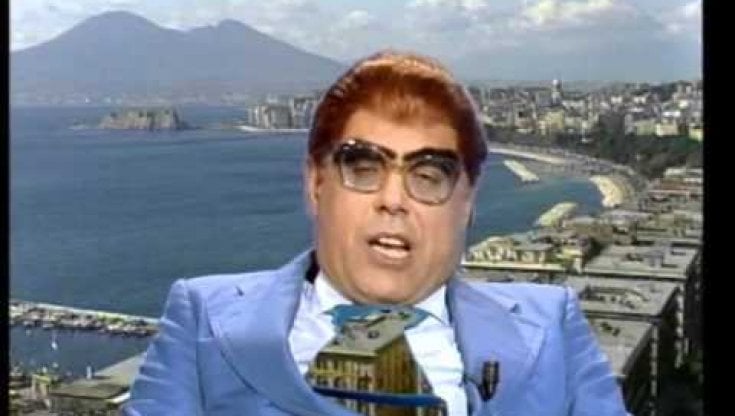
Teo Teocoli, in the guise of Felice Caccamo.
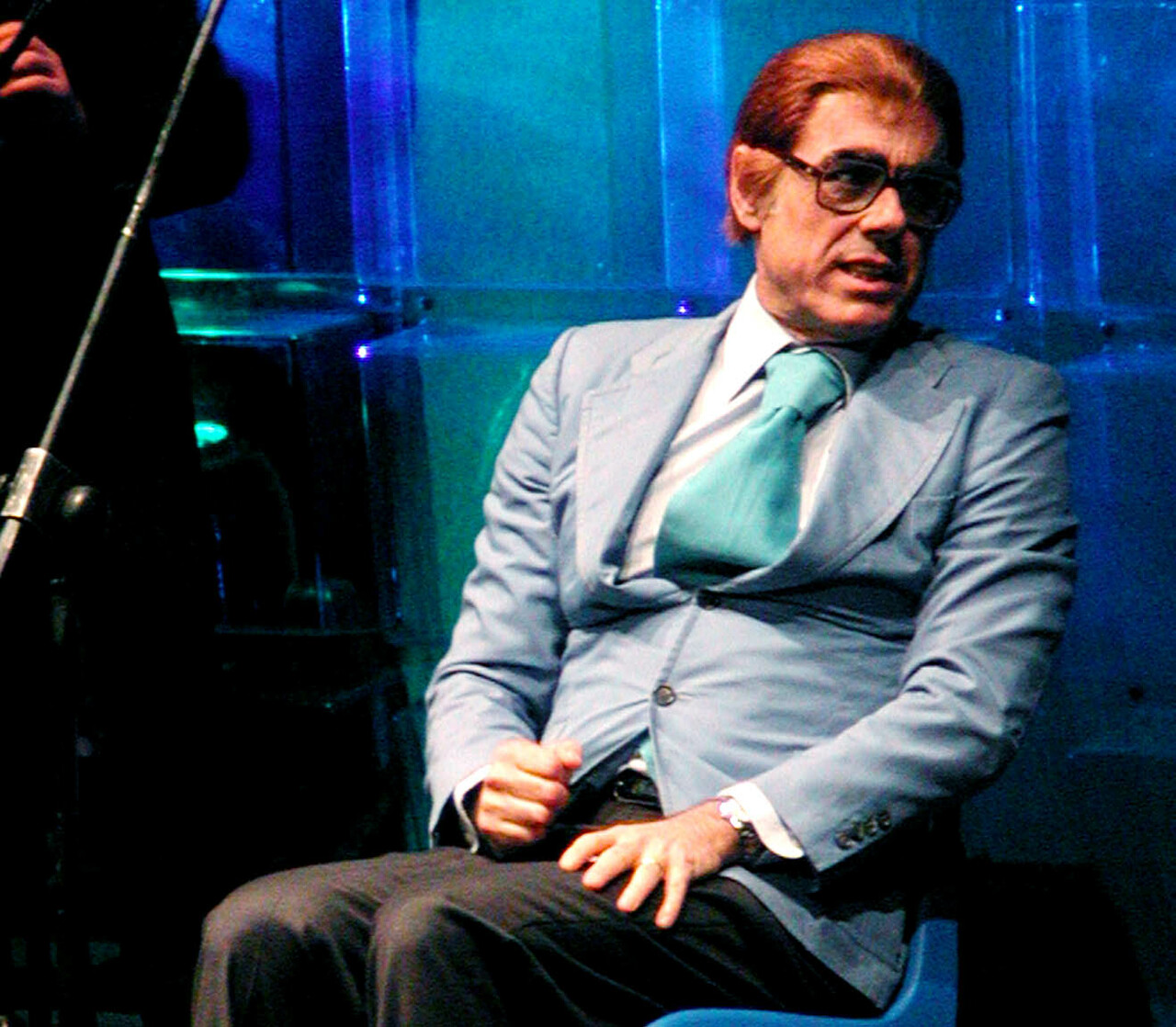
Teo Teocoli, in the guise of Felice Caccamo.
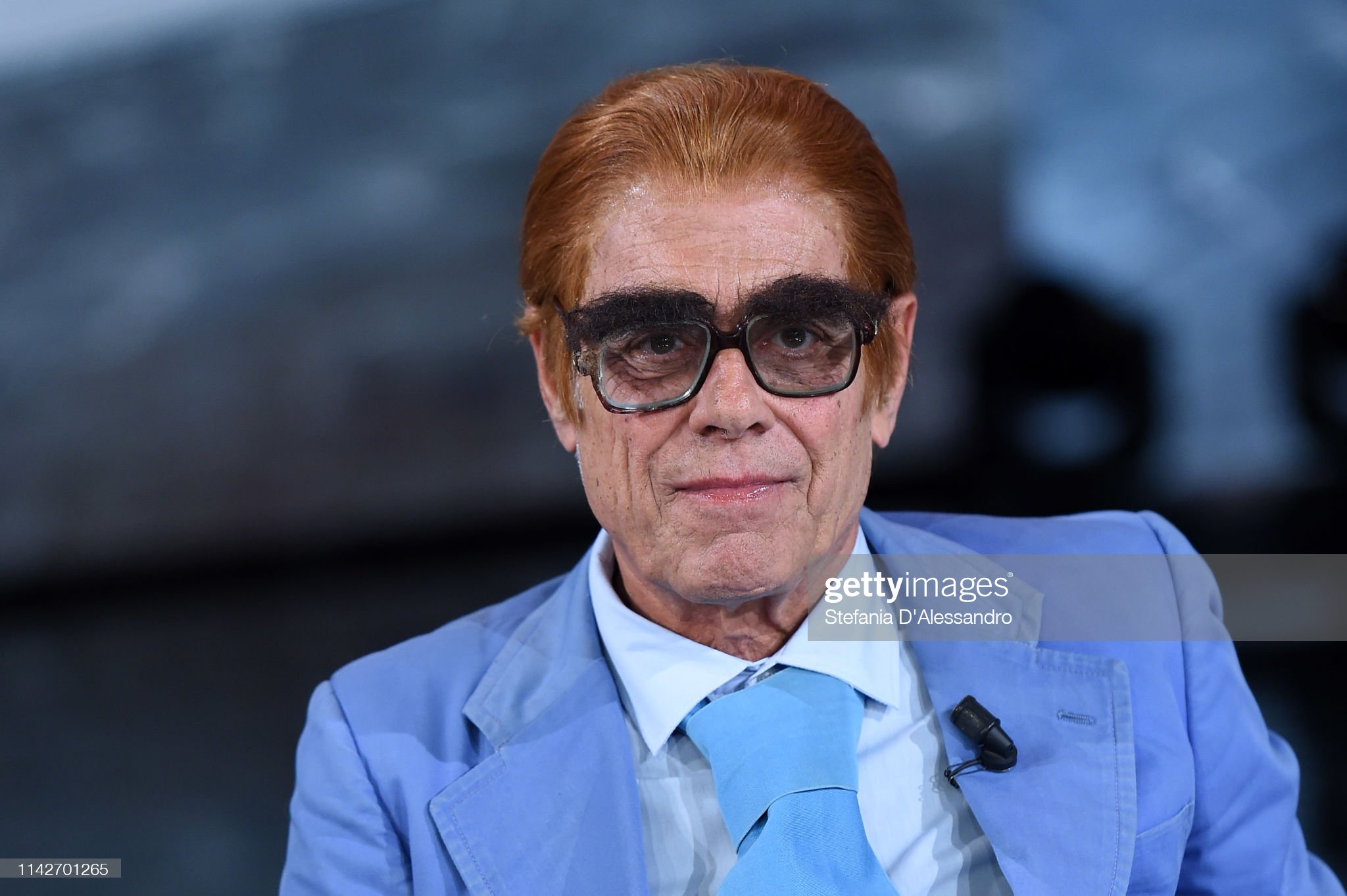
Teo Teocoli, in the guise of Felice Caccamo, attends ‘Che tempo che fa’ Tv show on 14 April 2019 in Milan, Italy. Photo by Stefania D'Alessandro / Getty Images.
More than for a joke, he became famous for his characters, such as Gianduia Vettorello, Peo Pericoli or Felice Caccamo. Famous jokes:
- “I don't work: I do what I did at school when I made the whole class laugh.”
- “The other day at the seaside I took a dip and, under the water, I found a Moroccan who wanted to wash the glass of my mask.”
- “Gira la palla, gira la palla.” (Turn the ball, turn the ball).
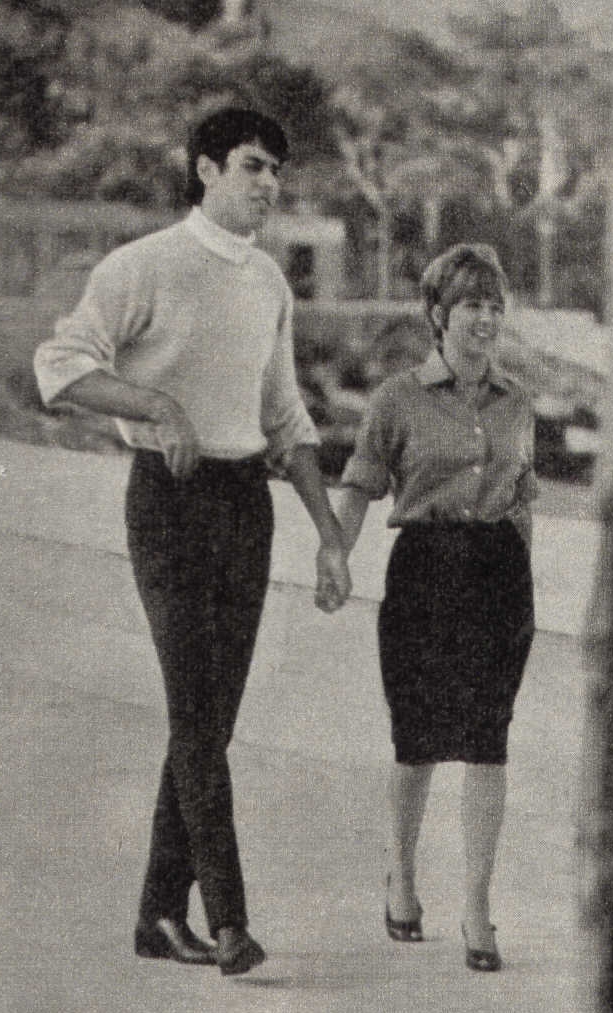
Teo Teocoli with his partner Wilma Goich in 1965.
"The facility for confrontation comes from a difficult childhood. Mum came from a family of carnies, dad had gone into the Navy under the English bombs. After the war we landed in Milan, in the Niguarda-Fulvio Testi area which was almost countryside at the time. Mum sewed in the tailor's shop, dad didn't work and was never seen, better because when he arrived he would beat me badly: the classic master father. I was a misfit: in front of the janitor in uniform I cried for hours, I struggled to write and read, I didn't even understand the concept of property. They called me ‘terun’, ‘Africa’, ‘baluba’, anything but not getting pissed off! It's a miracle that I even got to accounting because I never studied anything, I swear. I got the teachers pitched, I made them laugh too. Popularity arrived in the sixties, with advertising, the first shows, music. Dad often came to the theatre, especially in the dressing room, to ask me for money. And I was ready, I satisfied him: he was still my father. Mum lived longer and saw me at my best." Teo Teocoli
“Eh alooraaa” (And sooo). - Enrico Beruschi
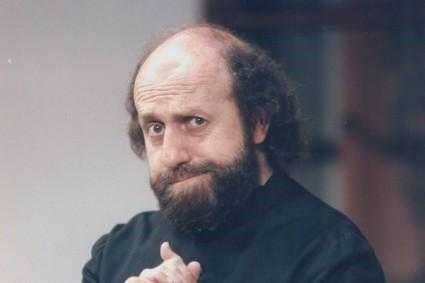
Born in Milan, he has worked in the world of entertainment for forty years as an actor, comedian, stand-up comedian and theater director. Deputy director of Galbusera (food company), he left his job in 1972 to dedicate himself to the profession of cabaret comedian.
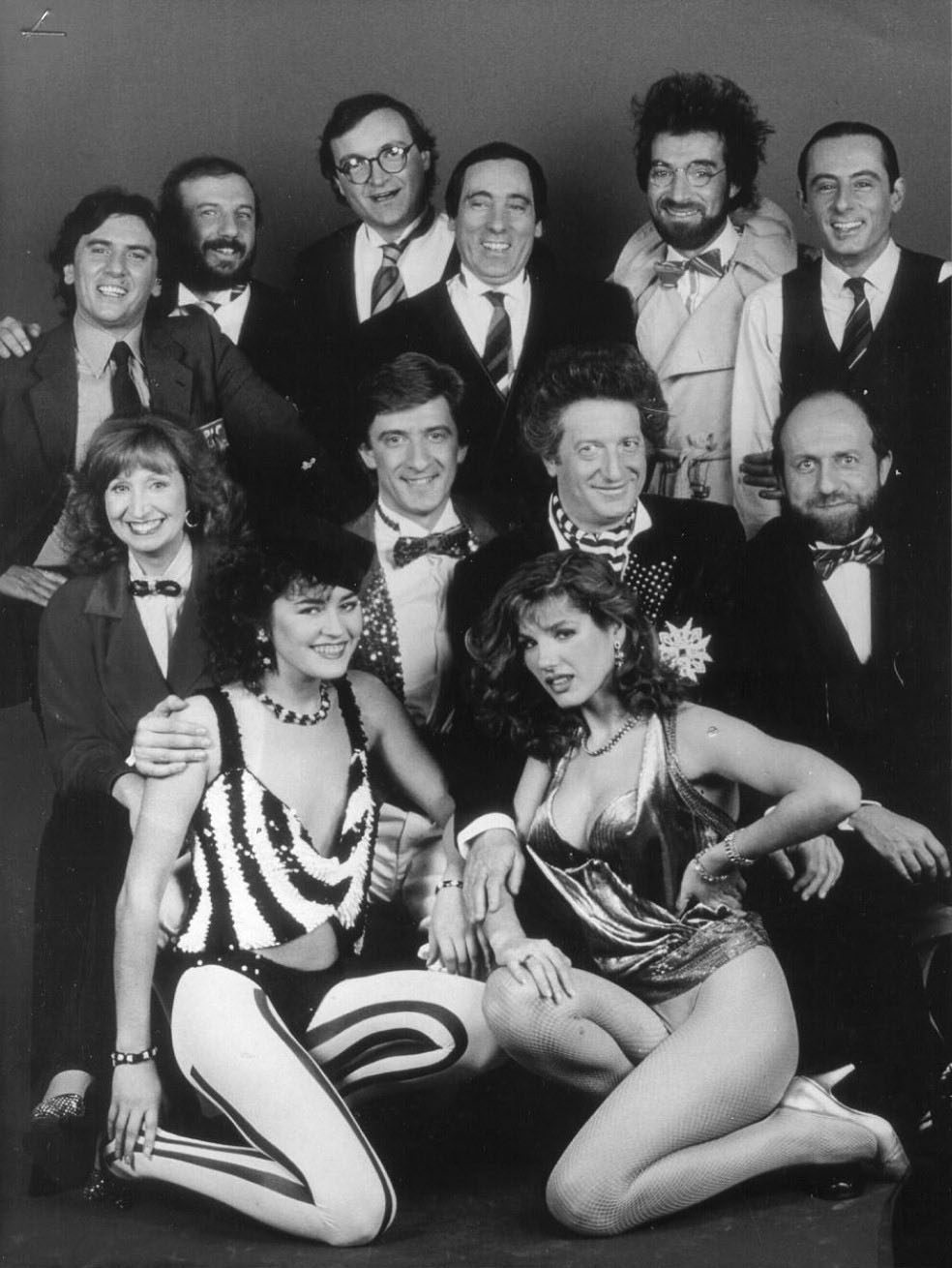
The cast of Drive In.
Success on TV after his debut at the Derby came with the famous show Drive In (on Italia 1), where he proposed funny gags paired with Margherita Fumero. Over the years he has also tried his hand at singing, coming fifth at the Sanremo Festival with the song 'Sarà un fiore'. In 1979 he began working in the theatre, first as an actor and then, little by little, as a director, until he tried, without pretensions, opera.
Giorgio Gaber and Enzo Jannacci
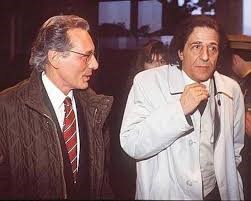
Giorgio Gaber and Enzo Jannacci.
For the series, not only comedians but also important songwriters passed through Derby. Both born in Milan and friends since they were young, Enzo Jannacci and Giorgio Gaber created one of the artistic partnerships known as 'I Due Corsari' in 1959. Despite having two very distinct musical styles, they produced songs together that still remain milestones of rock n'roll and Italian pop music. In 1960 the duo broke up and Jannacci began his solo career, but it was in 1983 that the couple returned under the name of Ja-Ga Brothers (nothing other than a tribute to the famous Blues Brothers from the John Landis' cult 1980 film).
From the origins to the mature times: the film that tells everything about Jannacci and 'his' Milan. By Fabrizio Ravelli, 20 September 2015.
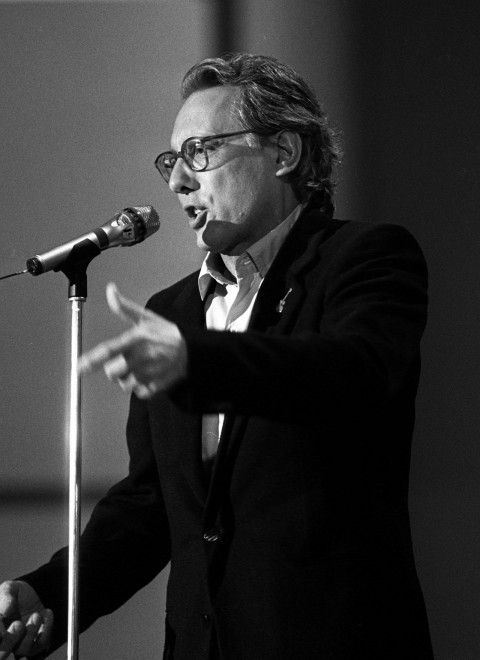
Enzo Jannacci.
'Lo stradone col bagliore' (The road with the glow) is a collection of video material that goes from the beginning with the rejection at Rai up to the great cabaret season, from the duet with Vasco to the illness experienced in private but with a smile.
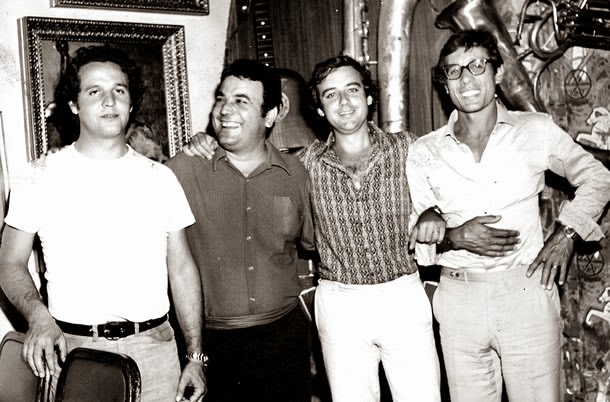
Cochi and Renato with Enzo Jannacci.
They still project it today at 3pm at the Scatola Magica of the Strehler theatre, at the Milano Film Festival, so you have time to see it. As long as you are in tune with Cochi Ponzoni, who on the evening of the premiere said that he doesn't believe that Enzo Jannacci is dead, who every now and then picks up the phone to tell him something and seemed really moved while he said it. Those that Jannacci is inside us and it seems that there are many of us. Ranuccio Sodi, director and personal friend of his, dedicated a documentary to Enzo. It's called 'The road with the glow': it's a song that he often spoke about, but that he never composed. The title remains, hyper-Jannacciano: we can imagine what it must have represented, perhaps a nocturnal landing in Milan.
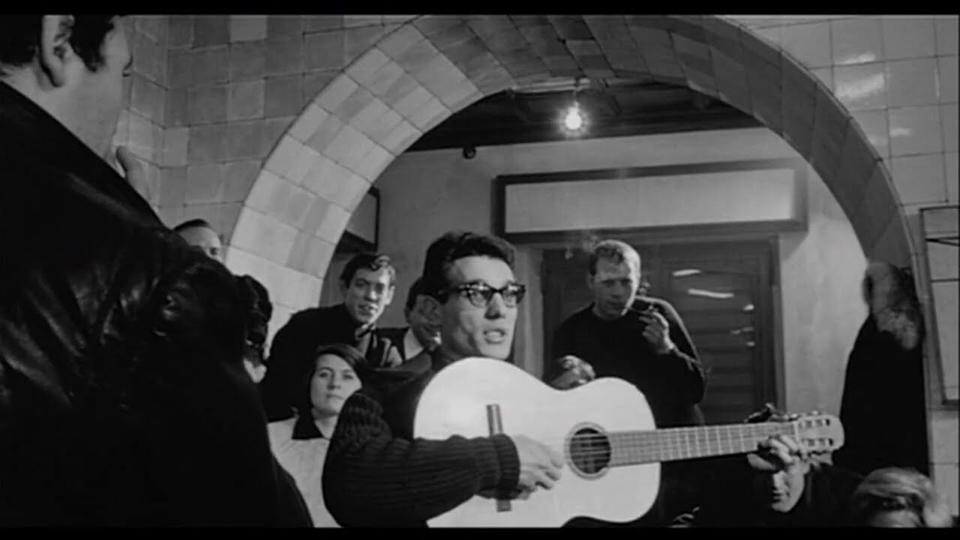
Enzo Jannacci.
But who knows what someone who wrote a song like 'Talking with lemons' was thinking.
Sodi's documentary is a very personal homage: he, a Tuscan boy transplanted to Milan, who spoke with narrow 'e's and said 'codesto' (this), felt like an outcast. It was Jannacci's lyrics that taught him the Milanese dialect, surreal humor and love for the 'unfortunates'. And it is an authentic mine of Jannaccian materials, from the origins with the thick glasses and the quick moves, up to the mature and sad and almost pacified times of the illness. Many moments are private and unpublished.
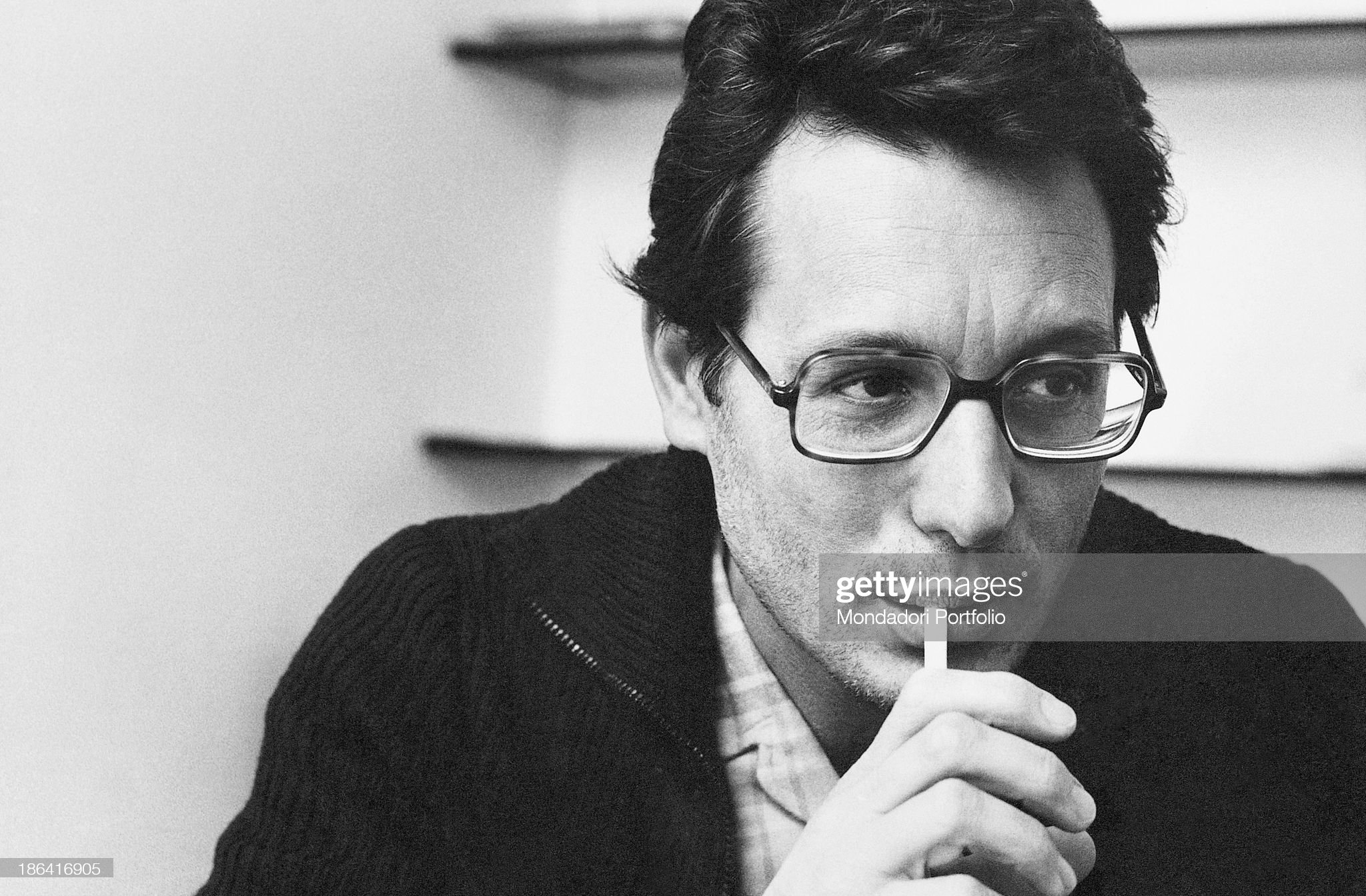
Italian singer-songwriter, stand-up comedian and actor Enzo Jannacci (Vincenzo Jannacci) smoking a cigarette in Milan in 1978. Photo by Adriano Alecchi / Mondadori via Getty Images.
"A character, a wretch", Jannacci said of himself, who spent his life swerving aside to avoid the train of rhetoric and magniloquence. Someone who said "these are canzonette" (songs), something very close to "minimal stuff, without result". But this swerving helped him to avoid getting trapped, to talk about something else. The documentary has everything. The images (often televised, or grainy, or survivors of some eventful move) of the first Jannacci who, in the sixties of the boom, told us about the 'unlucky people', the 'bum' who wanted to go to the Idroscalo, the taxi driver with his widowed mother, the pimp ('el rocchettée') in the bar in Piazza Beccaria, "Veronica il primo amor di tutta via Canonica” (Veronica the first love of the whole via Canonica). Jannacci looked like a boy: thin, who went on TV in a dark suit and tie, a nice, serious boy but with something different that sparkled inside him.
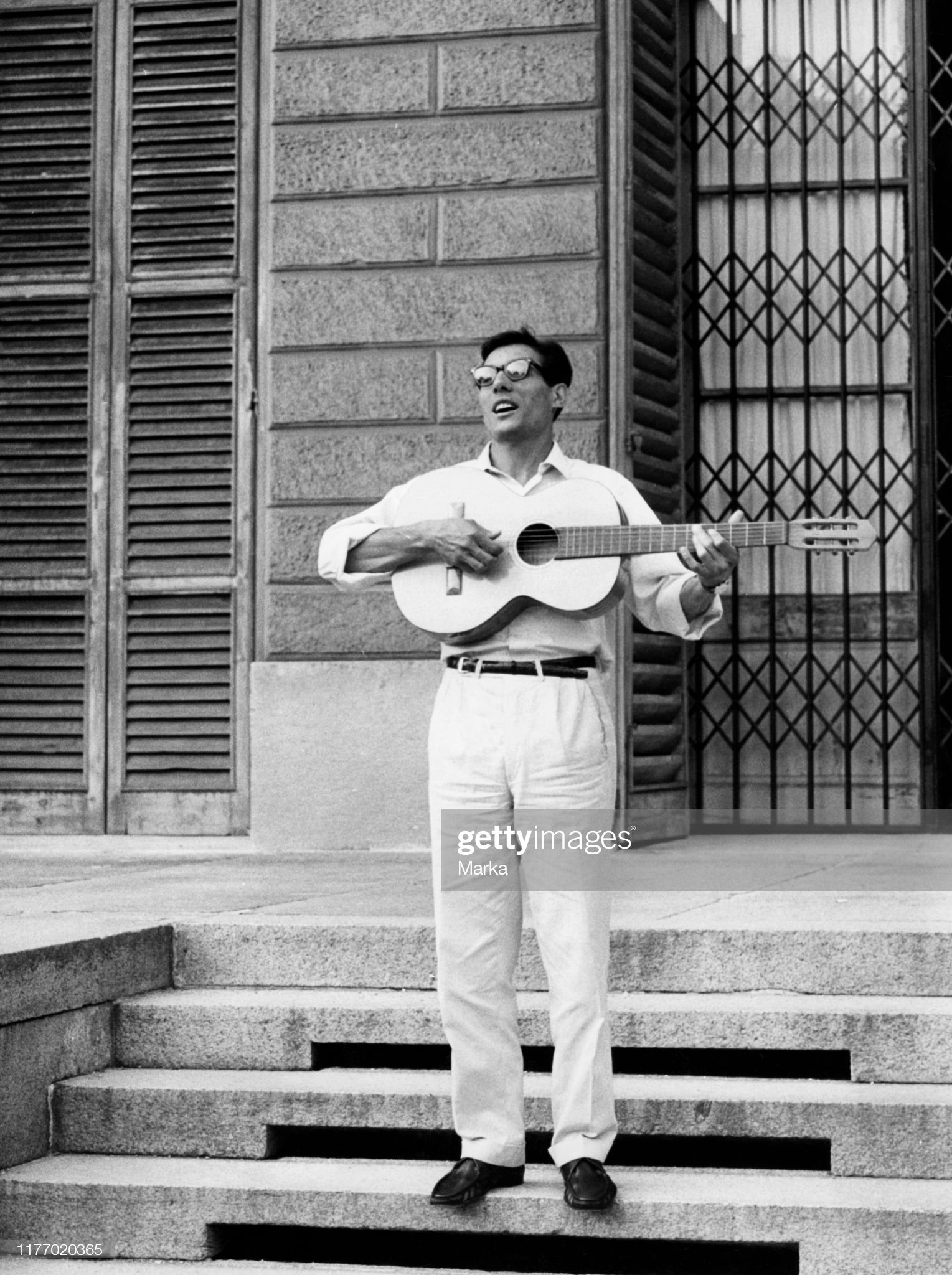
Vincenzo Jannacci in 1964. Photo by Touring Club Italiano / Marka / Universal Images Group via Getty Images.
The TV which had also rejected him in an audition and he talked about this failure many times because it stung him. On the other hand, we can imagine the face of the Rai official who sees him presenting a song like 'The dog with hair': "one day, now convinced that he was different, the dog with hair entered a tobacconist..."
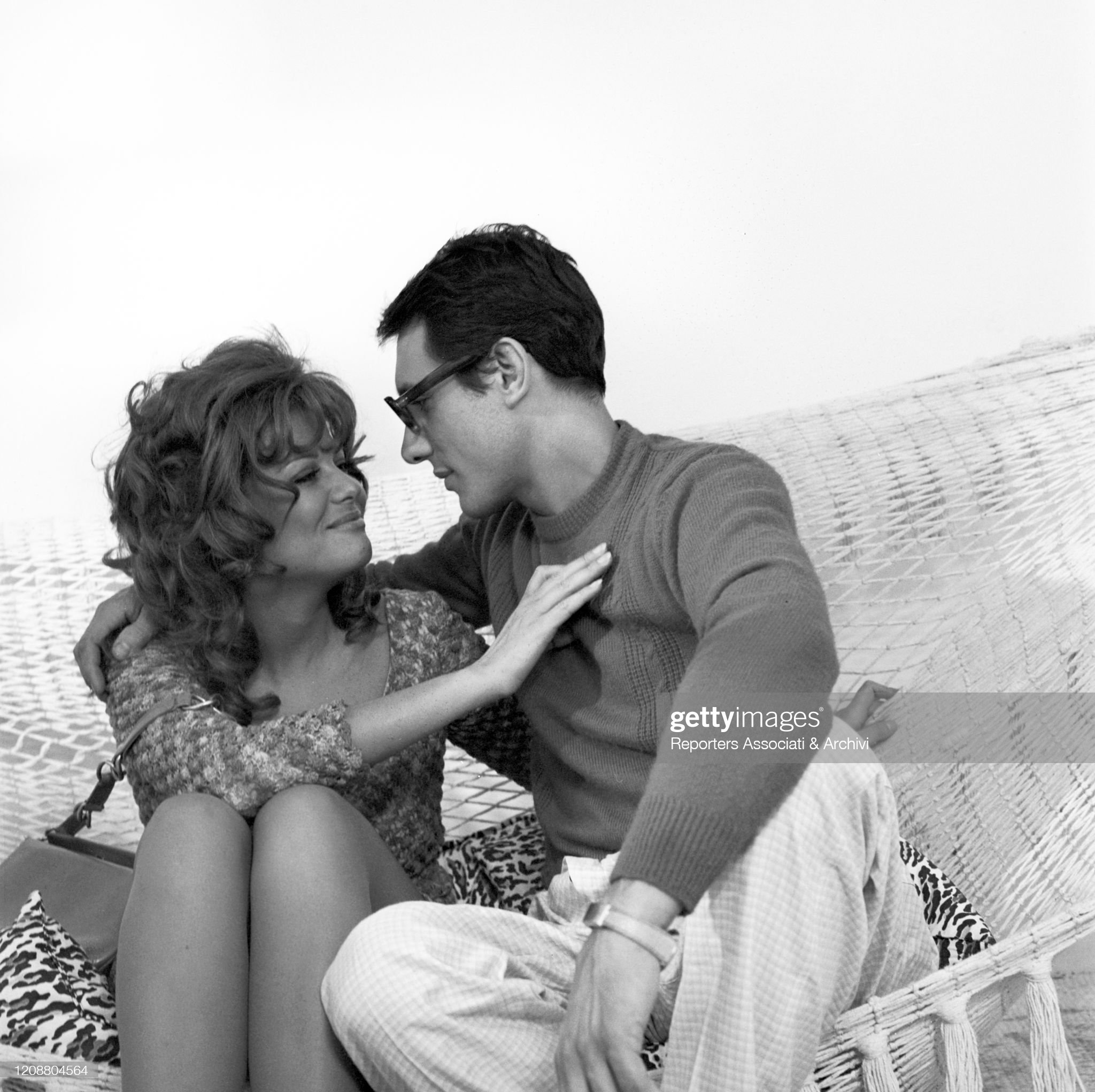
Italian actress Claudia Cardinale (Claude Joséphine Rose Cardinale) and Enzo Jannacci hugging each other sitting on a hammock in the film ‘Papal Audience’ in Italy in 1972. Photo by Divo Cavicchioli / Reporters Associati & Archivi / Mondadori Portfolio via Getty Images.
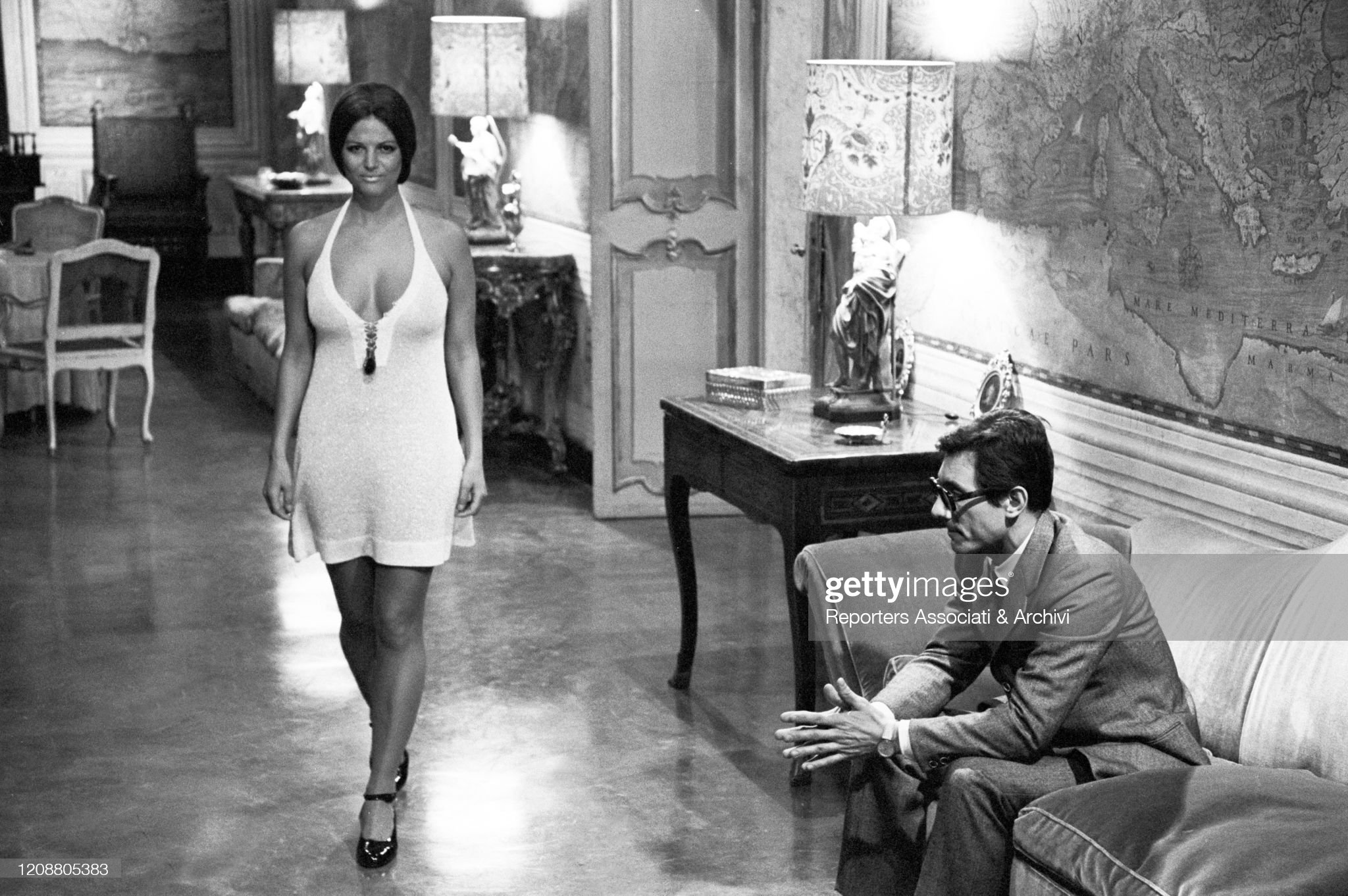
Claudia Cardinale and Enzo Jannacci in the film ‘Papal Audience’ in Italy in 1972. Photo by Divo Cavicchioli / Reporters Associati & Archivi / Mondadori Portfolio via Getty Images.
Jannacci was many things and we find them all. The comical and crooked look, but charitable, for the one who lacks a ‘deca’ (a ten) 'per cuatà una tratta' (to pay a bill of exchange), for the worker who a little envies ‘i sciori' (the lords) with 'la radio noeuva’ (the new radio) and in the cupboard the cake ‘per i fioeu' (for the children), the one waiting for Nina and his feet hurt, the one-eyed lookout of the ‘Ortica gang’. And the sadness of 'Io e te’ (I and you): "and the sadness is there, a stone's throw away and caresses you and laughs". Son of an Apulian, «born mainly in Milan», he also felt a Southern man, he said it in an interview: «the Milanese people don't like southerners. Nobody likes southerners."
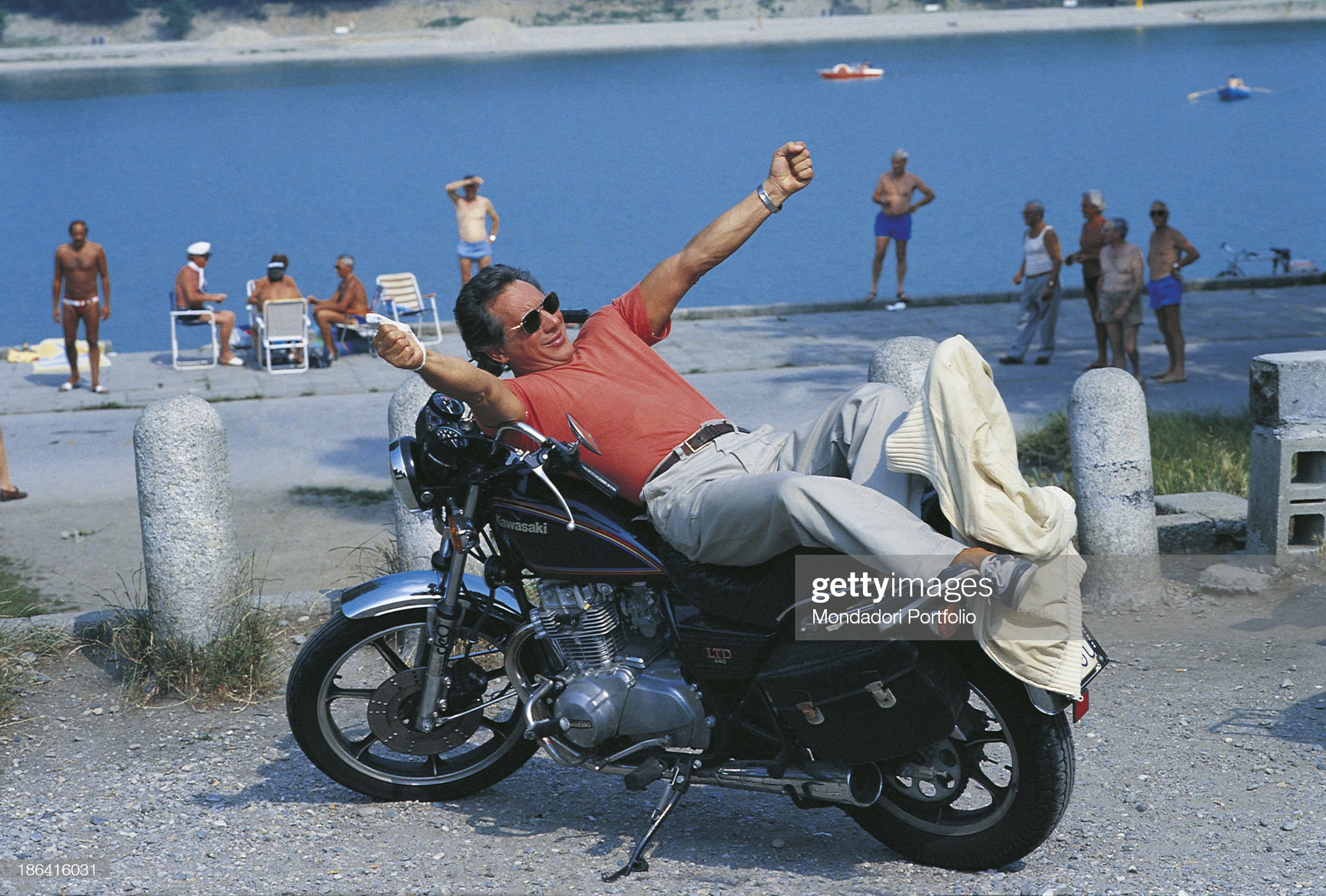
Enzo Jannacci lying on a motorbike in Sanremo in 1991. Photo by Angelo Deligio / Mondadori via Getty Images.
Ranuccio Sodi, who often worked with Enzo, remembers well the struggle of keeping up with someone like him, brilliant but moody, unpredictable and bizarre, sometimes heavy and then affectionate. In the documentary there are also previously unpublished pieces.
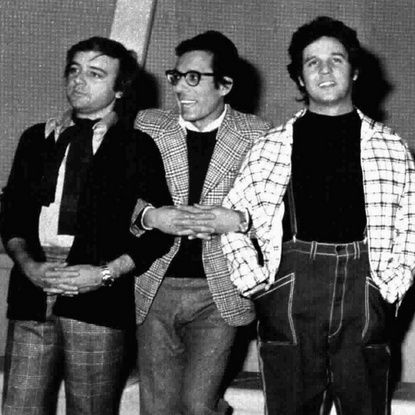
Enzo Jannacci with Cochi and Renato on 11 November 1973.
Jannacci prepares 'Silvano' with Cochi and Renato in the recording room and the session is a perfect sketch. What remains of a TV series for Rai, never finished and therefore never broadcast, called 'La tappezzeria' (The tapestry). Here with Jannacci we see 'il 'Gruppo repellente' (the repellent Group): the very young skinny Diego Abatantuono, Giorgio Porcaro, Mauro Di Francesco, Massimo Boldi and a Giorgio Faletti doing an imitation of a chicken. A nice bunch of talents at the beginning.
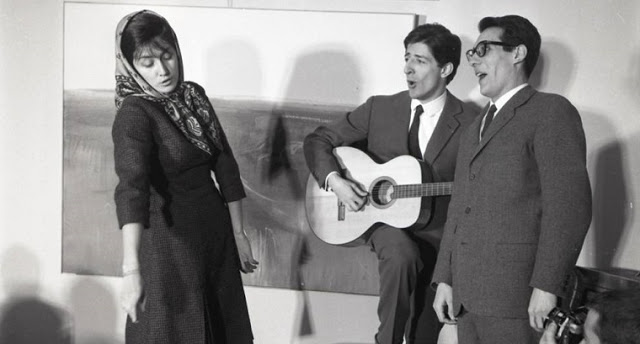
Enzo Jannacci with Giorgio Gaber and his partner Maria Monti.
And again Jannacci with Gaber, the story of a tragicomic evening with Celentano's group, under the toss of coins like the Blues Brothers. And Jannacci with Vasco Rossi singing 'Vita spericolata'.
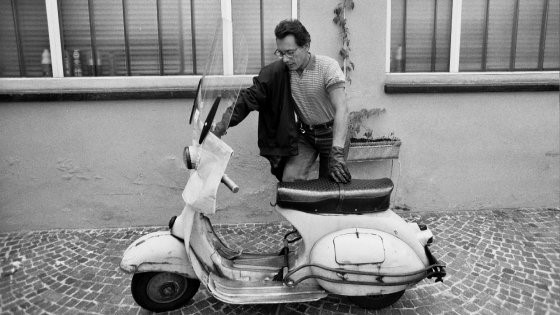
Enzo Jannacci and his white Vespa.
"I'm running away, I've been running away all my life", Jannacci says. And he is often seen as on the run, on a Vespa, on skates, away from those who wanted to classify him. He made us cry with 'Vincenzina' and then always laugh on southern topics with 'Dagalterùn fandango'. The last Jannacci, private and ill but smiling, is that of 'Talking with lemons': "how much effort it takes to be accepted with songs..."
“Ue’ terrunciello” (Hi little southerner). – Diego Abatantuono
He was the master of the house. The Derby Club was in fact started by a project of the Bongiovanni couple, his maternal uncles.

Diego Abatantuono.
Originally from Giambellino, like Ugo Conti and Enrico Mentana, at the beginning of his career he was a character actor, who was often entrusted with the role of the southern immigrant who lived and worked in the North, the so-called "terrunciello", whose role was often in cohabitation with Giorgio Porcaro (and even today it is not clear which of the two actually invented the character). Having set aside that singular role over time, Diego Abatantuono remained a great character actor of Milanese comedy, author of protagonist characters in numerous and varied comedies, who however also knew how to get out of those tracks and tried his hand at more 'committed' roles such as 'A boy from Calabria' by Comencini and 'Christmas gift' by Pupi Avati. The most important artistic partnership is certainly the one made with the director Gabriele Salvatores, thanks to which Abatantuono won, together with the entire cast and crew of the feature film, the Oscar at the 1992 Hollywood Academy Award for the best foreign film of that year: ‘Mediterraneo’. Famous catchphrases:
- “the password is... viuleeeenzaaaa! (violeeeenceeee!)
- “Black apron and blue bow: for a Milan fan the first day of school is a trauma.”
- “The beard is the underpants of the face.”
- “Mmm… che profumin! Che avet’ cuccinat’ occi, i pulpett’ ti merda? (Mmm… what a scent! What did you cook today, the shitty meatballs?)”
- “I became a Milan fan because, as a child, I found my grandfather's wallet on the floor one day. I opened it and saw the yellowed photos of Padre Pio and Gianni Rivera, whom I didn't know, I didn't know who they were. I asked my grandfather and he explained to me: one works miracles, the other is a popular friar from Puglia.”
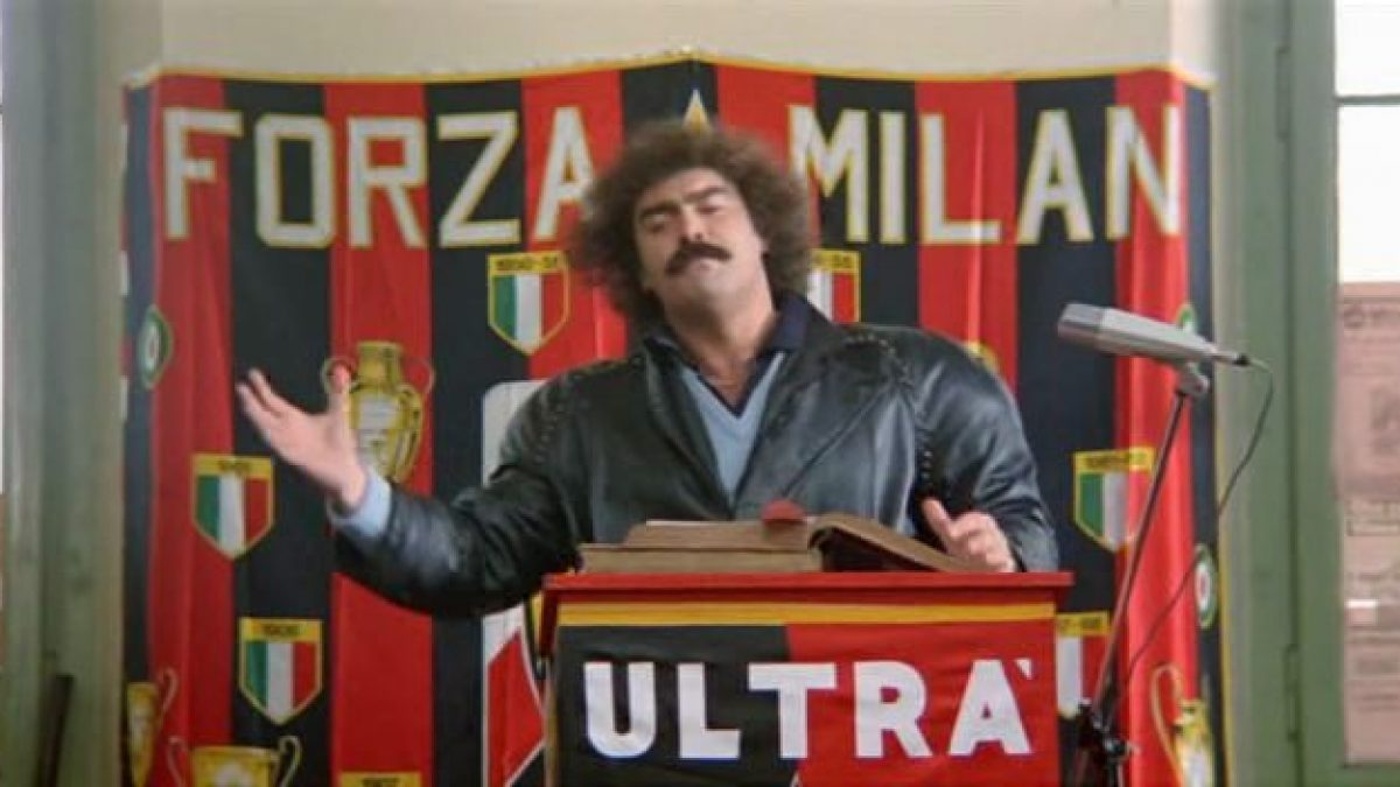
Diego Abatantuono, a huge AC Milan fan, in ‘Eccezziunale veramente’.
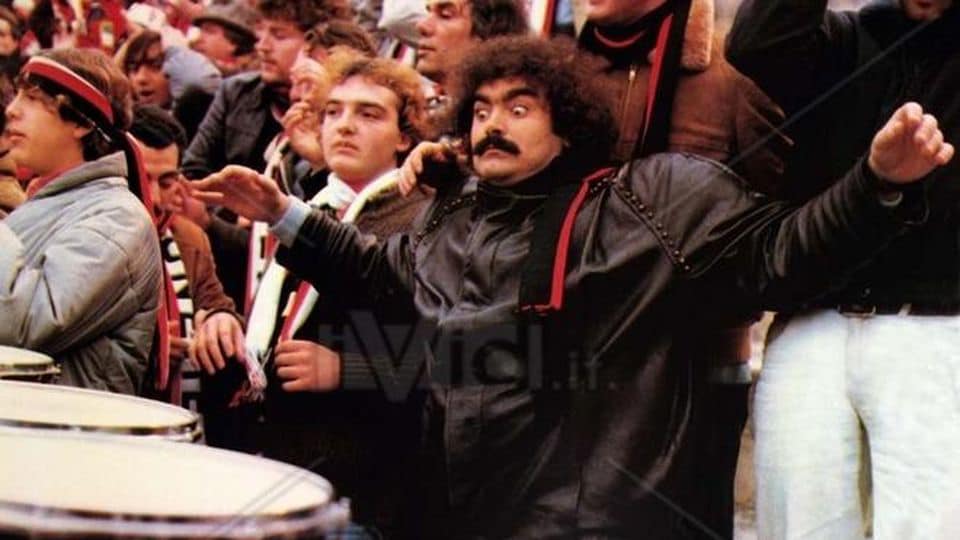
Diego Abatantuono, a huge AC Milan fan, at the San Siro stadium in ‘Eccezziunale veramente’.
The best Abatantuono however, in our opinion, was the first, that of the film ‘Eccezziunale veramente!!!’ (Truly exxcepptional!!!) And the lyrics of that film's soundtrack prove it beyond a shadow of a doubt:

Diego Abatantuono in ‘Eccezziunale veramente’.
Eccezziunale veramente!!!
So' uno strano animale,
so' un tip' eccezziunale.
So' il re del quartiere,
dettengo il potere.
Se perto la pazienza
mi scatta la viulenza... ah aaah.
Sul mio moto-fuggone
mi sento un leone... e spatroneccio.
I just love now tohivoschenenau
beloved too big for youuuu?
Io...?
Fottuna che ho un cevvello eccezziunalo,
veramente eccezziunalo.
Ma,
la gente mi ritiene un animalo,
un gran bell'animalo.
Peppute' campa' parapa'
m'hanno fatto emigra'a'a'!
Ma...,
fottuna che ho un cevvello eccezziunalo,
veramente eccezziunalo.
Sì,
io mancio le orecchiette
ma al cavialo.
So istesso di un maialo.
Peppute' campa' parapa'
m'hanno fatto emigra'a'a'a'.
Peppute' pappa' papparapa'
ho dovuto emigra'a'a'.
Quanto sto alla pattita
i' rischio la vita.
Se mi piace una tonna
ci sbrano la gonna aaah.
Se peccaso mi offento
ti strappo via i denti.
Sono un tip'viulento
a' cento pe' cento.
E... spatroneccio.
Bisbobutisesaround
to down o not to down
I love crazy to youuuu.
Io?
Fottuna che ho un cevvello eccezziunalo,
veramente eccezziunalo.
Ma,
la gente mi ritiene un animalo,
un gran bell'animalo.
Peppute' campa' papparapa'
m'hanno fatto emigra'a'a'.
Ma,
fottuna che ho un cevvello eccezziunalo,
veramente eccezziunalo.
Yes.
Io mancio le orecchiette ma al cavialo.
Soistesso di un maialo.
Peppute' campa' papparapa'
m'hanno fatto emigra'a'a'.
Cetto...
forse ho esacerat'.
D'attronde ho subit l'influenza di cente dello spessore musical di Litl Tost, Ciò Cocccr, di Stiv Uandr, di Snella Figgeral.
Cioè, campiand' discorz, cioè io so bionto, cioè tinto ma bionto.
C’ho il capell' bionto!
Ora vivend' in periferia, cioè dentro l'interlan,
può anche esser molto pericolos.
Metti che zumpa fuori da dietro un angolo un terrunciello.
Cazzarrola, ti zumpa addoss, Maronna, ti spappola, ti fa a pezzi...
Cioè, è come essere un alpino ad Harlem.
Pe' alpino, intento no alpino con la penna,
alpino slavat... no è, scus?
Io?
Fottuna che ho un cevvello eccezziunalo.
Ma,
la gente, a tort, mi ritiene un animalo.
E peffozza...!
Peppute' campa' papparapa'
ho dovuto emigra'a'a'.
Dovevo pure manciare no?
“See you later!” – Guido Nicheli (Dogui)
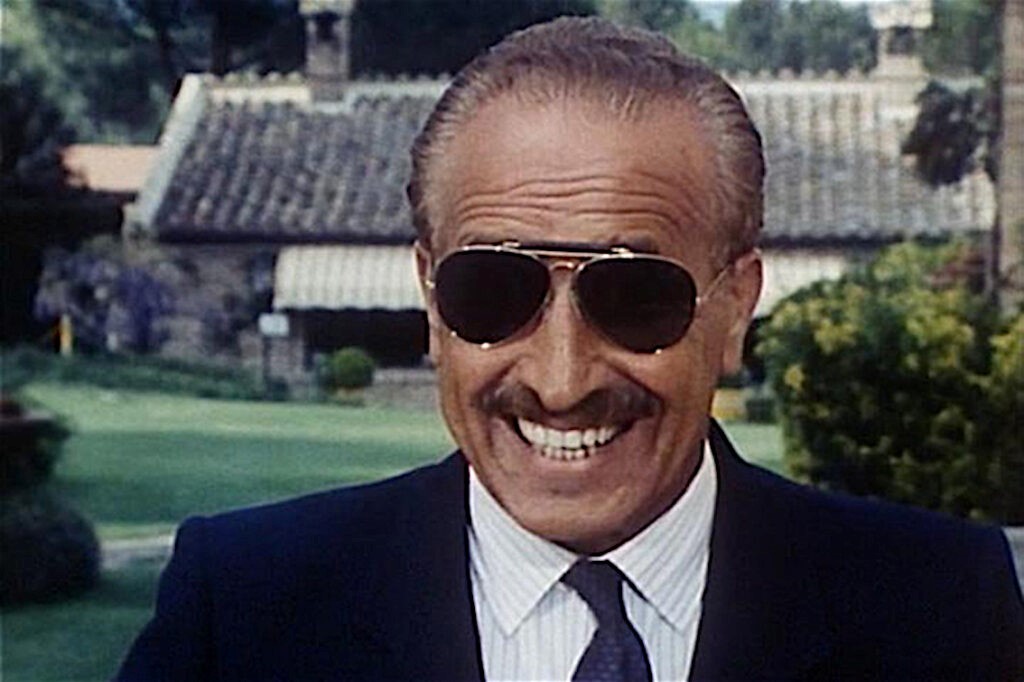
Guido Nicheli.
Originally from Bergamo, after graduating he worked as a dental technician in his cousin's dental practice, a job he maintained until the end of the 1980s, despite the popularity he had gained.
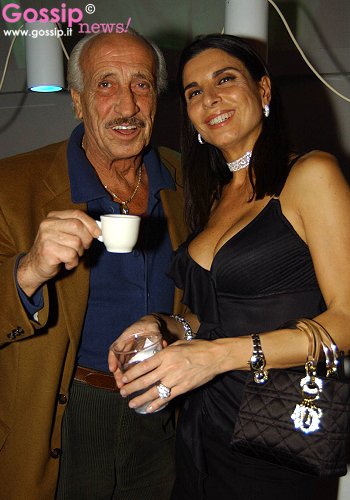
Cumenda Nicheli, rich in pretense and by nature. Thus he spoke about women with an irony that is unthinkable today: "ambiente elegante...., un whisketto...., mano sul fianco...., due parole giuste e.... taaaaac, la maiala è già pronta per la brace. (Elegant environment...., a little whisky...., a hand on the hip...., two right words and....taaaaac, the pig is already ready for the grill").
In the 1960s he supplemented his salary by working as a liquor salesman and thus came into contact with the Milanese nightlife, in particular that which revolved around the historic Derby club.
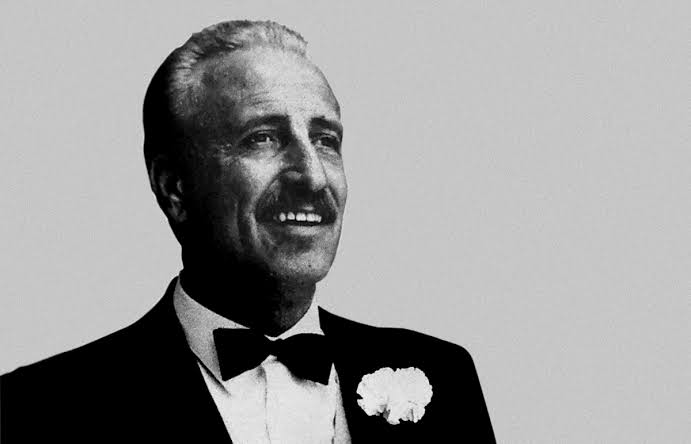
Guido Nicheli, actor by chance, who became the prince of Italian character actors. An athletic physique, a wisdom that comes from afar and a tranquility that is contagious.
Here he meets Stefano Vanzina, Teo Teocoli and Renato Pozzetto, lifelong friends.
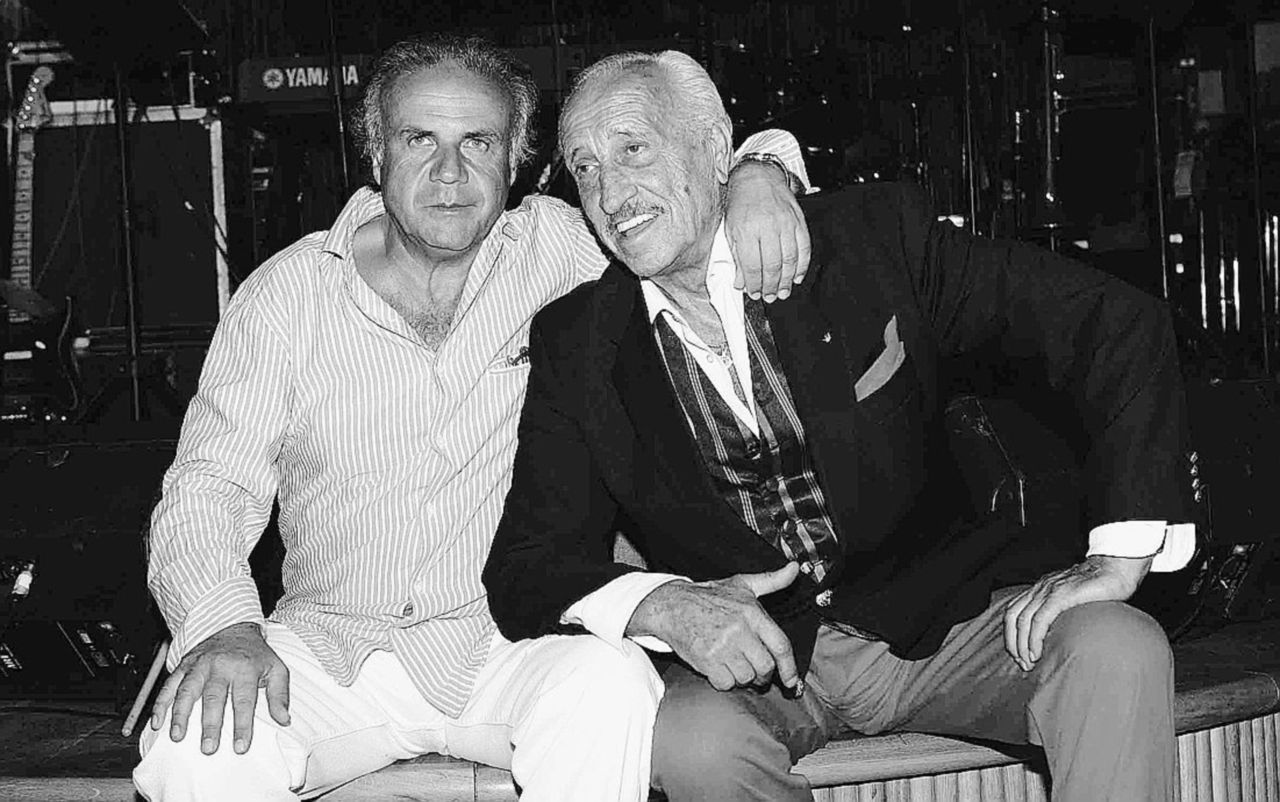
‘Il Dogui’ with Jerry Cala, who says about Nicheli: “the legendary Zampetti, Guido Nicheli. We often worked together, the great Dogui and I, and he was always the one above me, my bogeyman, my superior, the ‘cumenda’ who demands or, as in Yuppies, my director. There was an automatic chemistry between us in acting. Guido was one of the greatest Italian character artists. We were really good friends and hung out often. He had a particular philosophy: all human beings are animals and he is the pilot fish. He was great when he drew up his ranking of the most important things: mother came first, spaghetti came second.”
For his friends he is Dogui, a nickname which is the anagram of his name and which consolidated the trend of ‘riocontra’, a Milanese slang from the 80s still in vogue today in some areas of Milan.
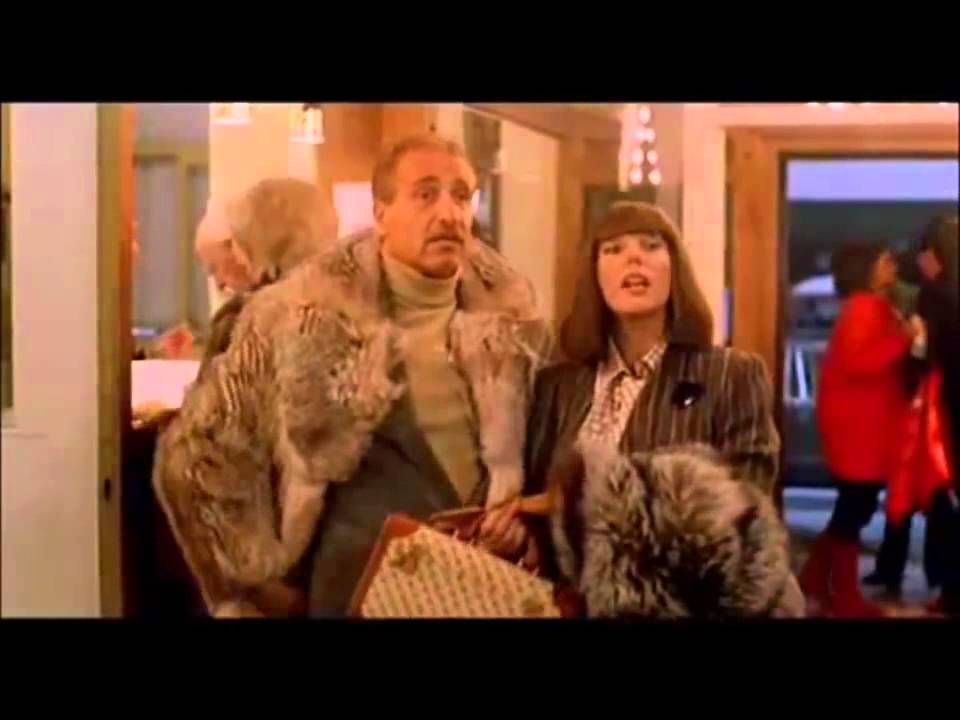
Guido Nicheli with Stefania Sandrelli in the 1983 movie ‘Vacanze di Natale’. The actor was famous as ‘il Zampetti’, the Milanese cummenda par excellence, cured meat merchant, a character who made Nicheli's fortune and, at the same time, imprisoned him in a stereotype of great popular success, even with fan clubs. The actor had performed a very long series of new Italian comedies. Nicheli certainly loved his cummenda and recited him with gusto. The intense look, serious in his hyperboles talking about money and things to buy, jewels to silence his wife like "fabbrichette" (small factories), of his pigs, but more often of ‘maiale’ (sows), that is, women and lovers. Nicheli had a continuous hand gesture which is the true characteristic of the character, together with the intonation and the Lombard inflection.
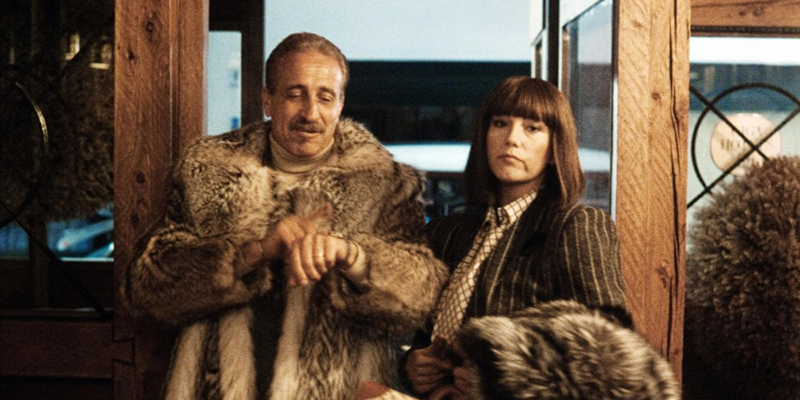
Guido Nicheli with Stefania Sandrelli in the 1983 movie ‘Vacanze di Natale’.
The Dogui would thus become the 'cumenda' (commendatore) by definition of Italian trash cinematography of the end of the 20th century.
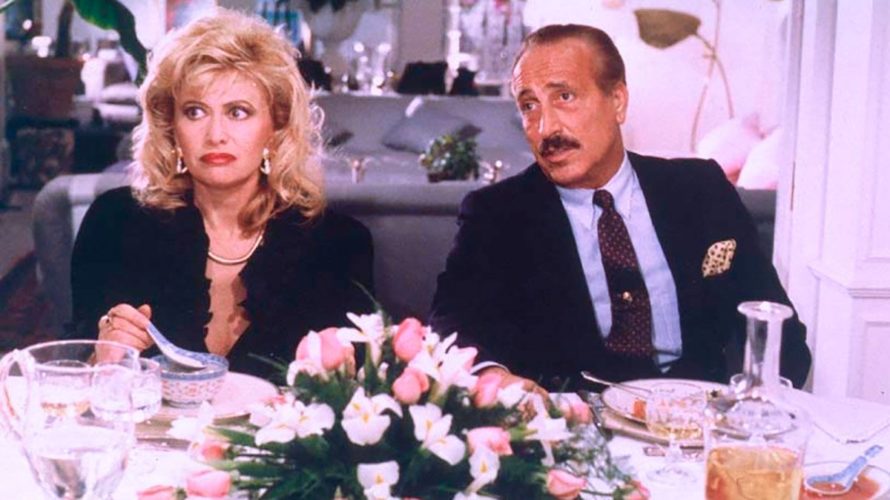
Guido Nicheli in the 1989 movie ‘Le finte bionde’.
But Nicheli also boasted more famous friendships, such as the one with the Catalan painter Salvador Dalì, of whom he was often a guest in Cadaques.
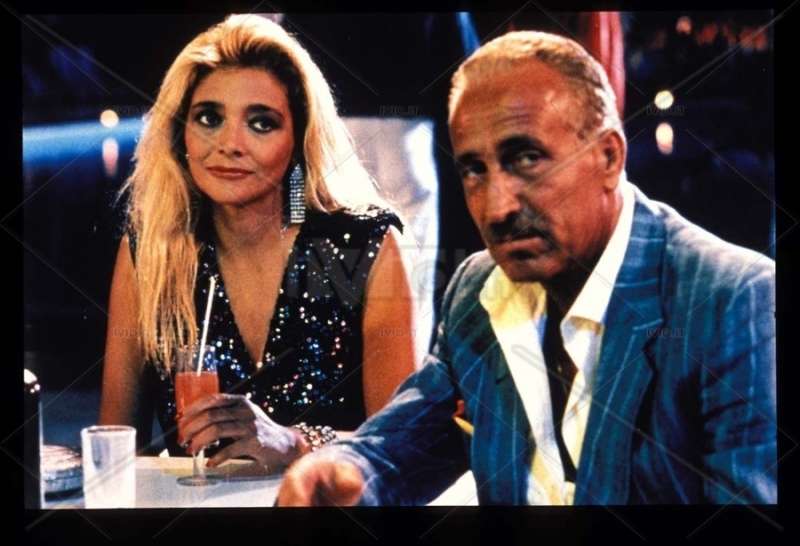
Guido Nicheli with Mara Venier in Professione vacanze.
When he passed away in 2007, he made sure that one of his typical expressions that had become his trademark was written as an epitaph on his tombstone: “see you later!”
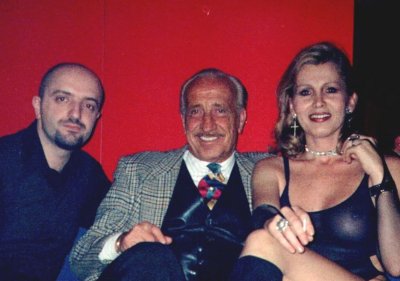
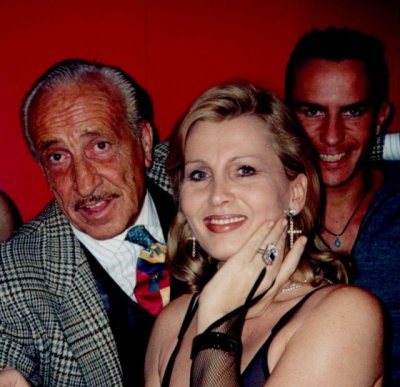
Other famous jokes:
- “but the lust is here, my love: sun, whiskey and you're in pole position!”
- “Mine is not a point of view... it's a theorem! Clear?”
- “A person endures everything in life: a wife called Nives, Milan in series B, the daughter who marries a moron! But no puppets on the cake!!!!”
- “Via della Spiga - Hotel Cristallo in Cortina 2 hours and 54 minutes! Alboreto is nothing!”
- “NCS non ci siamo!” (We are not there!)
- “Mi stai pattinando sul filo del vaffa!” (You are skating on the edge of the fuck you!)
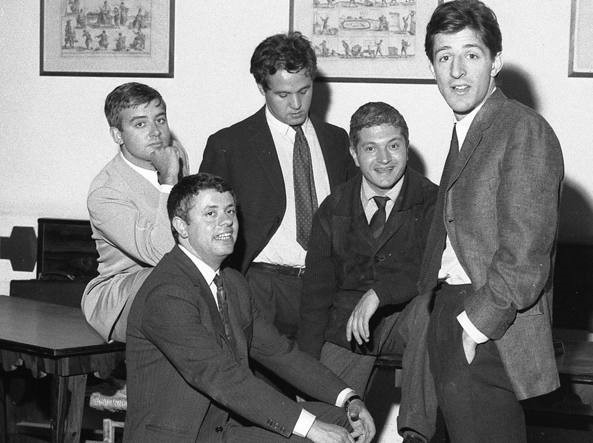
Cochi Ponzoni, Renato Pozzetto and Giorgio Gaber.
Milanese style laughters from the days of the legend of the Derby Club, where comedy (of the end of the millennium) was born, to today. By Matteo Speroni.
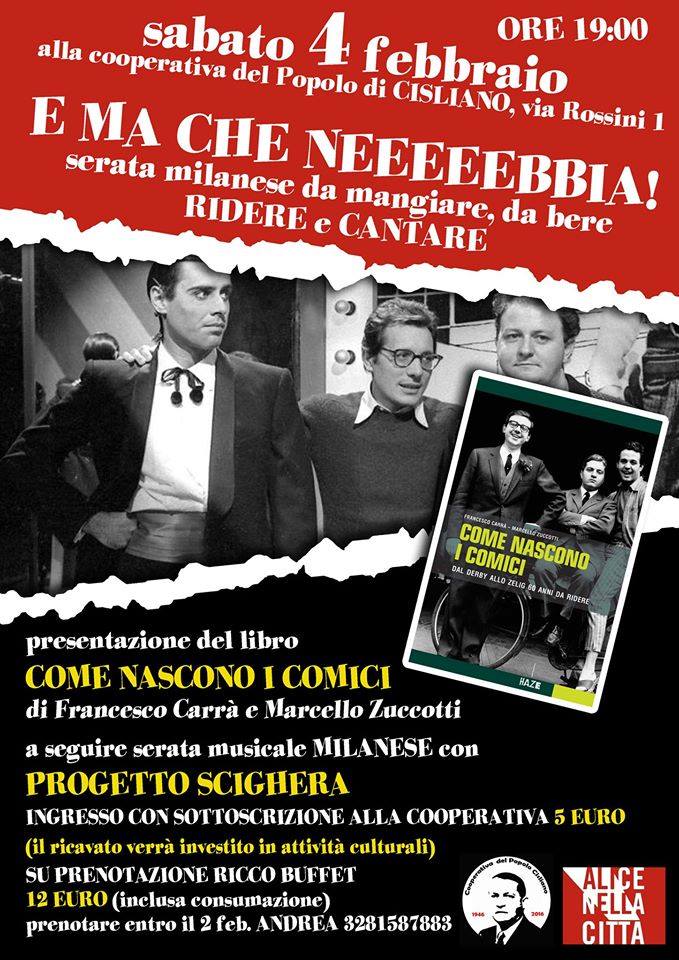
The poster for the presentation of the book 'Come nascono I comici’ (How comedians are born) by Francesco Carra' and Marcello Zuccotti.
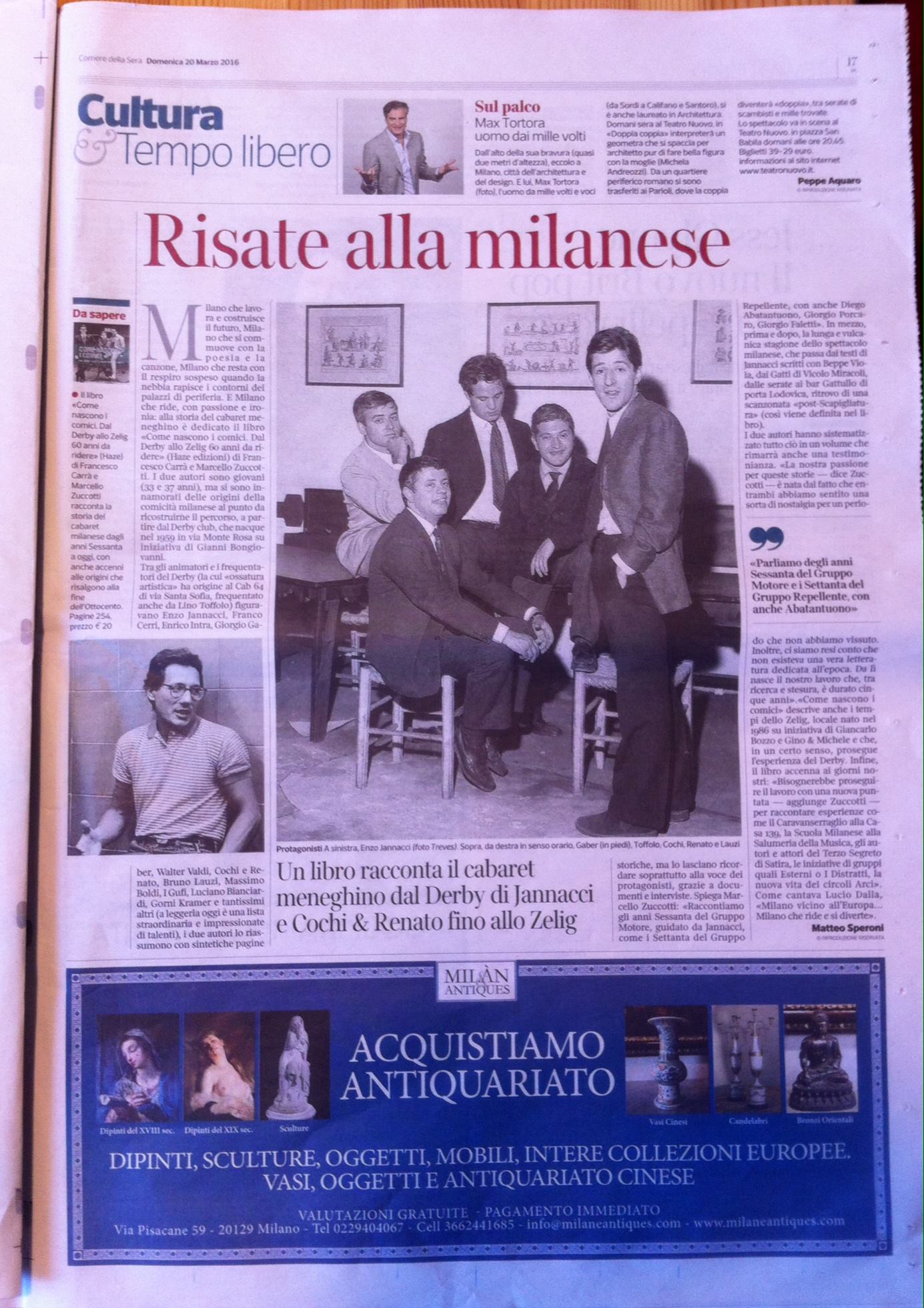
The review in a magazine of the book 'Come nascono I comici’ (How comedians are born) by Francesco Carra' and Marcello Zuccotti.
On the occasion of the release of a detailed book on the history of the Derby Club, written by Francesco Carrà and Marcello Zuccotti, the Cineteca Nazionale pays homage to the temple of Milanese comedy (and beyond) and to the great protagonists of an unrepeatable season, who left their mark also in the cinema (and television) of the last fifty years.
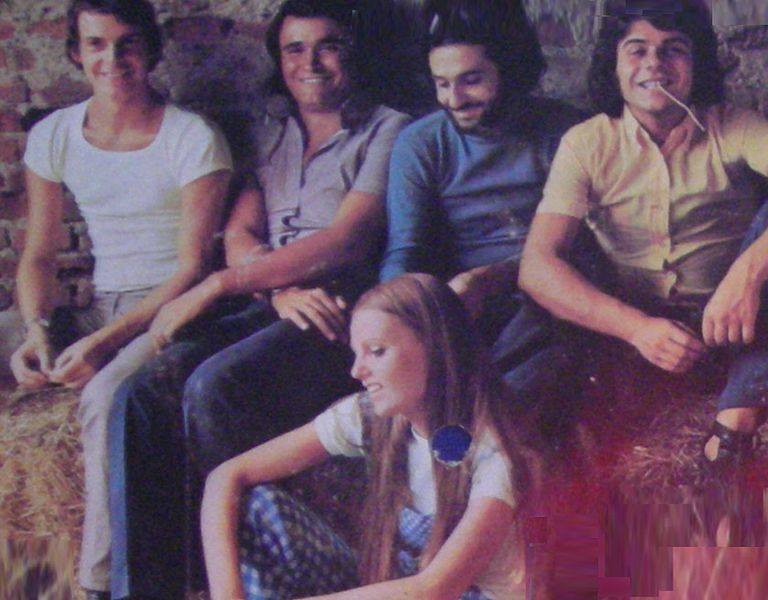
I Gatti di Vicolo Miracoli.
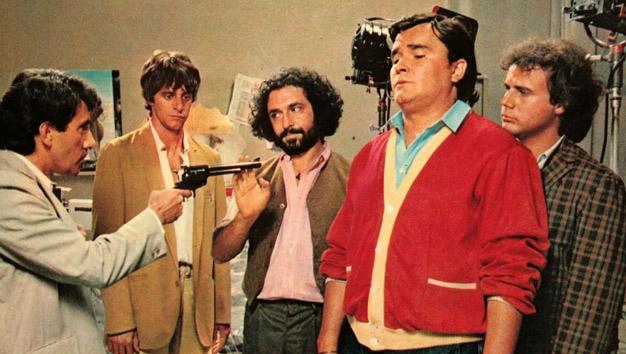
I Gatti di Vicolo Miracoli.
From 'La vita' agra’ (the sour life) onwards... “The Derby Club Cabaret opened in Milan towards the end of the 1960s and for several decades became the hotbed of unprecedented, surreal, cynical, truly revolutionary comedy. It all begins with the jazz of Enrico Intra and Franco Cerri, then come the songs of Enzo Jannacci and Dario Fo and then Walter Valdi, Bruno Lauzi, Beppe Viola, Lino Toffolo, up to the famous comic inventions of Felice Andreasi, Cochi & Renato, I Gatti, Mauro Di Francesco, Giorgio Porcaro, Diego Abatantuono, Massimo Boldi, Teo Teocoli, Giorgio Faletti…” Carrà – Zuccotti
Milan that works and builds the future, Milan that is moved by poetry and song, Milan that remains breathless when the fog enraptures the outlines of the suburban buildings. And Milan laughs, with passion and irony: the book 'How comedians are born' is dedicated to the history of Milanese cabaret. 'From Derby to Zelig 60 years to laugh', Haze editions by Francesco Carrà and Marcello Zuccotti. The two authors are young (33 and 37 years old) but they fell in love with the origins of Milanese comedy to the point of reconstructing its path, starting from the Derby club, which was born in 1959.
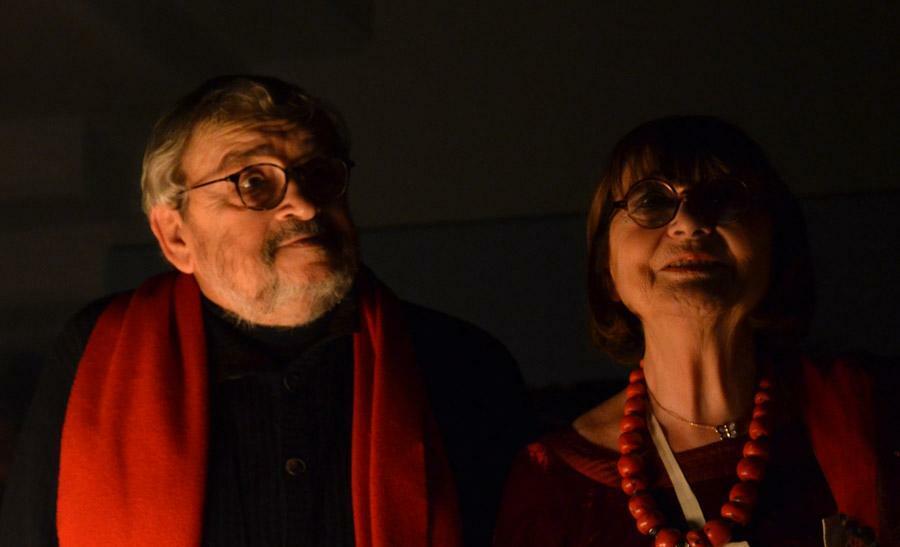
Birthday of Tinin (Agostino) Mantegazza with Velia at the Maritime Museum of Cesenatico.
The world of cabaret in Milan in the 1960s was a phenomenon that Tinin and Velia Mantegazza helped consolidate, first with the Galleria la Muffola and then by founding Cab 64 in via Santa Sofia, where young artists such as Cochi and Renato, Bruno Lauzi, Felice Andreasi and Lino Toffolo performed. «In the 1950s I worked for La Notte di Nutrizio», Mantegazza says. “I filled in the blank spaces with drawings. Then I was hired at Giorno, where I did everything. But I also had the desire for something else. So in 1964, at the age of 33, I founded 'Cab 64' in via Santa Sofia. A nice place? The basement of a bar. We didn't have a cent, the bathroom had to be built and Bruno Lauzi advanced the money for the toilet. So we could open. Me, my wife Velia, Lauzi, Cochi and Renato, Gino Negri, great composer, in cooperative. There was cabaret every evening, Paolo Poli performed with his Santa Rita da Cascia. They were magnificent years, Milan was seething and new stars were born, Gaber, Jannacci, who passed also by us. A splendid climate. Died at the beginning of the 70s, then with the “Milano da bere" (Milan to drink). And it wasn't 'Milan cabaret',” Oreglio underlines, “as we usually tend to say, but 'national', because the protagonists of that extraordinary epic came from all over Italy.” And what do you think of Milan? “I don't see any signs of rebirth,” Mantegazza concludes. “Milan has been screwed, there is more life in the province.”
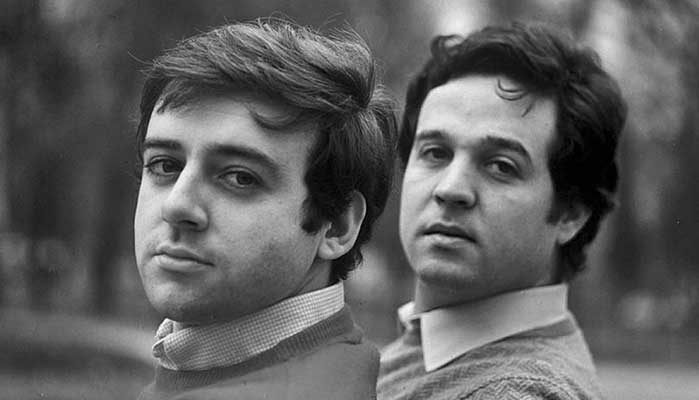
Cochi Ponzoni with Renato Pozzetto in the 1960’s.
"It all started in via Santa Sofia at Cab 64. Jannacci discovered us there, under the stairs of a bar. I remember the people crowded together, there were the most famous artists. On stage we also hosted Battiato who had just arrived from Sicily. Gaber arrived every evening. Then came the Derby. Nostalgia? For 10 years it was our home. I left Milan at the end of the 70s for Rome because I didn't like it anymore. It was the era of Milan to drink, the Derby was over. In '74 we started with cinema, I with Lattuada in “Heart of a dog”, less commercial." Cochi Ponzoni
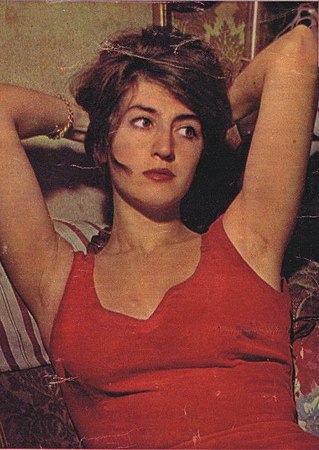
The Milanese Maria Monticelli is considered the first Italian singer-songwriter, the first artist to be interested in popular music, the first to record political and underworld songs.
Among the entertainers and frequenters of the Derby, whose "artistic backbone" originates at Cab 64, were Enzo Jannacci, Franco Cerri, Enrico Intra, Giorgio Gaber, Walter Valdi, Cochi and Renato, Bruno Lauzi, Massimo Boldi, I Gufi, Luciano Bianciardi, Gorni Kramer and many others (reading it today is an extraordinary and impressive list of talents). The two authors summarize it with concise historical pages, but let it be remembered above all by the voice of the protagonists, thanks to documents and interviews. Marcello Zuccotti explains: «we tell the Sixties of the Motor Group, led by Jannacci, like the Seventies of the Repellent Group, also with Diego Abatantuono, Giorgio Porcaro, Giorgio Faletti».
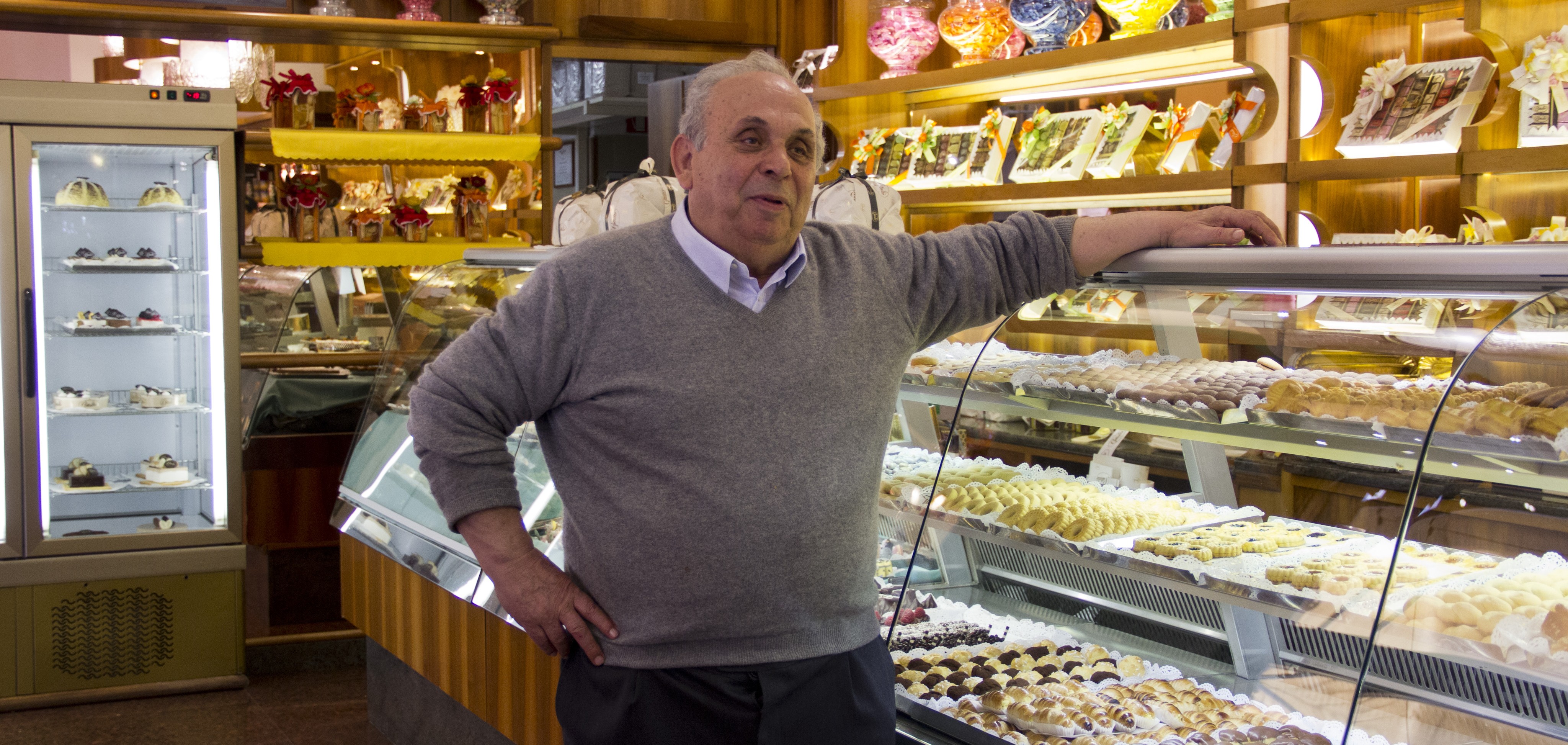
Domenico Gattullo in his bar.
In between, before and after, the long and volcanic season of Milanese entertainment, which passes from Jannacci's lyrics written with Beppe Viola, from the Gatti di Vicolo Miracoli and from the evenings at the Gattullo bar in Porta Lodovica, meeting place of a light-hearted 'post-Scapigliatura' (as it is defined in the book).
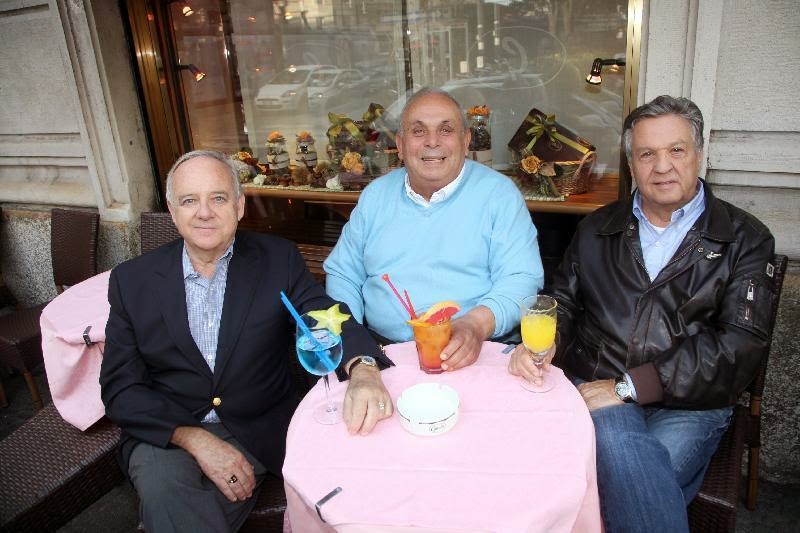
Cochi and Renato with Domenico Gattullo.
Gattullo pastry bar, Milan. October 13, 2014.
Talking about Gattullo doesn't just mean discussing a historic place, a high quality pastry bar and more, an excellent place for all occasions and for every moment of the day, from breakfast to a lunch break snack, from tea time to aperitif time, but inevitably means talking about history. A particular story made up of acquaintances and meeting of characters, we are talking about the 60s and 70s, who later became authentic celebrities.
A few notes taken from the internet: an interview with Renato Pozzetto, who well describes the history of the place:
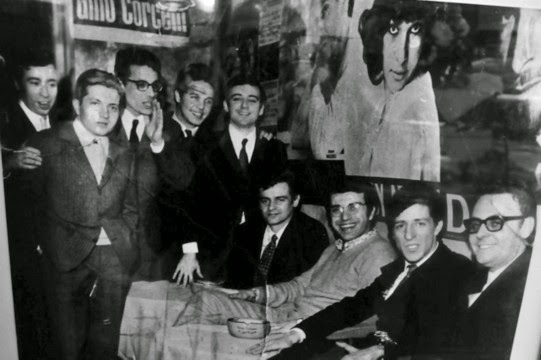
“Do you see us, there in the photo they hung on the wall, with our beautiful, precise ties? Umberto Bindi, Bruno Lauzi, Enzo Jannacci, me, Cochi, Sergio Endrigo, Augusto Martelli, Giorgio Gaber. It was 1965. And this was the place, the usual Gattullo." If one morning in June at half past eight Renato Pozzetto calls you to a pastry shop in Porta Lodovica, you will certainly go there in a hurry. Because it is the opportunity to understand, in the right place and from the most precious witness, how the spirit of surrealism glided, between the post-war period and the boom, on the cobblestones of Milan. In the beginning it was the derby, not yet intended as a temple of cabaret but as a Milan-Inter duel.
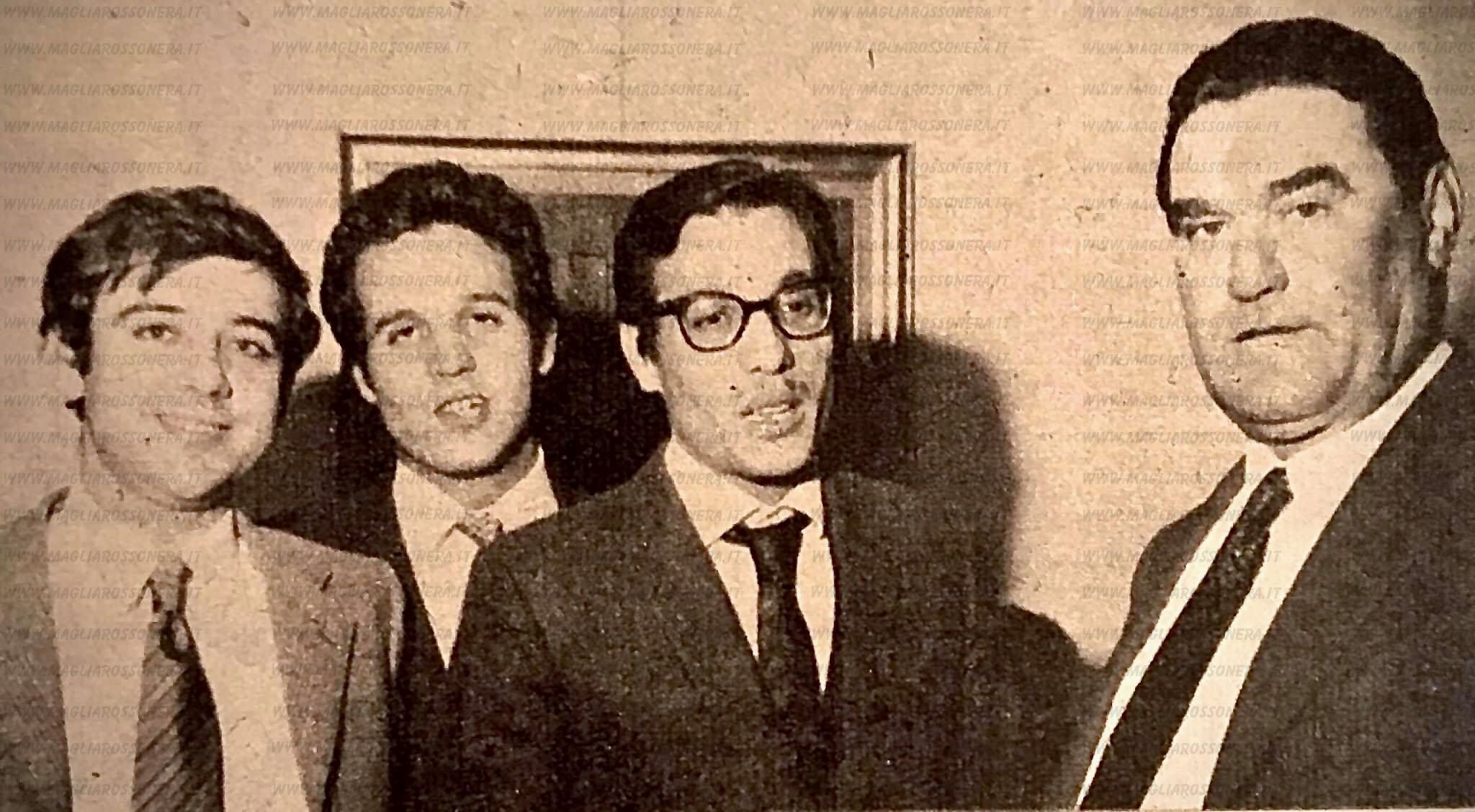
Milan, 12 November 1968. The "Paron" Rocco, master of life, football and genuine jokes, poses together with Jannacci, Cochi and Renato, the brilliant head of the school and two cabaret artists, all with proven Milanist faith. Despite appearances, the meeting does not take place at the Derby, understood as the well-known Milanese nightclub active between the 60s and 70s, of which Enzo was the Artistic Director and the discoverer of the comic duo, but in the headquarters of the Milan Club Ca' Granda, on the occasion of its inauguration. Photo by Lucia Ravenda.
«On those Sundays there we were so eagerly awaiting the match that we made up a string of fake excuses to tell our friends that no, we didn't care, we wouldn't go to the stadium: I have my aunt to go and visit! The little cousin's communion! Flowers to take to the cemetery!»
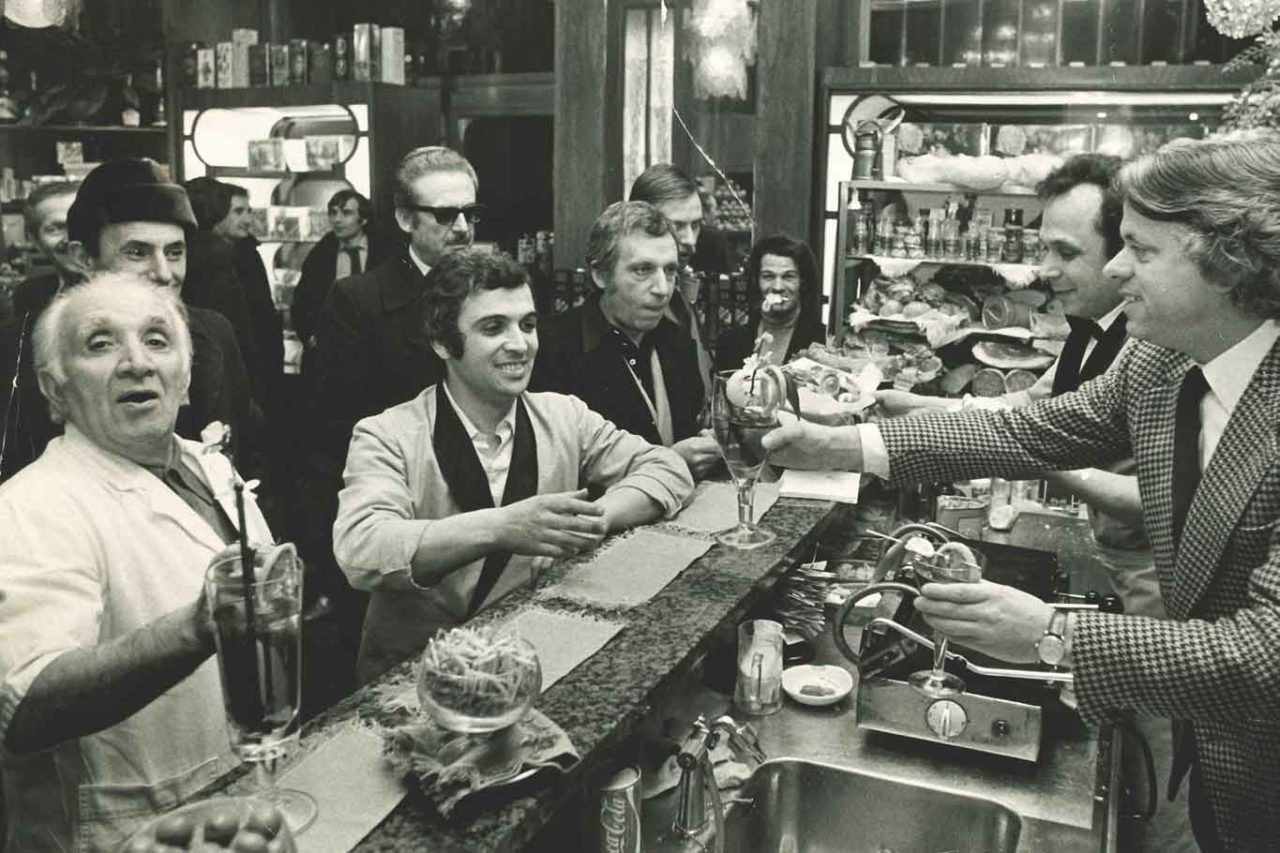
Lino Toffolo at the Gattullo bar.
What years are we talking about and who were you?
“More ‘50s than ‘60s, we were still going to school, Milan was very small and Gattullo was a dump. It was me and Cochi, who knew each other as children, plus the friends of the company: Cobianchi, Zambelli, Ciccarelli. Nobody thought of becoming an artist, it all started with laughter in the osteria. We frequented the Milanese tavern ‘Oca d'oro’, very popular with especially figurative artists. We went there because it was comfortable, we stayed indoors, we chatted with a glass of wine. Then there was the guitar, Cochi, who was better, played it. We strummed songs until a nocturnal art gallery opened next door."
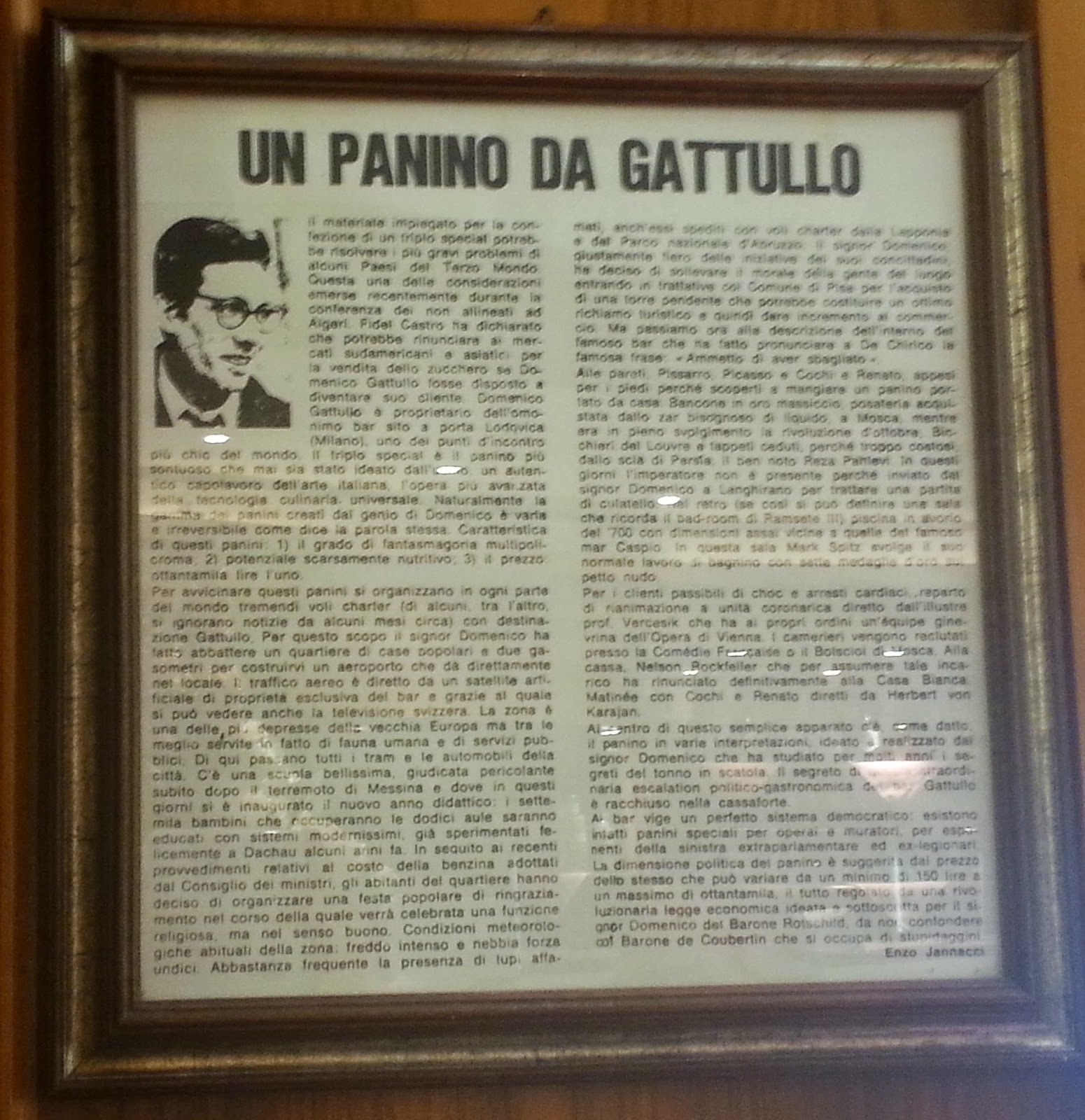
But the historical group? Beppe Viola, Jannacci?
“Nooooo. There is time for them. With the boys we sat on the benches, played ball, drank a white wine. We would take the number 3 tram and go downtown to look at the shop windows. We had nothing. Nothing, except words. And we played with them.”
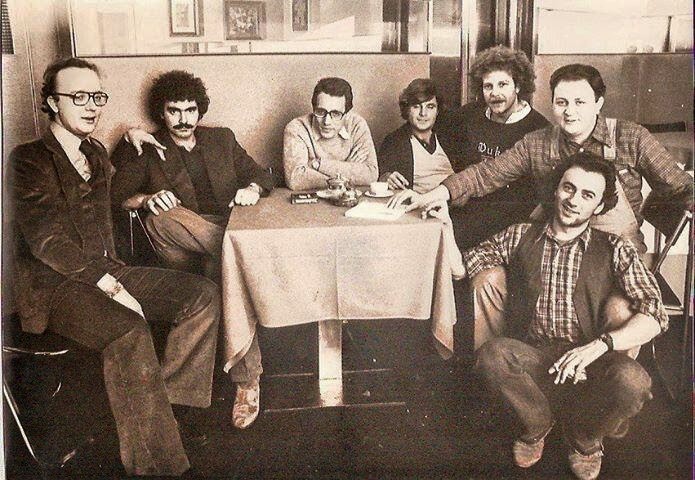
Diego Abatantuono, Enzo Jannacci, Mauro Di Francesco, Giorgio Porcaro, Massimo Boldi and Giorgio Faletti at the Derby Club.
Is that where the catchphrases of cabaret and then of the TV were born?
«More than anything we had a jargon: going to eat was called ‘al pito’, to drink ‘al trinco’, going on holiday ‘andare al Sant'Anselmo della spesa’. Making love, which was a big word in those days, was ‘prendersi il gusto’. And the girls ‘le bastone’, in the sense that they kept us under their thumb. But the most interesting aspect was a certain dark humor. Someone died in the neighborhood and we told each other the news with a gesture: ‘do you know Mario of the newsstand? Ciao-oo...’ And the cancer was the ‘fantolo’: he got a ‘fantolo al melone’ (the head)."
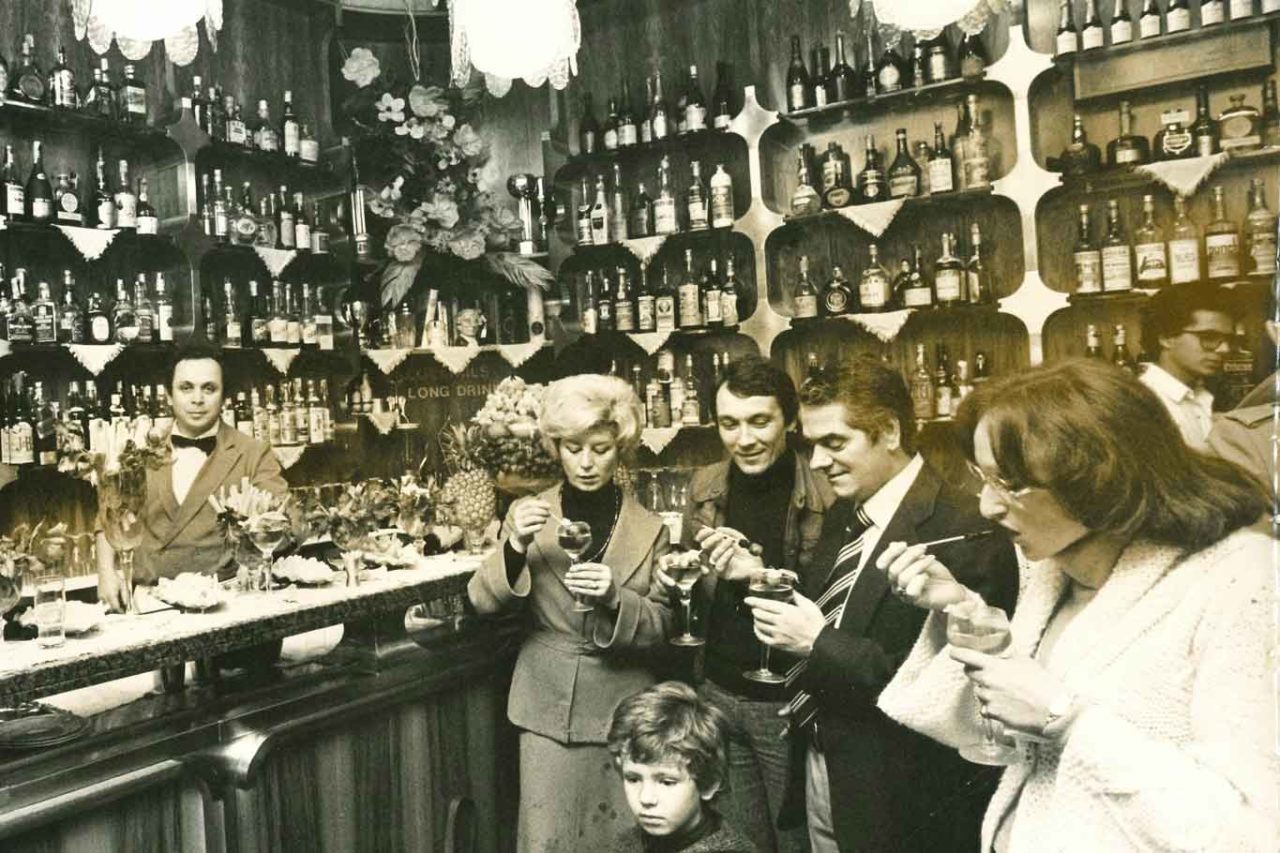
Milan, 1970s, Gattullo bar.
But Cobianchi, Zambelli and Ciccarelli didn't become famous and you and Cochi did. How did it happen that the world of entertainment then arrived at Gattullo?
“We were the ones who brought it there. Milan was very mixed back then, it happened that we students ended up at the nocturnal art gallery 'La Muffola' of Velia and Tinin Mantegazza and met Lucio Fontana, Piero Manzoni who poor guy died young, Luciano Bianciardi and then Dario, Dario Fo: after a while a guitar would come out and we'd start singing.”
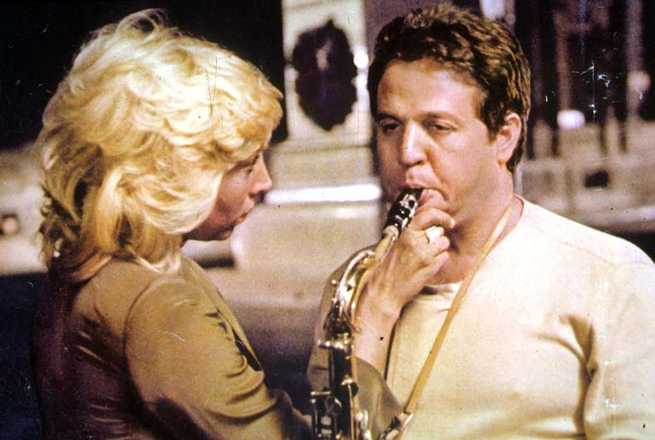
Renato Pozzetto with Mariangela Melato.
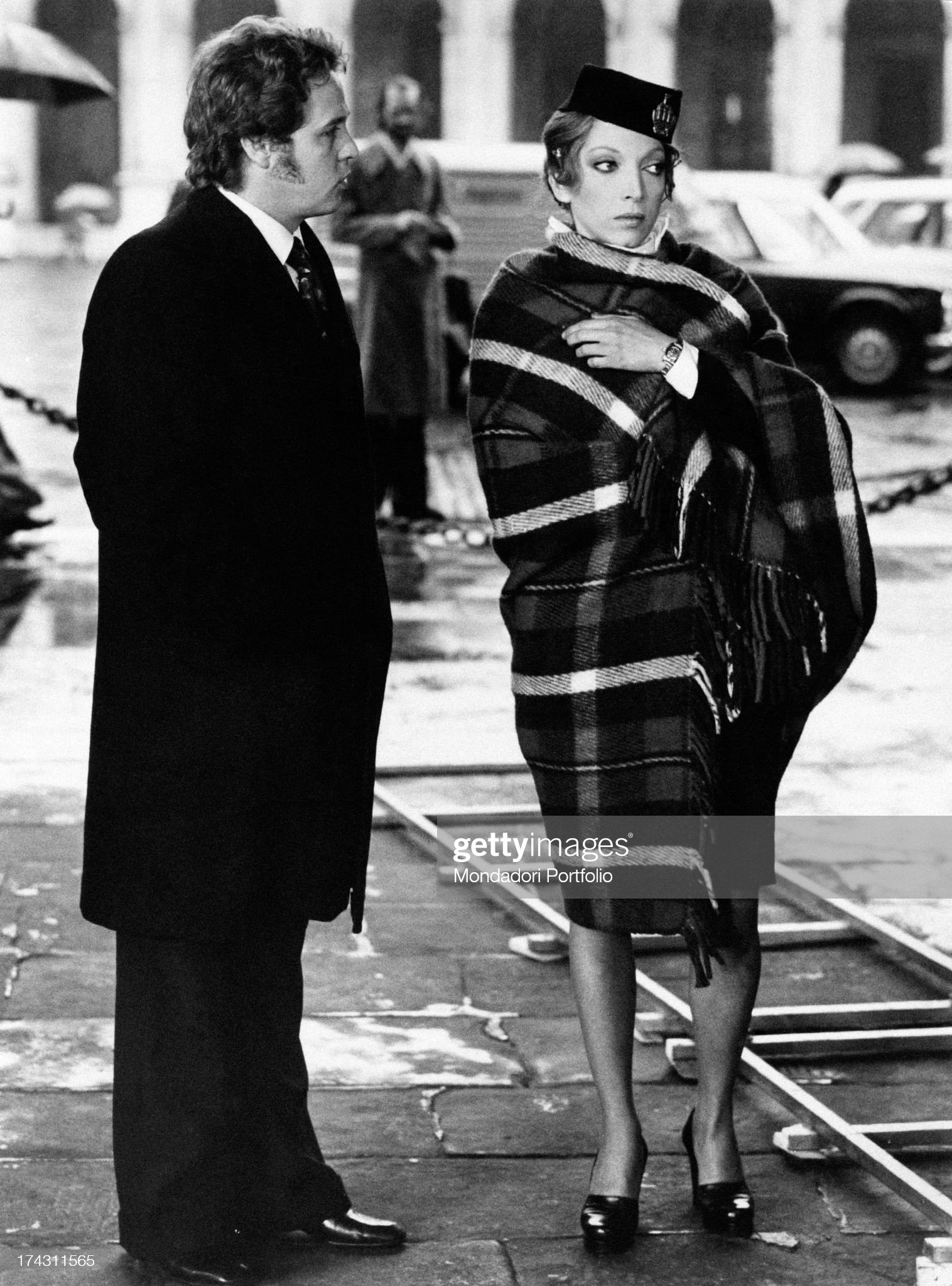
Italian actor and stand-up comedian Renato Pozzetto talking to Italian actress Mariangela Melato wrapped in a blanket on the set of the film Policewoman at Bergamo, Italy, in 1974. Photo by Angelo Deligio / Mondadori via Getty Images.
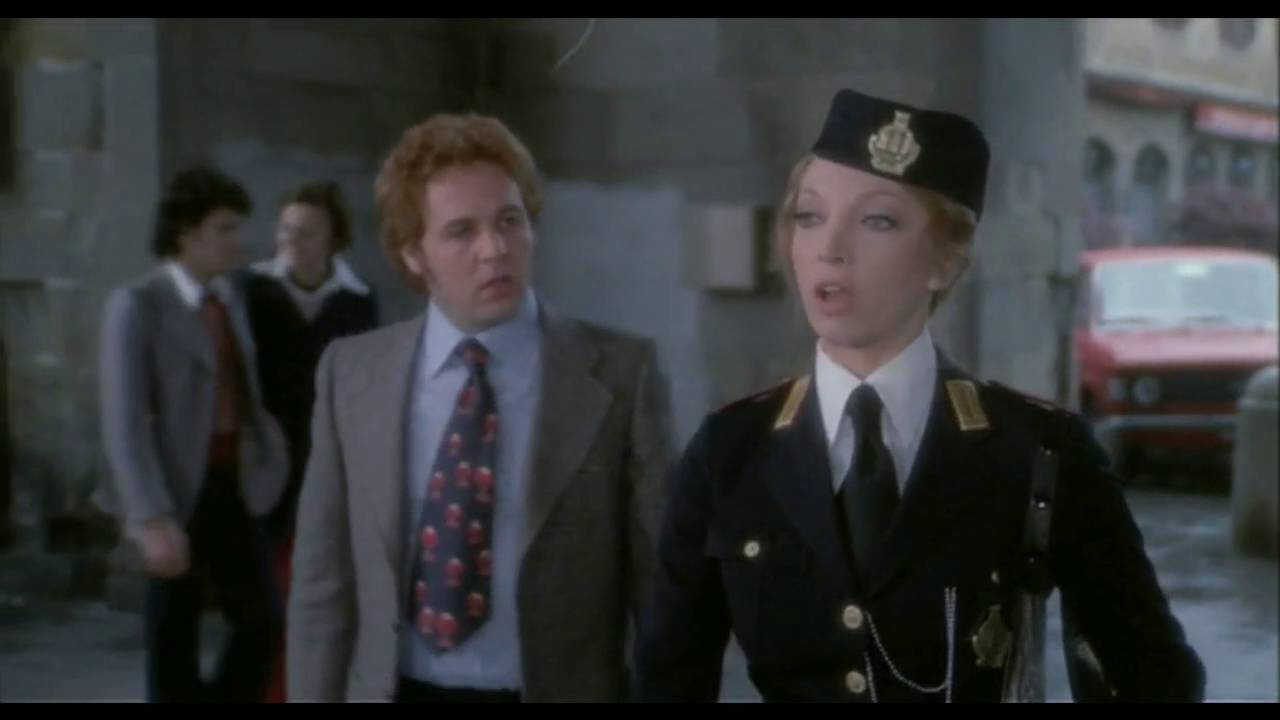
Renato Pozzetto and Mariangela Melato in the 1974 film ‘The Policewoman’.
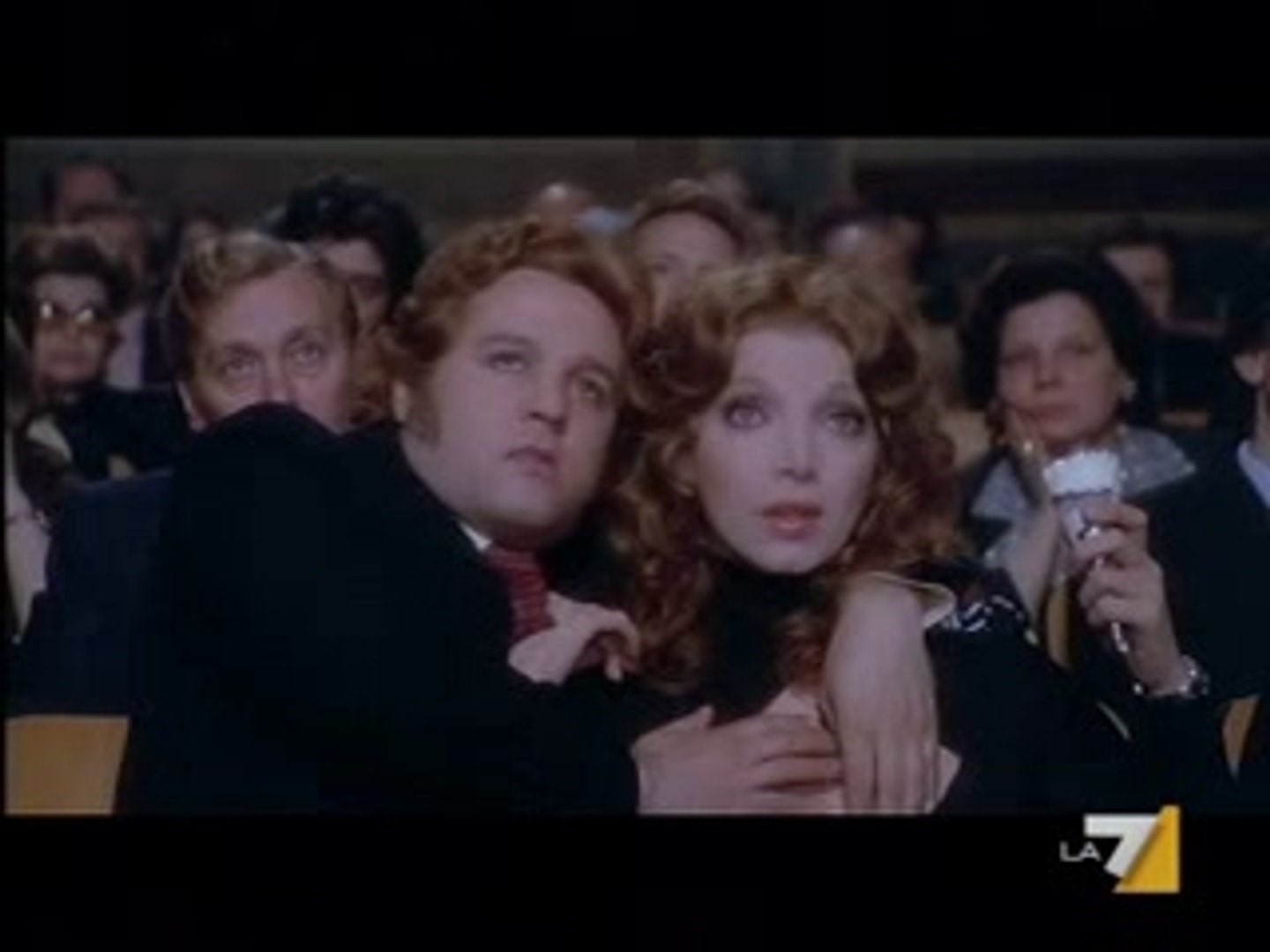
Renato Pozzetto and Mariangela Melato in the 1974 film ‘The Policewoman’.
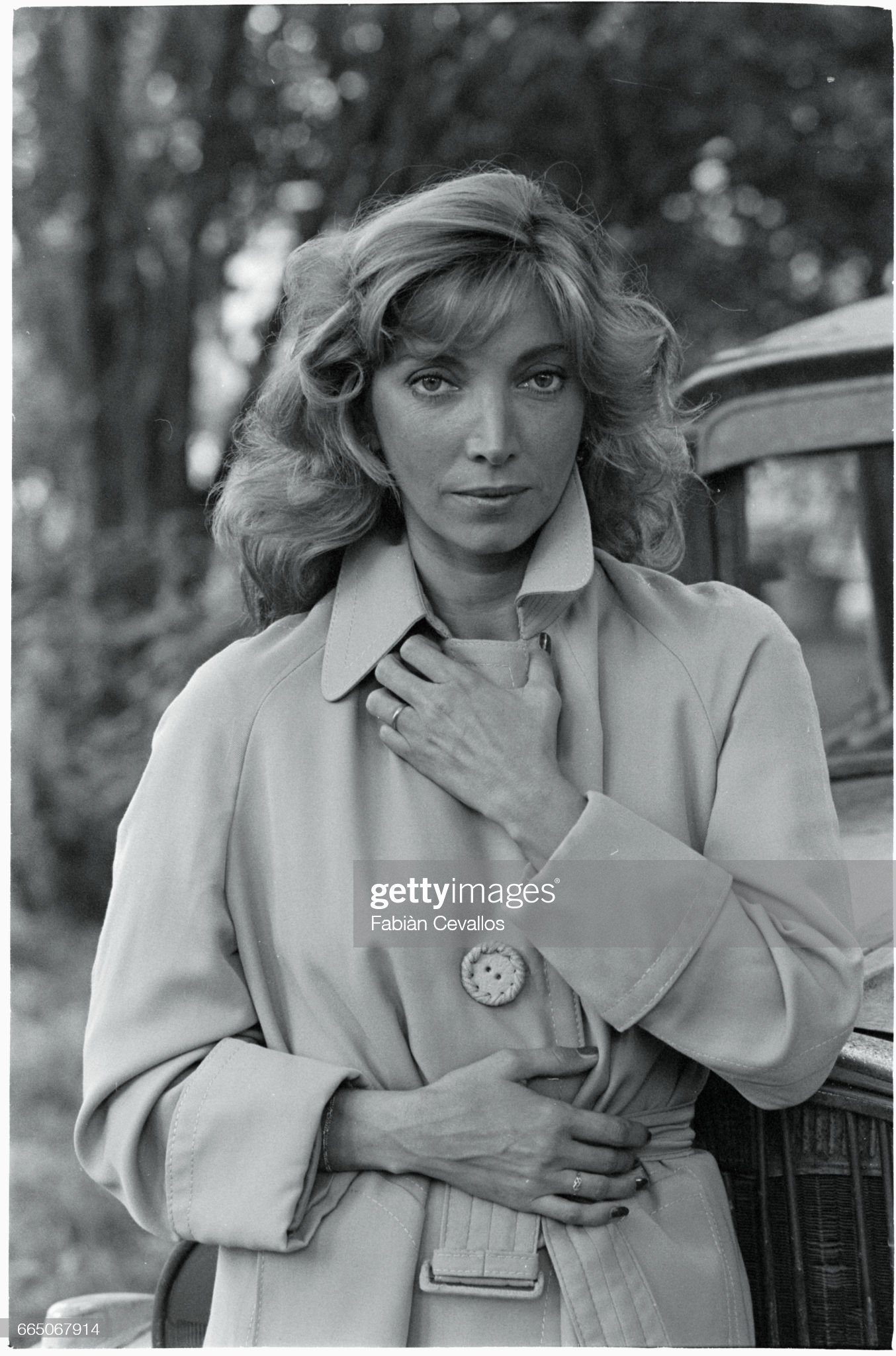
Italian actress Mariangela Melato appears on the set of the 1981 movie ‘Aiutami a Sognare’. Photo by Fabian Cevallos / Sygma / via Getty Images.

Giancarlo Giannini, Italian actor, with Mariangela Melato during a ceremony in Rome on 16 February 1984. Photo by Edoardo Fornaciari / Getty Images.
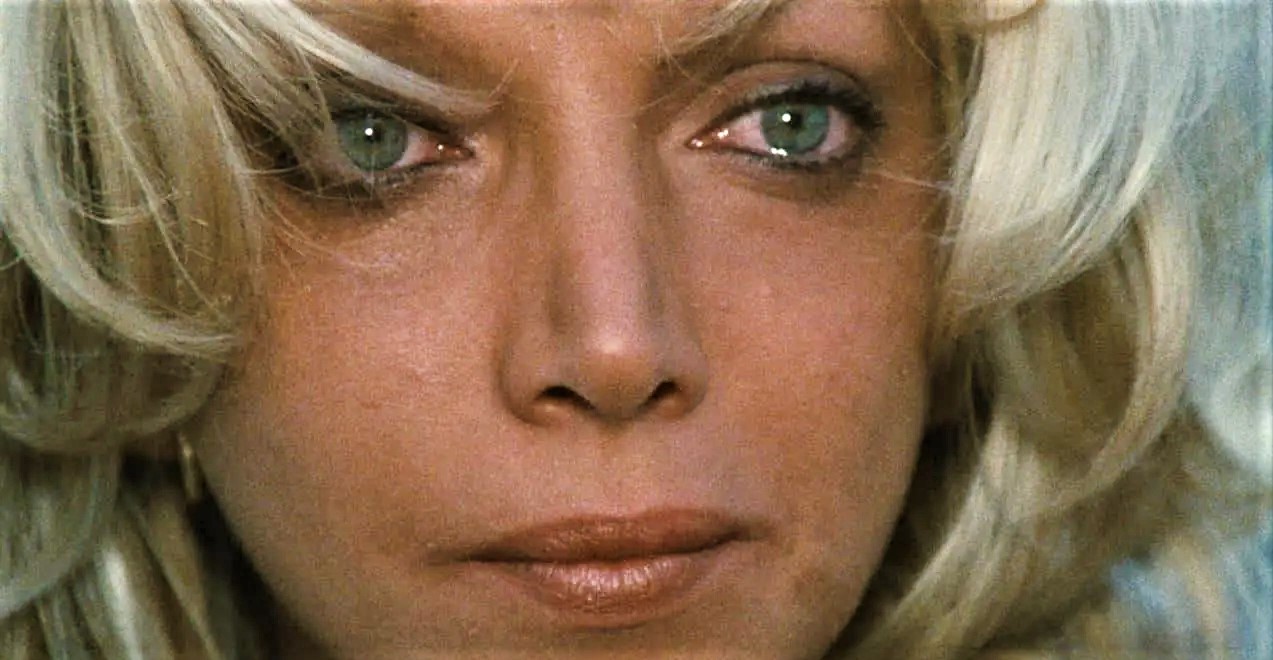
Mariangela Melato.
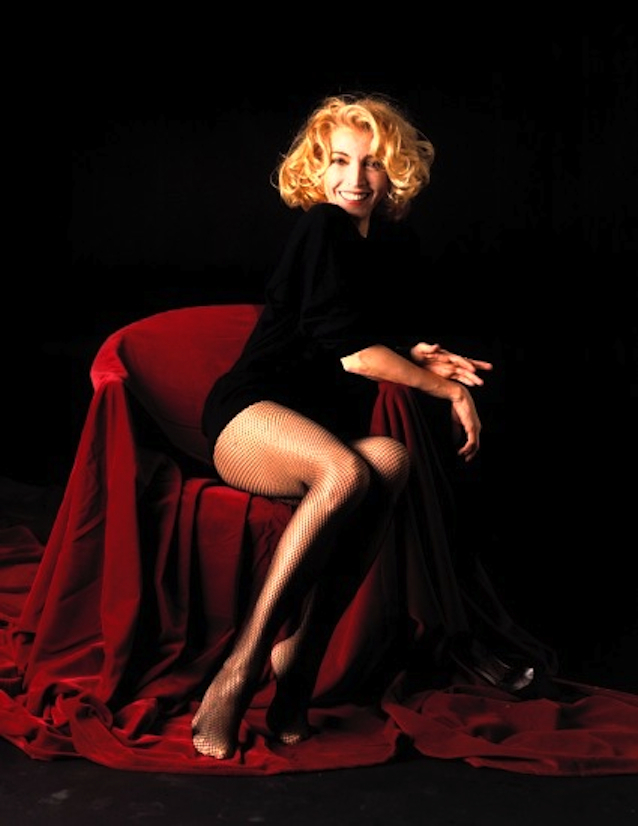
Mariangela Melato.
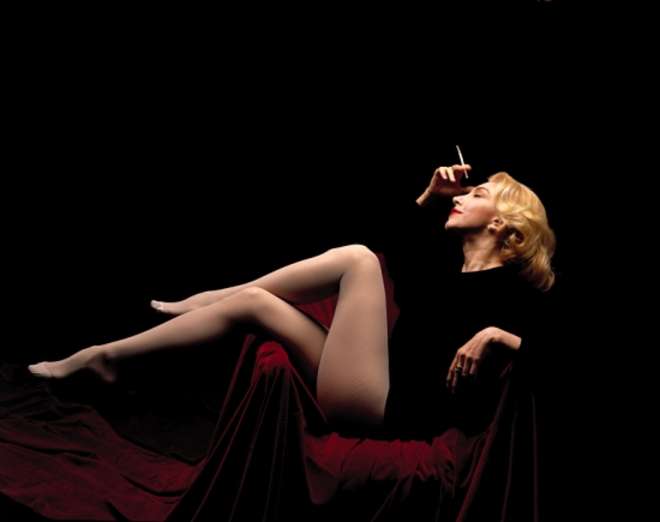
Mariangela Melato.
"We also went to the 'Oca d'oro' in via Lentasio, sometimes to the 'Giamaica' where Mariangela Melato, who lived in Montebello, often stopped by: but I mainly went with Mariangela to dance rock'n'roll in a dance hall in Corso Europa. With Cochi we were passionate about popular, anarchist and protest songs, such as those about the scandal of the Roman Bank: "they dig their hands into the coffers - crack! They find bags full of gold - crack! And what should we do to govern? Steal, steal, steal, always steal!"”
Nothing new under the sun.
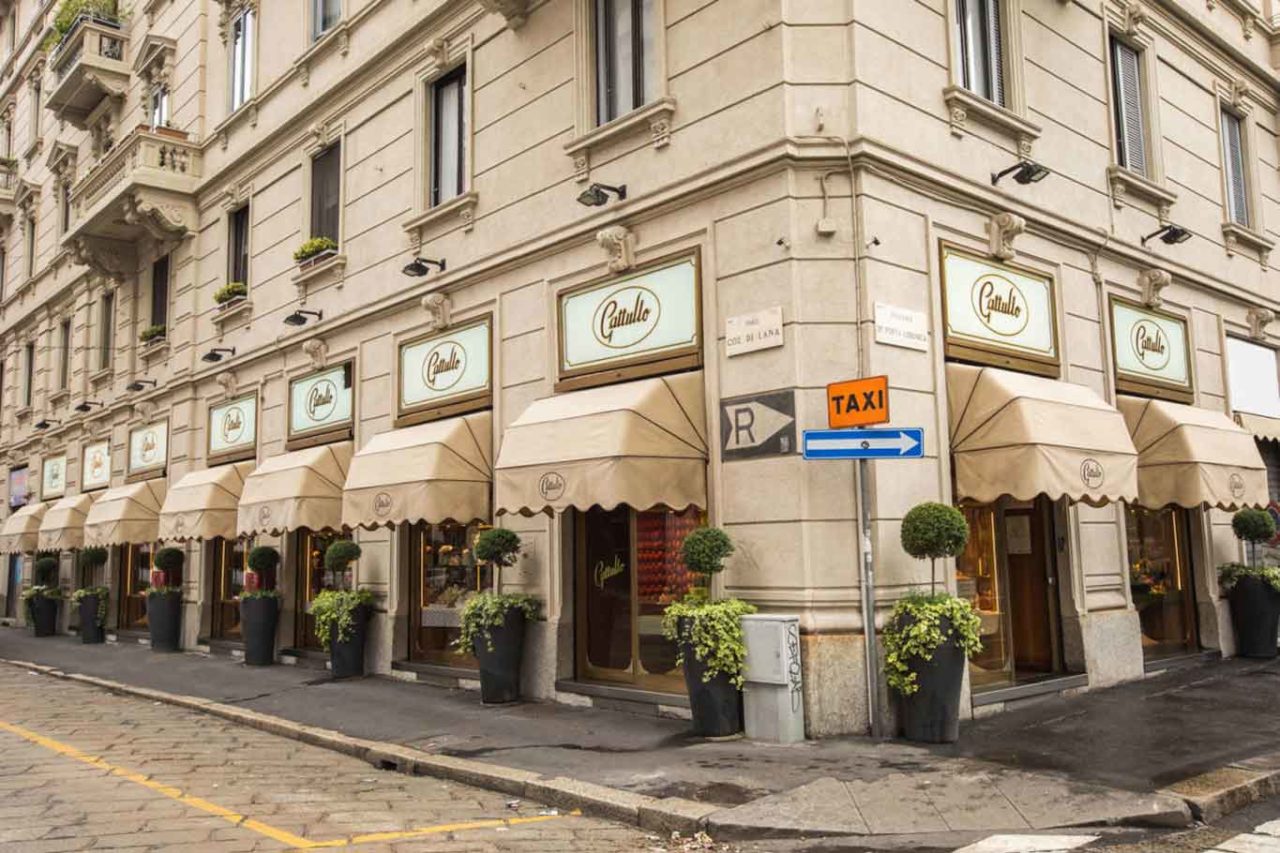
The Gattullo bar.
"Precisely. Gino Negri noticed us and brought us to sing in left-wing circles. But also standing in the billiard rooms, if it happened. Well, those new friends came to visit us at Gattullo and they liked the place. After the closing, we occupied the kitchen, there was a guy called ‘il Diavolo’ (the Devil) who made the food like an eternal father."
And then the passion turned into work.
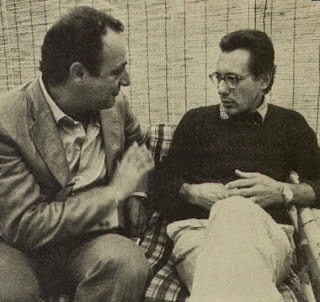
Enzo Jannacci with Beppe Viola.
«Jannacci arrived and imposed the rules: it was he who explained to us that, if we wanted to be serious, we had to commit to the work, be punctual and not fall into vulgarity. He gave us courage and helped us write the first songs, starting with ‘A me mi piace il mare’ (I like the sea). When Caber64 was born in via Santa Sofia it was the crucial turning point: from jokes with friends we moved on to the "Ecco a voi” (Here you go). Then Gruppomotore arrived, with Enzo, Teocoli and Lino Toffolo. And the Derby, with Dario who came to set up the job. And TV and Beppe Viola, who worked at Rai. Reference bar, always Gattullo."
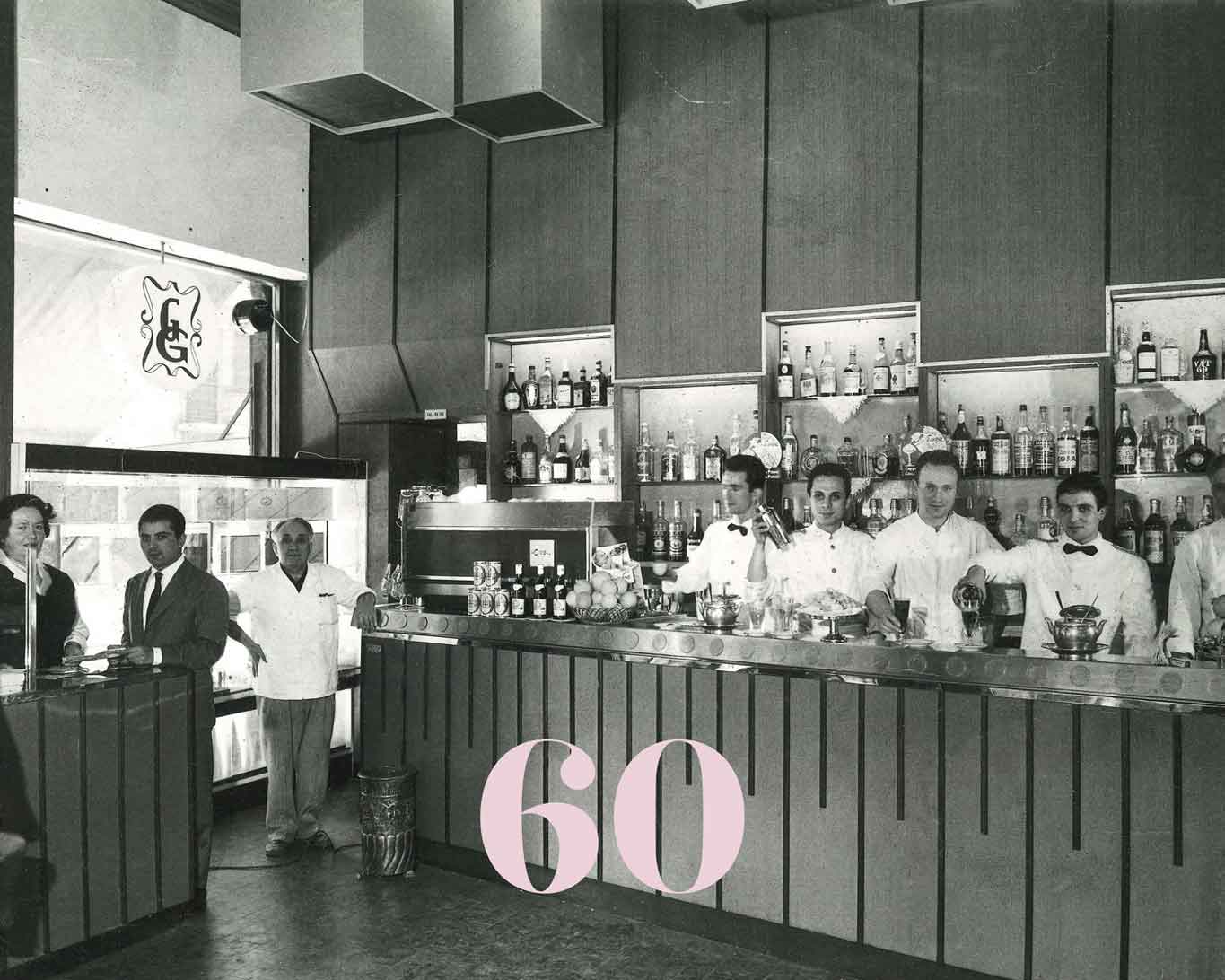
The 60 years of the Gattullo bar.
Can you tell us the story of the ‘ufficio facce’ (faces office)?
«It was a kind of virtual club, non-existent, but organized like the Rotary or the Mickey Mouse clubs. Getting admitted was a feat and, if you succeeded, they gave you the stamp. The president was Cobianchi, obviously, even if we imagined that above him there was a more evanescent, occult figure. A few years later I really wanted to buy a faces office, a shop here in Via Col di Lana, I would have opened a shop and put up a plaque. Then I thought that those years were over, it's no longer time for ufficio facce."
But you're still the one of the bar.
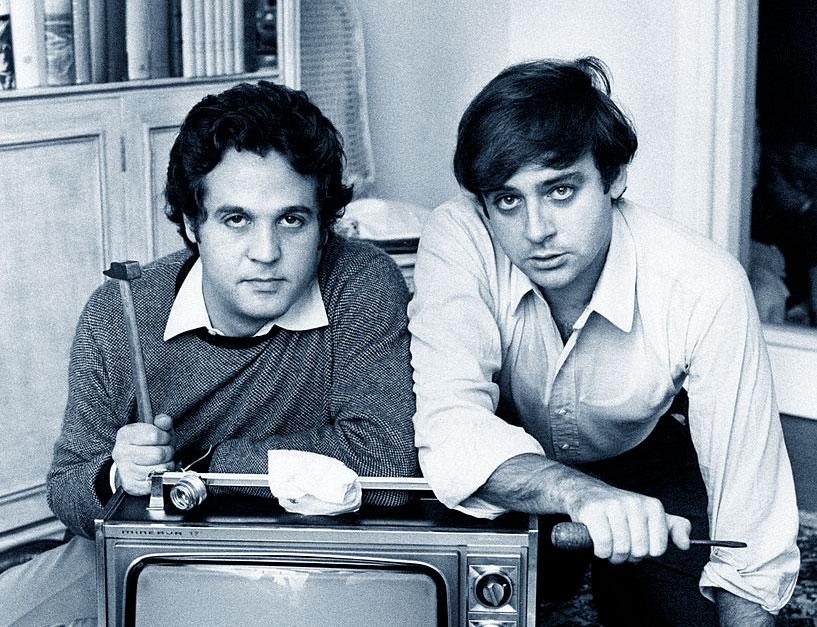
Renato Pozzetto with Cochi Ponzoni.
«And my pride was in having brought that very humor to the theatre, cinema and TV. A little cold, even glacial. Without smiling, without calling for applause. I've always done it. We all did it at Porta Ludovica."
Renato Pozzetto writes to his great friend Enzo Jannacci. By La Voce on 28 March 2023.
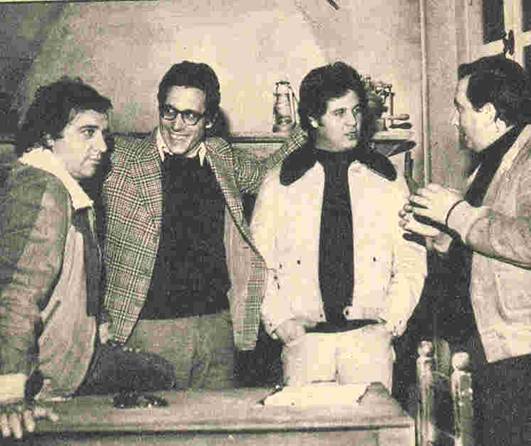
Renato Pozzetto with Enzo Jannacci.
Renato Pozzetto, who will turn 83 in July, writes in the Corriere della Sera to remember Enzo Jannacci, who passed away on 29 March 2013. The two were linked by a deep friendship and Pozzetto had told this some time ago in an interview (again with the newspaper of via Solferino), where he explained that Jannacci had been the biggest supporter of the couple Cochi and Renato and then also became his general practitioner. The memory of the musician is therefore always alive and vivid in the heart and mind of the Milanese actor who, one day after the anniversary of his friend's death, writes: “hi Enzo, how are you? Surely where you are everything is fine. Here on Earth, the usual mess... Those of the Corriere ask me to talk about our friendship, but I'm in a bit of a crisis with my memory, you know? You should help me a little. Down here we get old and health is a problem. We will meet again soon and I will be happy to be with you. And everything will be like it used to be, even better. There is everything there and you can do everything well, just like you did... I miss you so much. I miss hearing you sing, when you made me listen to your news. Or when we confided to each other hopes, desires and those things that everyone thinks but can't say. Do you remember when you took me for a tour at the Idroscalo on your sailboat? It was February, it was freezing cold and we were dressed like Roald Amundsen, the explorer, but at least he had a red tent. When I will get to where you are, if He will allow me (I hope so because it's not like I have done a lot of bullshits), let me find you with the piano and the guitar. I know that there are instruments ‘della Madonna’ (excellent) there. And I would like to sing, you know? Here, with everything that's happening, I lack desire and opportunities. I already know that you would make another beautiful song, one of those that make you cry like a fountain, also because down here, right now, there is no water and a little humidity would be good. These days I will go to the theater, Elio (of Elio e le Storie Tese) will talk about you and sing your songs, he is good and the show will be good. At the Lyric Theatre, dedicated to your friend Gaber, they forgot about you! Don't get angry, these things happen these days. Now I think ‘di averti rotto le balle’ (I've broken your balls) so I say goodbye. Hi Enzo, a big hug and a small kiss. We will see each other soon. Greetings. Renato"
Renato Pozzetto.
“You get to 80 years old and think that life ‘le' bela’ (is beautiful). I ‘ho mandato a cagare’ (got to fuck) more in the entire history of Italian cinema than anyone else. But you know... ‘il vai a cagare pirla’... (the get to fuck idiot…) today is almost no longer used. Whoever manages to not care about the problems always wins in the end. I'm a car enthusiast, I have kids and I have a nice house ‘fuori dalle balle’ (out of here). I miss those beautiful empty streets of Milan where we used to ride our bicycles. And the scene with the tractor in Piazza San Babila..., science fiction if we think about what there is today... But that's okay. Today people live frenetically with the ‘taaac....’ If you think about the speed of everything and everyone.... And you would like to go back to your simplicity. Today there is too little lightness... And my generations, Teocoli, Boldi, Abatantuono, Villaggio... No one will equal them. Because we have made history.... Because a comedian who can truly make people laugh has to ''put up with'' experiences of all kinds... And the beauty of a face that is recognizable is precisely this... If you can look me in the eyes you will feel at home... A house called ''Italian''... Like the beautiful things that were done between 1960 and 1990.... Then everything becomes difficult... And it's a shame not for me, who also has ‘l’umbrela’ (the umbrella)..., but more for you who laugh little and have bad fun.” Renato Pozzetto
Photo gallery
Adriano Celentano
The actress Claudia Mori with her husband Adriano Celentano in Milan, Italy, on 12 October 1965. Adriano Celentano is a singer-songwriter, dancer, television host, actor, director, writer, record producer, editor and Italian showman. Photo by Vittoriano Rastelli / Corbis via Getty Images.
Adriano Celentano with his wife Claudia Mori during the Festival della Canzone in Sanremo, Italy, in January 1966. Photo by Vittoriano Rastelli / Getty Images.
Adriano Celentano jokes with a beautiful woman in Rome in 1967. Photo by Archivio Cicconi / Getty Images.
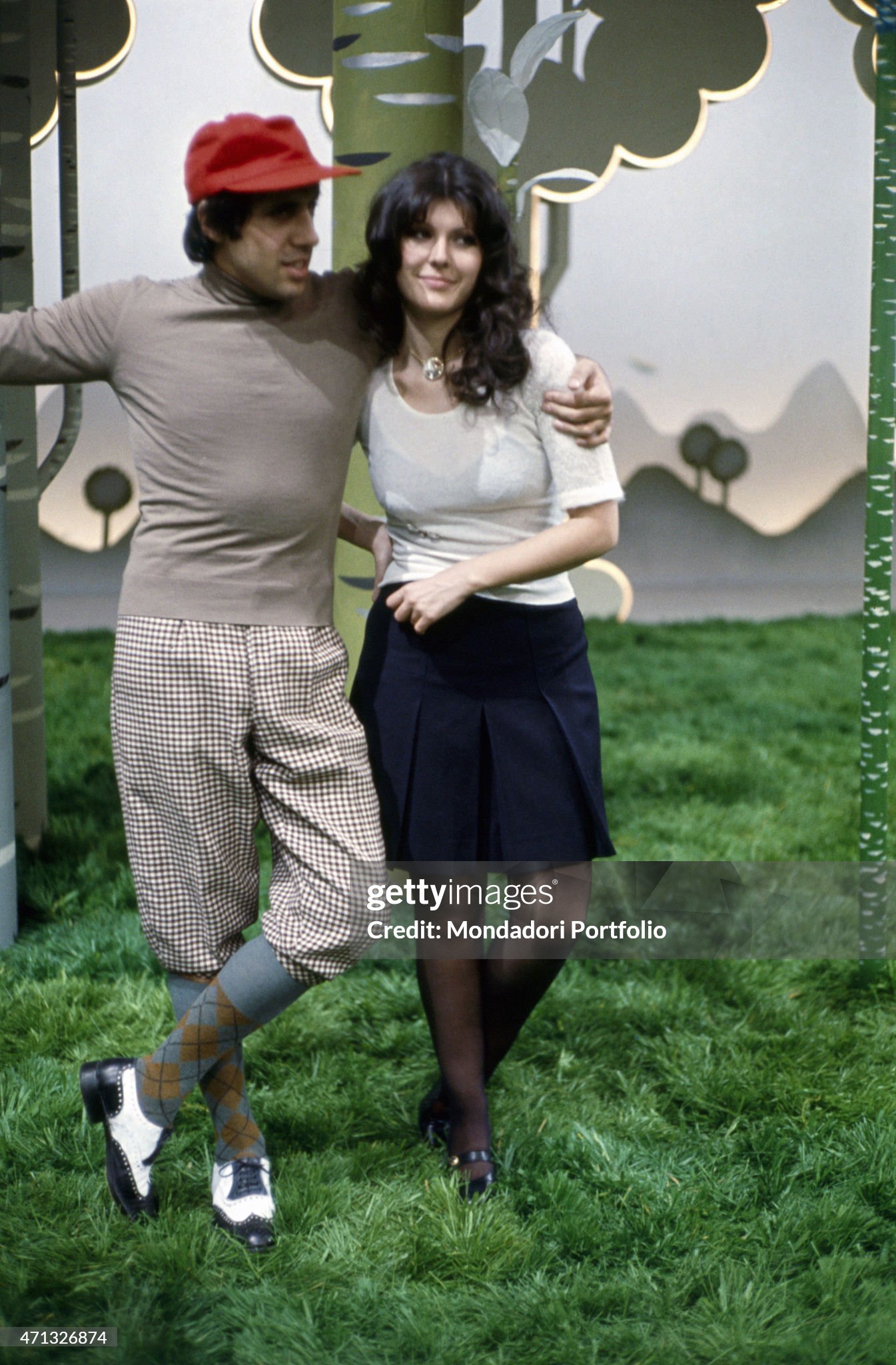
Adriano Celentano hugging his wife Claudia Mori (Claudia Moroni) on the set of a TV show in 1972. Photo by Marcello Salustri / Mondadori via Getty Images.
Adriano Celentano getting off a bicycle and laughing while Italian actress Eleonora Giorgi looking into the camera on the set of the film Velvet hands in Milan in 1979. Photo by Rino Petrosino / Mondadori via Getty Images.
Italian actor, singer and songwriter Adriano Celentano giving some flowers to French-born Italian actress Edwige Fenech in the film Ace in Italy in 1981. Photo by Mondadori via Getty Images.
In a scene from the movie ‘Lui e peggio di me’, directed by Enrico Oldoini, actor and singer Adriano Celentano (wearing a cap) and Renato Pozzetto (wearing a scarf) both ride motorcycles with a woman behind them on 01 December 1984. This movie was a chance for rock singer Celentano to show he could act as well. It is the story of two friends who realize how important their friendship really is when one of them falls in love. Photo by Fabian Cevallos / Sygma via Getty Images.
Drive In
Some dancers posing on a car on the set of the famous TV comic show 'Drive In', broadcasted by Italia 1, in Milan, Italy, in 1984. Photo by Angelo Deligio / Mondadori via Getty Images.
Greek-born Italian showgirl and actress Tini’ Cansino (Photina Lappa) as a sexy Fast Food girl in the famous TV comic show 'Drive In' posing kneeling for a photo shooting in Milan, Italy, in 1984. Photo by Angelo Deligio / Mondadori via Getty Images.
Greek-born Italian showgirl and actress Tini’ Cansino (Photina Lappa) as a sexy Fast Food girl while posing hugging the comedian Gianfranco D'Angelo in Milan, Italy, in 1984, on the set of the famous TV comic show 'Drive In'. Photo by Angelo Deligio / Mondadori via Getty Images.
The skimpy and busty female stars of the popular Italia 1 comedy TV show 'Drive In' Ambra Orfei, Eva Grimaldi (Milva Perinoni), Tinì Cansino (Photina Lappa) and Lory Del Santo (Loredana Del Santo) posing for a photo shoot in Milan in 1985. Photo by Angelo Deligio / Mondadori Portfolio via Getty Images.
Lory Del Santo (Loredana Del Santo) and Piersilvio Berlusconi posing among the Fast Food girls of the famous TV comic show 'Drive In' in Milan, Italy, in 1986. Photo by Angelo Deligio / Mondadori via Getty Images.
The comedian Syusy Blady (Maurizia Giusti) posing among the Fast Food girls during a photo shooting for the famous TV comic show 'Drive In' in Milan, Italy, in 1986. From the left, above: Francesca Colombo, Sofia Frisone, Toti Botta, Ritanna Carpenter and below Luciana Ricca and Marta Marioni. Photo by Angelo Deligio / Mondadori via Getty Images.
The skimpy and sexy Fast Food girls of the famous TV comic show 'Drive In' broadcasted by Italia 1 posing for a photo shooting in Milan, Italy, in 1987: from the left Francesca Colombo (the third one), Toti Botta (the fourth one) and Luciana Ricca (the fifth one). Photo by Angelo Deligio / Mondadori via Getty Images.
Giorgio Gaber
Giorgio Gaber and Ombretta Colli in Milan.
Italian songwriter, singer, actor and guitarist Giorgio Gaber (Giorgio Gaberscik) kissed by his wife, the Italian actress Ombretta Colli (Ombretta Comelli), on their doorstep in Milan in 1970s. Photo by Rino Petrosino / Mondadori via Getty Images.
A close up of Ombretta Colli, the pseudonym of Ombretta Comelli, a very successful and famous Italian singer in Milan, Italy, in 1972. Photo by Mondadori via Getty Images.
A profile of Ombretta Colli looking pensively towards the horizon in Milan, Italy, in 1972; the singer quickly became a success story in the Italian music scene. Photo by Angelo Deligio / Mondadori via Getty Images.
A profile picture of Ombretta Colli looking pensive in Milan, Italy, in 1972; behind her there is a poster with the word Carousel, the record company with which the singer published. Photo by Angelo Deligio / Mondadori via Getty Images.
Giorgio Gaber walking in the streets of Milan with his wife and Italian singer, actress and politician Ombretta Colli in 1980. Photo by Angelo Deligio / Mondadori via Getty Images.
Jerry Cala’
Jerry Cala’ with his colleagues in Sapore di mare in 1983.
Jerry Cala’ in Vacanze di Natale in 1983.
Jerry Cala’ with Sabrina Salerno in Fratelli d’Italia in 1989.
Jerry Cala’ with Alba Parietti in Abbronzatissimi in 1991.
Jerry Cala’ with Mara Venier.
Jerry Cala’ with Mara Venier.
Jerry Cala’ with Sofia Milos in Odissea nell’ospizio in 2017.
Mariangela Melato
Mariangela Melato in 1970s.
Mariangela Melato.
Mariangela Melato.
Mariangela Melato in 1972.
Italian director and scriptwriter Lina Wertmuller, Italian actor, director and scriptwriter Giancarlo Giannini and Italian actress Mariangela Melato discussing on the set of the film Swept away in Italy in 1974. Photo by Reporters Associati & Archivi / Mondadori Portfolio via Getty Images.
Giancarlo Giannini and Mariangela Melato in Swept away in Italy in 1974.
Mariangela Melato with Giancarlo Giannini.
Italian cinema and theater actress Mariangela Melato (1941 – 2013) in Venice, Italy, circa 1985. Photo by Leonardo Cendamo / Getty Images.
Massimo Boldi
Massimo Boldi and the Fast Food Girls of the Drive In.
Massimo Boldi with his partner Loredana De Nardis.
Massimo Boldi with Elisabetta Canalis in La fidanzata di papa’ in 2008.
Massimo Boldi with his partner Enrica Tarolla.
Renato Pozzetto
Renato Pozzetto.
Renato Pozzetto with Paolo Villaggio.
Renato Pozzetto with his wife in Rome. Photo by Umberto Pizzi.
Renato Pozzetto, Polo Villaggio and Cochi Ponzoni. Photo by Umberto Pizzi.
Renato Pozzetto with Marina Ripa di Meana. Photo by Umberto Pizzi.
Renato Pozzetto at the Mille Miglia. Photo by Umberto Pizzi.
Renato Pozzetto at the Mille Miglia. Photo by Umberto Pizzi.
Cochi Ponzoni and Renato Pozzetto doing a step from one of their sketches in a street along the Naviglio in Milan in February 1968. Photo by Mondadori via Getty Images.
Cochi Ponzoni and Renato Pozzetto doing a step from one of their sketches in a street along the Naviglio in Milan in February 1968. Photo by Mondadori via Getty Images.
The comic duo Cochi e Renato dancing in the TV show ‘E' domenica, ma senza impegno’ in Italy in 1969. Photo by Mondadori via Getty Images.
Renato Pozzetto with Sergio Leone, Roberto Benigni, Renzo Arbore and Leopoldo Mastelloni circa 1970. Photo by Umberto Pizzi.
Renato Pozzetto with Nikki Gentile in 1973. Photo by Umberto Pizzi.
The comic duo Cochi and Renato in Italy in 1974. Photo by Mondadori via Getty Images.
Renato Pozzetto with his wife and friends at the Sans Souci restaurant in via Sicilia in Rome on 09 November 1974. Photo by Umberto Pizzi.
Renato Pozzetto with Ursula Andress in 1975. Photo by Umberto Pizzi.
Renato Pozzetto with Dalida Di Lazzaro in ‘Oh, Serafina’ in 1976.
Renato Pozzetto in ‘Io tigro, tu tigri, egli tigra’ in 1978.
Renato Pozzetto at the Jackie O’ in Rome in 1979. Photo by Umberto Pizzi.
Renato Pozzetto with Ornella Muti in Nessuno e’ perfetto in 1981.
Renato Pozzetto with Ornella Muti circa 1982. Photo by Umberto Pizzi.
Renato Pozzetto with Ornella Muti circa 1982. Photo by Umberto Pizzi.
Renato Pozzetto with Mara Venier at the ‘Il Matriciano’ restaurant in Rome in 1982. Photo by Umberto Pizzi.
Renato Pozzetto with his wife at the Jackie O’ in Rome in 1987. Photo by Umberto Pizzi.
Renato Pozzetto with Barbara D’Urso in 1995. Photo by Umberto Pizzi.
Renato Pozzetto with Paolo Villaggio and Renato Salvatori at the Notorius Club in Rome in 1996. Photo by Umberto Pizzi.
Teo Teocoli
Teo Teocoli with Massimo Boldi.
Teo Teocoli with Umberto Smaila.
Teo Teocoli with his wife Elena Fachini, of whom he said: “I remain convinced that Elena has bewitched me. From the moment I met her I stopped being a third-rate Latin lover. I've done with women, courtships, late nights."
Teo Teocoli with wife and daughter.
Marisa Mell, here in 1965, was an Austrian actress who became a cult figure of 1960s Italian B-movies. She is one of the many beautiful women to be included in the large group of those who were lovers of the handsome Teo. “She was in love with me”, he said in an interview.
Marisa Mell in Masquerade in 1965.
Marisa Mell.
Marisa Mell.
Marisa Mell.
Marisa Mell.
Marisa Mell.
Marisa Mell.
Austrian actress Marisa Mell in Paris, France, in May 1966. Photo by Giancarlo Botti / Gamma-Rapho via Getty Images.
Marisa Mell at home in Paris in December 1966. Photo by Giancarlo Botti / Gamma-Rapho via Getty Images.
Marisa Mell in Paris on 04 December 1966. Photo by Reporters Associes / Gamma-Rapho via Getty Images.
The actress Marisa Mell in Rome, Italy, in October 1967. Photo by Vittoriano Rastelli / Corbis via Getty Images.
Marisa Mell covers her face with her hand in a scene from the film 'Danger: Diabolik' in 1968. Photo by Paramount / Getty Images.
Marisa Mell in 1968.
Legendary fashion model Veruschka, another splendid woman with whom Teo Teocoli, a great playboy, had a relationship during the period in which he shared the same apartment in Rome in the Fleming neighborhood with Franco Califano, also unrepentant seducer of beautiful women. Ax extraordinary couple indeed.
Veruschka.
Veruschka.
Countess Vera von Lehndorff, actress and model, in the 1966 film 'Blowup’. Photo by Ullstein Bild via Getty Images.
Veruschka von Lehndorff in Paris in the 70s. Photo by Giancarlo Botti / Gamma-Rapho via Getty Images.
Veruschka von Lehndorff in Paris in the 70s. Photo by Giancarlo Botti / Gamma-Rapho via Getty Images.
Portrait of Italian singer Loredana Bertè, another illustrious girlfriend of Teo Teocoli, in Milan in 1970s. Photo by Angelo Deligio / Mondadori via Getty Images.
The Italian singer Renato Zero (Renato Fiacchini), cast member of the rock musical Hair, posing with the other main characters of the show in Milan, Italy, in January 1971. In the picture, from the bottom, Loredana Bertê, Ann Collins, Ronnie Jones, Teo Teocoli, Carlo Di Mejo, Edda Di Benedetto, Danilo Morroni, Farid Bendali and Edoardo Germani. Photo by Mondadori Portfolio via Getty Images.
Teo Teocoli, Alvaro Vitali and Janet Agren in the 1981 film ‘L’onorevole con l’amante sotto il letto’.
Born in 1949 this Swedish actress had first been a model but when she came to Italy local producers grasped the opportunity to turn her into a film beauty. And they can be understood. Blond, tall, slender, shaped like a goddess she was bound to illuminate every frame of their movies. The trouble is that, those people were mainly producers of Z movies (sleazy sex comedies, Decamerotic, low-grade horror movies and all the kind of exploitation films possible). The year 1972 was an exception as Janet appeared in three interesting films, Mike Hodges' Pulp (1972), Billy Wilder's Avanti! (1972) and mainly as the Death riding a motor-bike in Ettore Scola's La piu bella sera della mia vita (1972). After a twenty-five-year career she finally quit acting in the early 1990s.
Janet Agren.
Janet Agren.
Janet Agren.
Janet Agren.
Teo Teocoli and Italian TV presenter, showgirl and actress Simona Ventura presenting the TV variery show Il boom in Italy in 1996. Photo by Rino Petrosino / Mondadori via Getty Images.
Federica Pellegrini and Teo Teocoli attend the Giorgio Armani Boutique Opening Cocktail Party during Milan Fashion Week Spring/Summer 2009 on 22 September 2008 in Milan, Italy. Photo by Venturelli / WireImage.
Teo Teocoli and his dance partner Natalia Titova at 'Ballando con le stelle' at Auditorium Rai on 02 October 2014 in Rome, Italy. Photo by Elisabetta A. Villa / Getty Images.
Milan
Nanni Svampa, ‘Milano tua’ in 1966. Nanni Svampa was born on 28 February 1938 in Milan, Lombardy, Italy. He was an actor and composer, known for Verdi (1982), Welcome to the south (2010) and Un povero ricco (1983). He died on 26 August 2017 in Varese, Lombardy, Italy.
Old fashion Milan.
Milan ‘l’era insci’ (The Milan of the past), The Pussy Cat night club in via Gonzaga in 1972. Photo by Milàn l'era inscì Urbanfile.
The girls from Milan, beautiful.
1920-1930 in Milan, Italy. Photo by Touring Club Italiano / Marka / Universal Images Group via Getty Images.
Women standing beside their bicycles in a street of Milan around 1945-1950. In post-war Italy, gas was a rare commodity. Photo by Keystone-France / Gamma-Keystone via Getty Images.
The ballet company of La Scala Theatre in Milan rehearsing the choreography of a theatrical show in 1948. Photo by Mario Carrieri / Mondadori via Getty Images.
A chorus girl reads a movie magazine in a dressing room at La Scala opera house in Milan in November 1948. Photo by Slim Aarons / Hulton Archive / Getty Images.
A woman applies her make-up in Milan on 25 October 1949. This photograph is by photographer Sigrid von Schweinitz, aka Sisi. Photo by Archivio Cameraphoto Epoche / Getty Images.
Two dancers backstage at the Ice Follies in Milan on 20 December 1949. Photo by Archivio Cameraphoto Epoche / Getty Images.
An elegantly dressed girl is looking at a window shop in via Monte Napoleone in Milan in the '50s. Photo by Mario De Biasi / Mondadori via Getty Images.
A group of students, some of them on a Lambretta, chatting in front of the Liceo Berchet in Milan in the 1950s. Photo by Mario De Biasi / Mondadori via Getty Images.
People at the Milan Idroscalo in 1950. Photo by Touring Club Italiano / Marka / Universal Images Group via Getty Images.
Members of a newly-formed Bluebell Girls dance troupe from England, in their dressing room during rehearsals at the Nuevo Teatro in Milan in November 1951. Photo by Grace Robertson / Picture Post / Hulton Archive / Getty Images.
Members of a newly-formed Bluebell Girls dance troupe from England are joined by a French dancer (far left) for rehearsals of a puppet dance at the Nuevo Teatro in Milan in November 1951. Photo by Grace Robertson / Picture Post / Hulton Archive / Getty Images.
Members of a newly-formed Bluebell Girls dance troupe from England, during rehearsals at the Nuevo Teatro in Milan in November 1951. Photo by Grace Robertson / Picture Post / Hulton Archive / Getty Images.
Members of a newly-formed Bluebell Girls dance troupe from England, during rehearsals at the Nuevo Teatro in Milan in November 1951. Photo by Grace Robertson / Picture Post / Hulton Archive / Getty Images.
Members of a newly-formed Bluebell Girls dance troupe from England, rehearsing a puppet dance at the Nuevo Teatro in Milan in November 1951. Photo by Grace Robertson / Picture Post / Hulton Archive / Getty Images.
Members of a Bluebell Girls dance troupe after a rehearsal at the Nuevo Teatro in Milan in November 1951. Photo by Grace Robertson / Picture Post / Hulton Archive / Getty Images.
Members of a newly-formed Bluebell Girls dance troupe from England, arrive at a railway station in Milan, where they have their first engagement, November 1951. Photo by Grace Robertson / Picture Post / Hulton Archive / Getty Images.
The Paris team on the starting line at the women's moped race held in Milan on June 09, 1952. This was the first race made for the women of Belgium, Italy, France, Switzerland and Germany. The course ran 260km, from Milan to Come. Photo by Keystone-France / Gamma-Keystone via Getty Images.
The Paris team on the starting line at the women's moped race held in Milan on June 09, 1952.
Backstage of the premiere of the ‘cantata scenica’ Trionfo di Afrodite by Carl Orff, conducted by Herbert von Karajan, at Teatro alla Scala in Milan in 1953. Three dancers wearing costumes during the reharsals. Photo by Mario De Biasi / Mondadori Portfolio / Mondadori via Getty Images.
Young actress and circus performer Moira Orfei walks towards the Galleria Vittorio Emanuele II in Milan in 1954 while a large group of men turn to look at her. Photo by Mario De Biasi / Mondadori via Getty Images.
Two young Italian girls, Cristina Vanini and Paola Del Vicario, looking into the camera and smiling in Milan in 1955. Photo by Mondadori via Getty Images.
Two elegantly dressed ladies are among the audience of the Teatro alla Scala during the season inauguration night. The 'Norma' by Vincenzo Bellini shall be the opera performed on this occasion; it shall be sung by Maria Callas, Mario Del Monaco and Giulietta Simionato. Milan, December 07, 1955. Photo by Mario De Biasi / Mondadori via Getty Images.
A girl in pajamas has breakfast in her bed, on her legs a tray, in Milan in 1956; the photographer portrays her while she is raising a cup up to her lips. Photo by Mario De Biasi for Mondadori Portfolio via Getty Images.
A young Milanese woman listen to music in her house in Milan, Italy, in 1956. Photo by Archivio Mario De Biasi for Mondadori Portfolio via Getty Images.
Silvia De Biasi, Mario De Biasi's daughter, young Italian girl, walking on the grass at Parco Sempione, close to the Arco della Pace, in Milan in 1956. Photo by Mario De Biasi per Mondadori Portfolio via Getty Images.
A young Milanese woman observes the window of a shoe store in Milan in 1956. Photo by Archivio Mario De Biasi for Mondadori Portfolio via Getty Images.
Young holidaymakers from Milan enjoy a sail on the Adriatic sea in 1956. Photo by Slim Aarons / Hulton Archive / Getty Images.
A Trans Europ Express railcar travelling between Como and Milan, Italy, to be tried out. A woman reading in a carriage in 1957. Photo by Mondadori via Getty Images.
A girl with a vespa at the park in Milan, Italy, in 1958. Photo by Touring Club Italiano / Marka / Universal Images Group via Getty Images.
A girl showing a ring displayed in a jeweller's shop window to her partner in Milan in 1959. Photo by Angelo Cozzi / Mondadori via Getty Images.
A young Italian woman trying on a hat in Milan on 01 March 1959. Photo by Mario De Biasi for Mondadori Portfolio via Getty Images.
An Italian boy and two Italian girls standing in a corridor of 'Santa Tecla' nightclub in Milan on 11 December 1959. The walls are plastered over with records' covers. Photo by Mario De Biasi / Mondadori via Getty Images.
A woman, feeling dizzy, sitting on a bench in the Ravizza public park in Milan in April 1960. Photo by Sergio Del Grande / Mondadori via Getty Images.
View of a street crowded with passersby waiting for the tram to arrive and filled with cars in Milan, Italy, in 1960; in the middle, a traffic sign gives information about the directions to follow to reach Castello, Sempione and the motorway. Photo by Sergio Del Grande / Mondadori via Getty Images.
A Fiat 500 in 1960. Photo by Touring Club Italiano / Marka / Universal Images Group via Getty Images.
Women having a stroll catch a glimpse of the dummies exposed in a clothing store window display in Milan, Italy, in October 1960. Photo by Sergio Del Grande / Mondadori via Getty Images.
By the motor-boating sector of the 38th edition of Milan Trade Fair, a crowd of visitors is watching a big yacht moored next to motor-boats and sailing boats in 1960. Photo by Mondadori via Getty Images.
A young woman getting on the tram in Milan in 1960s. Photo by Mondadori via Getty Images.
Stripteaser ending her performance in a nightclub in Milan in 1960s. Photo by Mondadori via Getty Images.
French stripteaser and actress Sidonie Paquin performing a striptease in a nightclub in Milan in 1960s. Photo by Mario De Biasi / Mondadori via Getty Images.
French stripteaser and actress Sidonie Paquin performing a striptease in a nightclub in Milan in 1960s. Photo by Mario De Biasi / Mondadori via Getty Images.
A young woman looking thoughtful by the tram rails in Milan in April 1961. Photo by Angelo Cozzi / Mondadori via Getty Images.
A young woman waiting sitting on a bench at Milano Centrale railway station in 1961. Photo by Walter Mori / Mondadori via Getty Images.
A young woman looking thoughtful on the platform at Milan Central Station in April 1961. Photo by Angelo Cozzi / Mondadori via Getty Images.
A young woman looking thoughtful on the platform at Milan Central Station in April 1961. Photo by Angelo Cozzi / Mondadori via Getty Images.
A young woman looking thoughtful beside a train at Milan Central Station in April 1961. Photo by Angelo Cozzi / Mondadori via Getty Images.
A girl pushing the lift button at publishing house Mondadori headquarters in Milan in October 1961. Photo by Angelo Cozzi / Mondadori via Getty Images.
In the occasion of an exposition of radios, television and electrical appliances, a smiling hostess shows Cucciolo, a seven transistors radio that adopts the functions of an alarm clock and a timer connecting them to a radio station alterable according to the client's favourite music; assembled by the Allocchio Bellini and sold at 21.000 liras, it also can be set in the dashboards. Milan, Italy, October 1961. Photo by Mario Paltrinieri / Mondadori via Getty Images.
The public attending the TV quiz Campanile sera presented by Italian presenter Mike Bongiorno in Milan on 16 November 1961. Photo by Mario Paltrinieri / Mondadori via Getty Images.
Italian actress Franca Rame lying on a sofa in Milan in 1962. Photo by Mario De Biasi / Mondadori via Getty Images.
A young woman trying on a hat at La Rinascente, crowded during Christmas shopping time, in Milan on 01 December 1962. Photo by Walter Mori / Sergio del Grande / Mondadori via Getty Images.
A tram in Milan in 1963. Photo by Touring Club Italiano / Marka / Universal Images Group via Getty Images.
Interested visitors at the Grazia stand at the Fiera Milano where is shown the innovative folding bike designed by Rinaldo Donzelli in Milan, Italy, in April 1963; the vehicle will be produced next year by the Carnielli company; the Grazia stand, titled Romantic routes (Itinerari romantici), promotes a new and freer concept of the bycicle. Photo by Mondadori via Getty Images.
A Levante Graziella 300 is shown on the rotating platform into a stand within the Fair of Milan in April 1963; this caravan recently put on the market got its name by the weekly magazine Grazia; it can be towed by a small car has an openable roof. Photo by Mondadori via Getty Images.
A Levante Graziella 300, a small but effective caravan named after the newspaper Grazia, is shown on the rotating platform into a stand within the Fair of Milan in April 1963; with the economic boom several families are buying cars, start going on vacation and the Graziella could be towed by a small car too. Photo by Mondadori via Getty Images.
Italian salesgirl Cristiana Orsi showing a pair of glasses in a stand at the Trade Fair in Milan in 1964. Photo by Giorgio Lotti / Mondadori via Getty Images.
A woman talking to a man seated in a car on via Verdi in Milan in 1965. Photo by Mondadori via Getty Images.
A proud girl showing off her blonde dyed hair in via Monte Napoleone in Milan in 1965. Photo by Angelo Cozzi / Mondadori via Getty Images.
Some young Italian fans attending the concert of the rock band The Beatles at the Vigorelli Velodrome in Milan on 24 June 1965. Photo by Giorgio Lotti / Mondadori via Getty Images.
Some girls at the Velodrome Vigorelli at the concert of the British band The Beatles, in their first leg of the summer tour in Italy in Milan on 24 June 1965. Photo by Giorgio Lotti / Mondadori via Getty Images.
A female spectator with a picture of Paul McCartney at the Beatles concert held at the Velodromo Vigorelli in Milan on 24 June 1965. Photo by Sergio Del Grande / Giorgio Lotti / Mondadori via Getty Images.
A thoughtful girl with a foulard in her hair and sunglasses drives her city runabout, leaning her arm out of the open window car in Milan on 20 April 1966. Photo by Mondadori via Getty Images.
A woman activates the pedals of a car, while she practices driving in order to get her driving license in Milan on 20 April 1966. Photo by Mondadori via Getty Images.
Mary Quant (seated in the background) is presenting a lady's suit from her collection Viva Viva during Milan fashion show in 1967. This suit is composed of a white jacket and baggy pants. The model is also wearing a large boards hat and bicolored shoes with a light heel. Photo by Keystone-France / Gamma-Keystone via Getty Images.
Young woman in a mini-skirt leaning towards her child in Milan, Italy, on 03 October 1968. Photo by Keystone-France / Gamma-Rapho via Getty Images.
On the occasion of the opening night at La Scala in Milan on 07 December 1968, in via Manzoni the Police is trying to contain the demonstrators taken to the street. Photo by Mario De Biasi / Mondadori via Getty Images.
Some spectators waiting for the start of the opening night in the foyer of La Scala in Milan on 07 December 1968, while outside violent protests are occurring. Photo by Mario De Biasi / Mondadori via Getty Images.
Portrait of the ballet dancer Carla Fracci, sat down on the sofa of her mansard while she is sewing by hand, applying some silk ribbons on her dancing shoes. Milan, February 1969. Photo by Mario De Biasi / Mondadori via Getty Images.
Two girls on the street are carrying books in their arms in Milan in 1969. Photo by Giuseppe Pino / Mondadori via Getty Images.
Egyptian-born French singer and musician Claude Francois dancing in a famous club in Milan in 1969. Photo by Mondadori Portfolio by Getty Images.
Italian singers and actresses Rosanna Fratello and Ornella Vanoni chatting in a Milanese café in January 1970. Photo by Mondadori via Getty Images.
Two hostesses wearing striped pulls in front of the pavilion of the ENI, in the occasion of the Trade Fair of Milan in April 1970. Photo by Giuseppe Pino / Mondadori via Getty Images.
Two girls seen from the back in Corso Vittorio Emanuele in Milan in 1970: one of the two is wearing a maxi-skirt, the other is wearing a mini-skirt. Photo by Giuseppe Pino /Mondadori via Getty Images.
Italian-American TV host Mike Bongiorno (Michael Nicholas Salvatore Bongiorno) with Italian-Argentinian showgirl Sabina Ciuffini talking to the competitor Franco Moretti during a break of the TV quiz show 'Rischiatutto' in Milan, Italy, in 1970. Photo by Mondadori via Getty Images.
Mike Bongiorno beside Sabina Ciuffini in the TV quiz show 'Rischiatutto' in Milan in 1970. On the monitor, the competitor Angelo Malcontenti. Photo by Mondadori via Getty Images.
Sabina Ciuffini beside a competitor in the TV quiz show 'Rischiatutto' in Milan in 1970. Photo by Mondadori via Getty Images.
Some women choose fruits and vegetables from a stall in an open market place in Milan, Italy, on 04 December 1970. Photo by Mondadori via Getty Images.
A girl riding a Piaggio Ciao moped in Milan in 1970s. Photo by Adriano Alecchi / Mondadori via Getty Images.
A girl standing beside her bicycle holding an open book outside the University of Milan in 1970s. Photo by Pino Grossetti / Mondadori via Getty Images.
A young woman inflating the rear wheel of her bicycle in Milan in 1970s. Photo by Pino Grossetti / Mondadori via Getty Images.
Italian singer Patty Pravo (Nicoletta Strambelli) wearing a fur coat in 1970s. Photo by Mondadori via Getty Images.
Two girls walking in a street of Milan in May 1971. Photo by Mondadori via Getty Images.
An Italian girl walking down the street in a miniskirt in Milan in 1971. Photo by Wolf Soldati / Mondadori via Getty Images.
Milena Varisco, who was taken and carried on a stretcher toward the Policlinico because of a series of misunderstandings, pointing at the place in piazza della Repubblica where her story began. Milan, 1971. Photo by Mondadori via Getty Images.
Passers-by crossing via della Spiga in Milan in 1971. Photo by Gualtiero Raffagli / Mondadori via Getty Images.
Milan. San Siro. Supporters in 1971. Photo by Touring Club Italiano / Marka / Universal Images Group via Getty Images.
Music journalist Gigi Vesigna and the famous Italian singer Patty Pravo are attending the finishing of the latter's album, Sì... incoerenza, in the Phonogram recording studio in Milan in March 1972. Patty Pravo, recently married to Franco Baldieri, is at her third LP with the Philips's record label. Photo by Egizio Fabbrici / Mondadori via Getty Images.
A couple sitting in a pastry shop in Milan in 1972. The woman wears a dress of Italian fashion house Krizia, the man wears a suit of Italian fashion house Cadette. Photo by Mondadori via Getty Images.
A hippie girl walking amused on the bonnet of a car in the district of Brera in Milan in 1972. Photo by Mondadori via Getty Images.
Two girls in jeans crossing the street in Milan in 1973. Photo by Mondadori via Getty Images.
Salesgirl in a department store in Milan in 1973. Photo by Universal Archive / Universal Images Group via Getty Images.
A woman refueling her car at a self-service gas station in Milan in 1973. Photo by Mondadori via Getty Images.
The Italian actress and singer Daniela Goggi (on the left) is posing next to her older sister, the singer, actress and show girl Loretta, in Milan in 1973; two years ago they played in the TV drama ‘E le stelle stanno a guardare’, written and directed by Anton Giulio Majano, Italian adaptation of the novel by Archibald Joseph Cronin ‘The stars look down’. Photo by Mondadori via Getty Images.
'La casa del formaggio', a well-known shop in Milan, in 1973. Photo by Gualtiero Raffagli / Mondadori via Getty Images.
Two girls skating along via Dante during the first Italian walking Sunday due to the oil crisis in Milan on 02 December 1973. Photo by Giorgio Lotti / Mondadori via Getty Images.
People buying from antiques barrows in 1974; interesting local characters. In the background the Brera bar bookshop in one of the principal streets of Brera, the Latin Quarter of Milan, with its luxury restaurants and sophisticated bars and discotheques which have replaced the picturesque 'low-life' cafes of the artists of the bohemian and hippy period. Photo by Walter Mori / Mondadori via Getty Images.
Young people in one of the principal streets of Brera, Milan, in 1974. Photo by Walter Mori / Mondadori via Getty Images.
First floor of the Solferino drug store in one of the principal streets of Brera, Milan, in 1974. Photo by Walter Mori / Mondadori via Getty Images.
Italian showgirl Sabina Ciuffini sitting on a chair placed on the pavement in Milan in 1975. Photo by Angelo Deligio / Mondadori via Getty Images.
Italian showgirl Sabina Ciuffini choosing some flowers in Milan in 1975. Photo by Angelo Deligio / Mondadori via Getty Images.
Italian showgirl Sabina Ciuffini trying to put a chair in the boot of her car in Milan in 1975. Photo by Angelo Deligio / Mondadori via Getty Images.
Italian TV presenter Maria Giovanna Elmi smiling with the members of Italian band Matia Bazar, winners of 28th Sanremo Music Festival with the song ‘E dirsi ciao’, in Sanremo, Italy, in January 1978. The band is composed of guitarist Carlo Marrale, keyboard player Piero Cassano, bassist Aldo Stellita, drummer Giancarlo Golzi and singer Antonella Ruggiero. Photo by Egizio Fabbrici / Mondadori via Getty Images.
Girls in front of the window of a shop displaying goods on sale in Milan in 1979. Photo by Adriano Alecchi / Mondadori via Getty Images.
Women watching the window of a shop displaying goods on clearance sale in Milan in 1979. Photo by Adriano Alecchi / Mondadori via Getty Images.
A girl is dancing on the dance floor at Studio 54 in Milan in 1979. Her dress, particularly sexy, uncovers her left breast. Photo by Giuseppe Pino / Mondadori via Getty Images.
In a bakery the clerk puts some bread in a small bag while the customer, standing in front of her, waits. Milan, Italy, 1980. Photo by Pino Grossetti Mondadori via Getty Images.
Videos
Diego Abatantuono
Guido Nicheli
Renato Pozzetto
Teo Teocoli
Derby Club
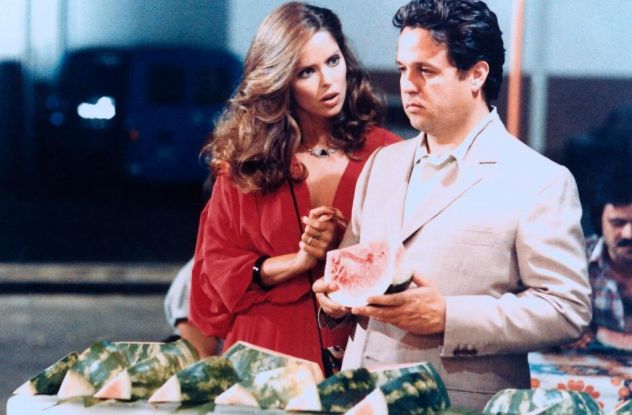
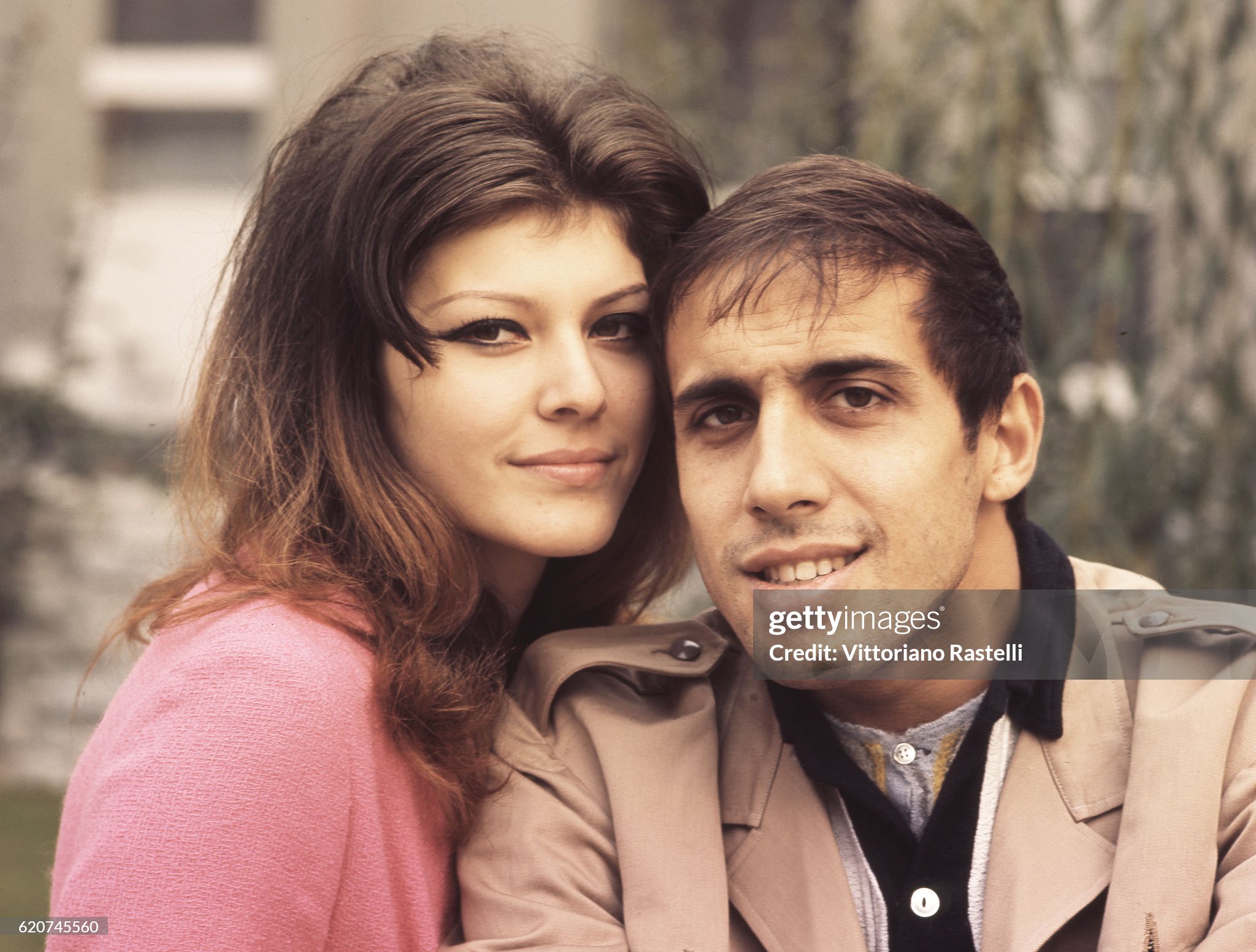
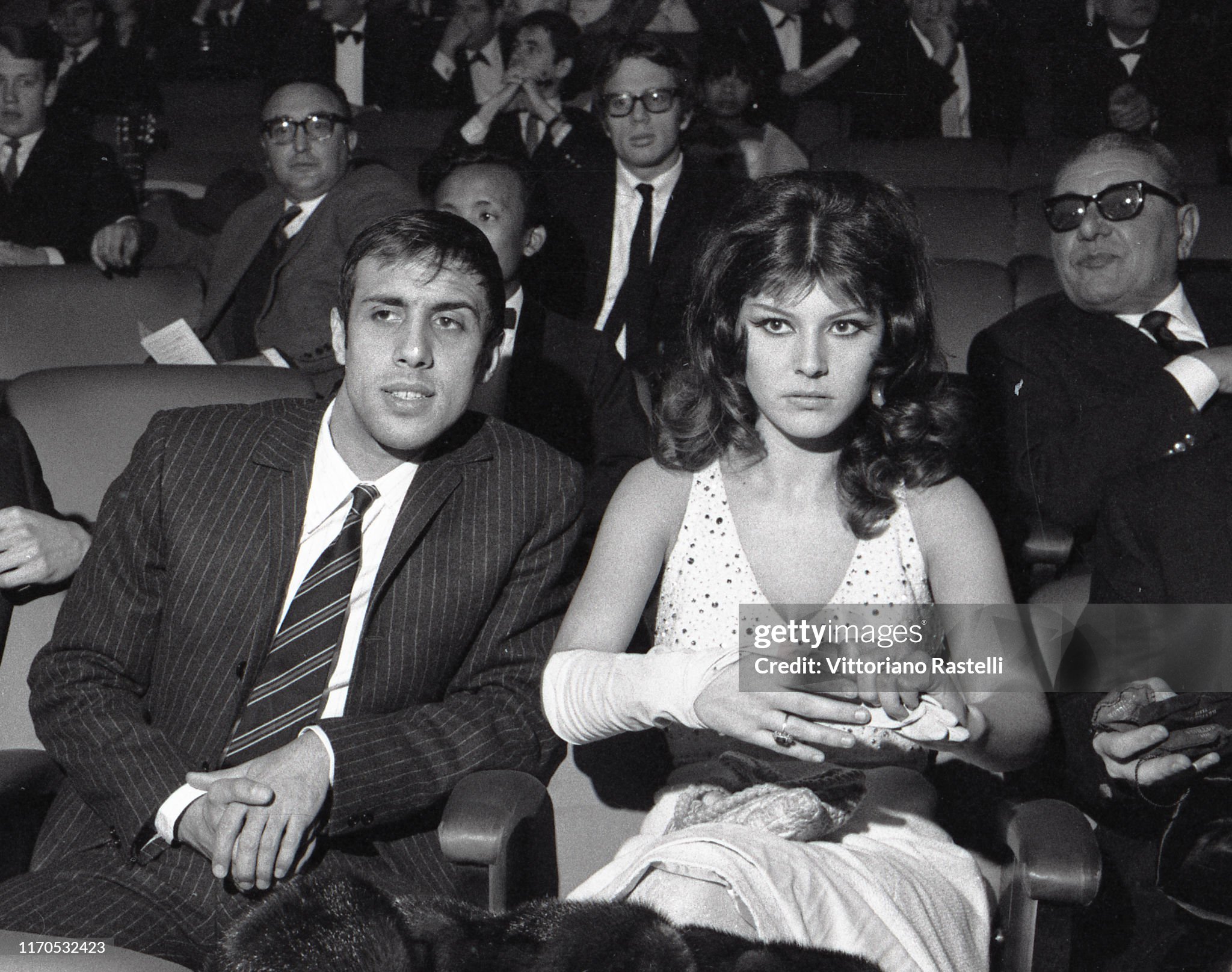
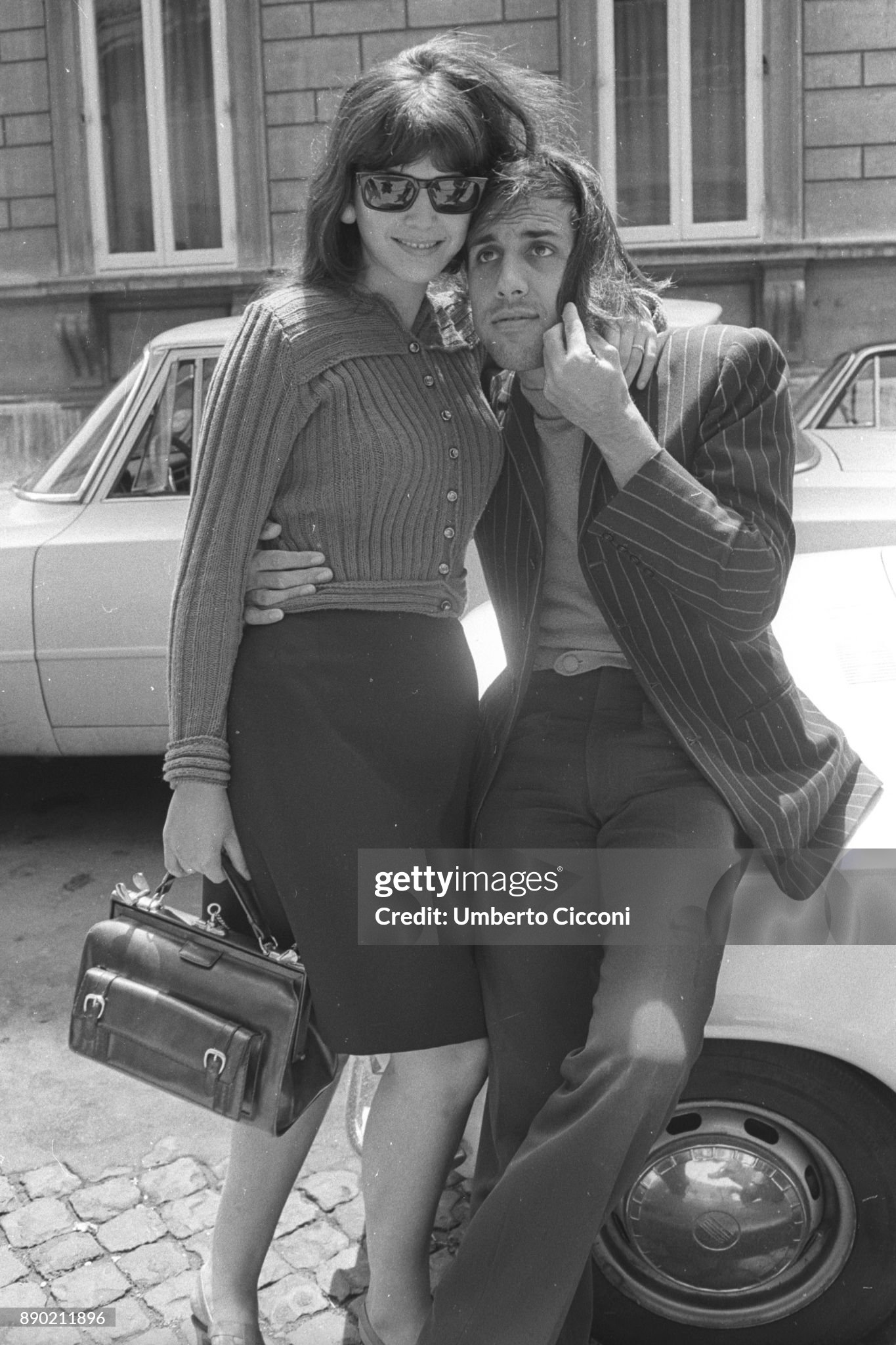

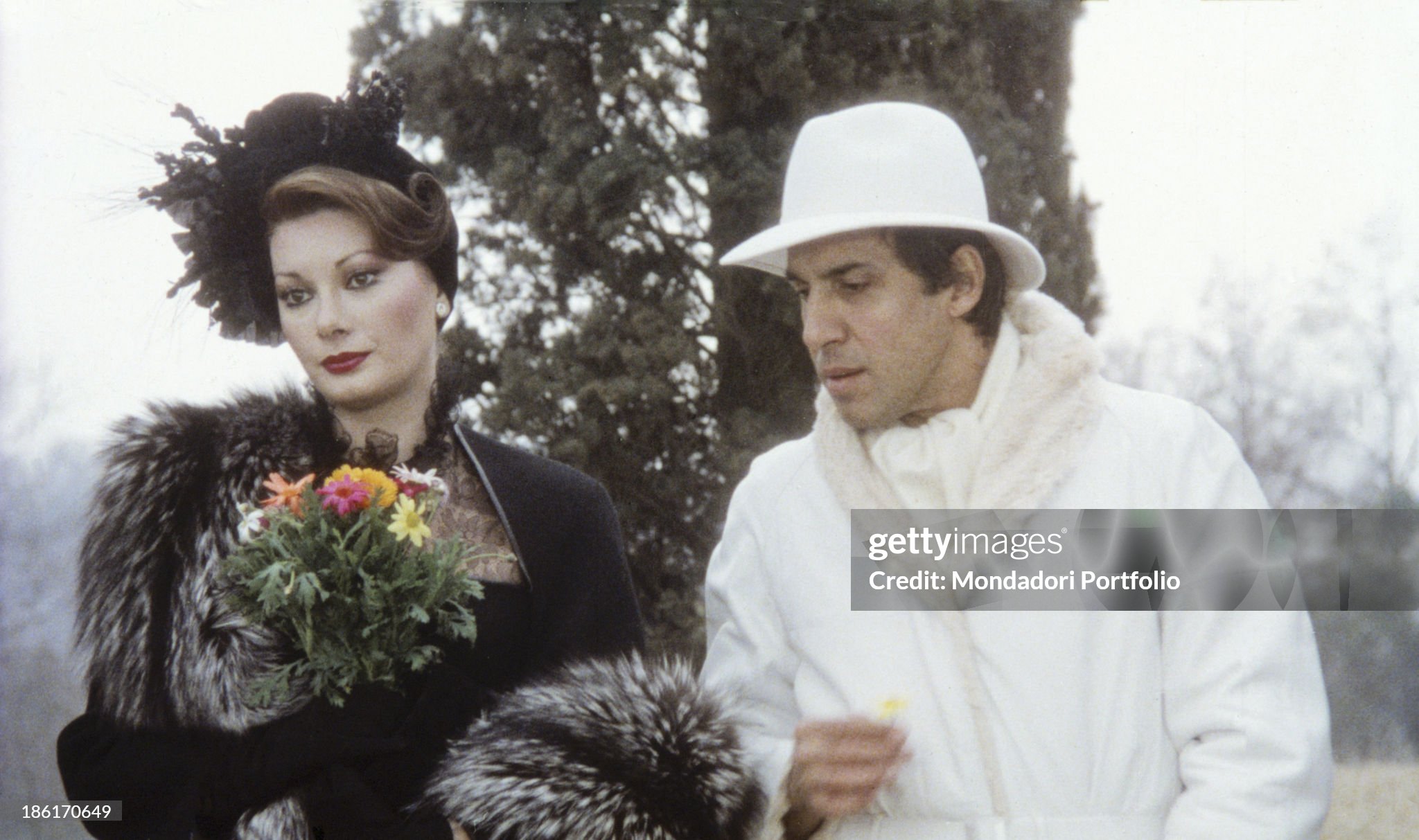
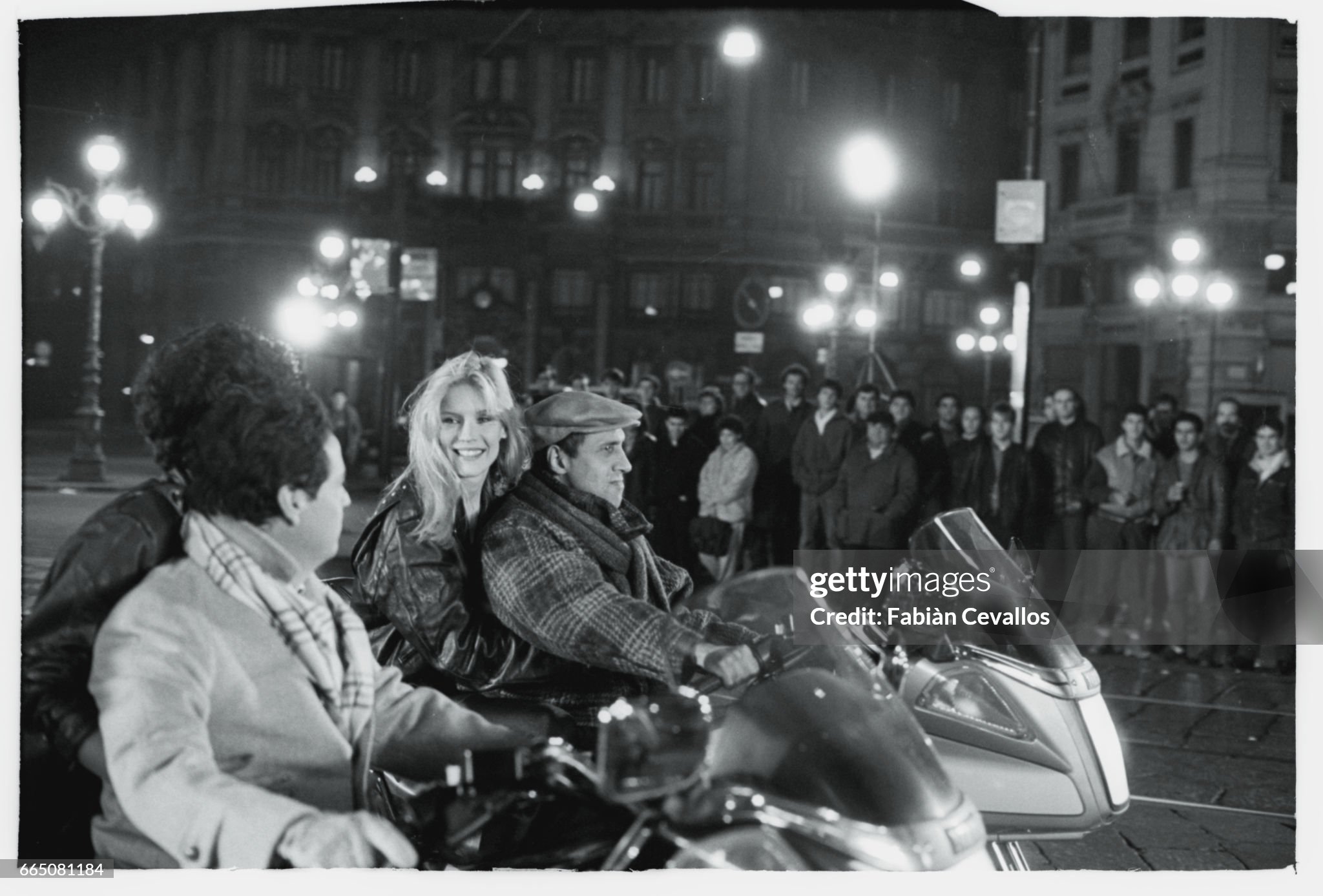
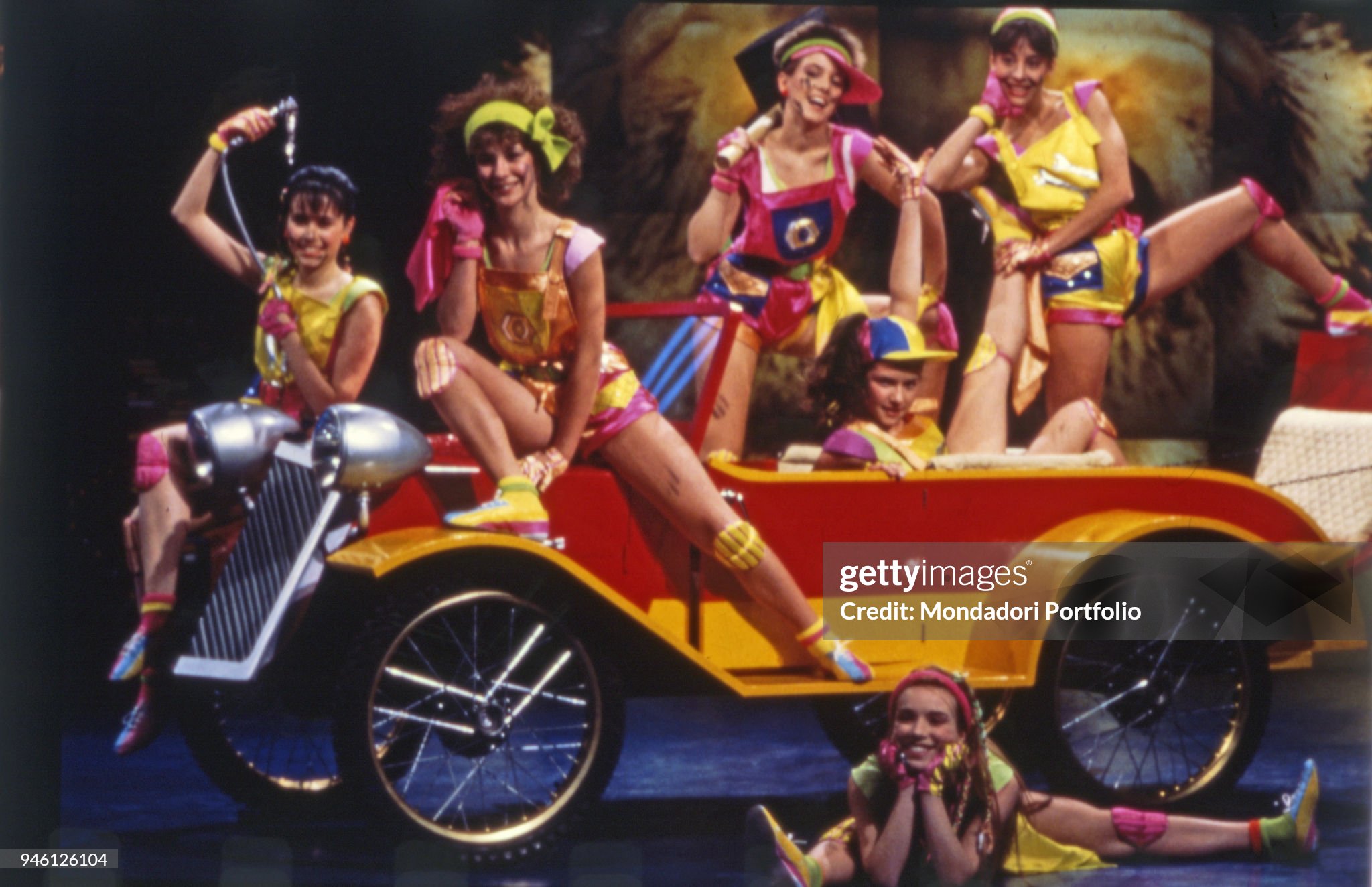
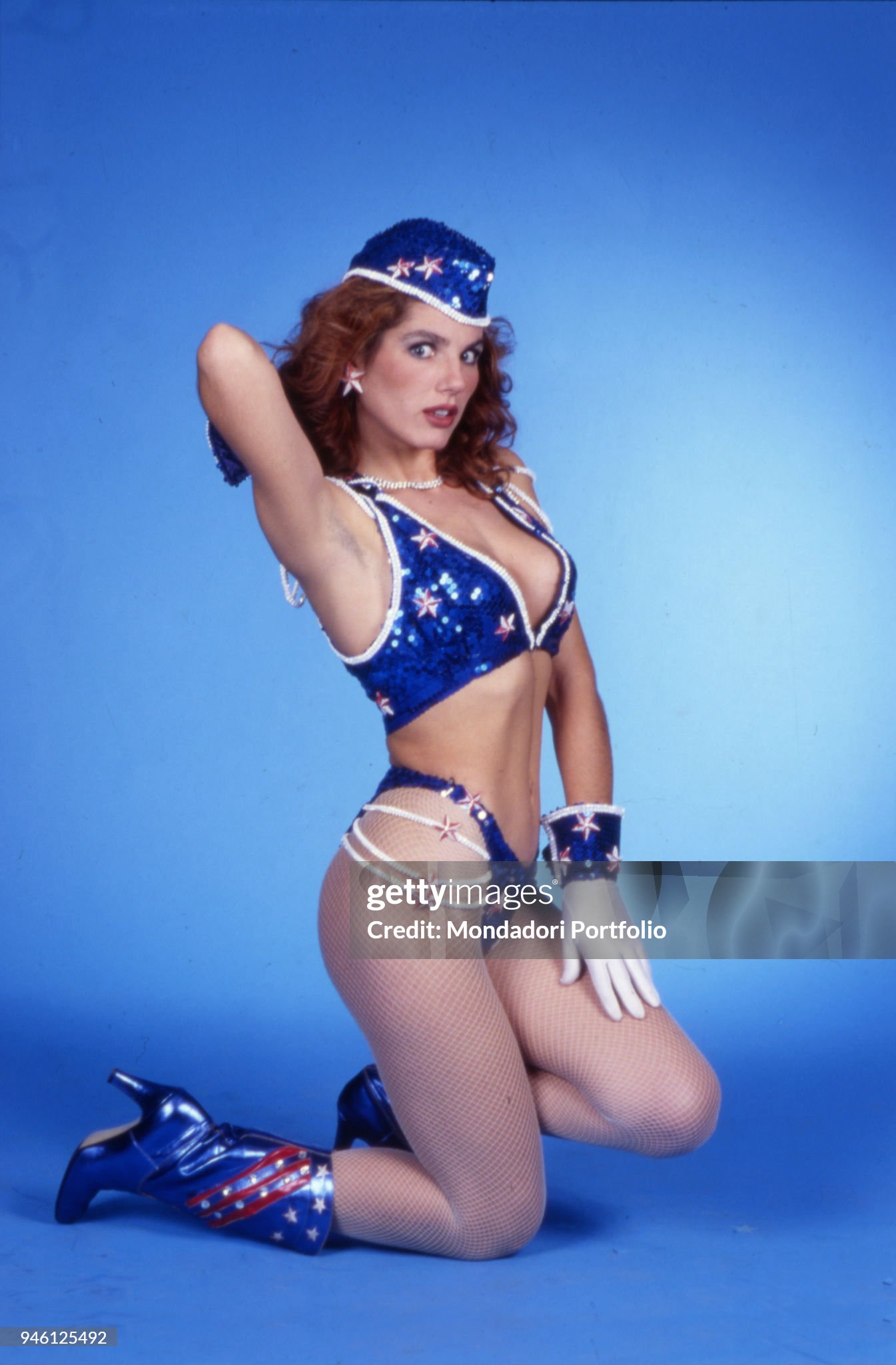
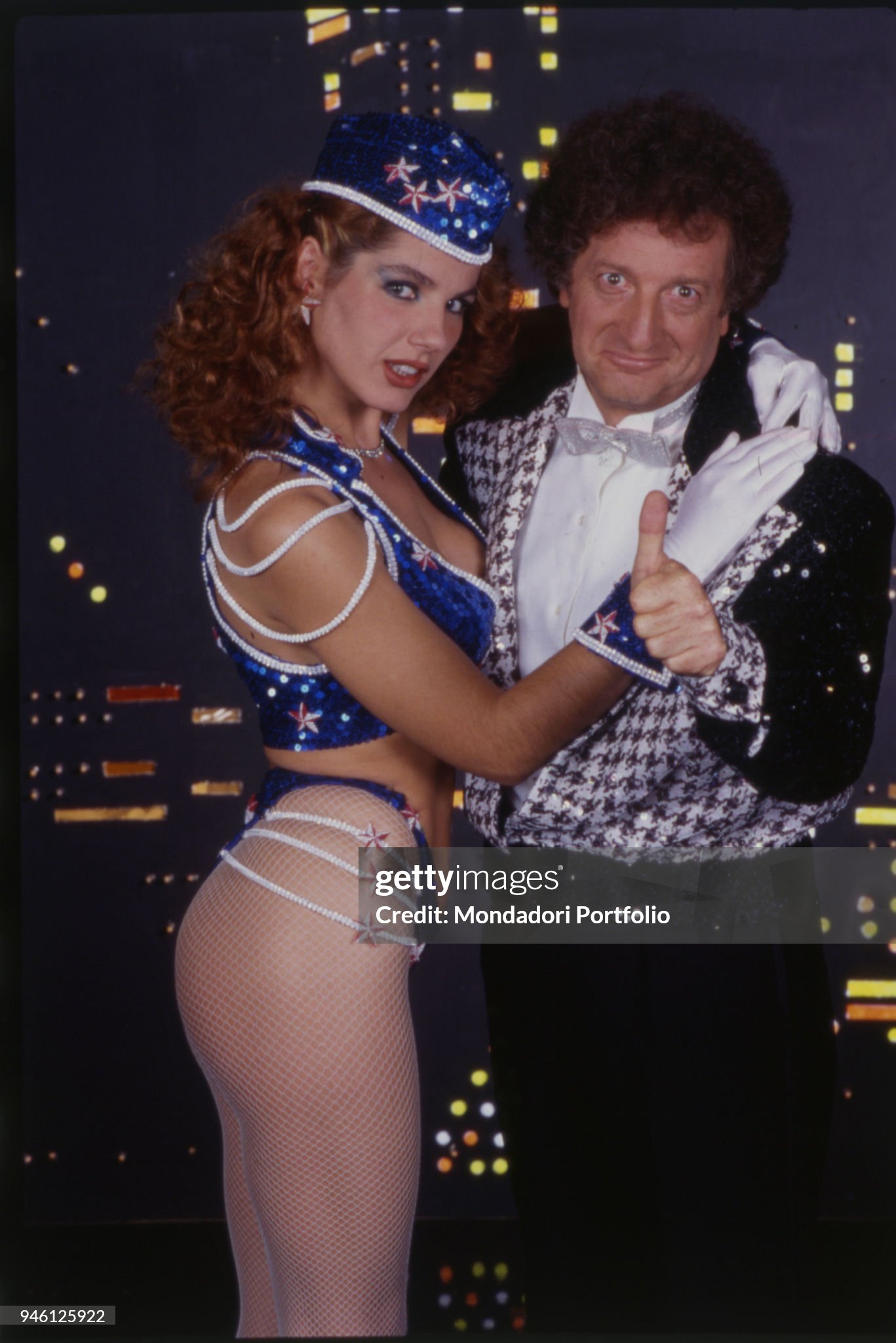


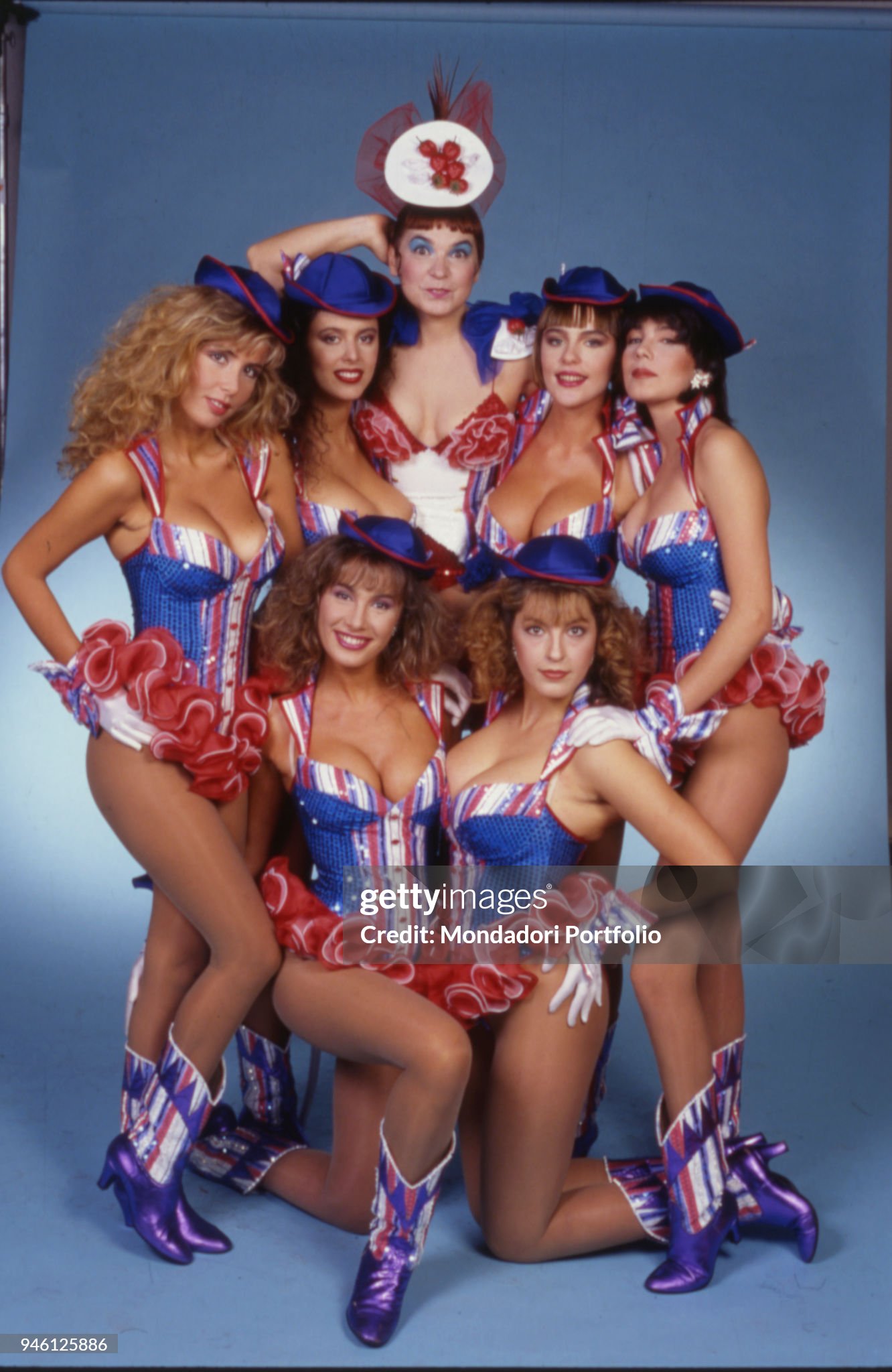
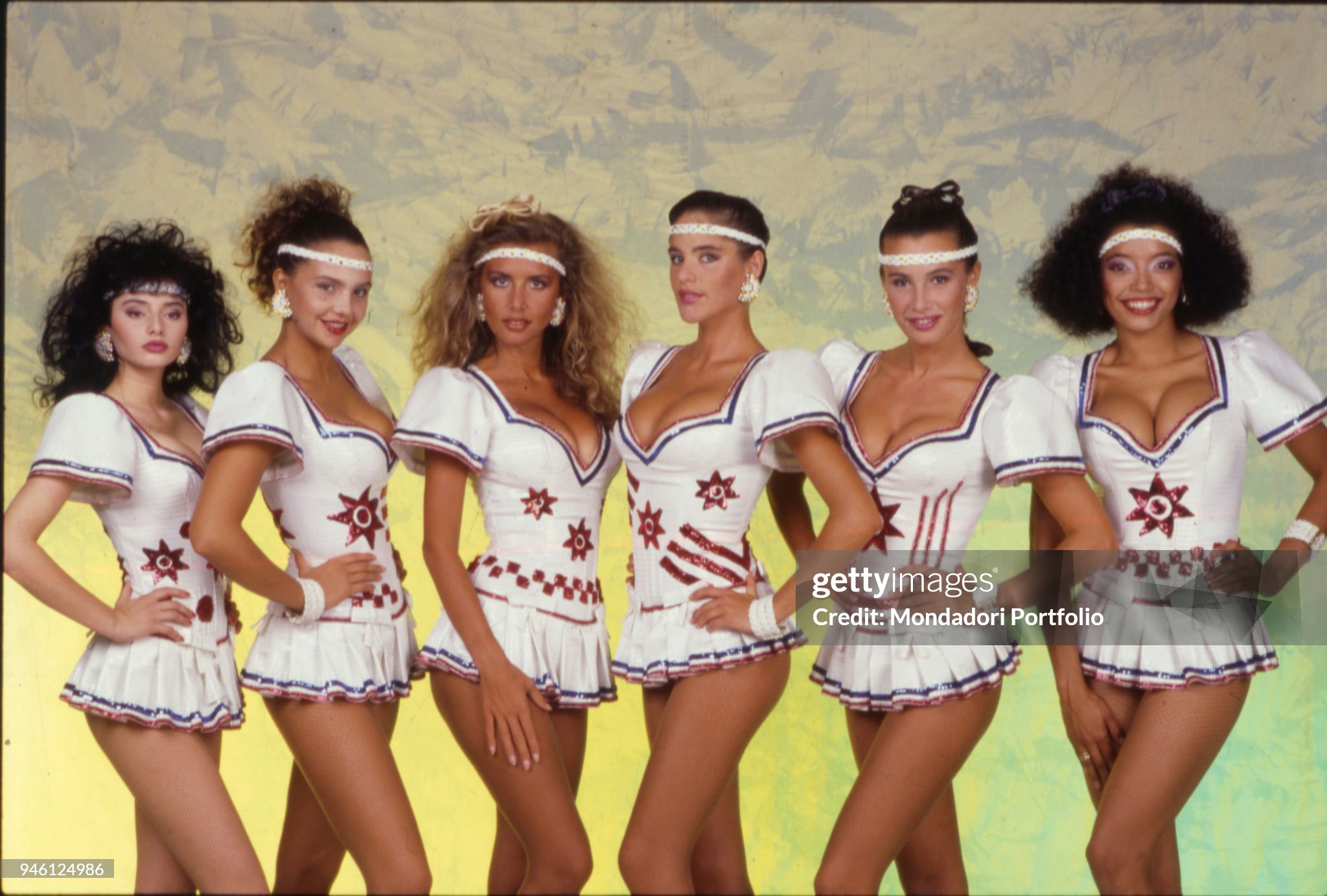
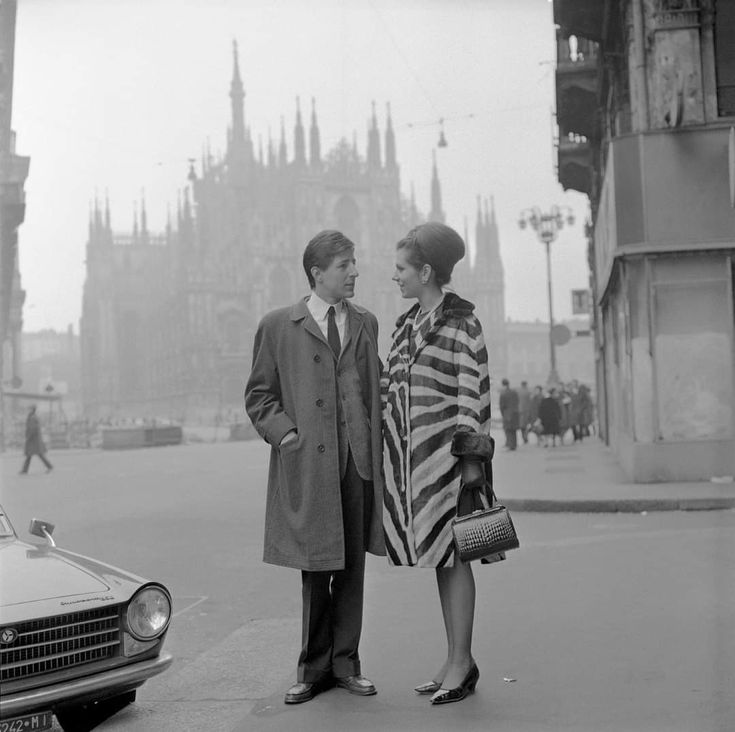

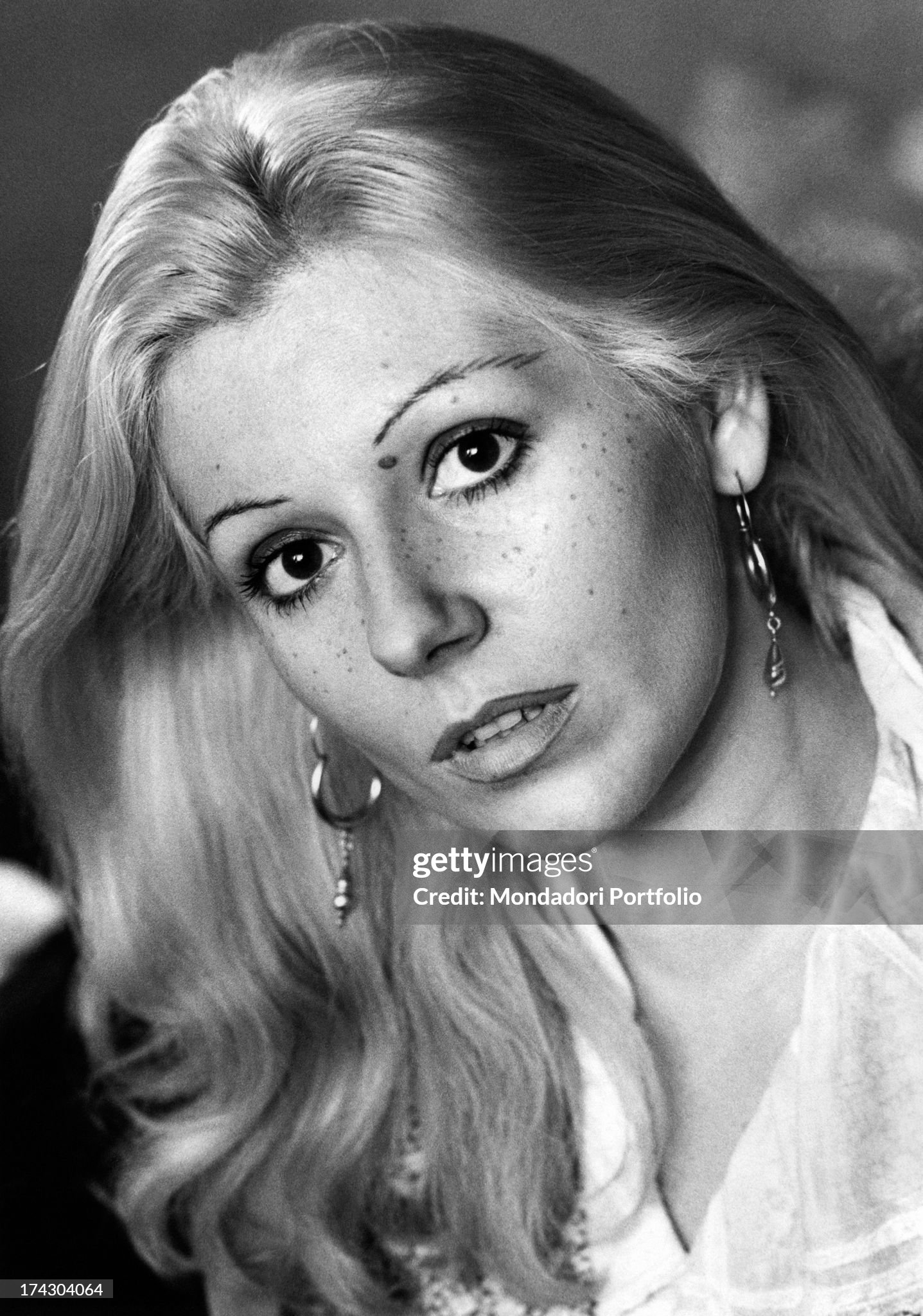
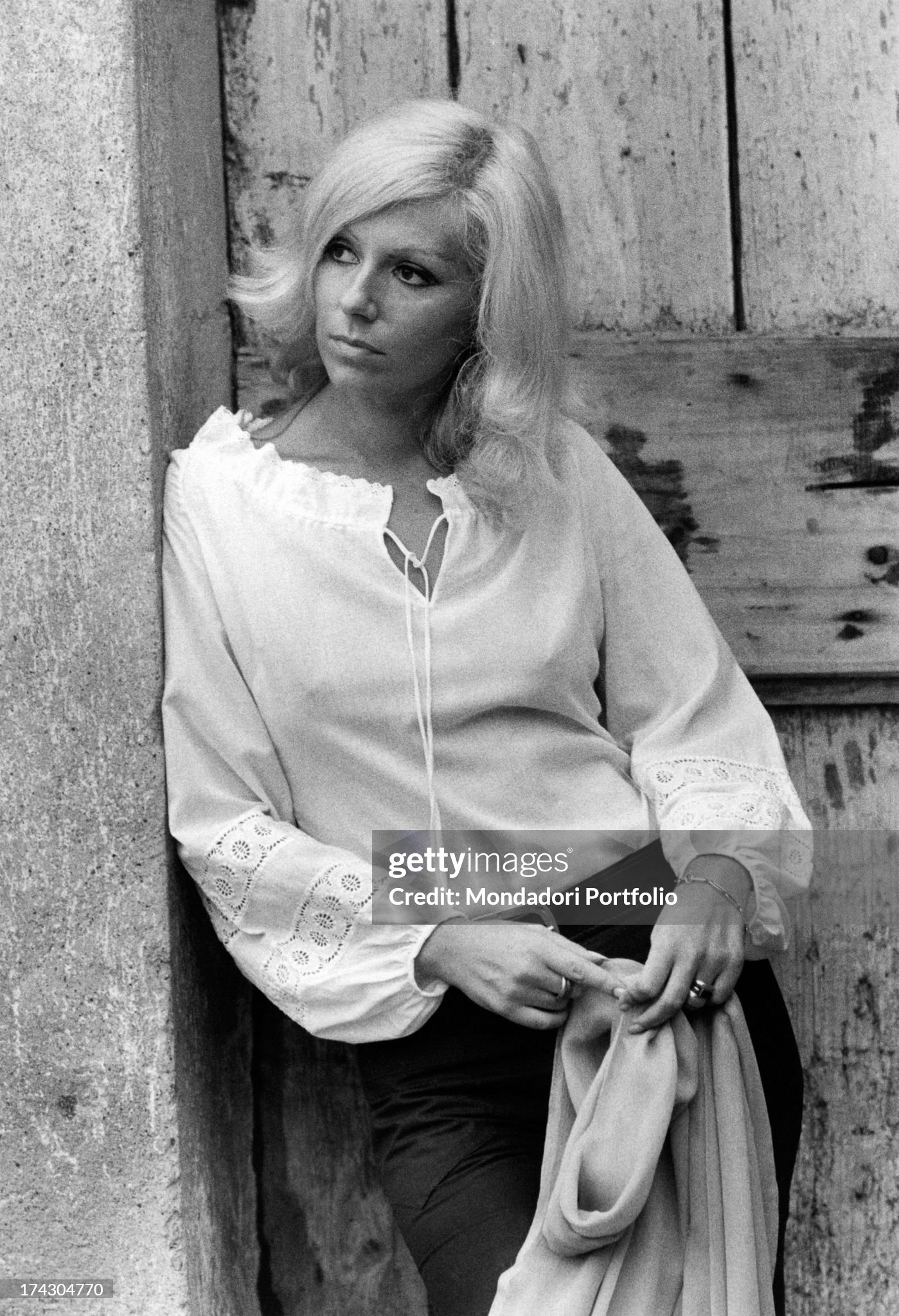
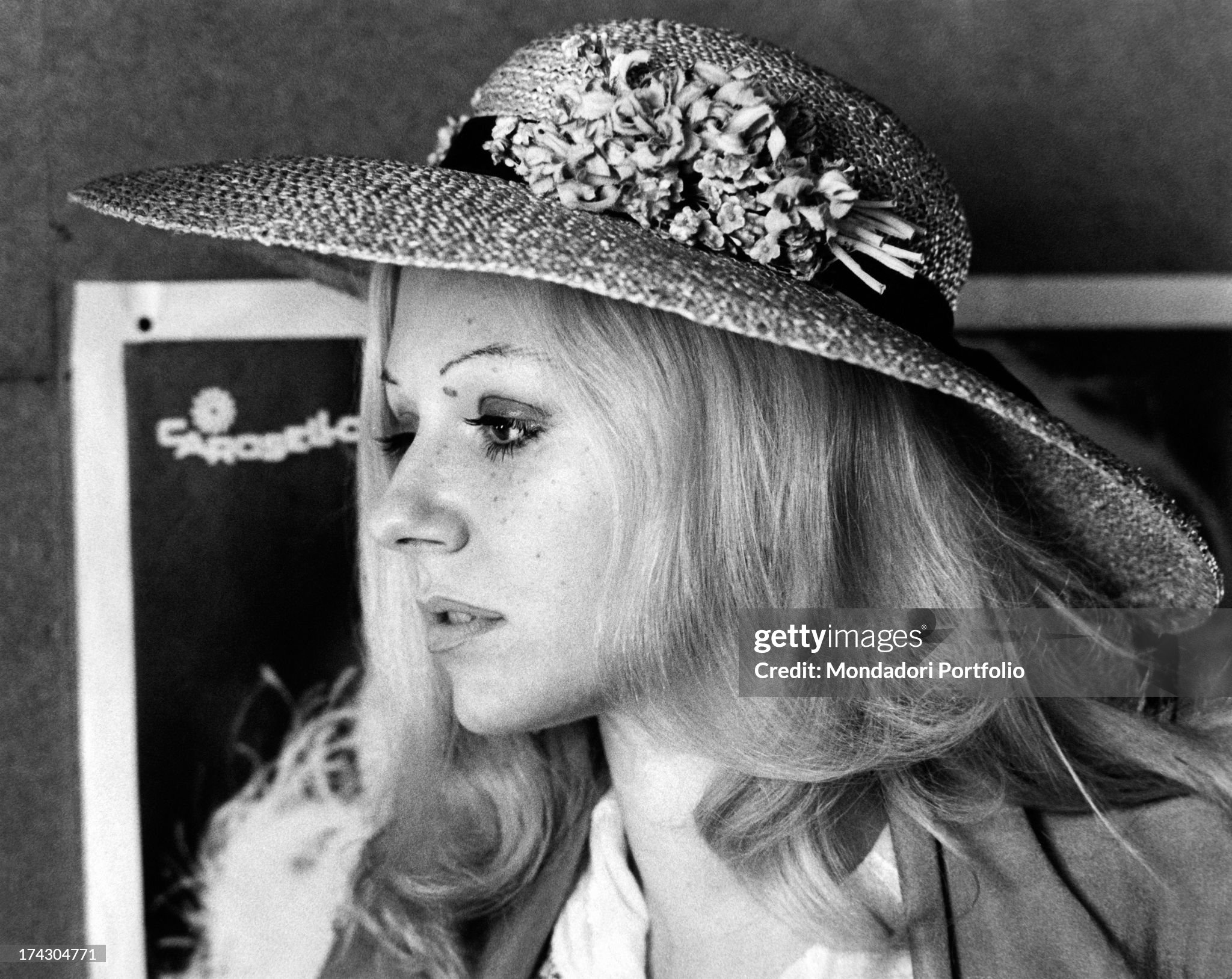
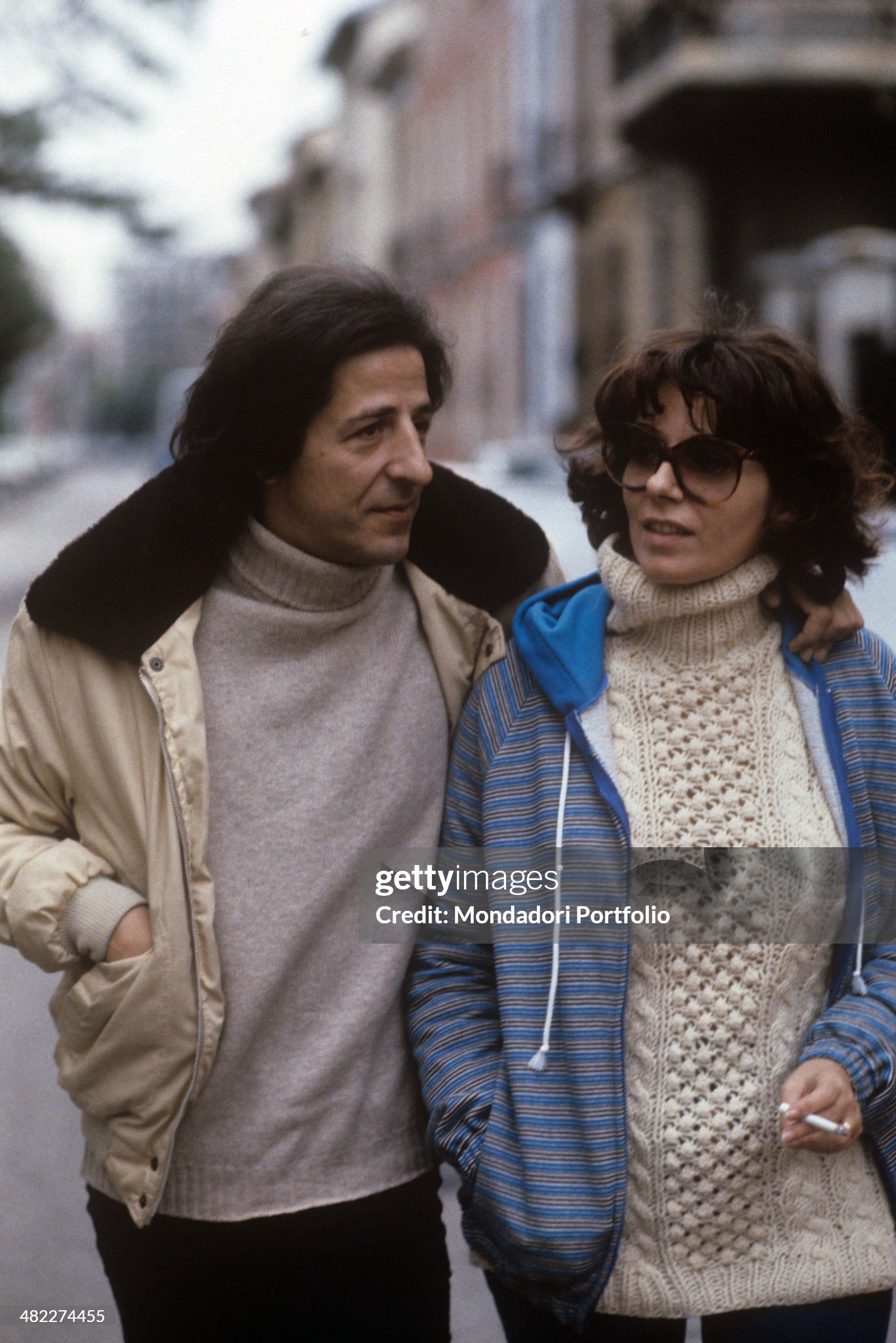
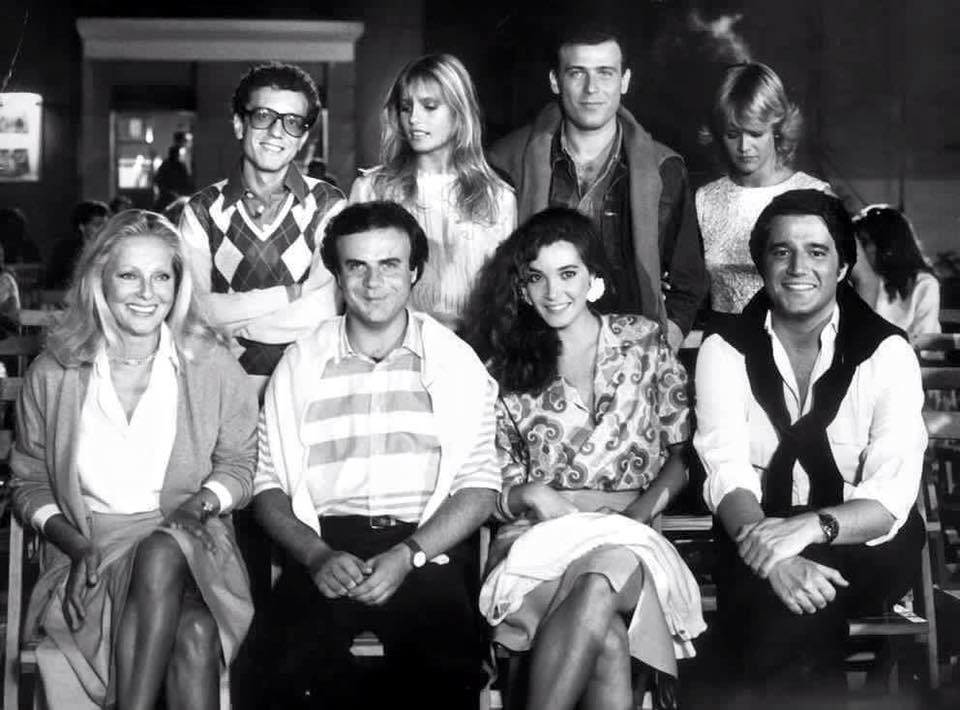
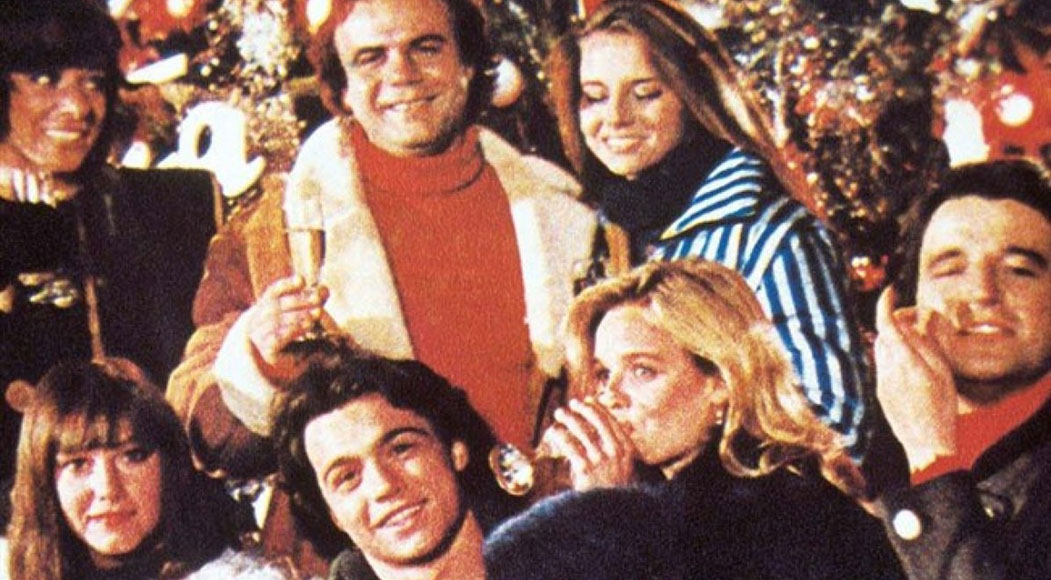
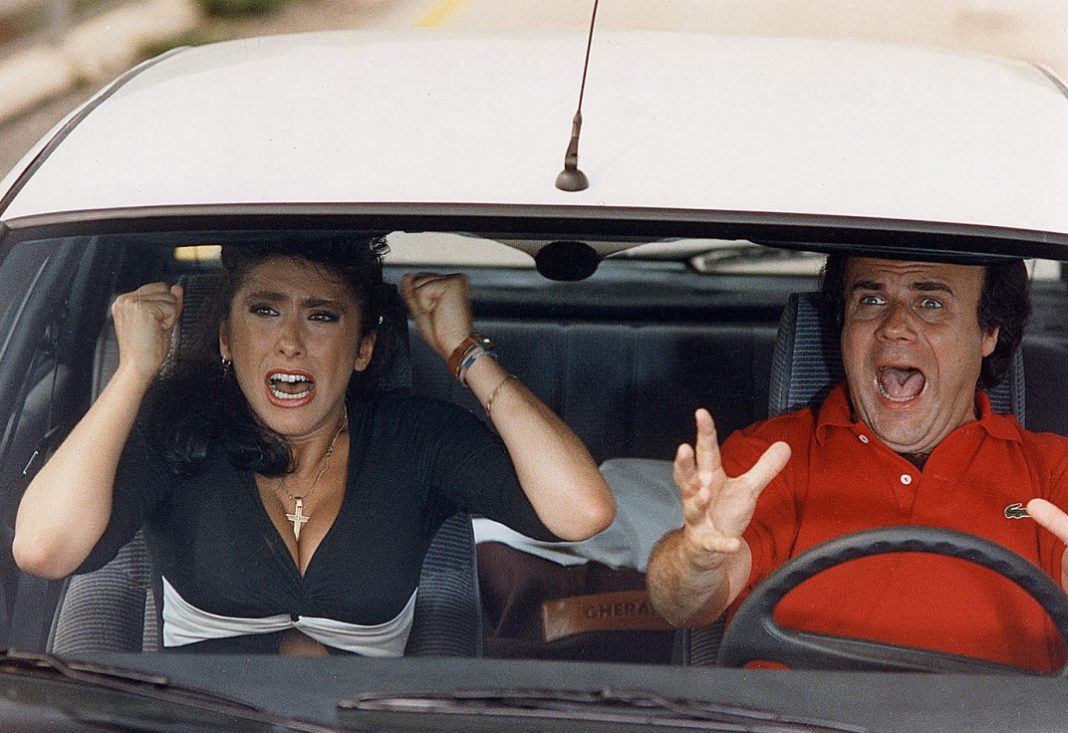
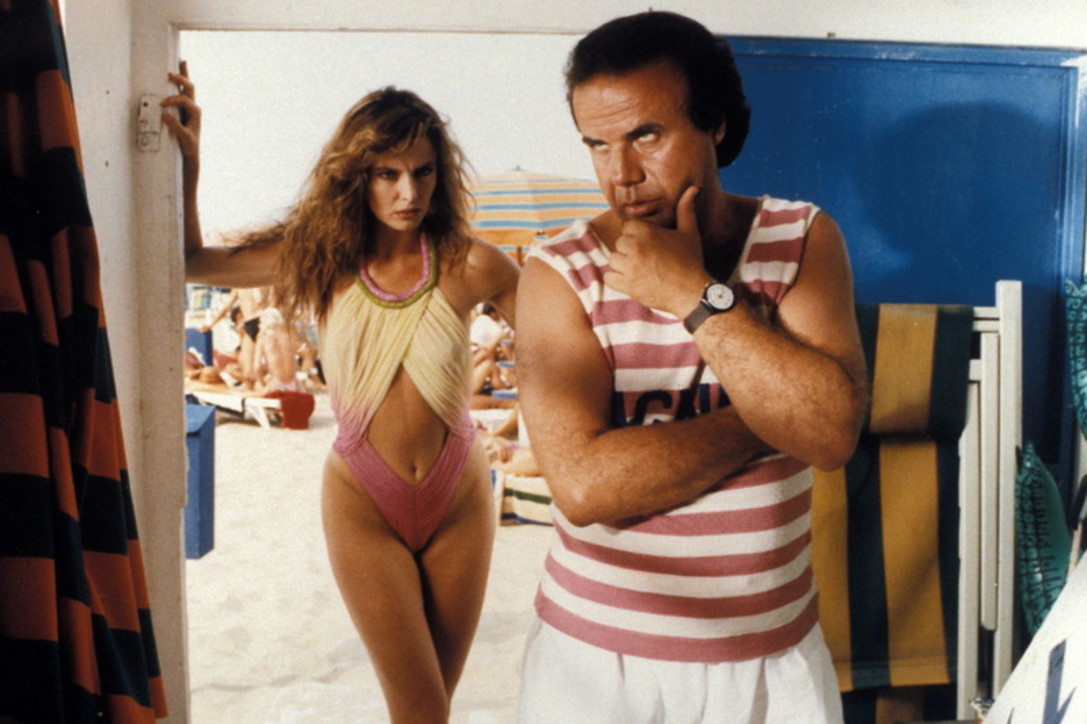
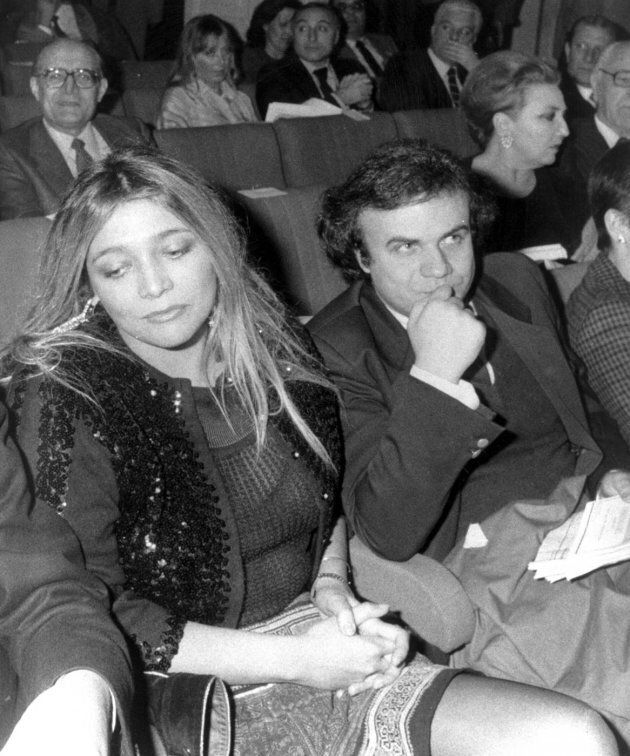
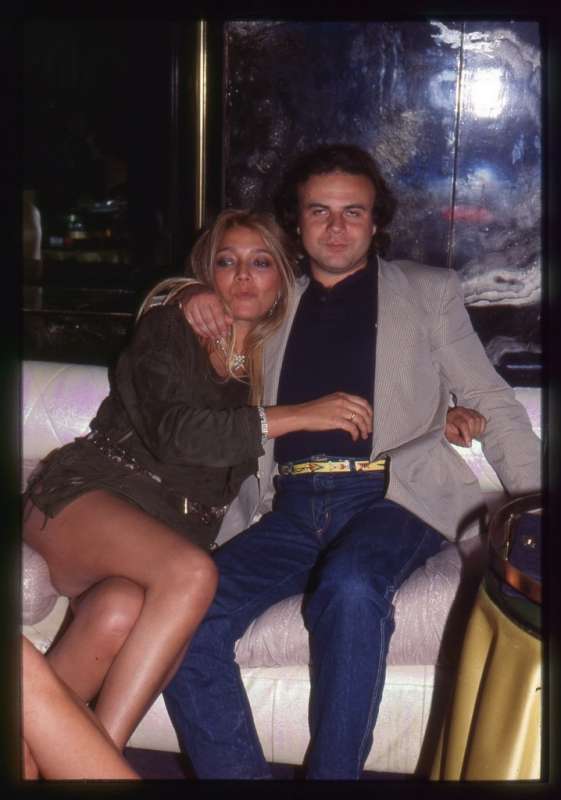
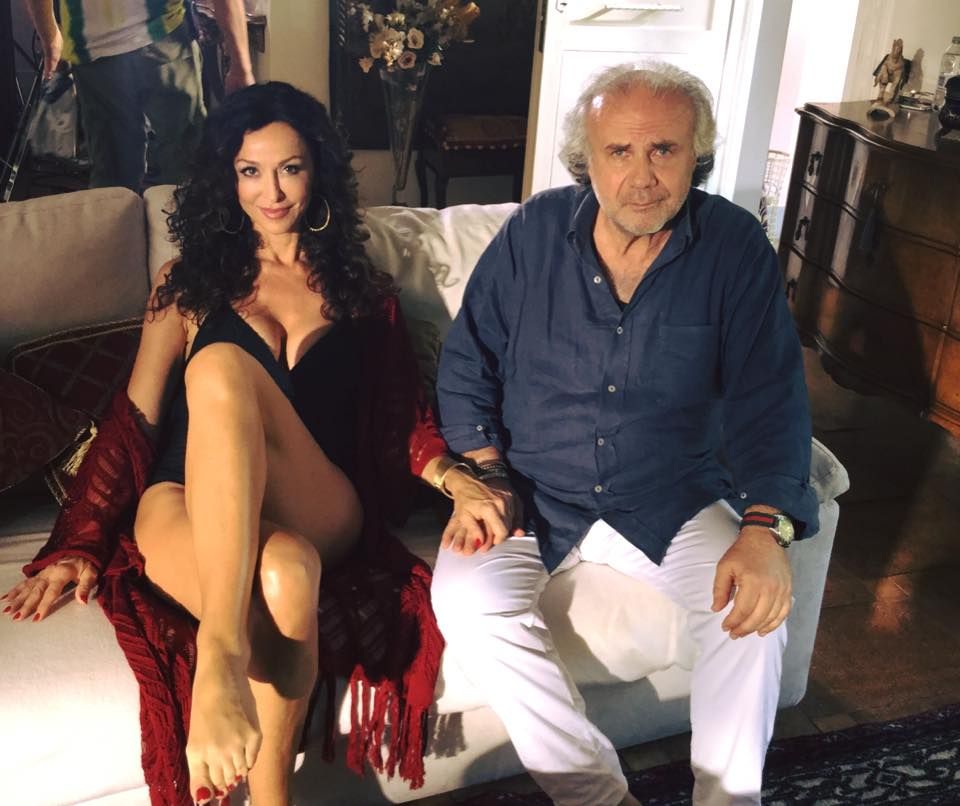

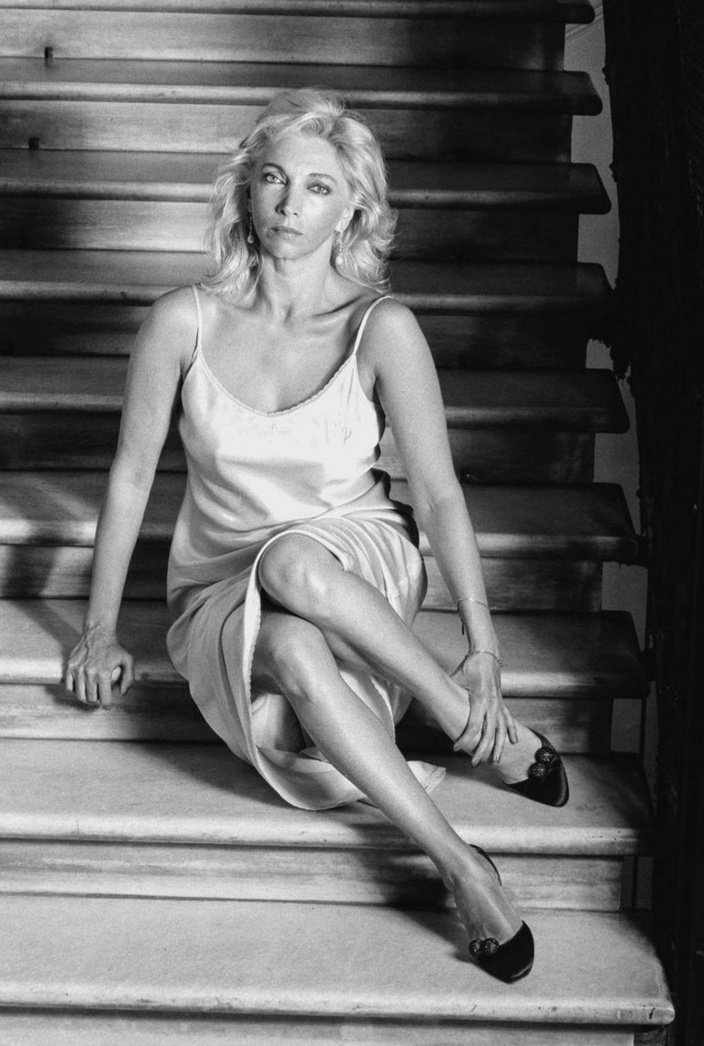
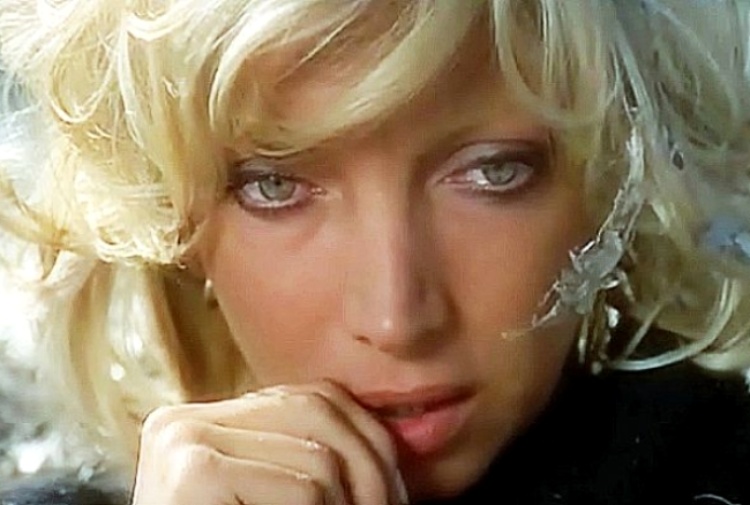
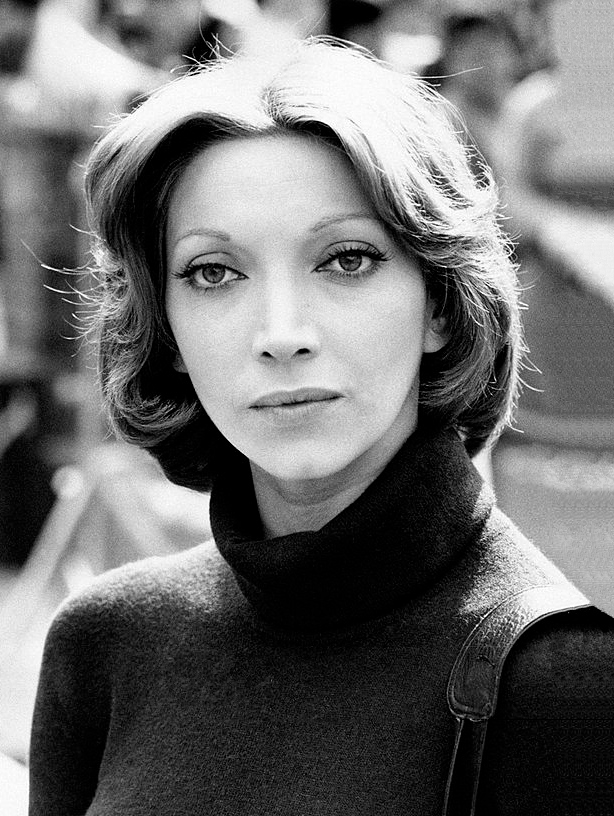
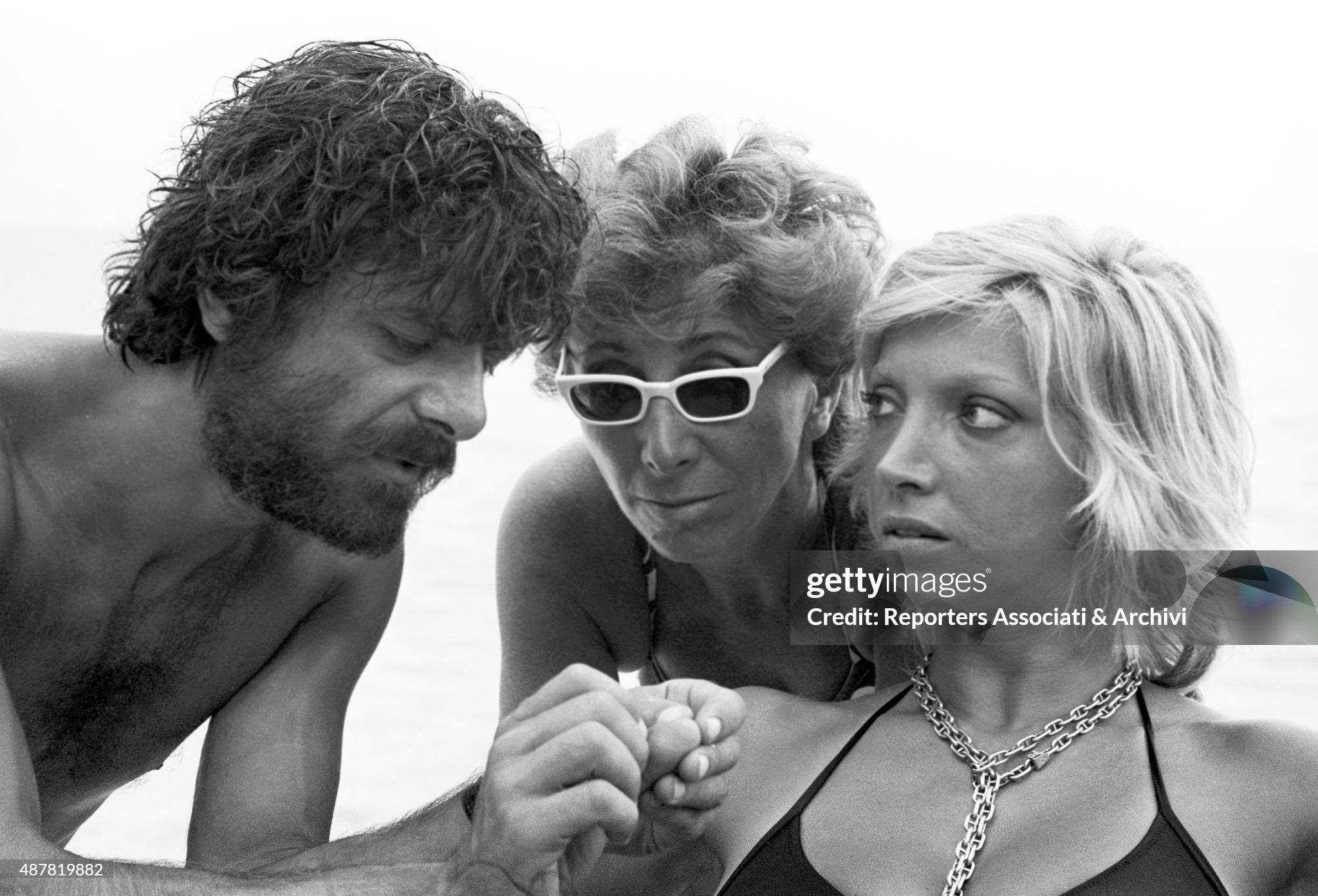
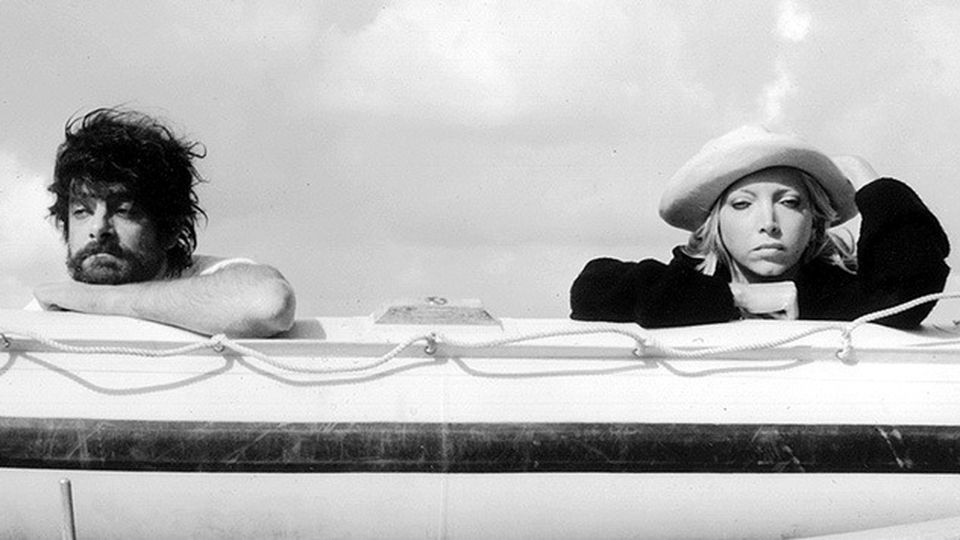
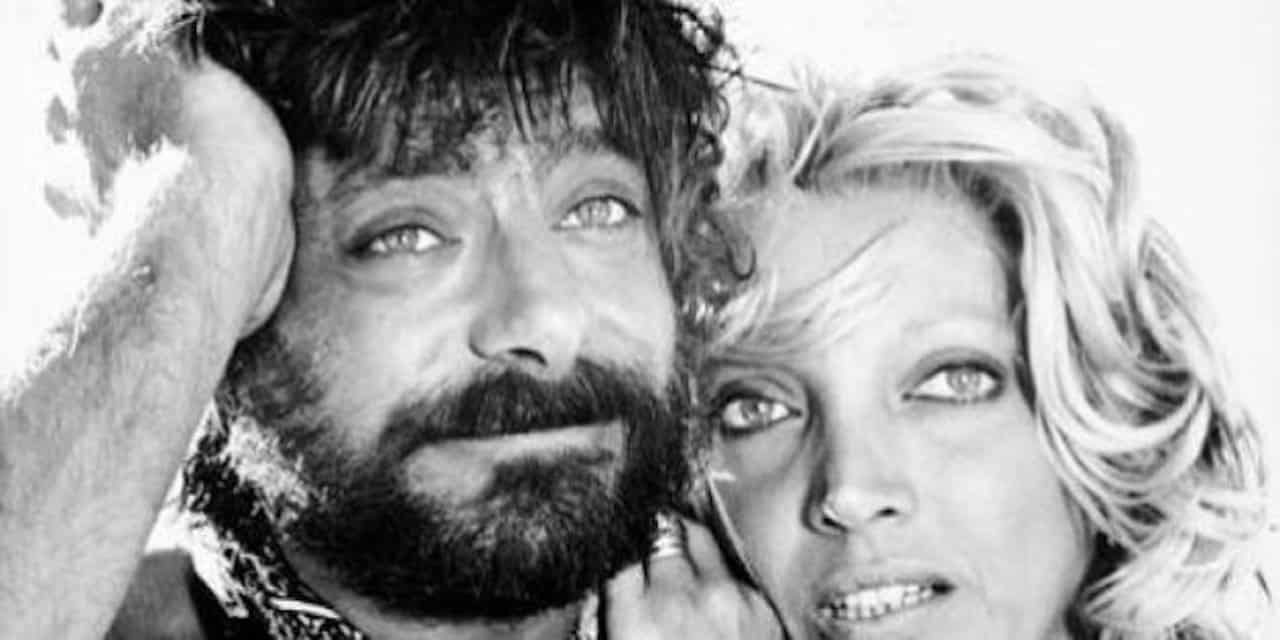
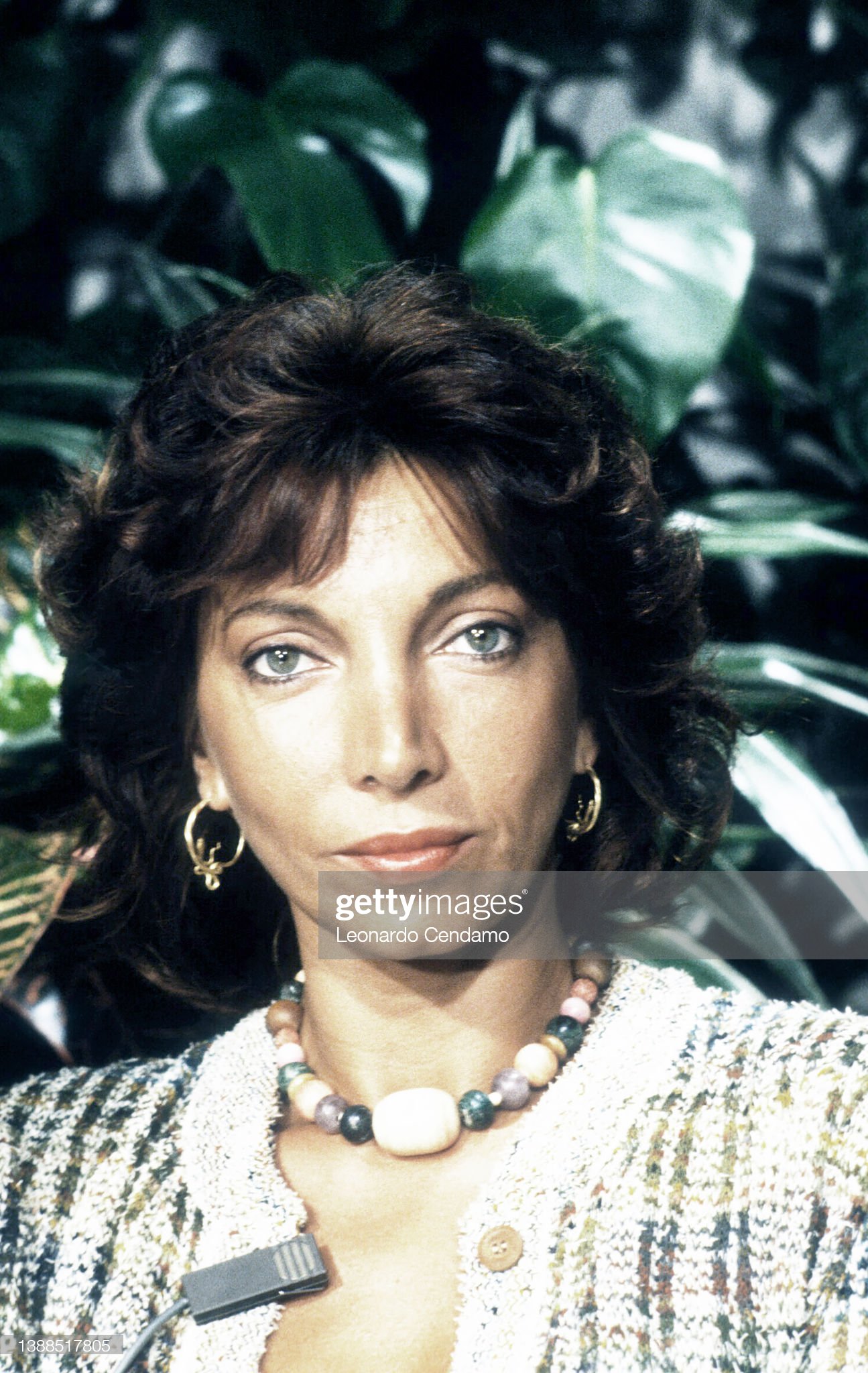
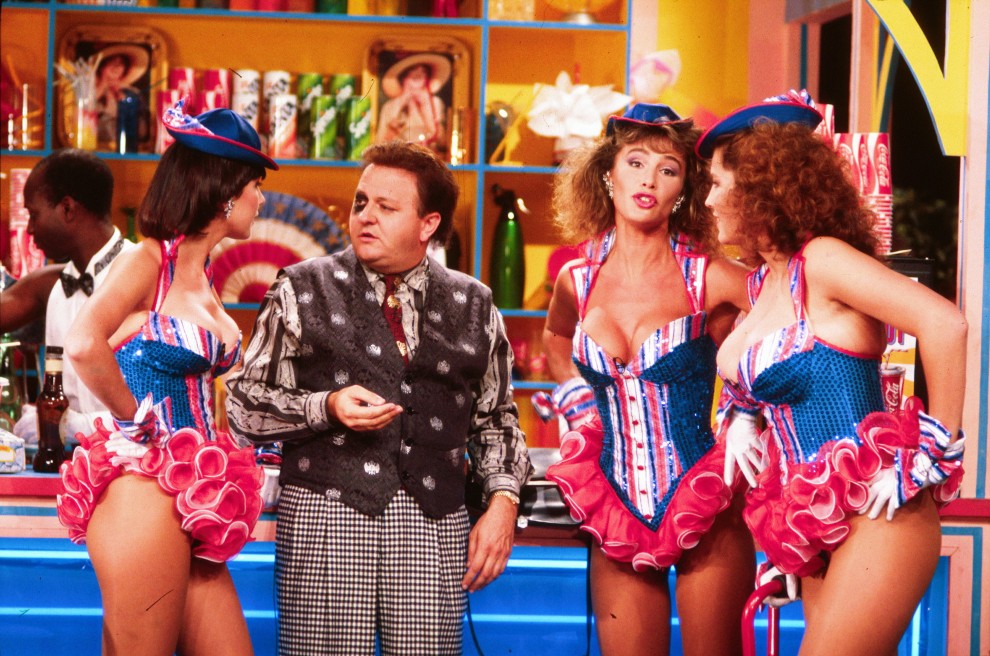
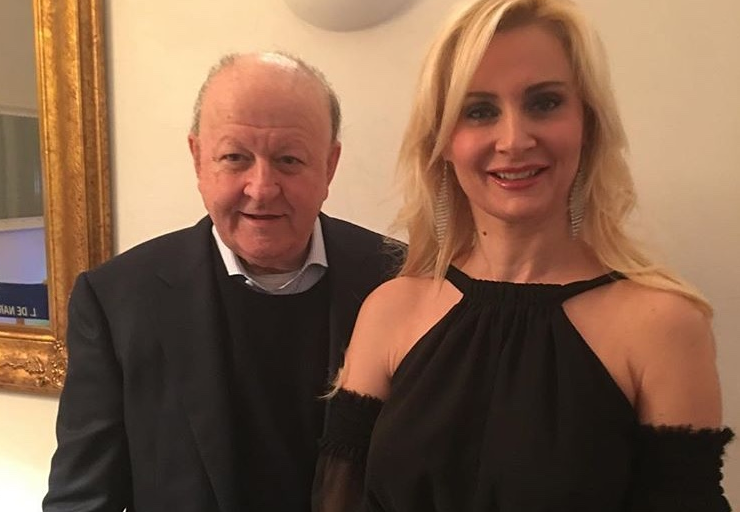
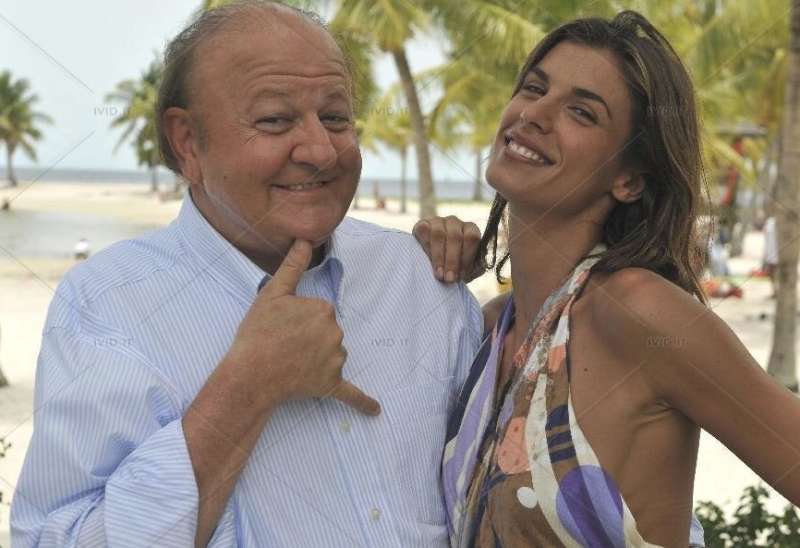
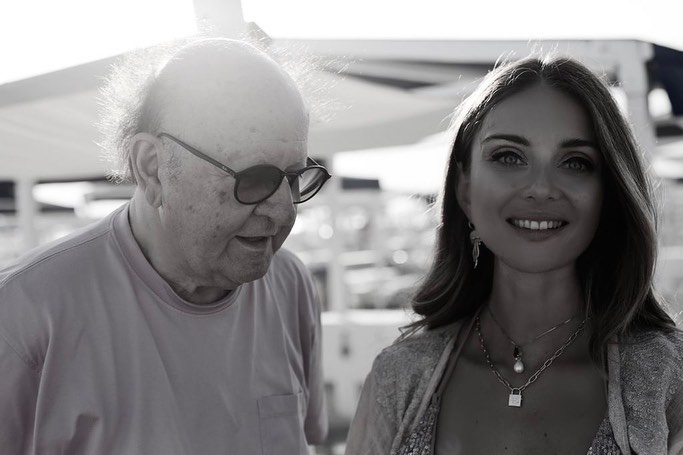
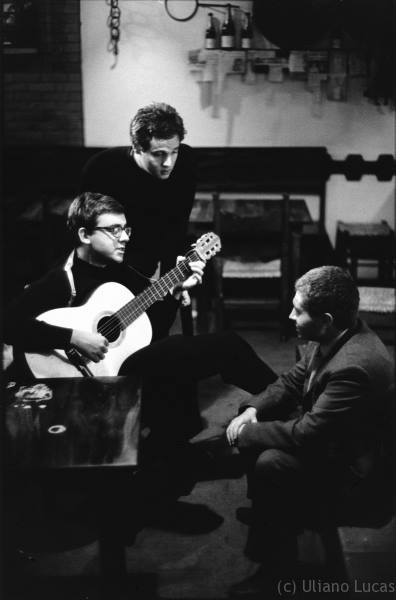
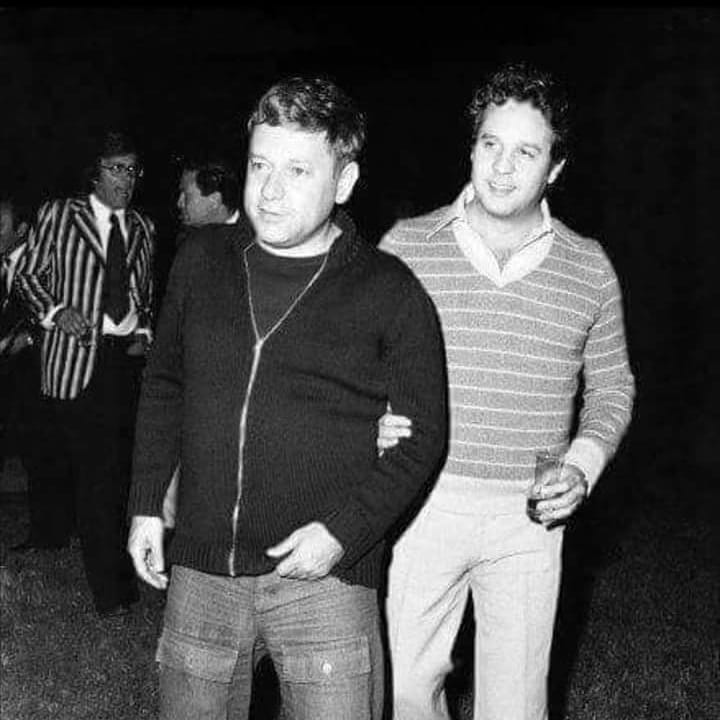
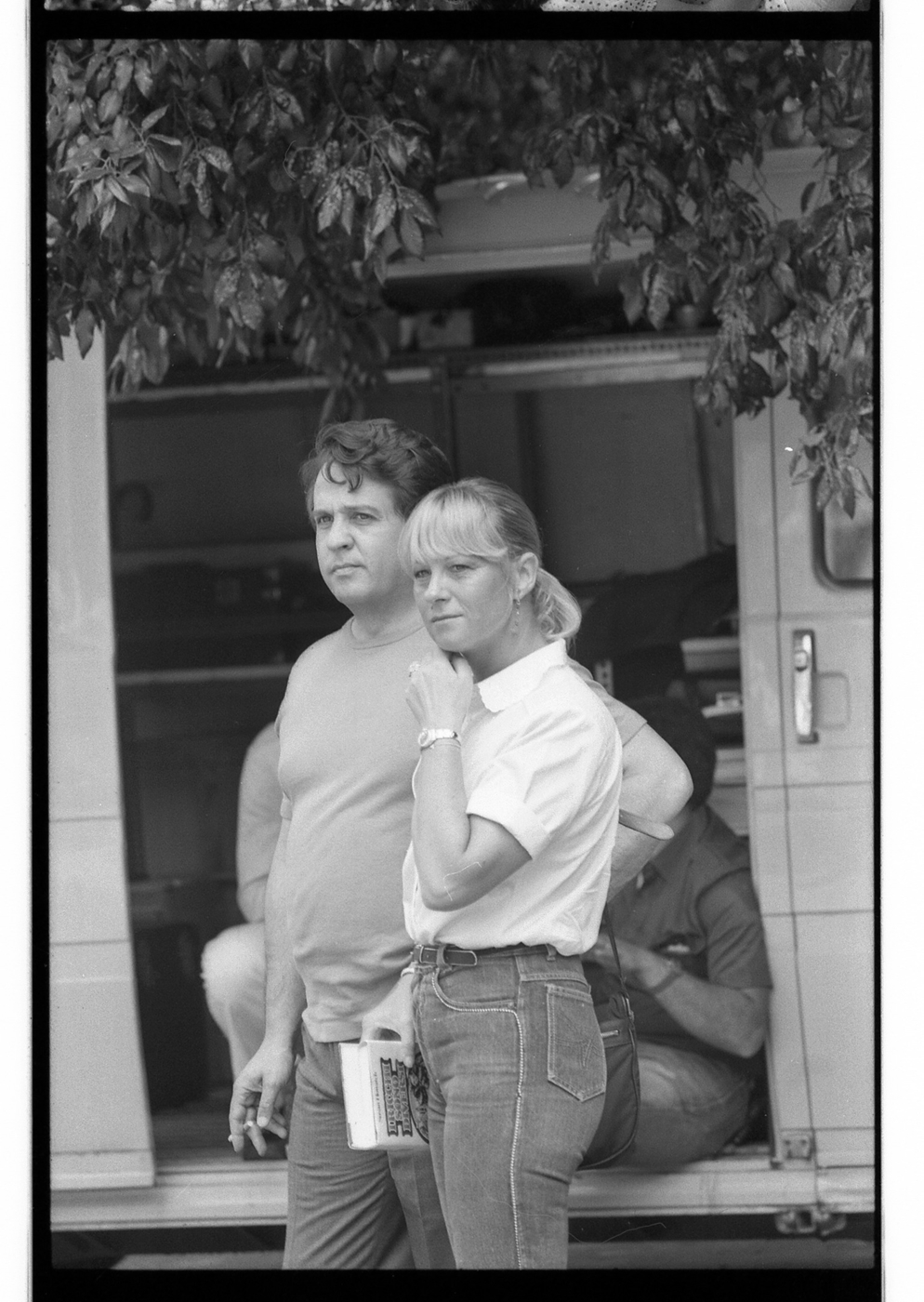
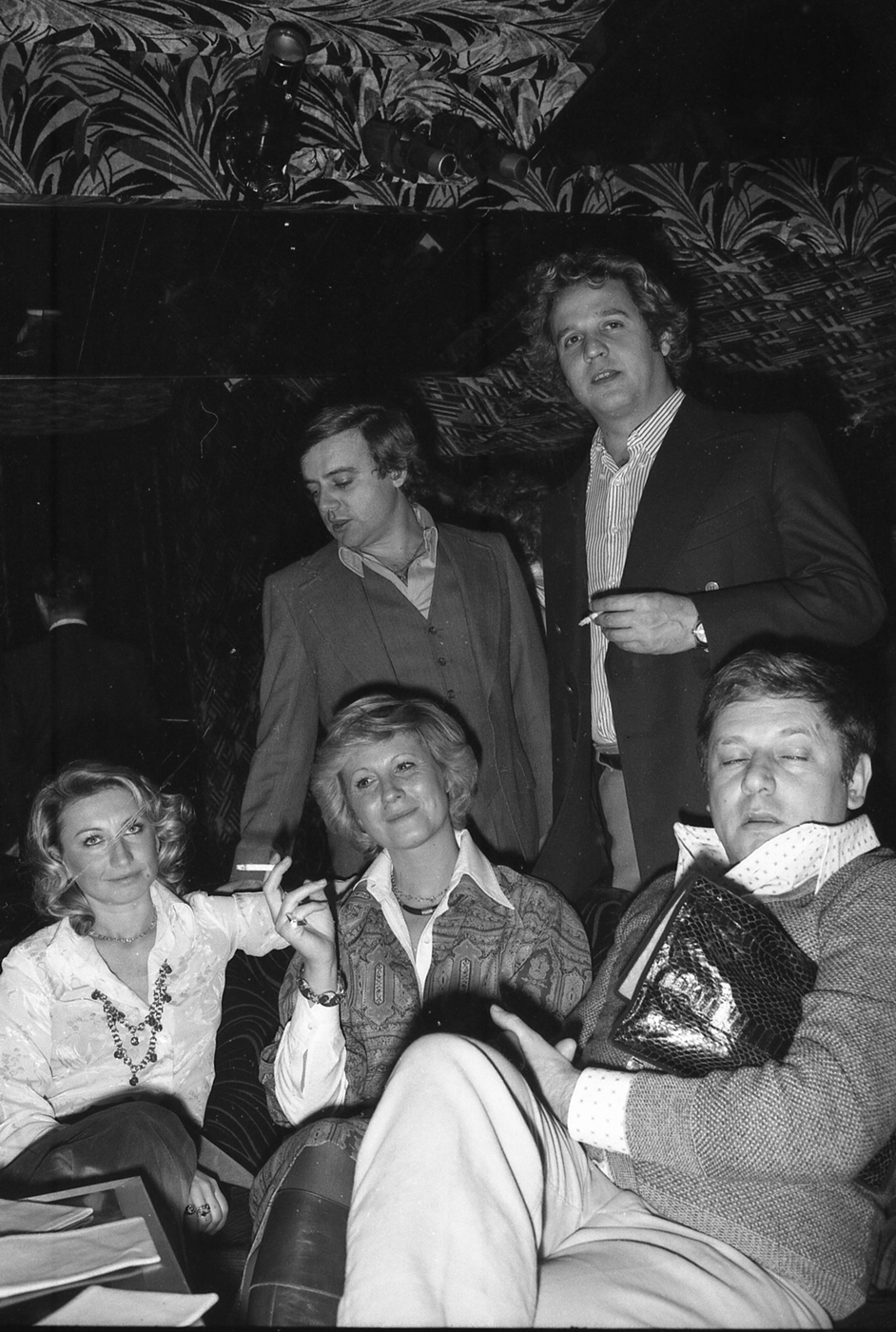
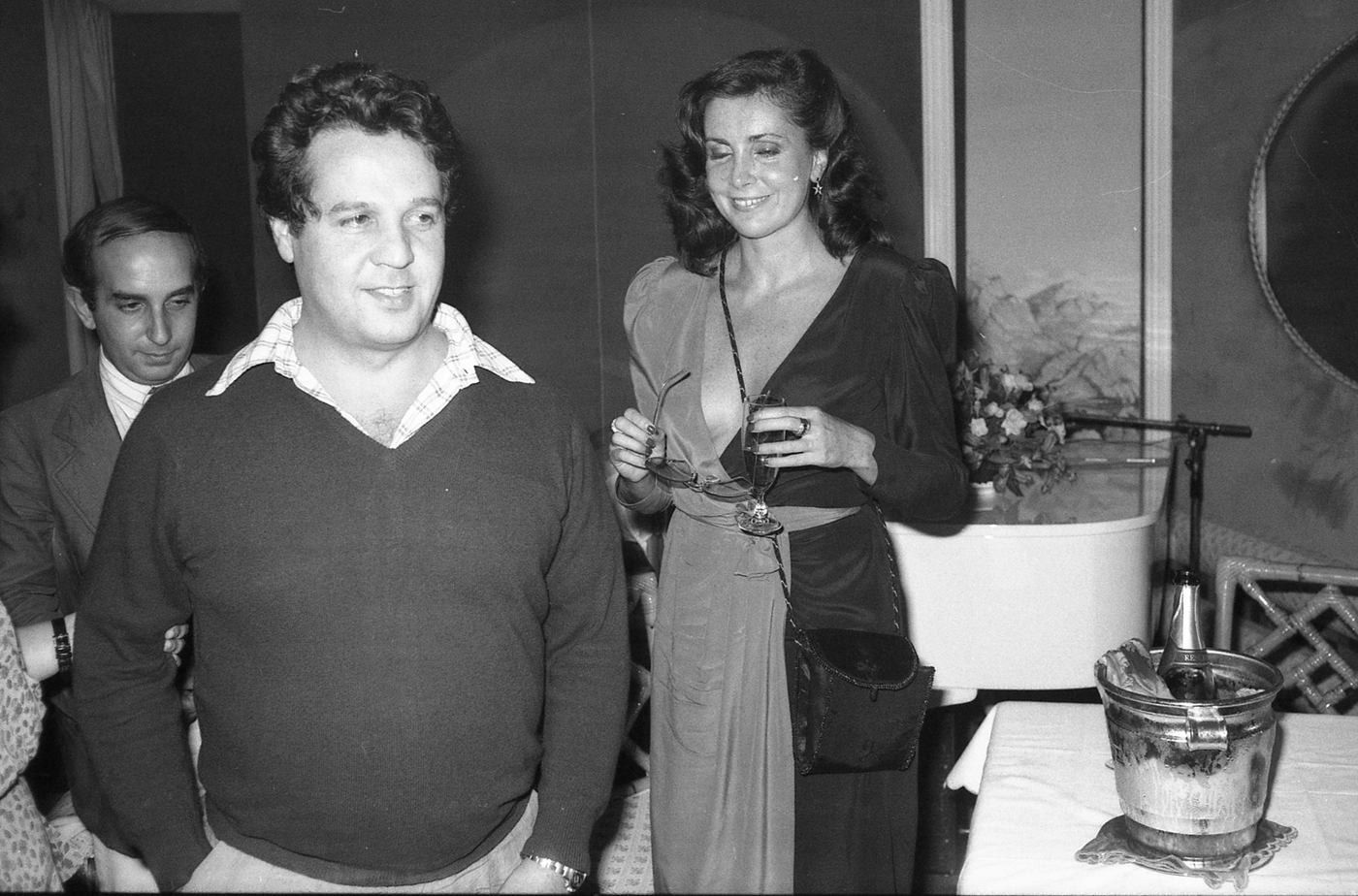
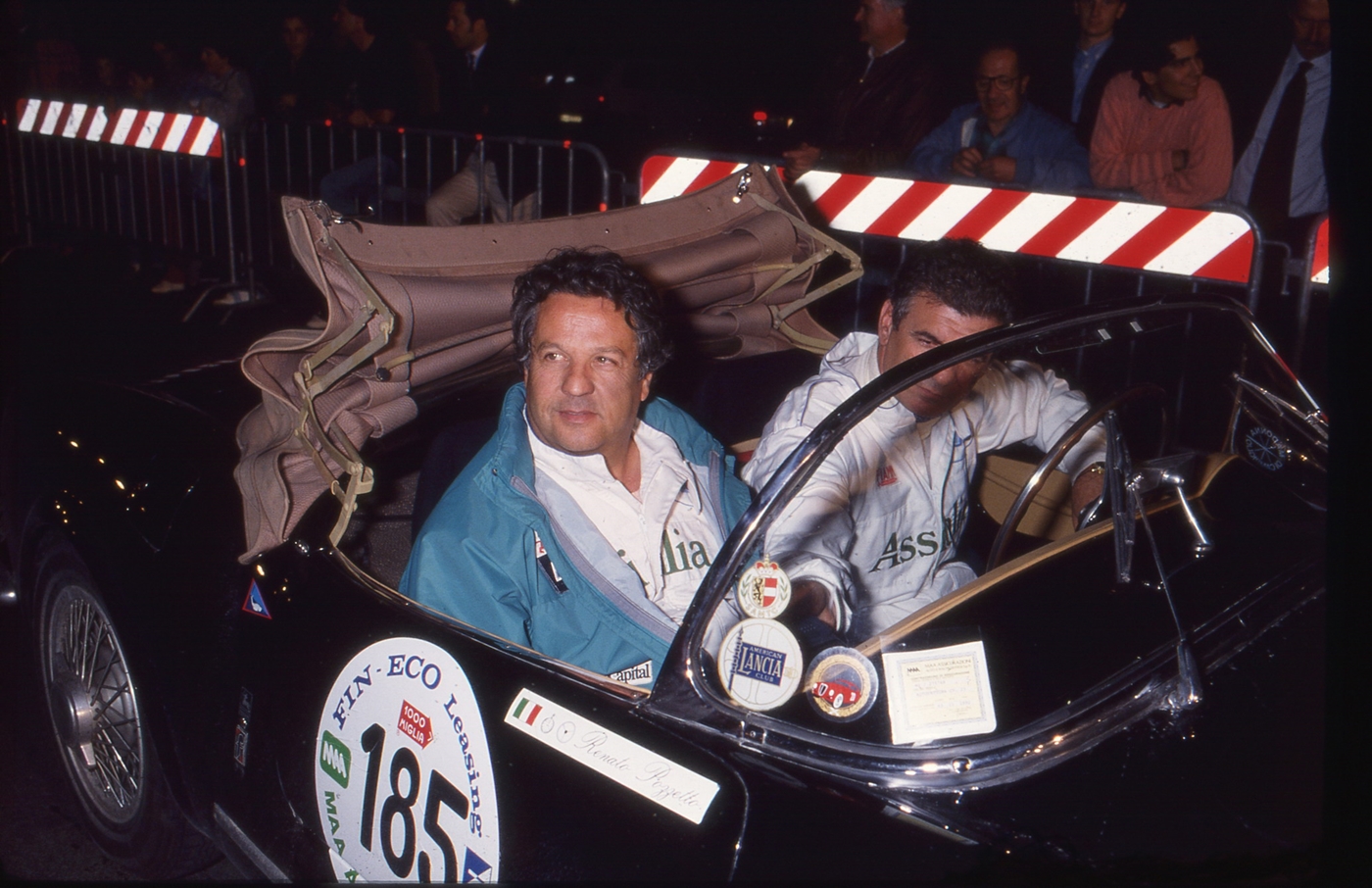
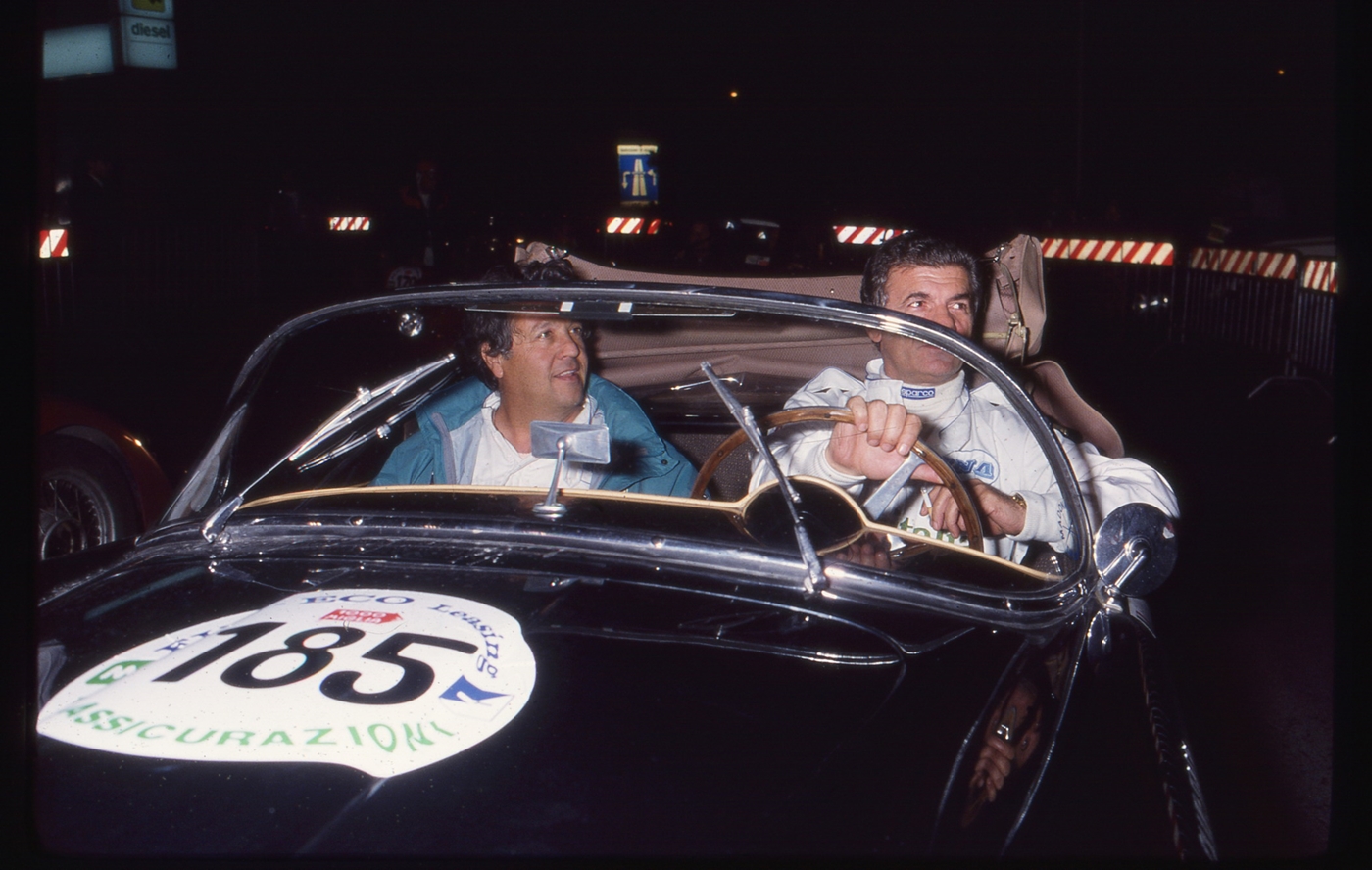
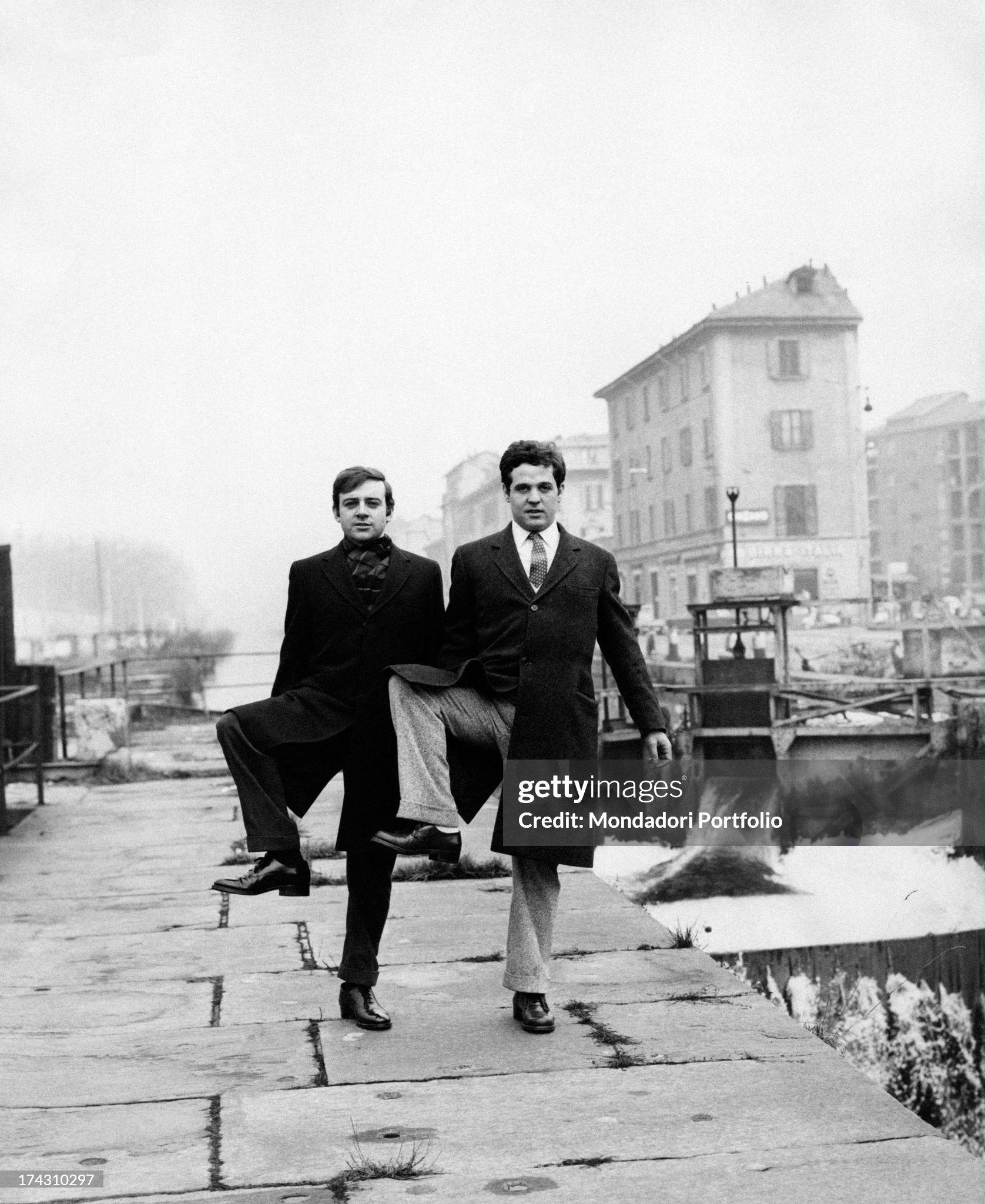
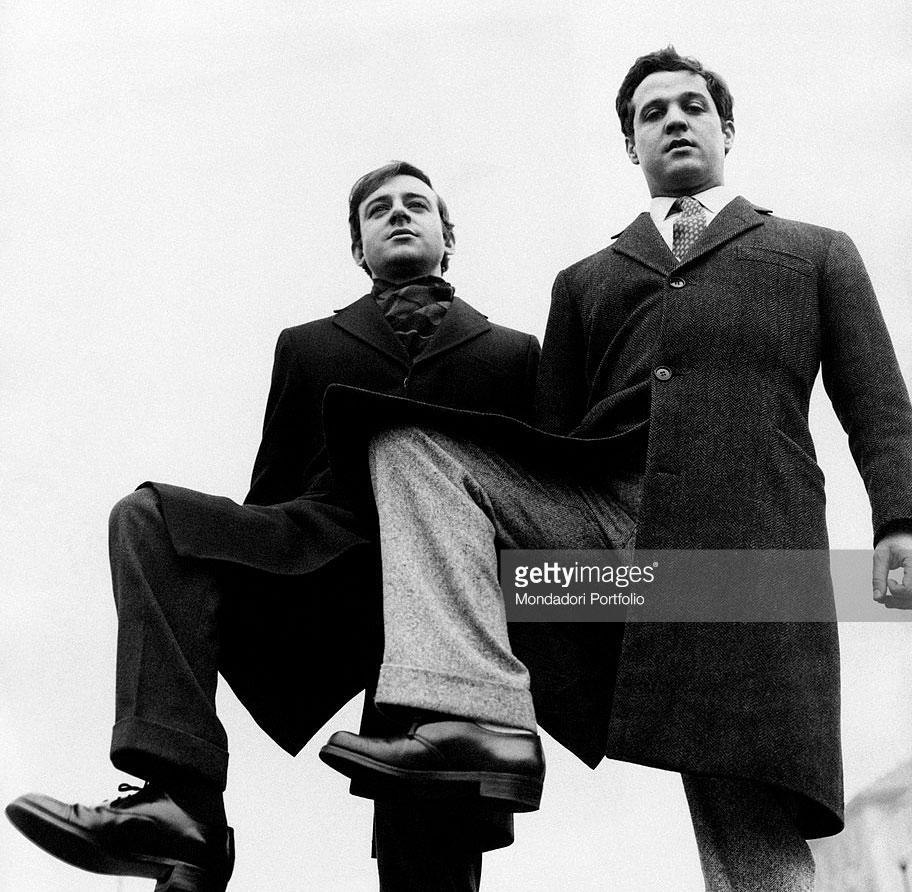
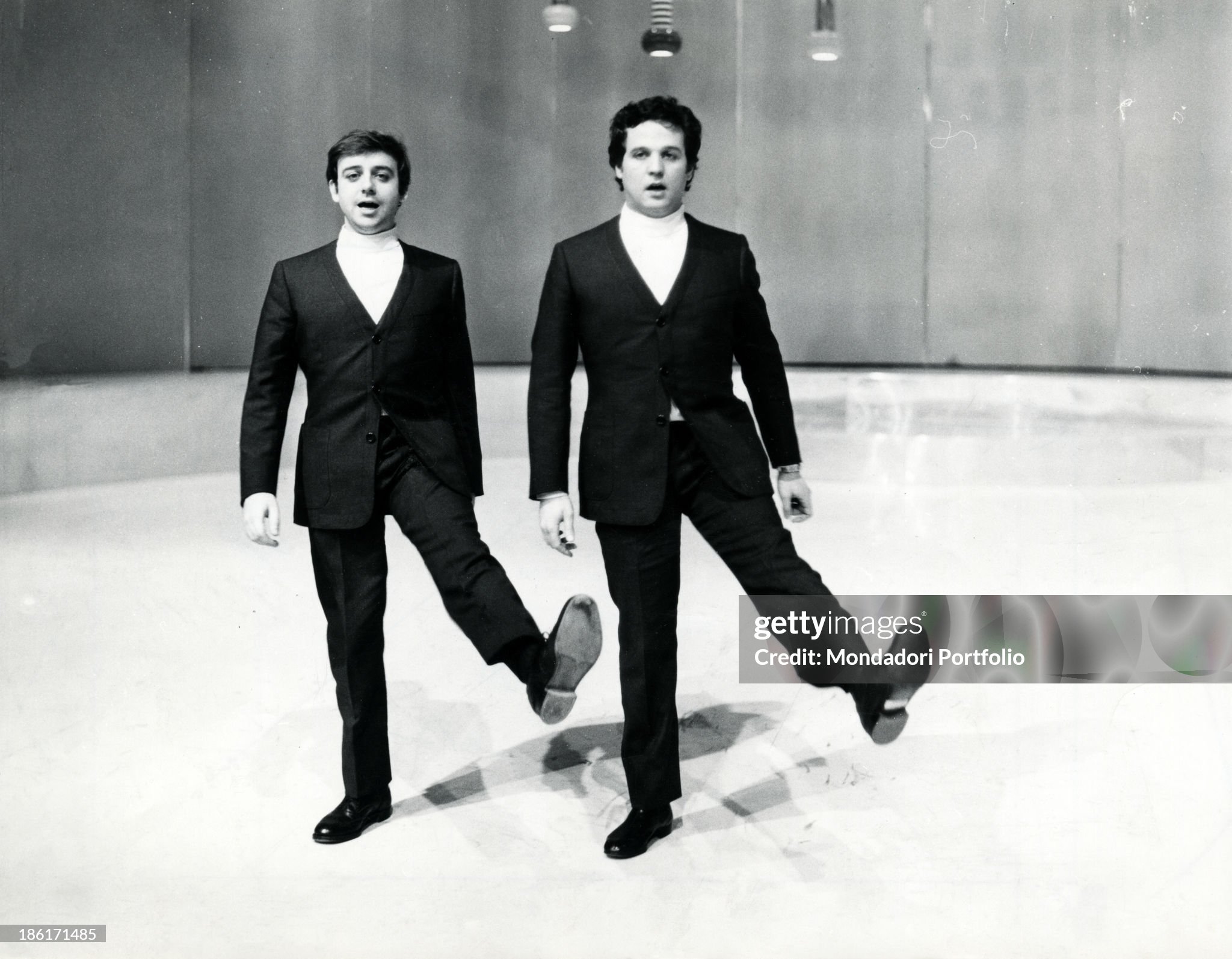
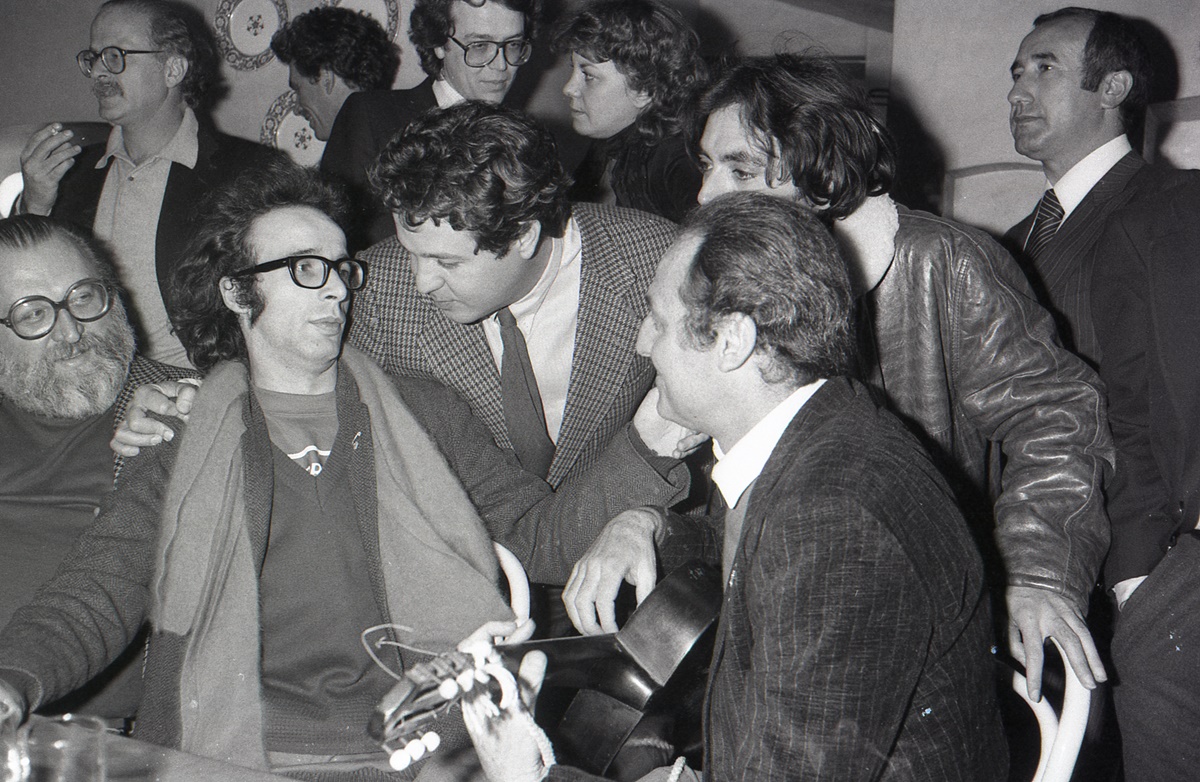
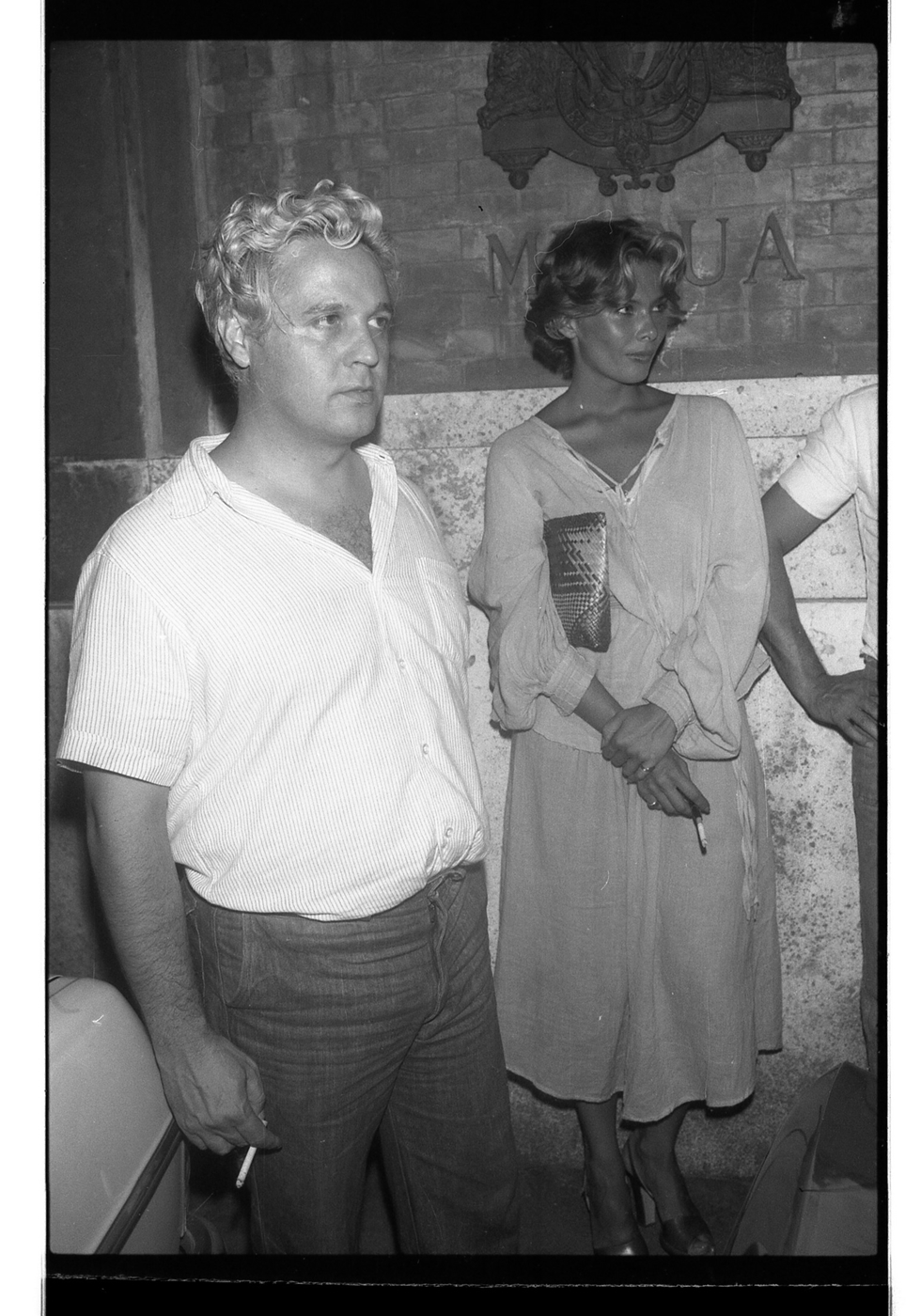
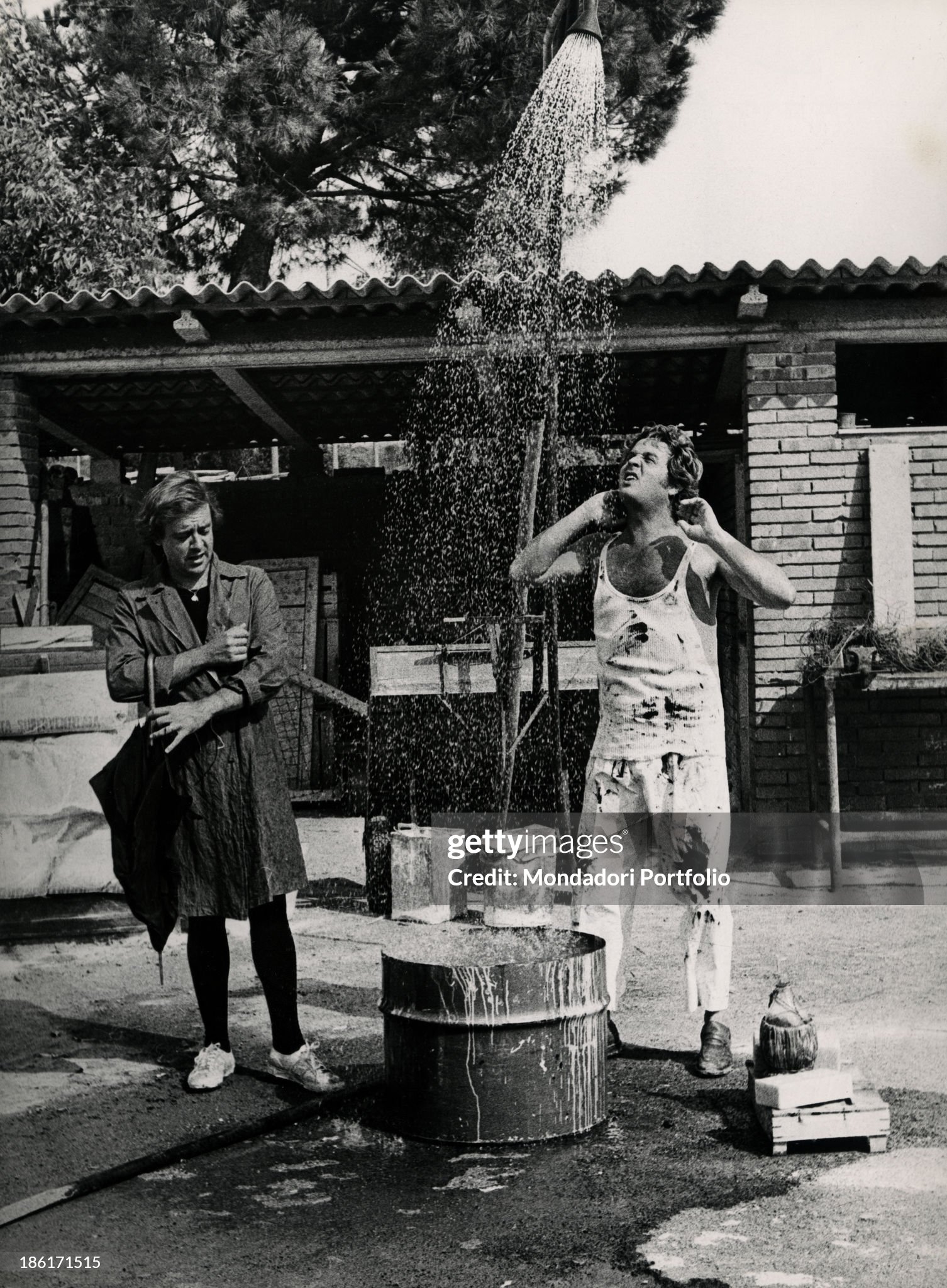
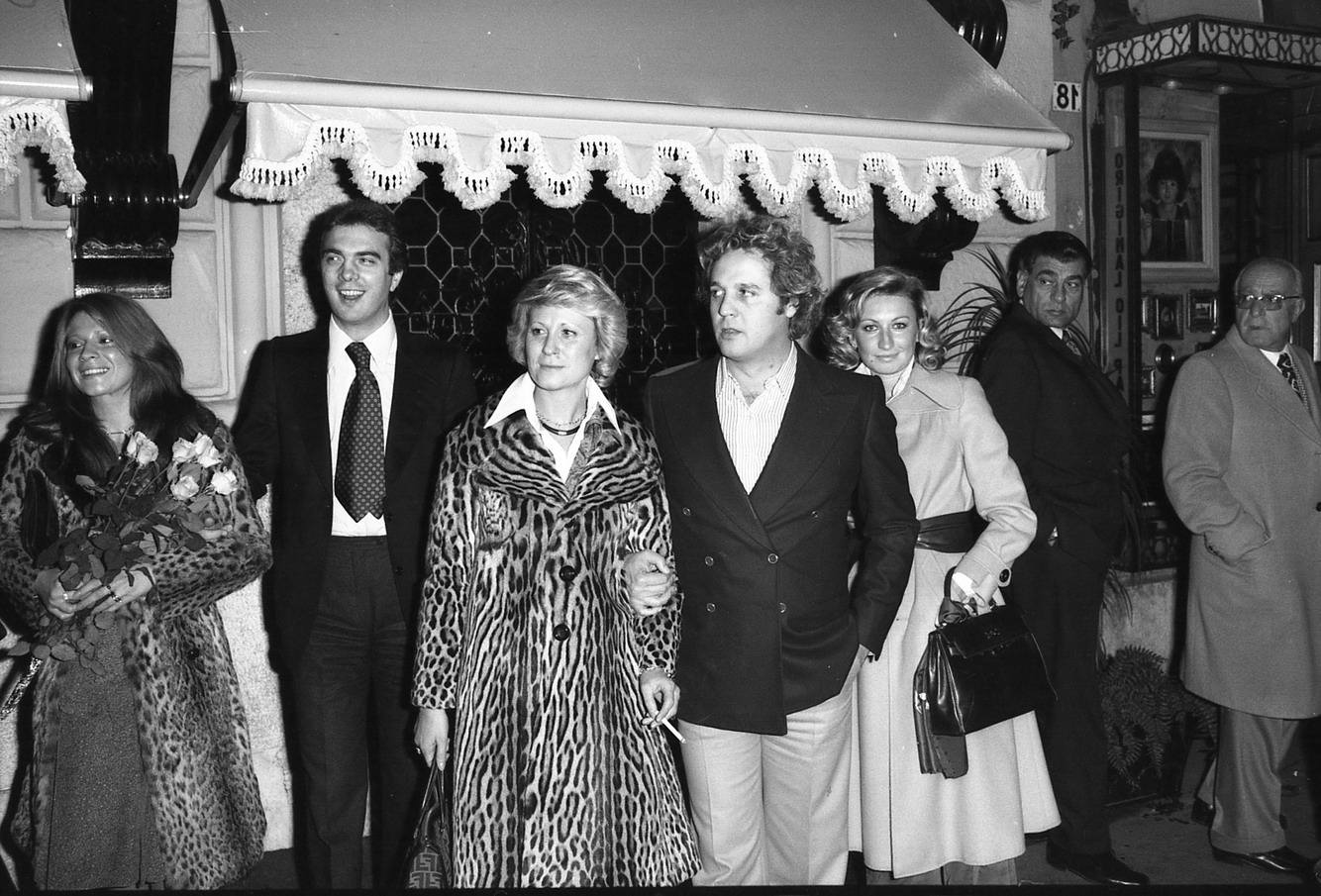
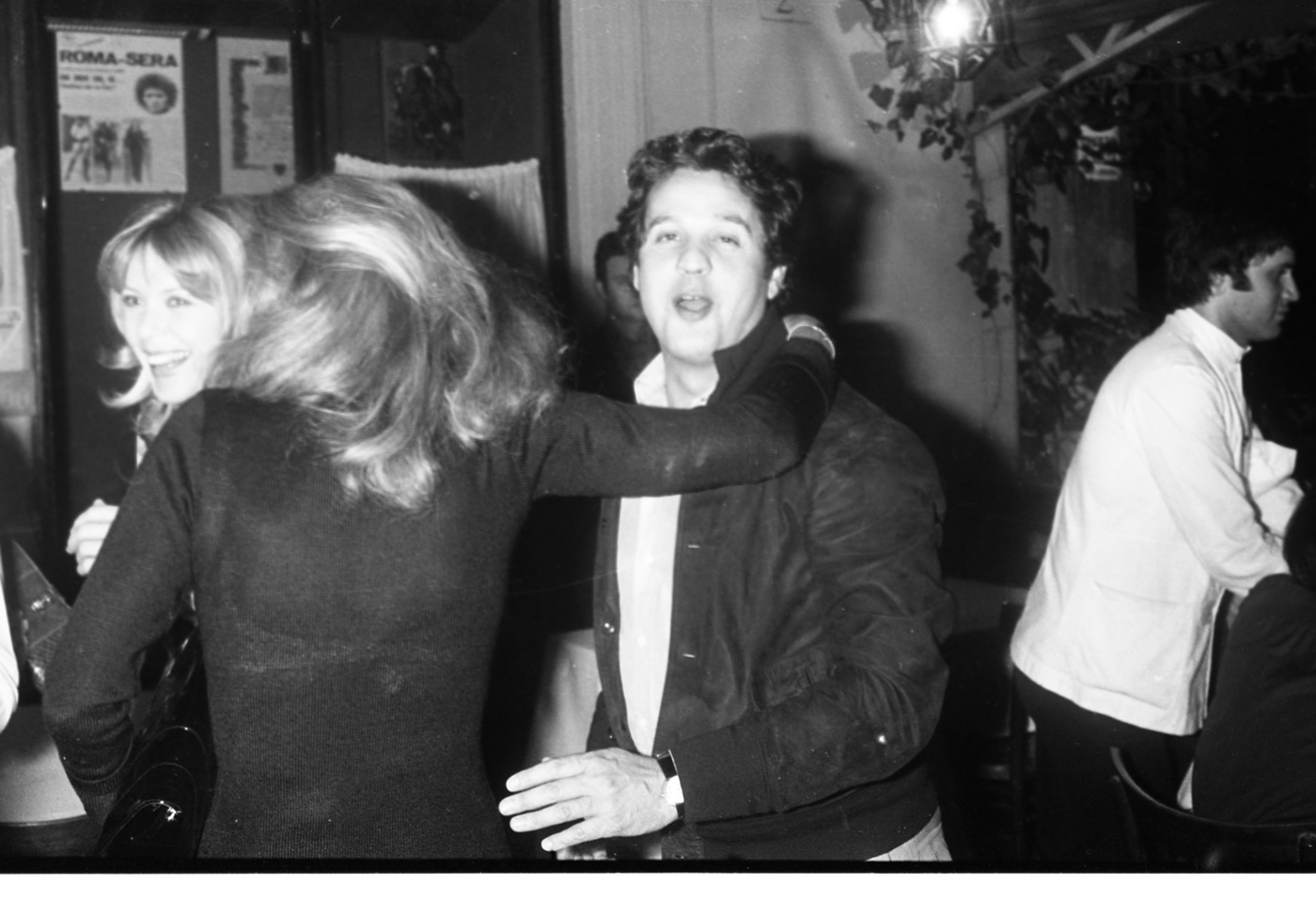
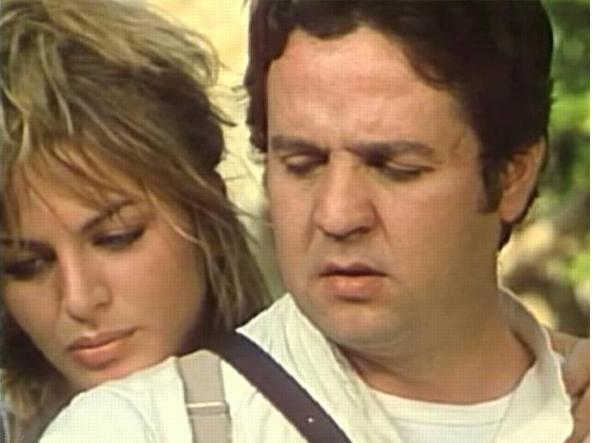
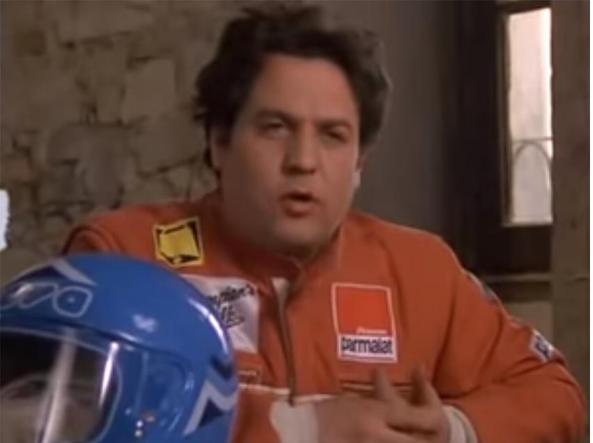
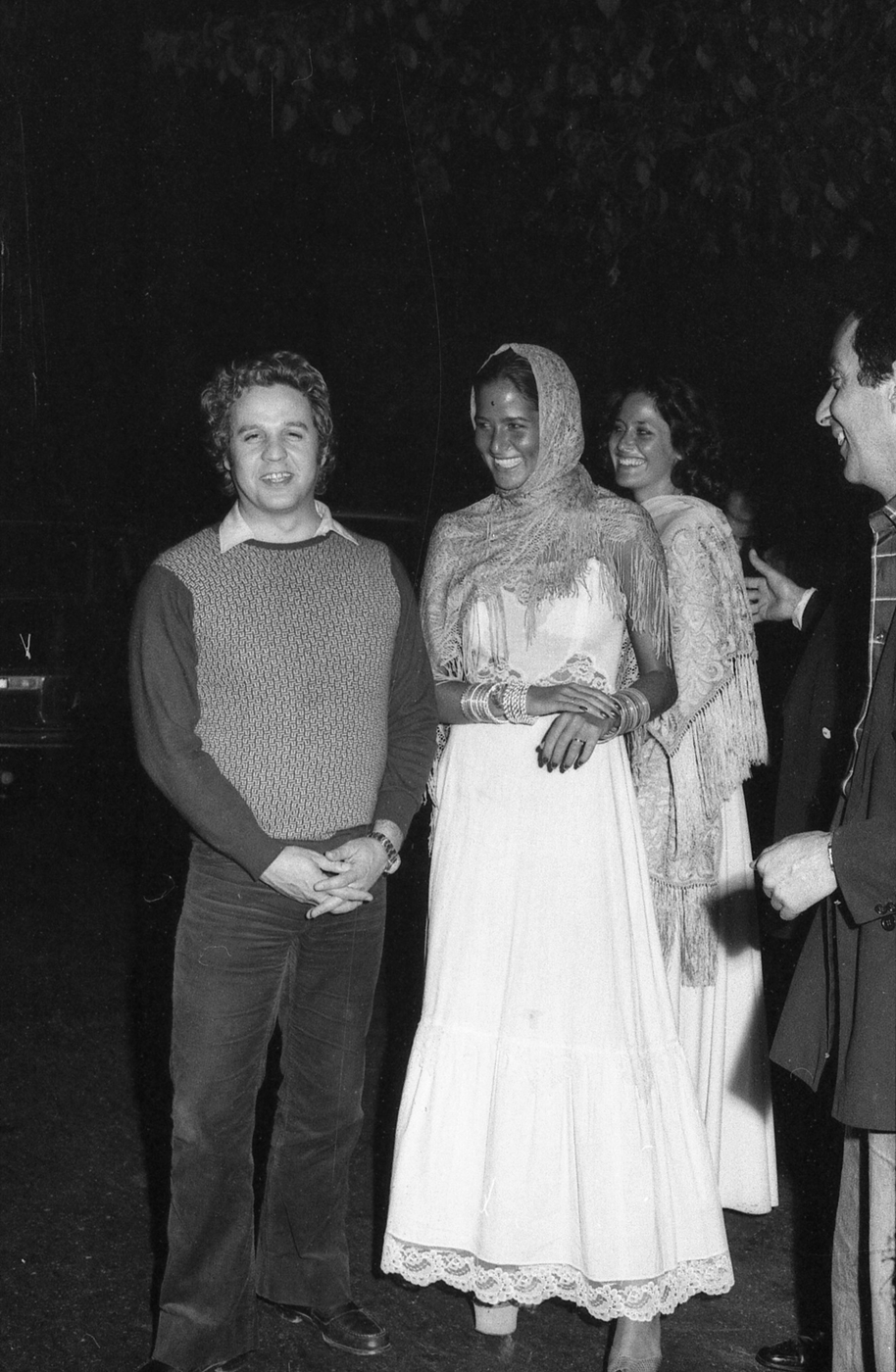
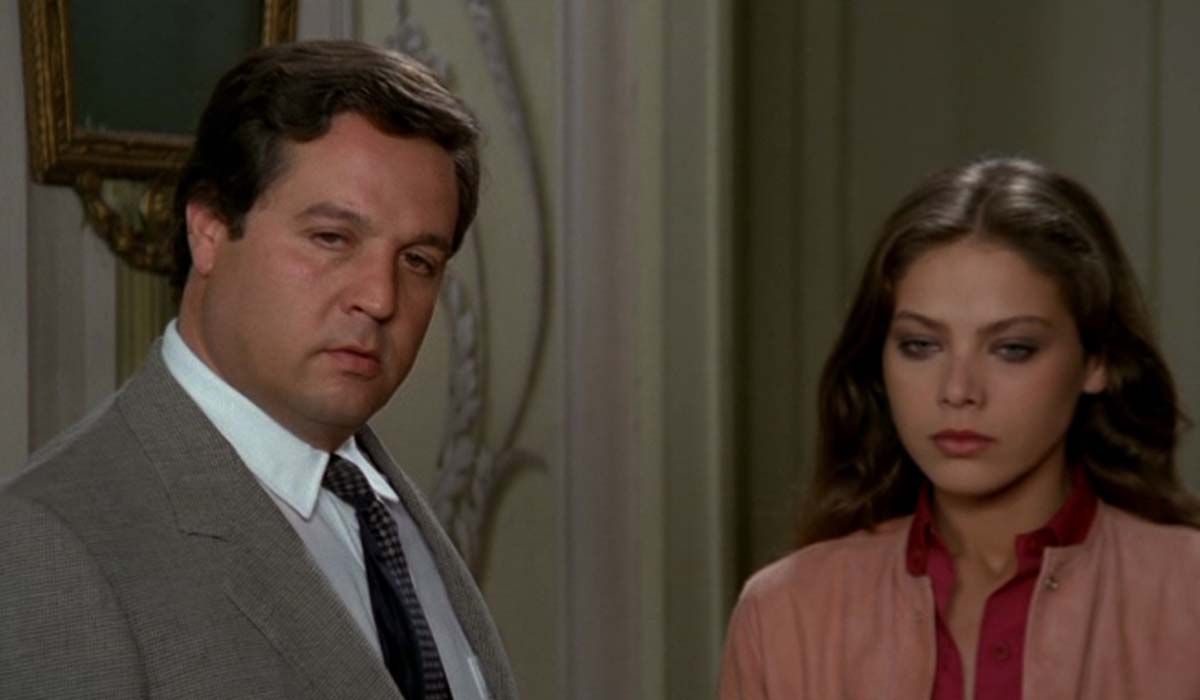
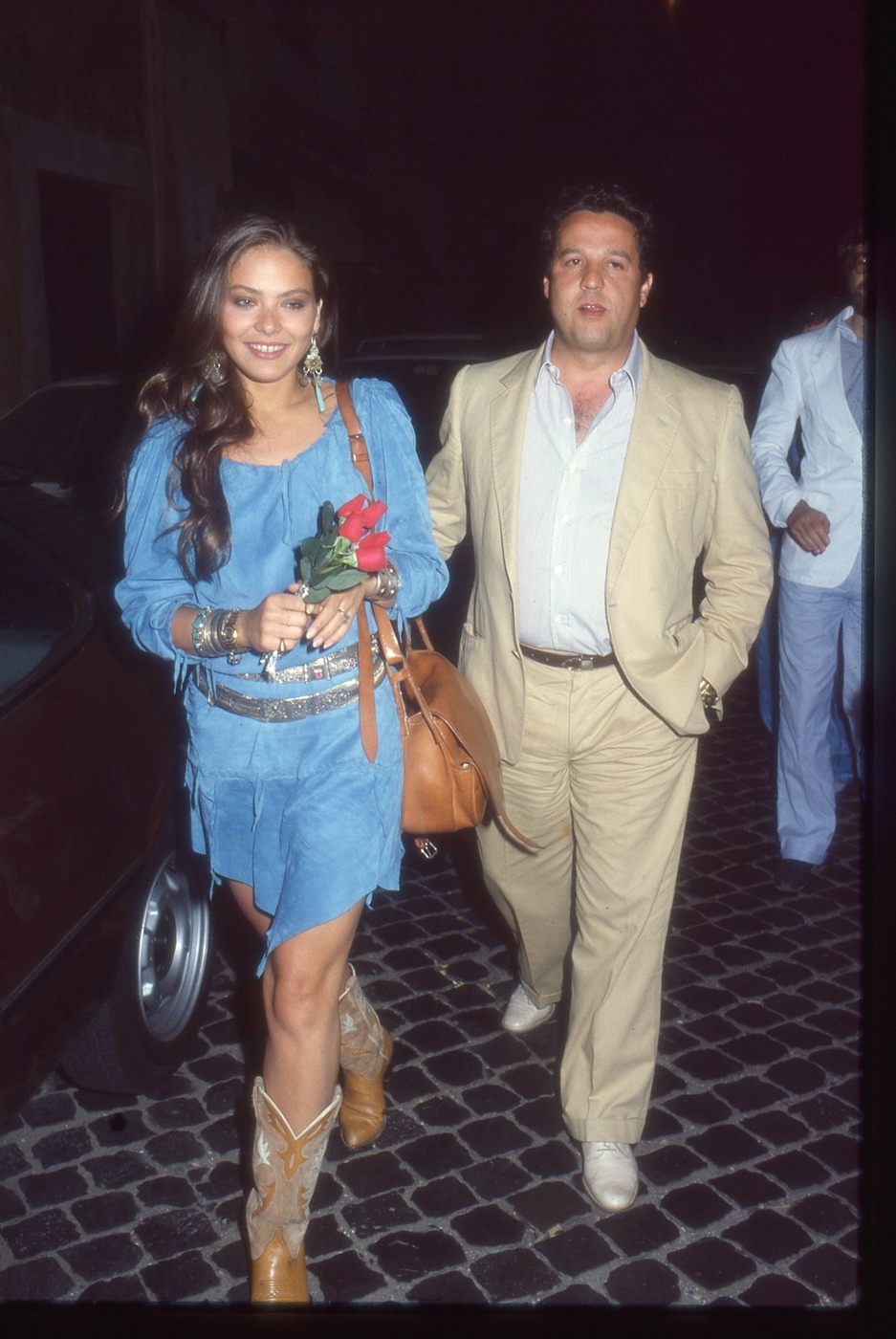
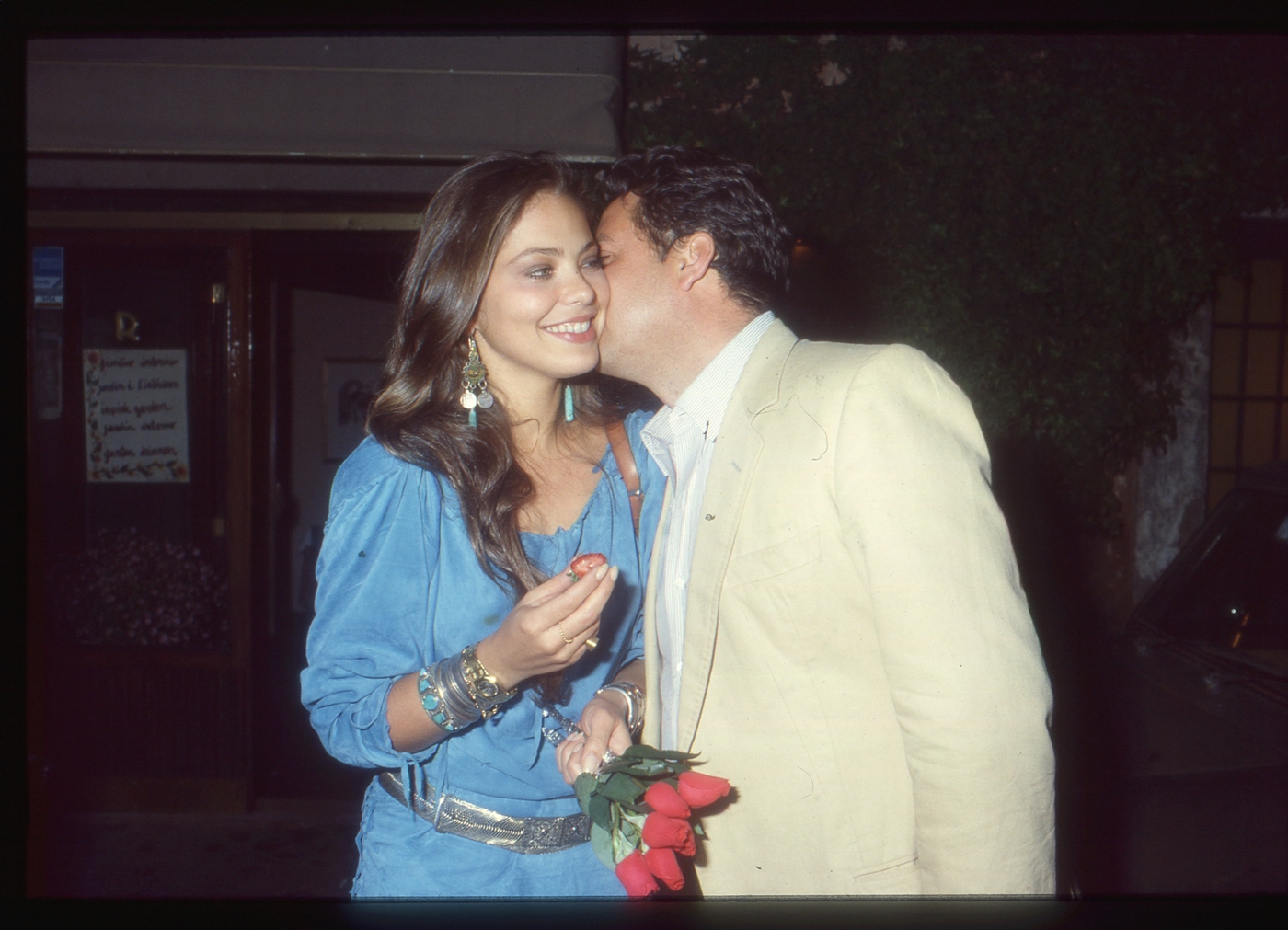
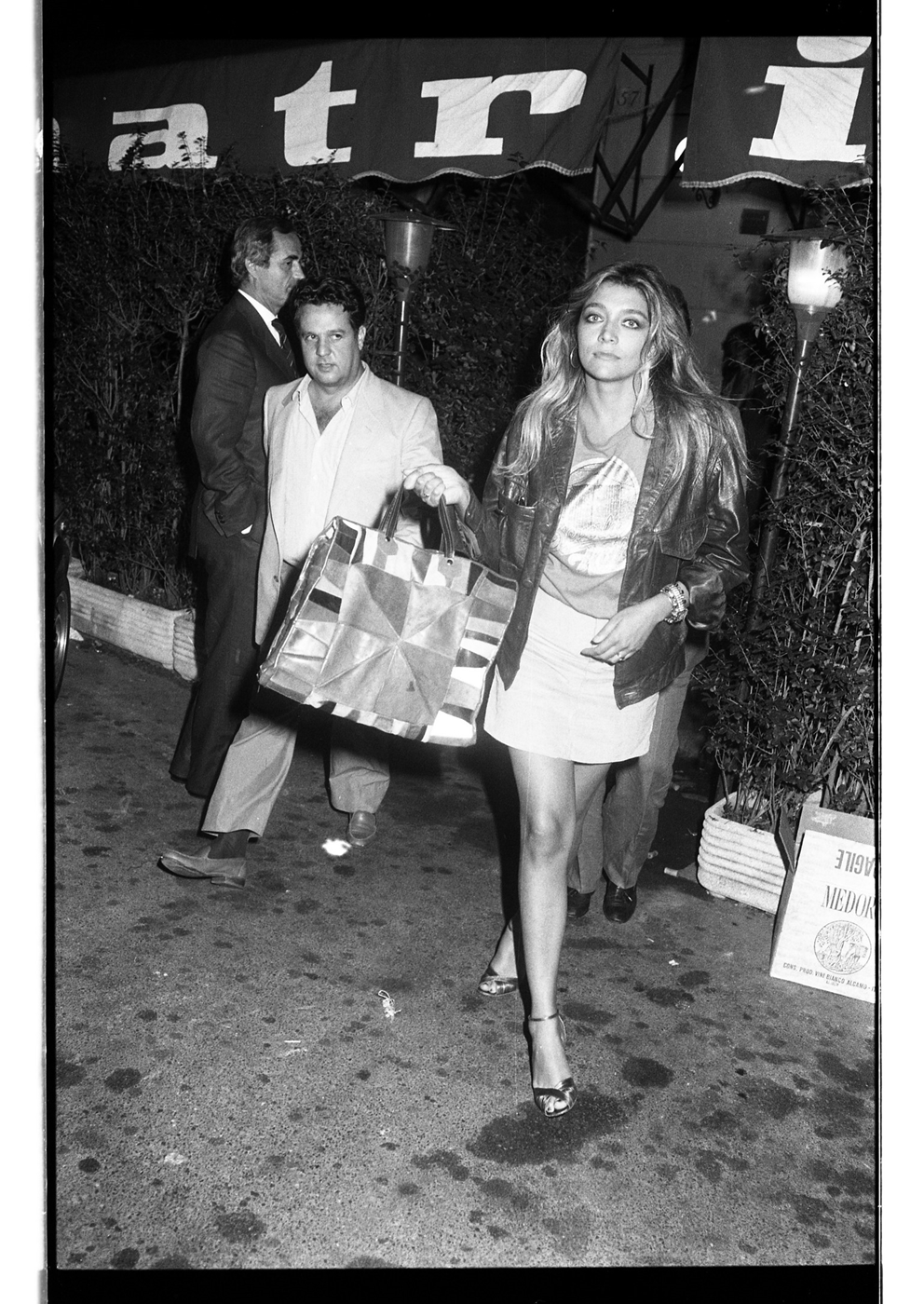
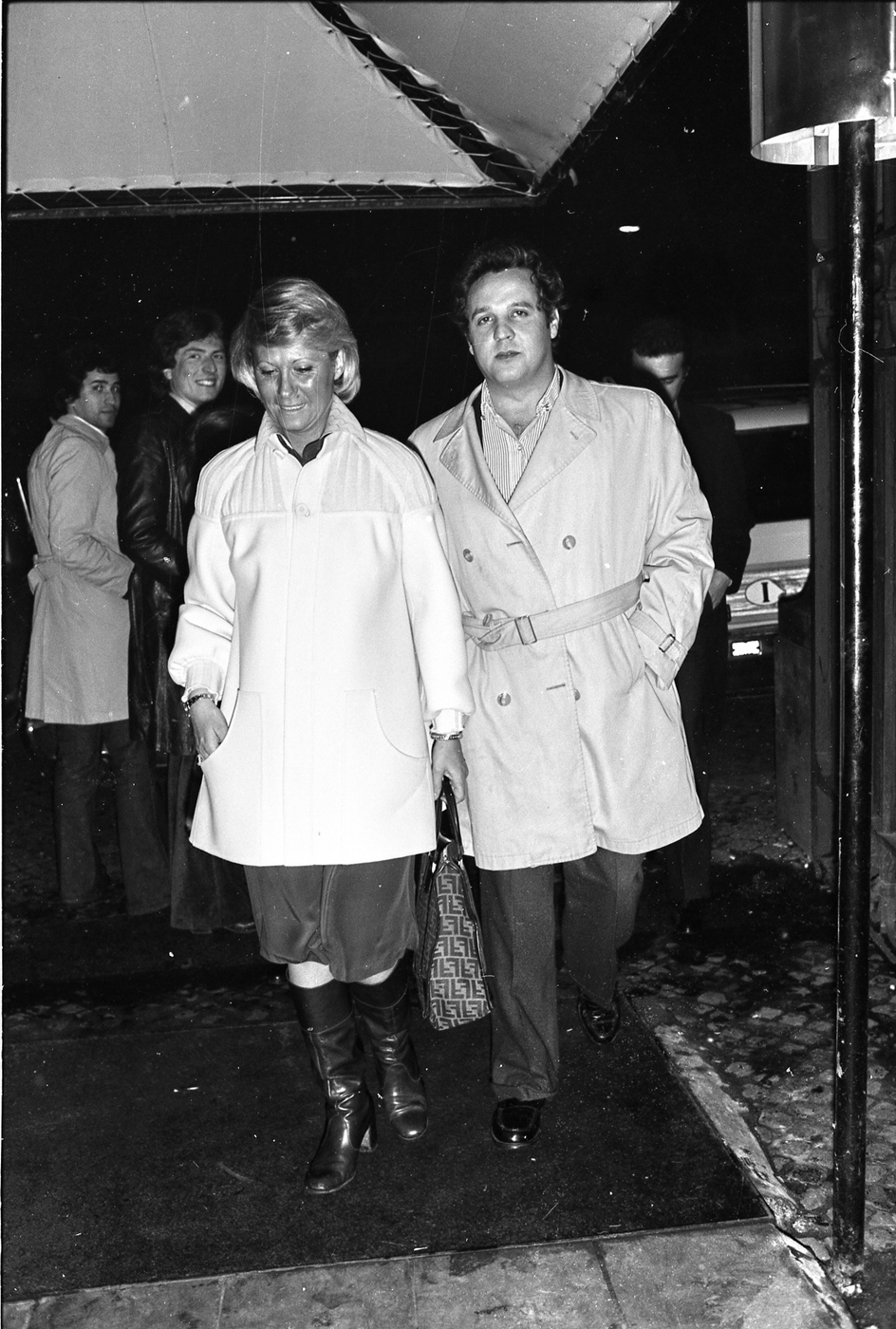
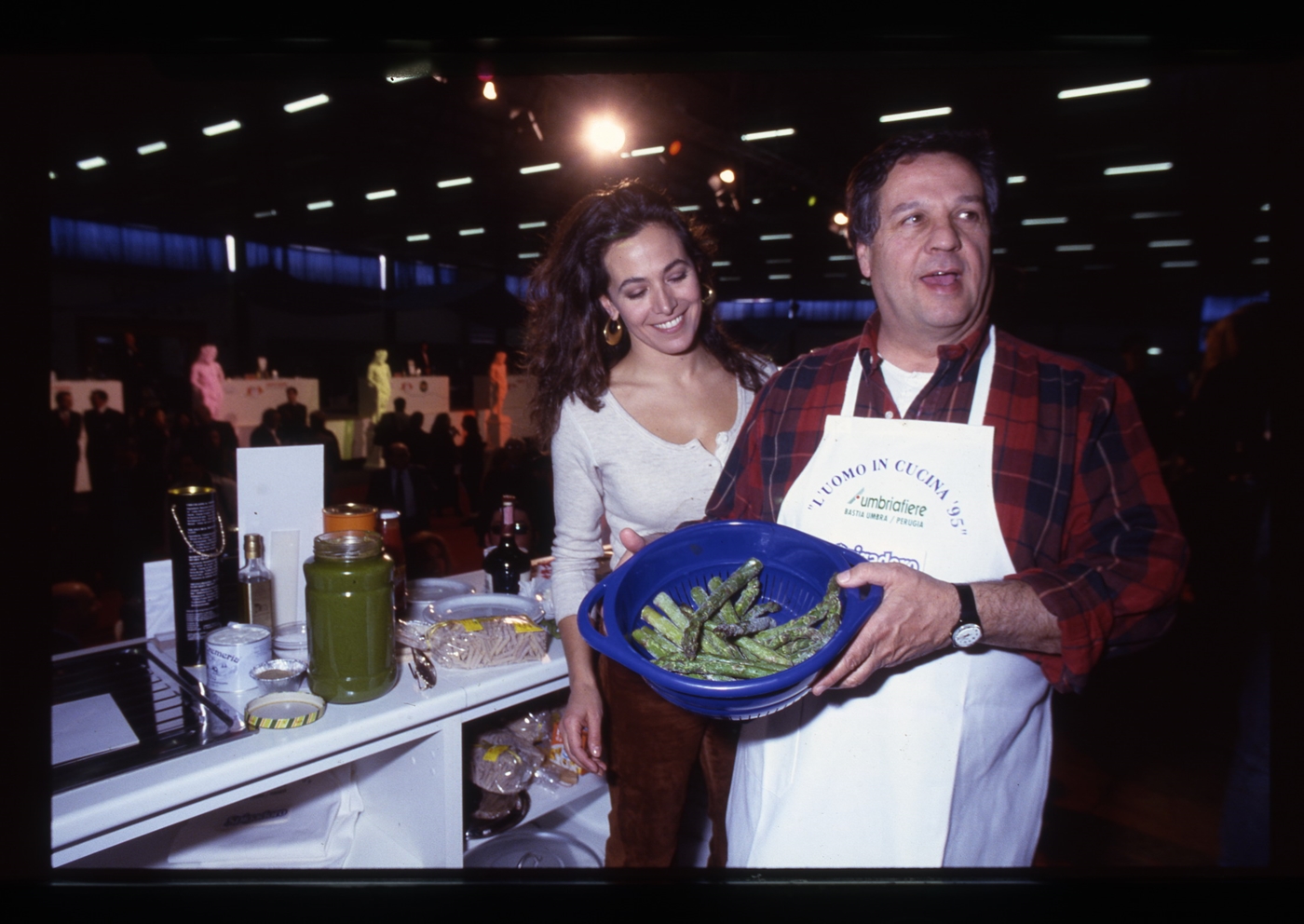
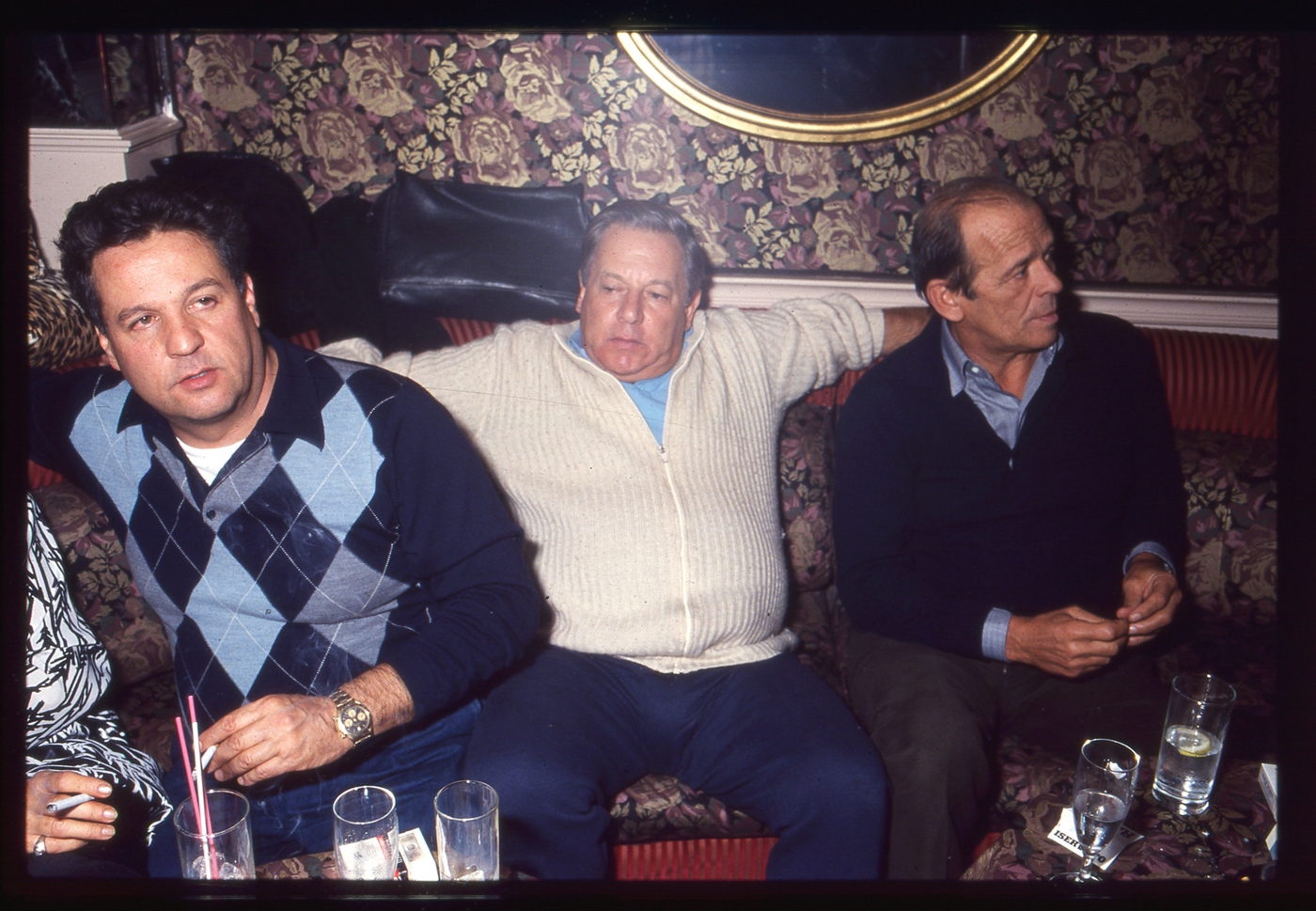
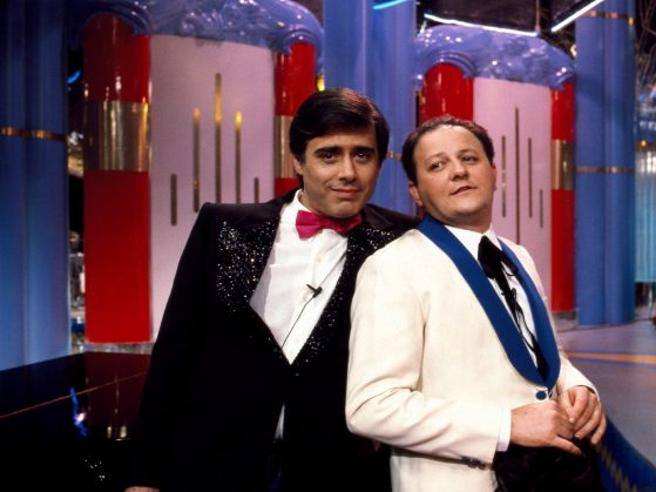

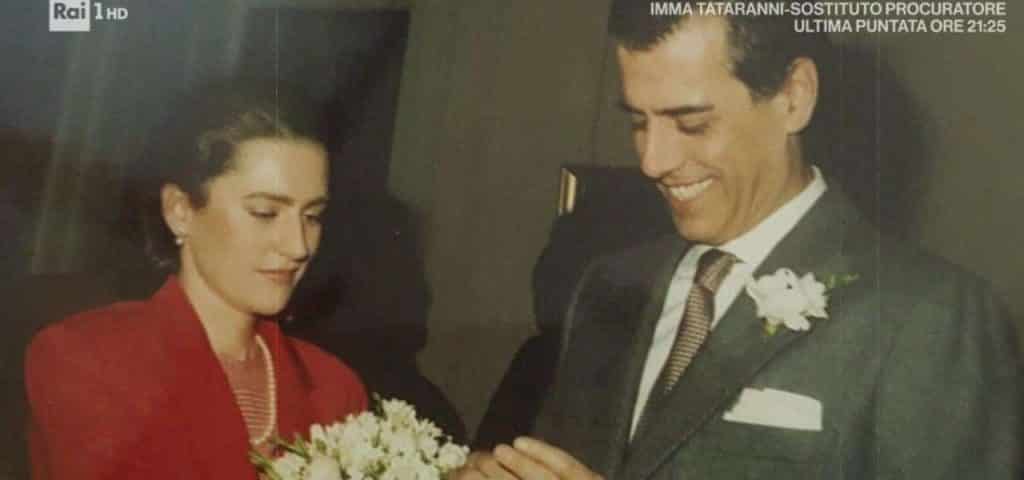
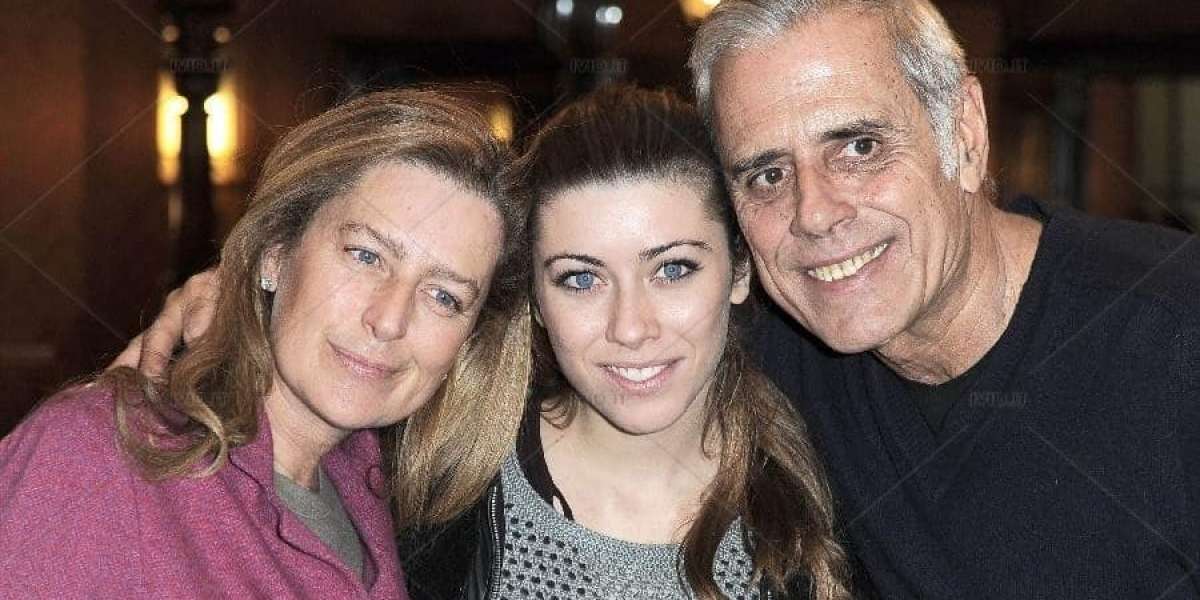
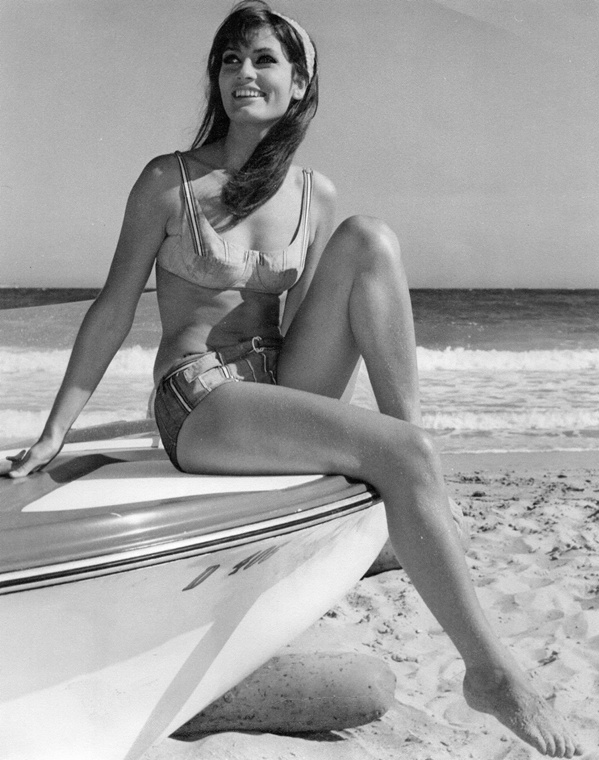

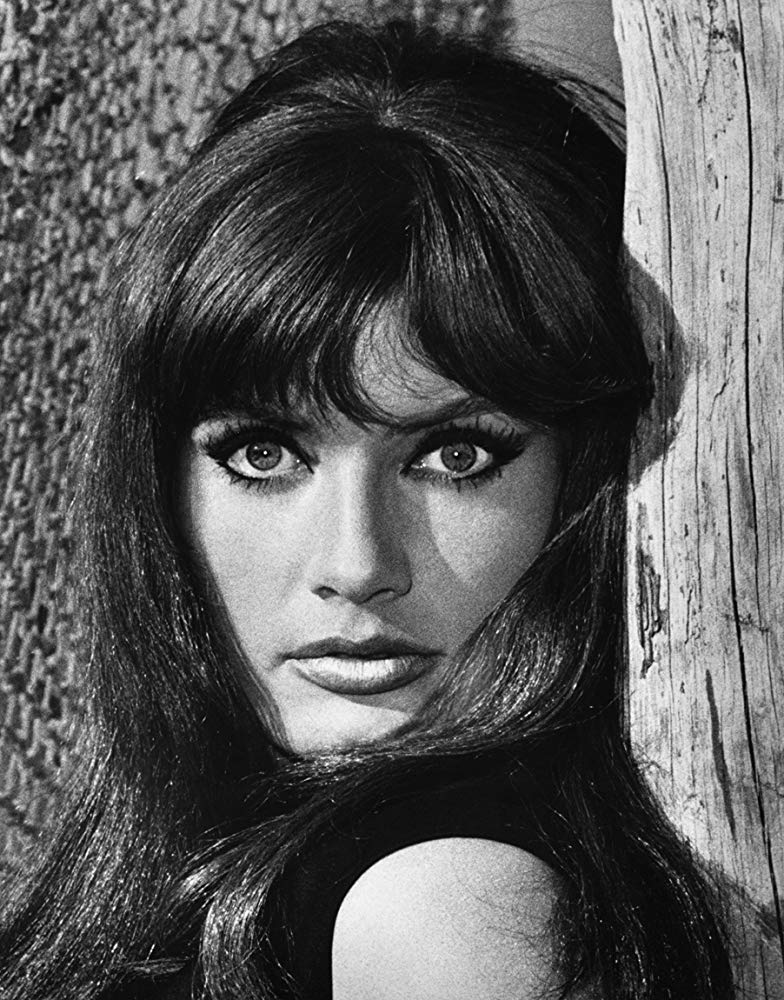
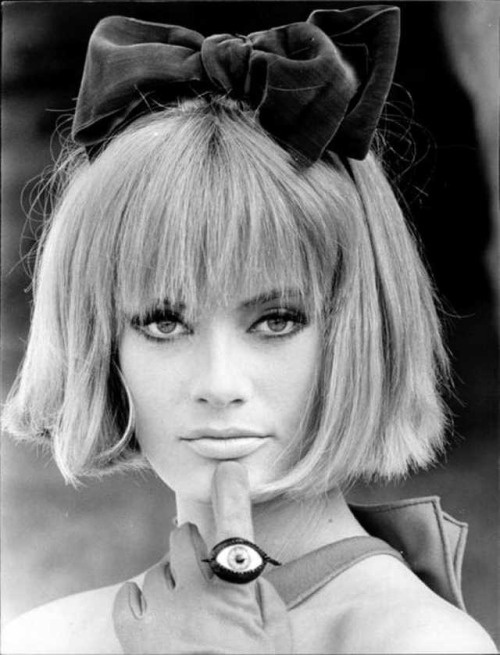
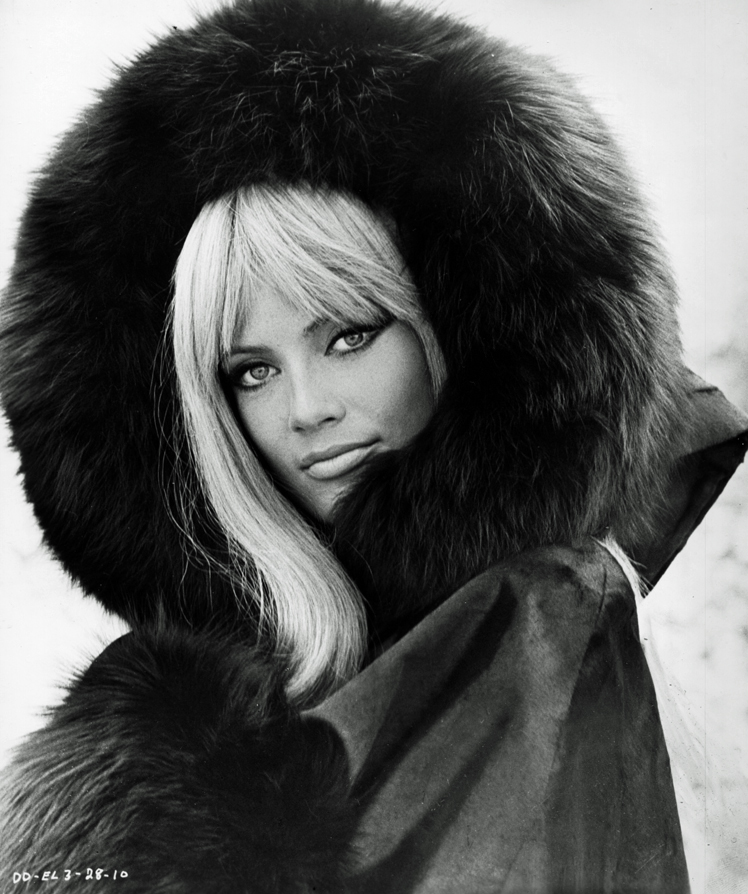
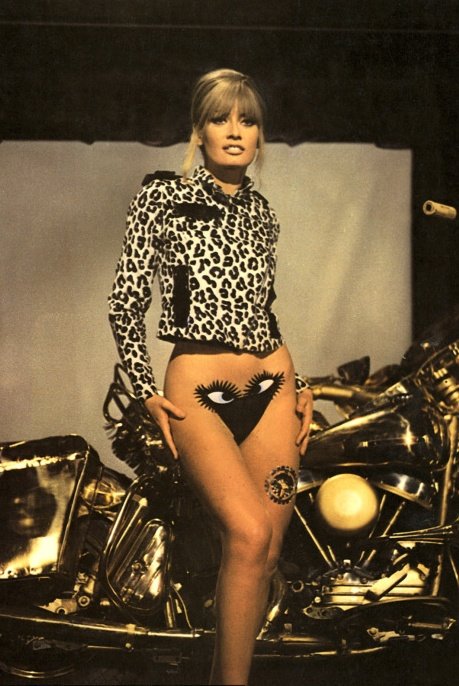
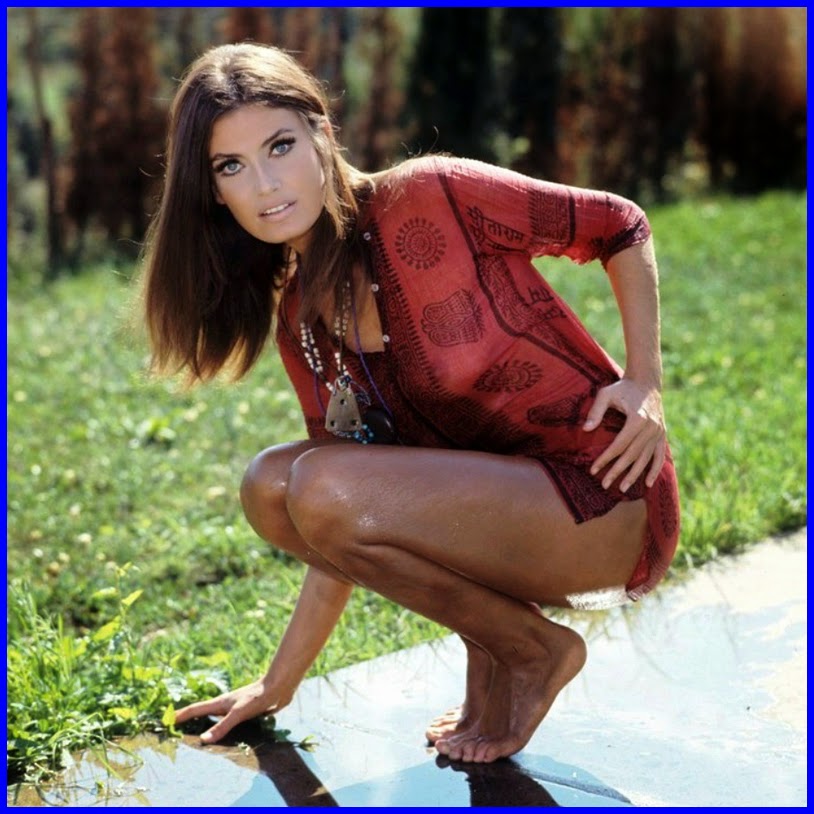
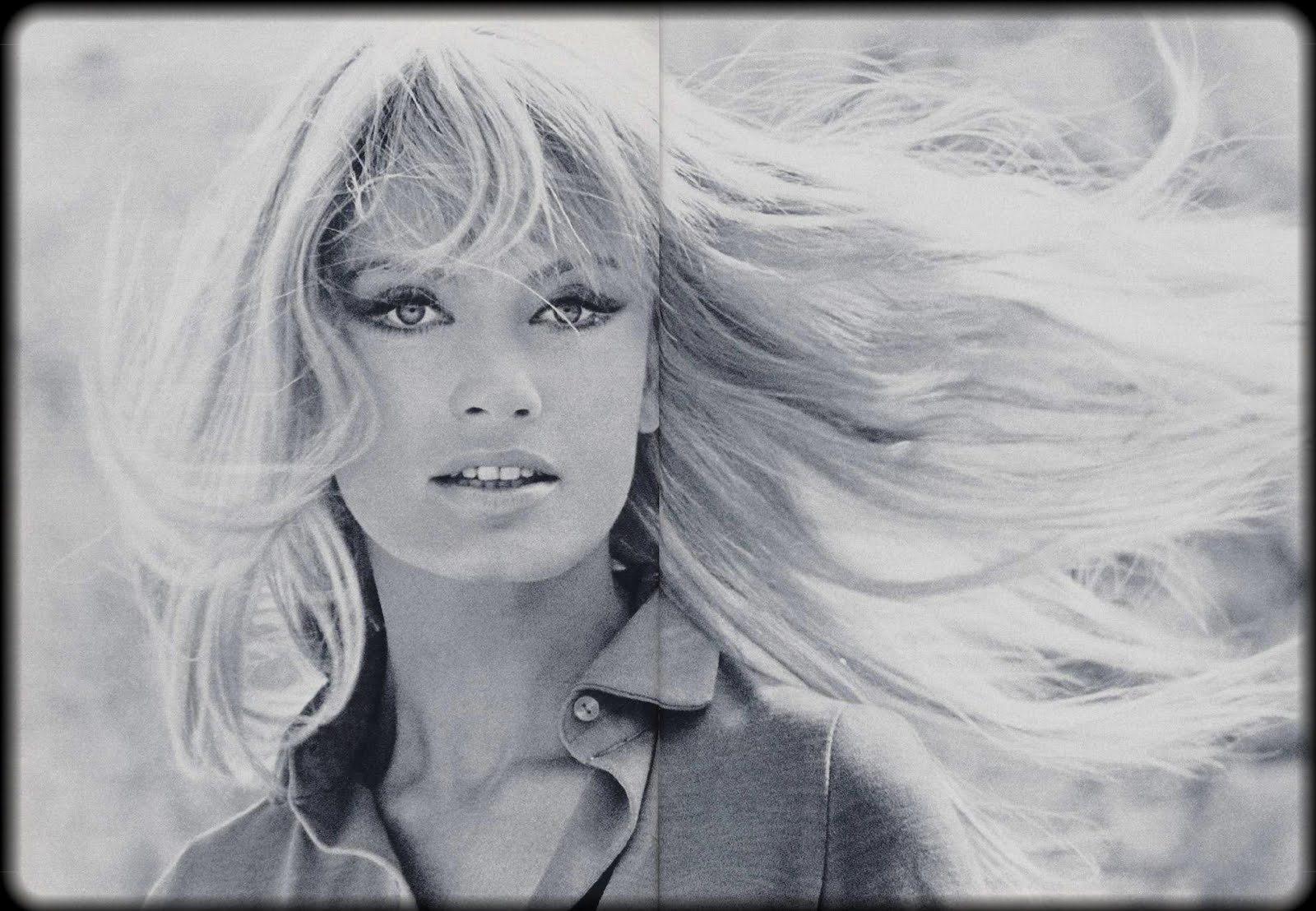
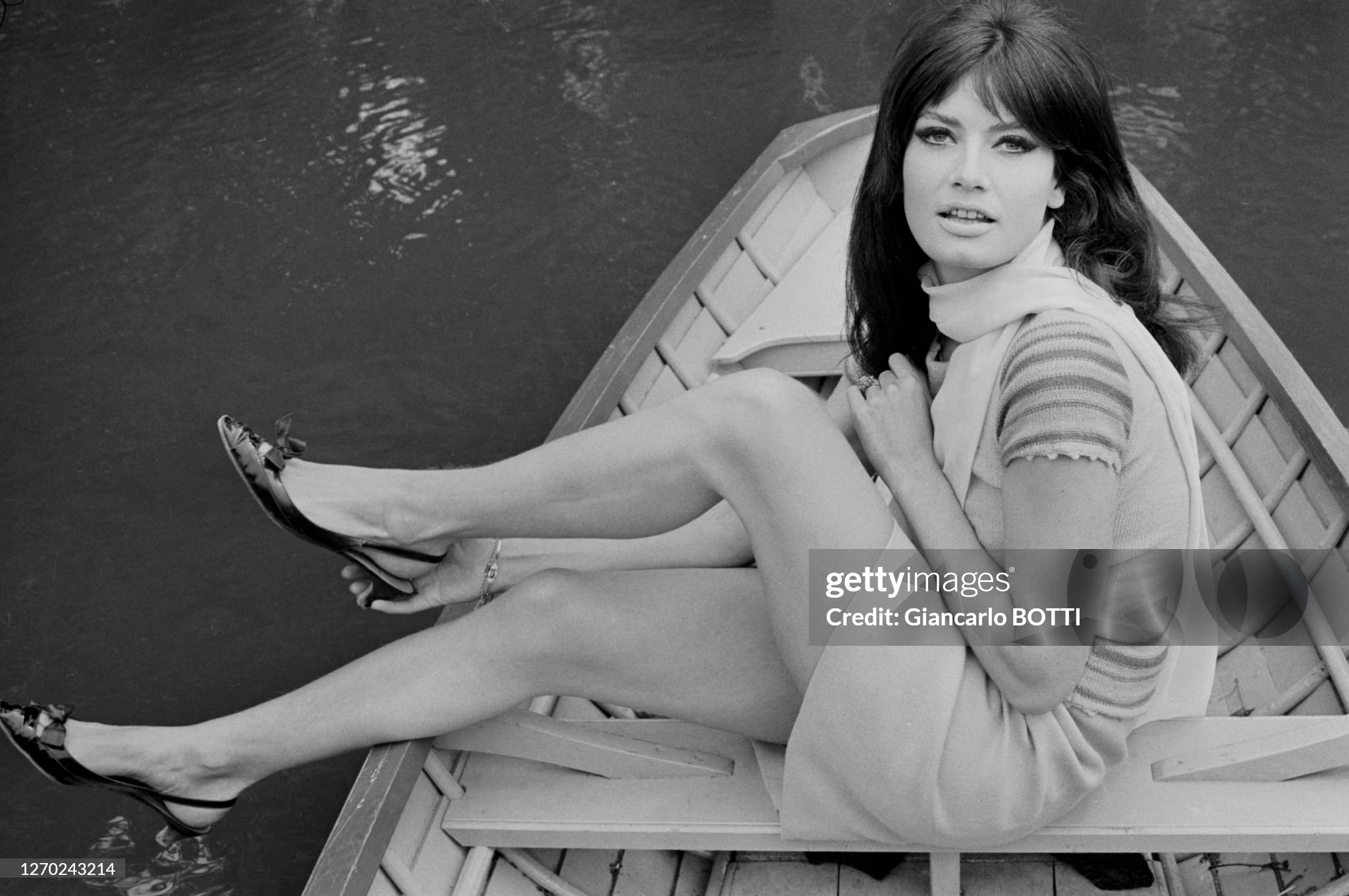
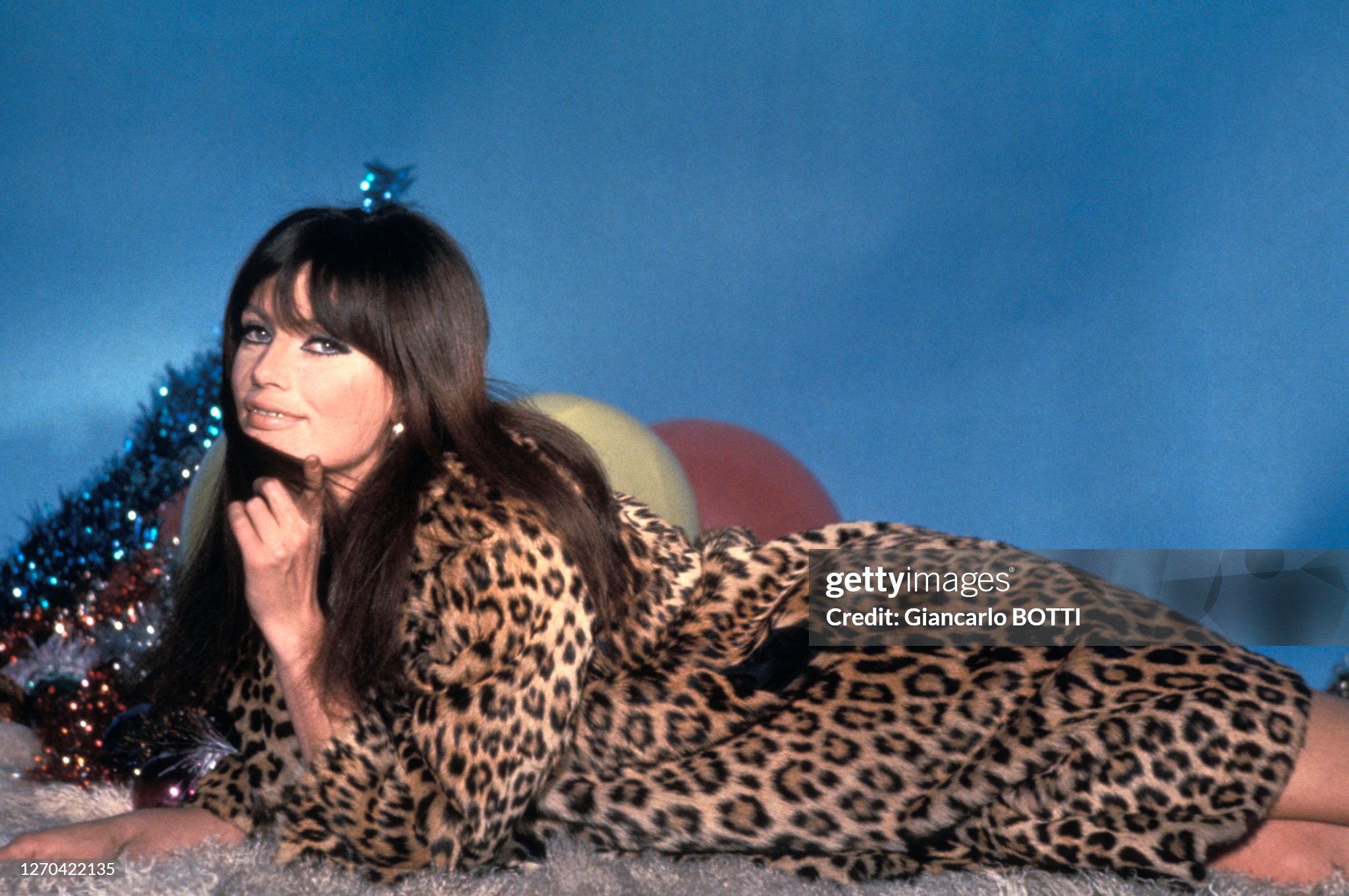
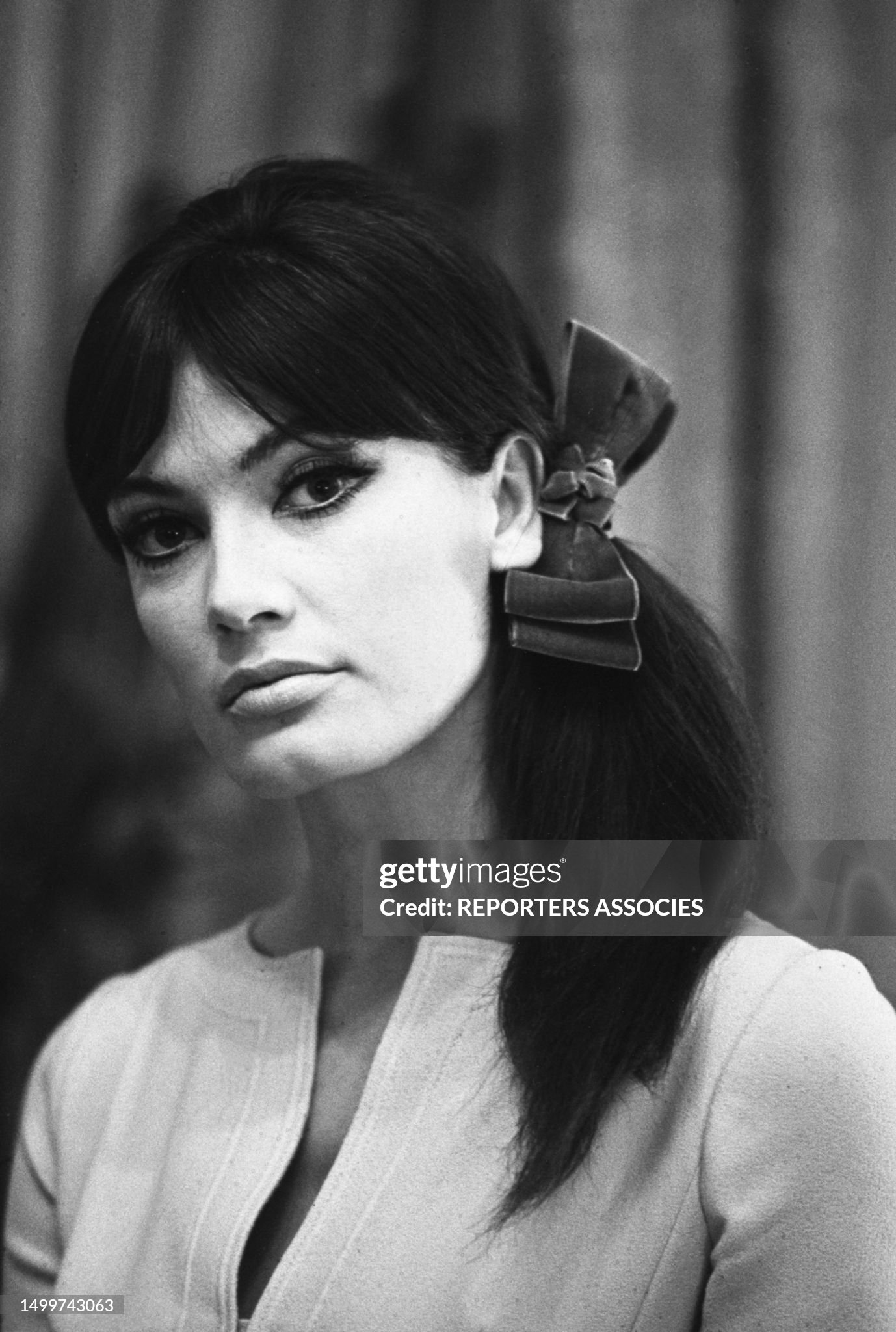
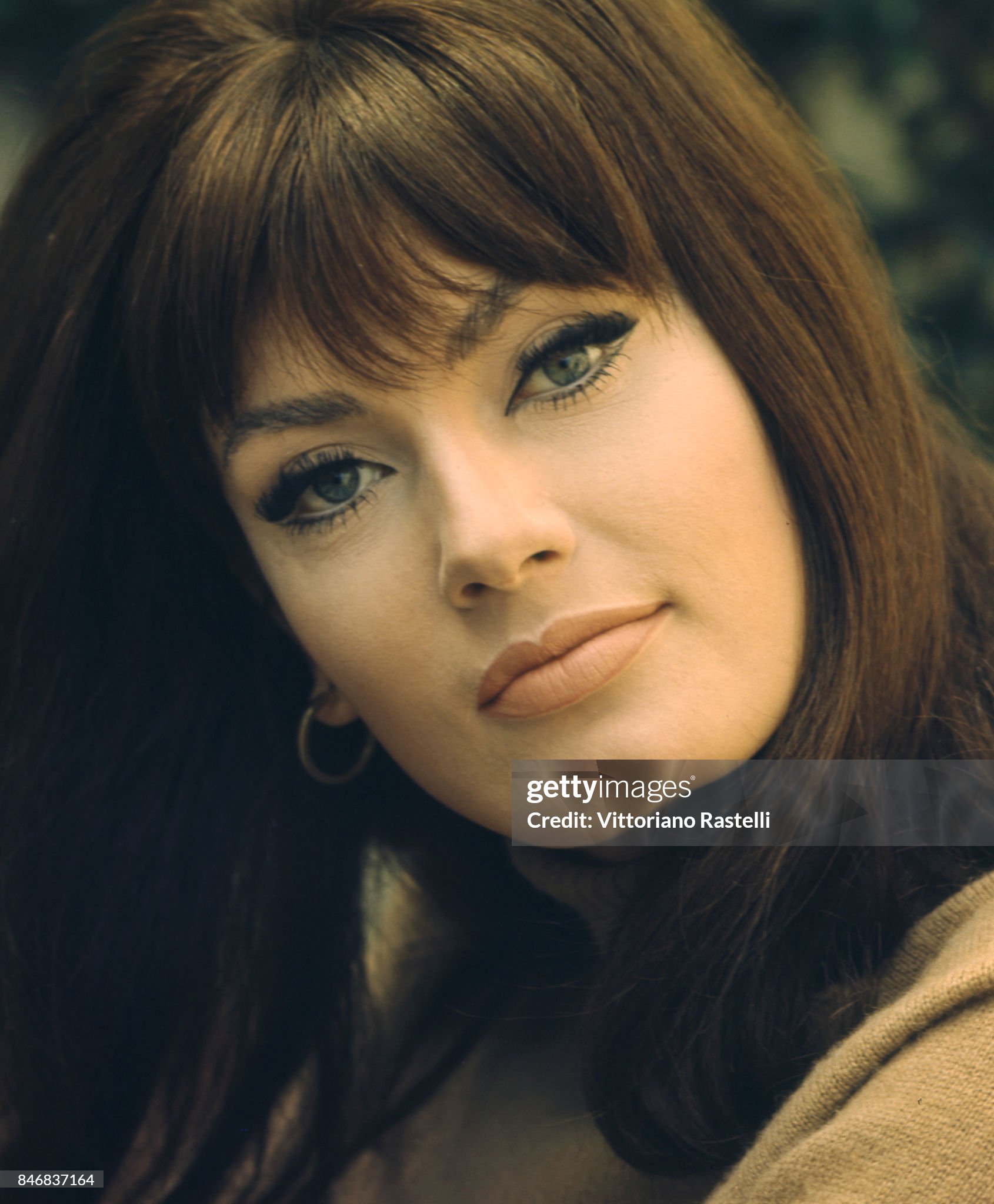
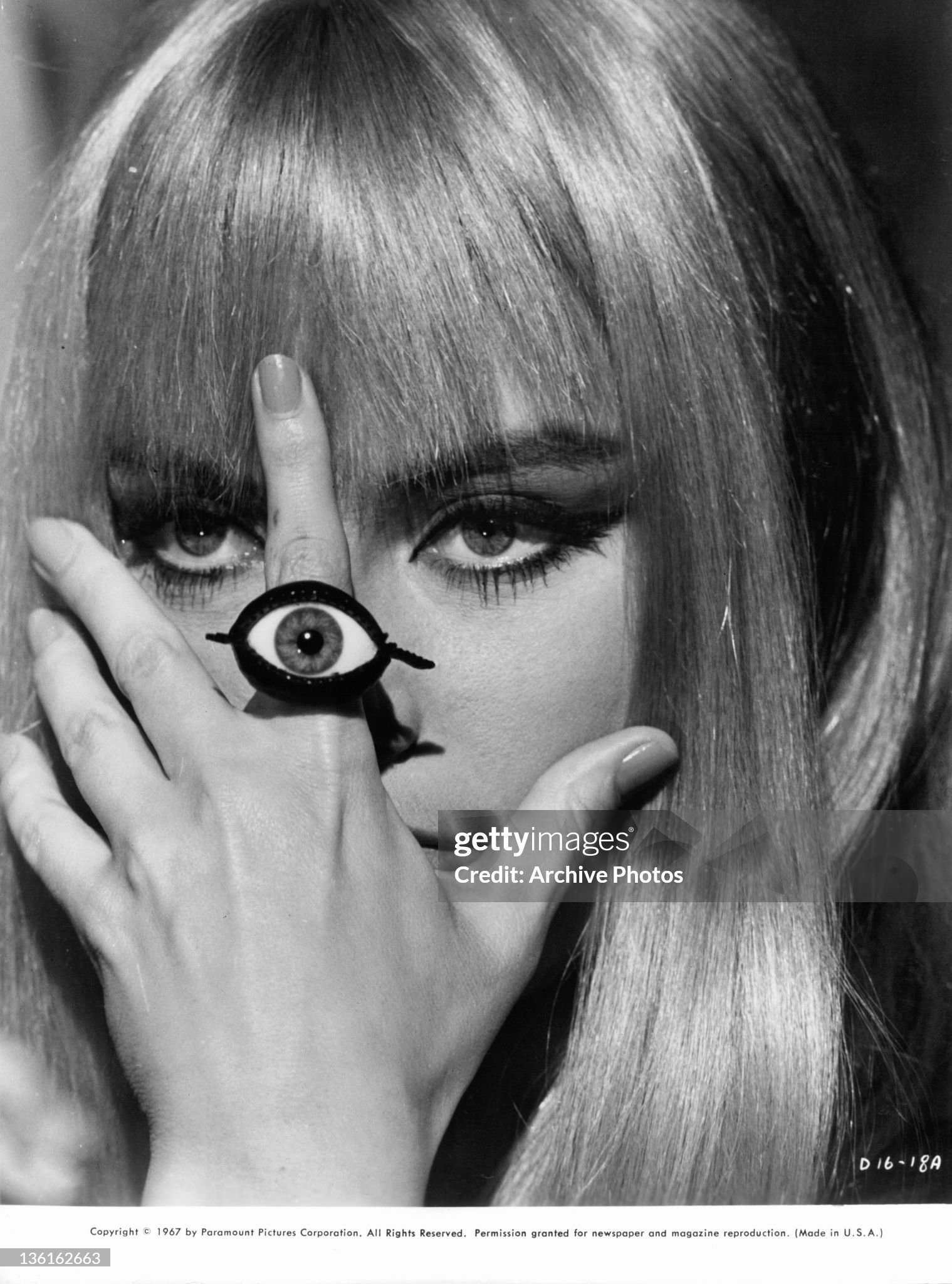
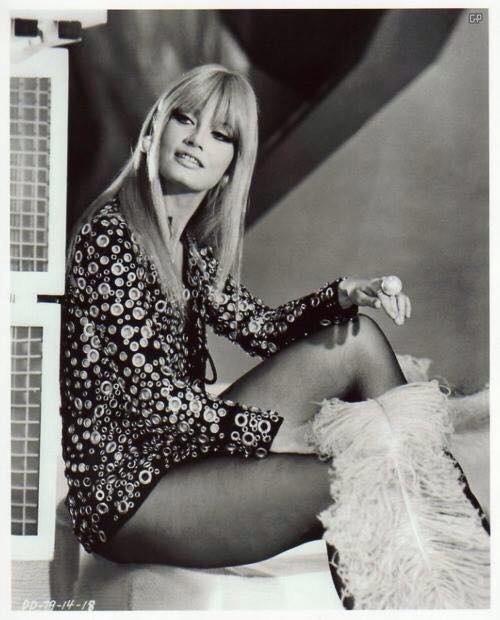
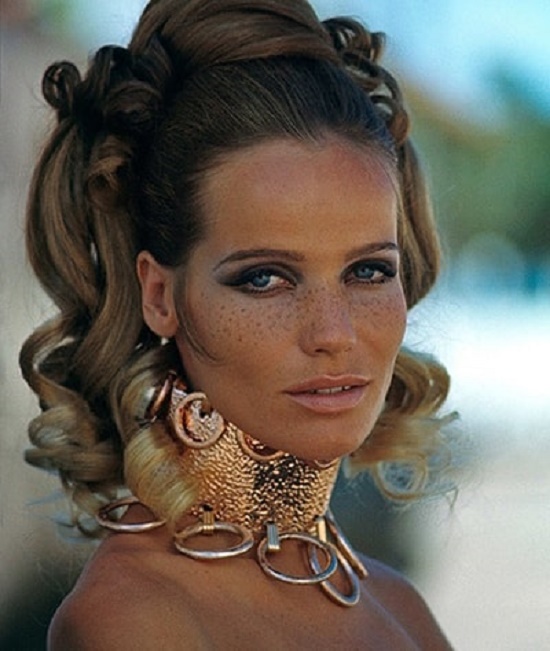
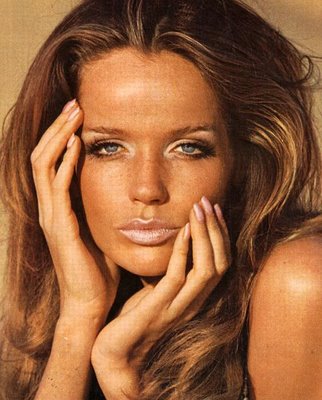
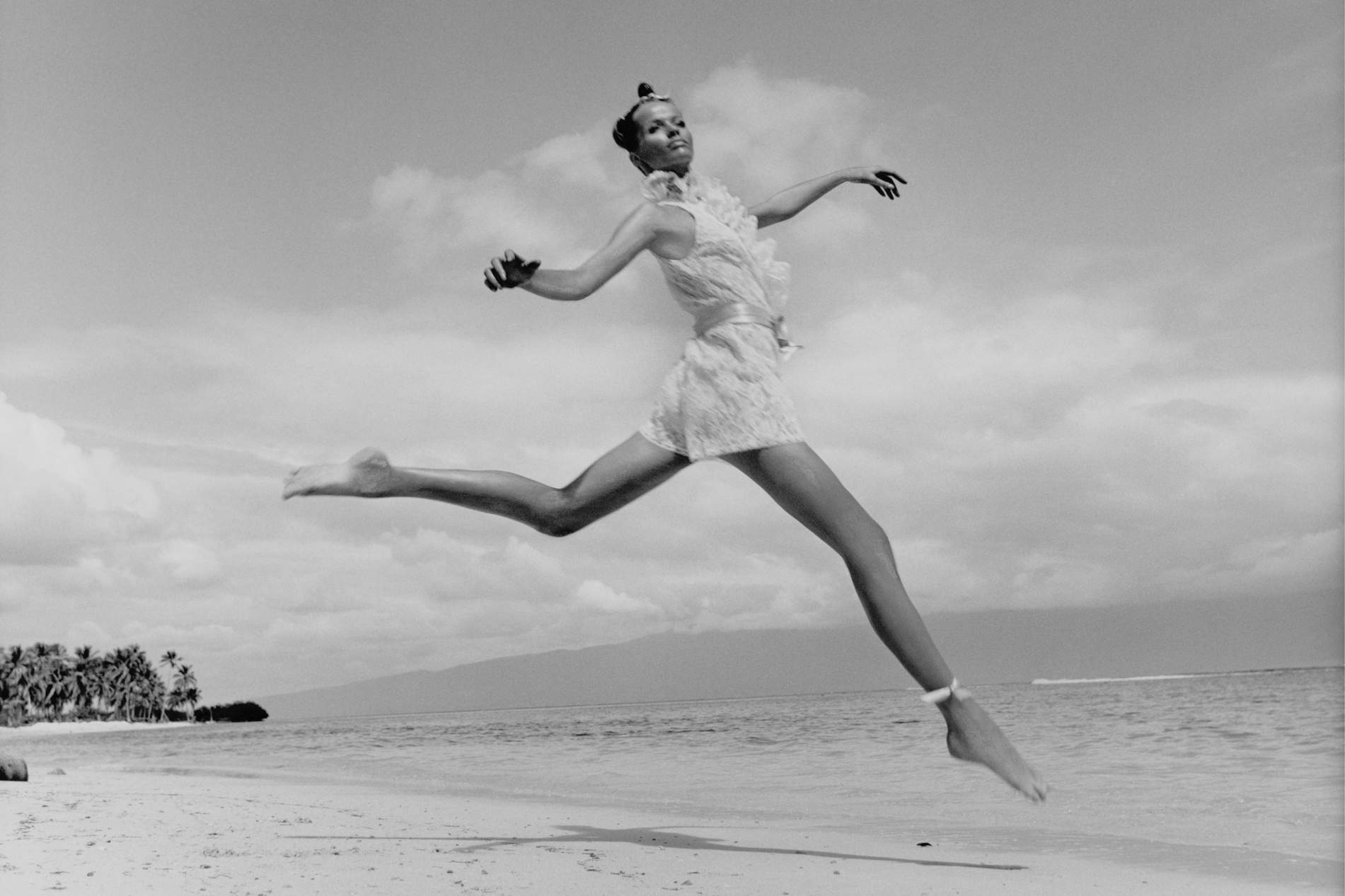
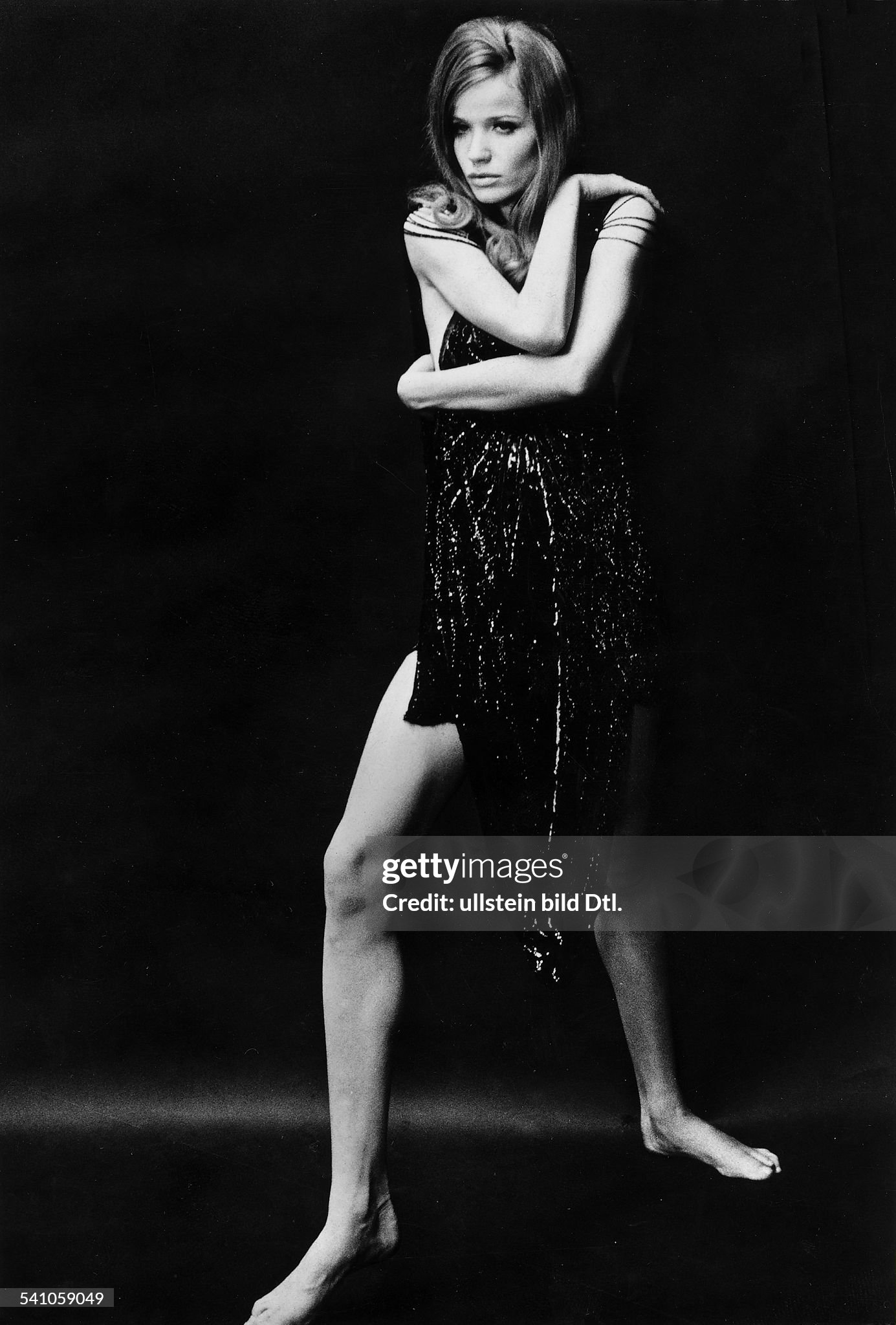
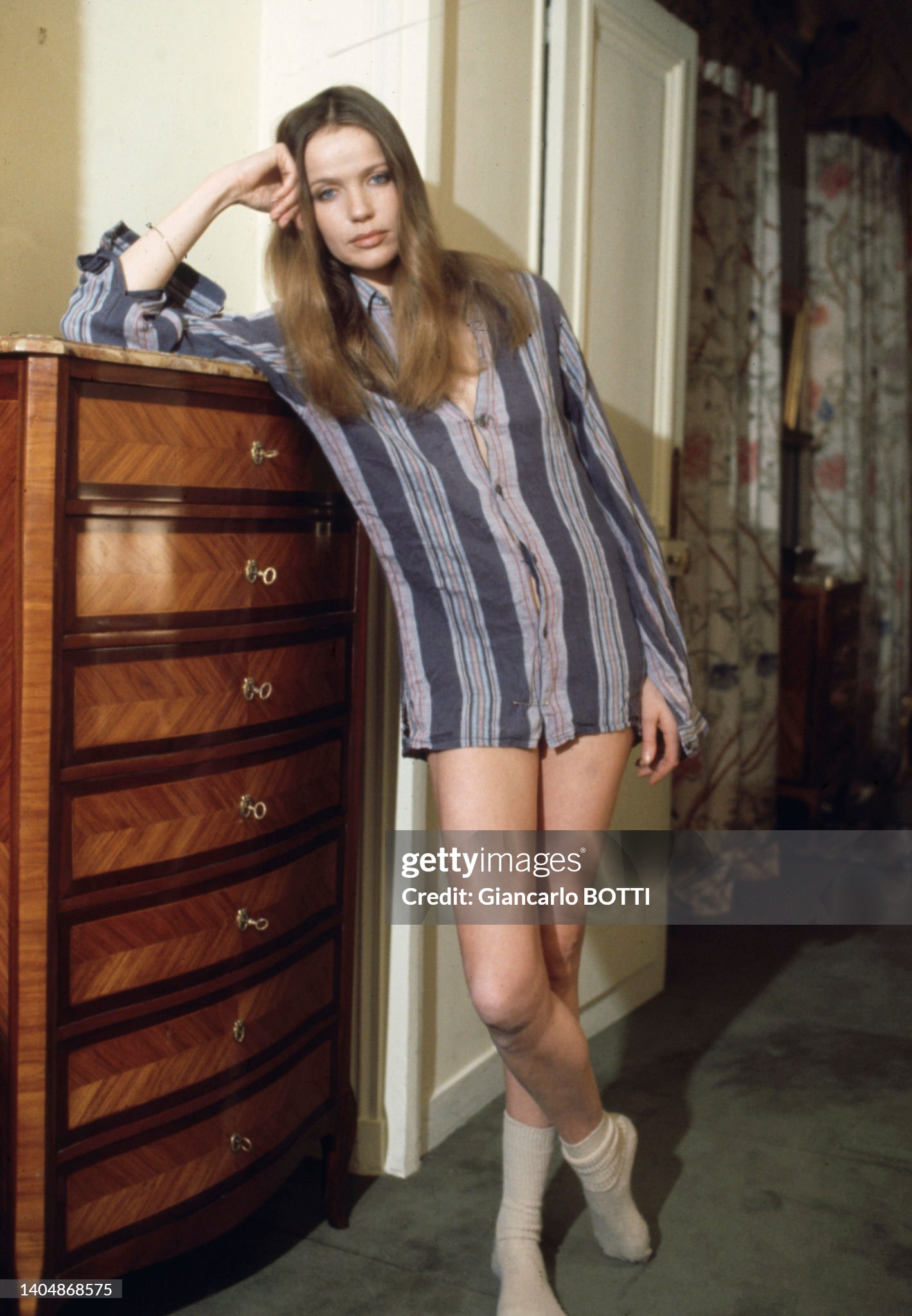
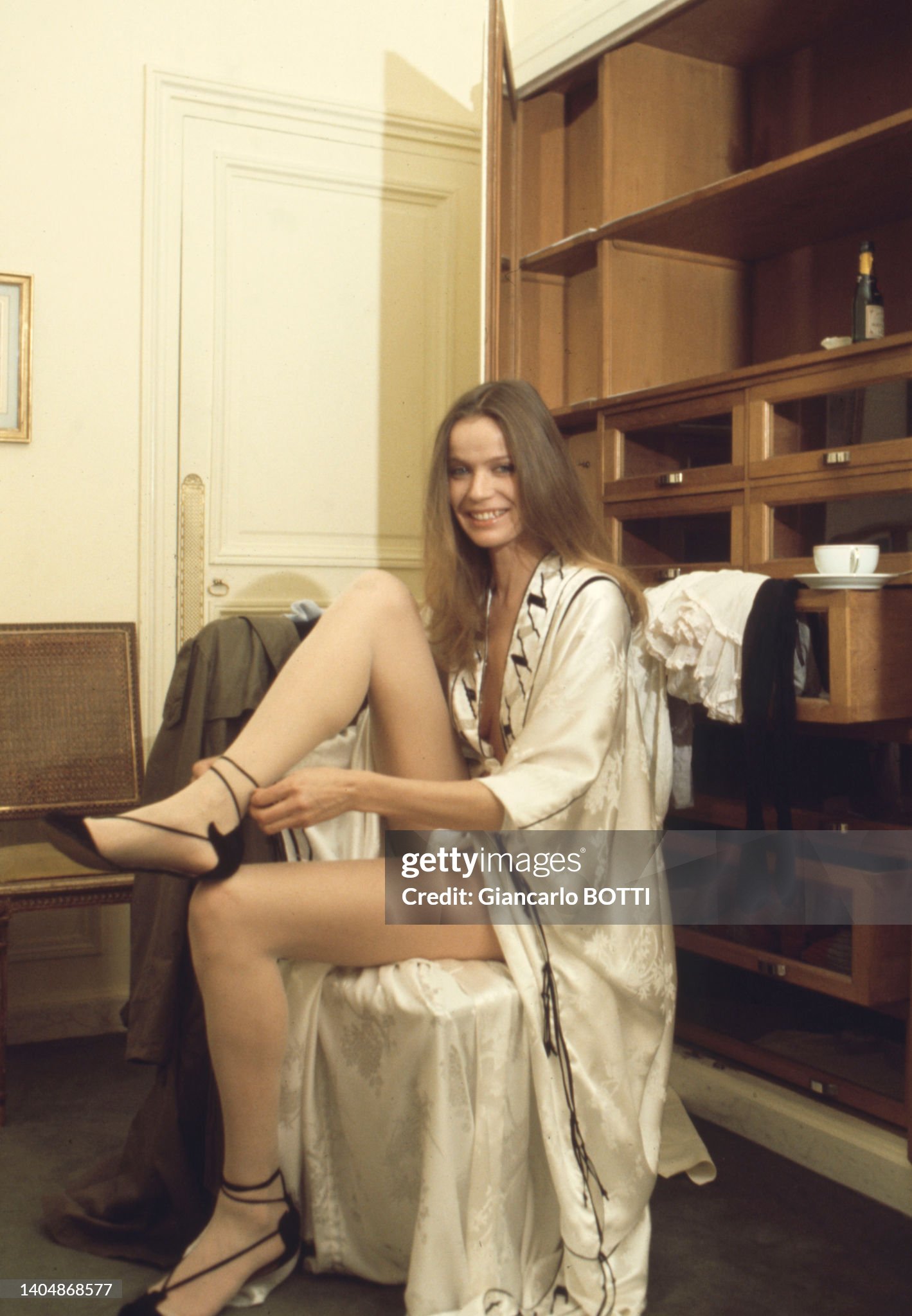
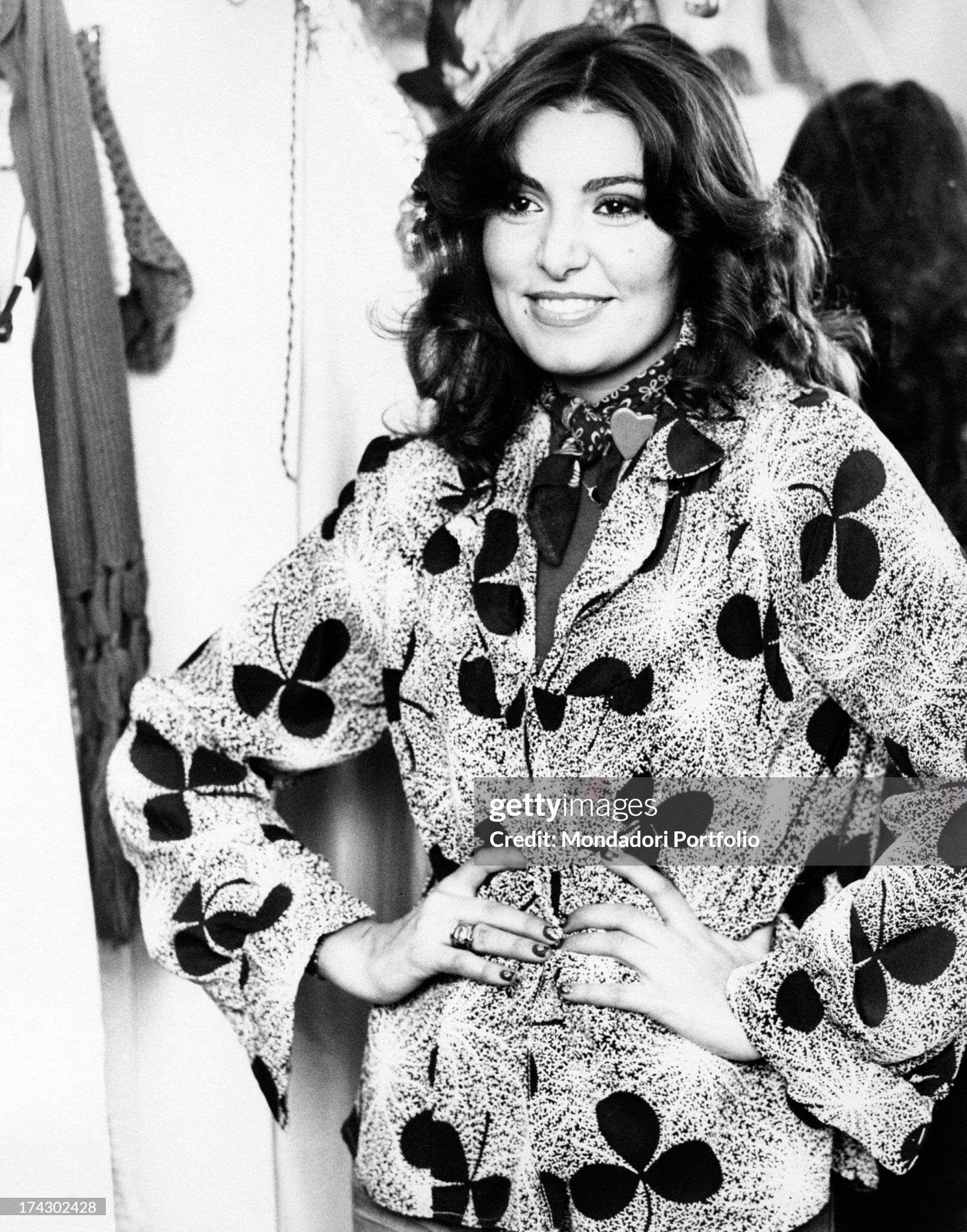
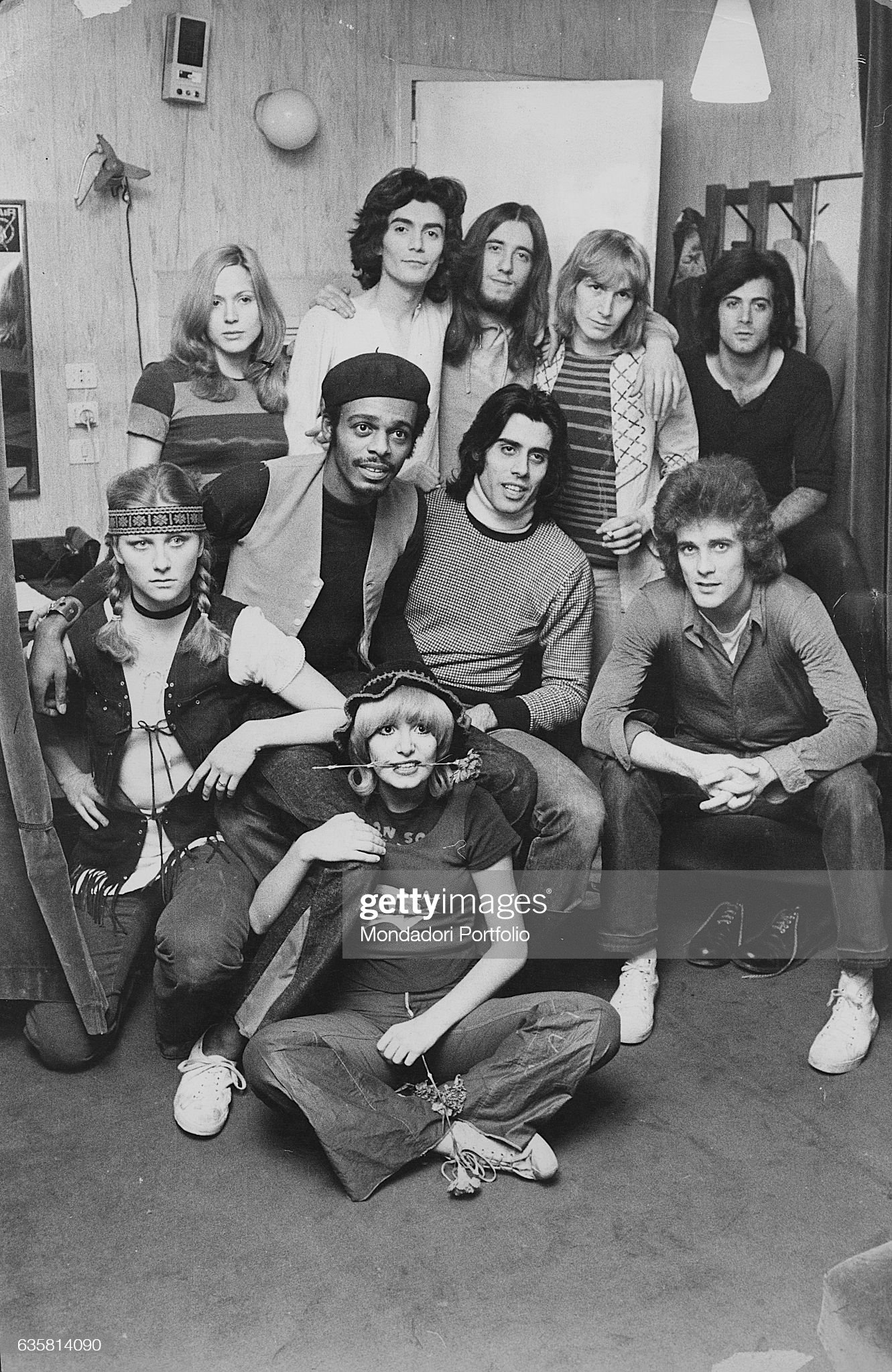
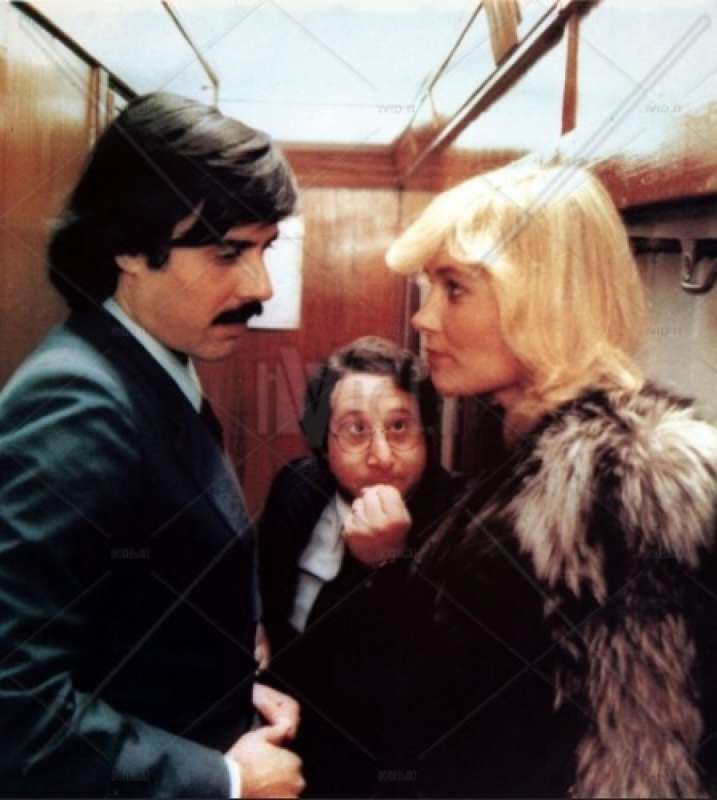
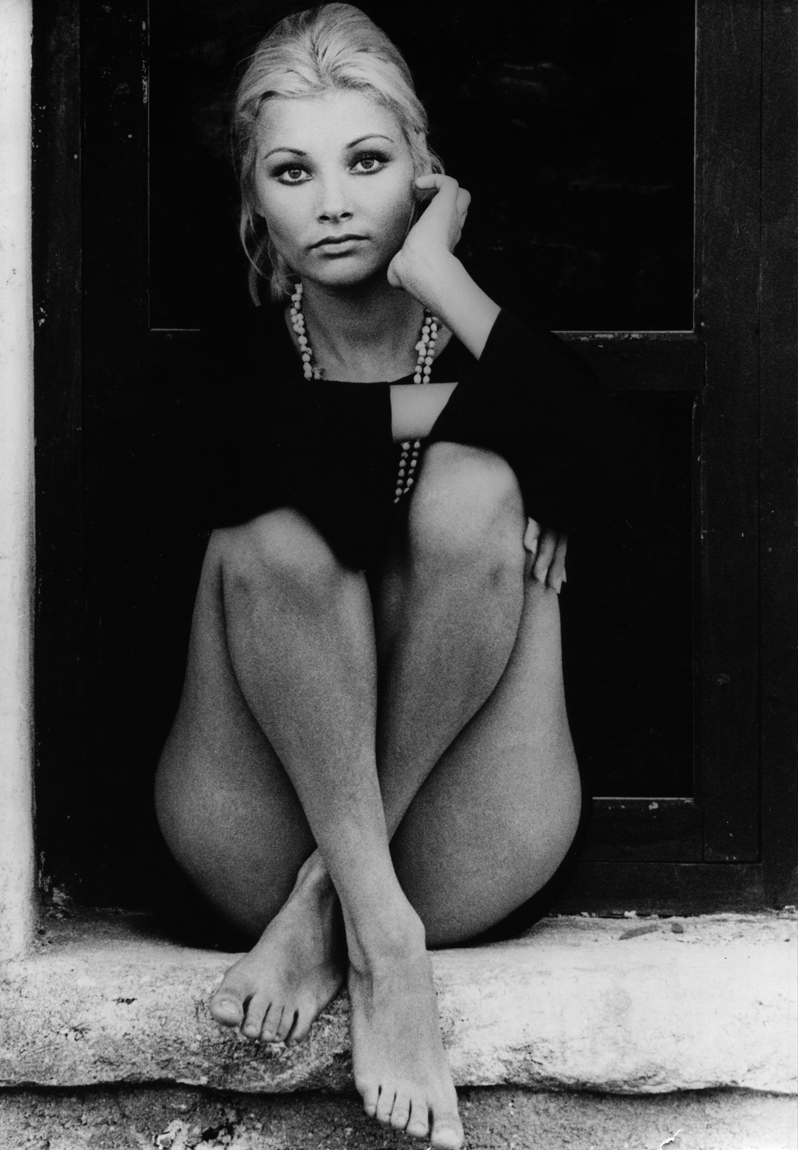
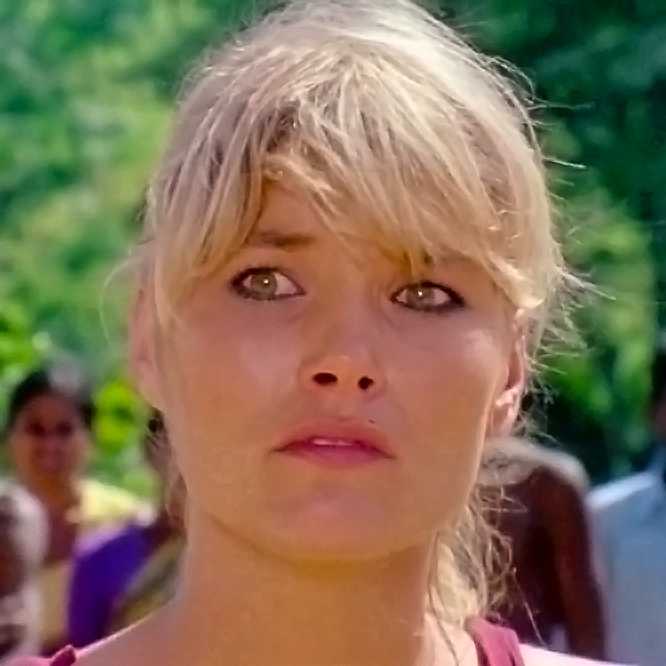
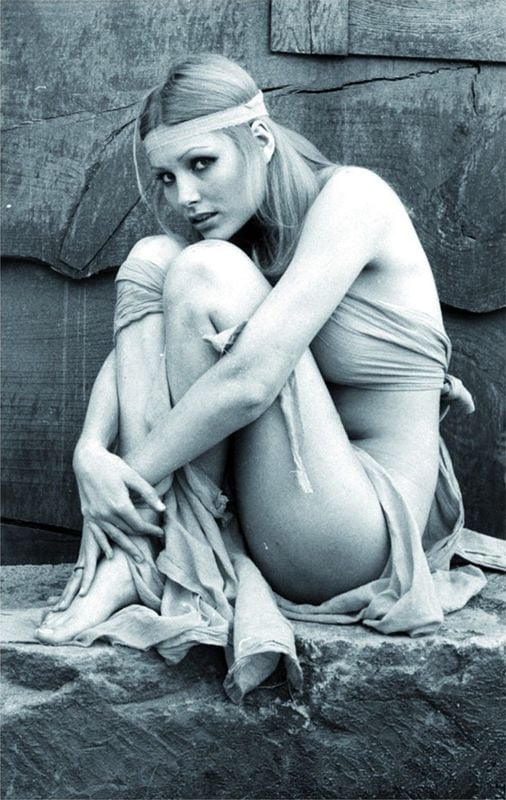
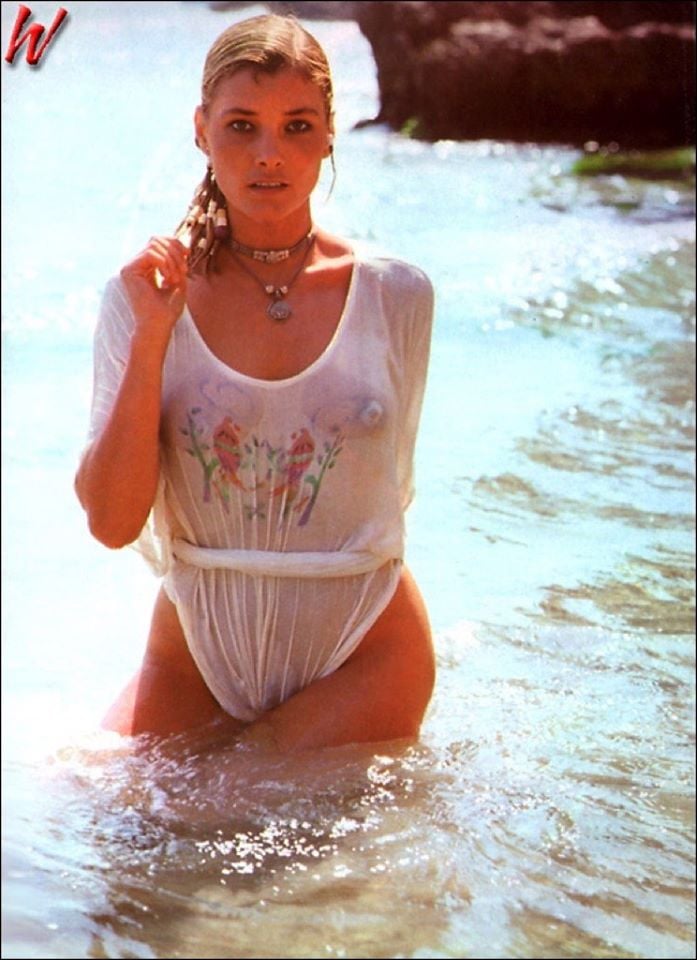
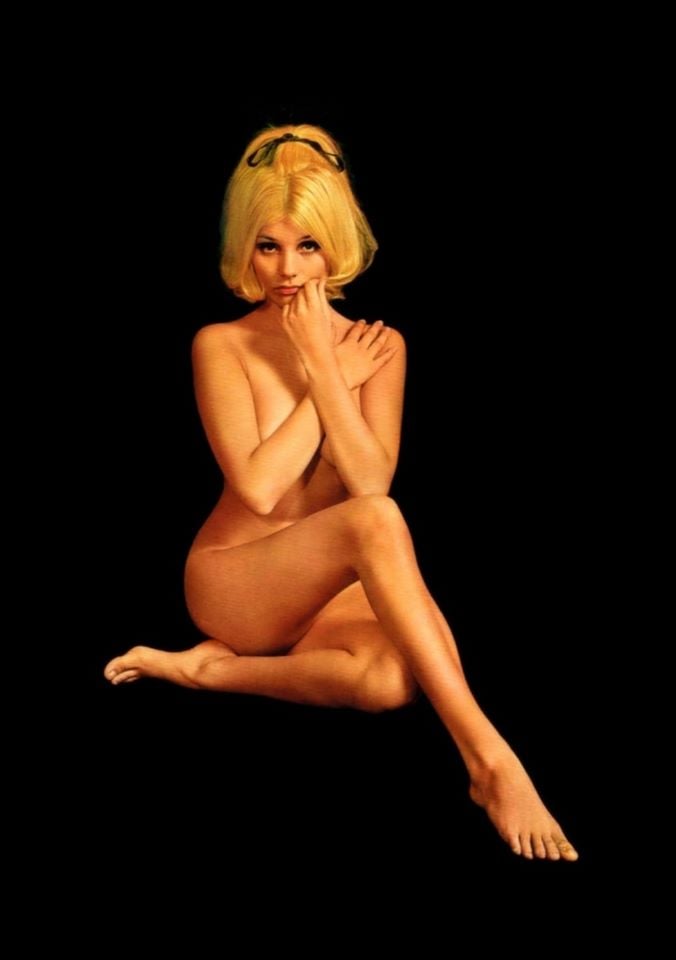
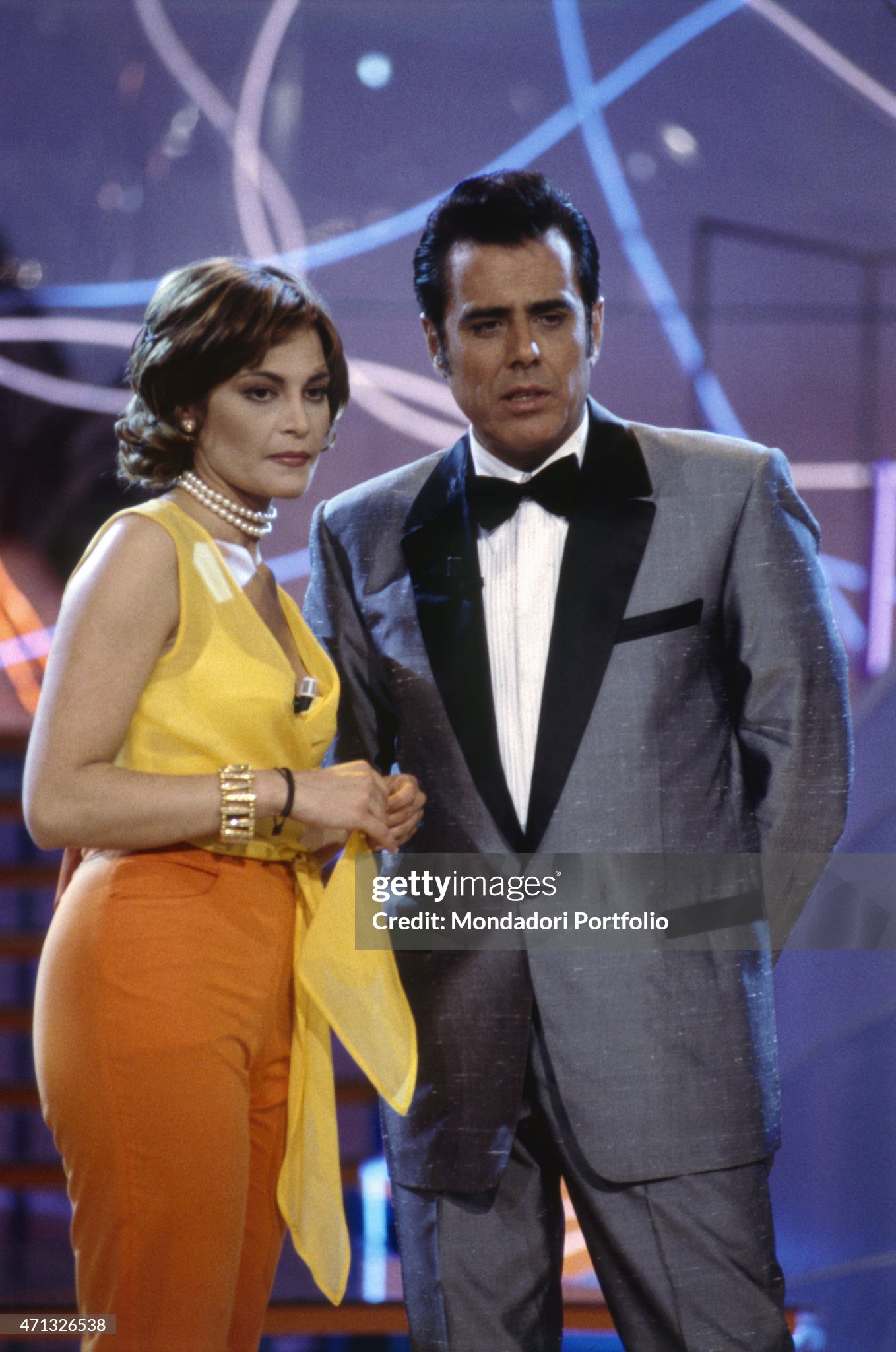
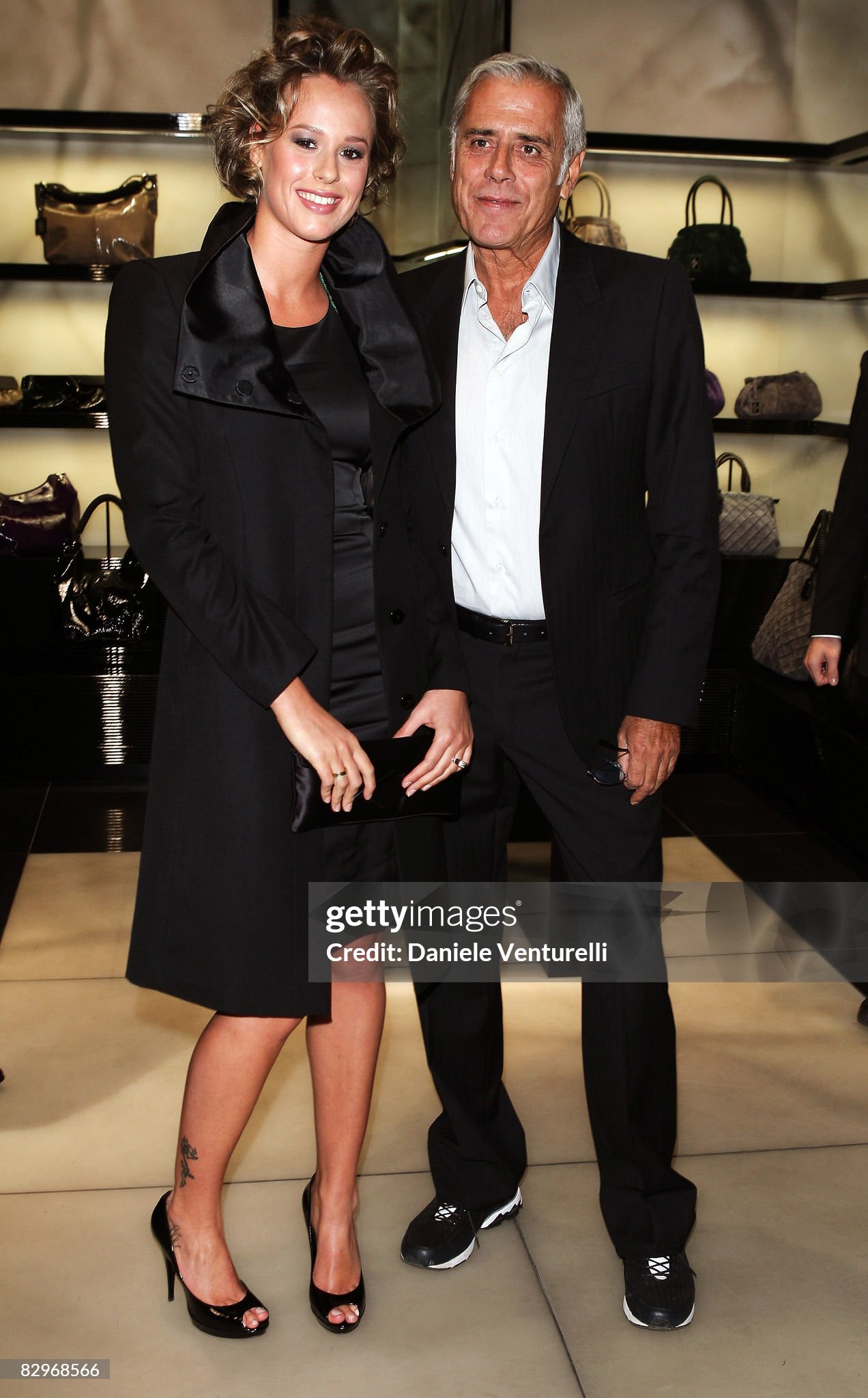
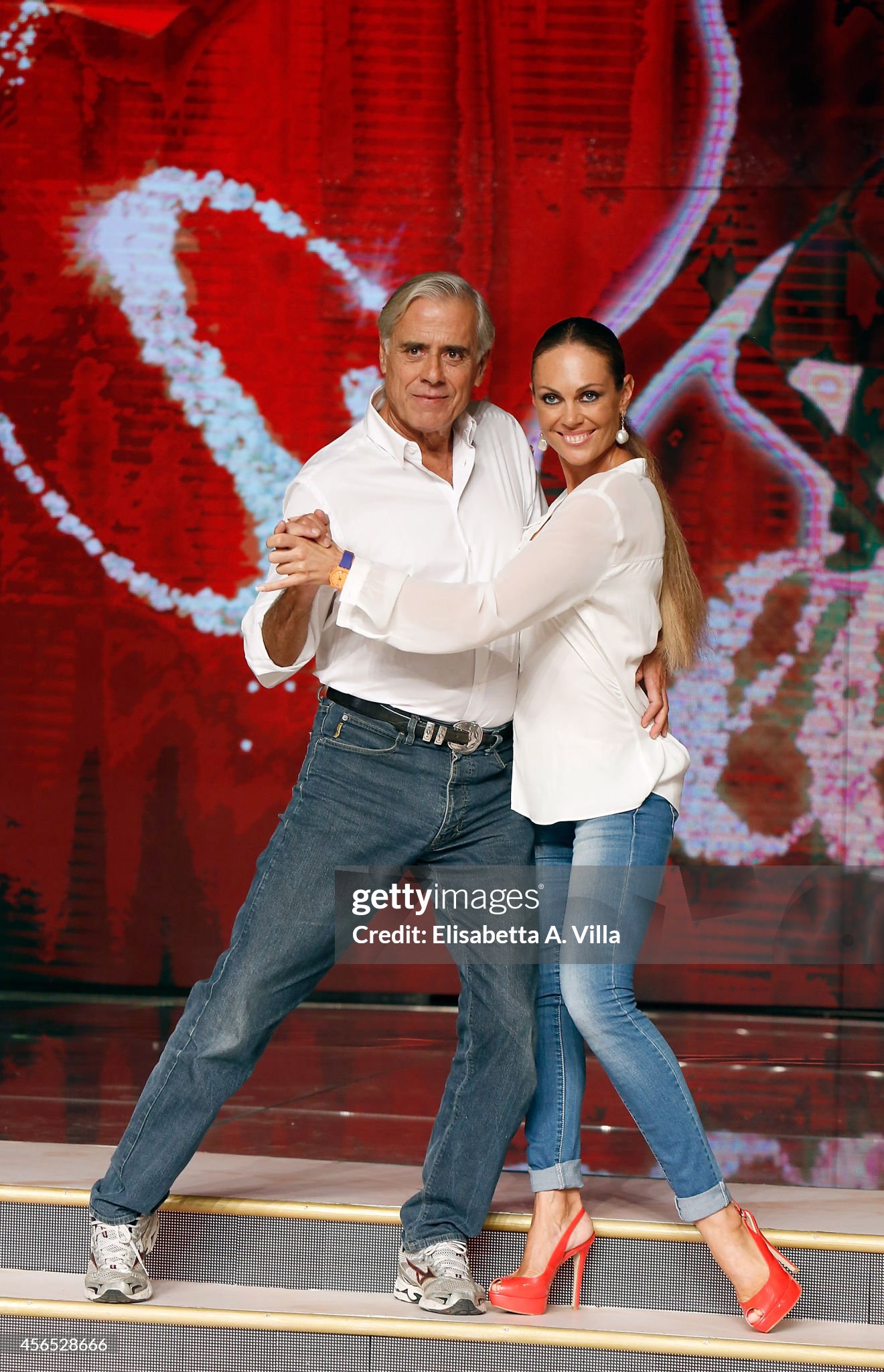
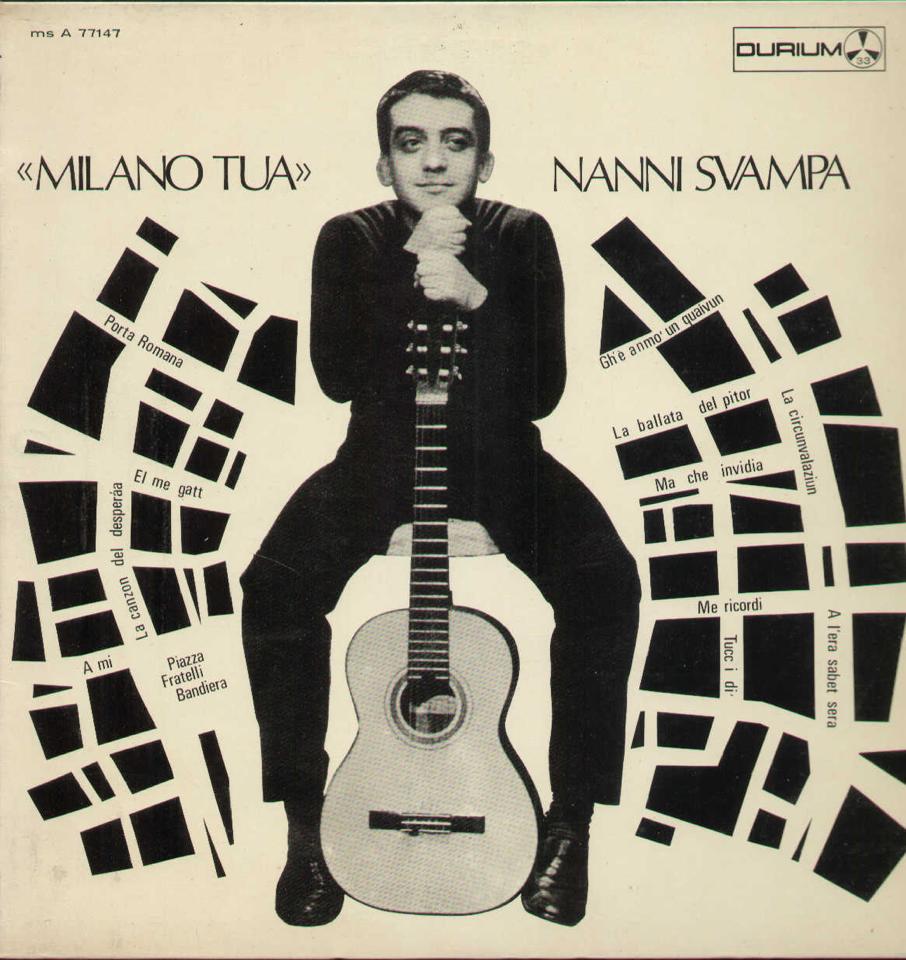
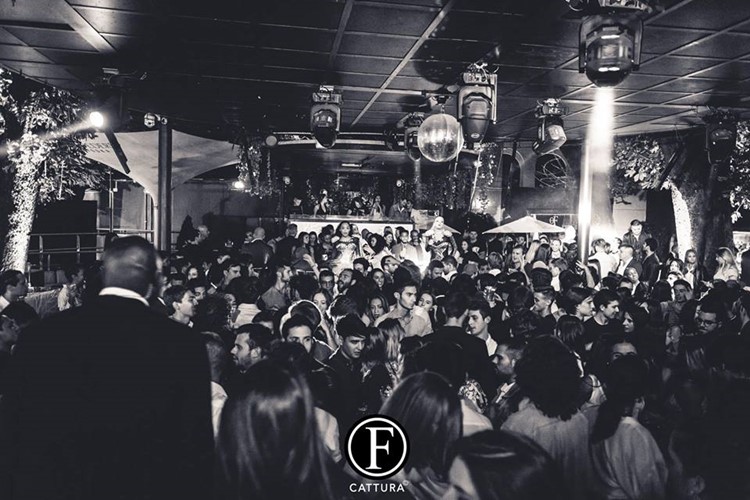
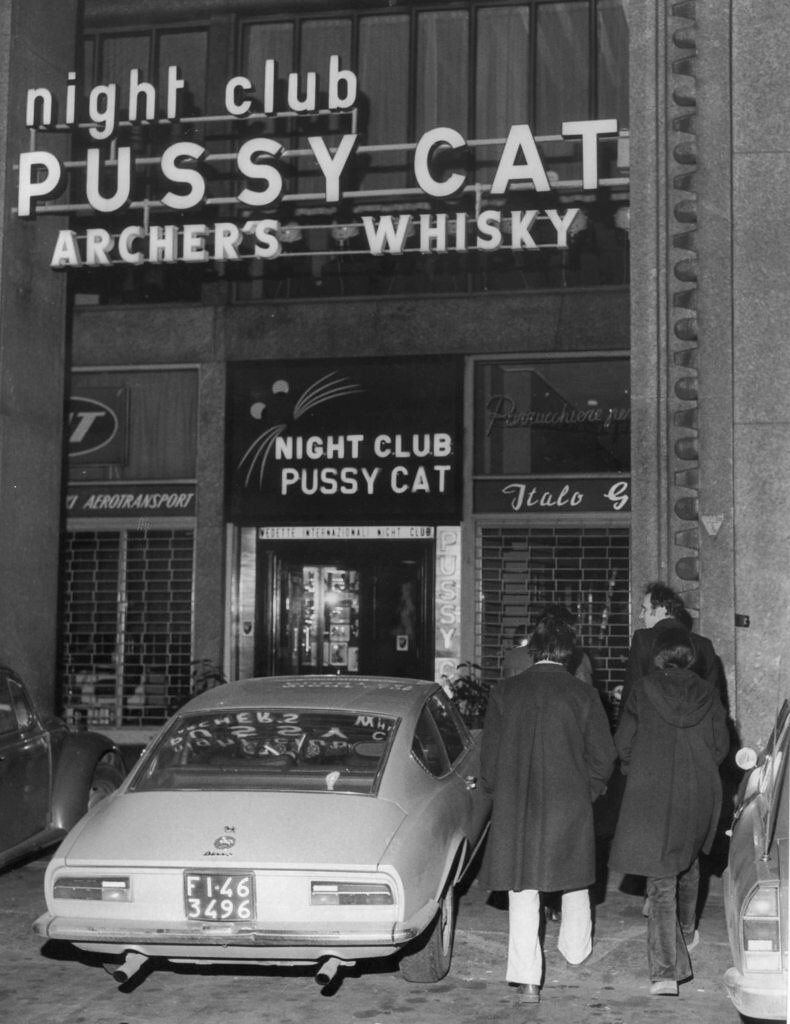
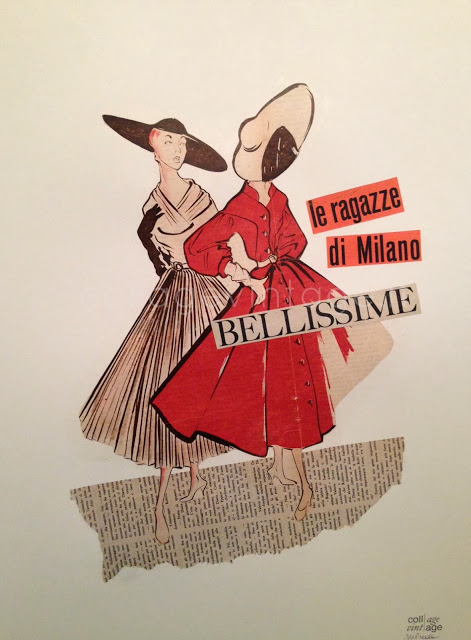
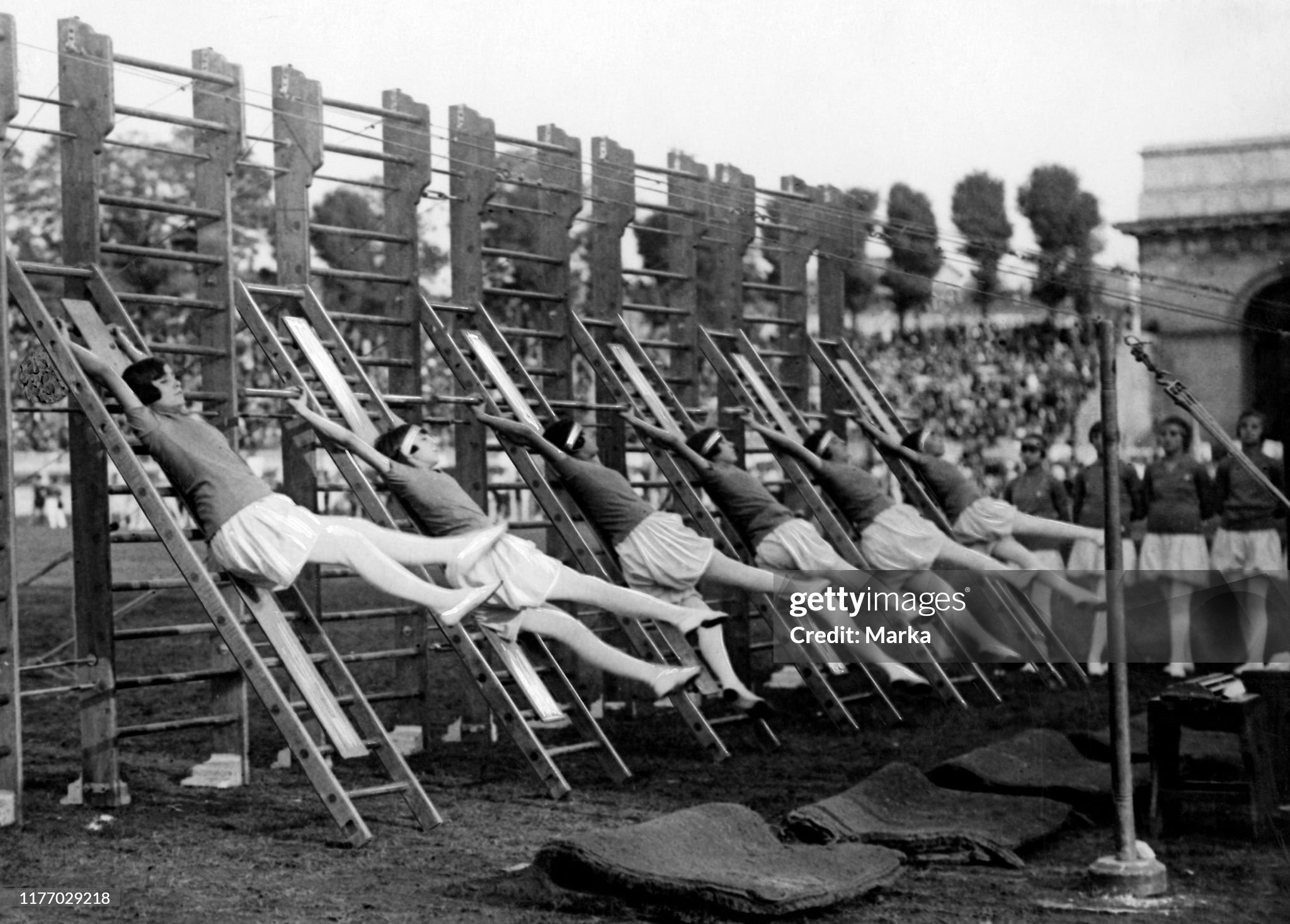
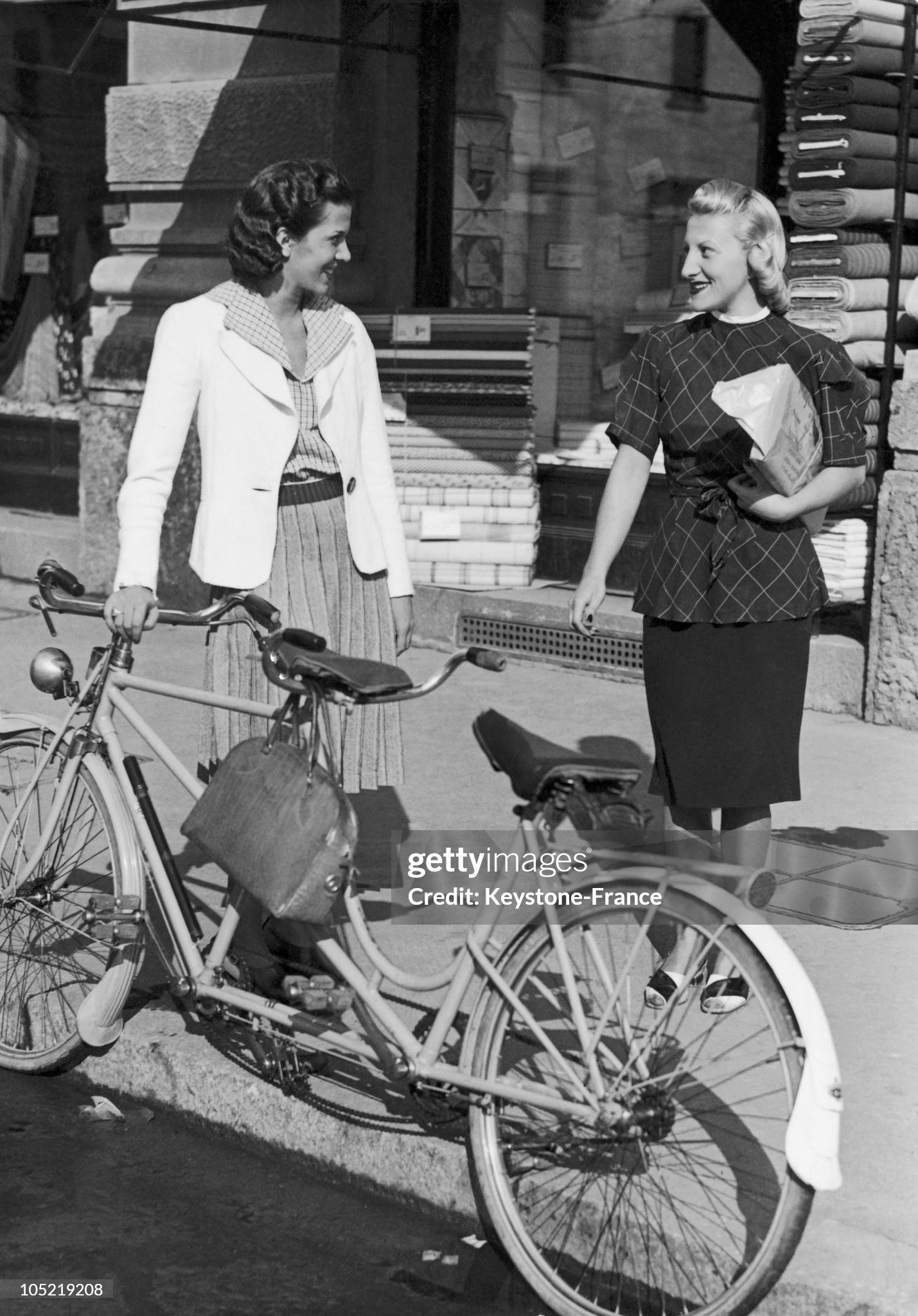
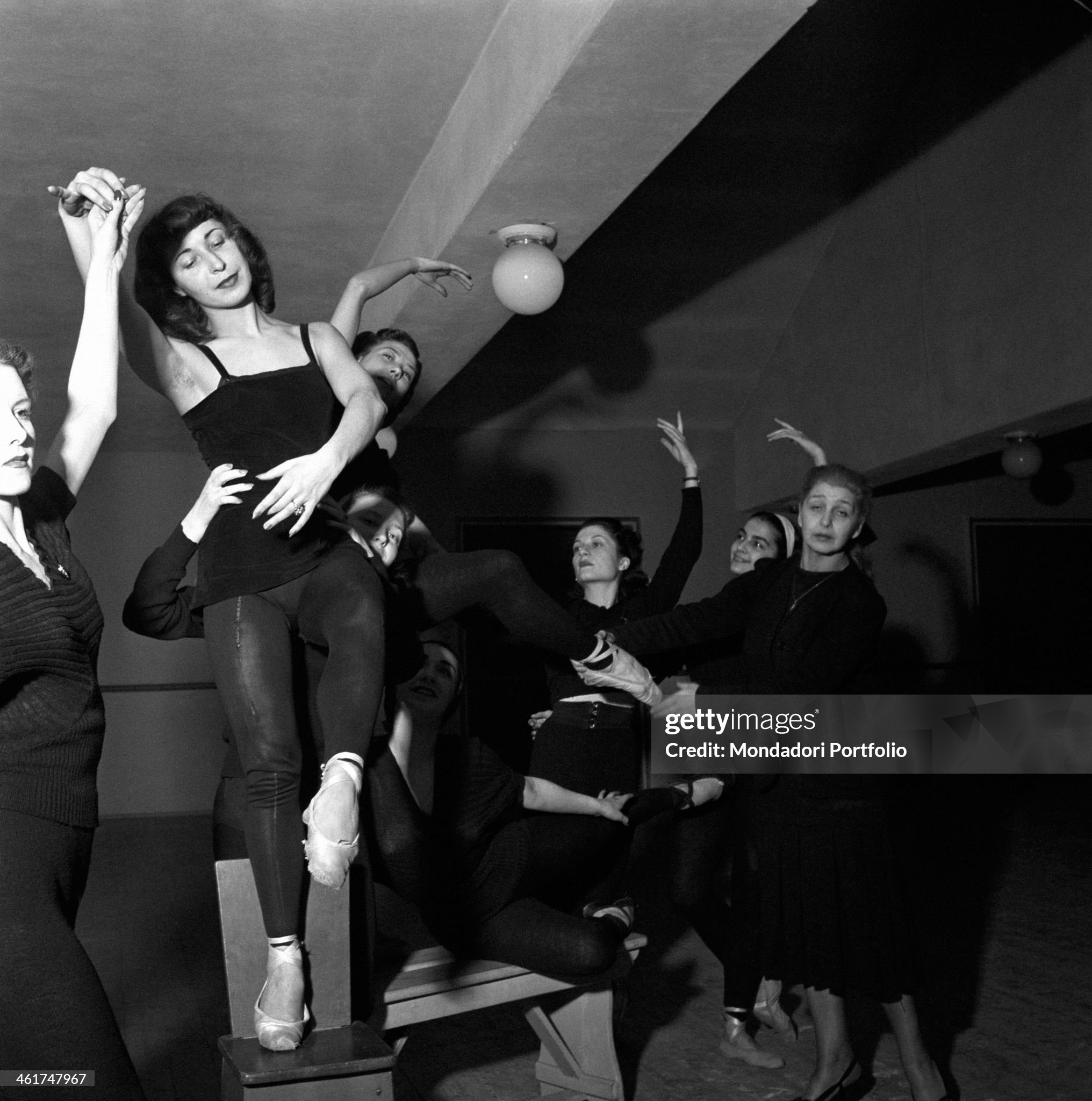
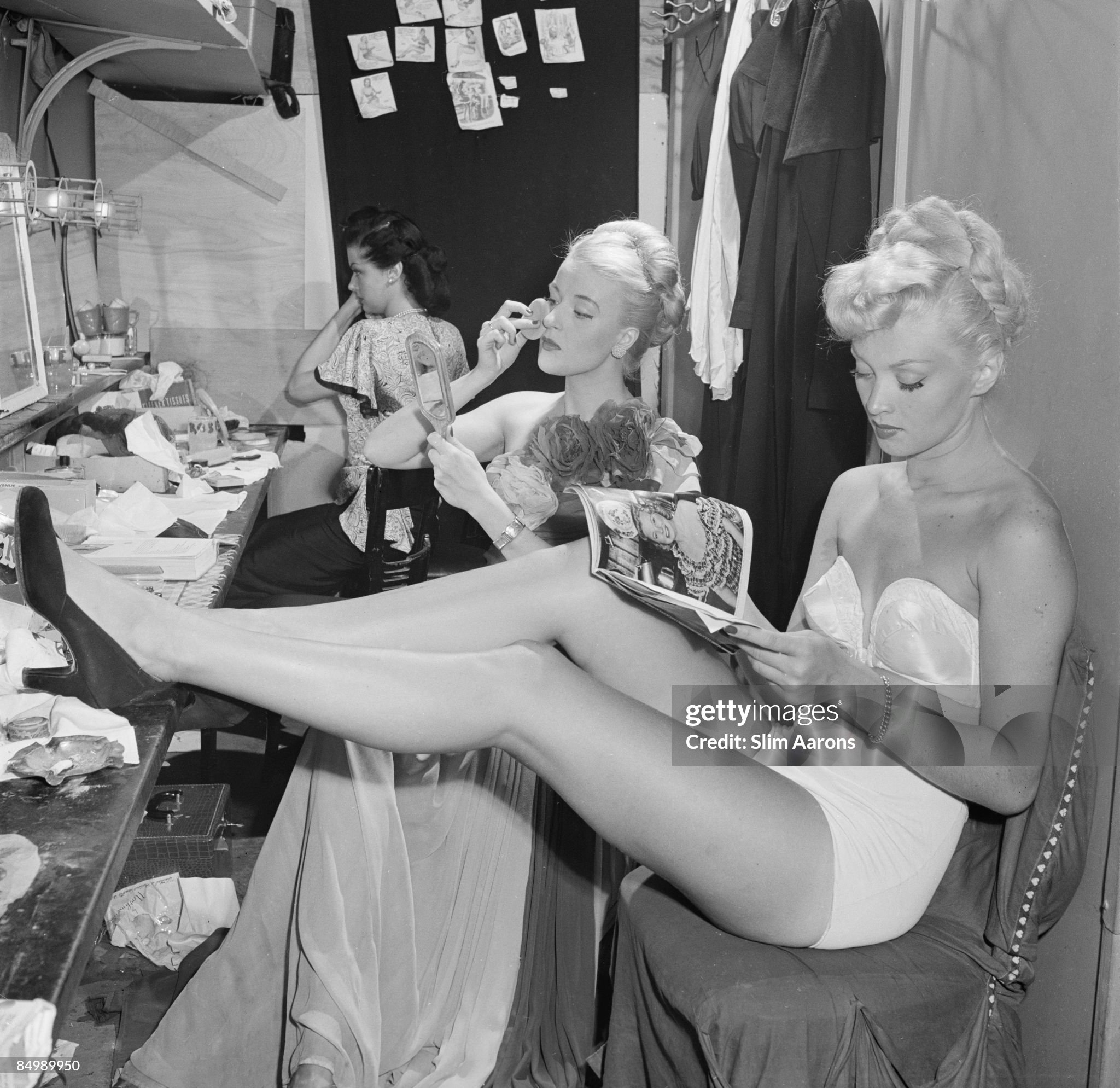

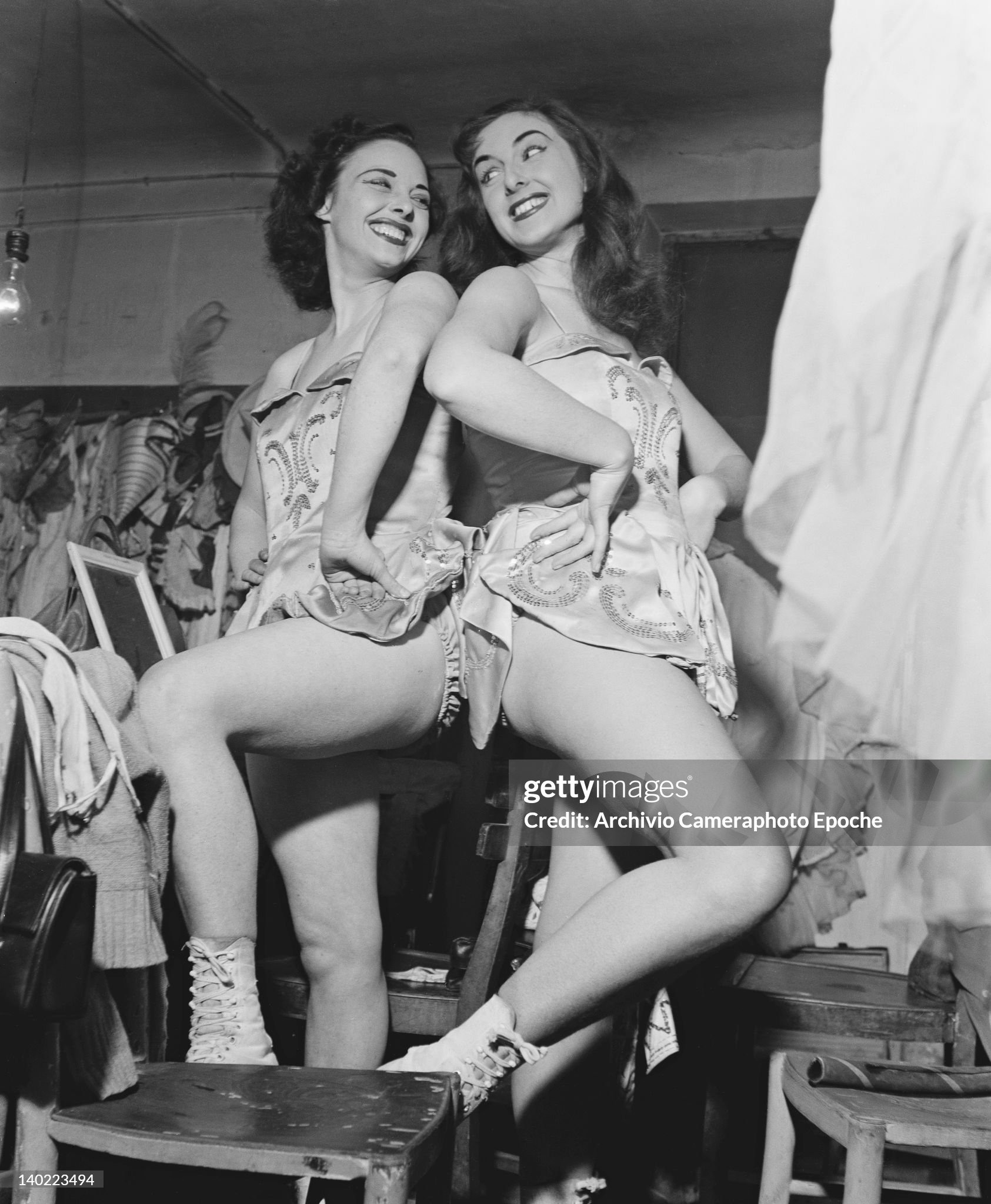
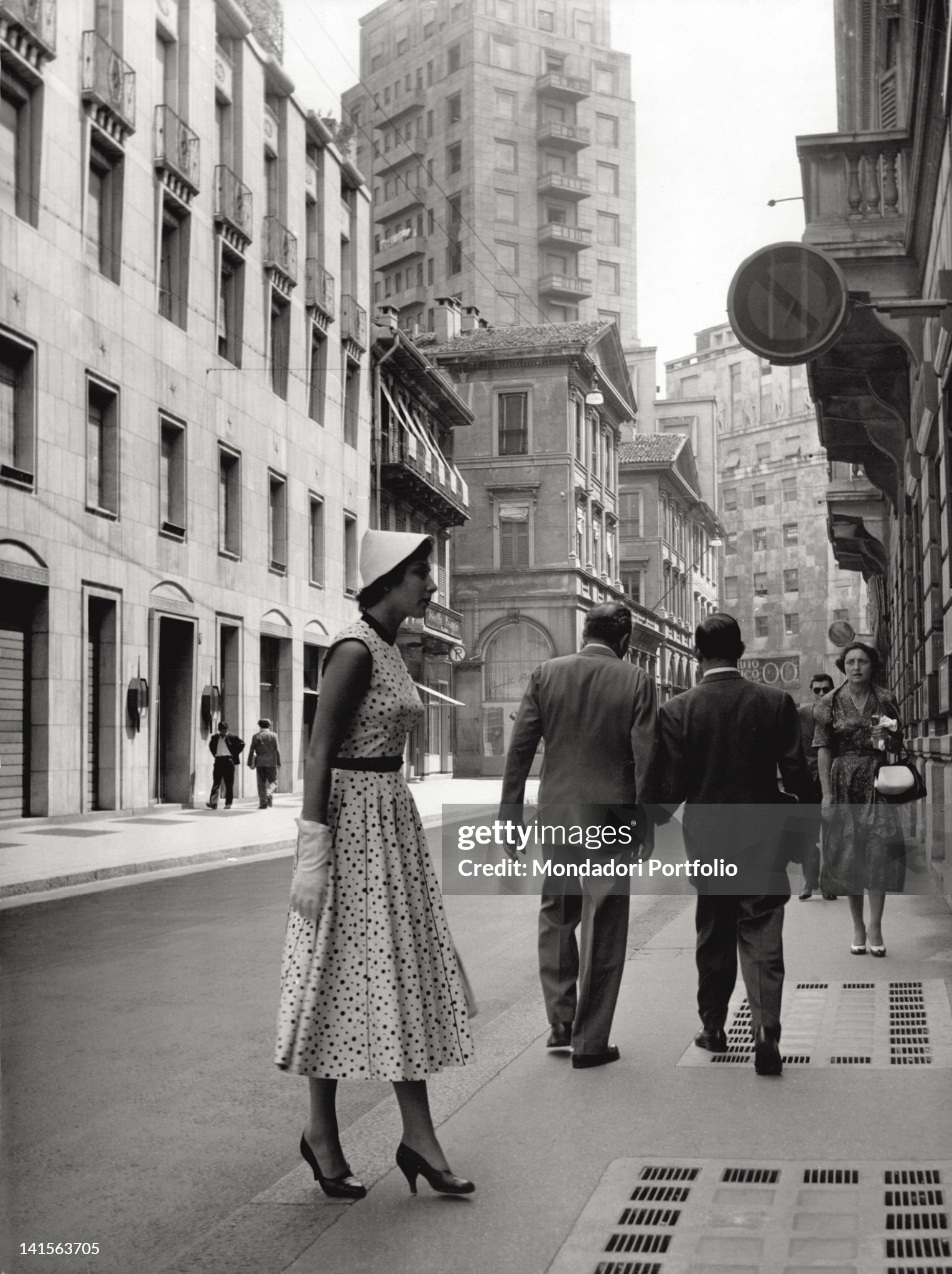
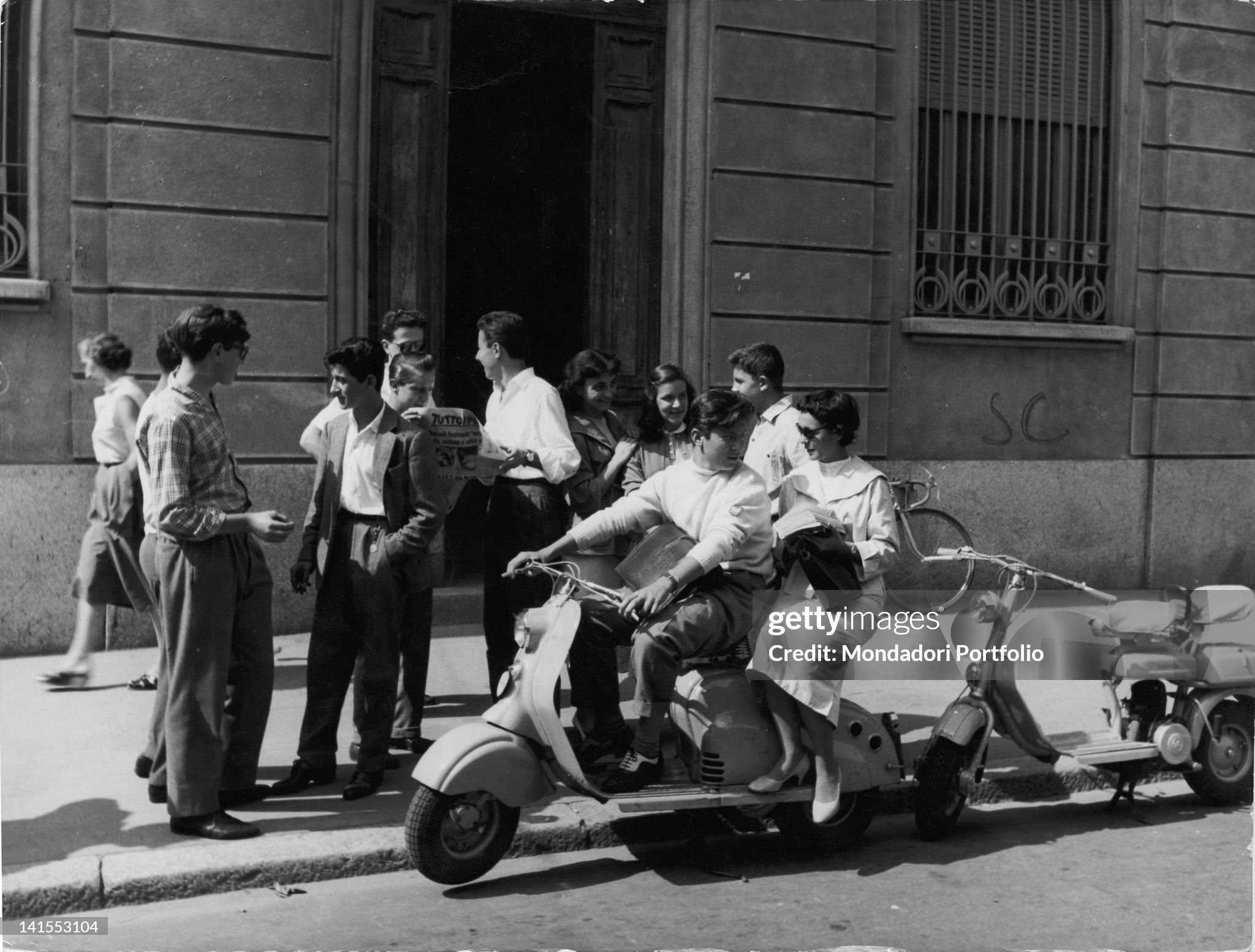
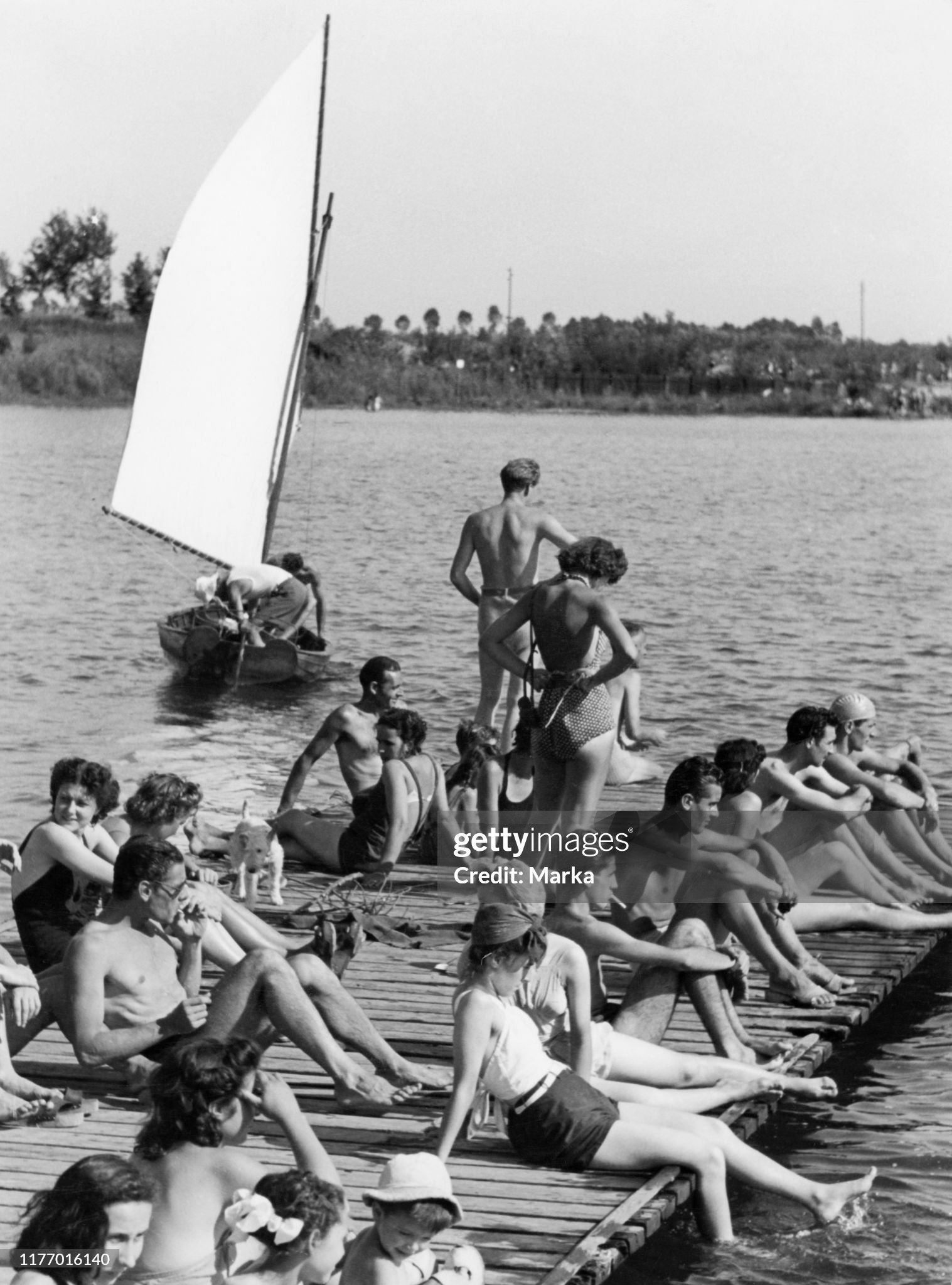
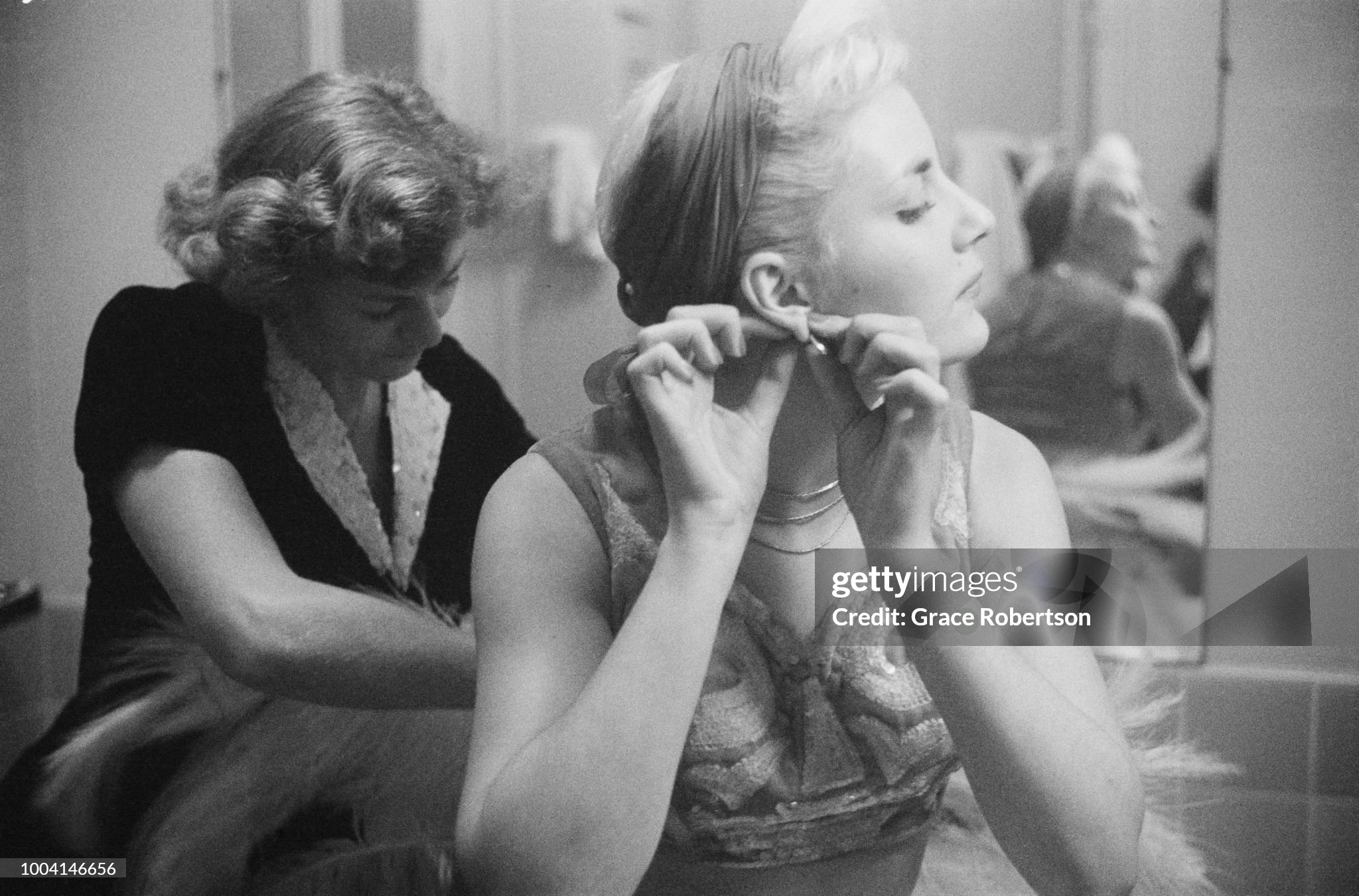
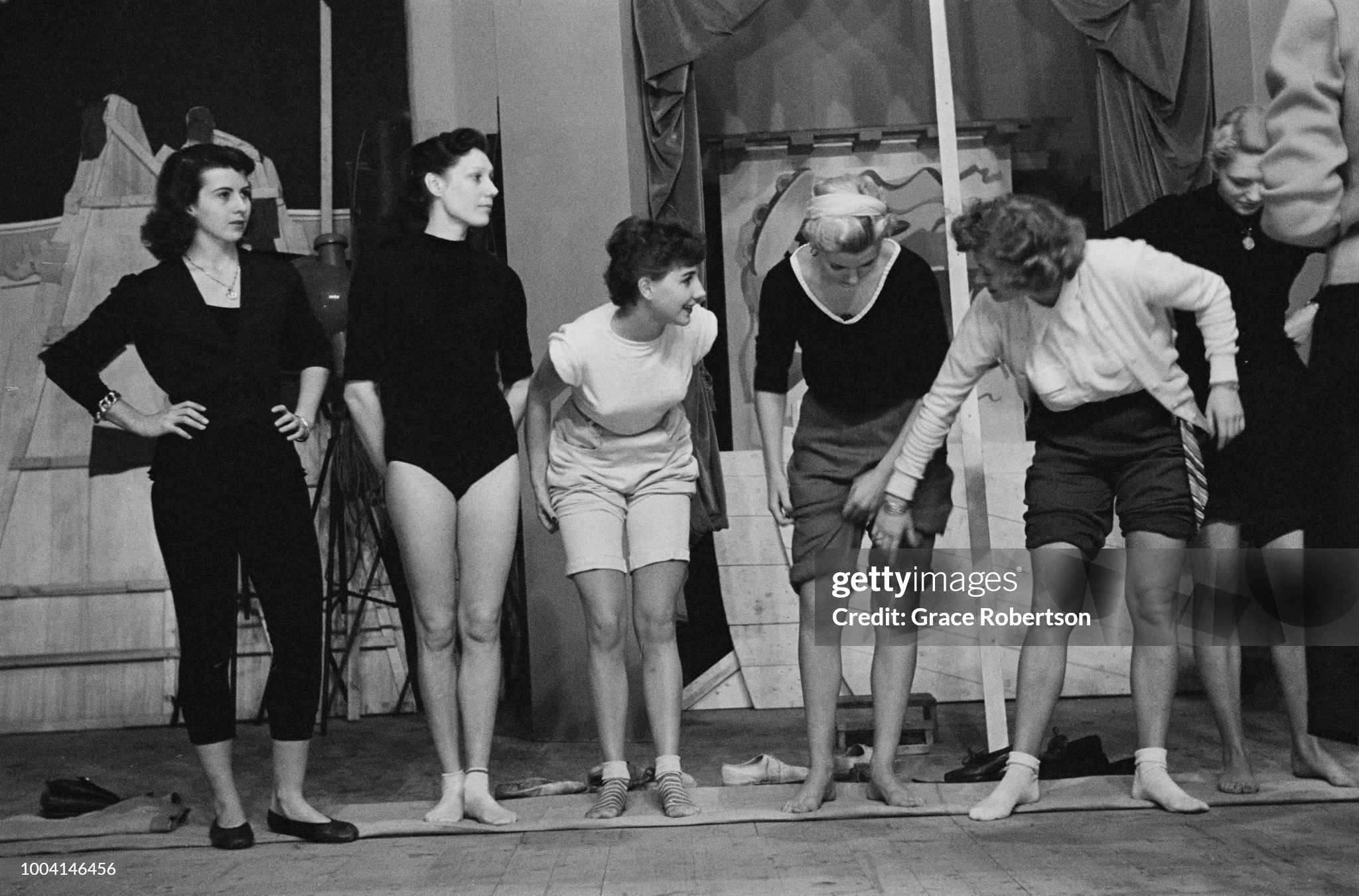
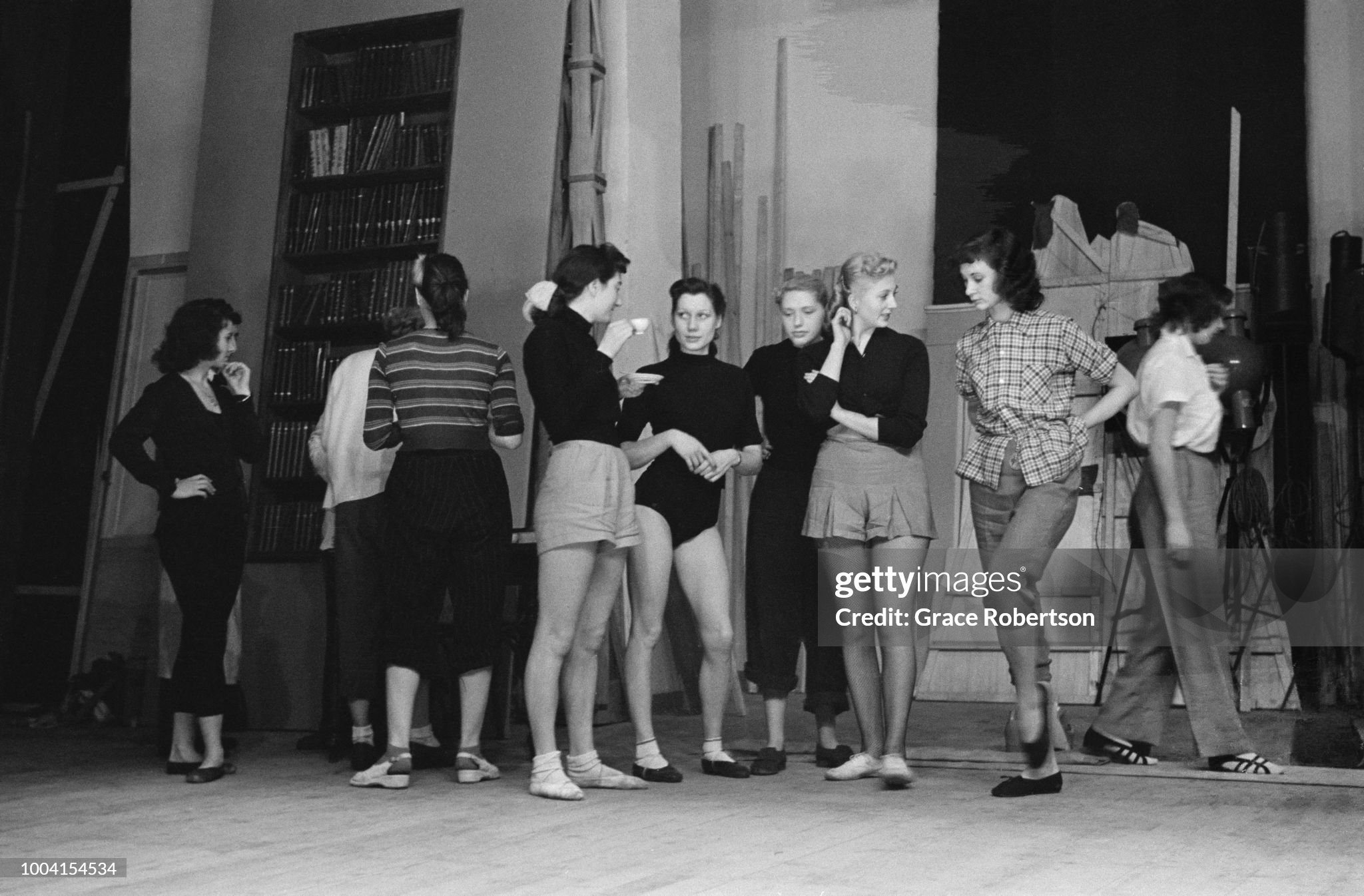
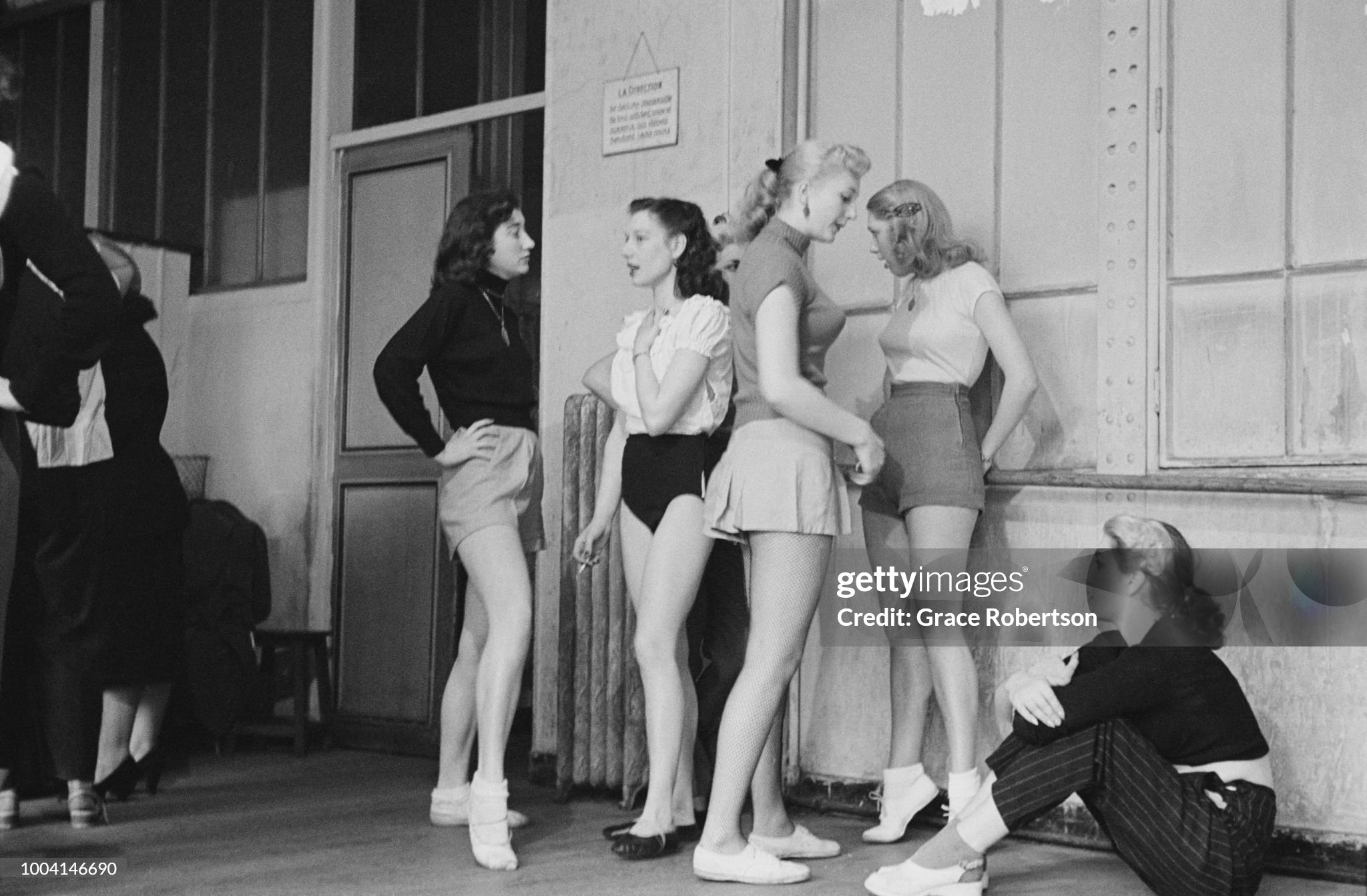
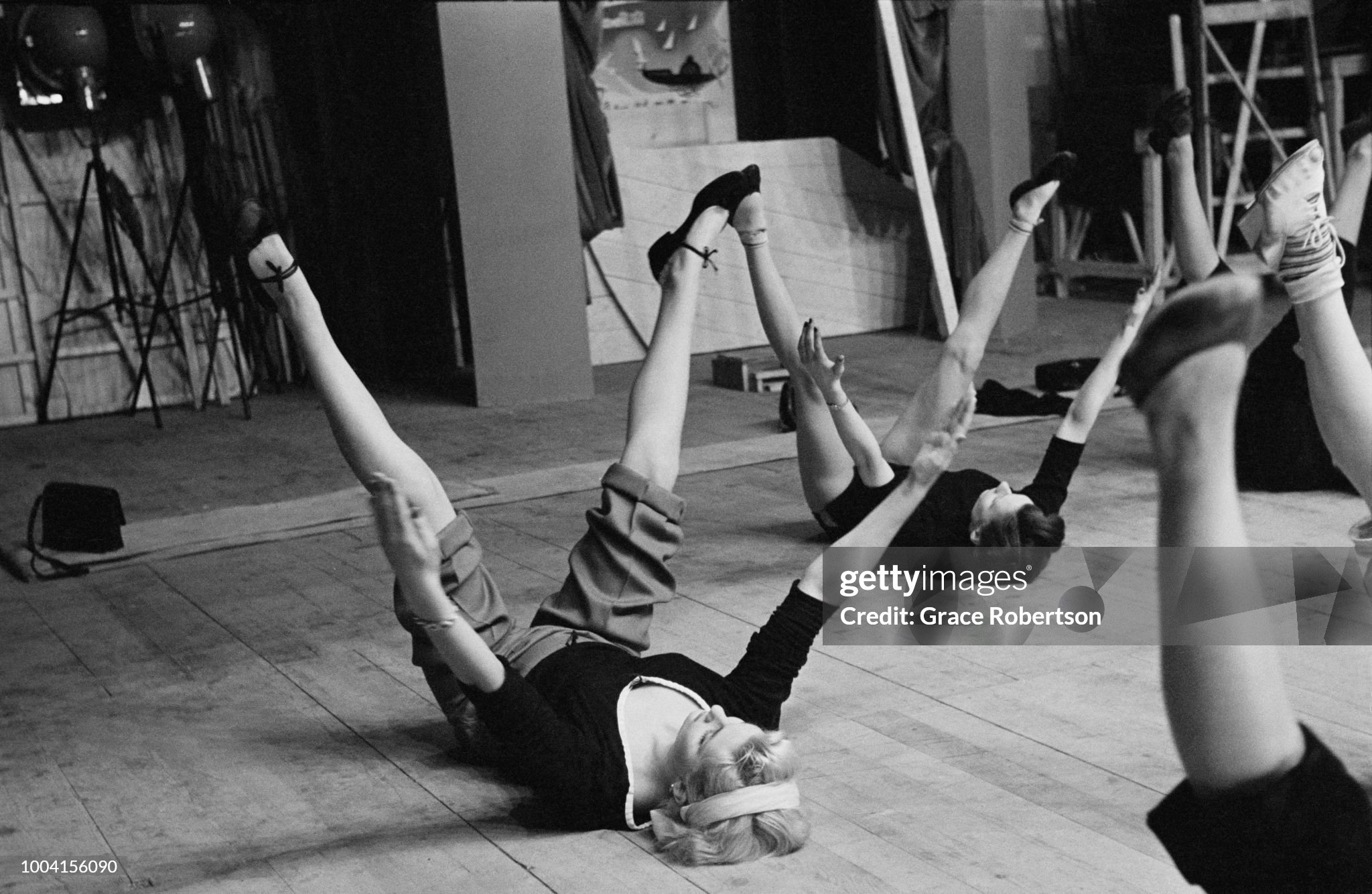
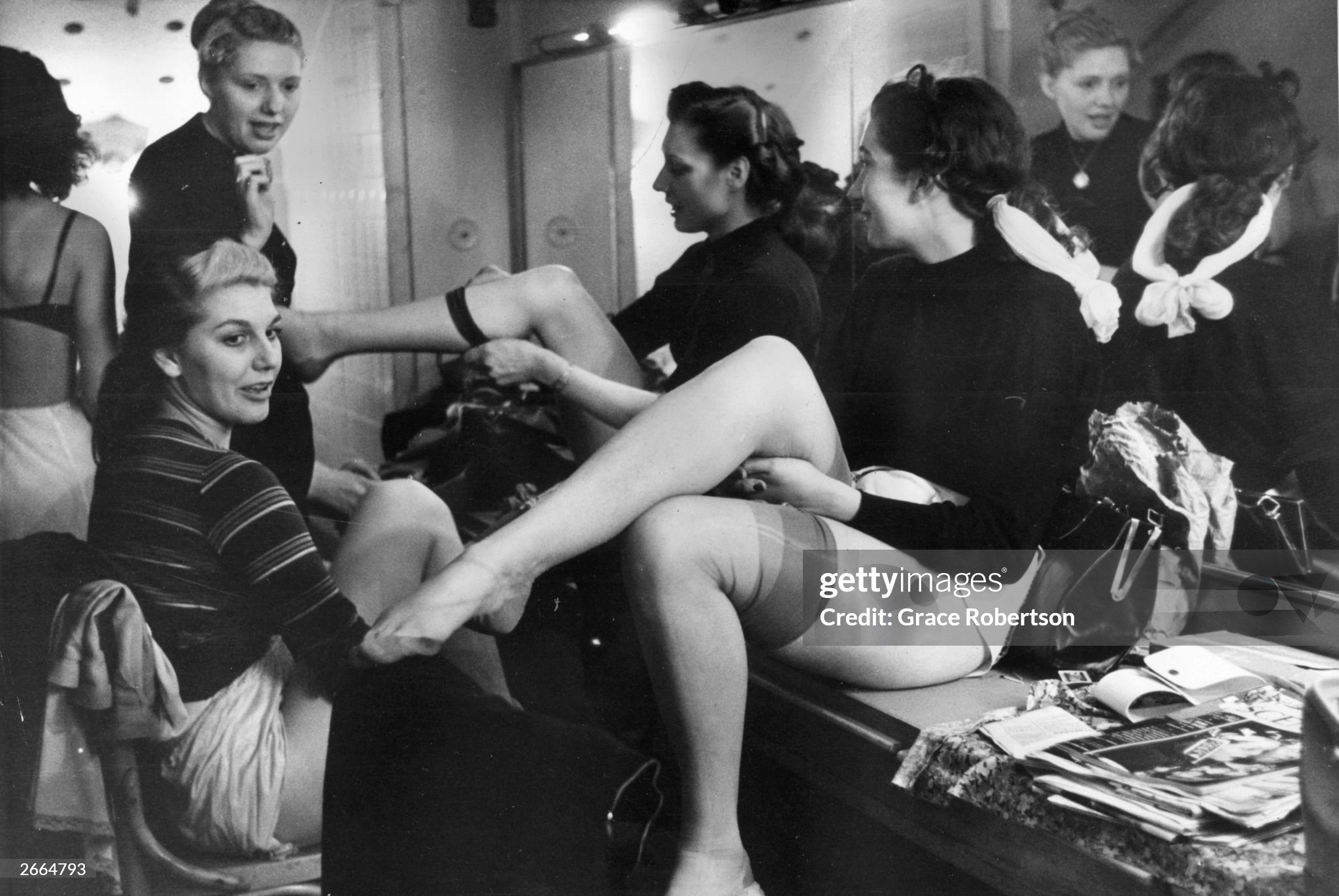
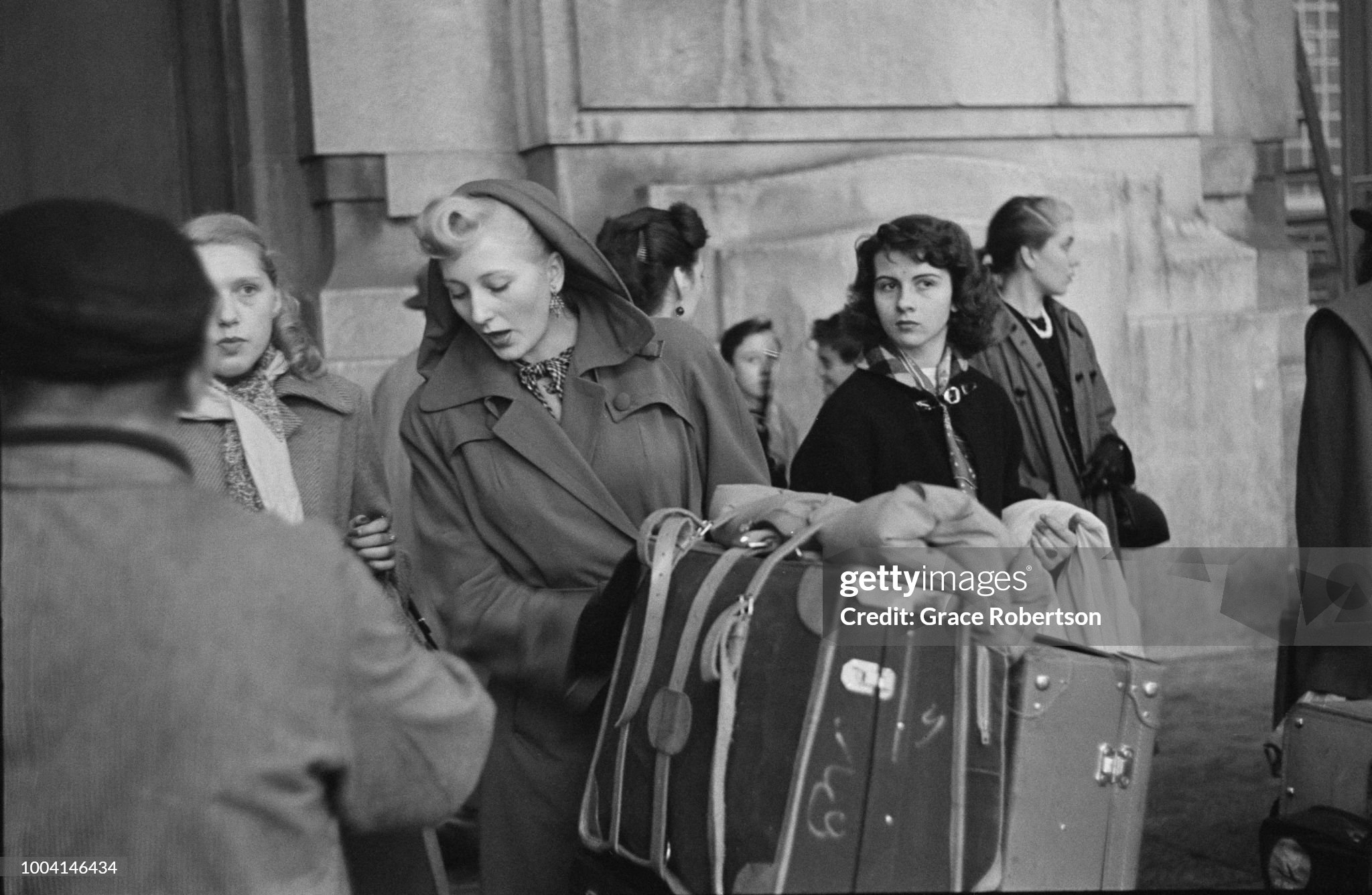
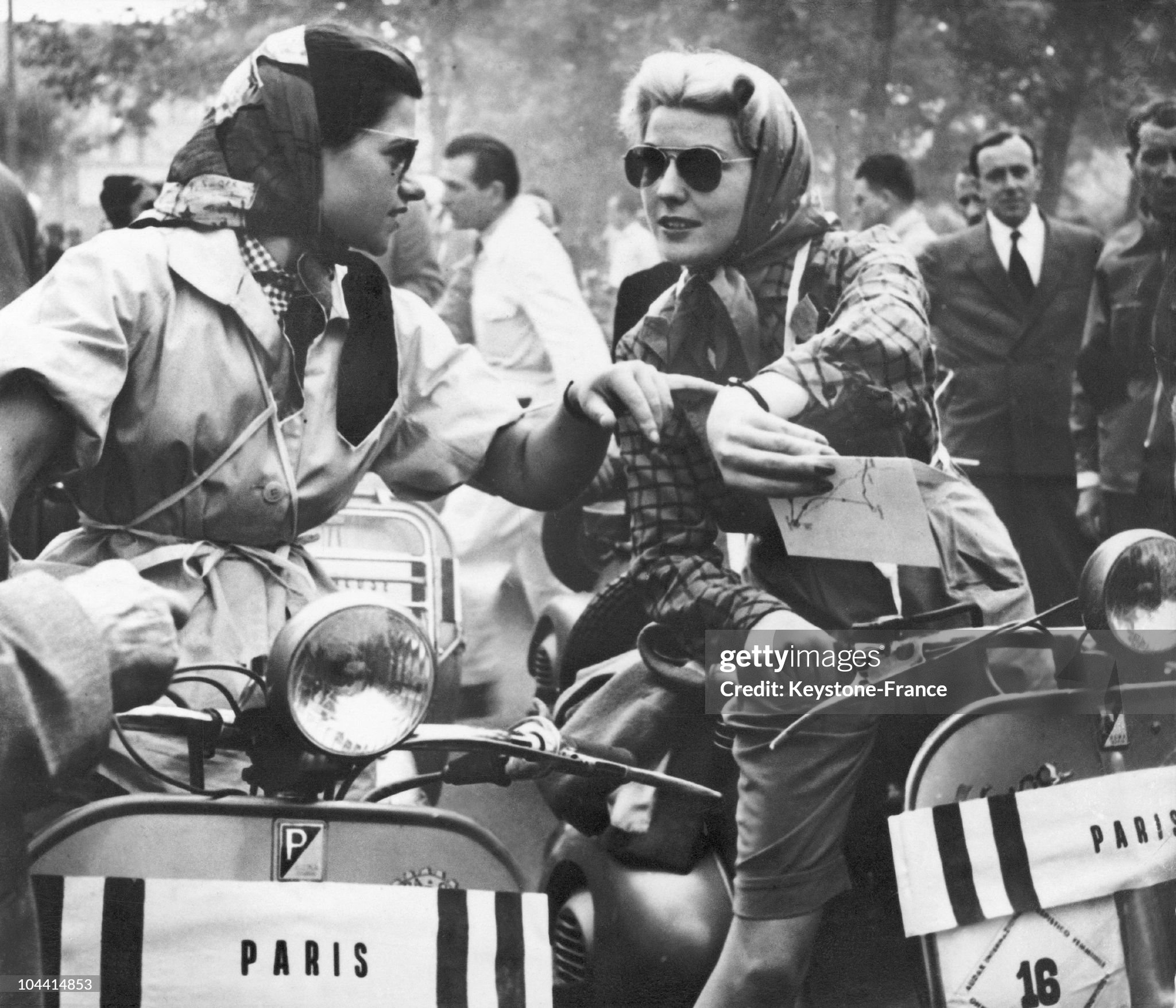
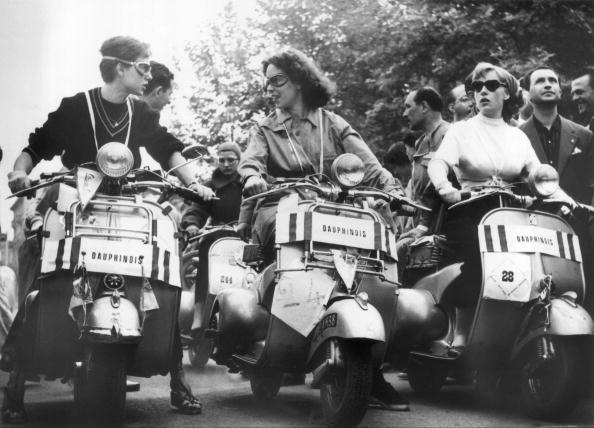
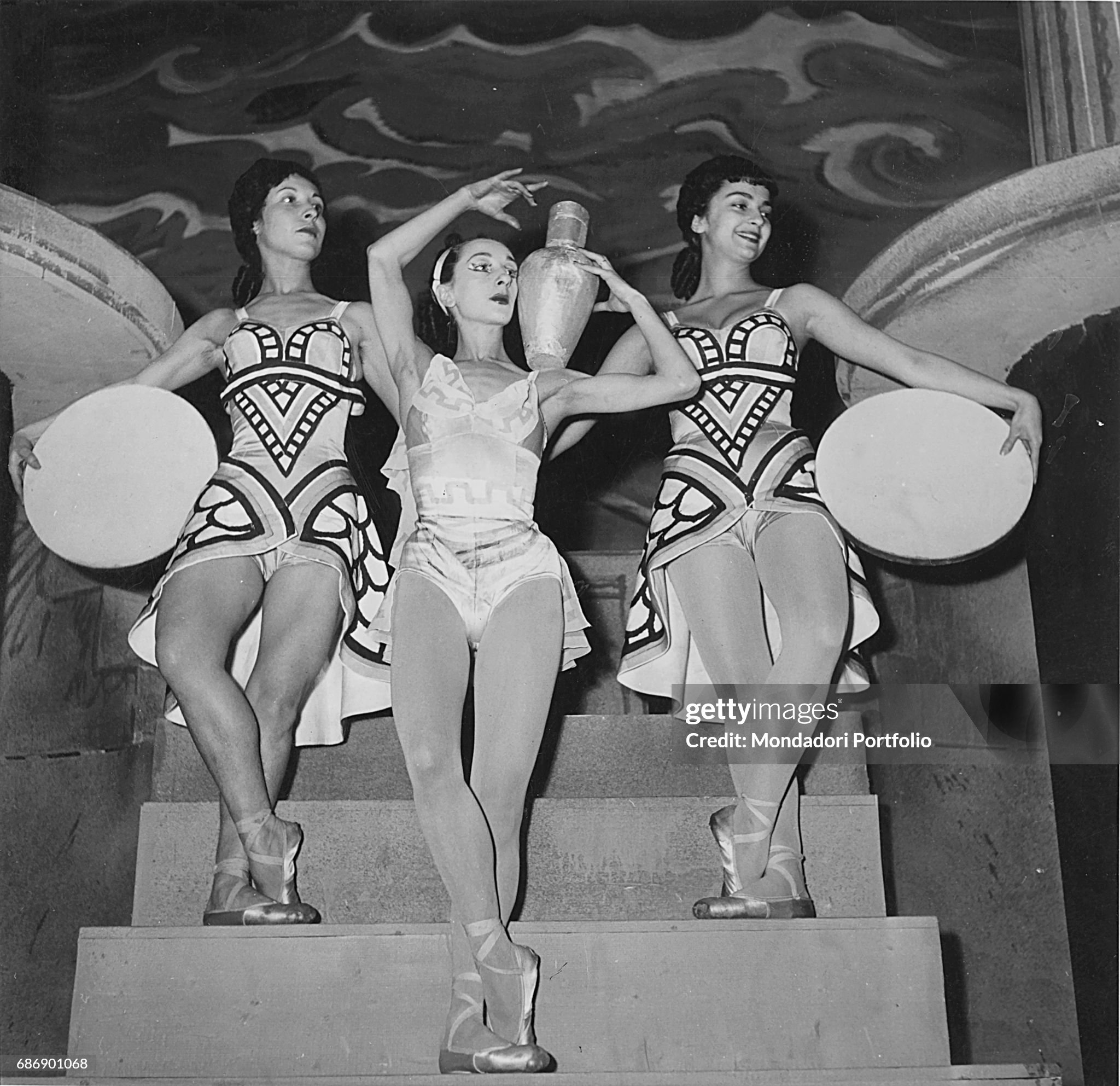
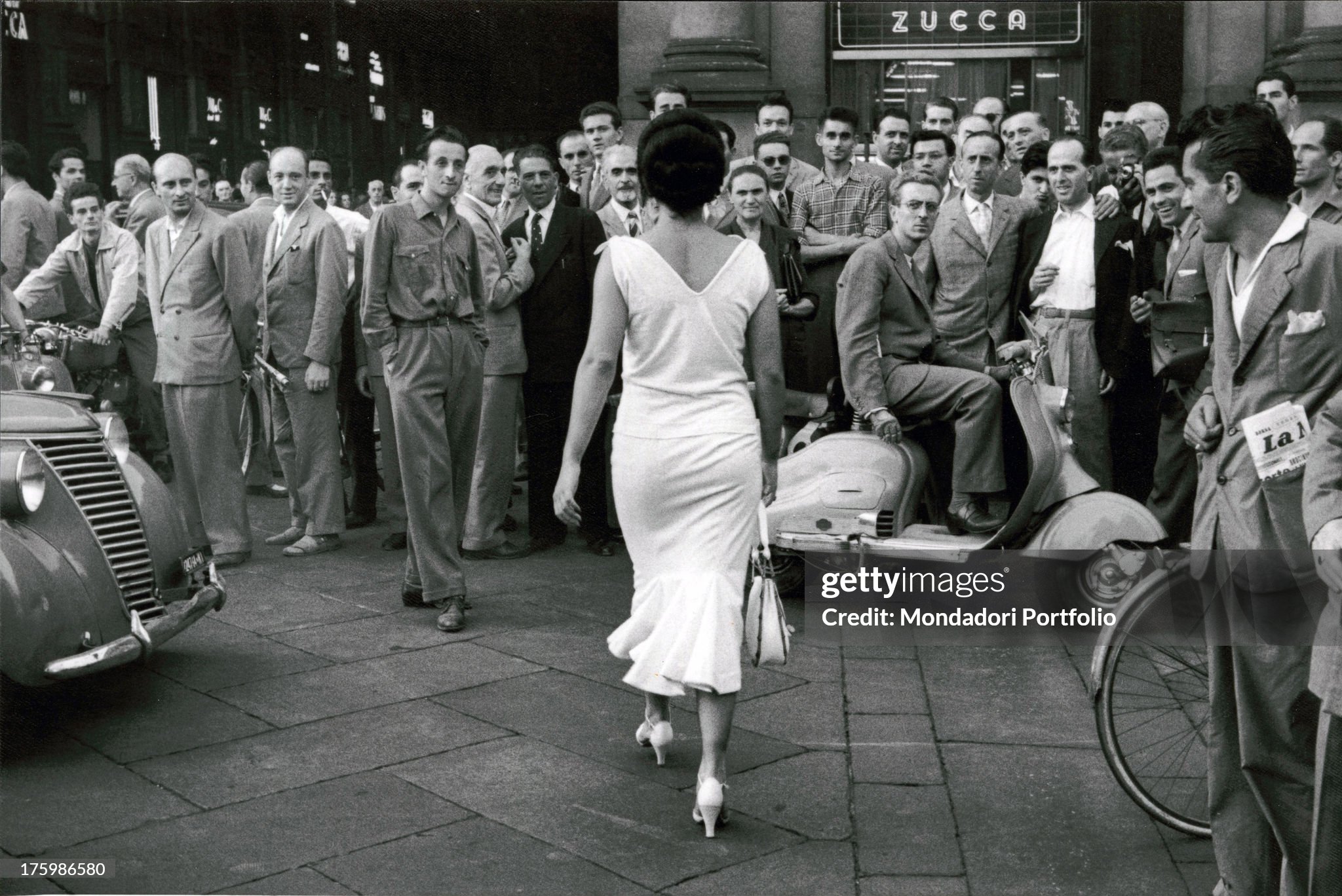
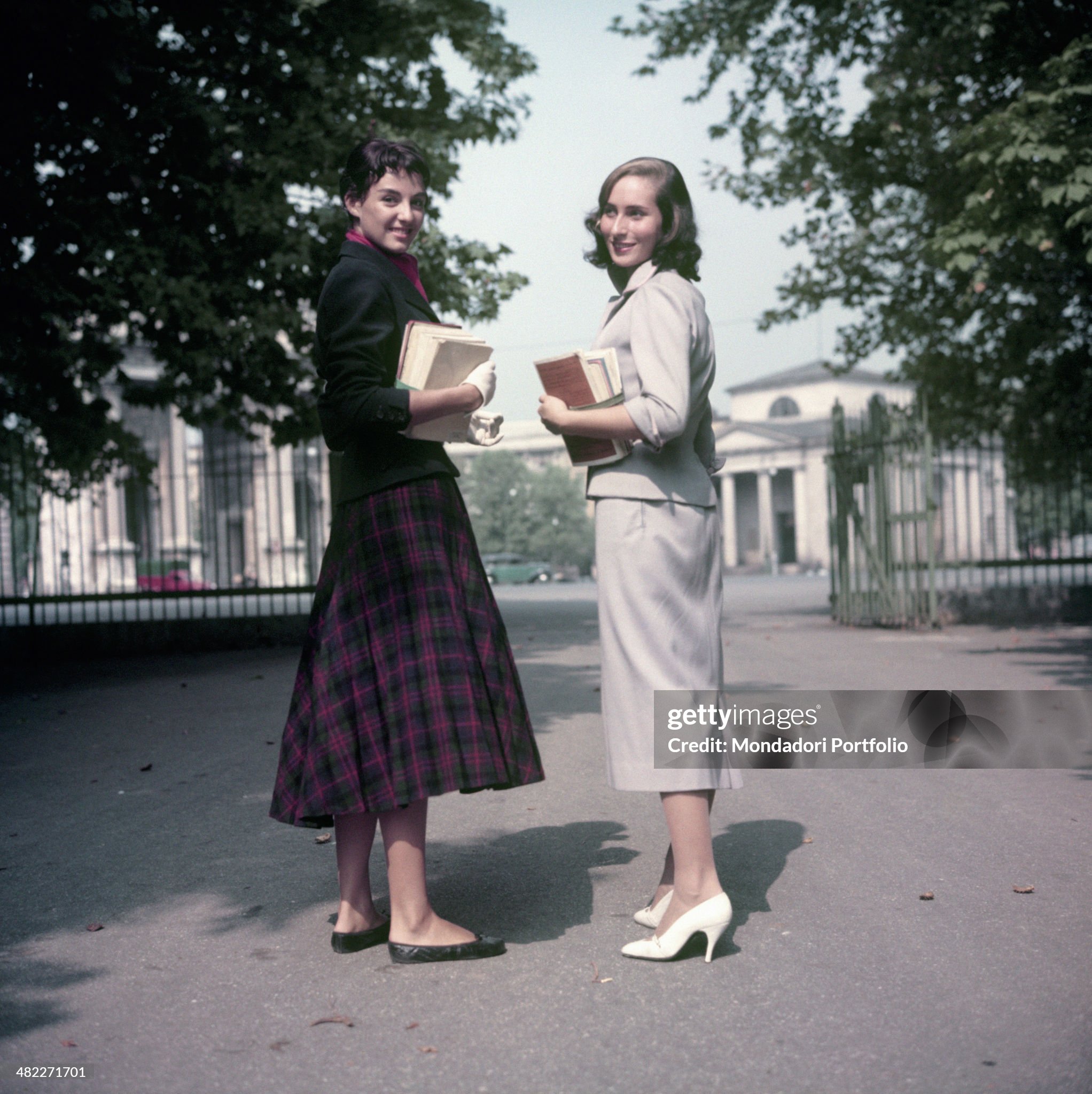
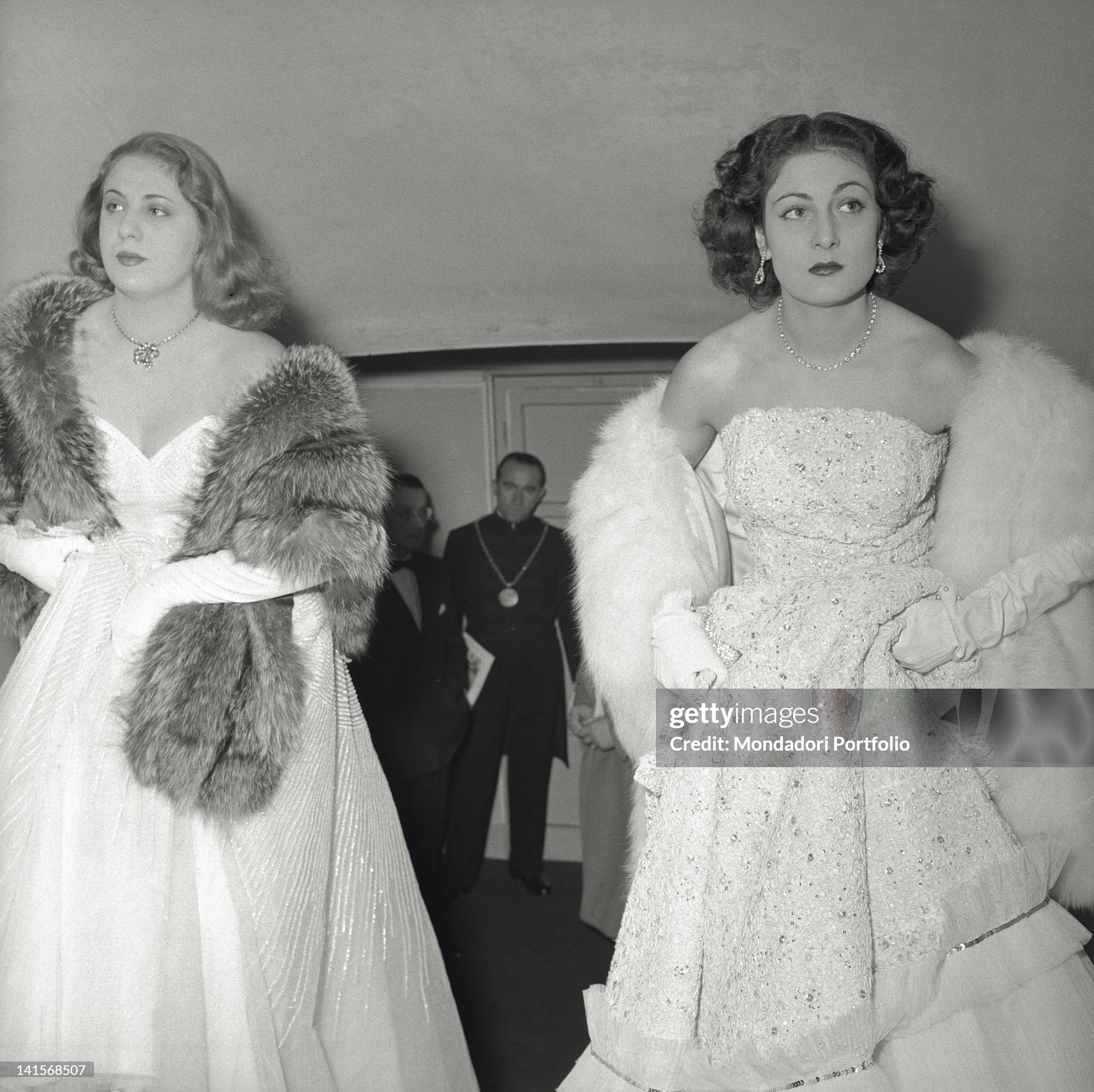
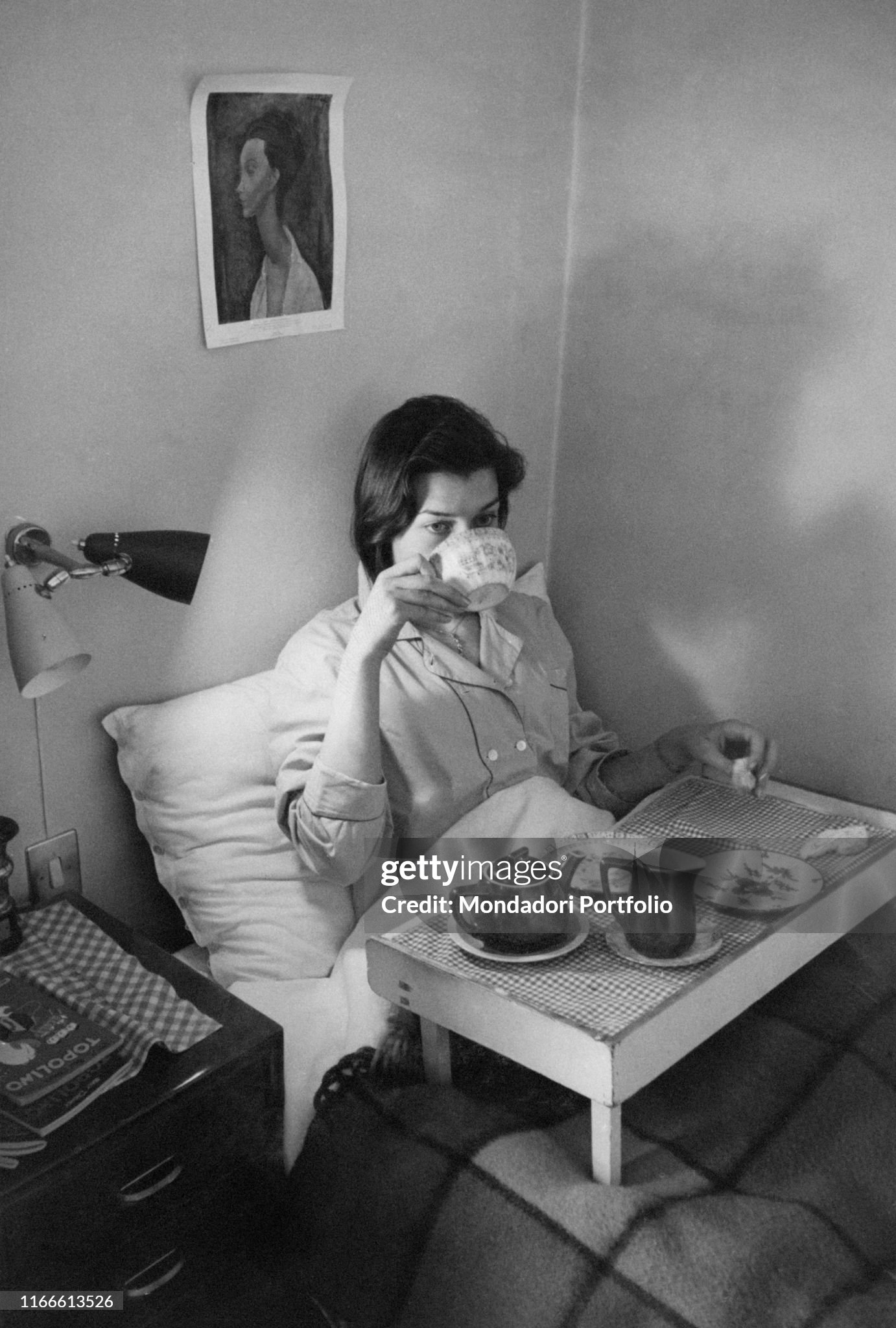
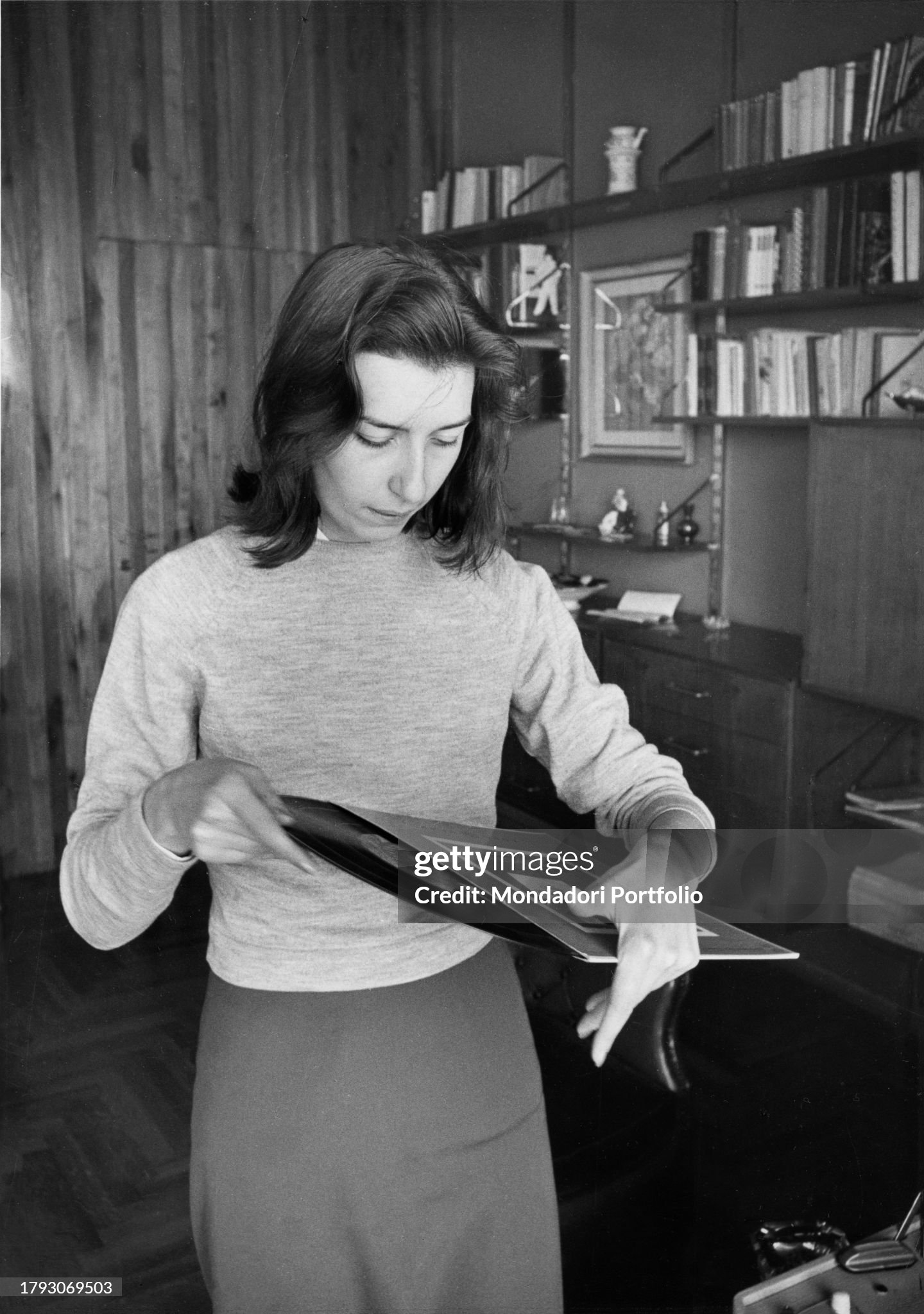
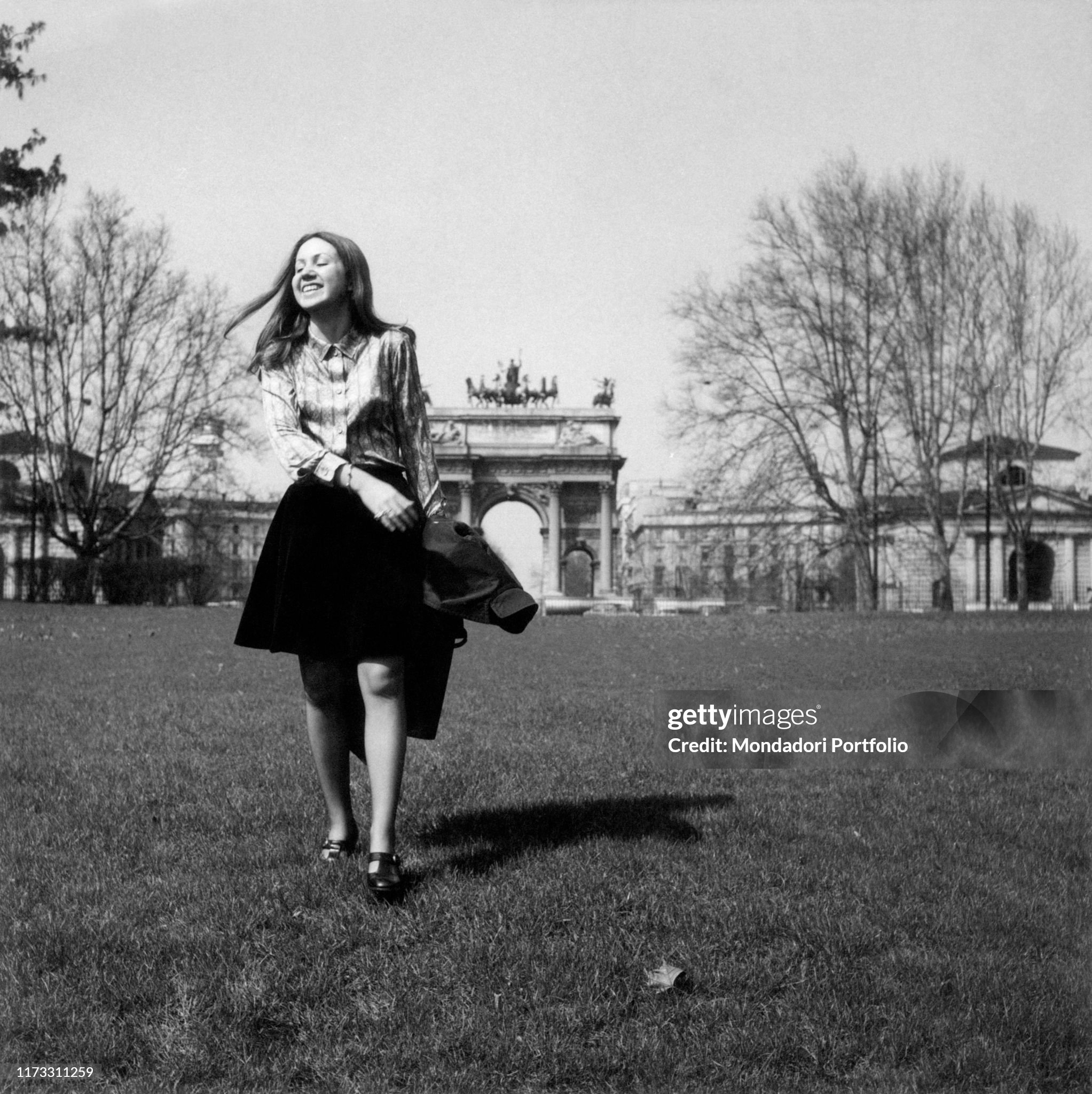
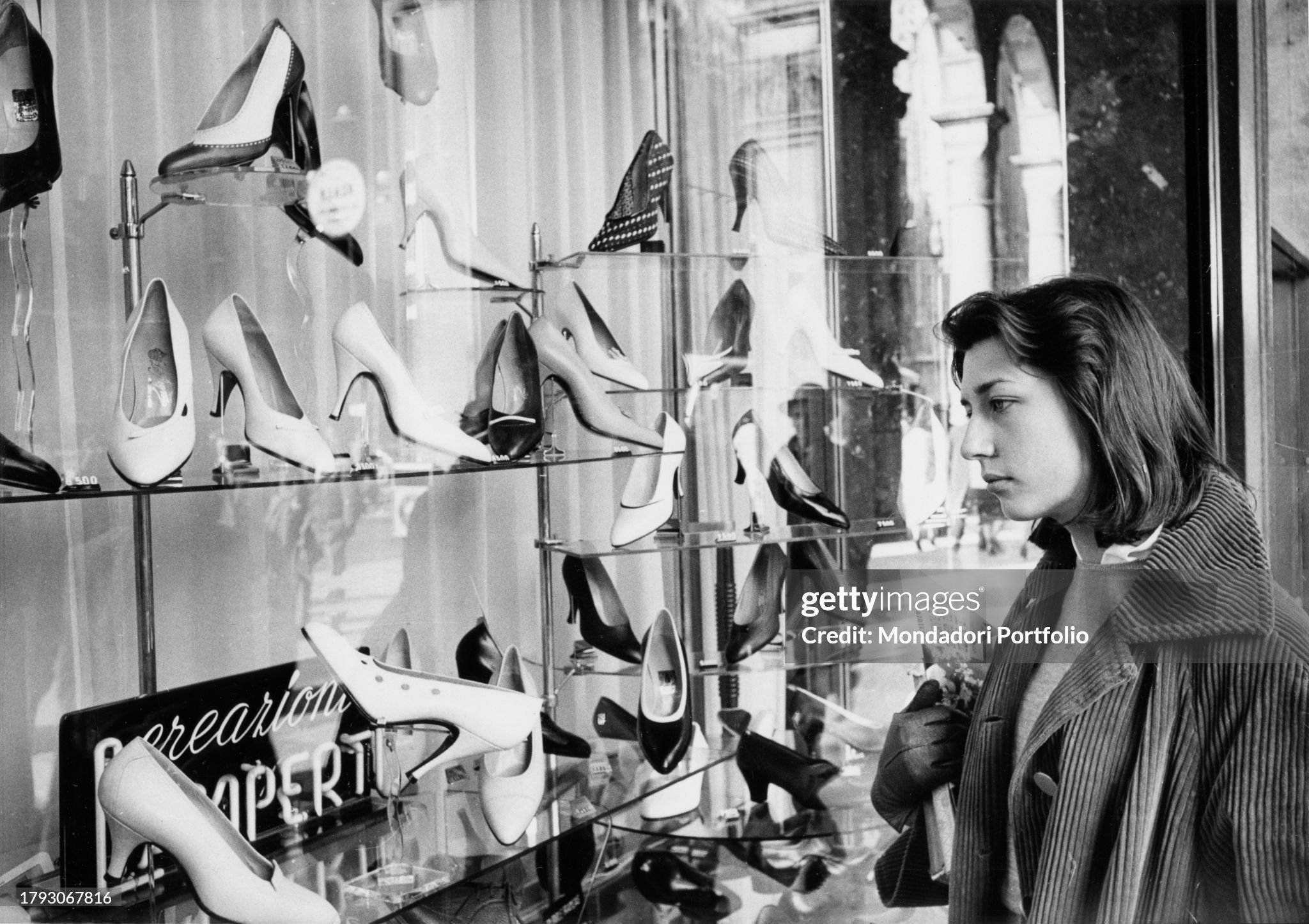
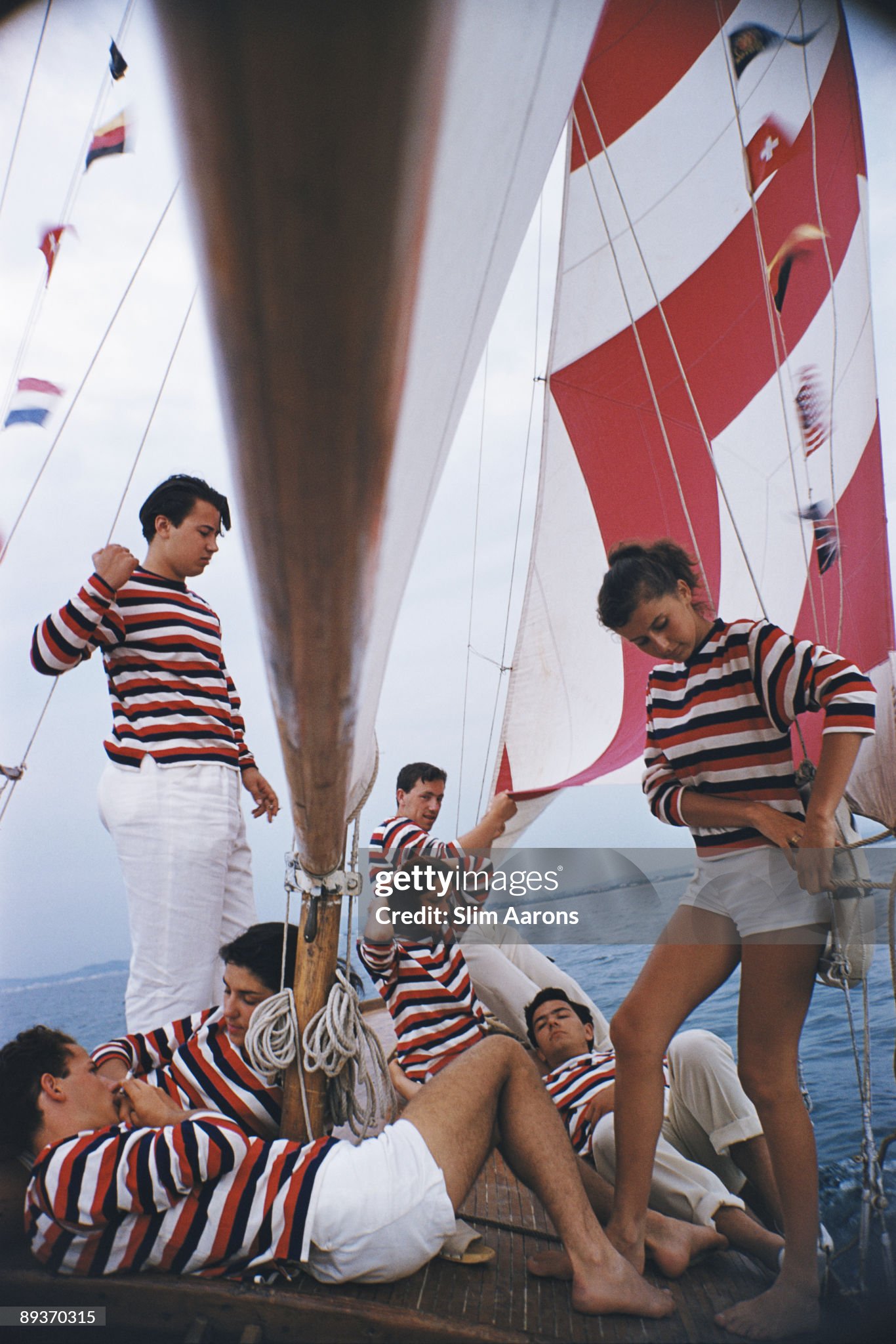
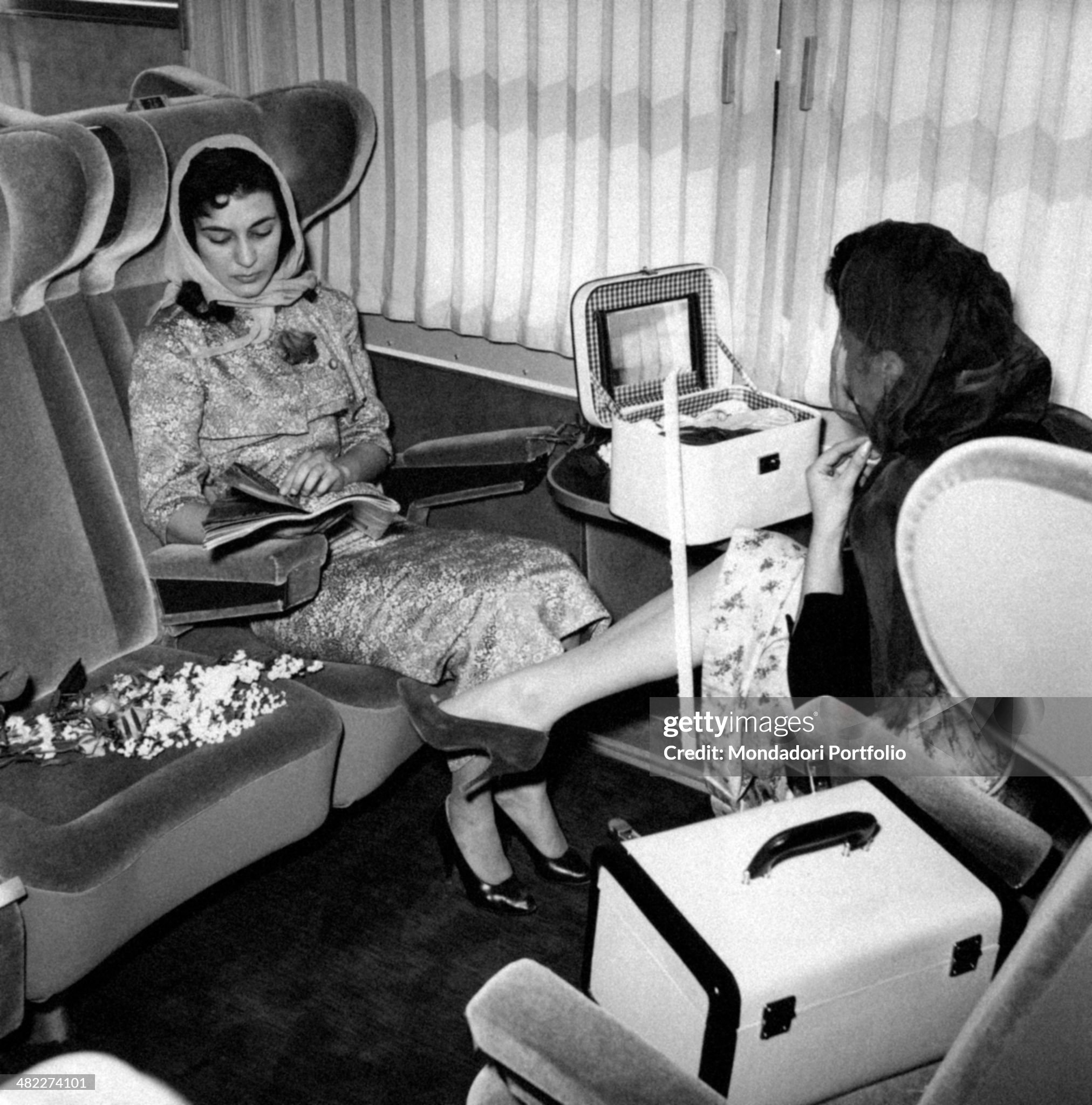
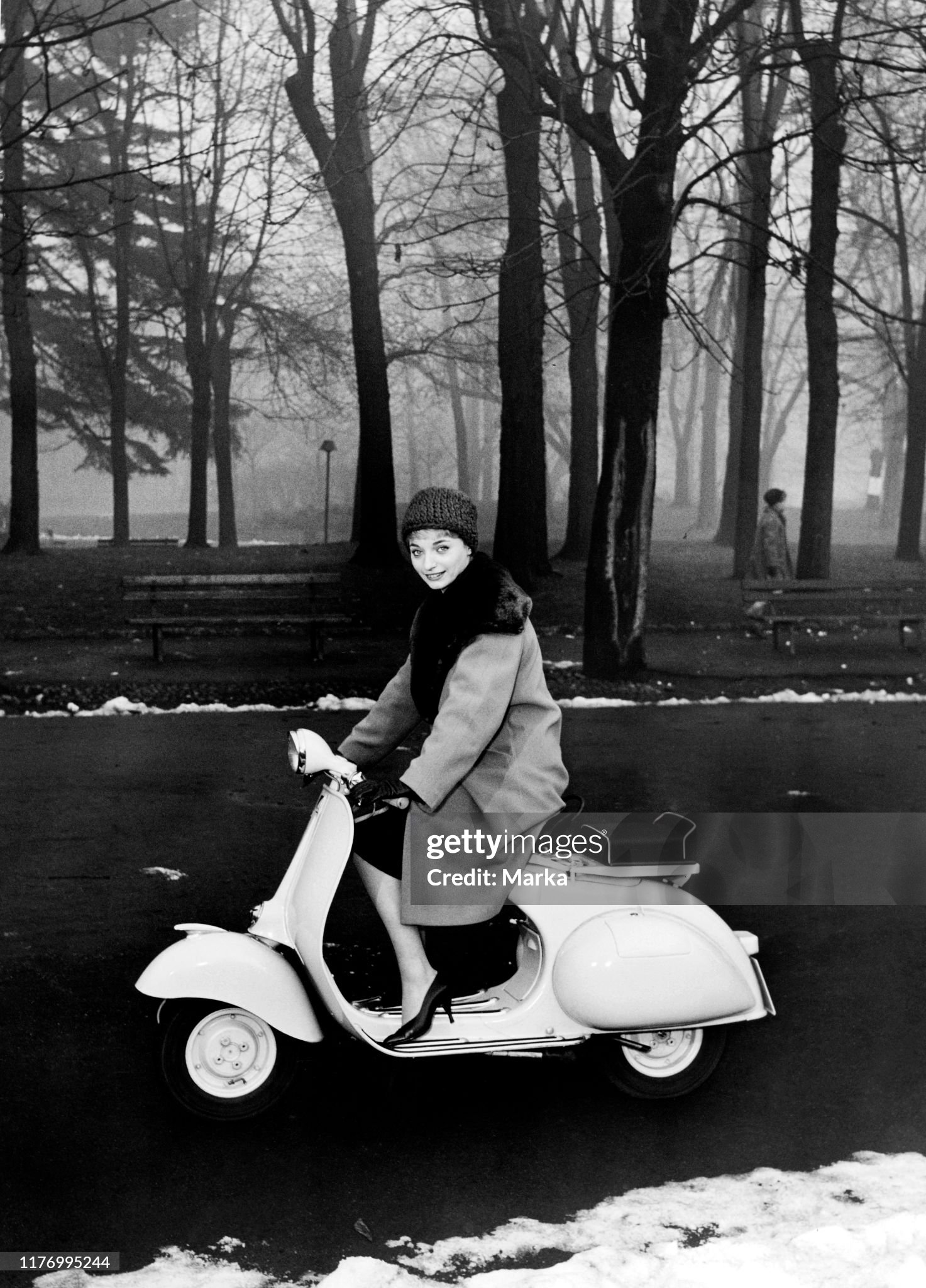
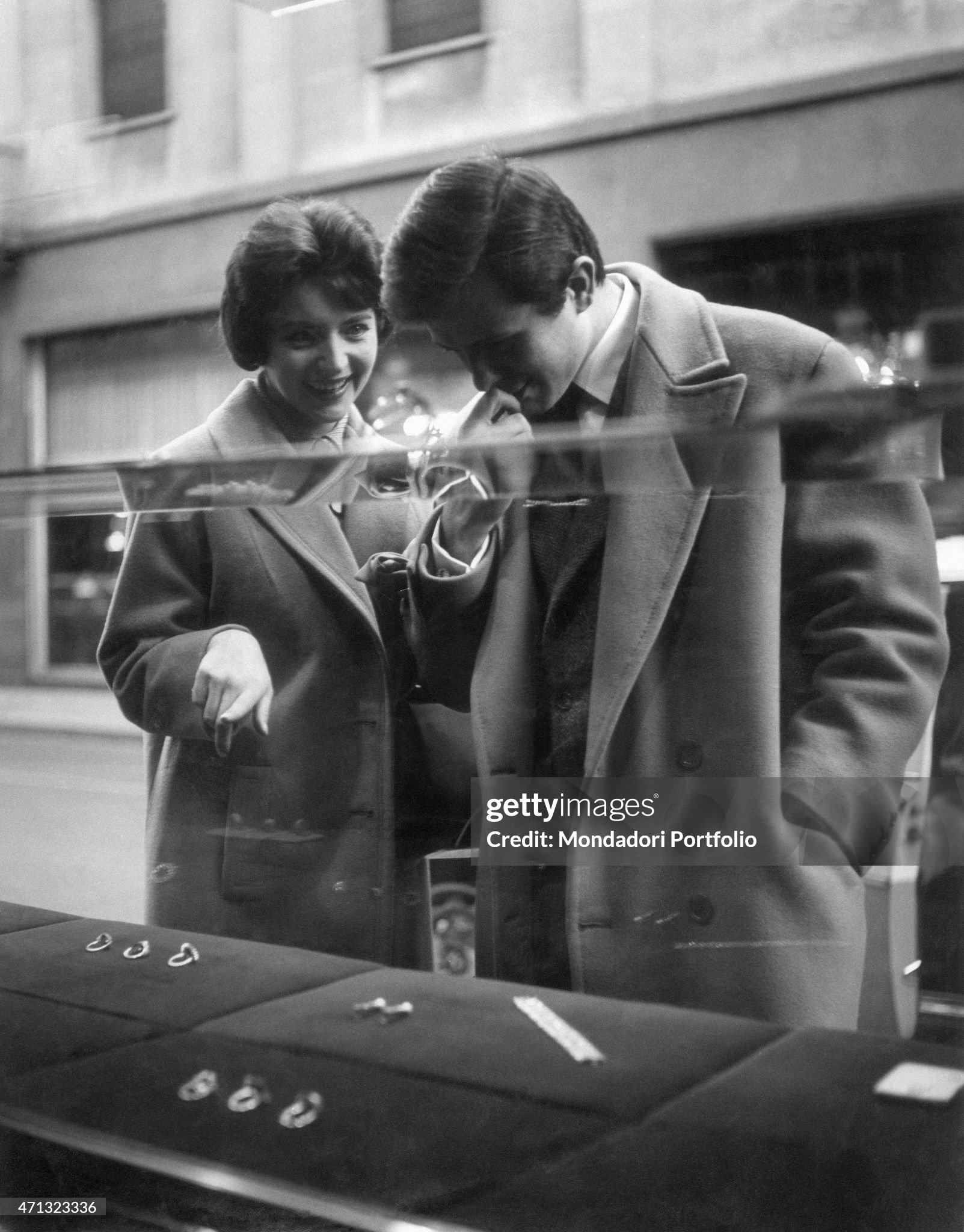
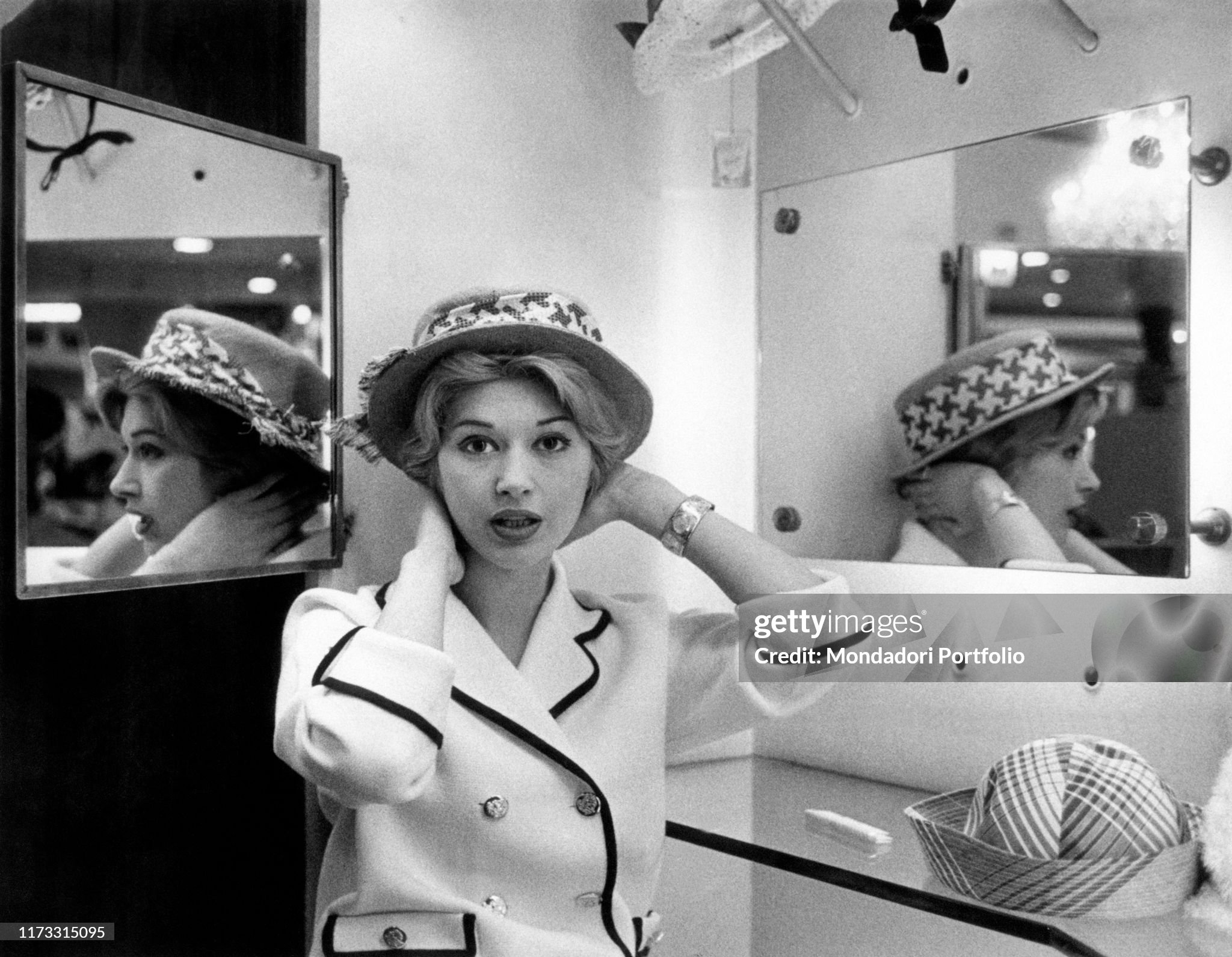
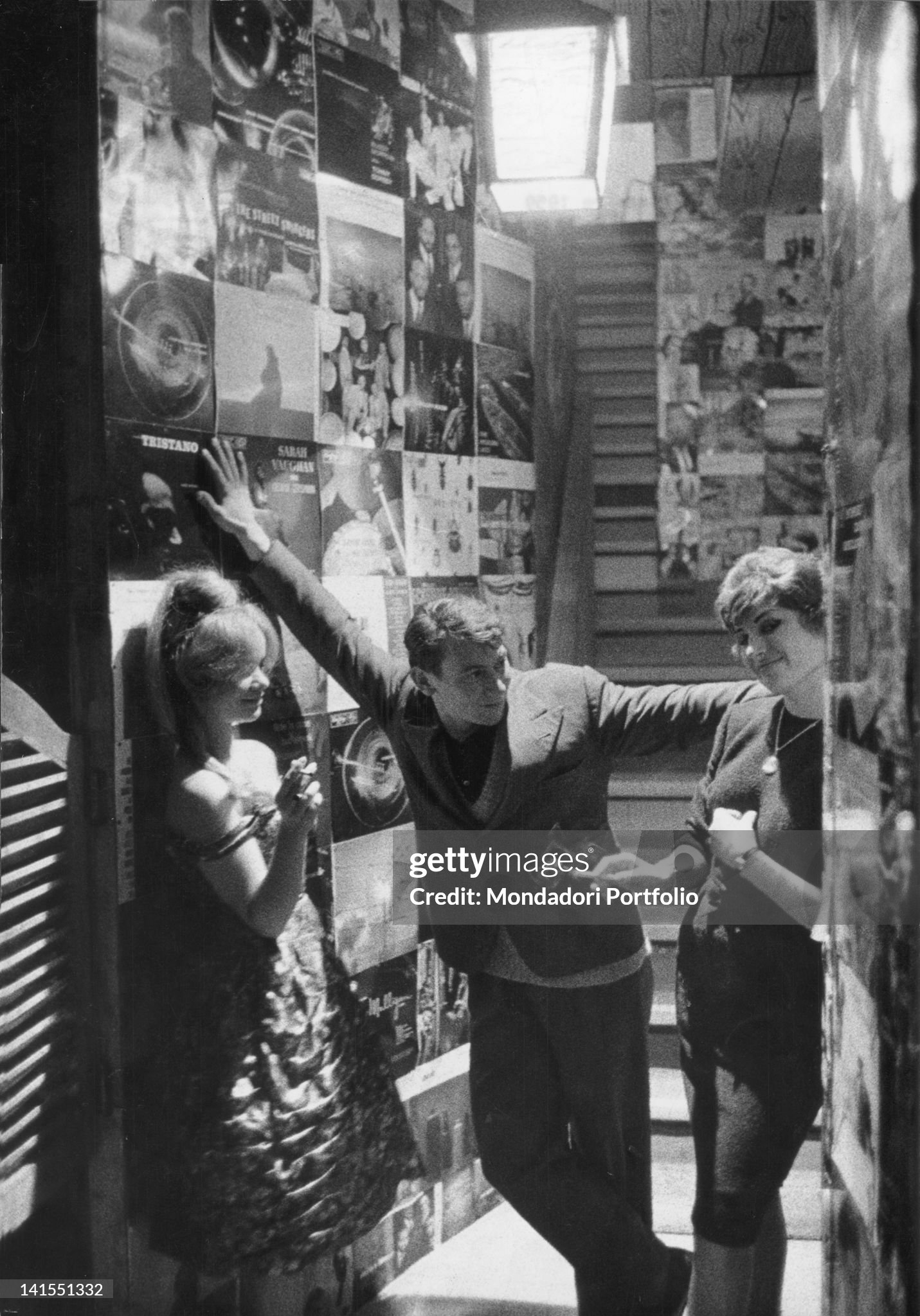
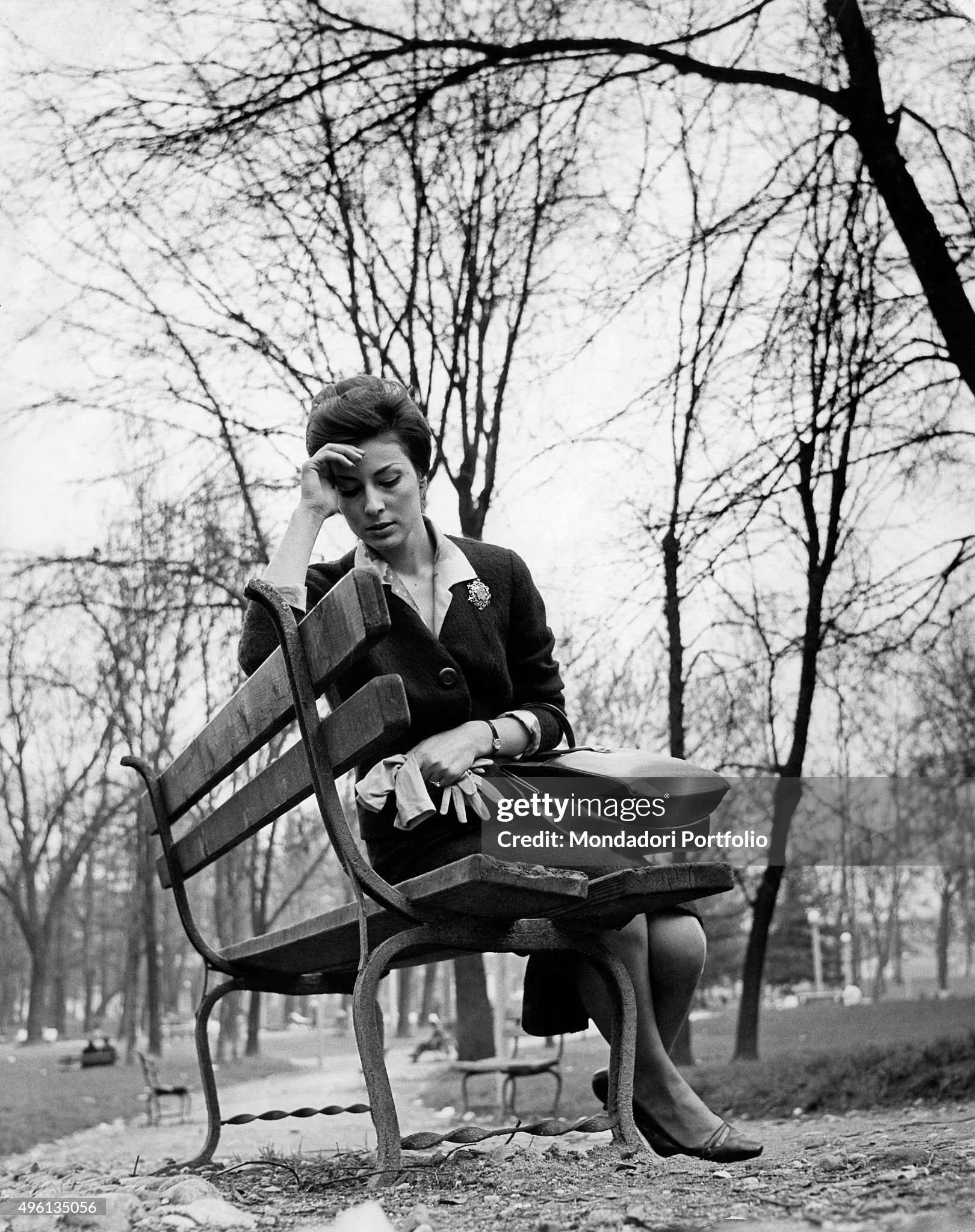
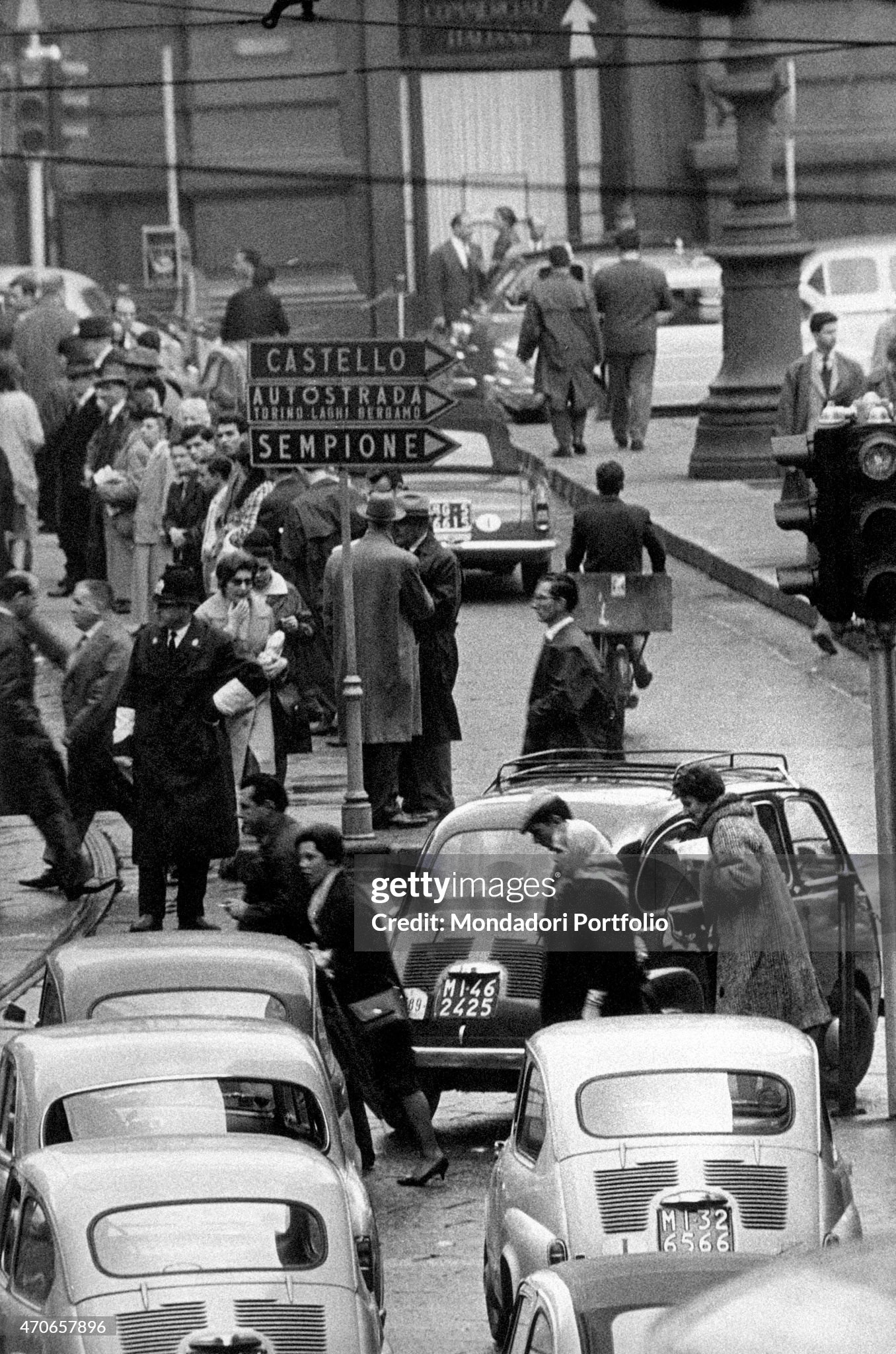
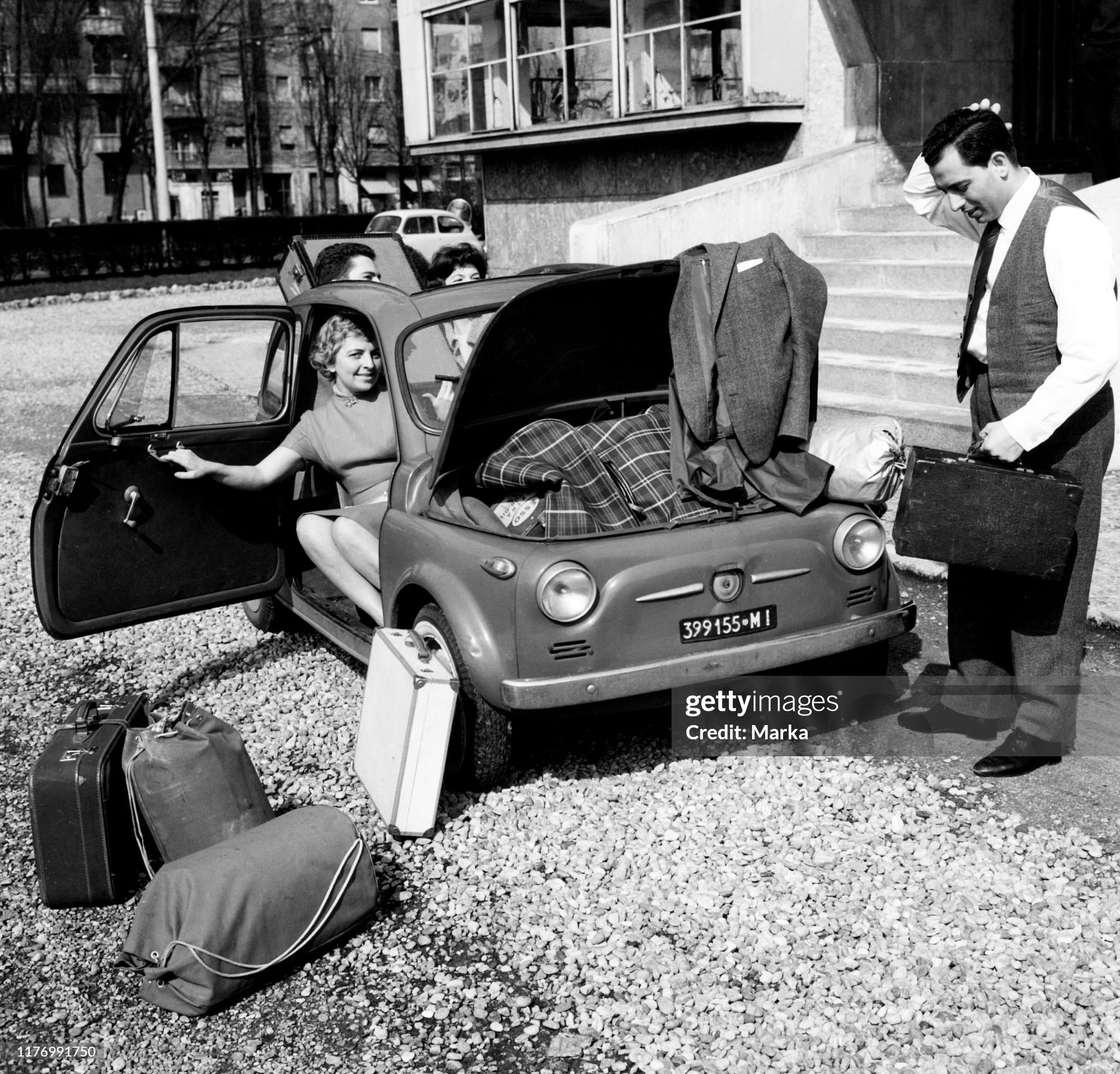
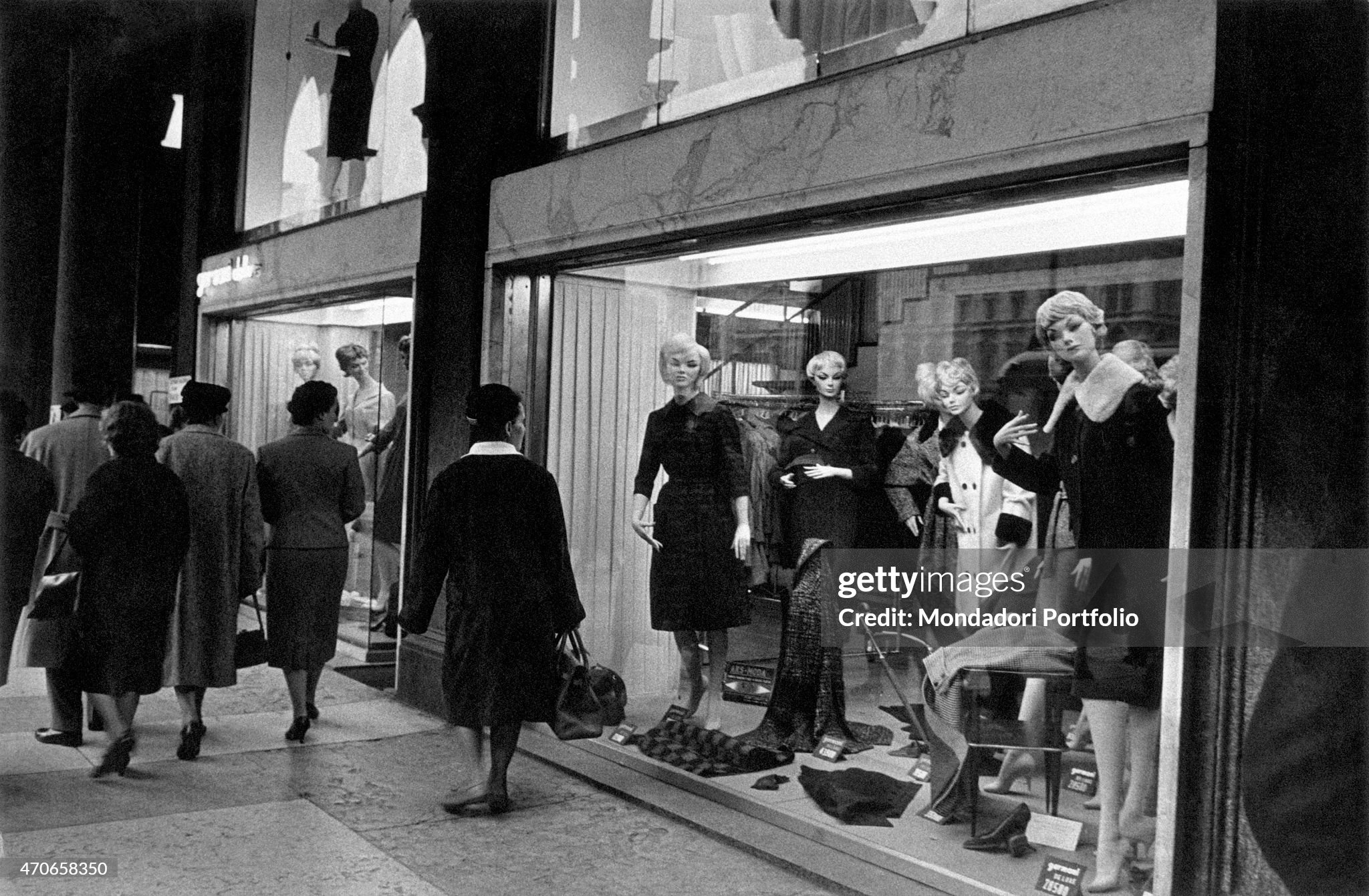
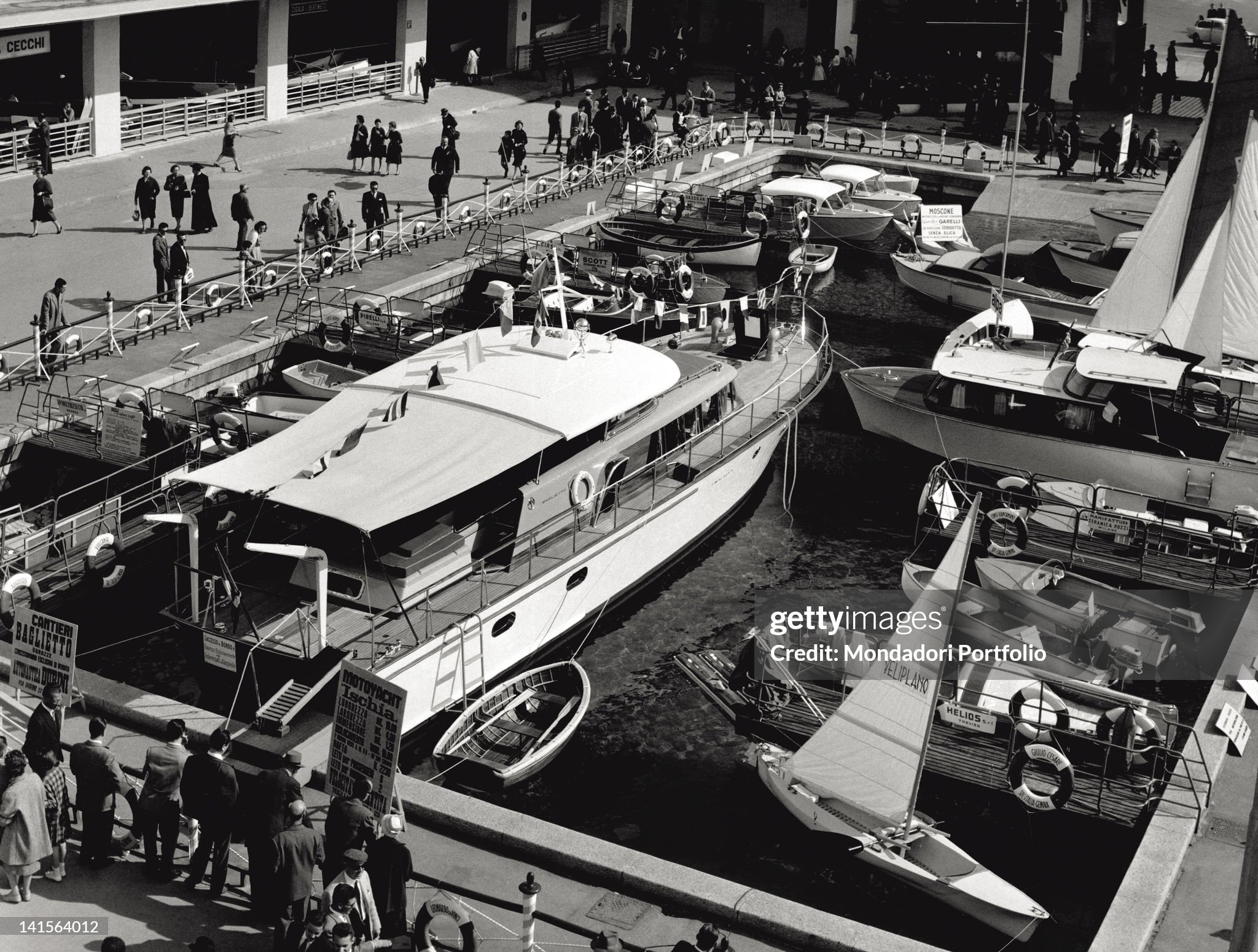
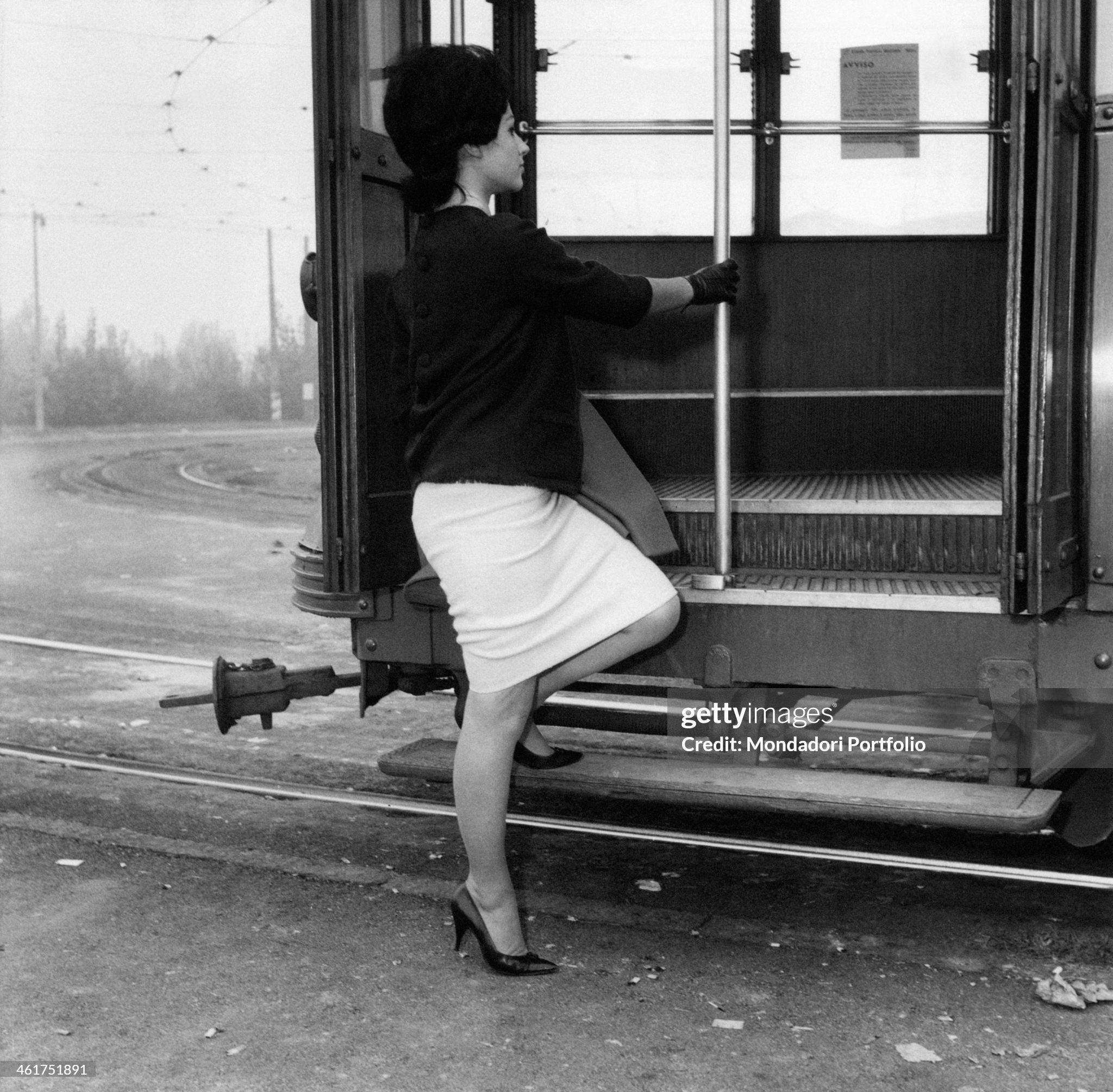
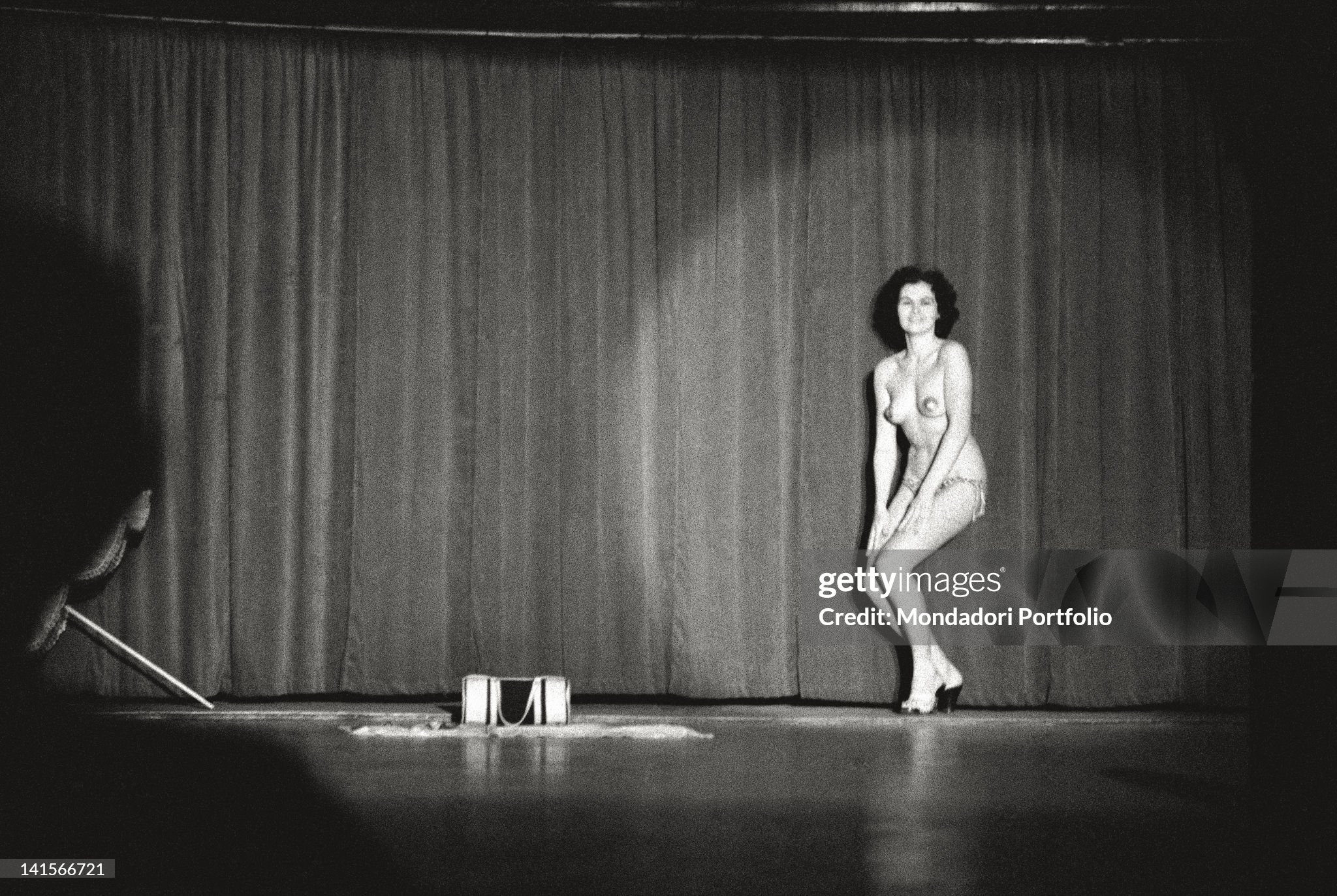
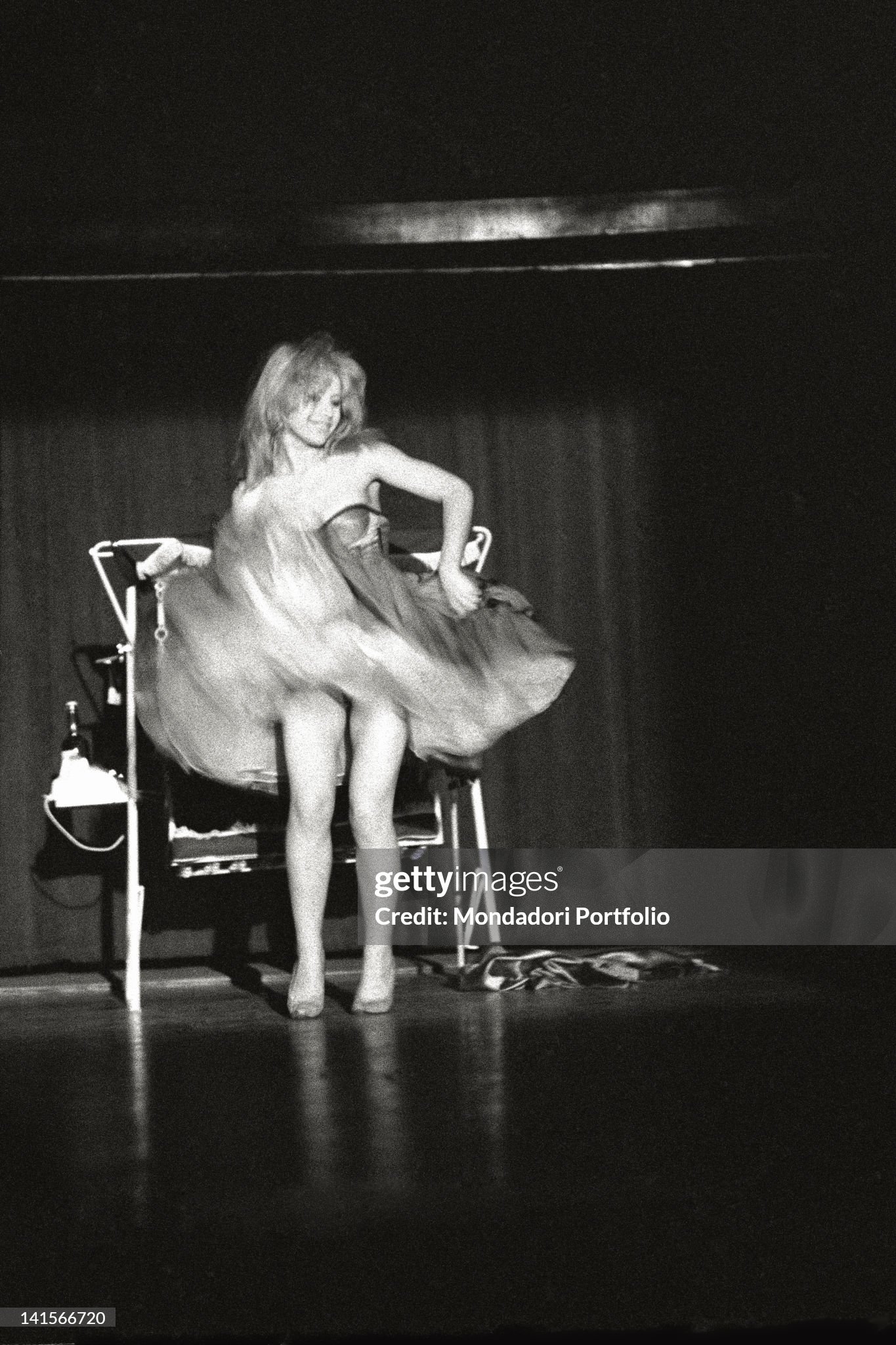
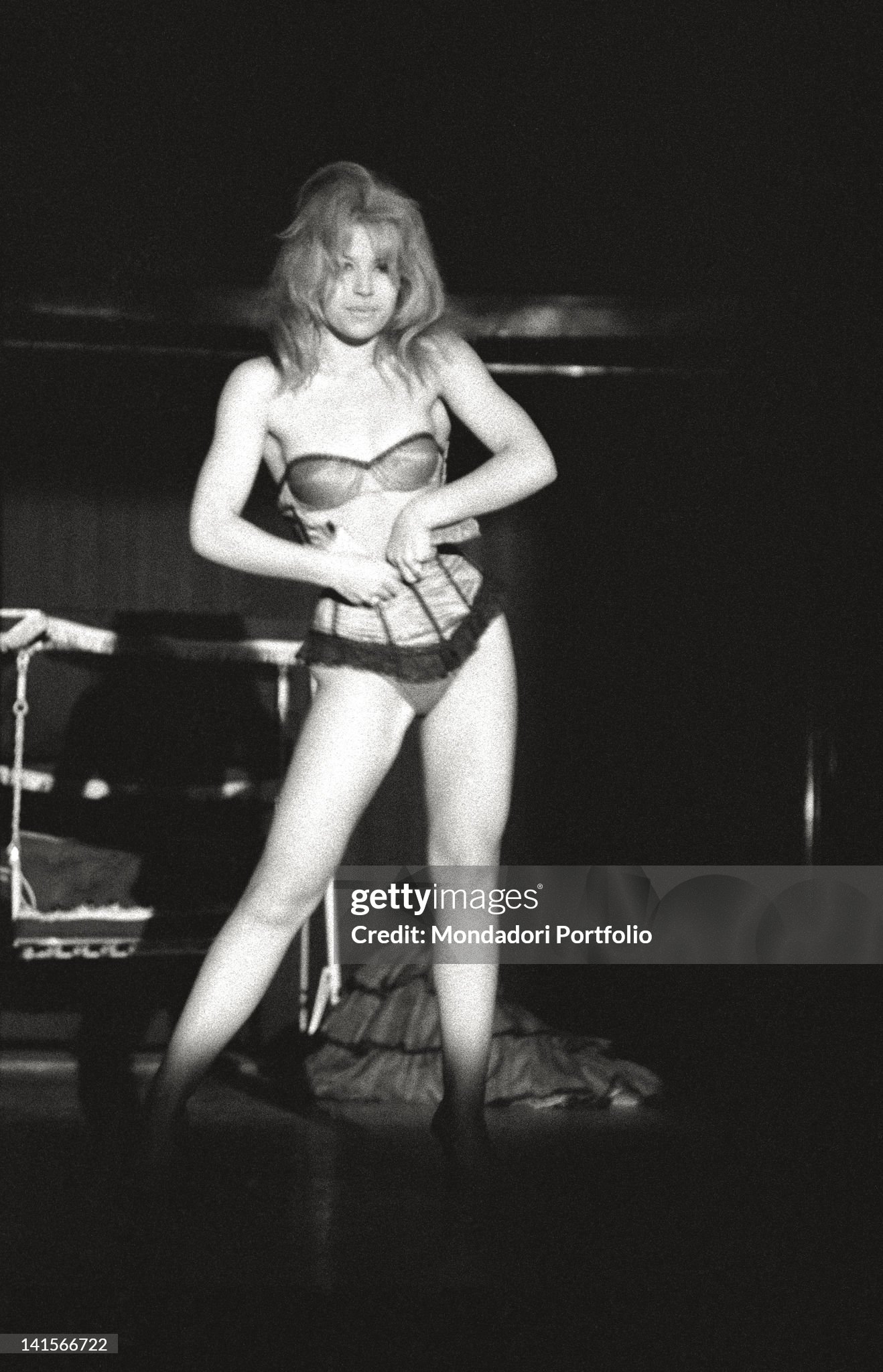
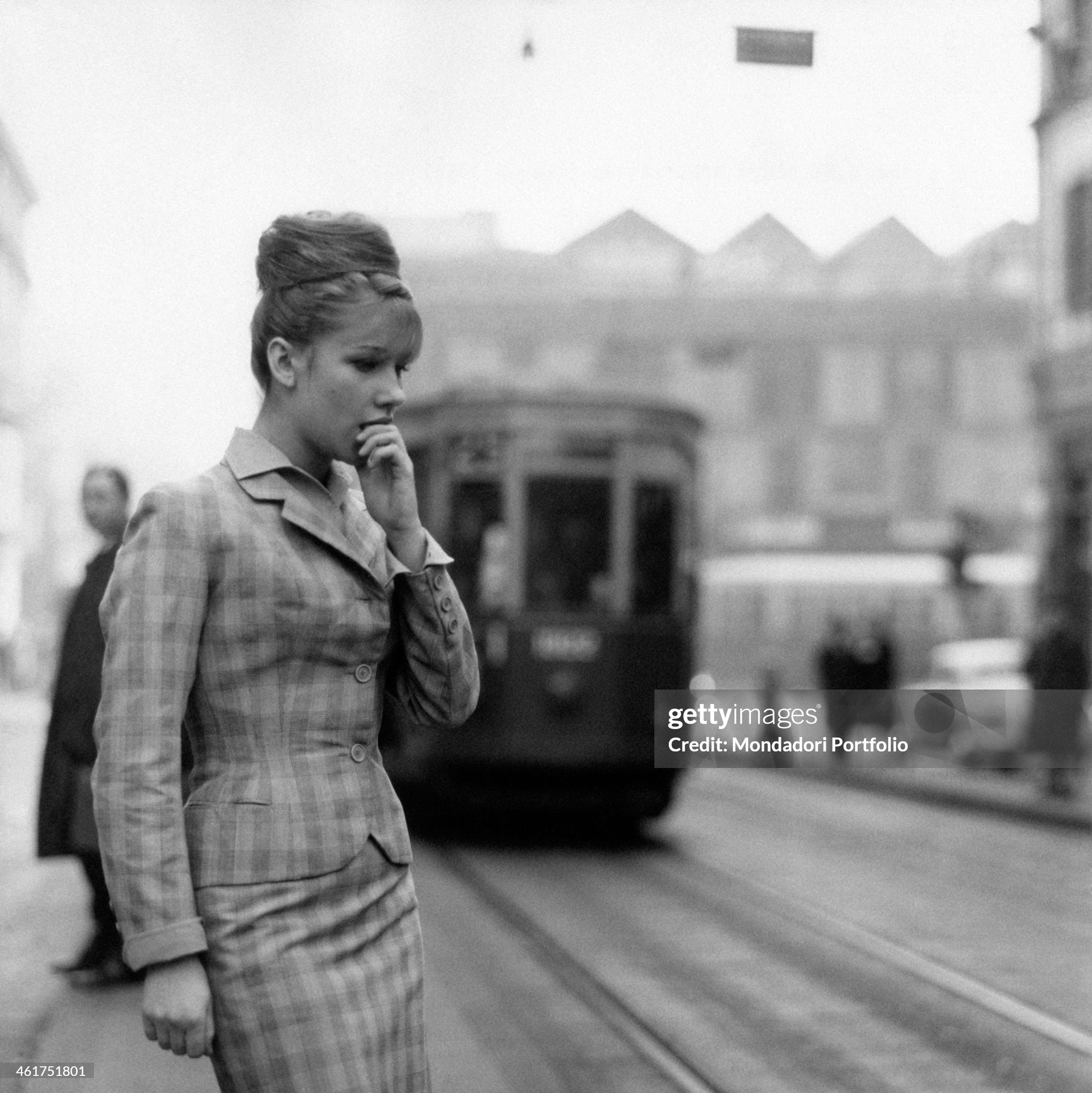
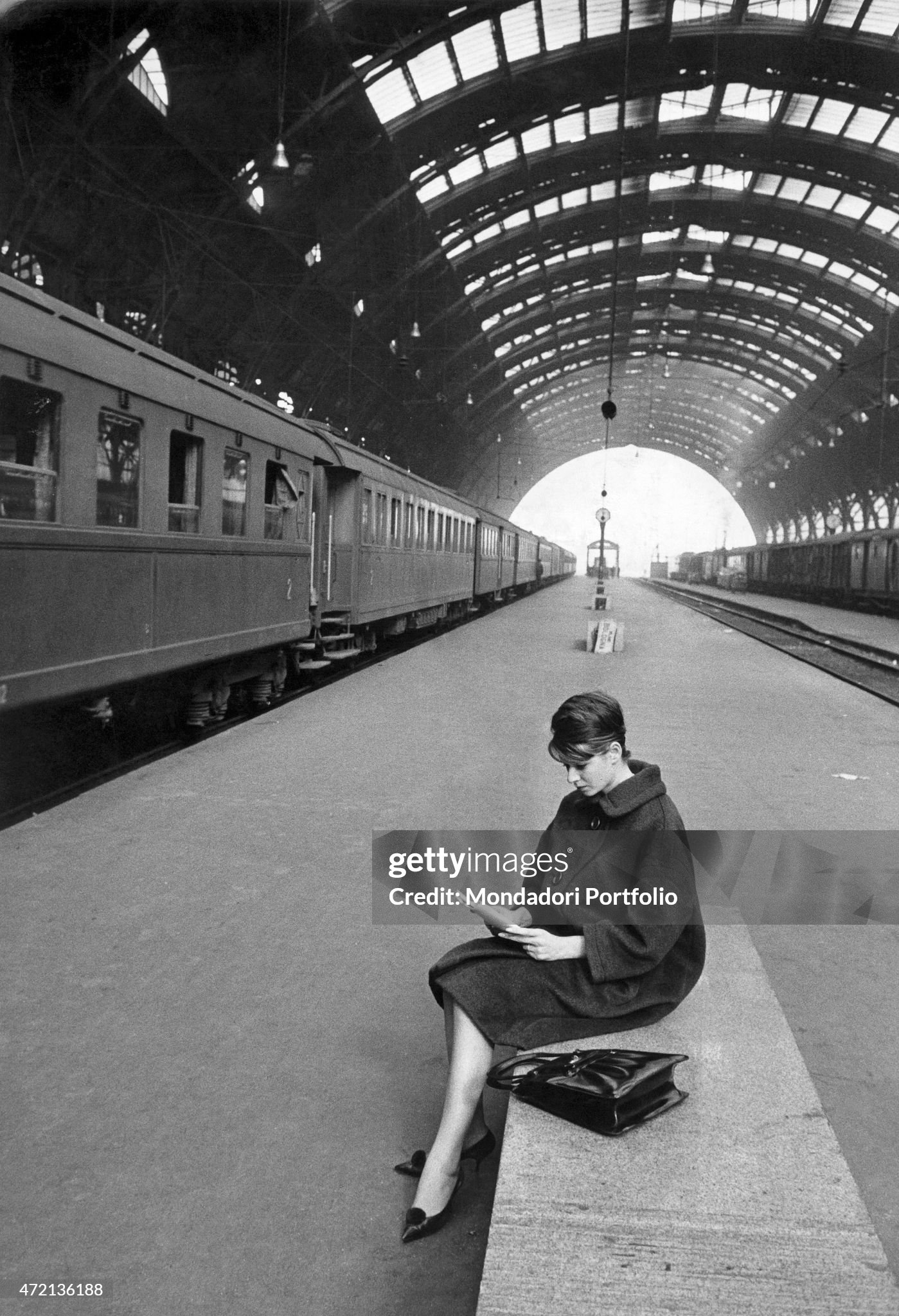
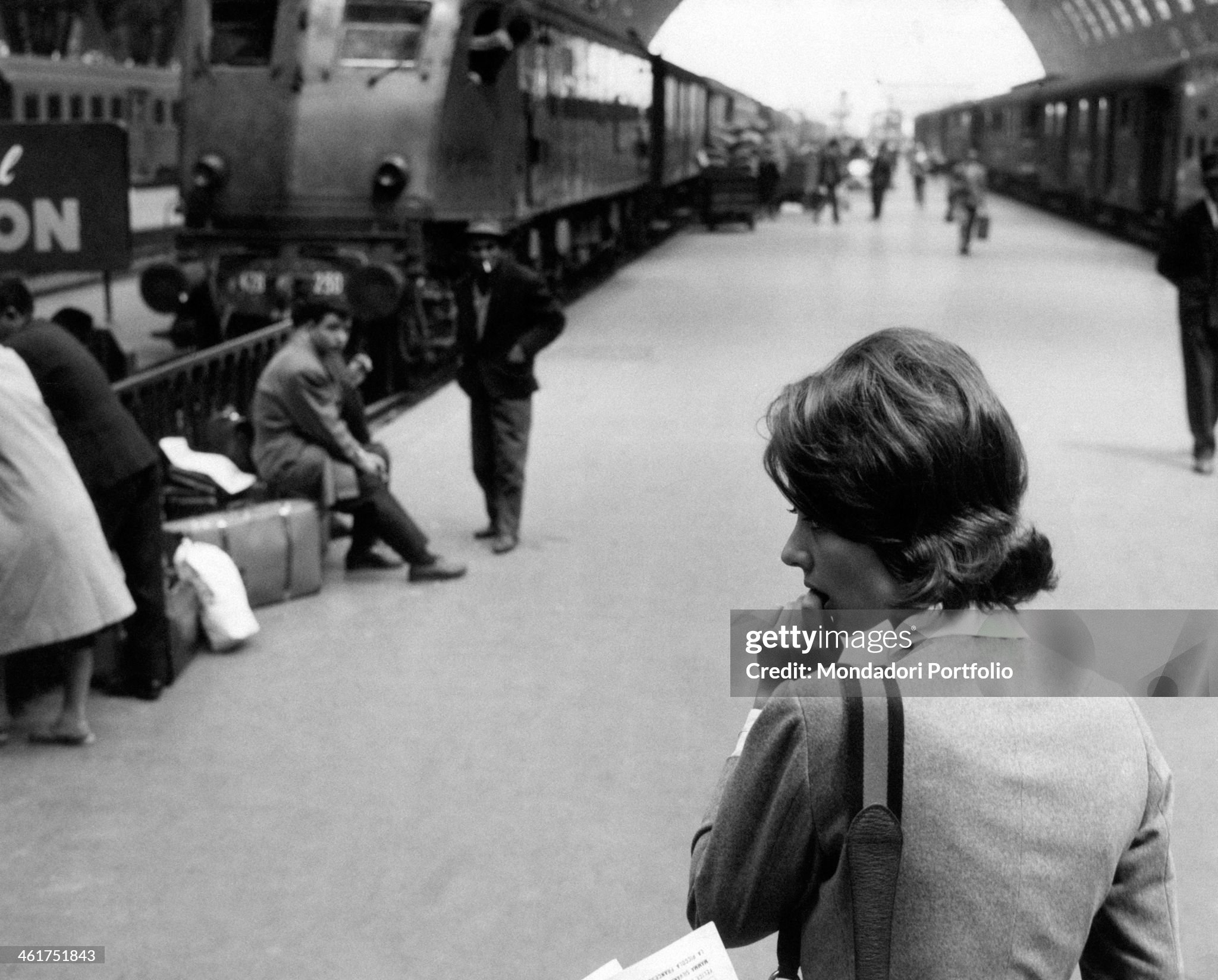
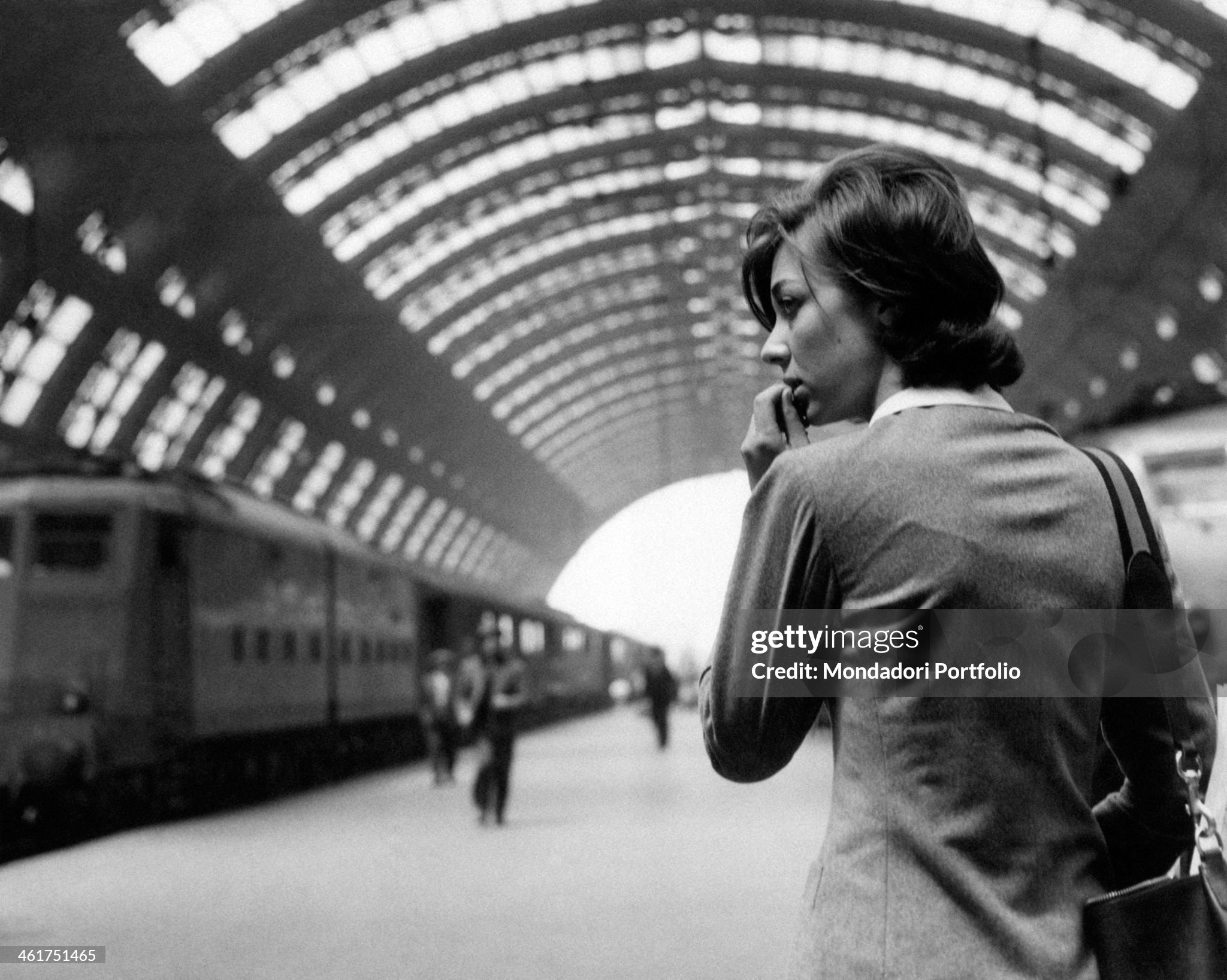
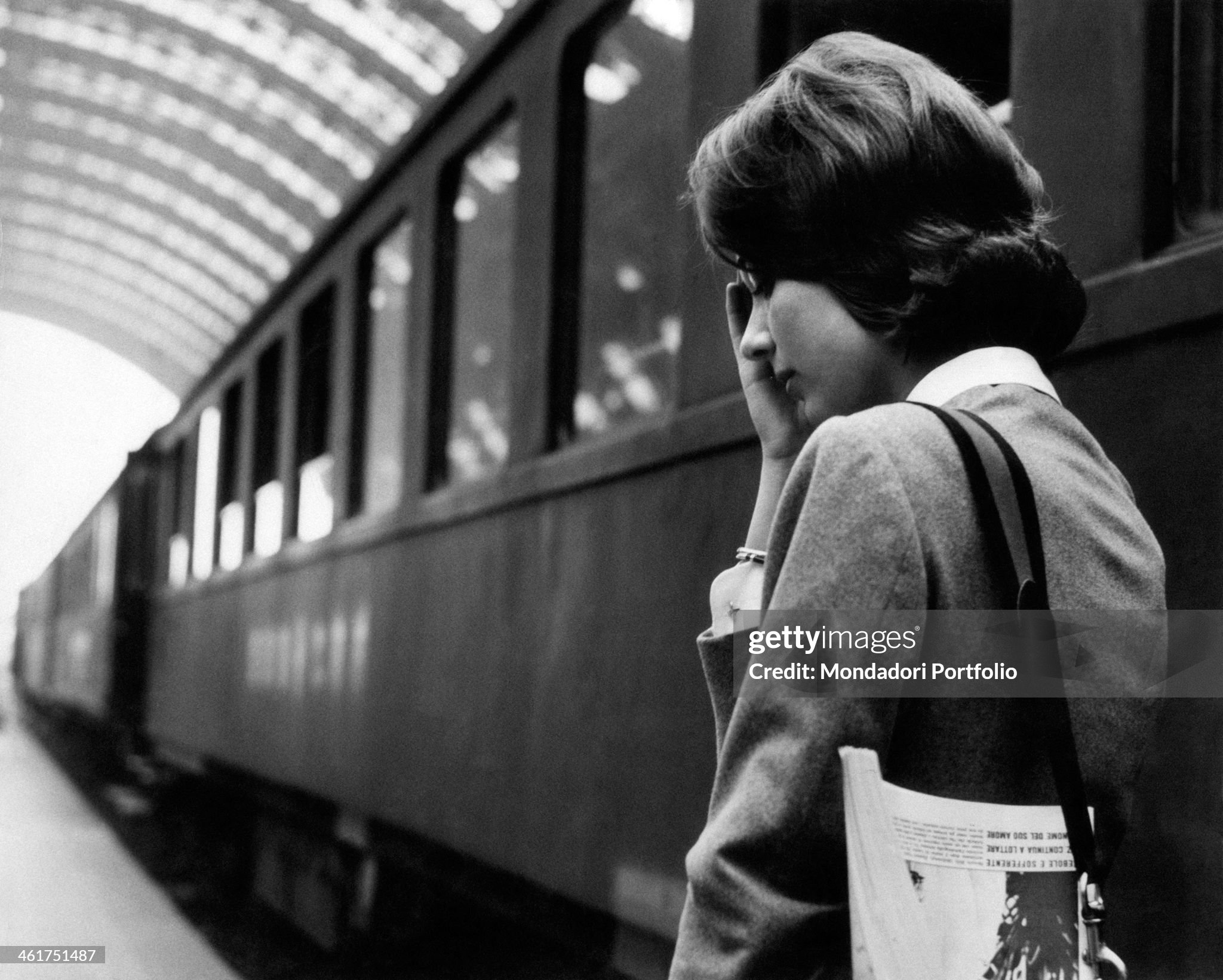
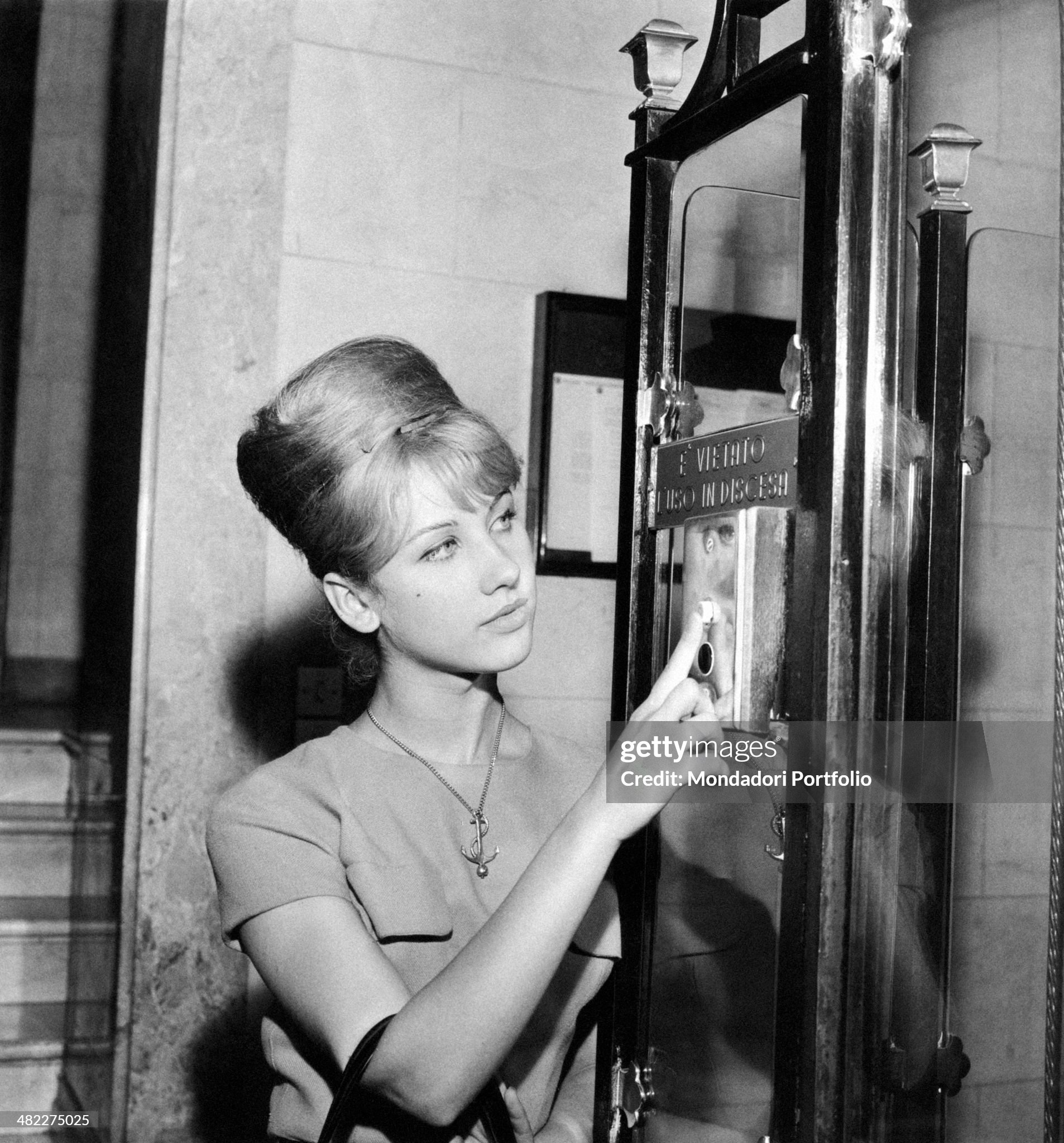
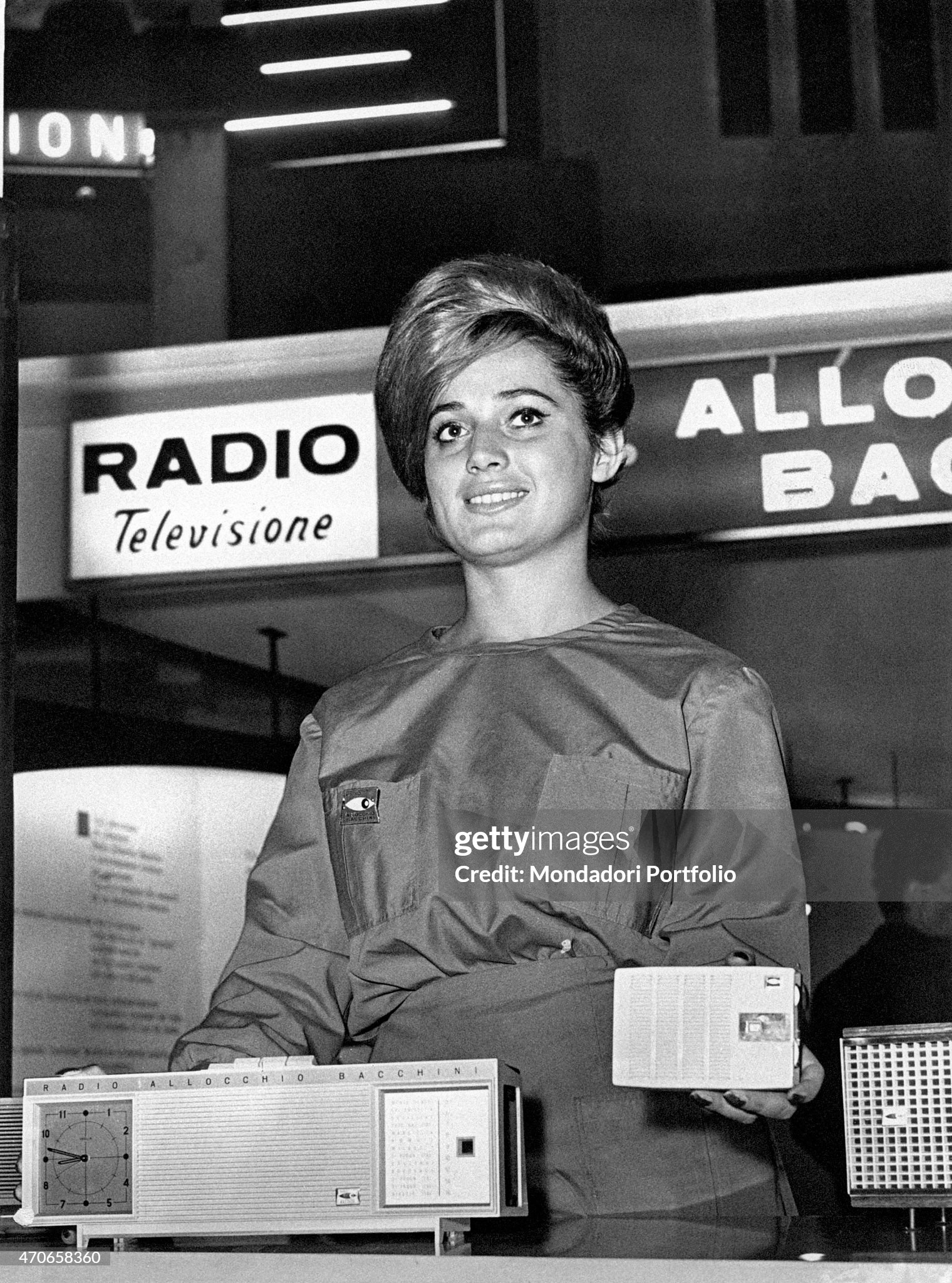
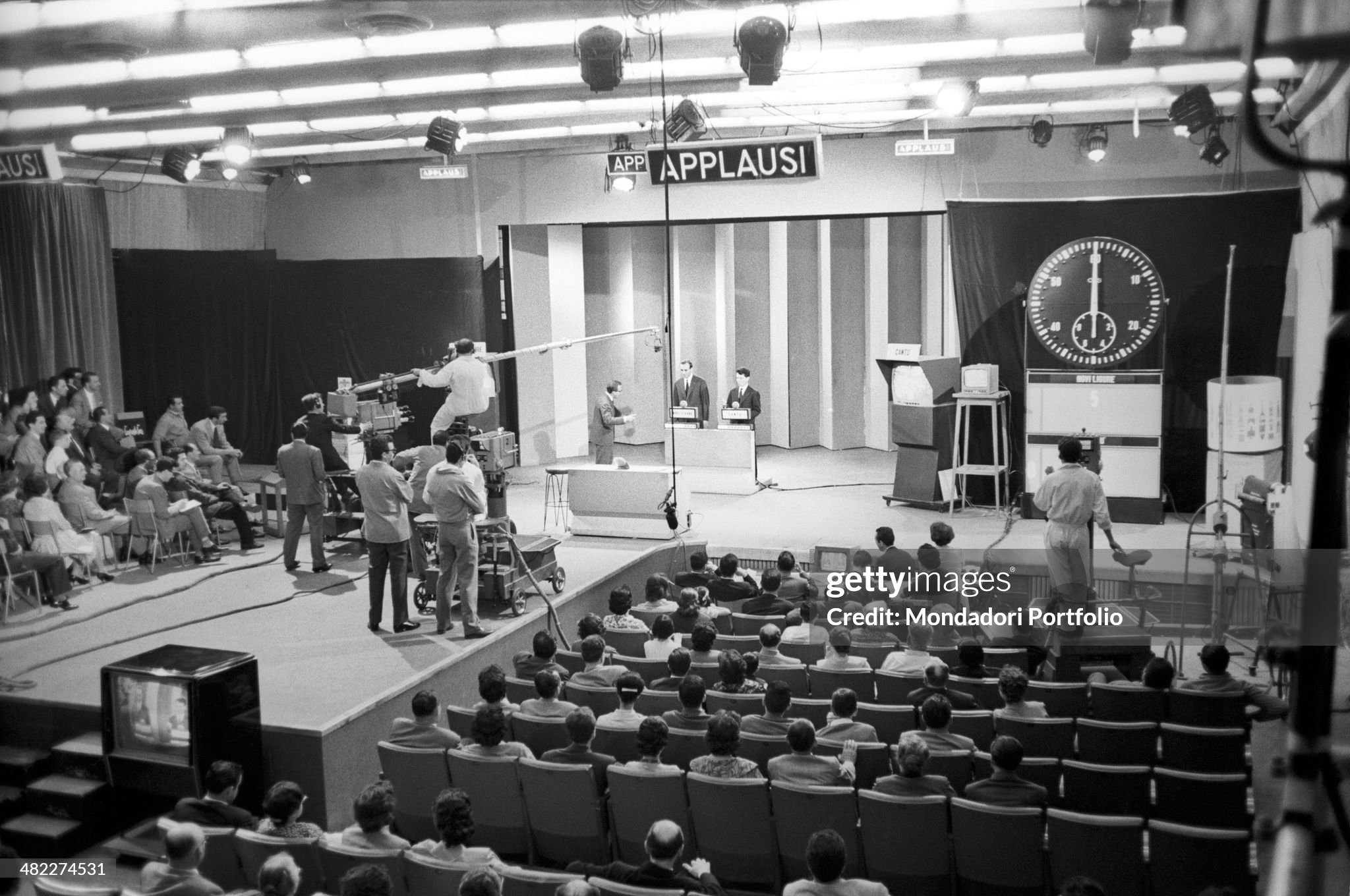
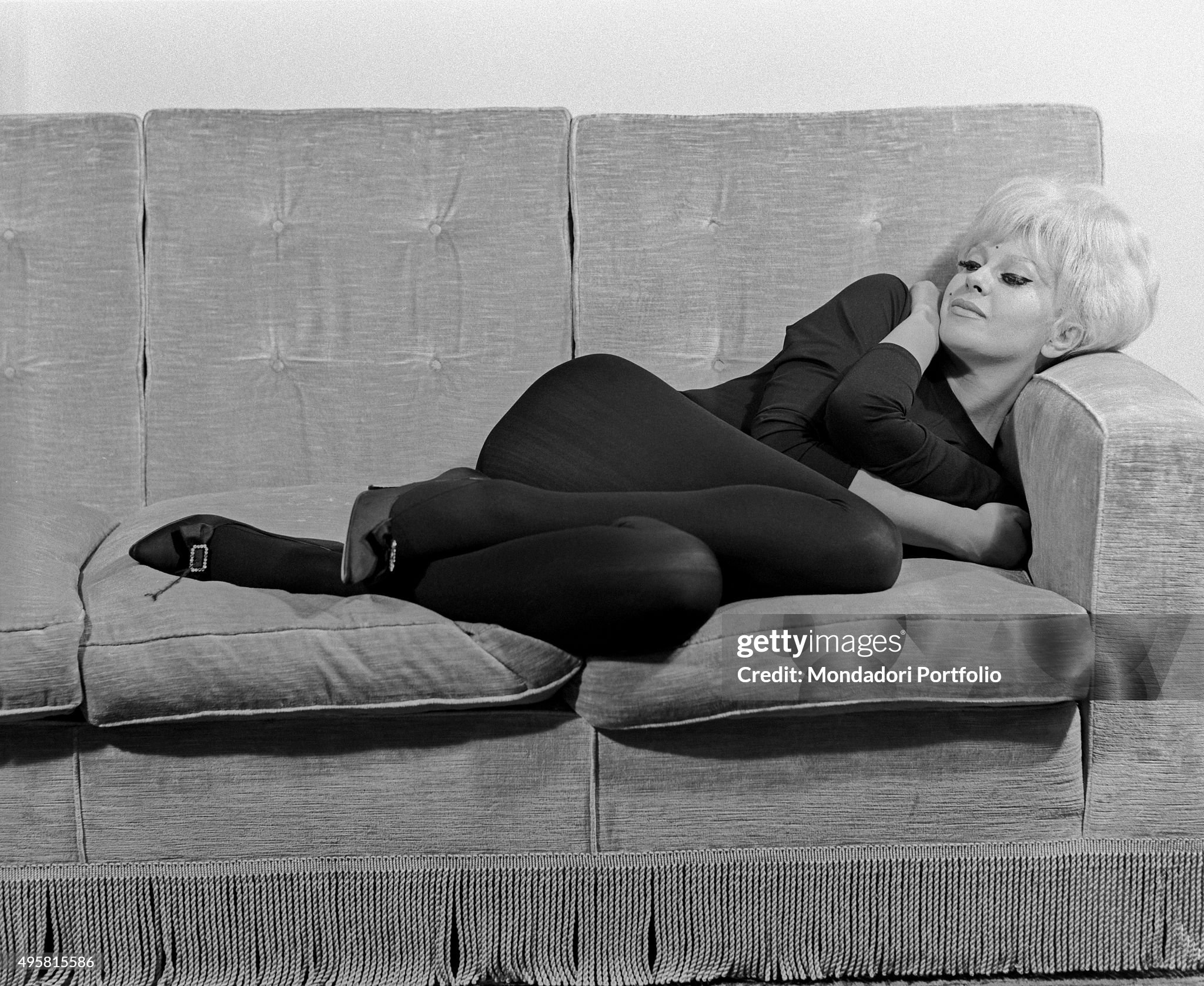
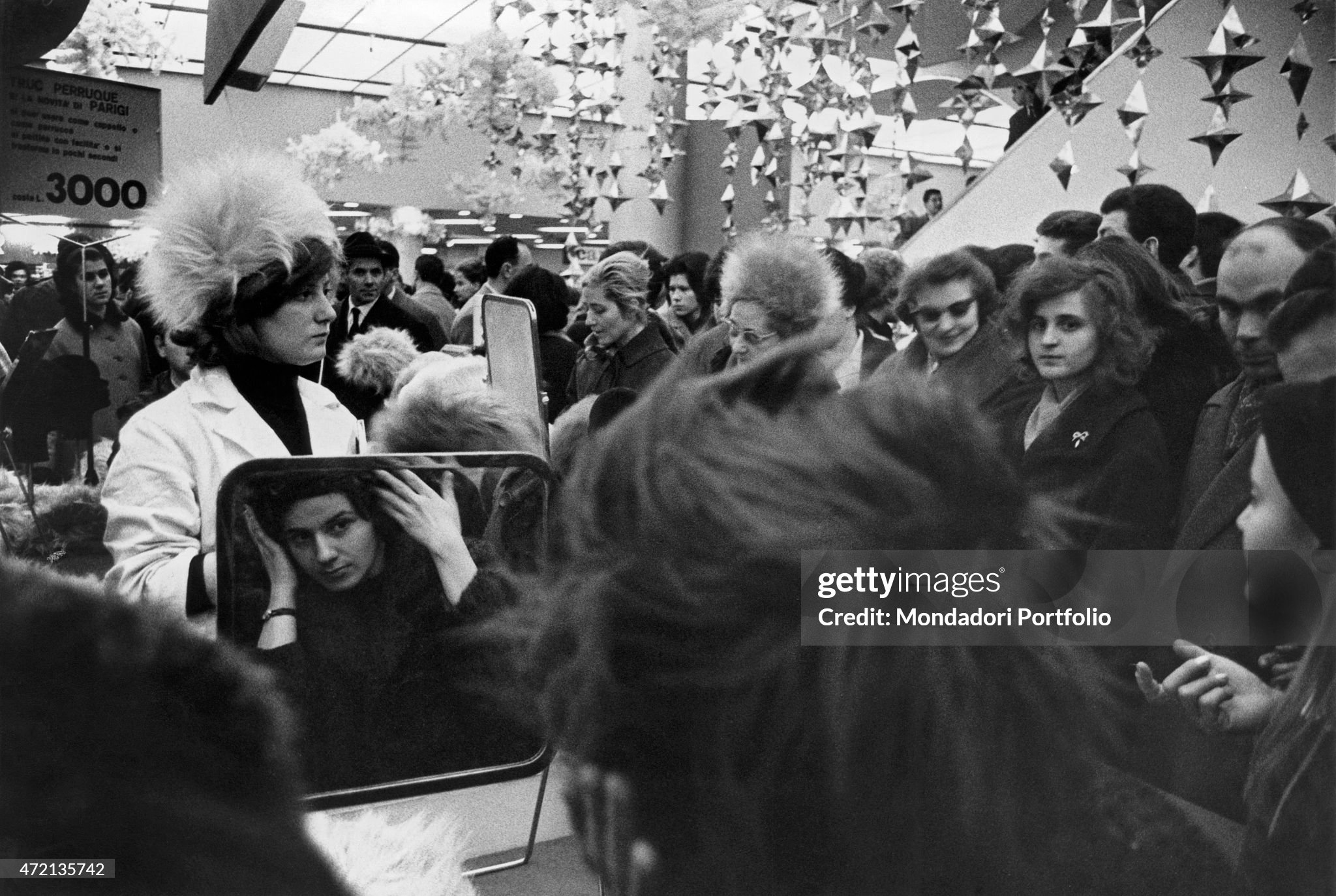

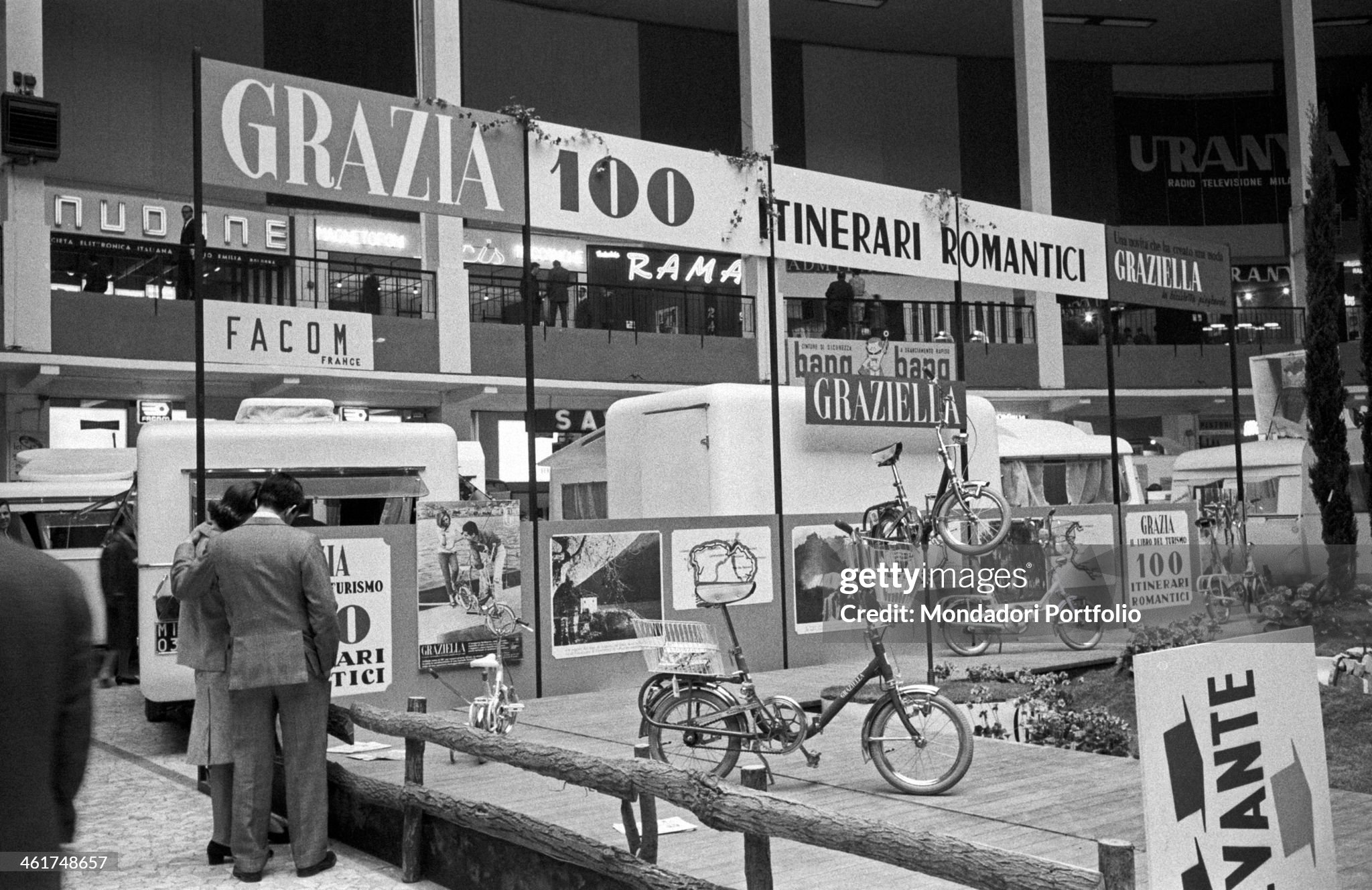
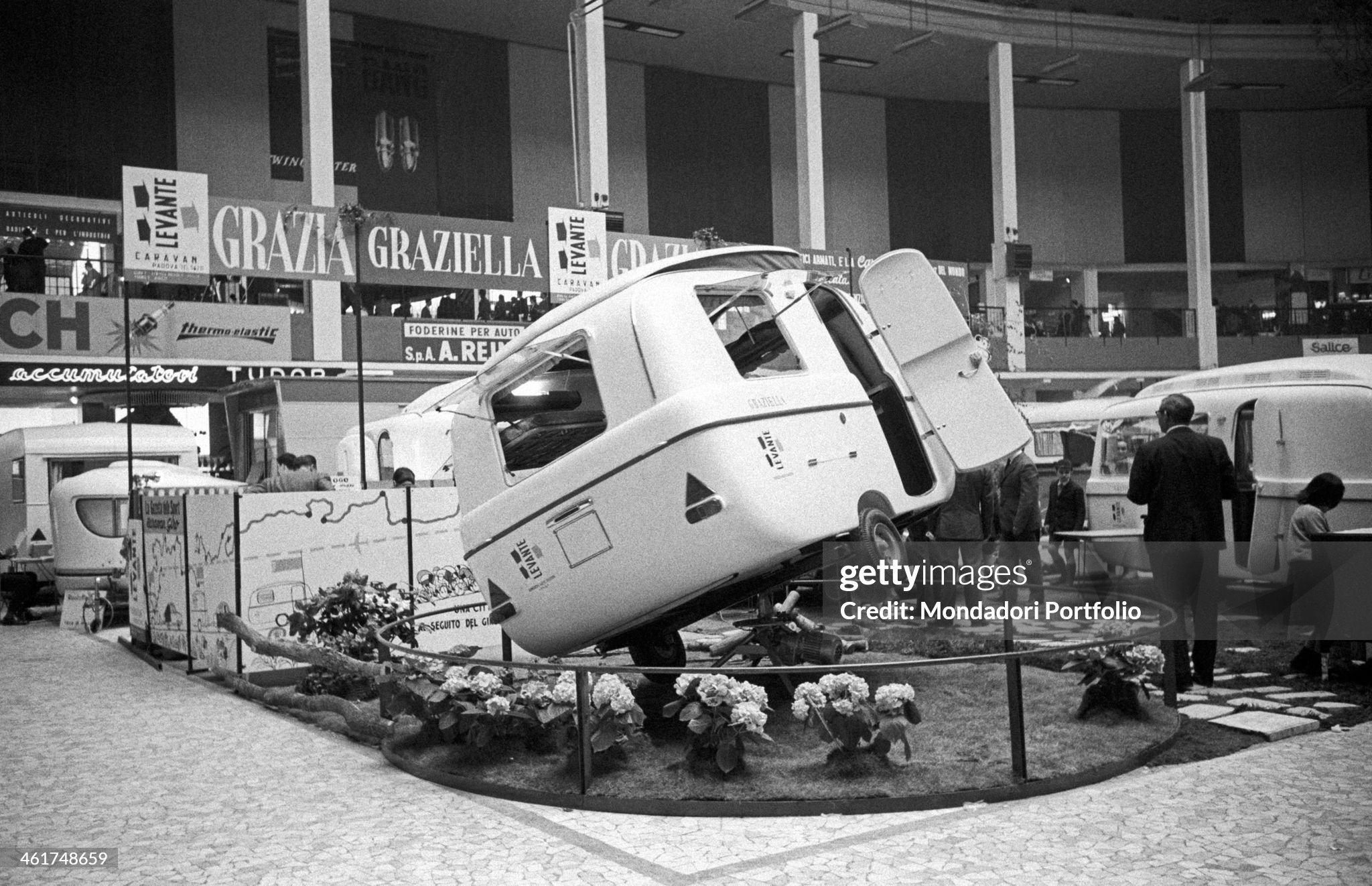
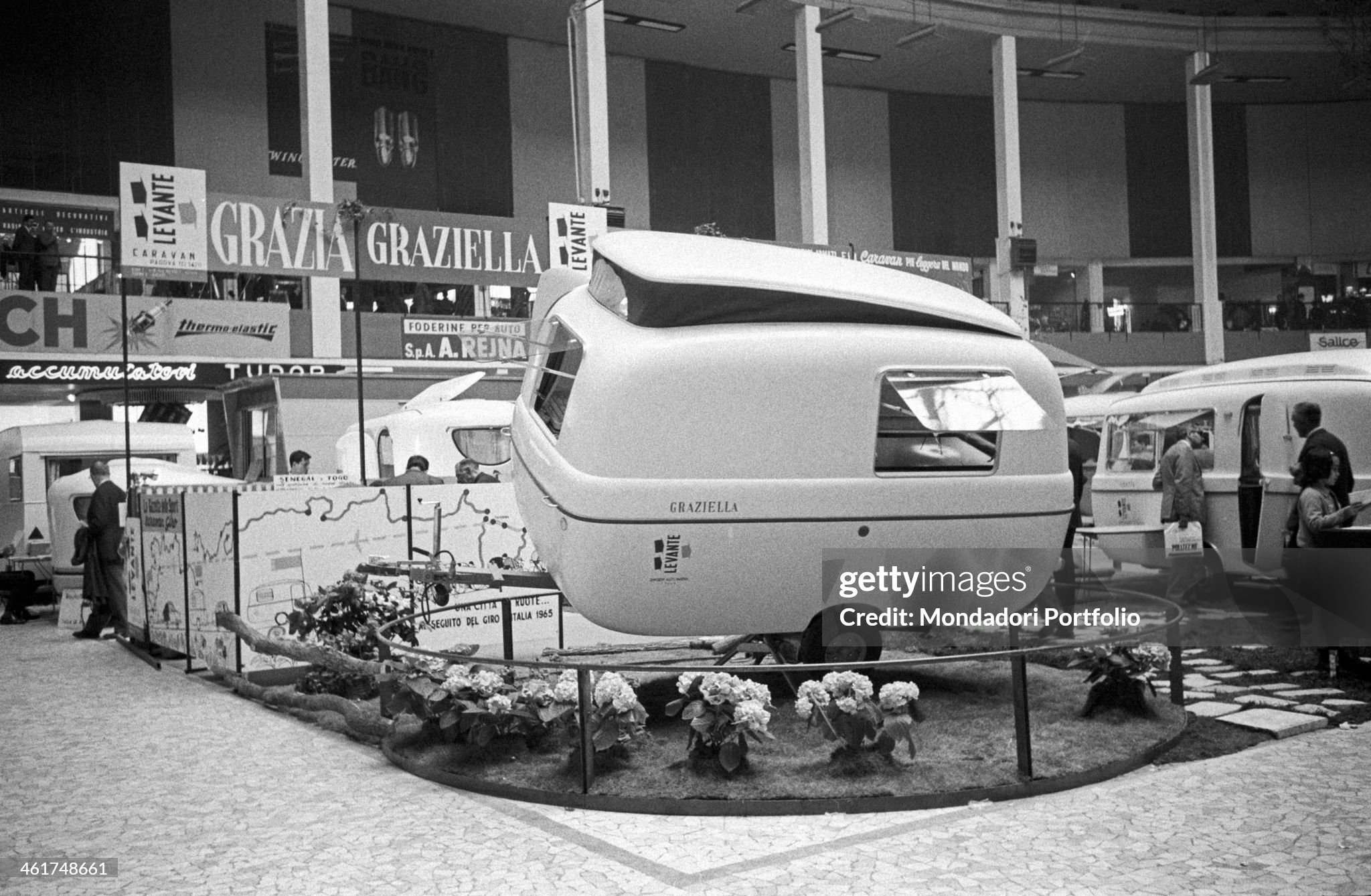
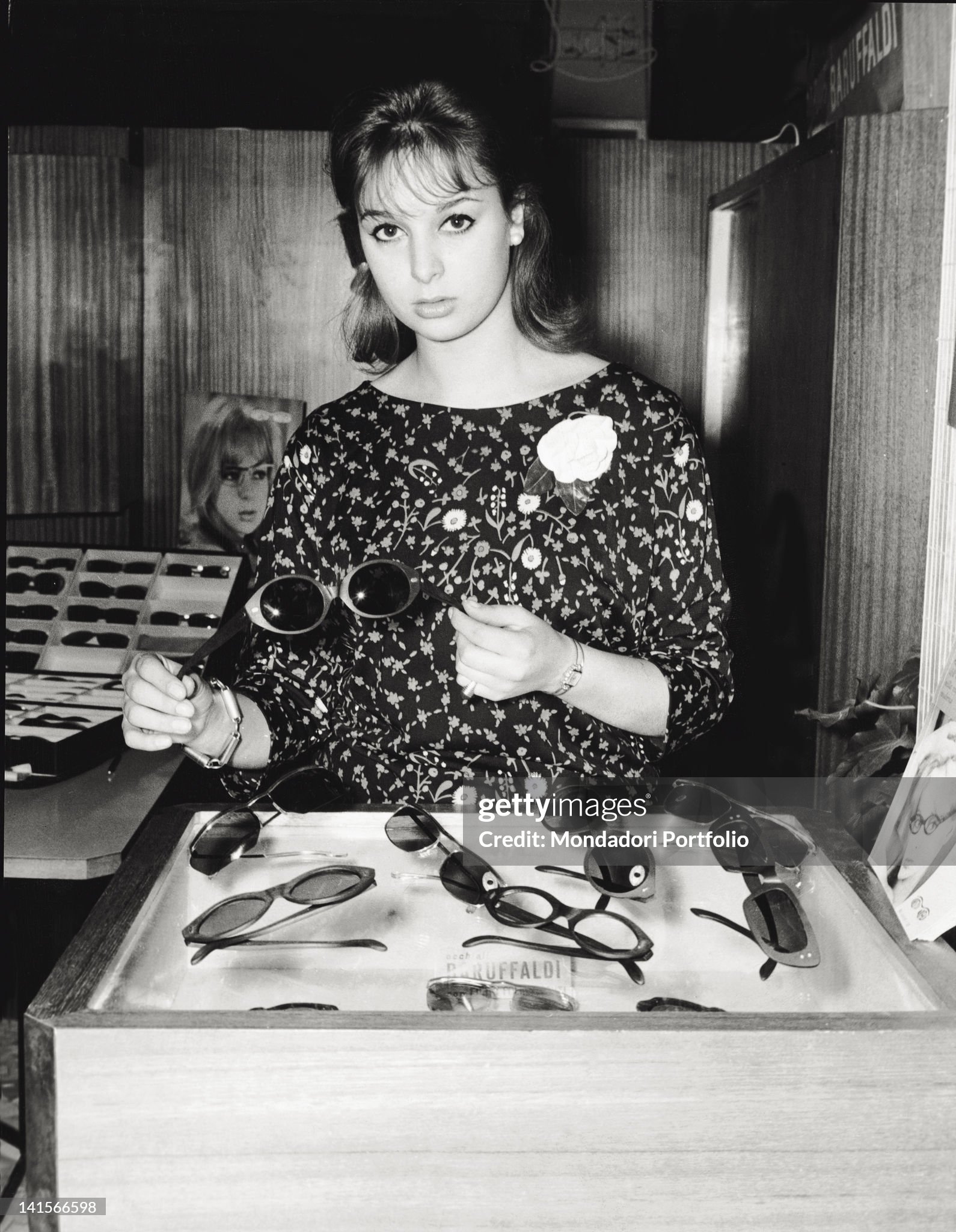
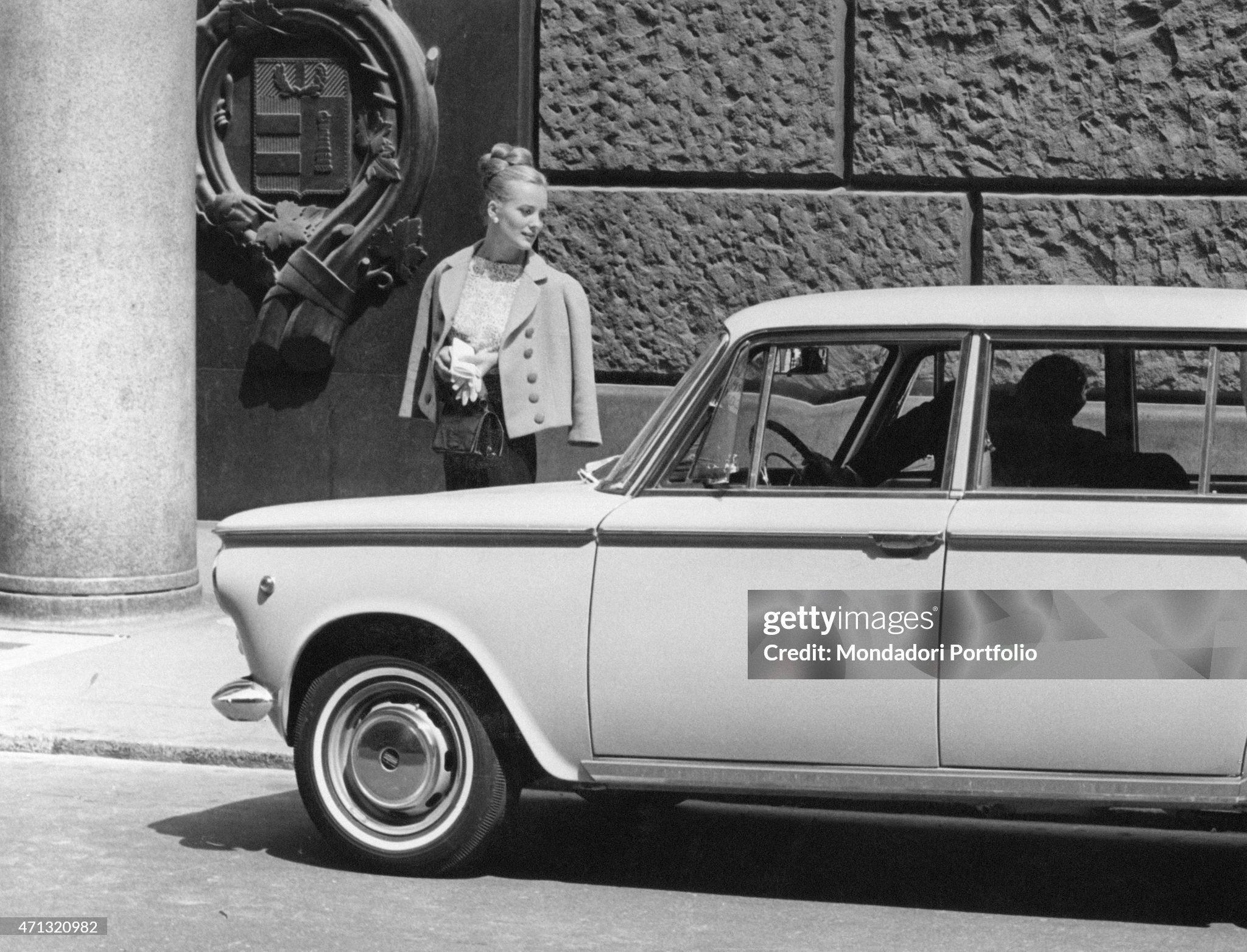
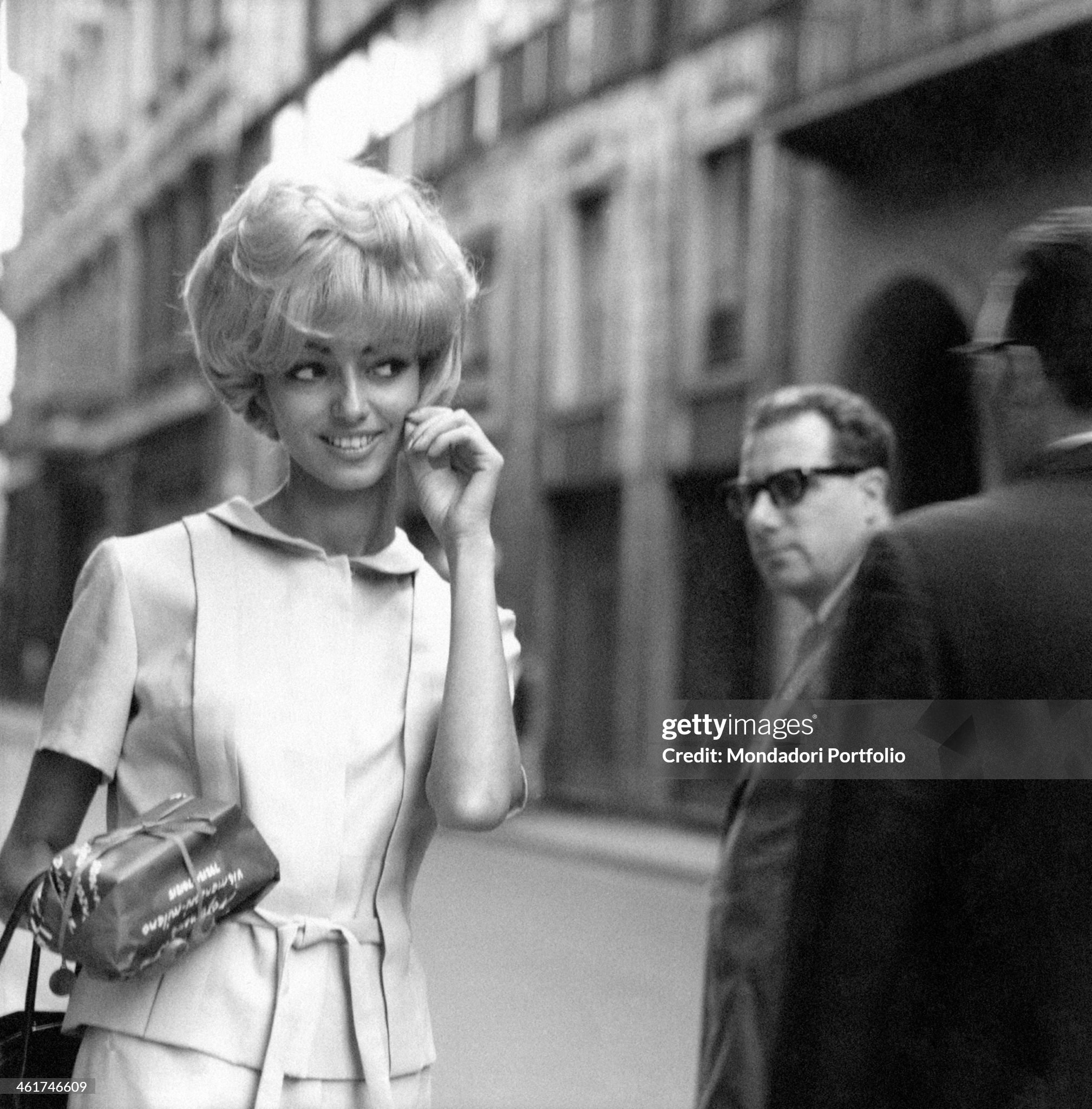
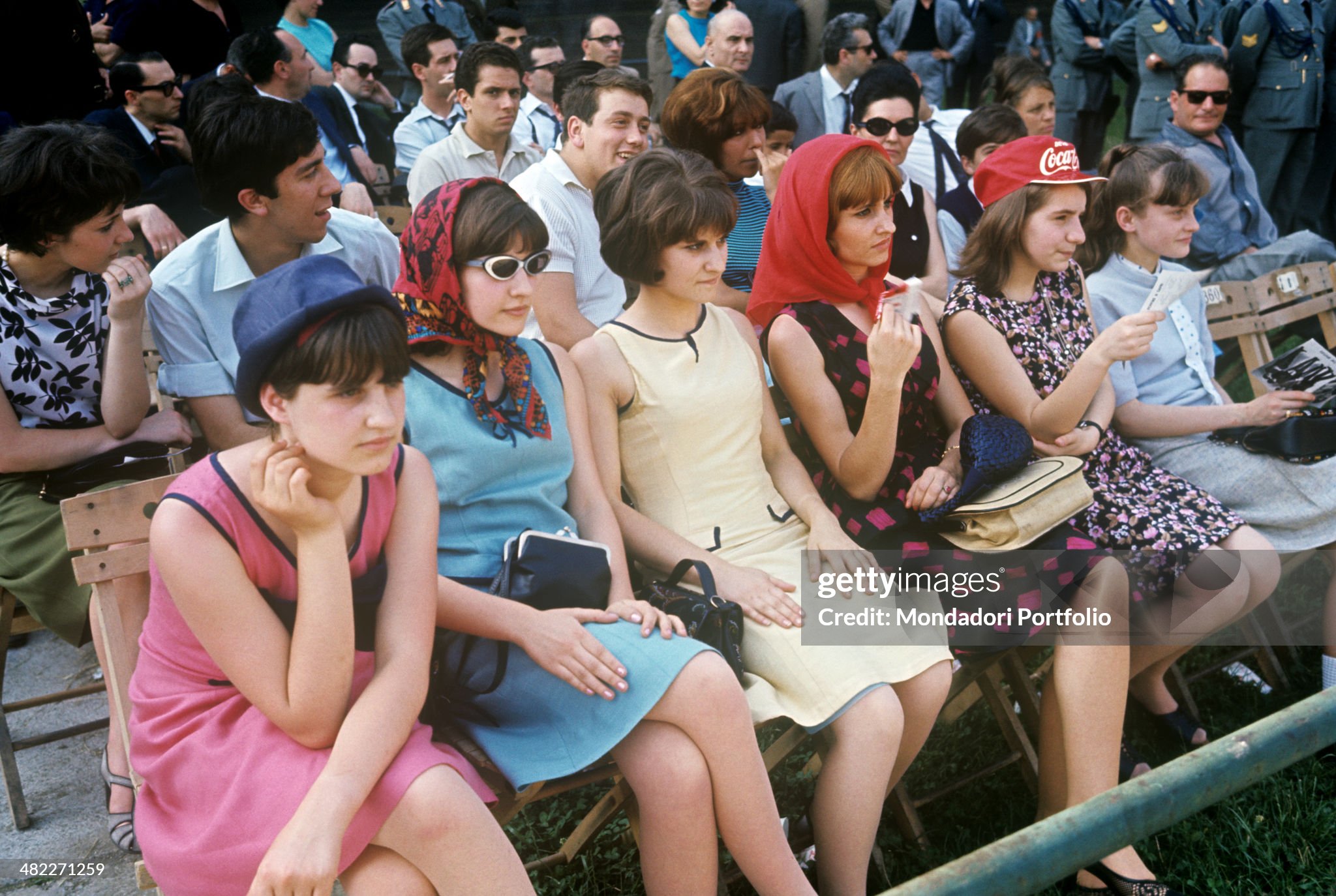
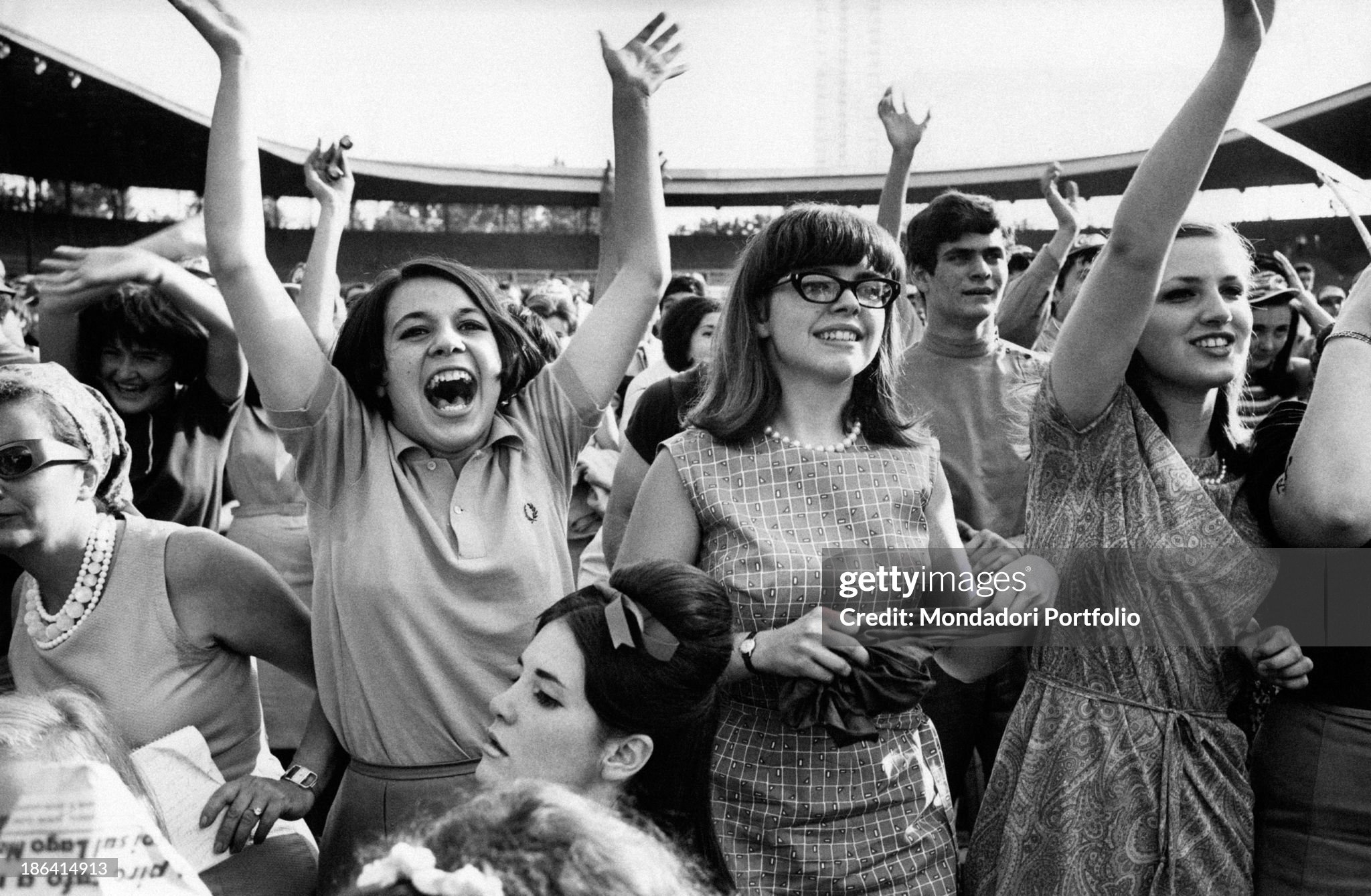
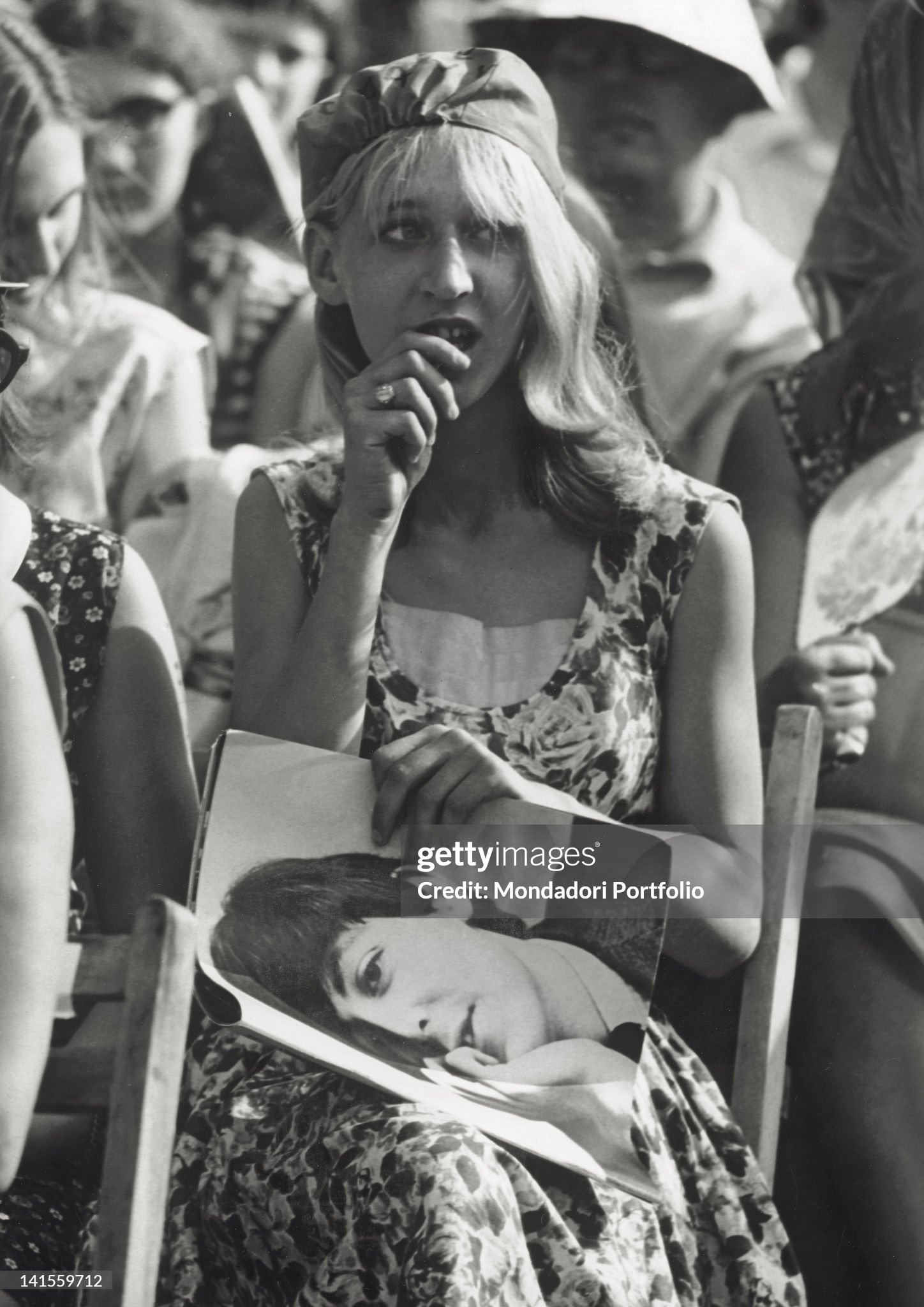
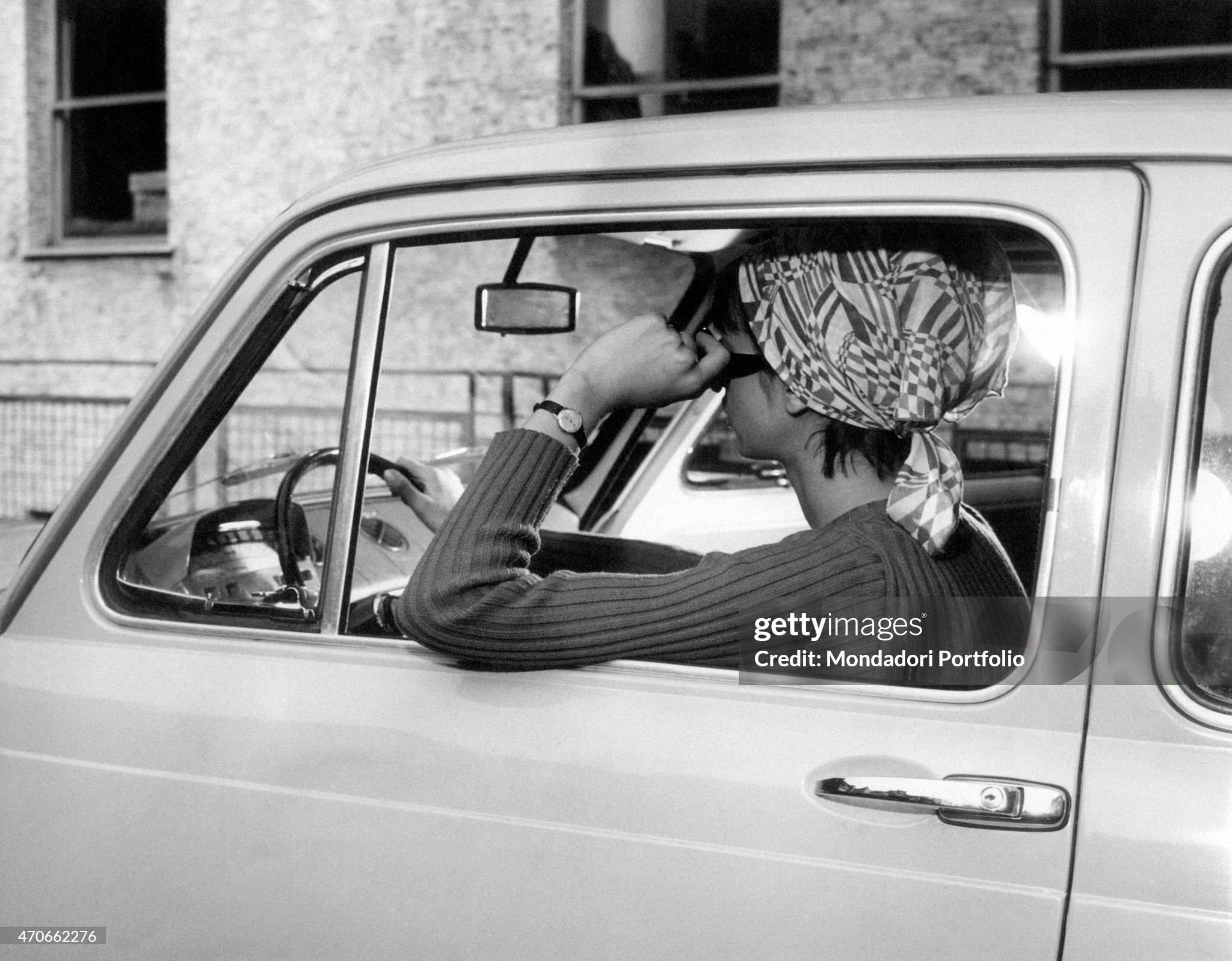
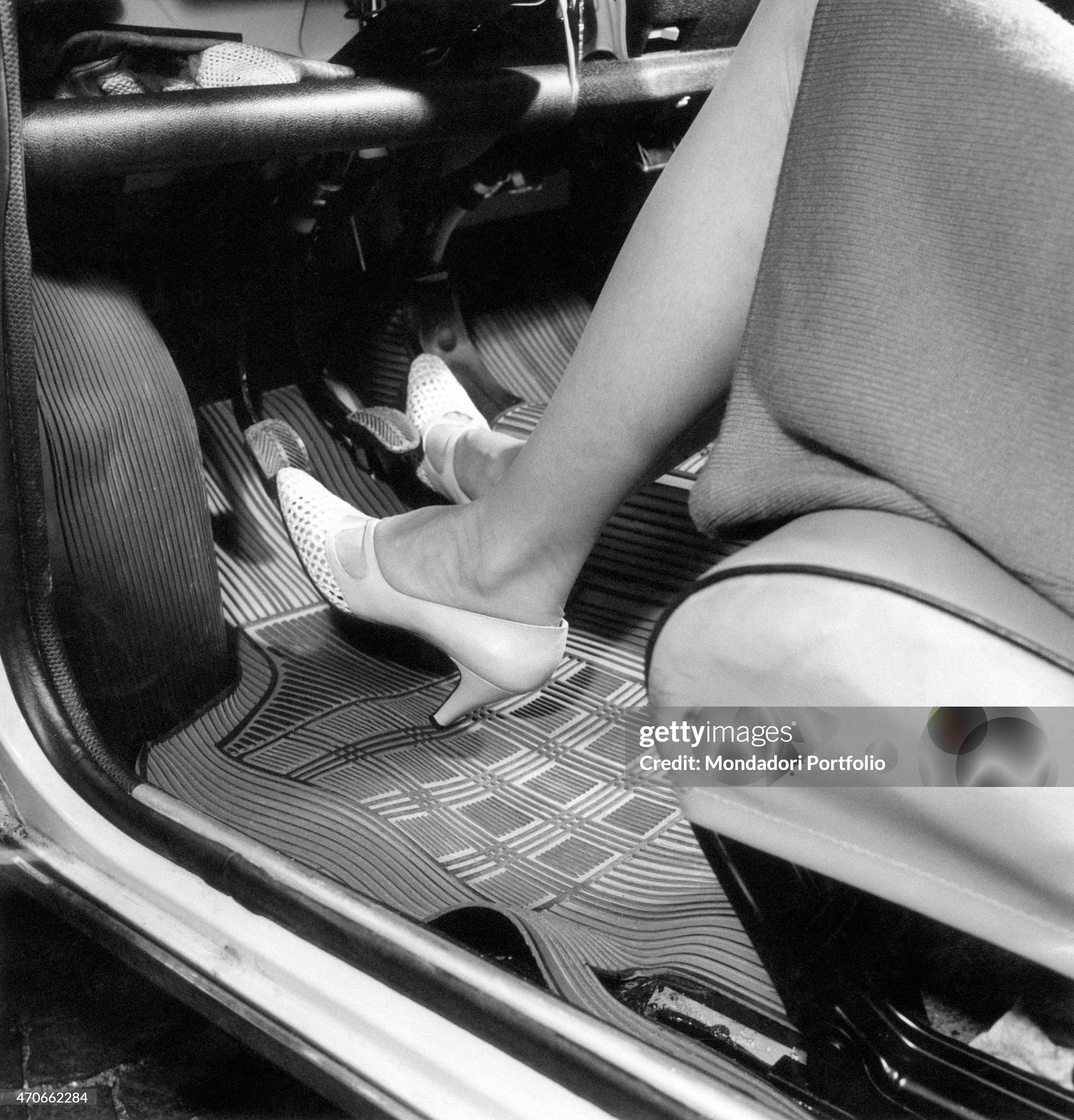
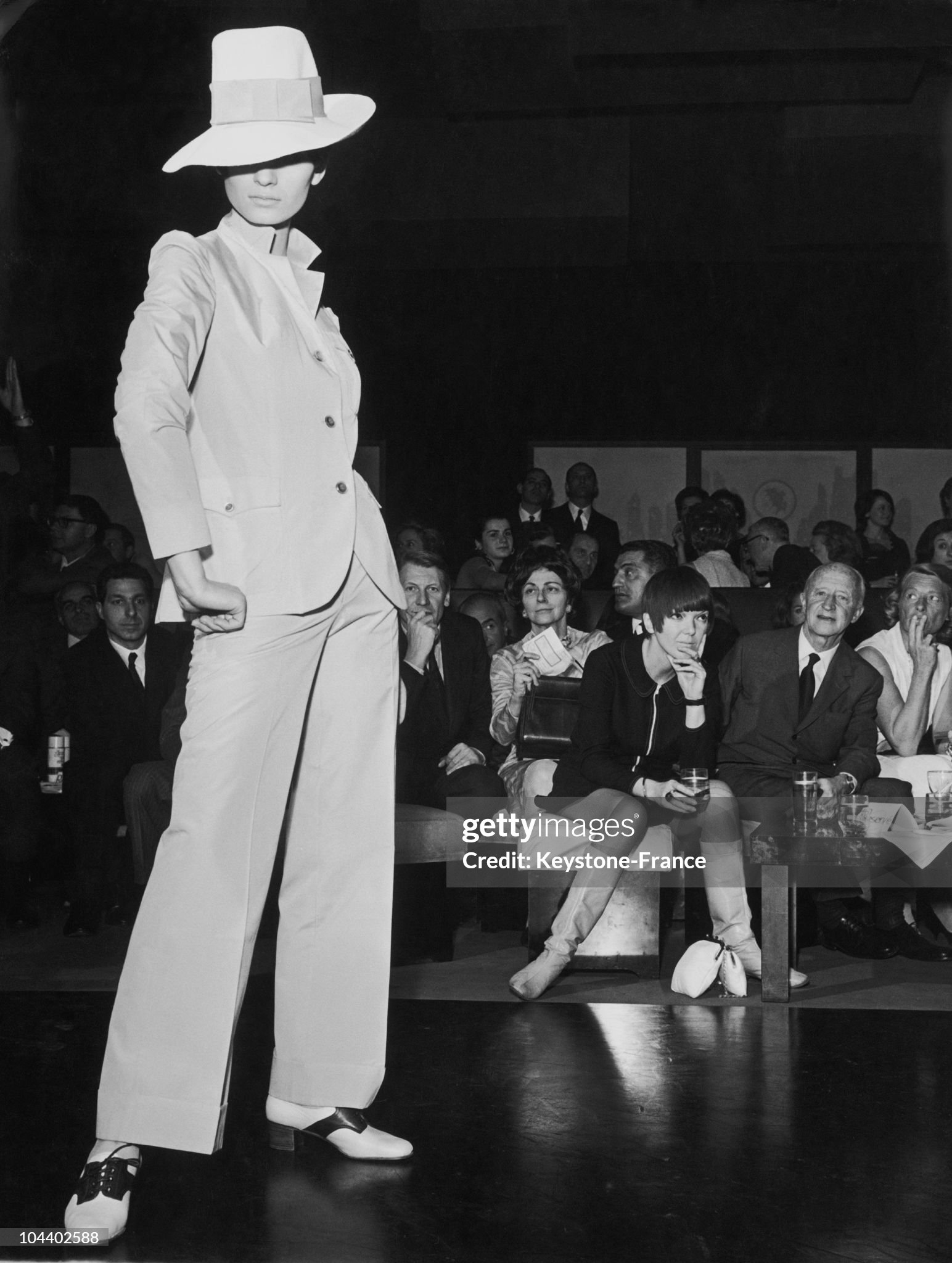
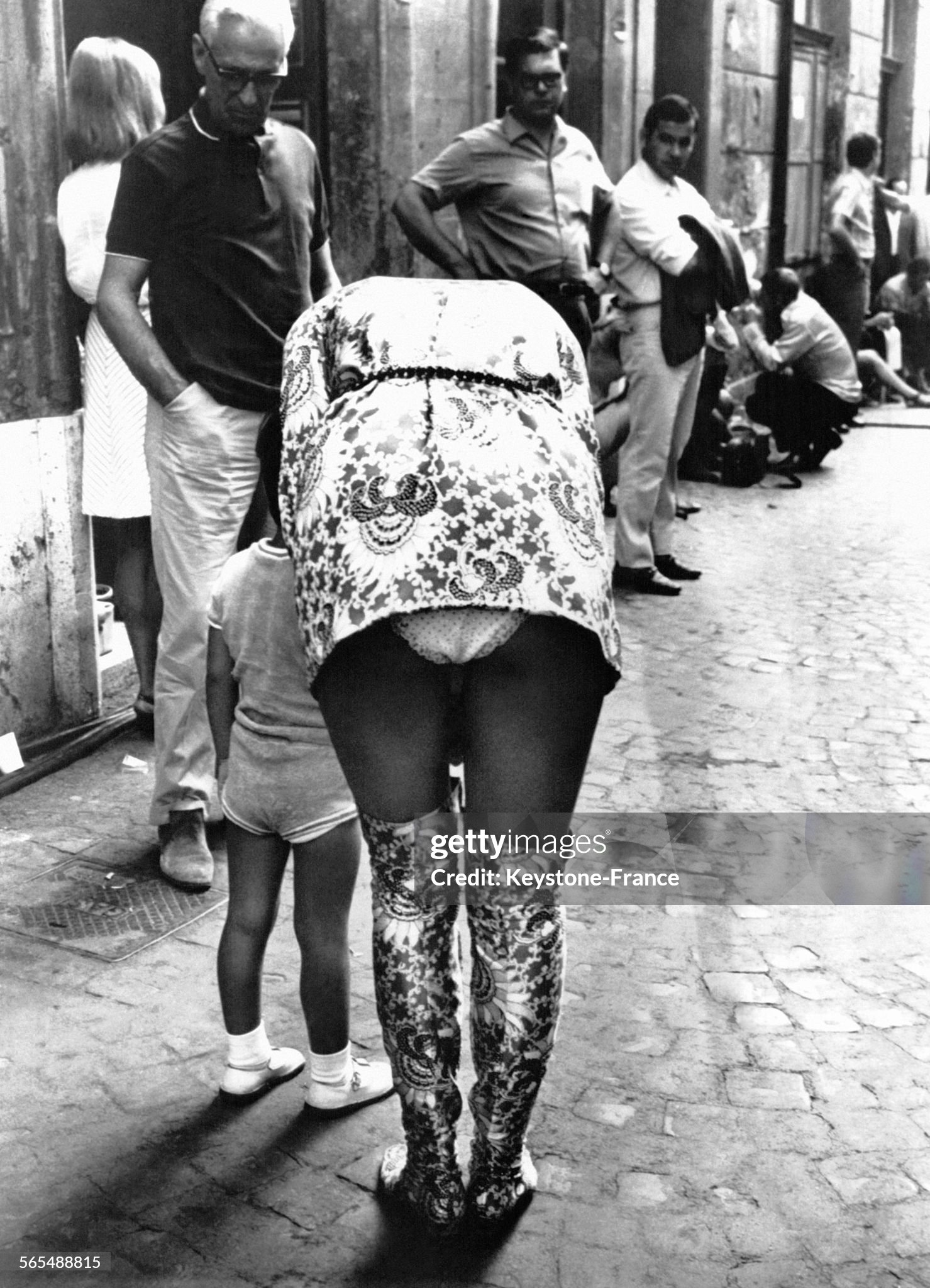
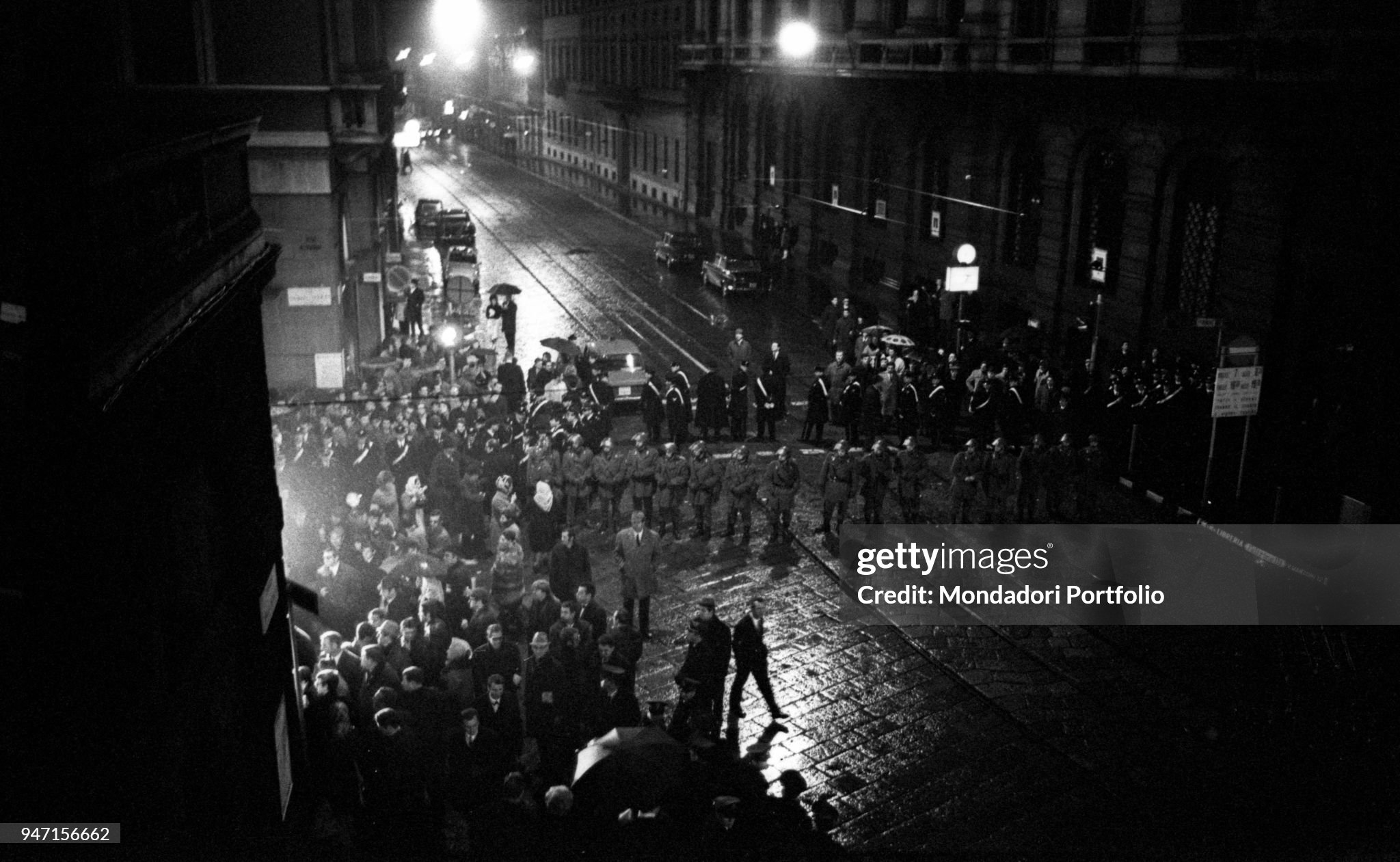
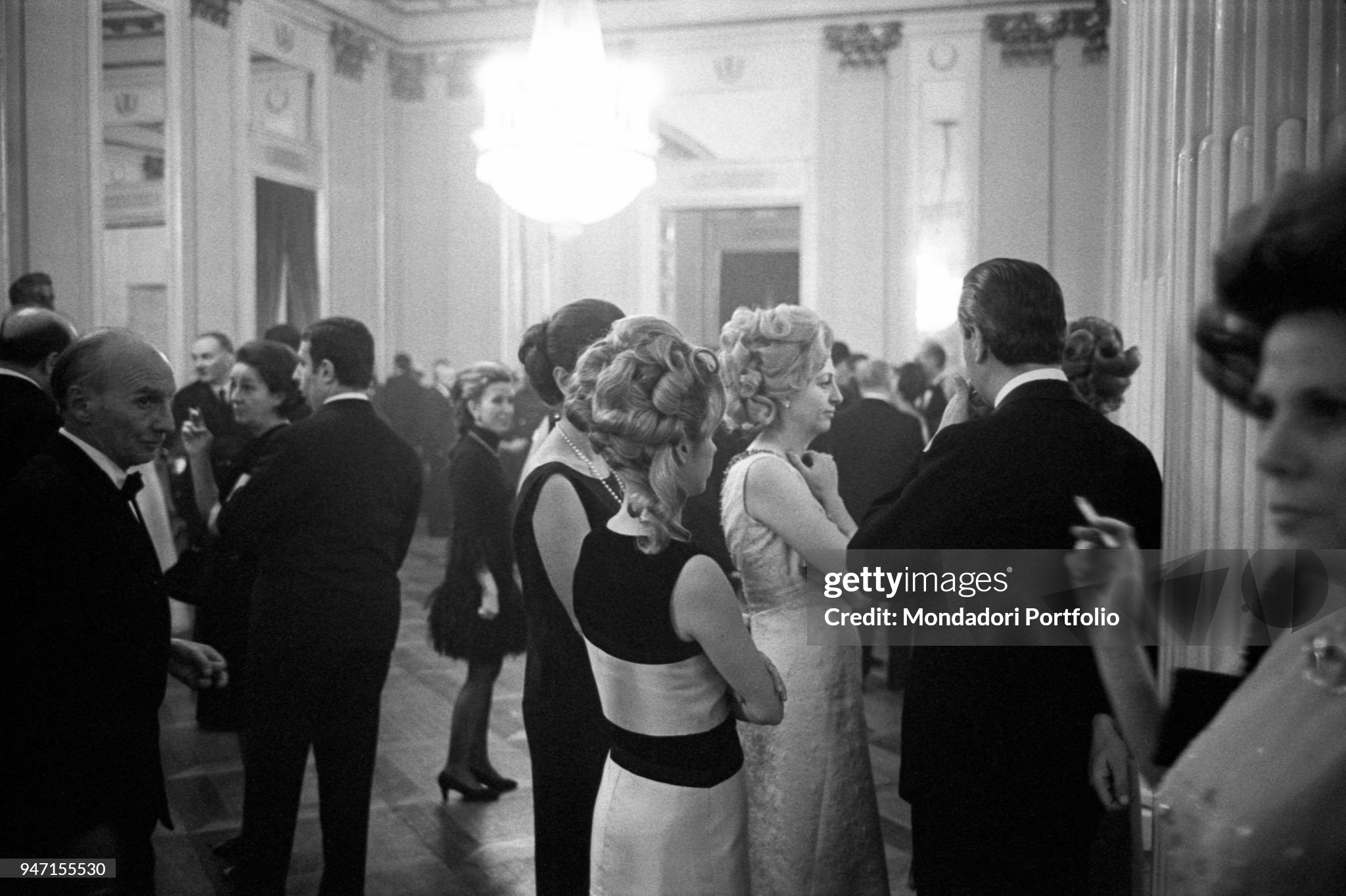
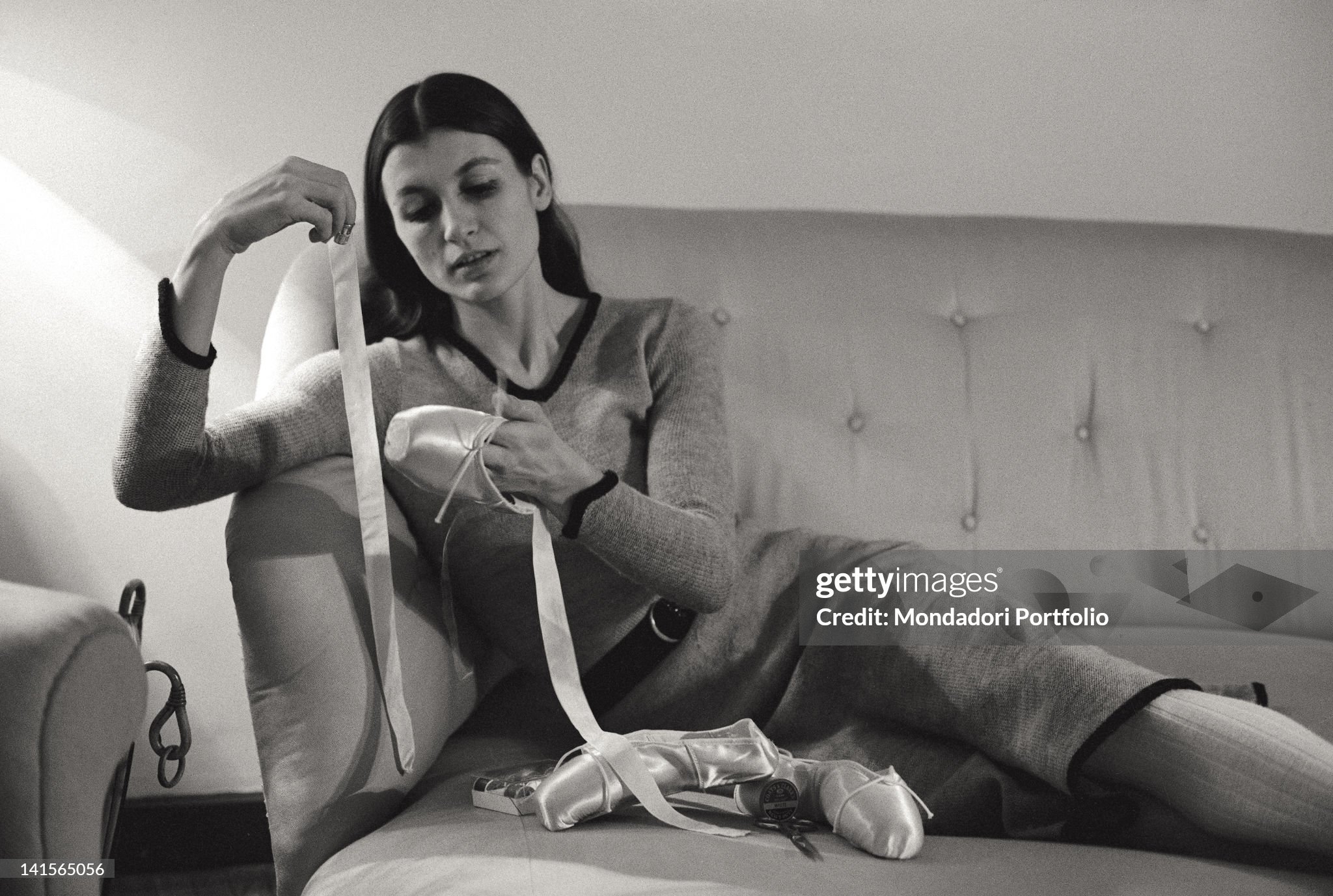
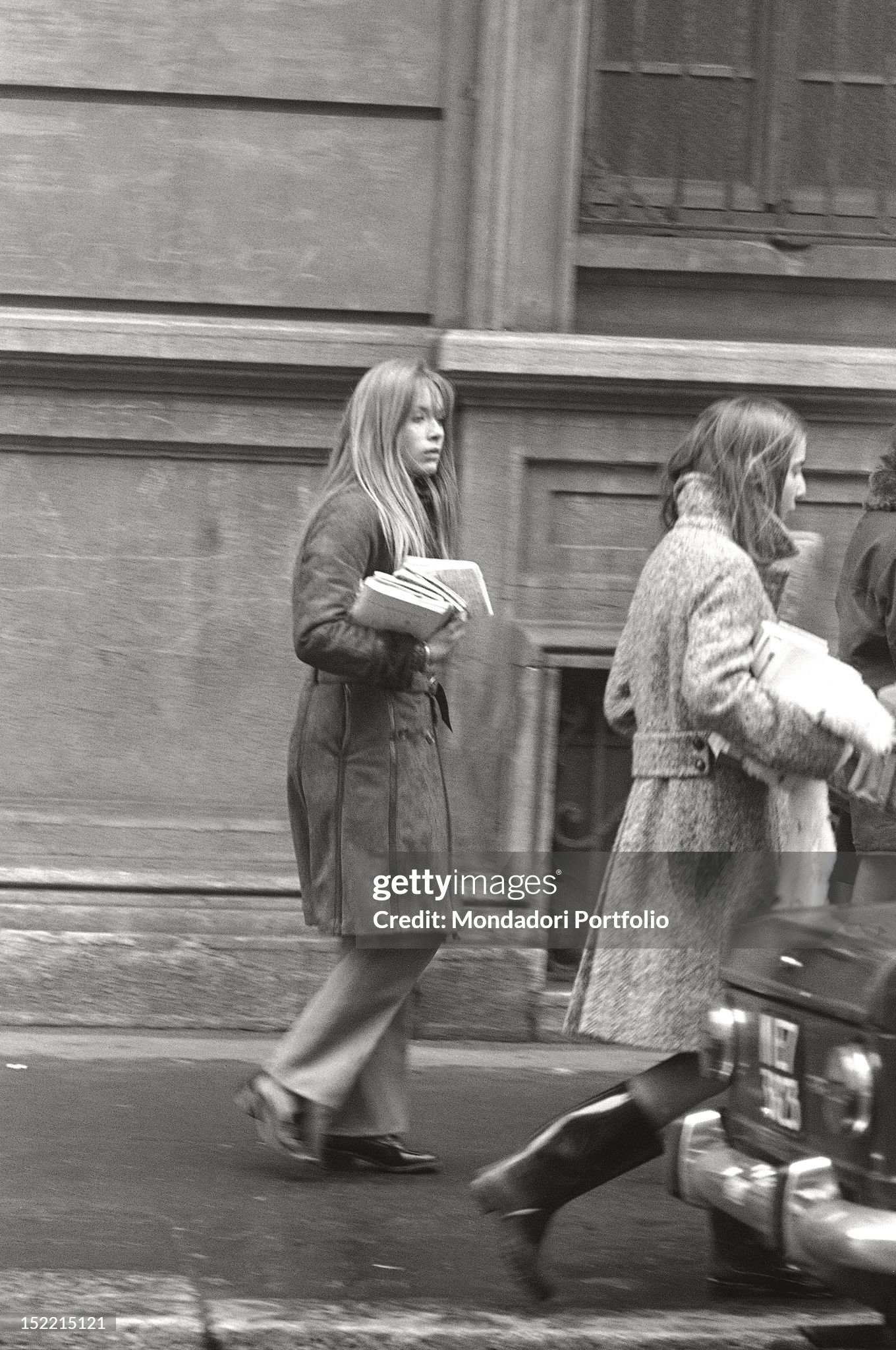
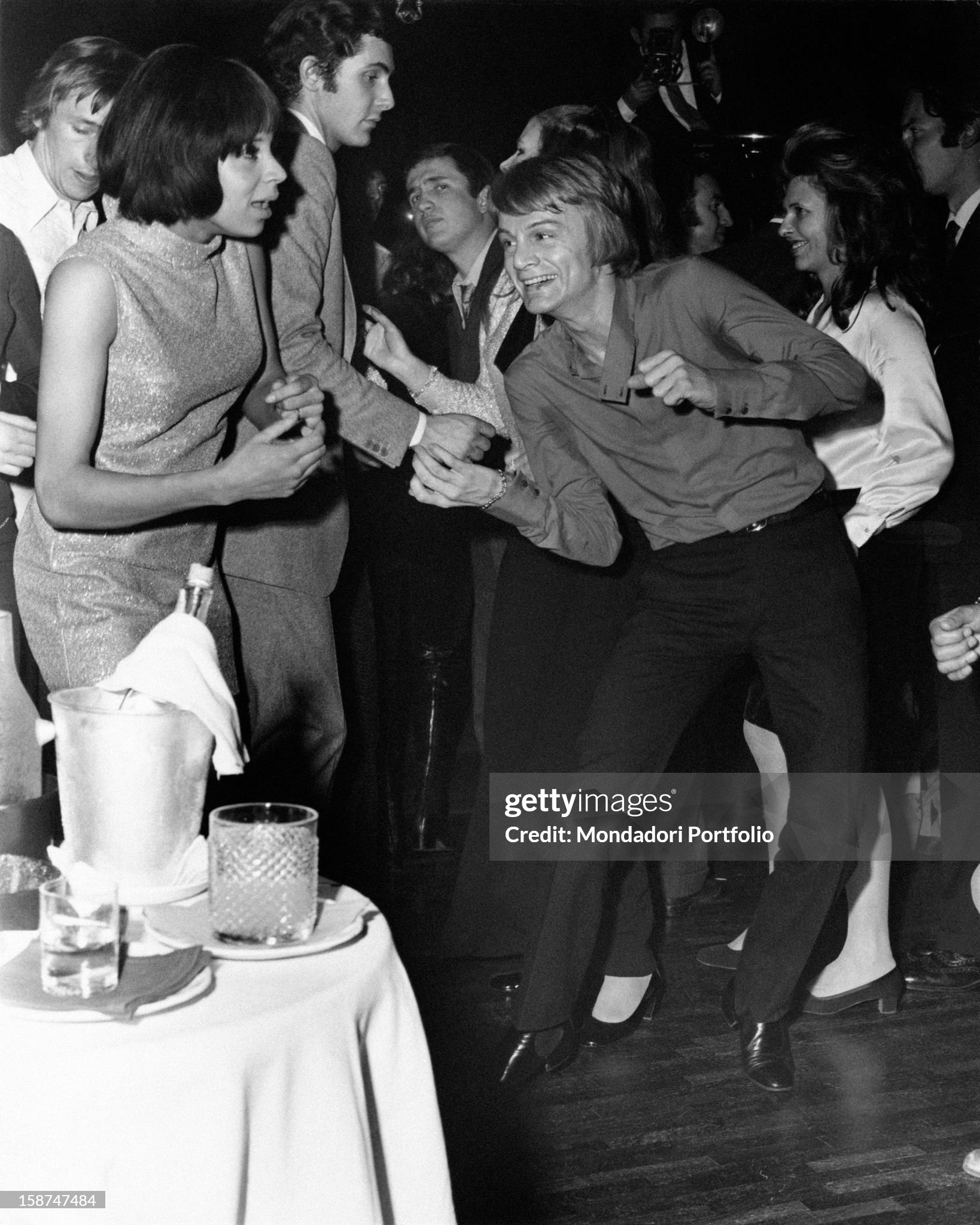
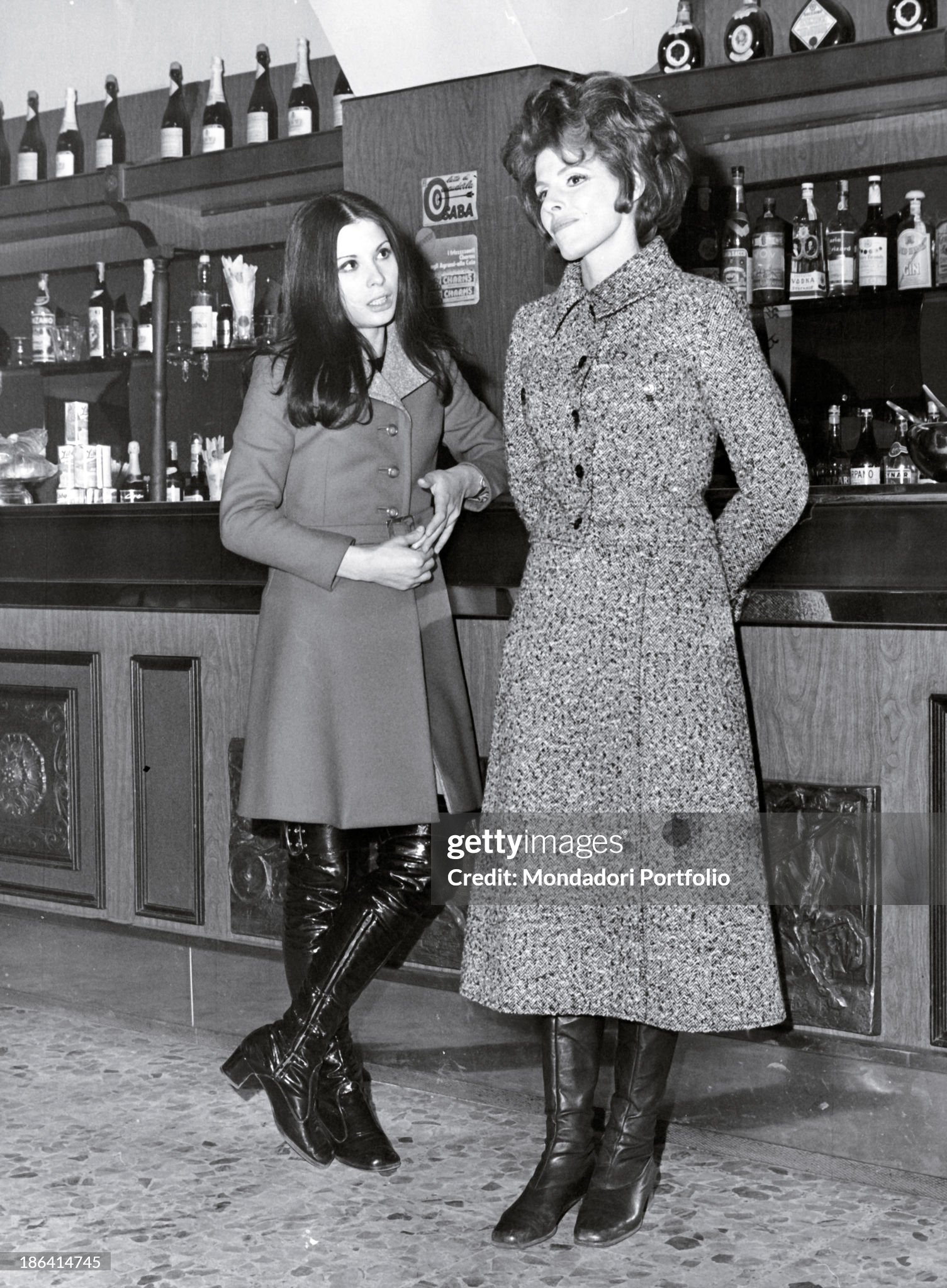
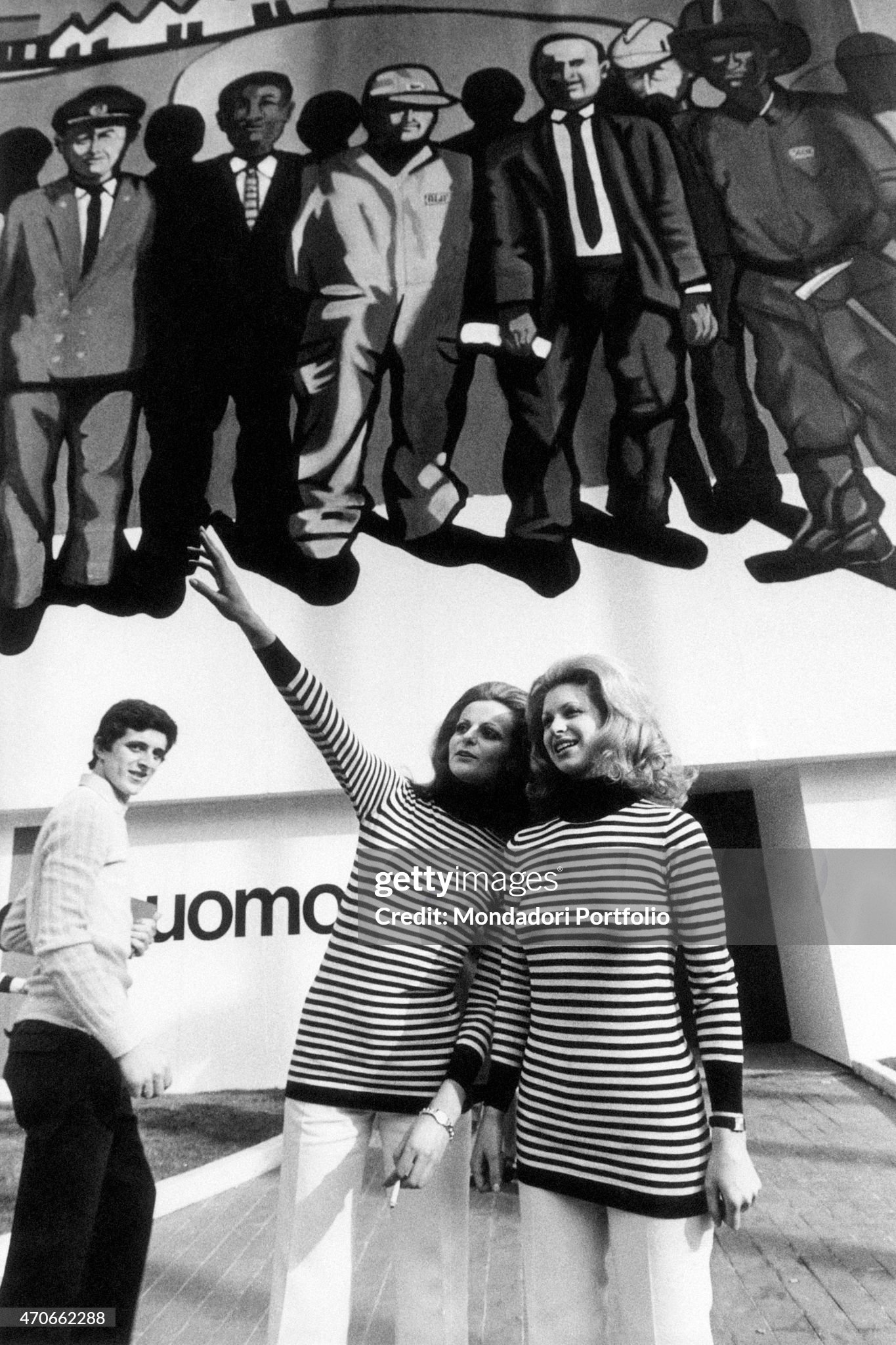
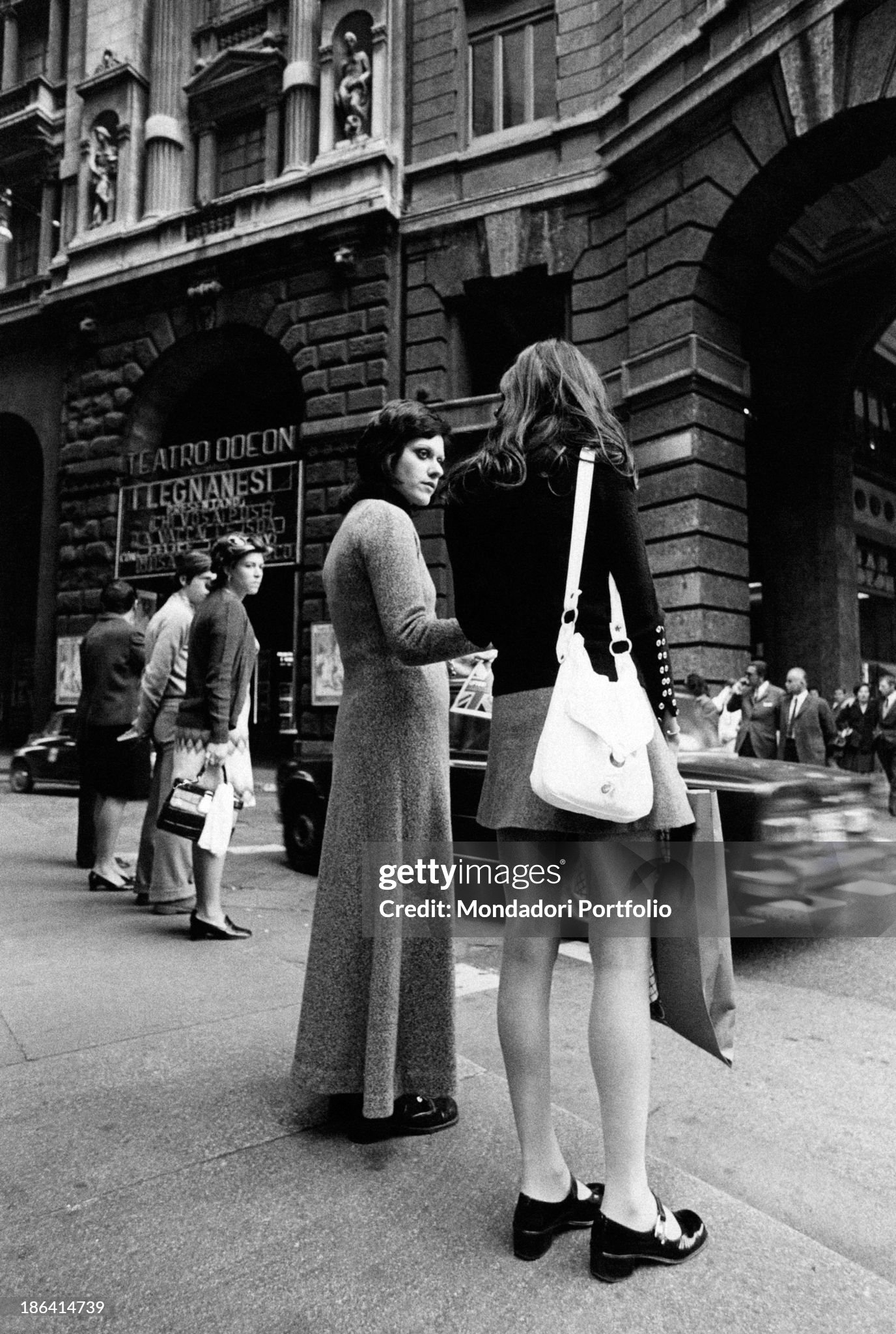
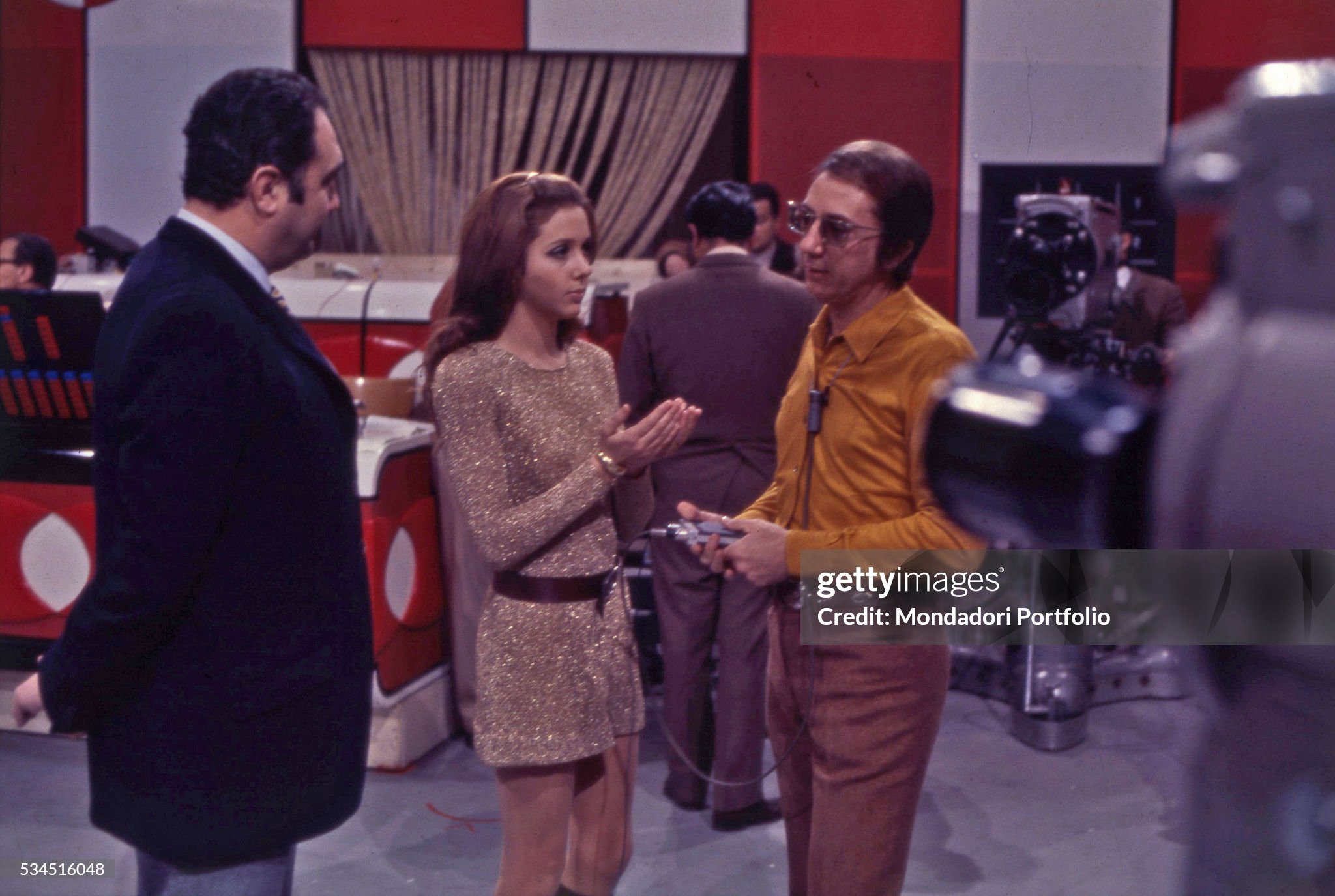
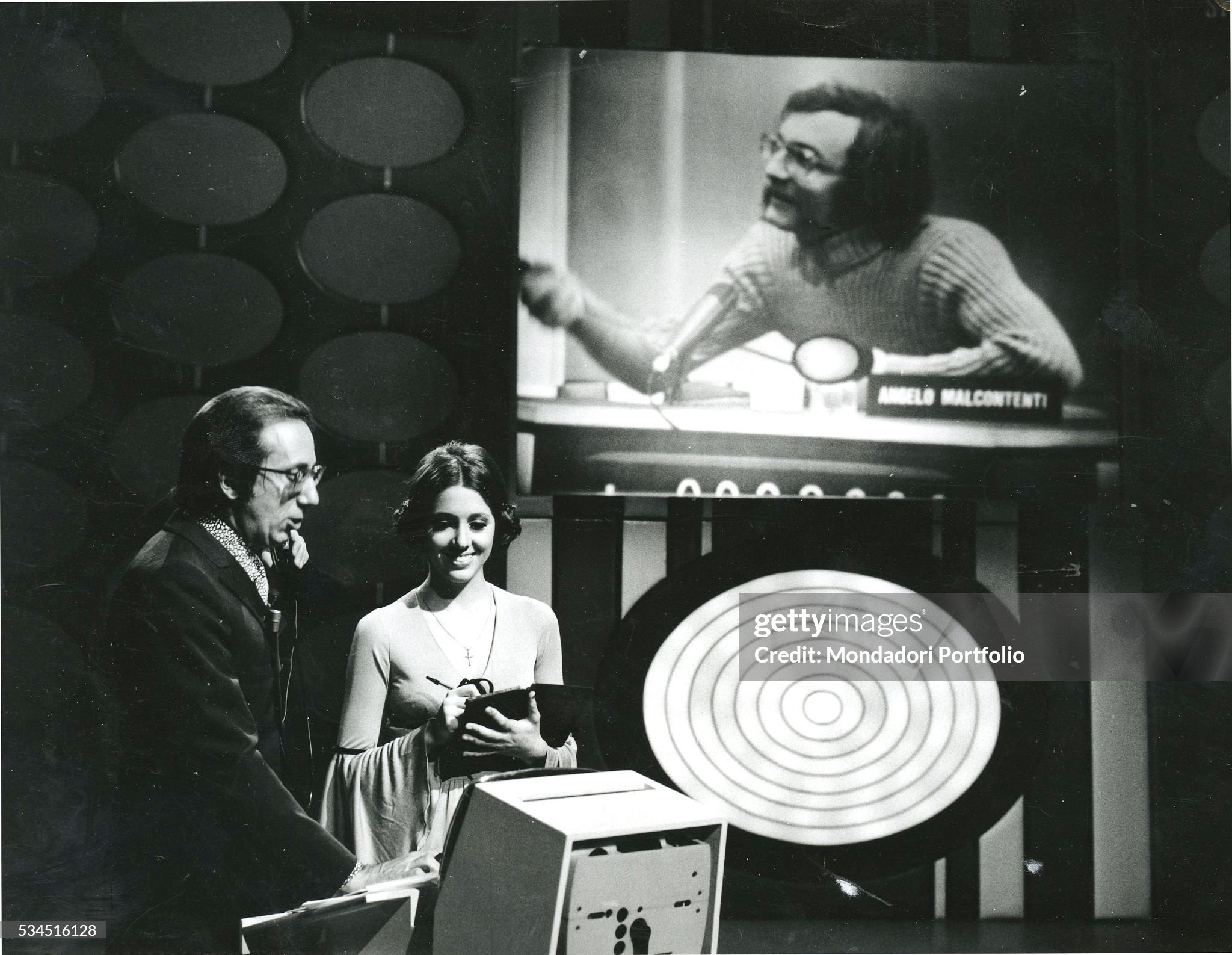

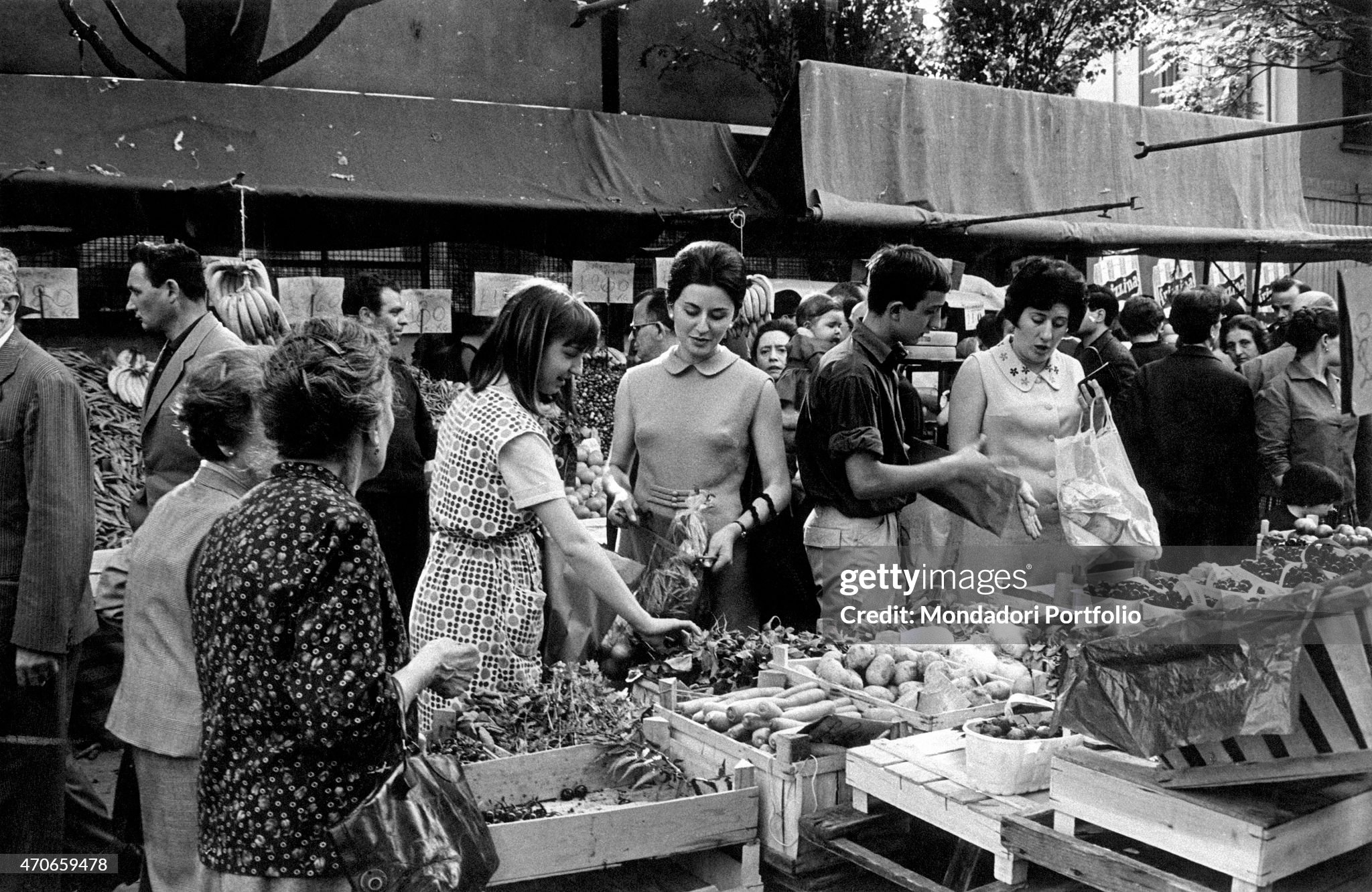
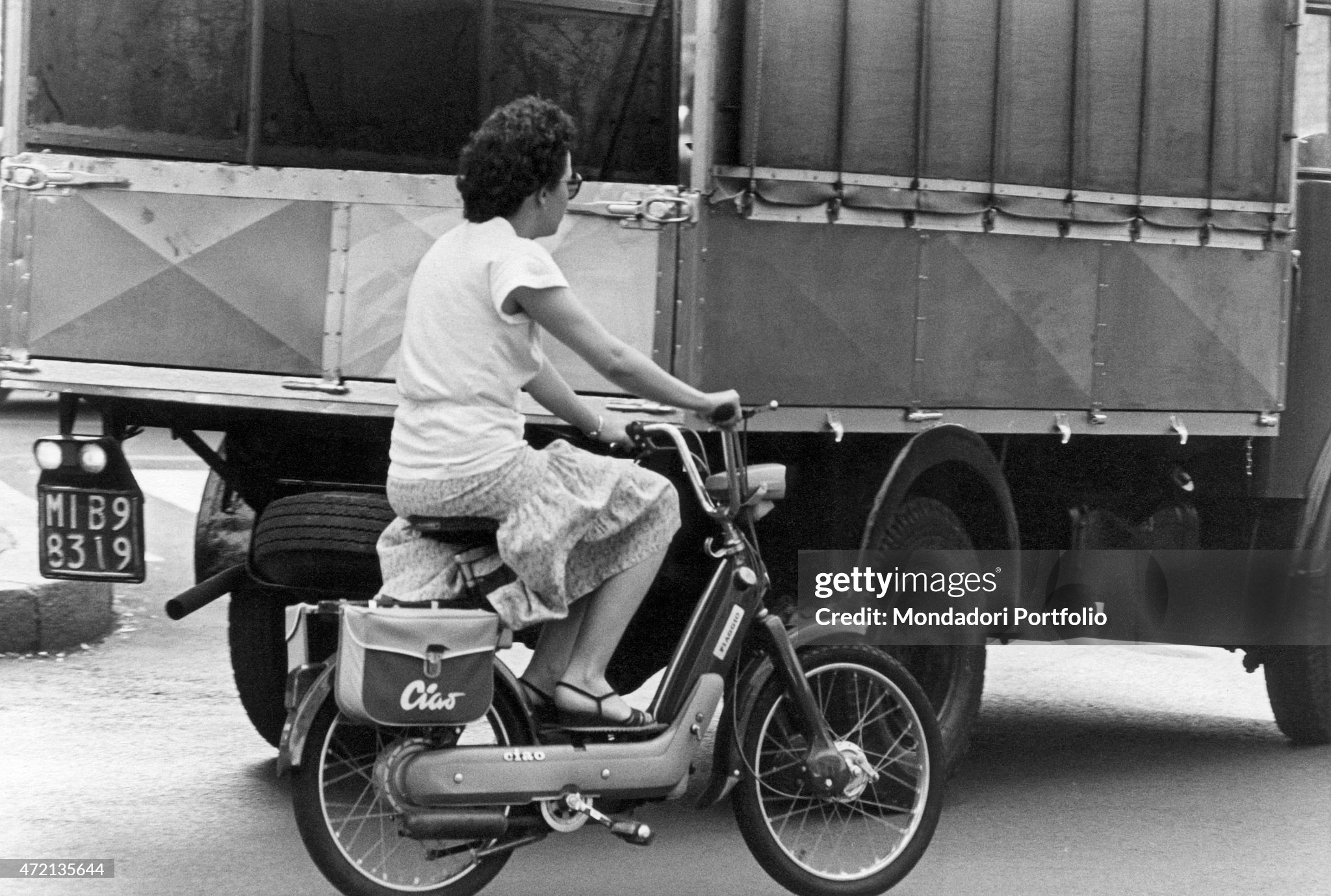
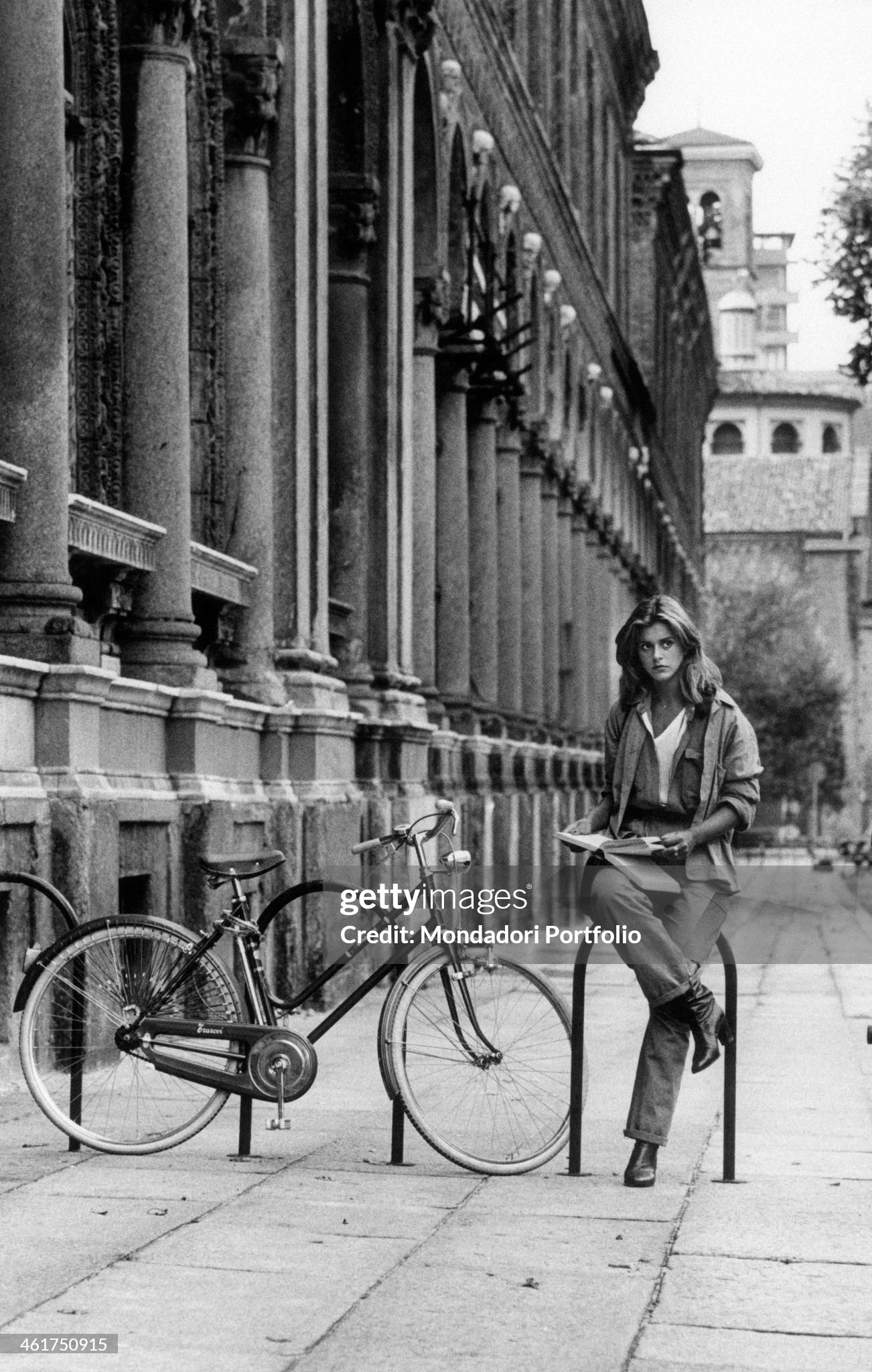
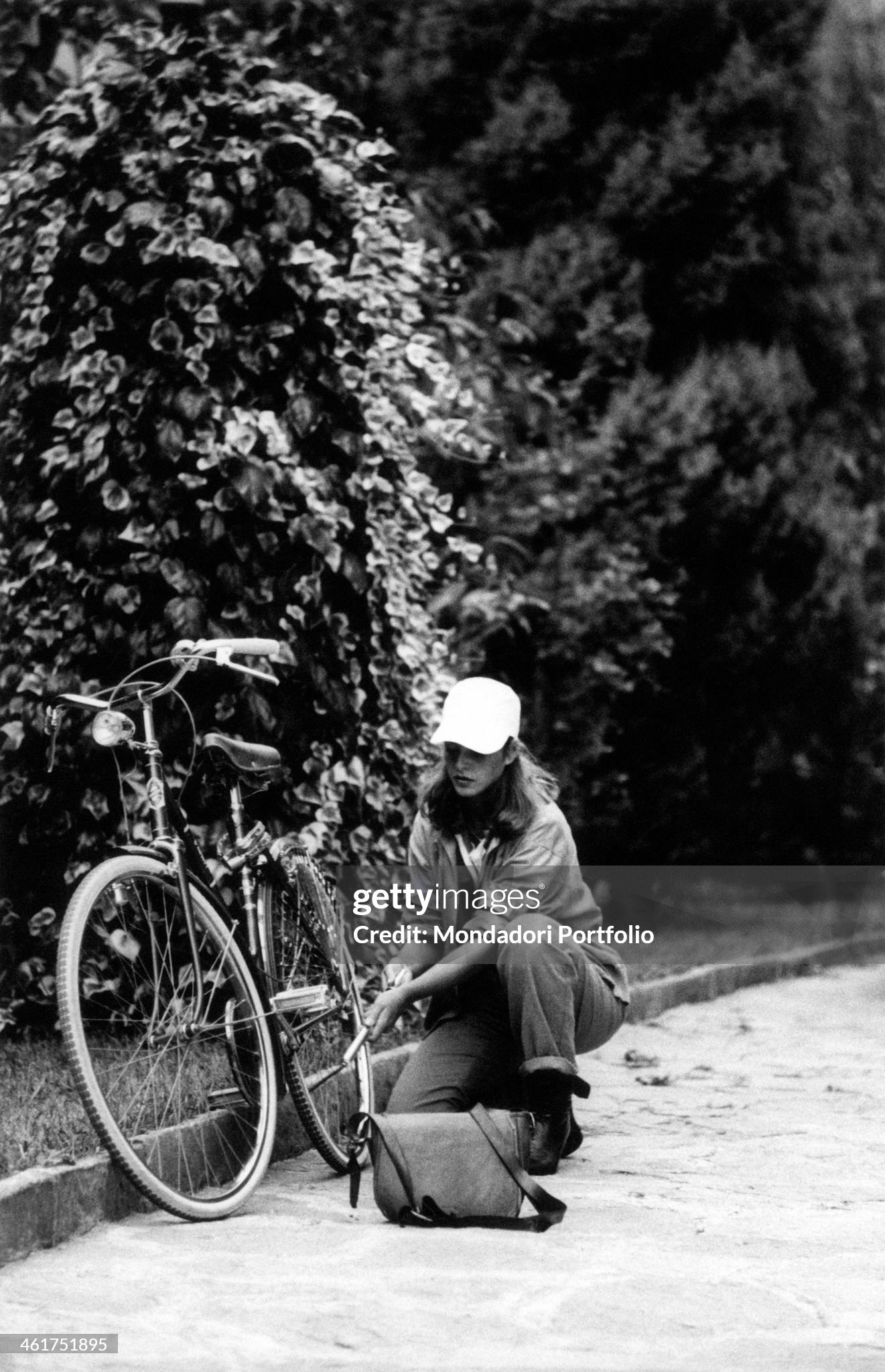
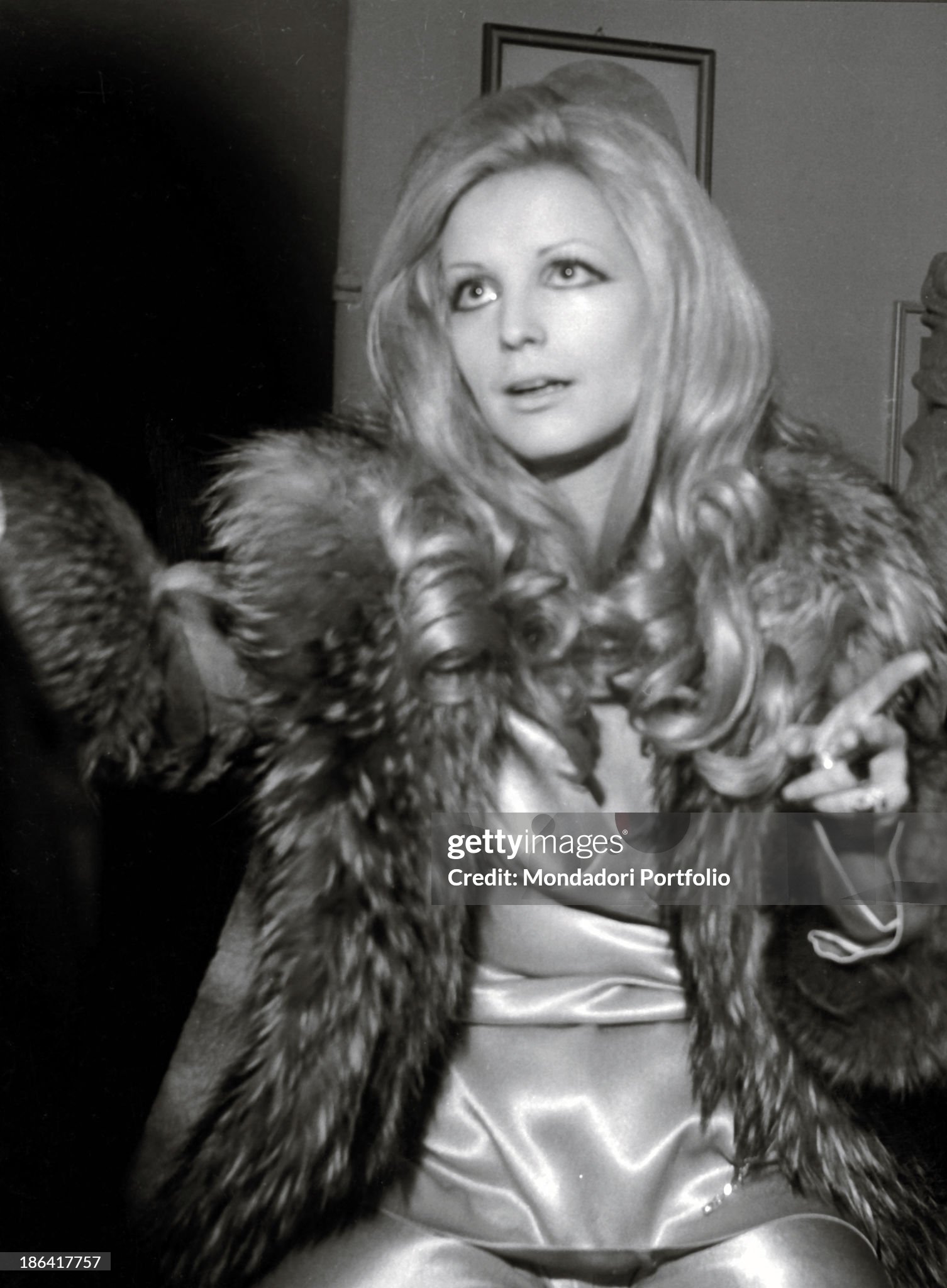
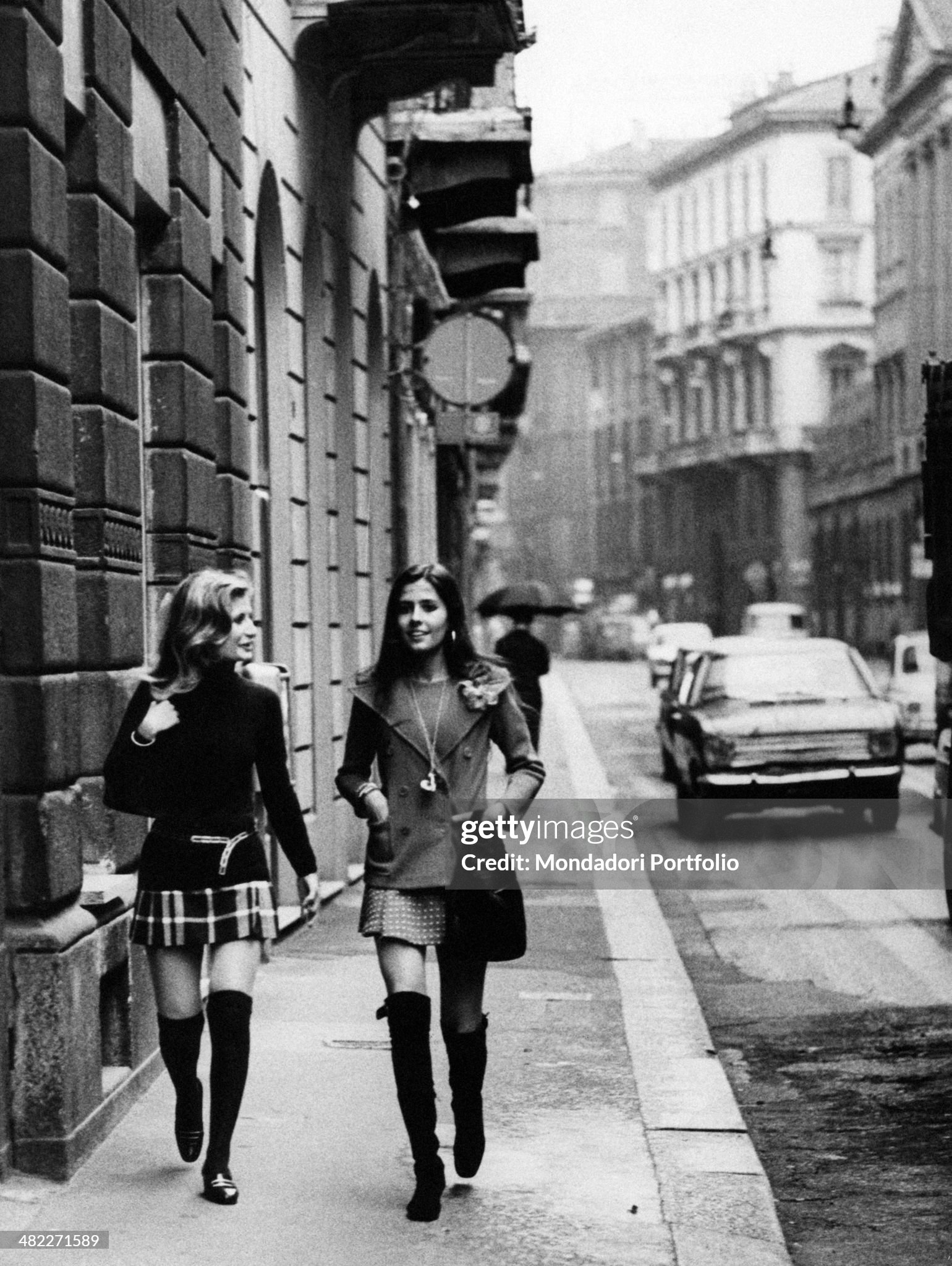
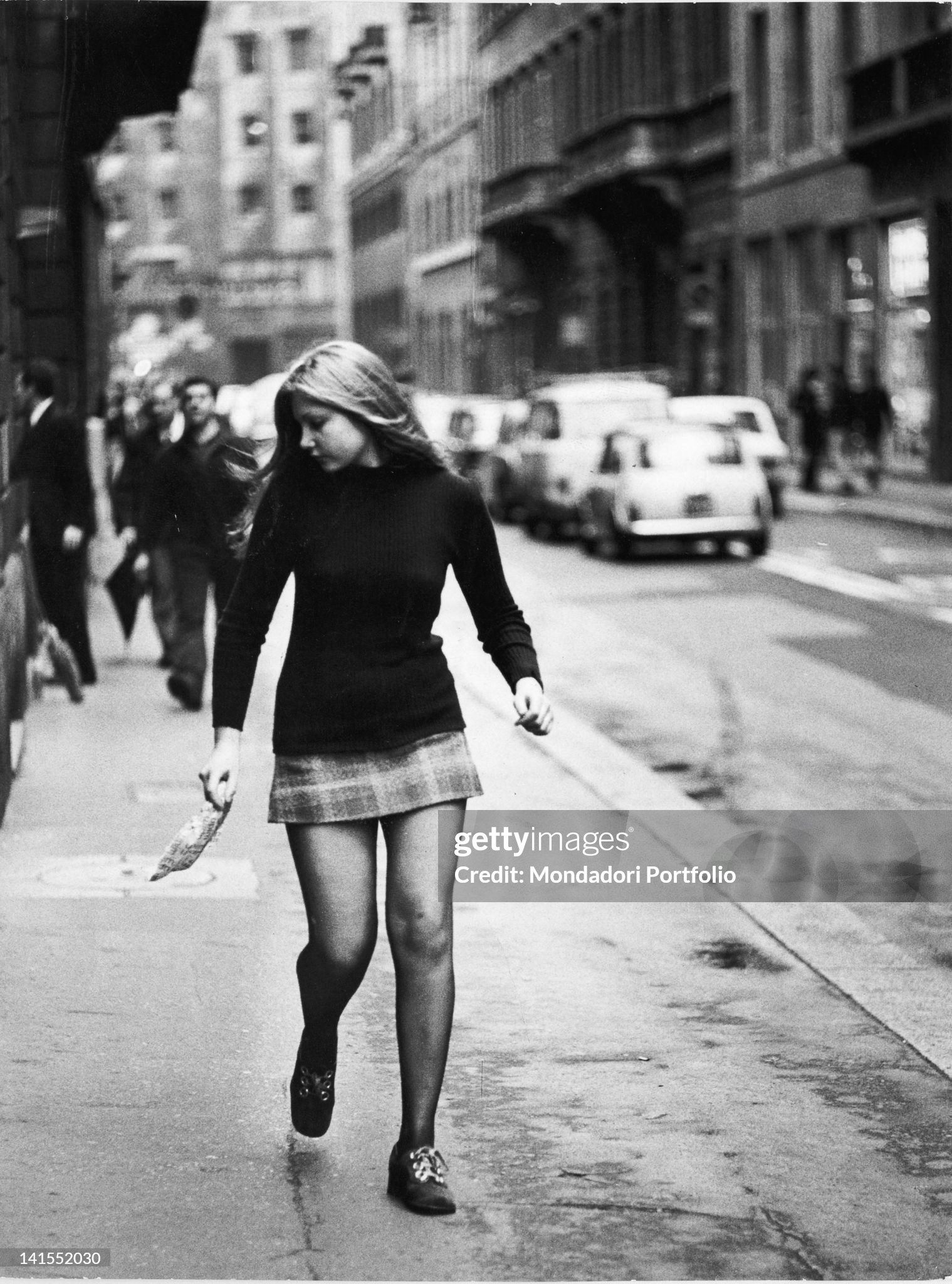

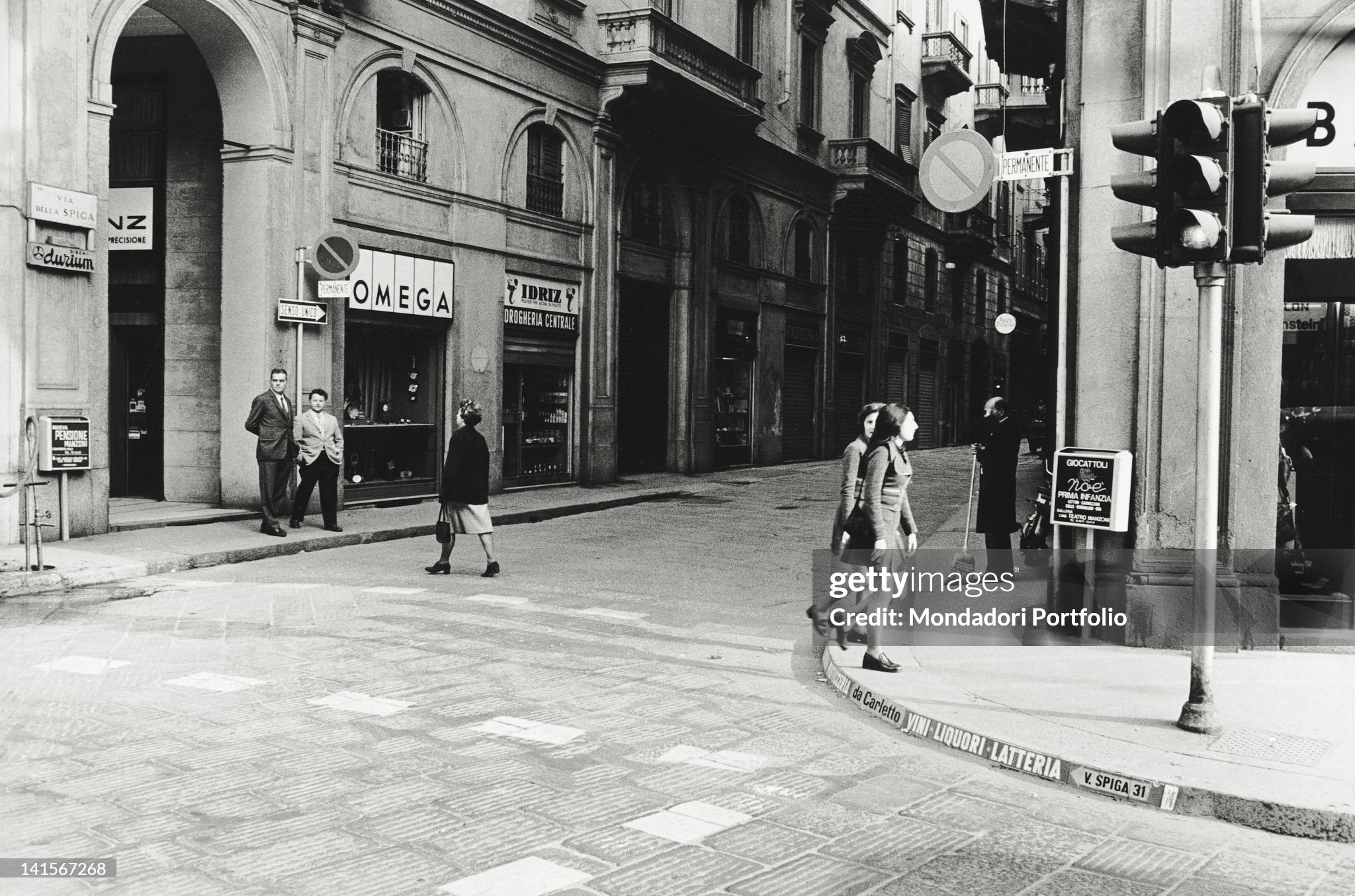
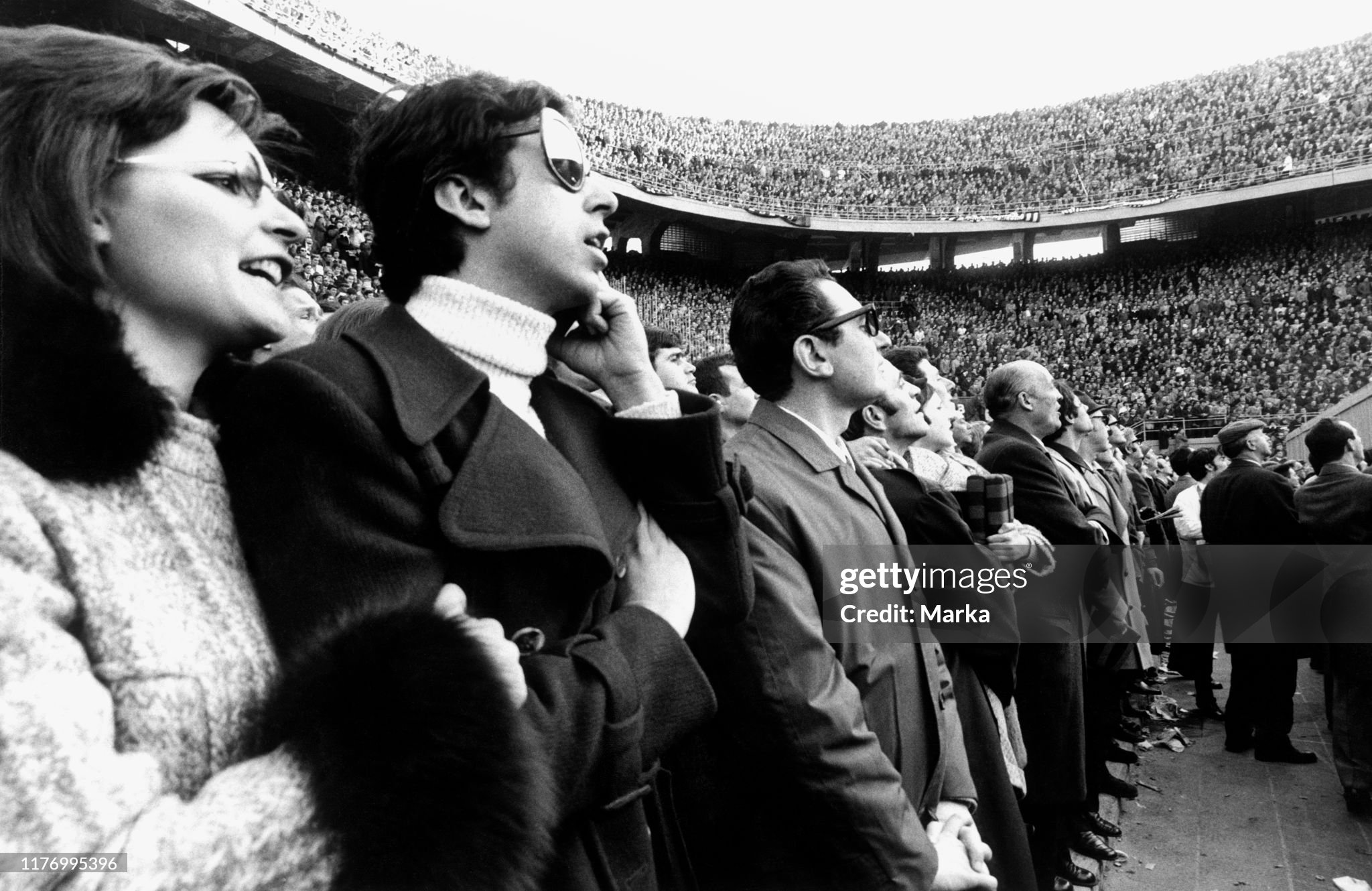
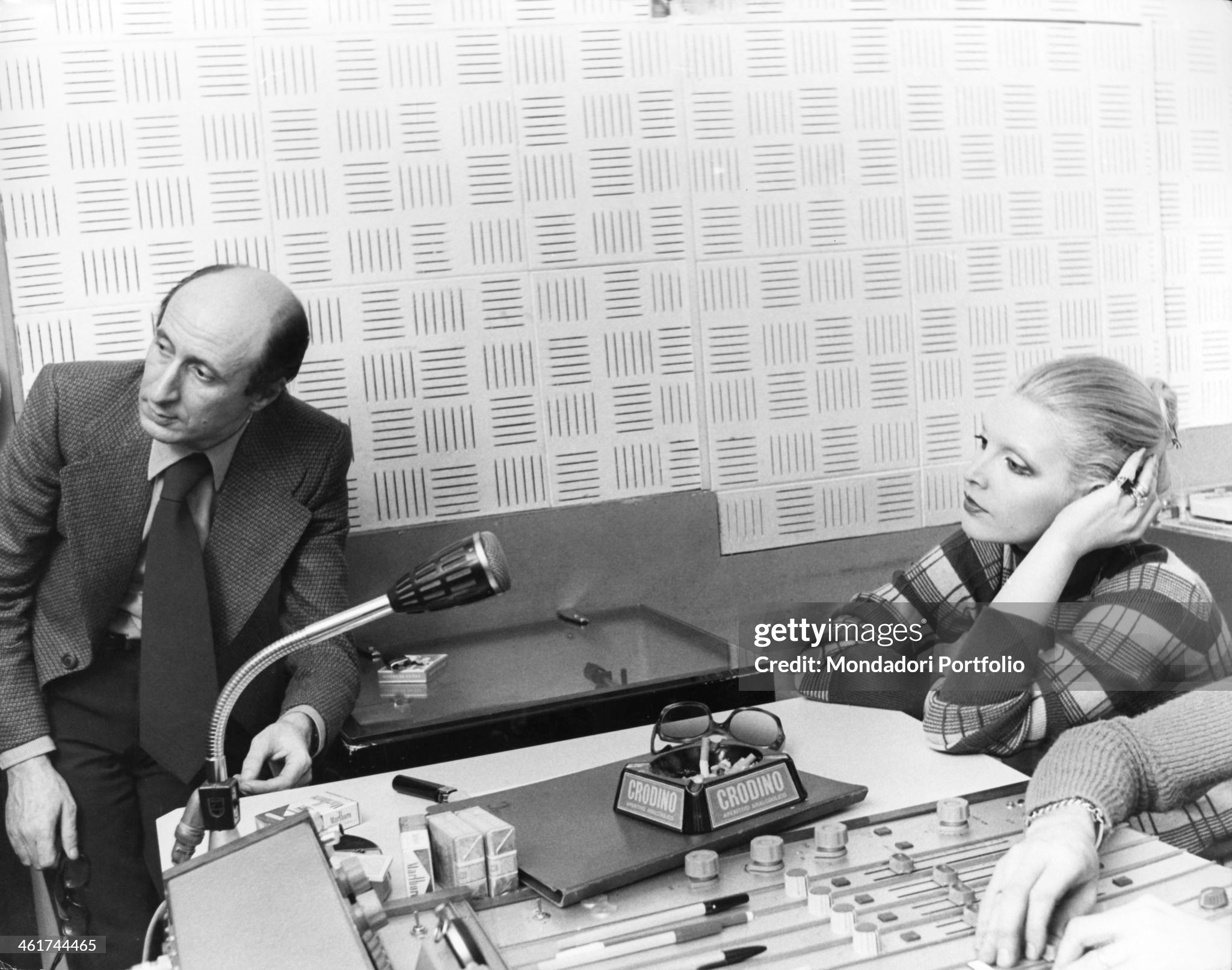
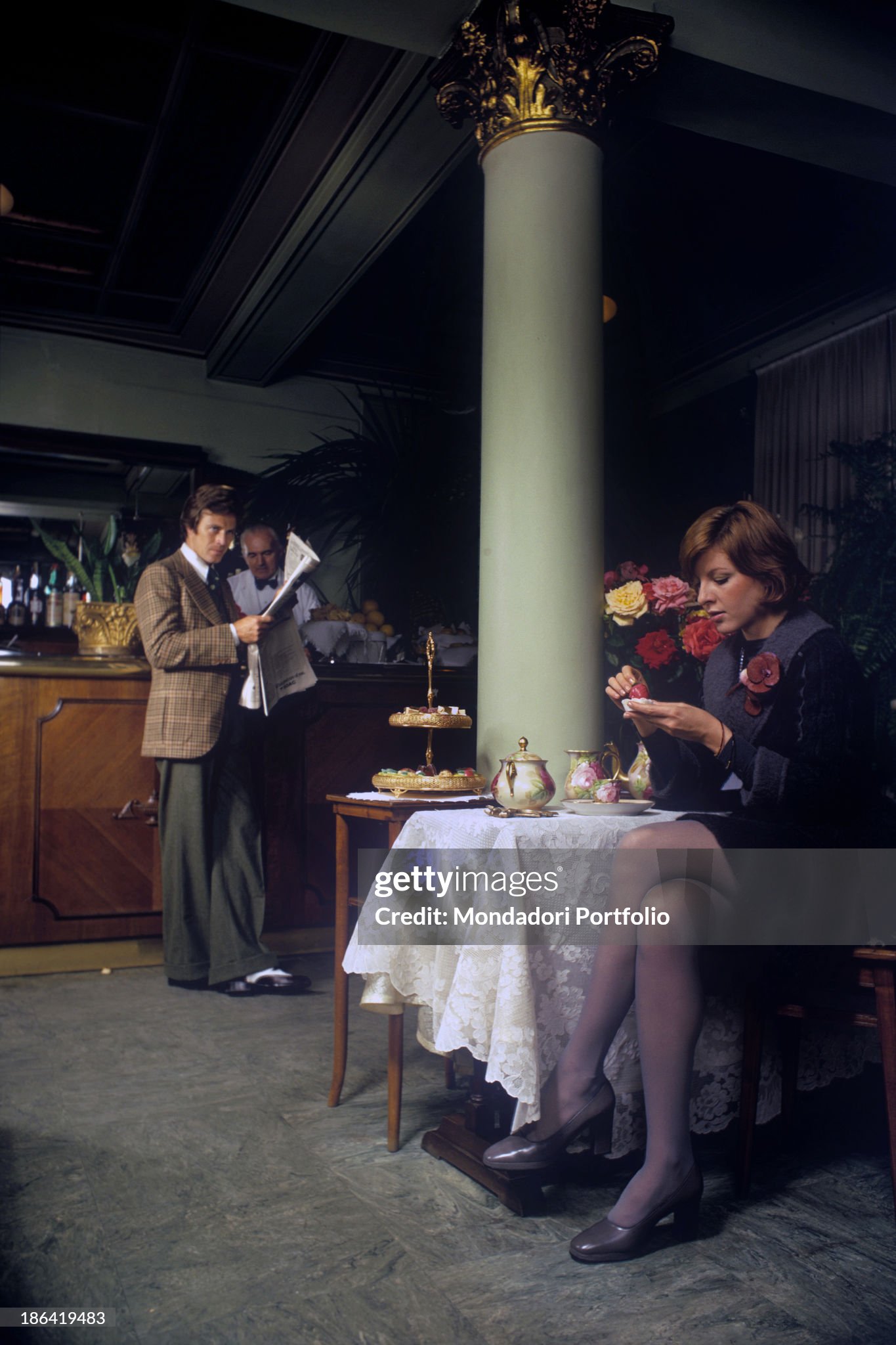
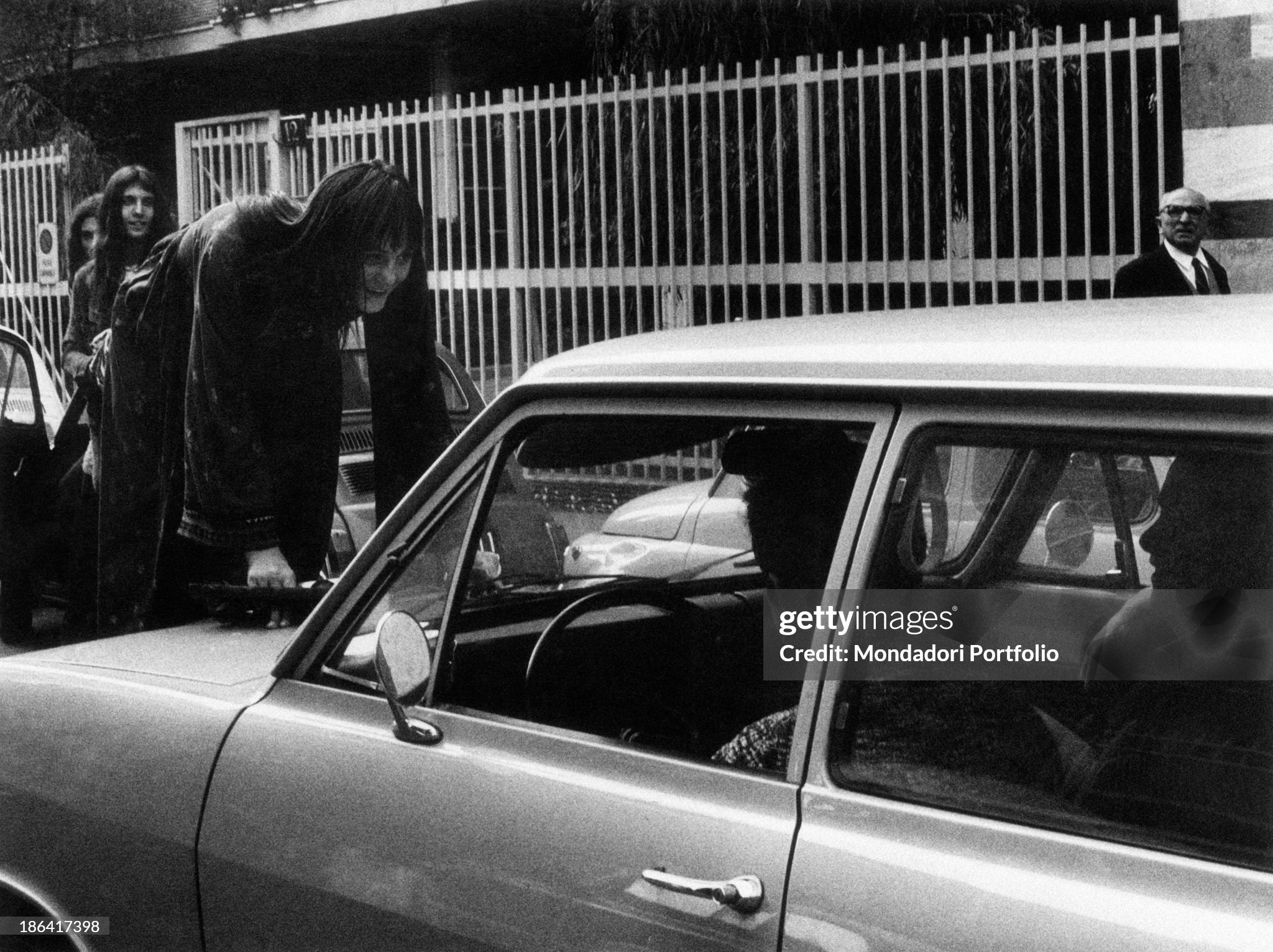
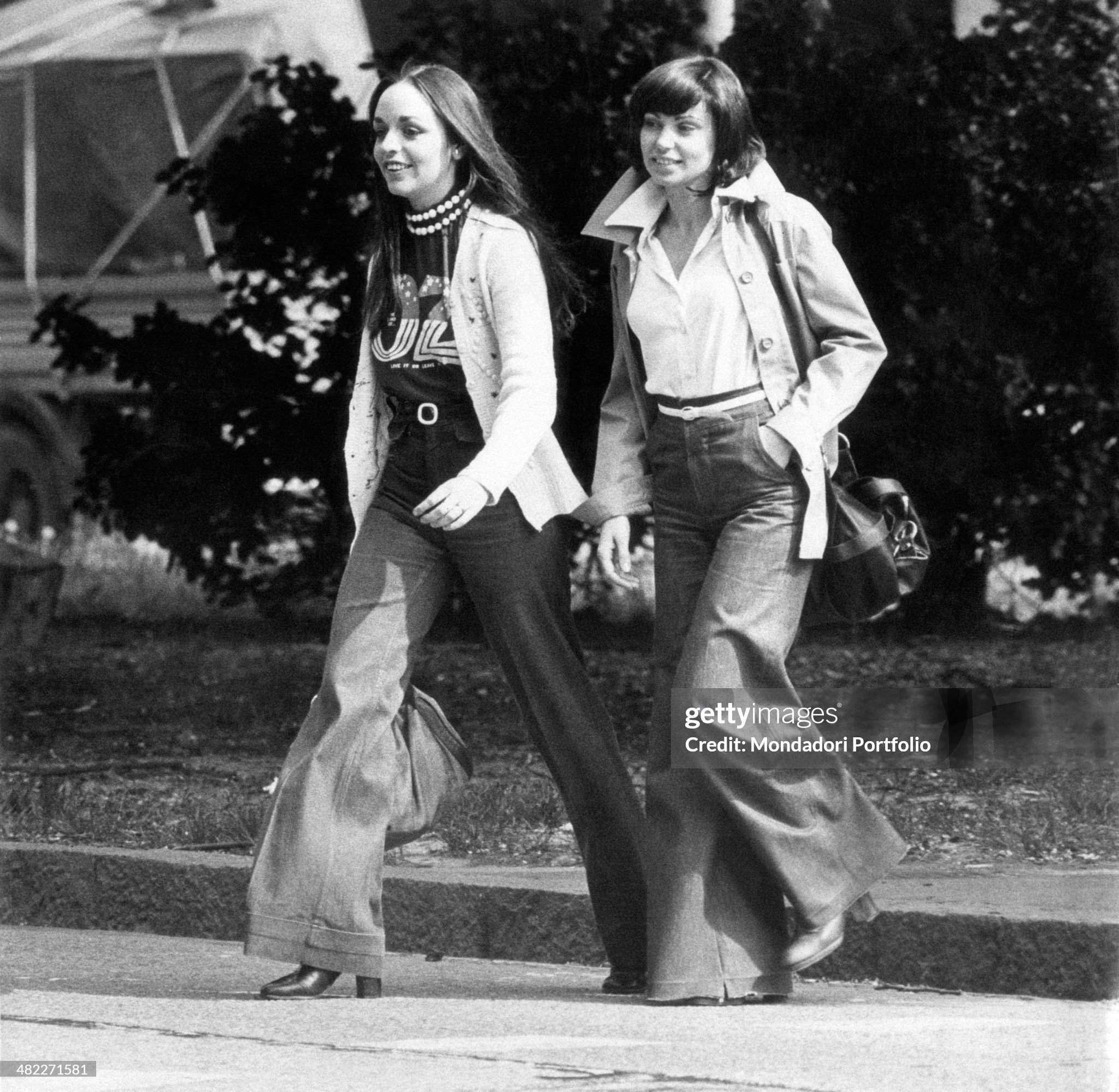
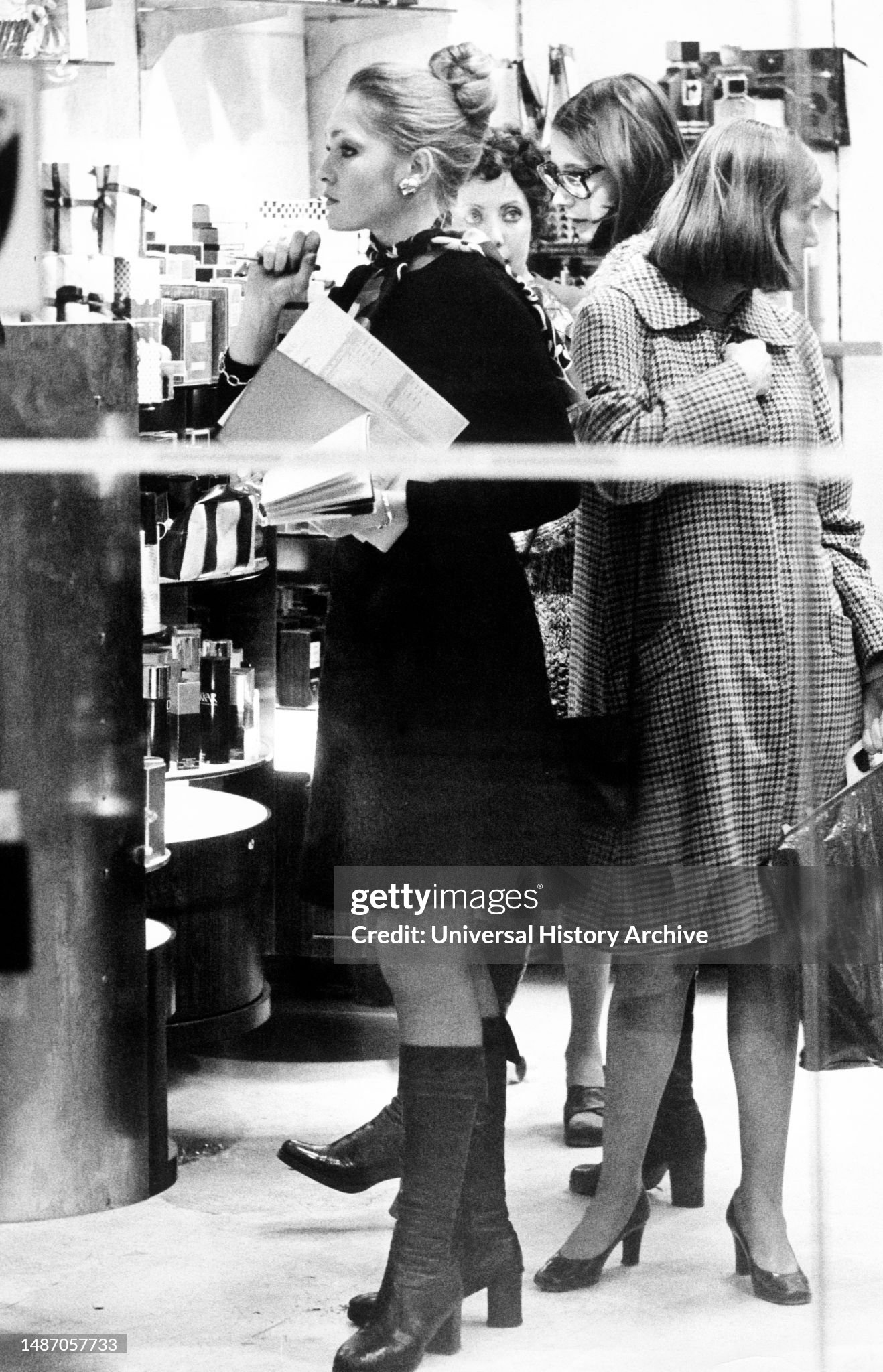
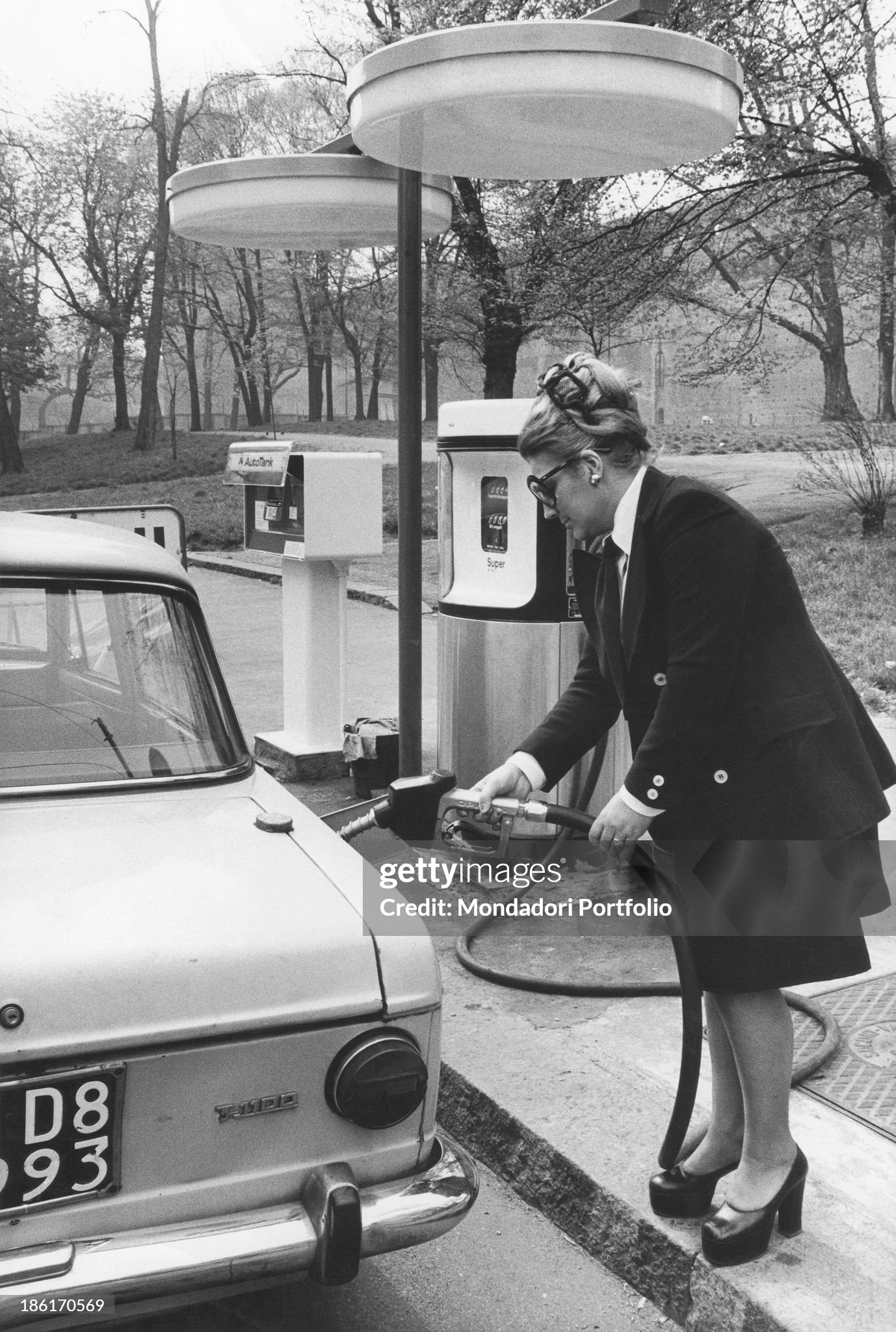
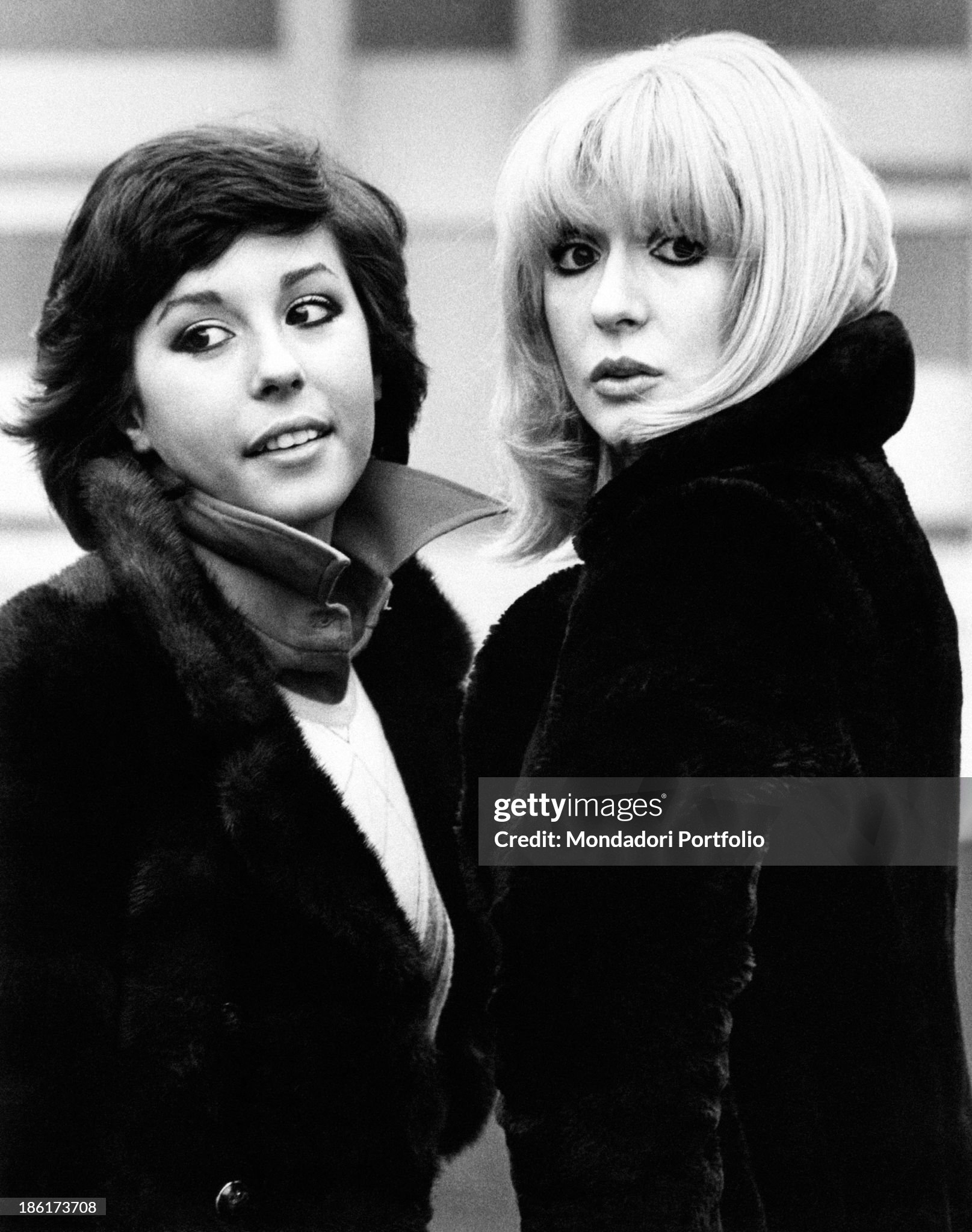
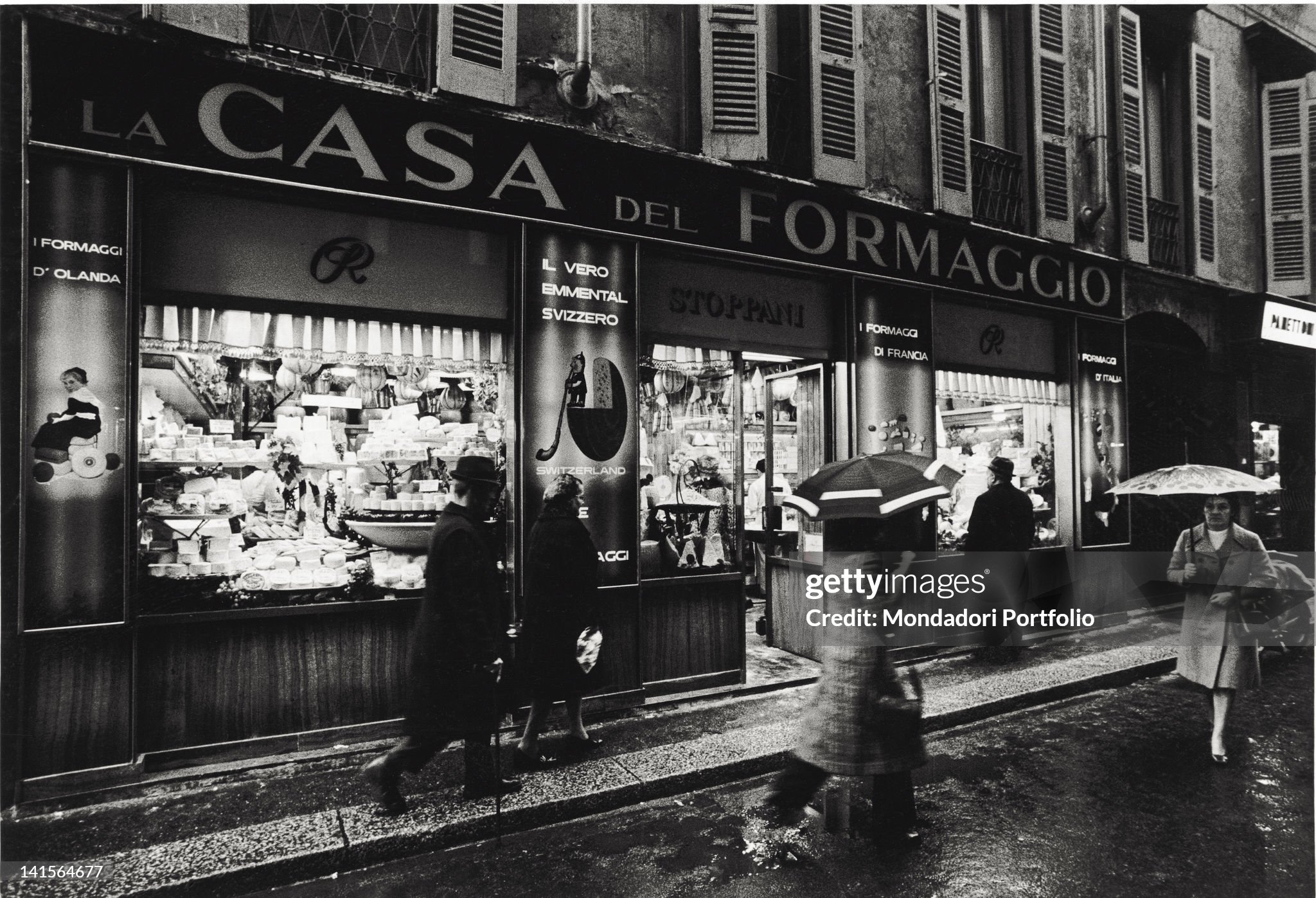
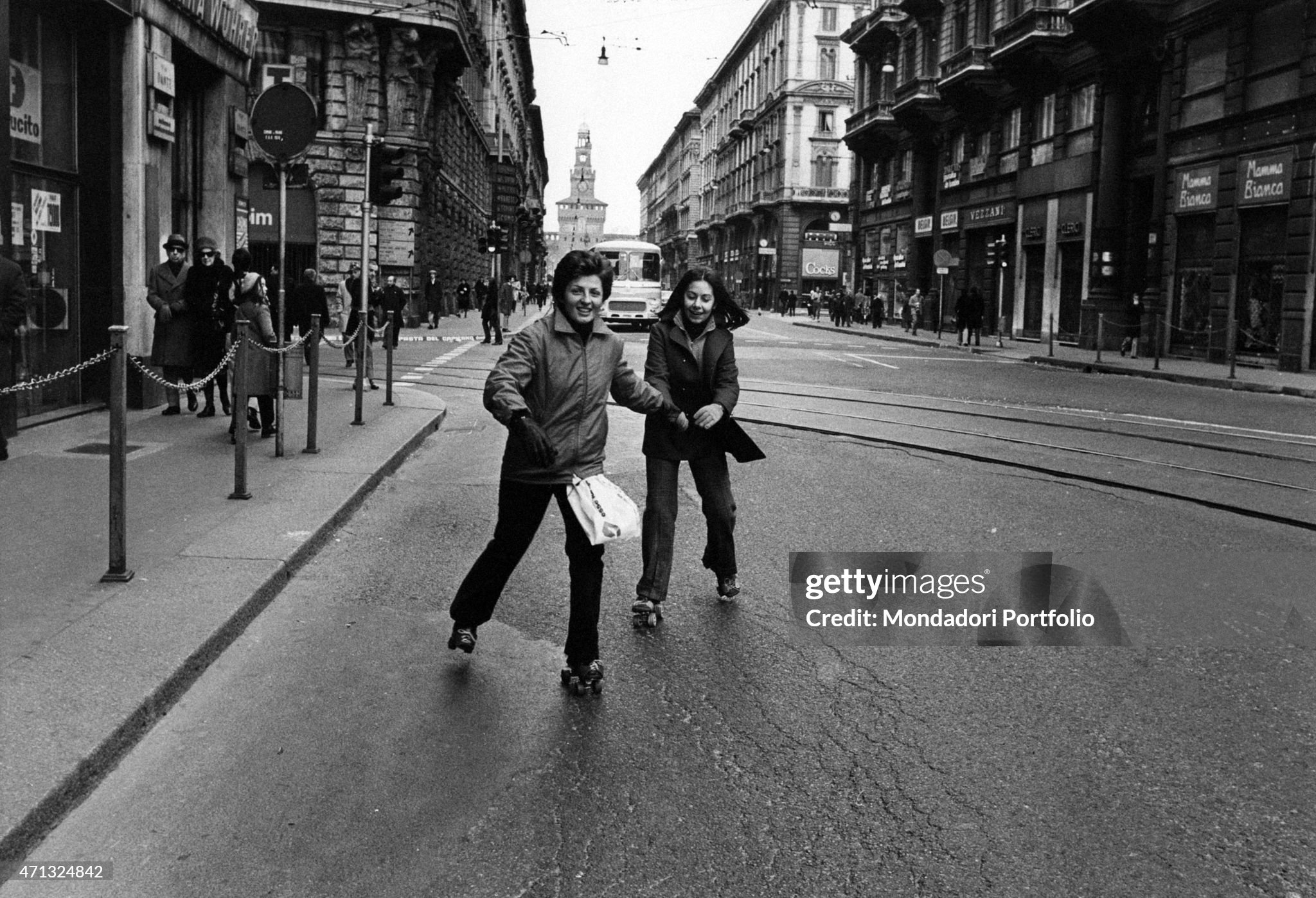
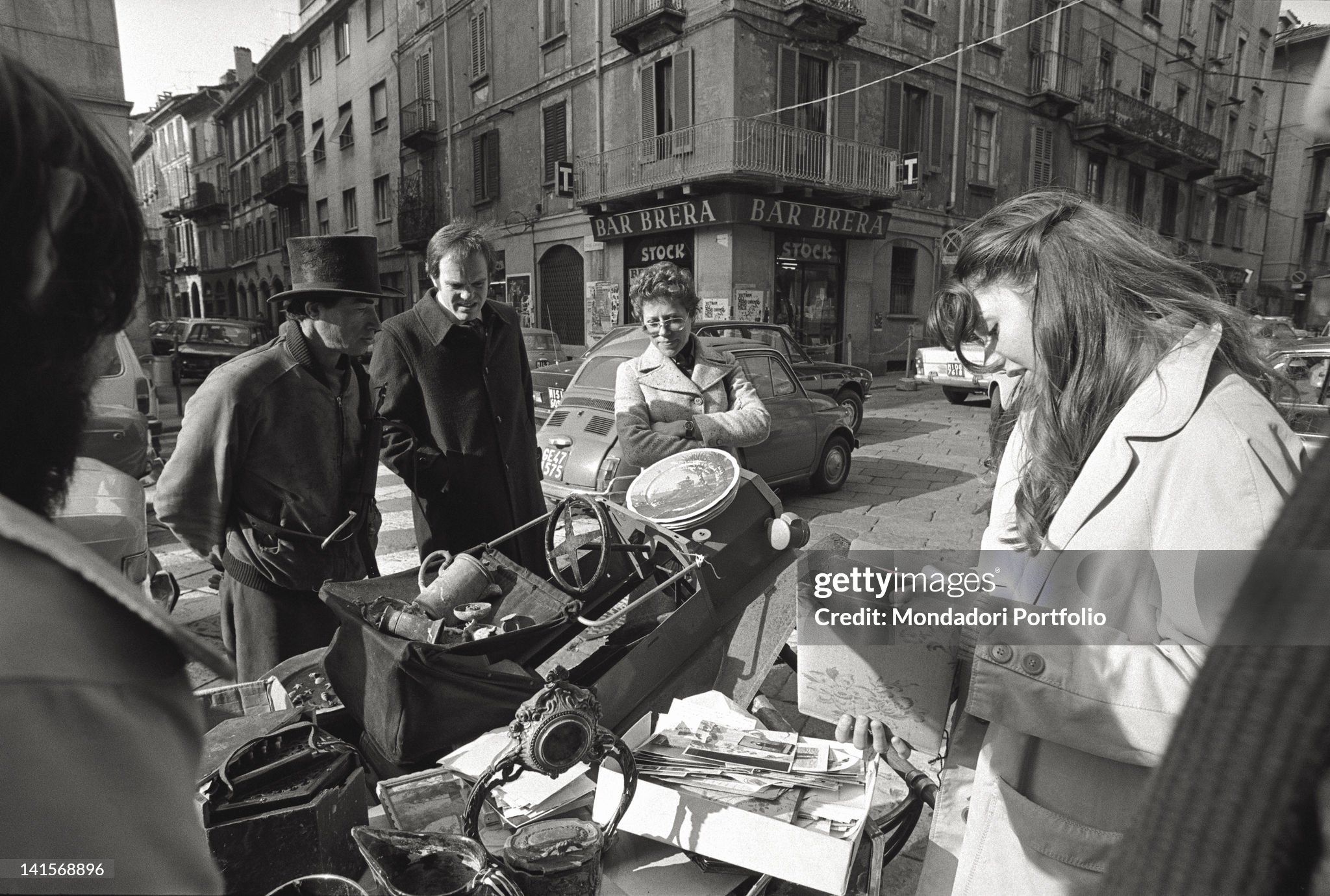
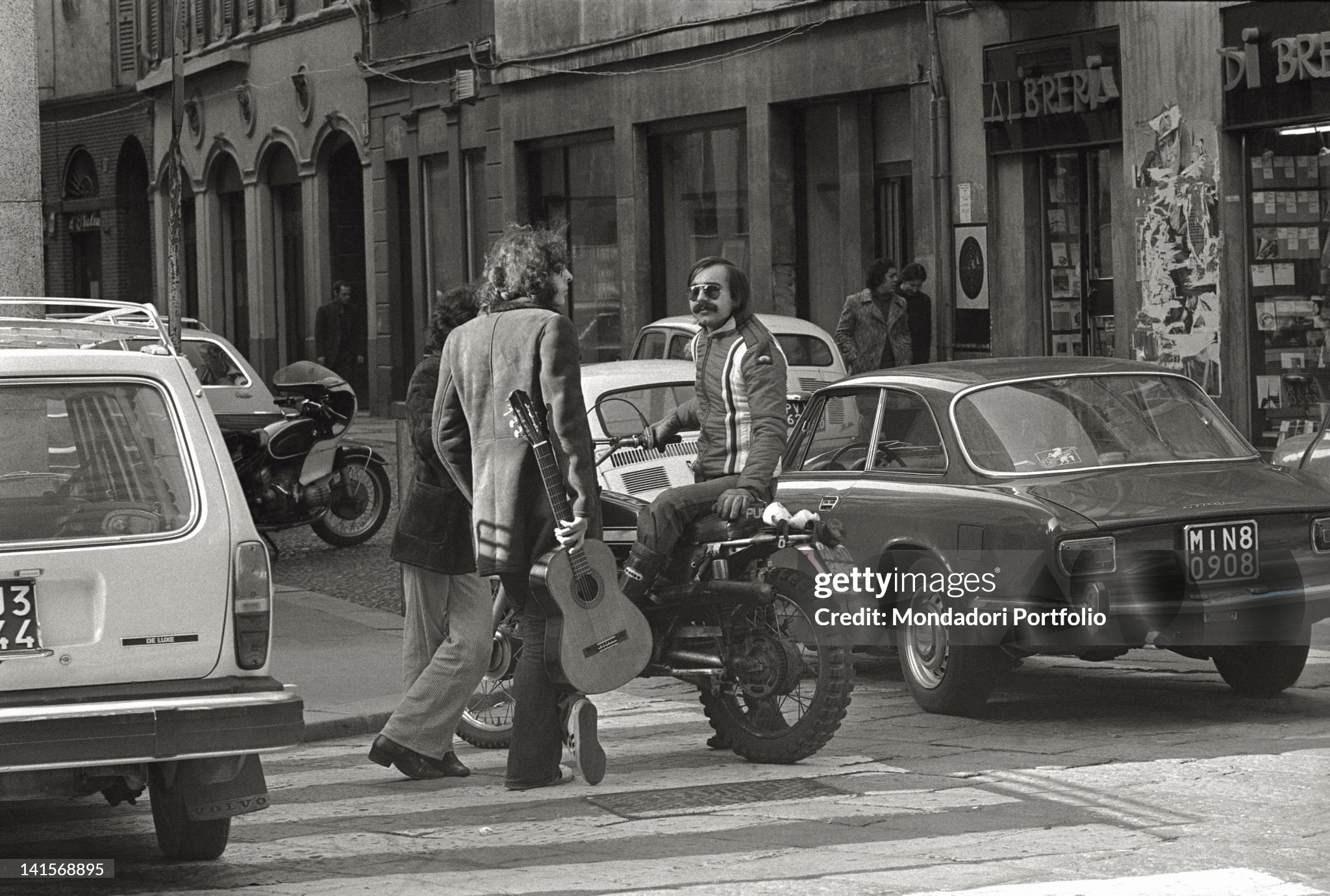
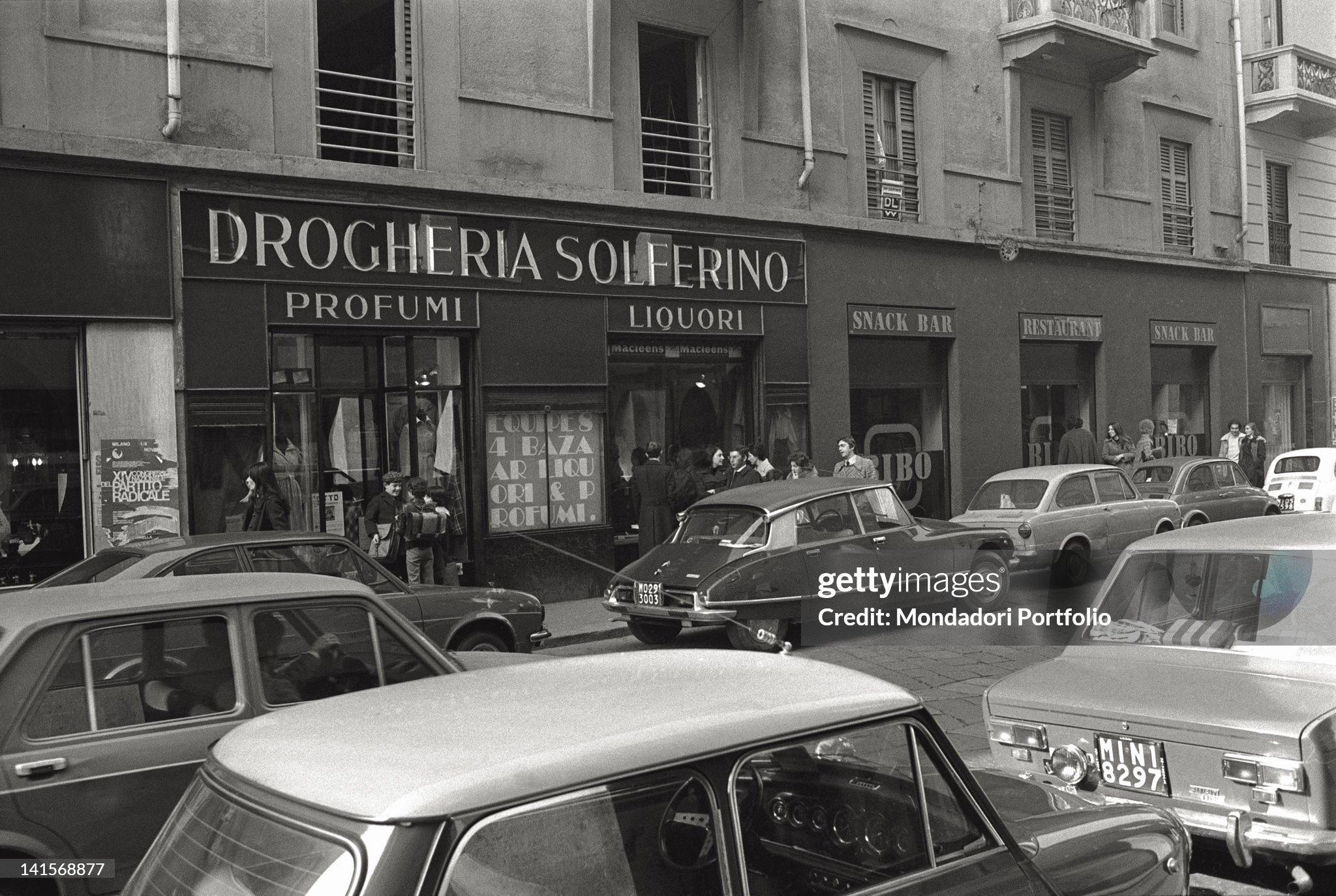
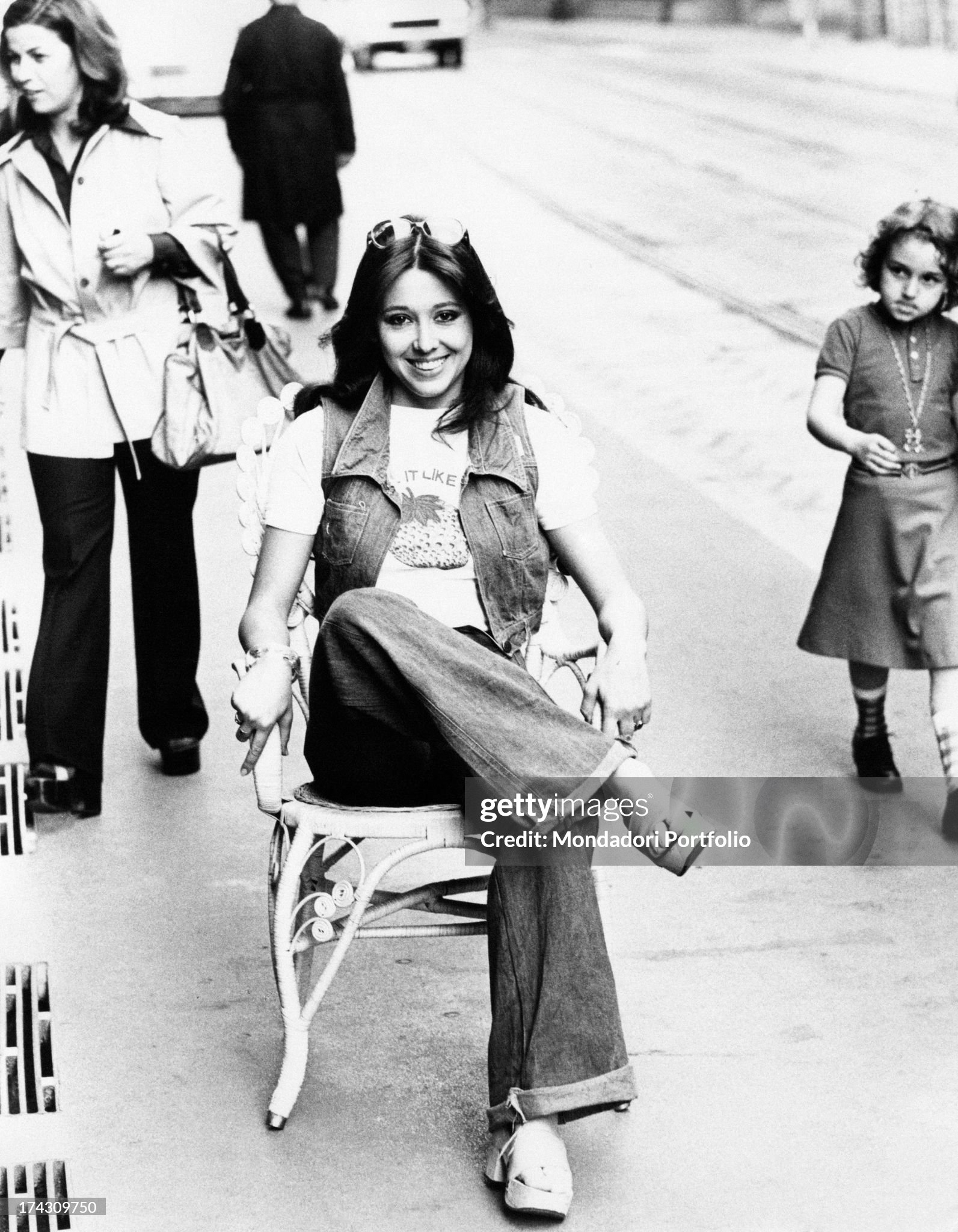
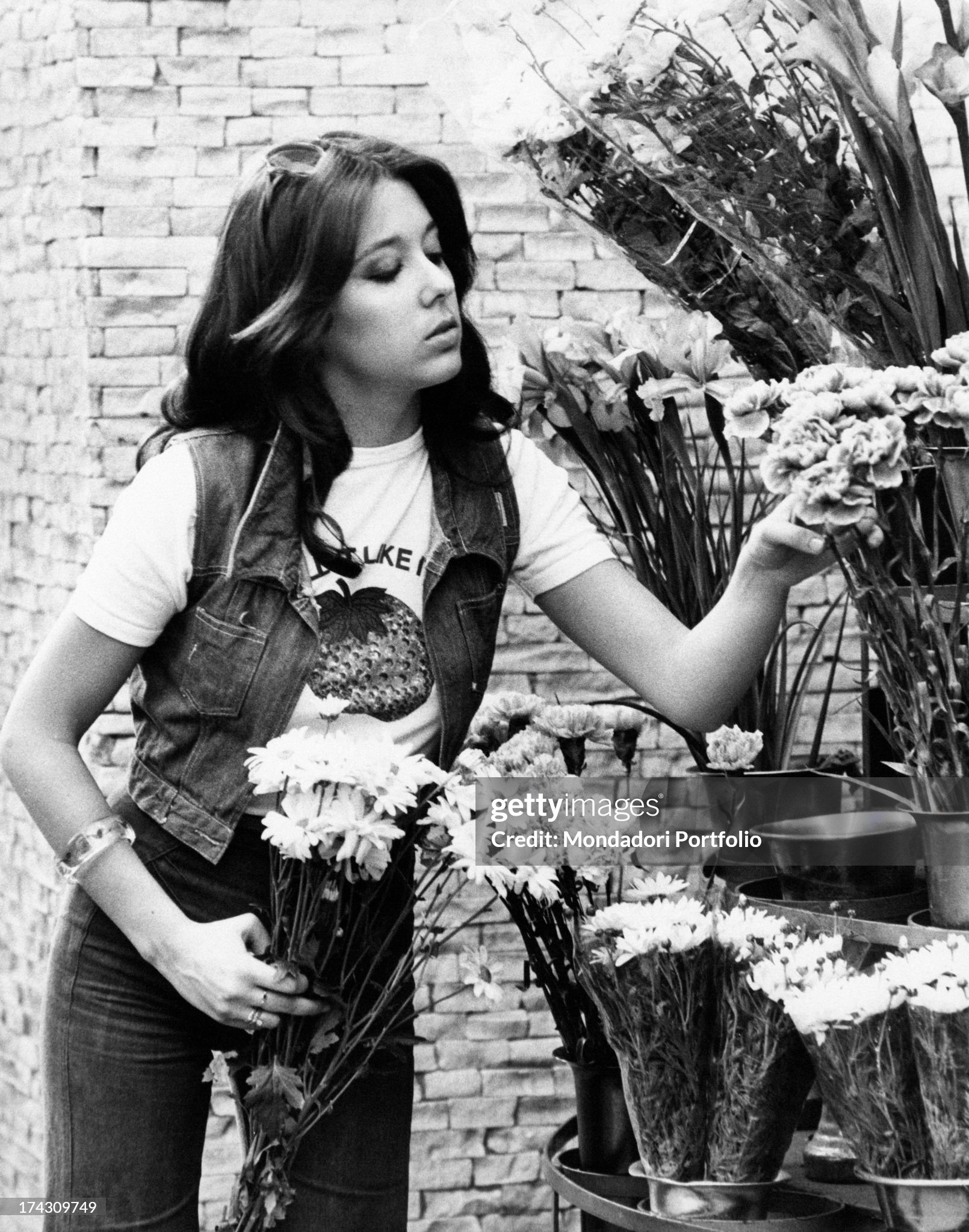
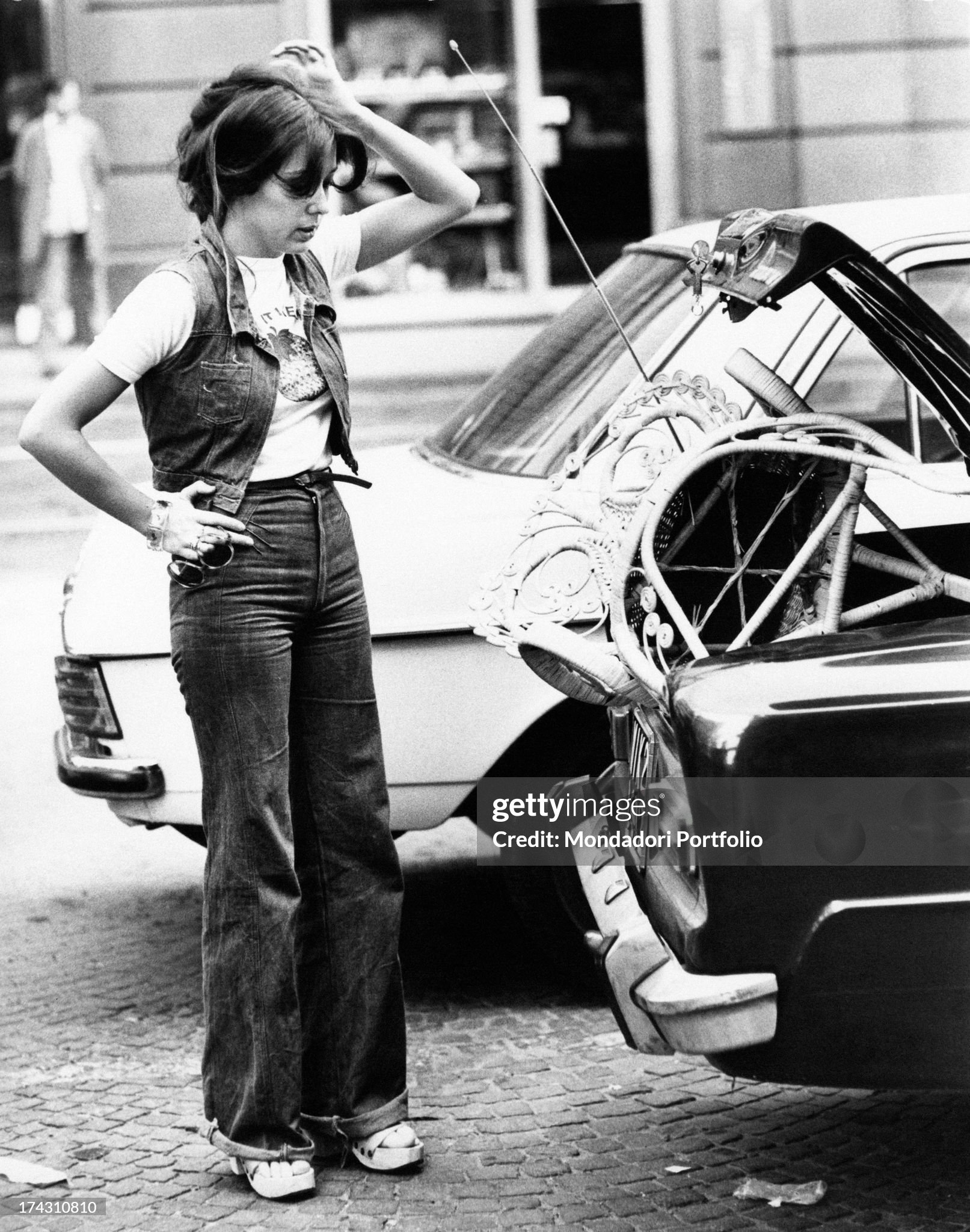

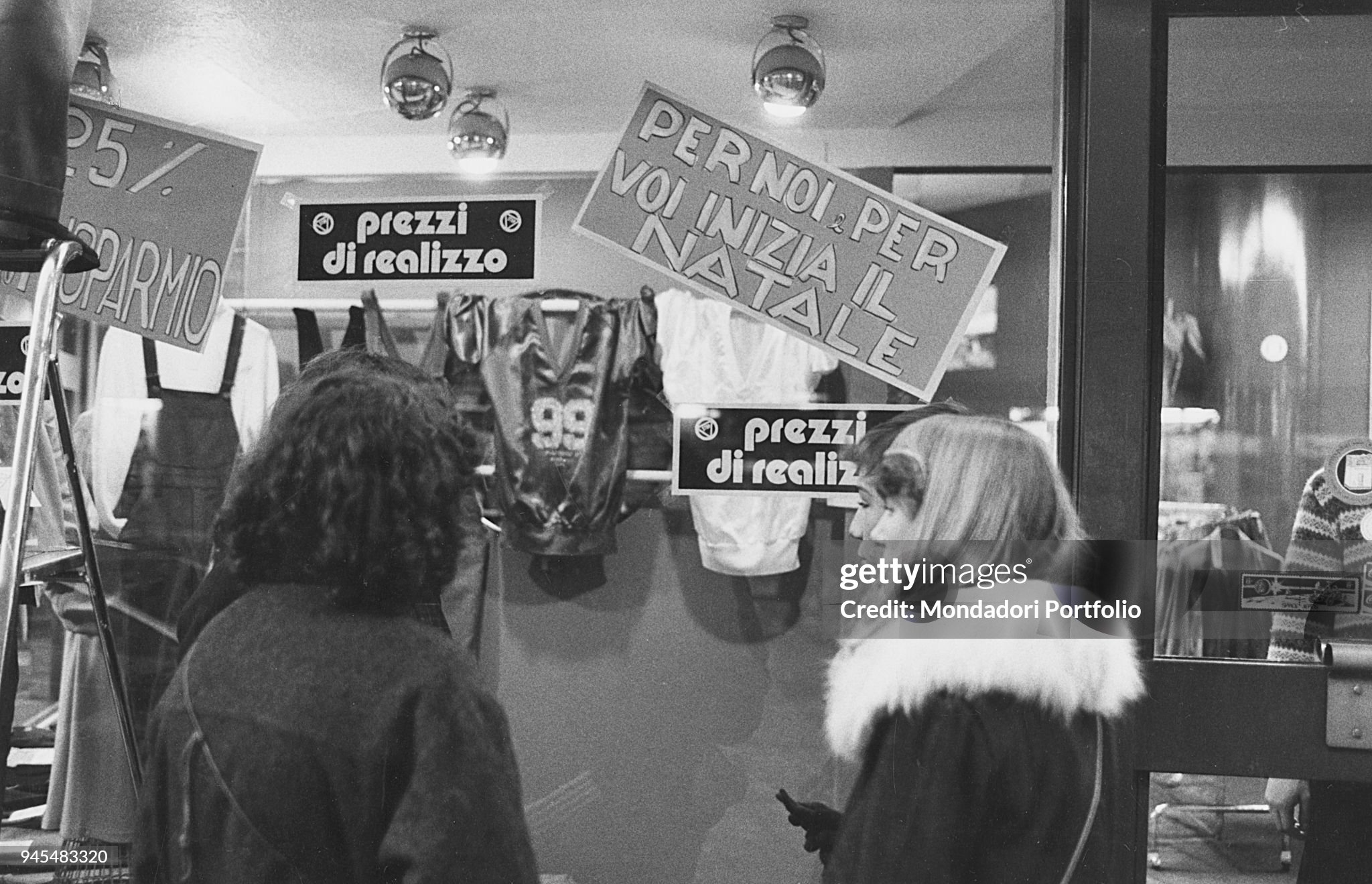
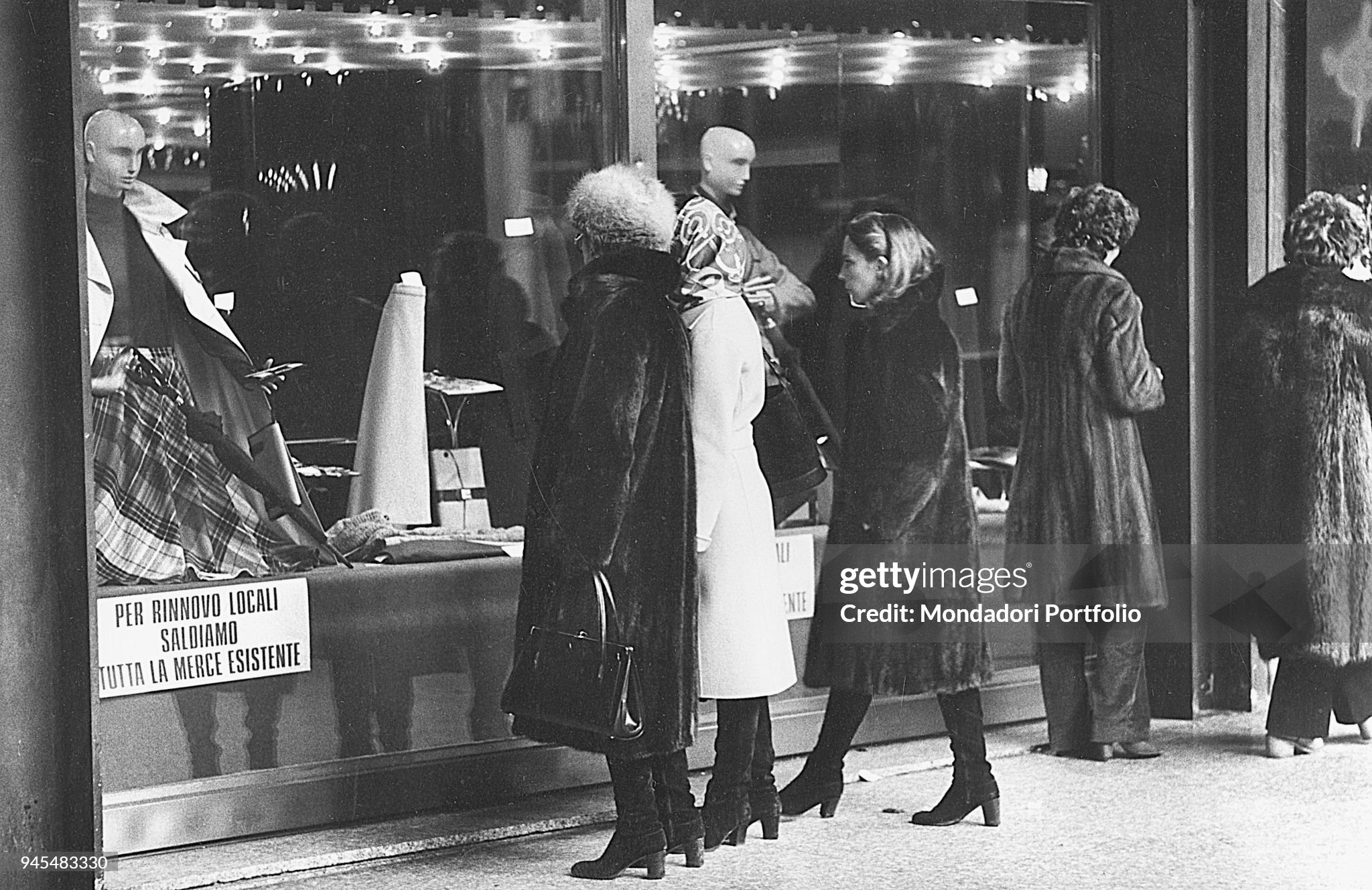
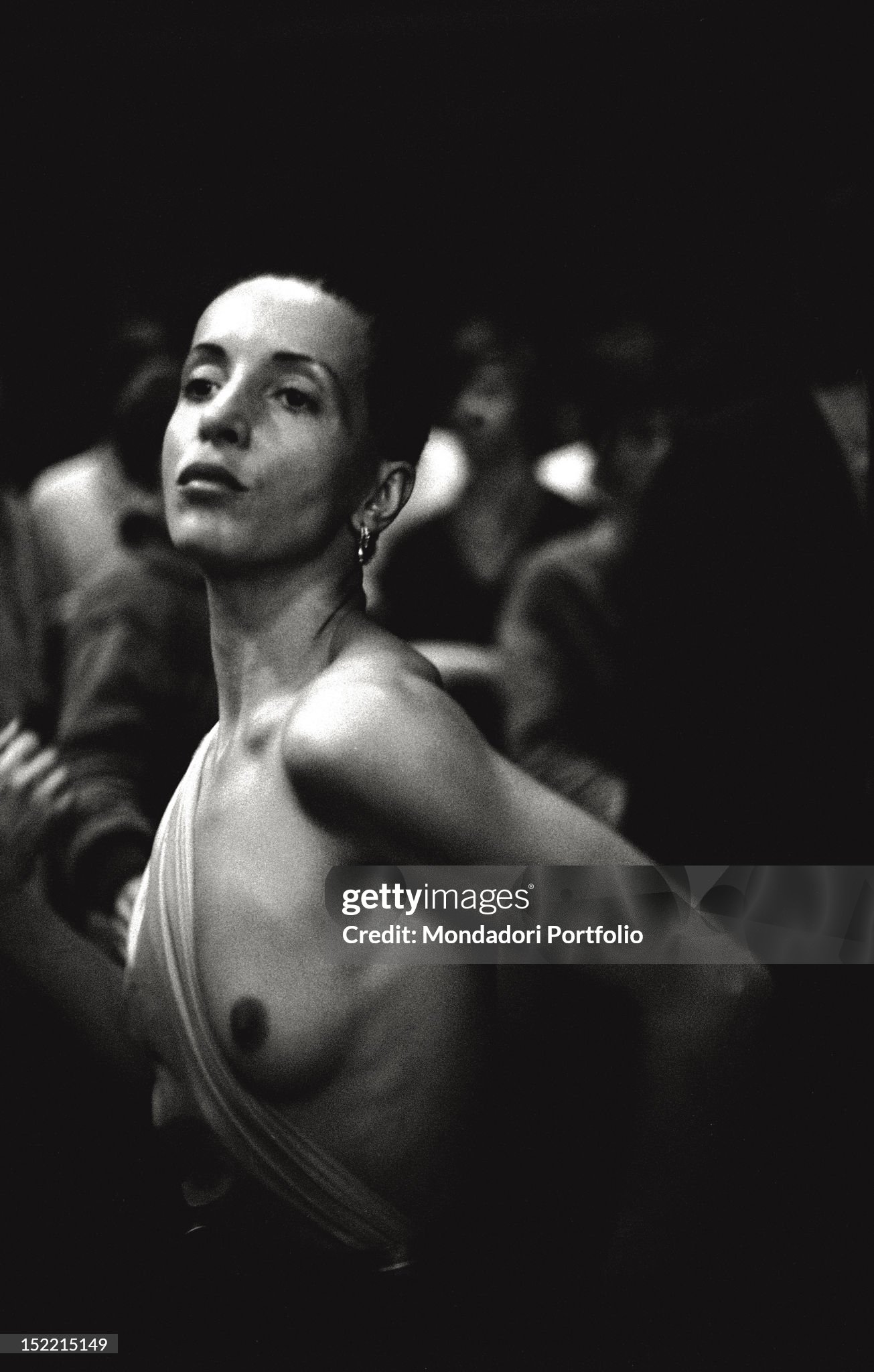
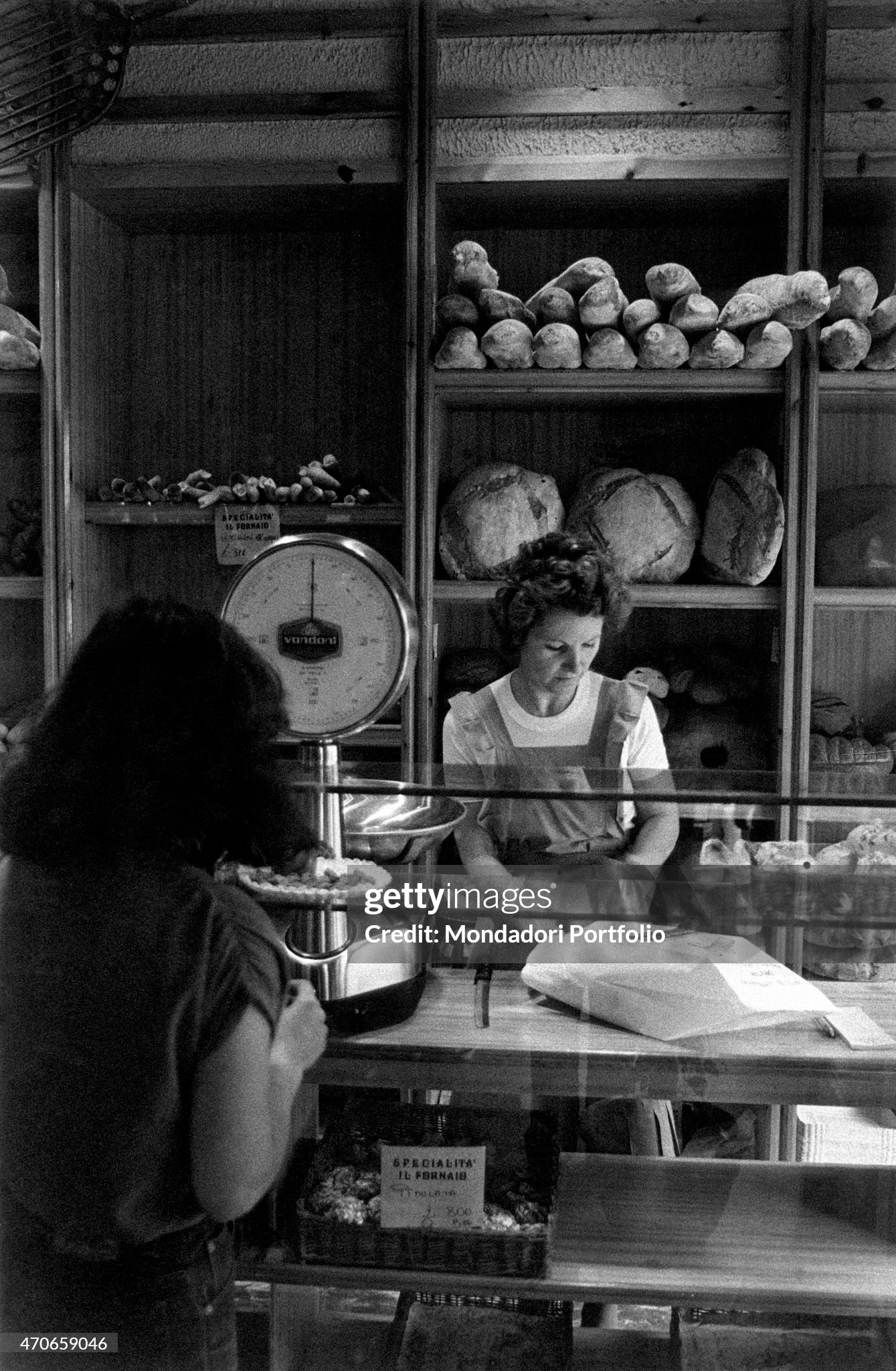
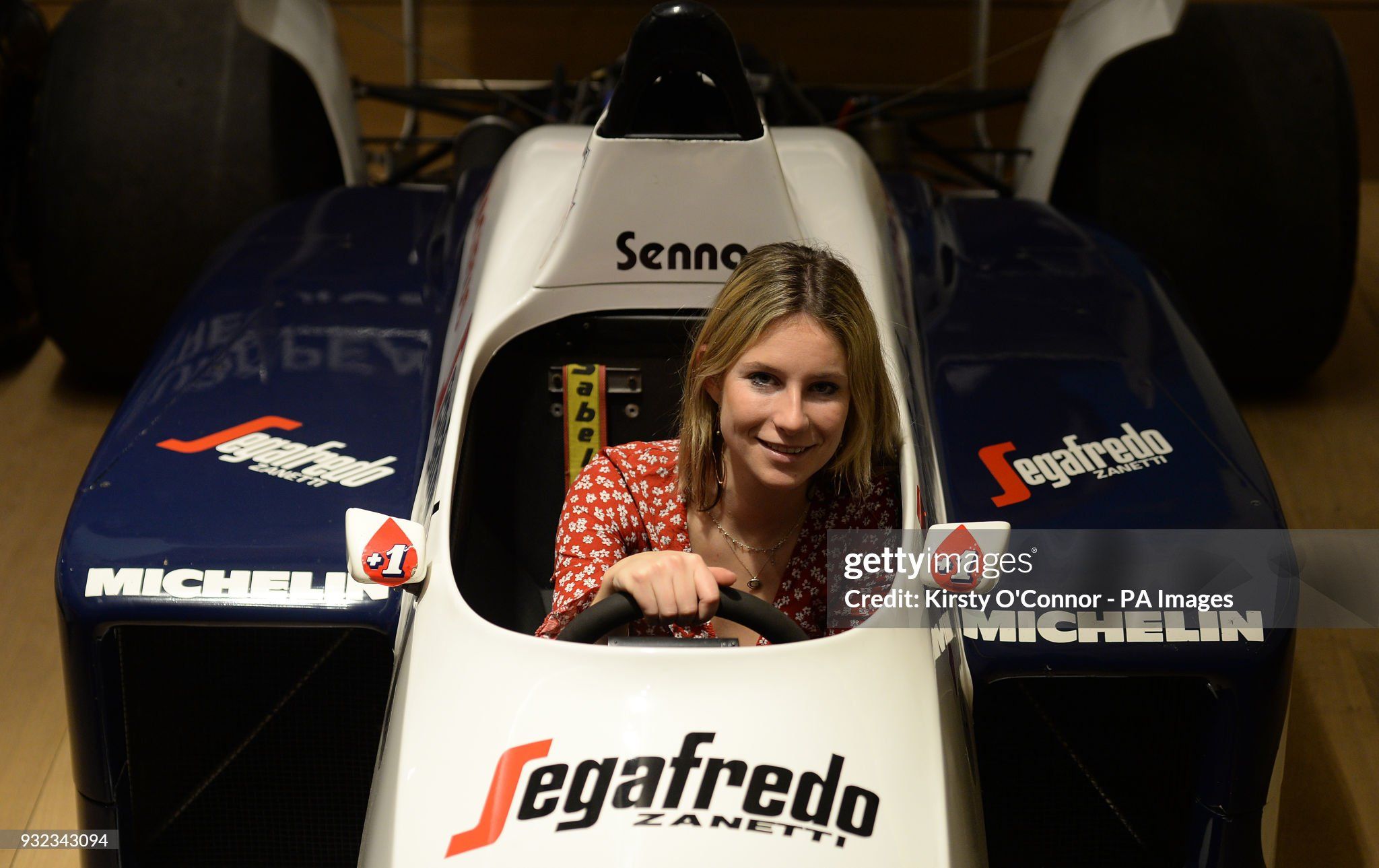
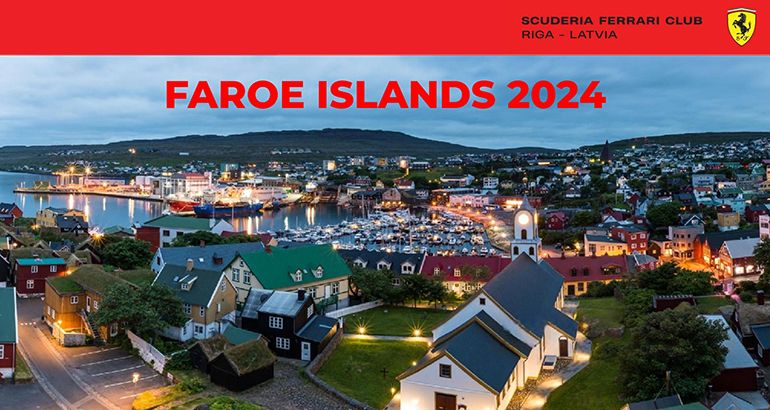
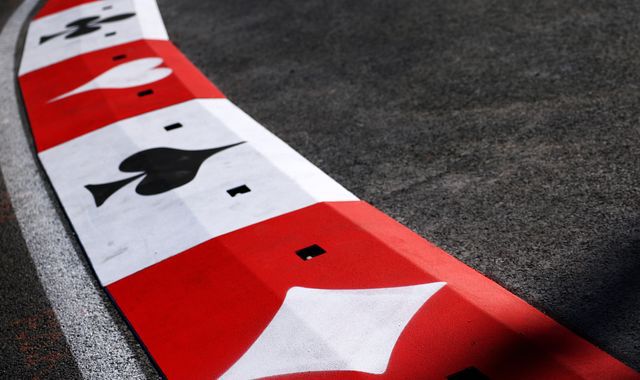
Comments
Authorize to comment